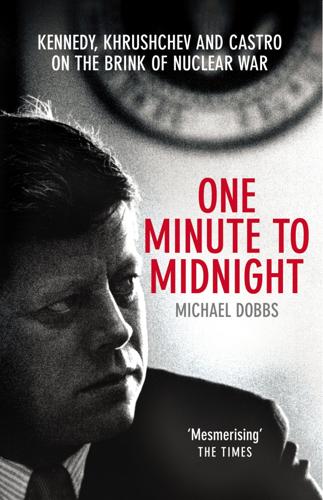
One Minute to Midnight: Kennedy, Khrushchev and Castro on the Brink of Nuclear War
by
Michael Dobbs
Published 3 Sep 2008
The most sensible approach for the researcher is to find multiple sources, and use documentary evidence to corroborate oral history, and vice versa. The starting point for my archival research was the extensive Cuban missile crisis documentation assembled by the National Security Archive, an indispensable reference source for contemporary historians. The Archive, under the direction of Tom Blanton, has taken the lead in aggressively using the Freedom of Information Act to pry historical documents out of a frequently recalcitrant U.S. bureaucracy. In the case of the Cuban missile crisis, it fought a landmark court battle in 1988 to obtain access to a collection compiled by the State Department historian.
…
Sergei Karlov, official historian, Peter the Great Military Academy of Strategic Rocket Forces (RSVN), May 2006. 28 Military statisticians later estimated: Ibid. 28 "barreled gas oil": NSA Cuban missile crisis release, October 1998. 28 McNamara estimated Soviet troop: JFK2, 606. The CIA had estimated 3,000 Soviet "technicians" in Cuba on September 4. By November 19, they increased the estimate to 12,000–16,000. In January 1963, they concluded retrospectively that there were 22,000 Soviet troops in Cuba at the peak of the crisis. See Raymond L. Garthoff, Reflections on the Cuban Missile Crisis, 2nd ed. (Washington, DC: Brookings Institution, 1989), 35. 28 "For the sake of the revolution": Author's interview with Capt.
…
: WP, October 23, 1962, A1; Beschloss, 482. 42 "This is not a war": Fursenko and Naftali, Khrushchev's Cold War, 474. 42 "We've saved Cuba": Oleg Troyanovsky, Cherez Gody y Rastoyaniya (Moscow: Vagrius, 1997), 244–5. 42 The 11,000-ton Yuri Gagarin: I have reconstructed the positions of Soviet ships on October 23 from CIA daily memorandums for October 24 and 25, NSA intercepts, plus research in Moscow by Karlov. See also Statsenko report. 43 Her cargo included:Yesin et al., Strategicheskaya Operatsiya Anadyr', 114. 43 After a sixteen-day voyage: For the positions of the Aleksandrovsk and Almetyevsk, see NSA Cuban missile crisis release, vol. 2, October 1998. 43 In addition to the surface ships: Svetlana Savranskaya, "New Sources on the Role of Soviet Submarines in the Cuban Missile Crisis," Journal of Strategic Studies (April 2005). 44 The vessels closest to Cuba:The ships that continued to Cuba were the Aleksandrovsk, Almetyevsk, Divnogorsk, Dubno, and Nikolaevsk, according to CIA logs and Karlov research. 44 "In connection with": Havana 2002, vol. 2, Document 16, author's trans. 44 "Order the return": Fursenko, Prezidium Ts.
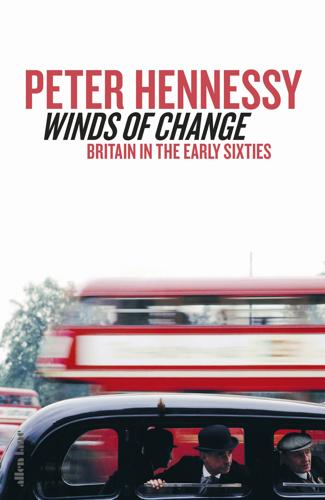
Winds of Change
by
Peter Hennessy
Published 27 Aug 2019
Sherry Sontag and Christopher Drew with Annette Lawrence Drew, Blind Man’s Bluff: The Untold Story of Cold War Submarine Espionage (Arrow, 1998), p. 45. 194. Scott, The Cuban Missile Crisis and the Threat of Nuclear War, p. 85. 195. May and Zelikow (eds.), The Kennedy Tapes, p. 519. 196. Ted Sorensen, Kennedy (Hodder, 1965), p. 789. 197. May and Zelikow (eds.), The Kennedy Tapes, p. 571. 198. Scott, The Cuban Missile Crisis and the Threat of Nuclear War, pp. 91–2. 199. Ibid., p. 101. 200. Fursenko and Naftali, Khrushchev’s Cold War, pp. 478–80. 201. Scott, The Cuban Missile Crisis and the Threat of Nuclear War, p. 104. 202. Quoted in Scott, The Cuban Missile Crisis and the Threat of Nuclear War, p. 105. 203.
…
TNA, PRO, CAB 158/47, JIC (62) 70 (Final) (E), ‘Escalation’, 14 November 1962. 185. Scott, Macmillan, Kennedy and the Cuban Missile Crisis, p. 159. 186. Catterall (ed.), The Macmillan Diaries, vol. 2, p. 513, diary entry for 28 October 1962; Macmillan diaries (unpublished), diary entry for 26 October 1962. 187. Tuchman, The Guns of August, p. 74. 188. Kennedy letter to Khrushchev, 29 October 1962, reproduced in May and Zelikow (eds.), The Kennedy Tapes, pp. 636–7. 189. Scott, The Cuban Missile Crisis and the Threat of Nuclear War, p. 71. 190. Ibid., pp. 71, 80, 100, 120, 147–8. 191. Scott, The Cuban Missile Crisis and the Threat of Nuclear War, p. 134. 192. Ibid., pp. 1–2. 193.
…
TNA, PRO, CAB 158/47, JIC (62) 104. 319. Extract from David Bruce’s diary for 23 and 24 October 1962, reproduced in Scott, Macmillan, Kennedy and the Cuban Missile Crisis, pp. 87–8. 320. May and Zelikow, The Kennedy Tapes, p. 333. 321. Scott, Macmillan, Kennedy and the Cuban Missile Crisis, p. 88. 322. Richard Taylor, Against the Bomb: The British Peace Movement, 1958–65 (Oxford University Press, 1988); Grant, After the Bomb, pp. 173–4, 175–6, 185–6, 187, 191. 323. Scott, Macmillan, Kennedy and the Cuban Missile Crisis, p. 88. 324. Driver, The Disarmers, p. 146. 325. Ibid., p. 120. 326. Ibid., p. 143. 327. May and Zelikow, The Kennedy Tapes, p. 369. 328.

Risk: A User's Guide
by
Stanley McChrystal
and
Anna Butrico
Published 4 Oct 2021
intermediate-range ballistic missile (IRBM) sites: May and Zelikow, The Kennedy Tapes: Inside the White House During the Cuban Missile Crisis, 76. discuss and debate options: May and Zelikow, The Kennedy Tapes: Inside the White House During the Cuban Missile Crisis, 109–137. settles on the “blockade-ultimatum”: May and Zelikow, The Kennedy Tapes: Inside the White House During the Cuban Missile Crisis, 136–138. formally convenes ExComm: May and Zelikow, The Kennedy Tapes: Inside the White House During the Cuban Missile Crisis, 151. informs Congress of his decision: May and Zelikow, The Kennedy Tapes: Inside the White House During the Cuban Missile Crisis, 163–183. addresses the American people: May and Zelikow, The Kennedy Tapes: Inside the White House During the Cuban Missile Crisis, 183–189.
…
addresses the American people: May and Zelikow, The Kennedy Tapes: Inside the White House During the Cuban Missile Crisis, 183–189. letter to Chairman Khrushchev: May and Zelikow, The Kennedy Tapes: Inside the White House During the Cuban Missile Crisis, 189–190. expressing grievance and frustration: May and Zelikow, The Kennedy Tapes: Inside the White House During the Cuban Missile Crisis, 242–243. continue to ready their missile sites: May and Zelikow, The Kennedy Tapes: Inside the White House During the Cuban Missile Crisis, 269. Soviet ships headed to Cuba: May and Zelikow, The Kennedy Tapes: Inside the White House During the Cuban Missile Crisis, 297–99. seemingly contradictory letter: May and Zelikow, The Kennedy Tapes: Inside the White House During the Cuban Missile Crisis, 311–14.
…
seemingly contradictory letter: May and Zelikow, The Kennedy Tapes: Inside the White House During the Cuban Missile Crisis, 311–14. American U-2 plane: May and Zelikow, The Kennedy Tapes: Inside the White House During the Cuban Missile Crisis, 356–61. remove and dismantle their missiles: May and Zelikow, The Kennedy Tapes: Inside the White House During the Cuban Missile Crisis, 402–404, 436–37. Executive Committee of the National Security Council: Kennedy, Thirteen Days, Section 1; May and Zelikow, The Kennedy Tapes: Inside the White House During the Cuban Missile Crisis, 151. “the new chairman of the joint chiefs”: Josh Zeitz, “When Daily Intelligence Briefings Prevented a Nuclear War,” Politico Magazine, December 12, 2016, https://politico.com/magazine/story/2016/12/trump-daily-intelligence-briefings-history-jfk-cuban-missile-crisis-214521.
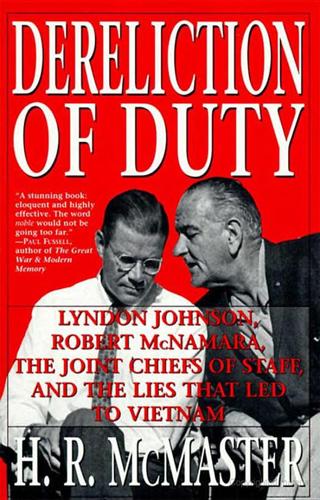
Dereliction of Duty: Johnson, McNamara, the Joint Chiefs of Staff, and the Lies That Led to Vietnam
by
H. R. McMaster
Published 7 May 1998
He surrounded himself with people who “knew a hell of a lot more” than he did about national security issues and learned from them. He was a good student, however, and “by the time of the Cuban missile crisis [his] views were pretty well fixed and [hadn’t] changed to this day.”29 McNamara was proud of what he portrayed as a personal triumph during the Cuban missile crisis. When he turned his attention to Southeast Asia, he exuded confidence that he had gained in the Caribbean. The defense secretary was determined to remove obstacles that might prevent him from assuming the role of chief strategist in the Pentagon. During the Cuban missile crisis, McNamara kept tight control over the ships, submarines, and aircraft enforcing the quarantine around Cuba to ensure that the demonstration of American resolve sent the proper message to the Soviets.
…
He would become Lyndon Johnson’s “oracle” for Vietnam. 4 Graduated Pressure January–March 1964 We had seen the gradual application of force applied in the Cuban Missile Crisis and had seen a very successful result. We believed that, if this same gradual and restrained application of force were applied in South Vietnam, that one could expect the same result. –CYRUS VANCE, 19701 Robert S. McNamara and his principal assistants in the Department of Defense, convinced that traditional military conceptions of the use of force were irrelevant to contemporary strategic and political realities, developed courses of action for Vietnam that reflected their experience during the 1962 Cuban missile crisis (which molded their thinking on strategy) and their predisposition toward quantitative analysis.
…
In keeping with McNamara’s views, Taylor told the Chiefs on March 2 that the White House intended to use South Vietnam as a “laboratory, not only for this war, but for any insurgency.”49 McNamara became the principal architect of the new strategy of graduated pressure, which he would test in Vietnam.50 While in his estimation military experience was irrelevant to the new kind of war, McNamara drew heavily upon his personal experience during the Cuban missile crisis. The rejection of JCS advice in October 1962 had led to the withdrawal of the offensive weapons without war. He acknowledged that the missile crisis “was very influential in [his] decisions relating to Vietnam.”51 Indeed, U.S. Military Action Against North Viet Nam—An Analysis, Annex A to the report that McNamara drafted for the president in early March 1964, contained several direct references to the Cuban missile crisis.52 Although McNamara believed that JCS advice was inapplicable, he thought that the use of American military force was integral to the foreign policy of the Cold War period.
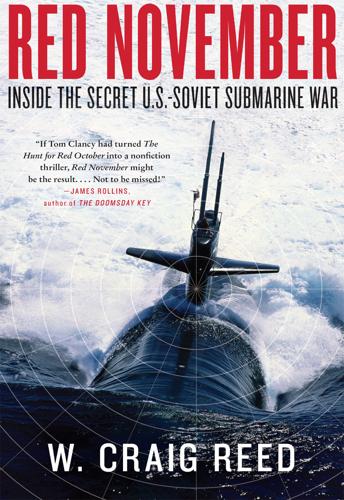
Red November: Inside the Secret U.S.-Soviet Submarine War
by
W. Craig Reed
Published 3 May 2010
RESOURCES Body of Secrets: Anatomy of the Ultra-Secret National Security Agency, James Bamford, Anchor, April 30, 2002, offered information regarding John Arnold and Cuban SIGINT missions conducted by the USS Nautilus and Oxford, as well as details about the USS Pueblo. Jeffrey G. Barlow, “Some Aspects of the U.S. Navy’s Participation in the Cuban Missile Crisis,” in A New Look at the Cuban Missile Crisis, Colloquium on Contemporary History, June 18, 1992, No. 7, Naval Historical Center, Department of the Navy Command in Crisis: Four Case Studies, Joseph F. Bouchard, Columbia University Press, 1991 The Cuban Missile Crisis, ed. Laurence Chang, National Security Archive, 1992 “The Naval Quarantine of Cuba, 1962,” Office of the Chief of Naval Operations, 1963, http://www.history.navy.mil/faqs/faq90-5.html October Fury, Peter Huchthausen, John Wiley & Sons, 2002 Presidential Recordings: John F.
…
Orlov, Captain Second Rank, Russian Navy (retired; unpublished memoir) CINCLANT SOSUS contact reports during the Cuban Missile Crisis “Khrushchev, Castro and Kennedy: Motivation, Intention, and the Creation of a Crisis,” Robin R. Pickering, thesis presented to the faculty of Humboldt State University, May 2006 Deck logs obtained for various naval platforms during the Cuban Missile Crisis Eyeball to Eyeball, The Inside Story of the Cuban Missile Crisis, Dino A. Brugioni, Random House, 1991 Soviet Naval Developments, third edition, foreword by Norman Polmar, The Nautical and Aviation Publishing Co. of America, 1984 Thirteen Days: A Memoir of the Cuban Missile Crisis, Robert F. Kennedy, W. W. Norton & Co., 1969 Submarines of the Russian and Soviet Navies, 1718–1990, Norman Polmar and Jurrien Noot, Naval Institute Press, 1991 Combat Fleets of the World 1980/81, Jean Labayle Couhat, Naval Institute Press, 1980 U.S.
…
Courtesy of Ryurik Ketov But they also forced three of the Foxtrot submarines, including Captain Savitsky’s B-59 (above) to the surface during the Cuban Missile Crisis. The United States did not know at the time that each Foxtrot carried a nuclear-tipped torpedo capable of destroying everything within a ten-mile radius, and all four Soviet subs came within minutes of firing. U.S. Navy photograph The U.S. Navy was primarily focused on blocking Soviet merchant ships from bringing more nuclear missiles to Cuba. U.S. Government photograph Living conditions aboard the Soviet Foxtrot-class submarines involved in the Cuban Missile Crisis were deplorable, and crews suffered from heat exhaustion.
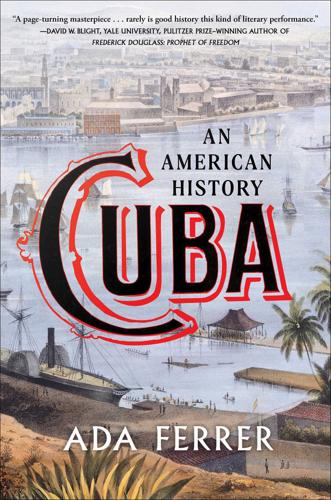
Cuba: An American History
by
Ada Ferrer
Published 6 Sep 2021
Photograph in Harpers, https://www.theatlantic.com/magazine/archive/2013/01/the-real-cuban-missile-crisis/309190/; Alexa Kapsimalis interview, Storycorps, https://archive.storycorps.org/interviews/grandpa-cuban-missile-crisis/. 15. Chang and Kornbluh, Cuban Missile Crisis, 1962, 380; Dobbs, One Minute, 84–85. 16. Chang and Kornbluh, Cuban Missile Crisis, 1962, 380; Fidel Castro speech, October 23, 1962; Adolfo Gilly, “A la luz del relámpago: Cuba en Octubre,” Viento Sur 102 (March 2009), 82. 17. Fursenko and Naftali, One Hell, 265–67; Chang and Kornbluh, Cuban Missile Crisis, 1962, doc. 42 and p. 387. 18. James Blight and janet M.
…
Kennedy Library, https://microsites.jfklibrary.org/cmc/oct26/doc2.html: See also NSA, Cuban Missile Crisis, 1962, doc. 46, and p. 387; Wilson Digital Archive, https://digitalarchive.wilsoncenter.org/document/114501; Diez Acosta, Octubre, 177–78; Blight and Lang, Dark, 39–40. 21. Khrushchev to Kennedy, October 26, 1962 and October 27, 1962 (Chang and Kornbluh, Cuban Missile Crisis, 1962, docs. 45 and 49); Fursenko and Naftali, One Hell, 273–74. 22. Transcript of ExComm meetings, October 27, 1962, DNSA, Cuban Missile Crisis Collection; Chang and Kornbluh, Cuban Missile Crisis, 1962, doc. 50. 23. Fursenko and Naftali, One Hell, 282. 24. Transcript of ExComm meetings, October 27, 1962, Chang and Kornbluh, Cuban Missile Crisis, 1962, doc. 50; Dobbs, One Minute, 309, 312–13; Jack Raymond, “Airmen Called Up,” New York Times, October 28, 1962. 25.
…
Permanent Representative of Cuba to the UN Secretary General, October 28, 1962, in Chang and Kornbluh, Cuban Missile Crisis, 1962, doc. 57. 30. Khrushchev to Castro, October 28, 1962, and Castro to Khrushchev, October 28, 1962, Chang and Kornbluh, Cuban Missile Crisis, 1962, docs. 55 and 56. 31. Kennedy to Khrushchev, October 27, 1962, in https://microsites.jfklibrary.org/cmc/oct27/; Khrushchev to JFK, October 27, 1962, https://microsites.jfklibrary.org/cmc/oct27/doc4.html. 32. Chang and Kornbluh, Cuban Missile Crisis, 1962, 402–3; Naftali and Fursenko, One Hell, 304–9. 33. Chang and Kornbluh, Cuban Missile Crisis, 1962, 405. 34. Kennedy, transcript of November 20, 1962 press conference, https://www.jfklibrary.org/archives/other-resources/john-f-kennedy-press-conferences/news-conference-45; Kennedy to Khrushchev, November 21, 1962, in Chang and Kornbluh, Cuban Missile Crisis, 1962, doc. 79. 35.

Spies, Lies, and Algorithms: The History and Future of American Intelligence
by
Amy B. Zegart
Published 6 Nov 2021
Fursenko and Naftali, “Soviet intelligence and the Cuban missile crisis,” Intelligence and National Security 13, no. 3 (2008): 64–87. 80. Fursenko and Naftali; Renshon, “Mirroring risk”; James G. Blight and David A. Welch, eds., Intelligence and the Cuban Missile Crisis (London: Frank Cass, 1999); Allison and Zelikow, Essence of Decision. 81. Raymond L. Garthoff, “U.S. intelligence in the Cuban missile crisis,” Intelligence and National Security 13, no. 3 (1998): 47. 82. Quoted in Theodore Sorenson, Kennedy (New York: Harper & Row, 1965), 705. 83. Arthur Schlesinger, remarks at “On the Brink: The Cuban Missile Crisis,” John F.
…
Kessel, and Melissa Chan, “Made in China, Exported to the World: The Surveillance State,” New York Times, April 24, 2019, https://www.nytimes.com/2019/04/24/technology/ecuador-surveillance-cameras-police-government.html (accessed September 24, 2020). 23. Zegart and Morell, “Spies, lies, and algorithms.” 24. Amy Zegart, “The Cuban missile crisis as intelligence failure,” Policy Review, Hoover Institution, October 2, 2012, https://www.hoover.org/research/cuban-missile-crisis-intelligence-failure (accessed September 20, 2020). 25. Jeff Jardins, “How much data is generated each day?” World Economic Forum, April 17, 2019, https://www.weforum.org/agenda/2019/04/how-much-data-is-generated-each-day-cf4bddf29f/ (accessed September 24, 2020). 26.
…
Walter Pincus, “Spy Agencies Faulted for Missing Indian Tests,” Washington Post, June 3, 1998. 74. Central Intelligence Agency, “Jeremiah News Conference.” 75. Ovodenko, “(Mis)interpreting threats,” 277. 76. Amy Zegart, “The Cuban missile crisis as intelligence failure,” Policy Review, Hoover Institution, October 2, 2012, https://www.hoover.org/research/cuban-missile-crisis-intelligence-failure (accessed September 20, 2020); U.S. Department of State, Office of the Historian, “SNIE 80-62: The Threat to U.S. Security Interests in the Caribbean Area,” January 17, 1962, in Foreign Relations of the United States, 1961–1963 [FRUS], Vol. 12: American Republics, https://history.state.gov/historicaldocuments/frus1961-63v12/d91 (accessed September 2, 2020); U.S.
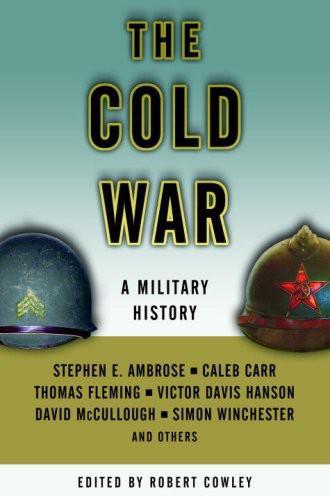
The Cold War
by
Robert Cowley
Published 5 May 1992
Few people there, he once told me, were aware of the Cuban Missile Crisis; the Soviet media had blacked out all mention of it. “But they knew something big was up,” he added, “even if we didn't know precisely what until Khrushchev made a talk at the end, hiding lots of things and twisting others into a Soviet victory. I knew much more than most people, because while the crisis was on, I happened to bump into a friend from the American embassy staff on a busy street. He told me. Still, I knew too little to be scared that I might be killed by an American nuclear bomb at any moment.” The precarious two weeks of the Cuban Missile Crisis came close to overshadowing the emergency in Europe of a year earlier, the erection of the Berlin Wall.
…
LeMay was eventually made chief of staff of the air force, the position he held during the Cuban Missile Crisis. Privately, he believed that JFK behaved like a coward, that we should have exercised a first-strike option. The Sunday morning after the two Ks cemented their deal, the president summoned his military chiefs to the Cabinet Room to inform them. LeMay pounded the table, his cigar no doubt clenched in his teeth. “It's the greatest defeat in our history, Mr. President…. We should invade today!” For the rest of his life, he remained convinced that we had “lost” the Cuban Missile Crisis—and, indeed, the entire Cold War. VICTOR DAVIS HANSON retired last year as a professor of classics at California State University, Fresno, and is now a fellow at the Hoover Institution at Stanford University.
…
A large crash shattered the window and threw the pieces into the four corners of the room. Sirens screeched. I had difficulty trying to breathe in the fog that now filled the room. We got to our feet and made our way through the crowded halls to the air raid shelter.” Life, for the narrator, would never be the same. A year after the Cuban Missile Crisis, apocalypse was still on our minds. We were not quite halfway through the Cold War, and the Bomb—Bombs, rather—seemed to be our undeserved future. As I read my wife's story, written in her properly neat schoolgirl script, the memory of the nuclear clock resurfaced, its hands perpetually stuck at one minute to midnight.
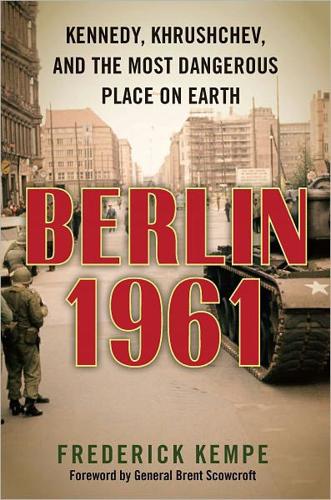
Berlin 1961: Kennedy, Khrushchev, and the Most Dangerous Place on Earth
by
Frederick Kempe
Published 30 Apr 2011
In the words of William Kaufman, a Kennedy administration strategist who worked both Berlin and Cuba from the Pentagon, “Berlin was the worst moment of the Cold War. Although I was deeply involved in the Cuban Missile Crisis, I personally thought that the Berlin confrontation, especially after the wall went up, where you had Soviet and U.S. tanks literally facing one another with guns pointed, was a more dangerous situation. We had very clear indications mid-week of the Cuban Missile Crisis that the Russians were not really going to push us to the edge…. “You didn’t get that sense in Berlin.” Fred Kempe’s contribution to our crucial understanding of that time is that he combines the “You are there” storytelling skills of a journalist, the analytical skills of the political scientist, and the historian’s use of declassified U.S., Soviet, and German documents to provide unique insight into the forces and individuals behind the construction of the Berlin Wall—the iconic barrier that came to symbolize the Cold War’s divisions.
…
Most surprised of all by Kennedy’s demonstration of strength was Khrushchev himself, who had bet so much against it. General Clay suggested to diplomat William Smyser that the Cuban Missile Crisis never would have occurred had it not been for Khrushchev’s perception of Kennedy’s weakness, and Clay believed as well that the threat to Berlin only receded once Kennedy made it clear he would no longer tolerate Moscow’s bullying. West Berliners celebrated the outcome of the Cuban Missile Crisis more enthusiastically than any others. They concluded that the Soviet threat to them had passed. RATHAUS SCHÖNEBERG, CITY HALL OF WEST BERLIN WEDNESDAY, JUNE 26, 1963 Kennedy would make his first and last presidential trip to Berlin eight months after the Cuban crisis, on June 26, 1963.
…
At the same time…Soviet ships: Beschloss, Crisis Years, 412–415; Taubman, Khrushchev, 549–551; Fursenko and Naftali, Khrushchev’s Cold War, 451; Raymond L. Garthoff, Reflections on the Cuban Missile Crisis. Washington, D.C.: The Brookings Institution, 1987, 18–22, 208 (table showing type and numbers of missiles). Fechter’s murder snapped something: “City’s Mood: Anger and Frustration,” New York Times, 08/26/1962. Meanwhile, over Cuba: Anatoli I. Gribkov and William Y. Smith, “Operation Anadyr”: U.S. and Soviet Generals Recount the Cuban Missile Crisis. Chicago: Edition Q, 1994, 5–7, 24, 26–57; Taubman, Khrushchev, 550; Fursenko and Naftali, One Hell of a Gamble, 188–189, 191–193.
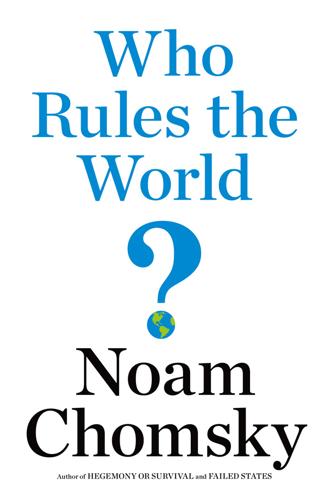
Who Rules the World?
by
Noam Chomsky
Domínguez, “The @#$%& Missile Crisis (Or, What Was ‘Cuban’ About U.S. Decisions During the Cuban Missile Crisis,” Diplomatic History 24, no. 5 (Spring 2000): 305–15. 20. Ernest R. May and Philip D. Zelikow, The Kennedy Tapes: Inside the White House During the Cuban Missile Crisis, concise edition (New York: W. W. Norton, 2002), 47. 21. Jon Mitchell, “Okinawa’s First Nuclear Missile Men Break Silence,” Japan Times, 8 July 2012. 22. Dobbs, One Minute to Midnight, 309. 23. Sheldon M. Stern, Averting “The Final Failure”: John F. Kennedy and the Secret Cuban Missile Crisis Meetings (Palo Alto, CA: Stanford University Press, 2003), 273. 24.
…
Stern, Averting “The Final Failure.” 30. Ibid., 406. 31. Raymond L. Garthoff, “Documenting the Cuban Missile Crisis,” Diplomatic History 24, no. 2 (Spring 2000): 297–303. 32. Papers of John F. Kennedy, Presidential Papers, National Security Files, Meetings and Memoranda, National Security Action Memoranda [NSAM]: NSAM 181, Re: Action to be taken in response to new Bloc activity in Cuba (B), September 1962, JFKNSF-338-009, John F. Kennedy Presidential Library and Museum, Boston, Massachusetts. 33. Garthoff, “Documenting the Cuban Missile Crisis.” 34. Keith Bolender, Voices From the Other Side: An Oral History of Terrorism Against Cuba (London: Pluto Press, 2010). 35.
…
Chomsky, Hegemony or Survival, 78–83. 41. Stern, The Week the World Stood Still, 2. 42. Desmond Ball, Politics and Force Levels: The Strategic Missile Program of the Kennedy Administration (Berkeley: University of California Press, 1980), 97. 43. Garthoff, “Documenting the Cuban Missile Crisis.” 44. Dobbs, One Minute to Midnight, 342. 45. Allison, “The Cuban Missile Crisis at 50.” 46. Sean M. Lynn-Jones, Steven E. Miller, and Stephen Van Evera, Nuclear Diplomacy and Crisis Management: An International Security Reader (Cambridge, MA: The MIT Press 1990), 304. 47. William Burr, ed., “The October War and U.S. Policy,” National Security Archive, published 7 October 2003, http://nsarchive.gwu.edu/NSAEBB/NSAEBB98/. 48.
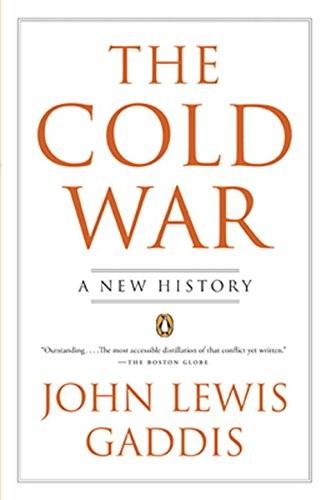
The Cold War: A New History
by
John Lewis Gaddis
Published 1 Jan 2005
Khrushchev, Khrushchev Remembers, translated and edited by Strobe Talbott (New York: Bantam, 1971), p. 546. 59 Taubman, Khrushchev, p. 537. 60 See the transcripts of conversations between American and Soviet veterans of the crisis in Blight, Allyn, and Welch, Cuba on the Brink; and in James G. Blight and David A. Welch, On the Brink: Americans and Soviets Reexamine the Cuban Missile Crisis (New York: Hill and Wang, 1989). 61 Kennedy meeting with advisers, October 22, 1962, in Ernest R. May and Philip D. Zelikow, eds., The Kennedy Tapes: Inside the White House during the Cuban Missile Crisis (Cambridge, Massachusetts: Harvard University Press, 1997), p. 235. 62 Taubman, Khrushchev, p. 552. 63 Blight, Allyn, and Welch, Cuba on the Brink, p. 259. 64 Ibid., p. 203. 65 Gaddis, We Now Know, p. 262; “NRDC Nuclear Notebook: Global Nuclear Stockpiles, 1945–2002,” p. 104. 66 Blight, Allyn, and Welch, Cuba on the Brink, p. 360. 67 Lawrence Freedman, The Evolution of Nuclear Strategy (New York: St.
…
Great Society programs of Vietnam War and Johnson administration Joint Chiefs of Staff, U.S. Justice Department, U.S. Kádár, János Kant, Immanuel Katyn Wood massacre Kazakhstan Kennan, George F. “long telegram” of on role of C.I.A. on U.N. Kennedy, John F. Cuban missile crisis and U.S.-Soviet relations and Kennedy, Robert F. Kent State incident K.G.B. Khmer Rouge Khomeini, Ayatollah Ruhollah Khrushchev, Nikita background and personality of Berlin Wall and Cuban missile crisis and East German alliance and Eisenhower’s meetings with Hungarian uprising and nuclear weapons policy of ouster of rise of Sino-Soviet relations and Stalin denounced by Suez crisis and Tito visited by U.S. visited by U-2 incident and “We will bury you” remark of Khrushchev, Sergei Kim Il-sung King, Martin Luther, Jr.
…
But my students sign up for this course with very little sense of how the Cold War started, what it was about, or why it ended in the way that it did. For them it’s history: not all that different from the Peloponnesian War. And yet, as they learn more about the great rivalry that dominated the last half of the last century, most of my students are fascinated, many are appalled, and a few—usually after the lecture on the Cuban missile crisis—leave class trembling. “Yikes!” they exclaim (I sanitize somewhat). “We had no idea that we came that close!” And then they invariably add: “Awesome!” For this first post–Cold War generation, then, the Cold War is at once distant and dangerous. What could anyone ever have had to fear, they wonder, from a state that turned out to be as weak, as bumbling, and as temporary as the Soviet Union?
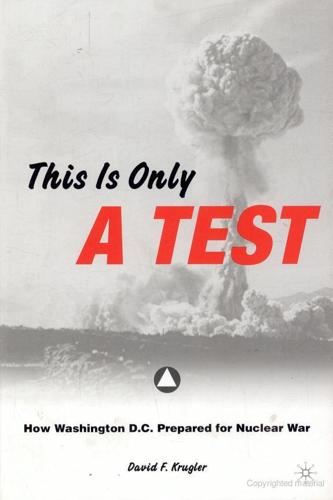
This Is Only a Test: How Washington D.C. Prepared for Nuclear War
by
David F. Krugler
Published 2 Jan 2006
Fursenko, One Hell, 188–9 (the quote is on 189); “Chronologies of the Crisis,” compiled for Laurence Chang and Peter Kornbluh, eds., The Cuban Missile Crisis, 1962: A National Security Archive Documents Reader (New York: The New Press, 1992), accessed June 23, 2005 at the National Security Archive http://www.gwu.edu/~nsarchiv/nsa/cuba_mis_cri/chron.htm.. 22. “Chronologies of the Crisis”; Ernest R. May and Philip D. Zelikow, eds., The Kennedy Tapes: Inside the White House during the Cuban Missile Crisis (Cambridge, Mass.: The Belknap Press of Harvard University Press, 1997), 45–76, 189–203. Furensko, One Hell, 242–3; “Chronologies of the Crisis”; “Radio and Television Report to the American People,” October 22, 1962, PPP: John F.
…
Phillip, 11–12 Rapalus, Henry, 115, 140–1 Raven Rock Mountain, 63–4, 66–7, 87, 108, 167 see also Site R Rayburn, Sam, 50, 56, 167 Reston, Va., 6, 147, 185 Reynolds, W.E., 60, 121 Rockville, Md., 115, 139–41, 173 Rodericks, George, 172, 175, 178, 184 Roosevelt, Eleanor, 13–14 Roosevelt, Franklin civil defense and, 13–14 death of, 16 Pentagon and, 17–18, 67 White House and, 15, 70–1 Schwartz, Max, 52, 54, 87 shelters see fallout shelters Sherry, Michael, 90 Silvers, Hal, 131, 133–4 Site R, 64–5, 67–8, 95, 126–7, 132, 158, 162, 165–6, 180, 183, 185–6 see also Raven Rock Mountain Smith, Howard, 62–3 Social Science Research Council, 22, 89 Soviet Union aircraft of, 1, 5, 10, 82, 87, 90, 111, 113, 116, 132 Cold War and, 18–20, 48, 59 Cuban Missile Crisis and, 174–9 deterrence of, 91–2, 98 espionage of, 6, 18, 104 nuclear weapons of, 1, 10, 131–2, 136, 142, 169, 182, 235 n.44 propaganda of, 25, 85, 87 striking capability of, 10, 108, 116, 120–1, 158–60, 166 test of atomic bomb, 32, 35–6, 41, 64, 171 test of hydrogen bomb, 75, 99–100 War Scare of 1948 and, 23–5 see also Washington, D.C., imagined attacks on Spencer, Samuel, 121, 132 Springfield, Va., 34 Stalin, Joseph, 6, 18 State Department Cuban Missile Crisis and, 177, 180–1 offices in Washington, D.C., 17, 21, 50, 61, 101, 144 participation in exercises, 109, 121, 127–8, 161 relocation site of, 93–6, 109, 121, 128, 155, 165–6, 180, 183 Steelman, John, 32 Stein, Clarence, 28, 60, 147 Stewart Air Force Base, 112, 150 Stowe, David, 49–50, 75, 96 Strategic Air Command (SAC), 111, 114, 179 Strauss, Lewis, 102, 133 submarine-launched ballistic missiles (SLBM) see ballistic missiles Suitland, Md., 34 Supreme Court continuity of, 7, 168, 177–8 during Cuban Missile Crisis, 177–8, 181 participation in exercises, 129 rulings on racial segregation, 145–6 Symington, Stuart, 55–7, 59, 91, 171 Takoma Park, Md., 48, 122 Teague, Olin, 122–3 ‘tempos’ on National Mall, 17, 21, 26, 31, 38–9, 43, 50–1, 61–2, 103–4 proposed construction of, 34–6 Treasury Department continuity of, 106, 180 participation in exercises, 81, 109, 117, 127–8, 161 relocation sites of, 183 tunnel to White House, 69, 73 Truman, Harry S. authorization of Conelrad, 112 authorization of development of hydrogen bomb, 6 continuity of government planning of, 5, 64, 75, 96, 105 Doctrine of, 23, 171 end of World War II and, 16–18 Korean War and, 48–9, 59 reaction to Soviet atomic test, 35, 171 reelection of, 31 support for civil defense, 23–4, 46, 55–6, 81, 86, 90–2, 170 support for desegregation of Washington, D.C., 3, 145 support for dispersal, 4, 49–52, 59, 61–3, 104 treatment of NSRB, 25, 31–2 use of the Bureau of the Budget, 37 White House renovation and, 69–71, 73–4 Tuve, Dr.
…
Merle, 135 Tysons Corner, Va., 66, 185 UFOs, 85–6 Underhill, John Garrett, 123, 130 United States air defense systems described, 91, 111–14 nuclear weapons of, 9–10, 170, 179 part in Cold War’s origins, 18–19 United States Information Agency (USIA), 95, 134, 177, 183 United States Strategic Bombing Survey, 21–2, 27, 36, 61, 119 Valley Forge Foundation, 79 Vanderbilt, Tom, 185, 237 n.21 Virginia, 2, 5, 15, 34, 43, 62, 101–2, 146, 187 see also individual cities and counties Wadsworth, James, 33–4 Warning Red defined, 77, 173 test activation of, 47, 113, 116, 121–2 see also attack warning Warning Yellow accidental declaration of, 114, 154 declaration of, 96, 112–13, 124, 132, 136, 141 defined, 77, 173 difficulty of keeping secret, 114–15, 124, 134 test activation of, 126–7, 149–50, 156, 160 see also attack warning Warren, Earl, 168–9, 177–8 Warrenton, Va., 95–6, 183 War Scare of 1948, 24–6 wartime essential agencies defined, 4–5, 196 n.16 dispersal of, 30, 38, 40–1, 101–2, 147 participation in exercises, 108–9, 121, 124–9, 156–63, 160, 182 responsibilities of, 105–6, 164, 186 vulnerability of, 105 wartime essential personnel advance evacuation of, 113–14, 120, 124, 155, 163, 177–8, 181 cadres of at Mount Weather, 7, 106, 159, 163, 165, 176 during Cuban Missile Crisis, 176, 178–9 expected actions during crisis, 115, 129, 134, 162–3, 181–2 Washington Area Survival Plan committee (WASP), 132, 135, 138, 141 Washington and Lee University, 15, 95, 157, 165 Washington Board of Trade, 46, 81 Washington, D.C. on 9/11, 185–7 Alert America in, 77–80 attack warning system of, 14, 111–15, 150–5 civil defense in see under D.C. Office of Civil Defense civil defense during World War II, 14–16 during Cuban Missile Crisis, 175–6 difficulty of evacuating, 109, 115, 121–4, 132–5 effects of World War II on, 11–12, 14, 16–17 exercises staged in, 116–17, 119–21, 124–30 government of, 3, 45–6 ground observer posts in, 82–5, 138–9 imagined attacks on, 1–2, 23, 36, 47, 67, 111–14, 117, 136, 158–60, 179–81 see also Operation Alert lack of home rule, 3, 93 national security state in, 21 planning for civil defense office in, 45–7 population of, 12, 26, 122, 145 present–day emergency plans of, 187–9 segregation of, 2–3, 14–15, 54, 84, 145–7 slavery in, 3 symbolic importance of, 3–4, 8, 49, 122–3, 135 UFO scare in, 85–6 see also dispersal, plans for metropolitan Washington, D.C.
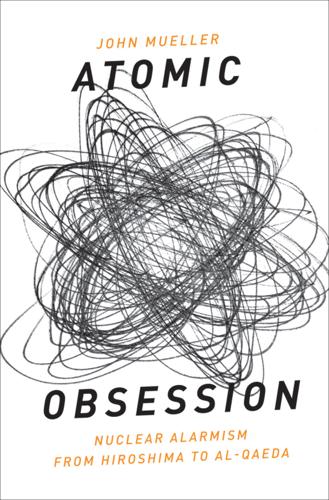
Atomic Obsession: Nuclear Alarmism From Hiroshima to Al-Qaeda
by
John Mueller
Published 1 Nov 2009
See escalation fear fear mongering, brotherhood or peace, 26–27 Ferguson, C., Russian or Pakistan bomb, 20–21, 166–167 fictional accounts, future war, 244–245n.19 financial costs, bombs, 178 Finel, Bernard, hijackers of 9/11, 192 Fingar, Tom, al-Qaeda and fissile material, 207–208 “firestorms,” fire, 5 Fischoff, Baruch, radiation and panic, 195–196 fissile material al-Qaeda and, 207–208 inventory and securing, 194 Israel bombing reactor of, 262n.12 Mahmood, 271n.16 procuring, 169–172 yield, 168 flash of heat and light, nuclear explosion, 5 “football war,” Honduras and El Salvador, 255n.33 foreign policy, proliferation fixation, 137–141 forensics, nuclear, 155, 164, 190, 194, 264n.6 Fox Television’s 24, suitcase bombs, 167 France Algeria, 109 arsenals as insurance against Iran, 87 President de Gaulle and first bomb, 105–106 France and Germany, general stability, 67 Franks, General Tommy, freedom and liberty, 21 Freud, S., Civilization and Its Discontents, 24 Frost, Robin, fissile materials, 170–171 Fursenko, Aleksandr, 76, 249n.12, 263n.29 future war, fictional accounts, 244–245n.19 Gadahn, Adam, propaganda video, 219 Gaddis, John, 31, 69–70 Garwin, Richard, 111, 181, 188 gas attacks, war between Iran and Iraq, 245n.26 gas fatalities, war, 244n.16 Gates, Defense Secretary Robert Iraqis and sanctions, 134 nuclear weapon worry, 163 worries, xi Gavin, Francis, 95–96, 148 Gerges, Fawaz The Far Enemy, 221 jihadis, 199, 275n.28 Middle East outrage over 9/11, 225 Germany, 106–107, 244n.16 Germany and France, general stability, 67 Gilmore Commission, 12, 186, 231 Gilpatric Report of 1965, 91, 99 Gilpin, Robert, international prestige, 105 Goldstein, Joshua, society and economy, 20 Gorbachev, Mikhail end of cold war, 50–51 Intermediate-range Nuclear Forces (INF) agreement, 80 reexamining basic ideology, 250n.21 Goss, Porter, chemical, biological, radiological and nuclear materials, 272n.24 governments, Pakistan and United States, 164 Graham Commission (2008), 260n.28 Great War, 23–24, 55–56 Grenier, Robert, al-Qaeda as own worst enemy, 227 GRIT: Graduated Reciprocation in Tension-reduction, 254n.30 Group of Five, rich nations club, 107 group solidarity, terrorists, 276n.47 Guiliani, Rudy, security experts, 161 Gulf War of 1991, 109, 132, 133–134 The Guns of August, Tuchman, 40 Haig, Secretary of State A., 32, 59–60 Halevi, Yossi Klein, 262n.20, 263n.27, 264n.24 Hamas, 262n.20 Hasegawa, T., Soviet neutrality, 46 health facilities, nuclear attack, 8 heat and light, nuclear explosion, 5 Hebrew University, “A Nuclear Iran,” 263n.31 Hezbollah, 262n.20 highly enriched uranium (HEU) acquisition scenario, 190, 265n.20 adequate supply for terrorists, 188 atomic terrorist’s task, 185, 186 fissile material, 169–172 googling, on internet, 268–269n.16 safety, 175 South African break-in, 171 hijackers, terrorism probability, 192–193 Hiroshima “atomic age,” ix atomic bomb, 9–10 bomb size, 266n.30 damage, 3 historical impact of weapons, 29 human costs, 141, 248–249n.1 military value of atomic bomb, 10 product testing, 175 Stalin’s program to get atom bomb, 47, 49–50 surrender of Japanese, 43 taboo of nuclear weapons, 61–63 Holland, nuclear opponents, 251n.13 Holloway, David, bomb as diplomacy, 32, 46–47, 59 Holocaust, second, 262n.20 horizontal proliferation, nuclear weapons, 73 “hormesis” hypothesis, 242n.12 human costs Hiroshima, 141, 248–249n.1 Nagasaki, 141 Human Rights Watch, Iraqi attacks, 245n.26 Hurricane Katrina, death toll, 22, 244n.13 Hussein, Saddam Bush’s war against, 98 chemical weapons, 227 Gulf War of 1991, 109, 132 human costs, 141–142 human costs for obtaining nuclear weapons, 142 Iraq War, 132–134 weapons of mass destruction, 259n.5 hydrogen bomb, plutonium trigger, 250n.17 Hymans, Jacques, 94, 146, 148, 263n25 bi-national bomb program, 257n.13 fighting smoke with fire, 158 hysteria and North Korea, 263n.25 international prestige, 107 nuclear proliferation pace, 119–120 nuclear weapons programs, 111, 113 “oppositional nationalist,” 261n.2 state’s decision to go nuclear, 110 threats and going nuclear, 144 Washington threat consensus, 132, 254n.14, 257n.1 hyperbole, 18, 231 hysteria Langewiesche’s book, 183, 268n.5 North Korea, 263n.25 ideology, Soviet, 33–35 ideology disagreements, cold war, 51, 53 Ignatieff, Michael, 20, 21, 244n.10 improvised nuclear device (IND) acquisition scenario, 190 atomic terrorist’s task, 185 devotion and technical skills, 176 difficulties, 175 predicting bombing, 195 simplest design, 168 transportation, 177–178 India economics of nuclear weapons, 111 nuclear tests and bin Laden, 212 nuclear weapons capability, 90, 91 prestige or influence, 108 indirect effects, nuclear attack, 8 Intermediate-range Nuclear Forces (INF), 80 International Atomic Energy Agency, x, 93 international attention, nuclear weapons, 108 international pressure, nuclear programs, 113–114 international relations, alliance and structure, 52–53 international terrorism, threat, 274–275n.20 invasion, potential Soviet, of Europe, 35–38 inventory, fissile material, 194 Iran atomic arsenal, 238 axis of evil, 144–145 calm policy discussion, 151, 153–155 deterrence, 156 France insuring against, 87 hostility to Israel, 154 Israeli anxieties about security, 150–151 nuclear weapon, x proliferation, 93 sanctions, 145–146 Iranian nuclear threat, 262n.20, 263n.27 Iraq al-Qaeda as own worst enemy, 226–227 axis of evil, 144–145 deaths in war, 258n.3 economics of nuclear weapons, 111 Iraqis and sanctions, 134 nuclear theme in run-up to war in, 130–131 proliferation fixation, 130–135 sanctions, 145 war against Saddam Hussein’s, 98 war and Washington threat consensus, 132 weapons of mass destruction (WMD), 131 Iraq Study Group Report, 175 irrationality, impact, 101 Islamic Movement of Uzbekistan, 204 Israel anxieties about security, 150–151 bombing reactor of fissile material, 262n.12 conference on “A Nuclear Iran,” 263n.31 hostility of Iran, 154 Iran’s capacity to do harm, 262–263n.21 military budget, 111 military value of nuclear arsenal, 110 nuclear weapons capability, 90, 91 perception of United States, 260n.26 possible nuclear weapons use, 138 prestige or influence, 108 “Samson Option,” 110 second Holocaust, 262n.20 Israeli intelligence, Iranian threat, 263n.27 Italy, status, 107 Japan North Korea support, 136 nuclear attacks, 22 status vs. security, 106–107 wake of World War II, 27 Japanese Aum Shinrikyo, 172–173, 227–228 defending homeland and Soviet neutrality, 46 kamikaze, 249n.5 reaction of surrender on, 44–45 shock effect of new weapon, 44 Soviet intervention, 45–46 surrender following bombings, 43 Japanese-American war, hatreds, 45 Jenkins, Brian, 18, 64, 162–163, 166, 170, 189, 209–210, 220, 228, 231–232 Jervis, Robert, irrationality, 36, 101, 108 Johnson, Robert H., nuclear metaphysics, 63–64, 68, 97, 255n.22 Kahn, Herman, 57, 73–74, 92 kamikaze, Japanese, 249n.5 Kaplan, Fred, 64 Kaplan, Lawrence, 261n.4 Kay, David, nuclear arms, 103, 155–156, 157 Kazakhstan, 110, 122–124, 138 Kean, Governor Thomas, worries, xi Keller, Bill, worries, xi, 162–163, 179 Kennedy, President John F., 81 Chinese nuclear test, 96 Cuban missile crisis, 40, 248n.33 missile trade, 248n.33 proliferation problem, 90, 93, 94, 98 test ban treaty, 76 UN as only true alternative to war, 75 war and mankind, 25 Kenney, Michael, Islamic militants, 223 Kerry, John, nuclear weapon worry, 163 Khan, A. Q. bin Laden’s interest in, network, 213 intelligence agencies closing operation, 164–165 selling secrets, 169–170, 207 Khattab, Ibn, connection to bin Laden, 202–203 Khrushchev, Nikita Britain and France reversing invasion at Suez, 249n.12 Cuban missile crisis, 39–40 struggle against capitalism, 34–35 supporting Shevchenko, 248n.31 world war, 33 Korean War, 38, 47–48, 50 Kornienko, Georgy, world war and Soviets, 33 Kosko, Bart, government overestimating threat, 220 Kramer, Stanley, On the Beach, 57 Krauthammer, Charles, Arab world, 261n.1, 261n.4 Kremlin, 246n.15, 247n.22 Kristof, Nicholas, Nuclear Terrorism: The Ultimate Preventable Catastrophe, 181 Kristol, William, 261n.4 Langewiesche, William Atomic Bazaar, 183, 268n.5 book jacket flap, 268n.5 constructing bomb, 111, 173 obtaining nuclear weapons, 105 odds against terrorists, 184 passed “point of no return,” 93 Lapp, Ralph, A-bombs, 242n.19 Laqueur, Walter, proliferation of WMD, 228 Lawrence Livermore National Laboratory, 266–267n.43 leadership, nuclear weapons programs, 113 Lenin, Vladimir, 34 Levi, Michael, 165, 171, 175, 184, 187, 189, 213, 264n.6 Lewis, Jeffrey, 178, 191 Libya, 124–126, 145, 258n.31 likelihood acceptable risk, 197–198 acquisition scenarios, 190–191 arraying barriers, 184, 186 assessing, 186–191 assigning and calculating probabilities, 187–189 comparisons of improbable events, 191–193 multiple attempts, 189–190 policy for reducing, 193–197 probability of nuclear fission bomb, 267n.48 terrorist bomb, 183, 238 World at Risk, 182 Lockerbie bombing, 125, 258n.32 London, image of destruction, 24 longer-term effects, nuclear attack, 8 The Looming Tower, Wright, 201 “loose nukes,”165–168, 208–210, 238 Los Alamos National Laboratory, 267n.48 Los Alamos scientists bomb design, 173–174 difficulties of making nuclear weapons, 174–175 sensitive detection equipment, 176 Los Angeles, port security, 141 Los Angeles International Airport, 19 lottery tickets, terrorism comparison, 191 Lugar, Senator Richard, 20, 171, 181, 194 McCain, Senator John, 130–131, 230 McCarthyism, Communist menace, 49 McCone, CIA Director John, Chinese threat, 91, 96 McNamara, Robert, 66–67, 68, 248n.33 McNaugher, Thomas, missiles, 116 McPhee, John, sense of urgency, 162 Mahmood, Sultan Bachiruddin, 203–205, 271n.16 Majid, Abdul, Pakistani nuclear scientist, 203–204 marijuana bale, smuggling atomic device, 177 Martin, Susan, 232 measured ambiguity, catchphrase, 86 melancholy thought, Winston Churchill, 35 Middle East, 225, 261n.4 Milhollin, Gary, 174, 175 military, Canada, 106 military attacks, appeal of nuclear weapons, 147 military planning, nuclear weapons, 14–15 military strategy, stabilizing or destabilizing, 66 military value, nuclear weapons, 108–110, 236, 237–238 Mir, Hamid, 164, 210–211, 264n.7 credibility of, 273n.36 missile capacity, 153, 154 missile crisis, Cuba, 40 The Missiles of October, Cuba, 40 Mohammed, Khalid Sheikh, 9/11 attack, 206 morality, Canada without weapons, 112–113 Morison, Samuel Eliot, 269n.23 Morrison, Phillip, chance for working peace, 26 Mowatt–Larssen, Rolf, xi, 20 Mueller, Robert, xi, 228, 274n.16, 276n.37 Mukhatzhanova, Gaukhar, points of no return, 94–95 Muller, Richard, 146, 172, 192 multiple groups, likelihood, 189–190 Musharraf, General Pervez, criticism, 260n.24 Muslim extremists, publications of violence, 223 mustard gas, calculation for causalties, 12 mutual assured destruction (MAD), deterrence, 64 Myers, General Richard, 20, 22 Naftali, Timothy, 76, 249n.12, 263n.29 Nagasaki atomic bomb, 9–10 human costs, 141 military value of atomic bomb, 10 surrender of Japanese, 43 taboo of nuclear weapons, 61–63 napalm, 243n.30 National Intelligence Estimate (1958), 119 National Intelligence Estimate (2007), 274n.16 National Planning Association, diffusion, 104 national security threat, terrorism and U.S., 233 NATO missiles, European demonstrations, 60 “naughty child” effect, Russia, 108 neglect, cold war, 86 Negroponte, John, probability of attack, 181 nerve gas, calculation for causalties, 12 Netanyahu, Benjamin, 264n.33 Neufeld, Michael, missiles, 116 neutron bomb, 4, 14, 81 New Jersey Lottery, 270n.6 Nimitz, Admiral Chester W., 269n.23 Non-Proliferation Treaty (NPT), nuclear, 119–121 North Korea American-led forced invading, 247n.27 attention, 108, 238 axis of evil, 144 calm policy discussion, 151, 152–153 deterrence, 262n.19 “eating problem,” 152 hysteria, 263n.25 invasion of South Korea, 49 nuclear weapon, x proliferation, 93 proliferation fixation, 135–137 sanctions, 136, 145 “supreme priority” of, 149–150 Nth country problem, nuclear weapons, 91 nuclear age, verge of new, x nuclear arsenals, 64–65, 145, 237 nuclear bomb, 17, 269n.16 “The Nuclear Bomb of Islam,” bin Laden, 211–212 nuclear crisis, Cuba, 39 nuclear diffusion, 237 nuclear energy, security, 139–140 “nuclear era,” Hiroshima, ix nuclear explosion, 61–62, 181, 243n.9 nuclear fears classic cold war, 56–57 declining again, 60–61 On the Beach, 57 reviving in early 1980s, 58–60 subsiding in 1960s and 1970s, 57–58 nuclear fission bomb, probability of attack, 267n.48 nuclear forensics, 155, 164, 190, 194, 264n.6 nuclear fuel, cartelization, 260n.28 nuclear metaphysics, deterrence, 63–67 nuclear proliferation, xiii, 89 nuclear radiation, dirty bomb, 18 nuclear reactor meltdown, Chernobyl, 7 Nuclear Regulatory Agency, radiation, 7 The Nuclear Revolution, Mandelbaum, 246n.7 nuclear sting operation, 194 Nuclear Terrorism: The Ultimate Preventable Catastrophe, Kristof, 181 nuclear tipping point, Brookings Institution, 93–94 nuclear virginity, Canada, 112 nuclear war, x, 64 nuclear weapons.
…
He had been greatly impressed by Barbara Tuchman’s The Guns of August and concluded that in 1914 the Europeans “somehow seemed to tumble into war … through stupidity, individual idiosyncrasies, misunderstandings, and personal complexes of inferiority and grandeur.” He had no intention, he made clear, of becoming a central character in a “comparable book about this time, The Missiles of October.”33 Of course the Cuban missile crisis would not have happened, at least in the same way, had there been no nuclear weapons for the Soviets to deploy to the island. The point here, however, is that even with the image of nuclear war staring at them, Kennedy and Khrushchev were referencing horrors remembered from prenuclear wars to warrant their intense concern about escalation.
…
Snow was publishing his alarmist broadside proclaiming it to be a “certainty” that, if the nuclear arms race between the United States and the Soviet Union were to continue and accelerate, a nuclear bomb would go off “within, at the most, ten years.”4 Nuclear Fear Subsides: The 1960s and 1970s None did, as it happened. Indeed, within, at the most, four years after Snow’s urgent pronouncement, anxiety about nuclear cataclysm began to subside. In the aftermath of the 1962 Cuban missile crisis, the United States and the Soviet Union signed some arms control agreements and, although these agreements did not reduce either side’s nuclear capacity in the slightest, the generally improved diplomatic atmosphere engendered a considerable relaxation in fear that they would actually use their weapons against each other.

Command and Control: Nuclear Weapons, the Damascus Accident, and the Illusion ofSafety
by
Eric Schlosser
Published 16 Sep 2013
“To get the population used to the idea”: Ibid. If Khrushchev’s scheme worked: Dozens of books have been written about the Cuban missile crisis. I found these to be the most interesting and compelling: Aleksandr Fursenko and Timothy Naftali, “One Hell of a Gamble”: Khrushchev, Castro, and Kennedy, 1958–1964 (New York: W. W. Norton, 1997); Graham Allison and Philip Zelikow, Essence of Decision: Explaining the Cuban Missile Crisis (New York: Longman, 1999); Ernest R. May and Philip D. Zelikow, The Kennedy Tapes: Inside the White House During the Cuban Missile Crisis (New York: W. W. Norton, 2002); Max Frankel, High Noon in the Cold War: Kennedy, Khrushchev, and the Cold War (New York: Ballantine Books, 2005); and Michael Dobbs, One Minute to Midnight: Kennedy, Khrushchev, and Castro on the Brink of Nuclear War (New York: Knopf, 2008).
…
Minuteman missiles became operational for the first time during the Cuban Missile Crisis. To err on the side of safety, the explosive bolts were removed from their silo doors. If one of the missiles were launched by accident, it would explode inside the silo. And if President Kennedy decided to launch one, some poor enlisted man would have to kneel over the silo door, reconnect the explosive bolts by hand, and leave the area in a hurry. • • • WHILE THE DEPARTMENT OF DEFENSE publicly dismissed fears of an accidental nuclear war, the Cuban Missile Crisis left McNamara more concerned than ever about the danger.
…
“The Madman Nuclear Alert,” International Security, Vol. 27, No. 4, 2003, 150–83. Scott, Len, and S. Smith. “Lessons of October: Historians, Political Scientists, Policy Makers and the Cuban Missile Crisis,” International Affairs, Vol. 70, No. 4, October 1994, 659–84. Searle, Thomas R. “‘It Made a Lot of Sense to Kill Skilled Workers’: The Firebombing of Tokyo in March 1945,” Journal of Military History, Vol. 66, No. 1, January 2002, 103–33. Seckel, Al. “Russell and the Cuban Missile Crisis,” Russell: Journal of the Bertrand Russell Studies, Vol. 4, No. 2, 253–61. Skidmore, David. “Carter and the Failure of Foreign Policy Reform,” Political Science Quarterly, Vol. 108, No. 4, 1993, 699–729.
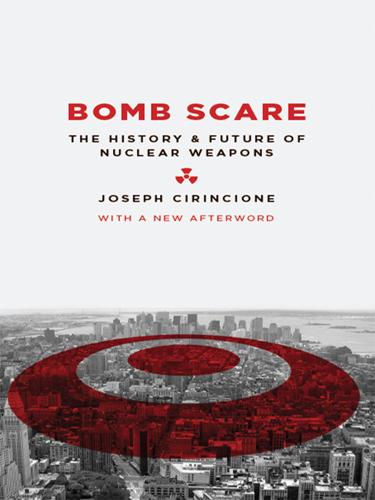
Bomb Scare
by
Joseph Cirincione
Published 24 Dec 2011
He created the Arms Control and Disarmament Agency to pursue his vision and to provide some balance in national policy discussions. If he had any doubts about the urgency of reducing nuclear dangers, these were dispelled by the 1962 Cuban Missile Crisis. The discovery that the Soviet Union had placed missiles in Cuba capable of hitting the United States set off a diplomatic and military confrontation that terrified the world. Former Kennedy speech writer Arthur Schlesinger Jr. recalled the crisis in 2006: The Cuban missile crisis was not only the most dangerous moment of the Cold War. It was the most dangerous moment in all human history. Never before had two contending powers possessed between them the technical capacity to destroy the planet.
…
chemical weapons Chemical Weapons Convention (CWC) Cheney, Richard China: and India, and Japan, and national security model, and nuclear arms race, nuclear arsenal extent, and regional tensions, U.S. policies Chirac, Jacques Christopher, Warren Churchill, Winston civilian nuclear stockpiles Clinton, Bill: and domestic political model, and nonproliferation regime, and Ukraine Cohen, Avner Cold War: and Atoms for Peace program, Cuban Missile Crisis, and Hiroshima/Nagasaki bombing, and nuclear risk, and regional tensions. See also nuclear arms race; U.S. nuclear guarantees Committee on Assurances of Supply Comprehensive Test-Ban Treaty (CTBT) Compton, Arthur Conan, Neal Conant, James Cooperative Threat Reduction (CTR) core counter-proliferation. See also Bush administration policies Coyle, Philip critical mass cruise missiles CTBT (Comprehensive Test-Ban Treaty) CTR (Cooperative Threat Reduction) Cuban Missile Crisis cultural responses: Hiroshima/Nagasaki bombing, nuclear arms race CWC (Chemical Weapons Convention) Czech Republic Davis, Zachary Davy Crockett de Gaulle, Charles DeGroot, Gerard Democritus deterrence.
…
From 1951 to 2000, only some twenty million people suffered that same fate.2 “Well-managed proliferation,” some say, with perhaps double the number of today’s nuclear-armed states, would extend the benefits of nuclear deterrence to many areas of the world, helping to keep the peace in Europe, Asia, and elsewhere.3 The pessimists disagree. They believe that “we lucked out” during the Cold War, when the two nuclear superpowers stood “eyeball to eyeball,” in former secretary of state Dean Rusk’s famous description of the Cuban Missile Crisis.4 The spread of nuclear weapons, they argue, reduces real security. States are not always rational actors, for example. State leaders may act irrationally and initiate a nuclear strike. Nor are states monolithic. Substate actors with their own agendas, such as military commanders, may ignore orders and trigger a nuclear attack.
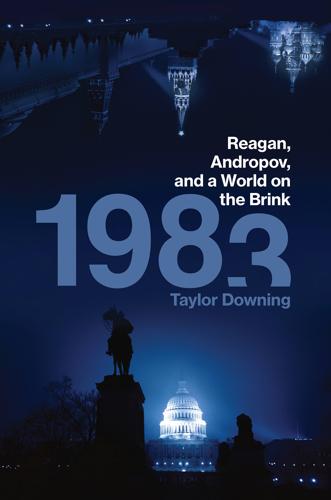
1983: Reagan, Andropov, and a World on the Brink
by
Taylor Downing
Published 23 Apr 2018
Finally, as it was American policy not to launch nuclear weapons in a first strike, a system had to be devised by which the United States had sufficient nuclear capability held back so that it could survive a pre-emptive attack and still be able to retaliate. All of this was contained within Kennedy’s new Single Integrated Operational Plan. The new SIOP had only just come in when the scariest confrontation of the Cold War to date came with the Cuban missile crisis in October 1962. When the US discovered that Khrushchev was siting missiles in Fidel Castro’s Cuba only a few miles from the Florida coast, it was clear that much of the US mainland would soon be within range of Soviet nuclear weapons. The military wanted to bomb the missile sites before they were finished but Kennedy insisted on restraint and launched a naval blockade of Cuba instead.
…
In addition new radar systems were created to give early warning of the launch of missiles by the other side. Over the years, every innovation within the United States was matched by an equivalent development in the Soviet Union. A vast arsenal of nuclear weapons was created with the capacity to destroy all forms of life on planet Earth. Something had to give. In the wake of the Cuban missile crisis, the United States and the Soviet Union had signed a Partial Test Ban Treaty to stop further atmospheric tests of nuclear weapons. This was a small first step on the long road of slowing up the arms race. In 1968 the Nuclear Non-Proliferation Treaty was signed by the US, the USSR and Britain, which had its own small nuclear capability, prohibiting the export of nuclear technology to other countries (France and China by this time also possessed nuclear weapons but did not sign).
…
And of course also to the maverick Khrushchev, who liked to lead foreign affairs from the front, often deciding on initiatives without consulting his colleagues. These were momentous years in the Cold War that saw a growing split between Moscow and Beijing, the building of the Wall to divide Berlin, the test explosion of a new generation of thermonuclear weapons, and the Cuban missile crisis. Throughout these years Andropov took a moderate position, arguing against a complete falling out with China and in favour of modest reforms in the client states. But he was no liberal, and Khrushchev’s fall in 1964 did not deflect his progress up the political ladder. He stayed loyal to the conventional orthodoxy of Marxism-Leninism, writing a series of articles for party publications with such catchy titles as ‘Leninism Lights Our Way’, ‘Friendship of the Soviet Peoples: The Inexhaustible Source of Our Victories’ and ‘Proletarian Internationalism: The Communists’ Battle Banner.’9 In May 1967 Andropov was appointed head of the KGB, and the following month he became a non-voting member of the Politburo.
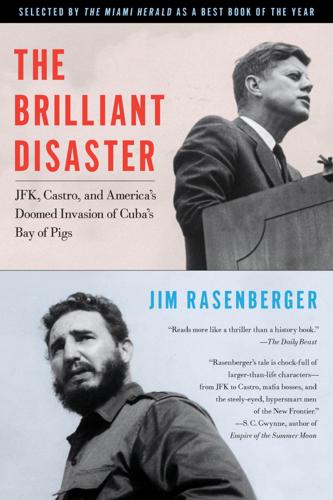
The Brilliant Disaster: JFK, Castro, and America's Doomed Invasion of Cuba's Bay of Pigs
by
Jim Rasenberger
Published 4 Apr 2011
He also draws compelling portraits of the other figures who played key roles in the drama: Fidel Castro, who shortly after achieving power visited New York City and was cheered by thousands (just months before the United States began plotting his demise); Dwight Eisenhower, who originally ordered the secret program, then later disavowed it; Allen Dulles, the CIA director who may have told Kennedy about the plan before he was elected president (or so Richard Nixon suspected); and Richard Bissell, the famously brilliant “deus ex machina” who ran the operation for the CIA—and took the blame when it failed. Beyond the short-term fallout, Rasenberger demonstrates, the Bay of Pigs gave rise to further and greater woes, including the Cuban Missile Crisis, the Vietnam War, and even, possibly, the assassination of John Kennedy. Written with elegant clarity and narrative verve, The Brilliant Disaster is the most complete account of this event to date, providing not only a fast-paced chronicle of the disaster but an analysis of how it occurred—a question as relevant today as then—and how it profoundly altered the course of modern American history.
…
—Washingtonian magazine “Rasenberger provides an outstanding chronological day-by-day, nearly minute-by-minute, account of the operation that was first planned during the Eisenhower administration and inherited by JFK.… In the end, Rasenberger makes the case for the large impact that the Bay of Pigs had on historic events that followed, including the Cuban Missile Crisis, the building of the Berlin Wall, the involvement in Vietnam, and the election of President Nixon and Watergate, among others.” —Idaho Statesman “A brilliant book … Students of history too young to remember the events of that April in 1961 will appreciate the thoroughness. For those who lived through that chilling time, it is a page-turner.
…
—Studies in Intelligence “A gripping narrative … Rasenberger provides interesting details about the aftermath, including the Christmas-time release of the captured fighters several years later, his attorney father’s role in that episode, and sums up how the Bay of Pigs continued to reverberate from the Cuban Missile Crisis to Watergate.” —Publishers Weekly “What I love about Jim Rasenberger’s richly detailed, startlingly revisionist account of the Bay of Pigs invasion is his sheer storytelling ability, the wonderful, steady march of plot and counterplot, of heroes and foils. His tale is chock-full of larger-than-life characters—from JFK to Castro, mafia bosses, and the steely-eyed, hypersmart men of the New Frontier.
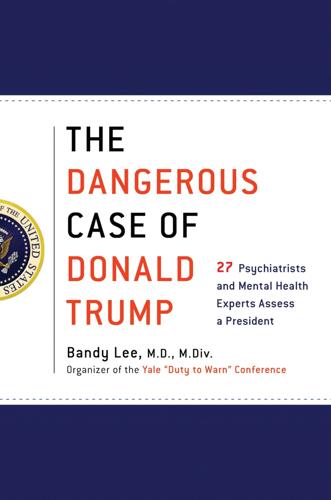
The Dangerous Case of Donald Trump: 27 Psychiatrists and Mental Health Experts Assess a President
by
Bandy X. Lee
Published 2 Oct 2017
As he was reaching to phone the president, a third call came in announcing that the report of the incoming missiles was a false alarm caused by a computer glitch. It is extremely disconcerting to note that false alarms and accidents are by no means a rare occurrence. The Cuban Missile Crisis: President Kennedy Unlike the nightmarish false alarm of 1979, lasting five minutes, which few were aware of, the Cuban Missile Crisis of October 1962 lasted thirteen white-knuckle days, played out before the entire world in a series of very real, terrifying actions and reactions between America and the USSR. At several junctures, the world was within an eyelash of all-out nuclear holocaust.
…
Mika explains how tyrannies are “toxic triangles,” as political scientists call them, necessitating that the tyrant, his supporters, and the society at large bind around narcissism; while the three factors animate for a while, the characteristic oppression, dehumanization, and violence inevitably bring on downfall. In “The Loneliness of Fateful Decisions,” Fisher recounts the Cuban Missile Crisis and notes how, even though President Kennedy surrounded himself with the “best and the brightest,” they disagreed greatly, leaving him alone to make the decisions—which illustrates how the future of our country and the world hang on a president’s mental clarity. In “He’s Got the World in His Hands and His Finger on the Trigger,” Gartrell and Mosbacher note how, while military personnel must undergo rigorous evaluations to assess their mental and medical fitness for duty, there is no such requirement for their commander in chief; they propose a nonpartisan panel of neuropsychiatrists for annual screening.
…
Returning to our historical examples of nuclear emergencies, is there anyone who could possibly believe DT would have shown Brzezinski’s grace under pressure had he himself received that 3:00 a.m. call? If, indeed, Trump harbors grandiose and paranoid delusions (for which there is mounting evidence), he would have launched missiles faster than he fires off paranoid tweets on a Saturday morning. Given the thirteen days of excruciating tension during the very real nuclear threat of the Cuban Missile Crisis, is there anyone who possibly believes that DT could have demonstrated JFK’s composure, wisdom, and judgment, especially in the face of unanimous pressure from his military advisers? If DT were indeed merely “crazy like a fox,” it would still be a huge stretch—but, increasingly, that appears not to be the case.
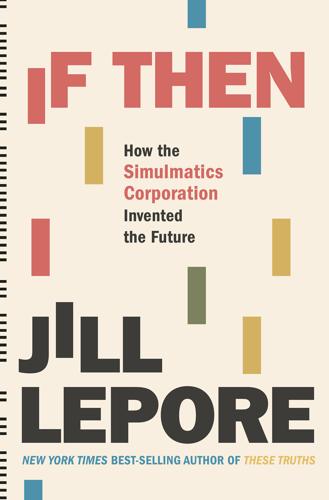
If Then: How Simulmatics Corporation Invented the Future
by
Jill Lepore
Published 14 Sep 2020
Martin, Adlai Stevenson and the World, 719–21. “U.S. Imposes Arms Blockade,” NYT, October 23, 1962. Aldous, Schlesinger, 292–93. See also “The World on the Brink: John F. Kennedy and the Cuban Missile Crisis—Day 10,” Kennedy Library, https://microsites.jfklibrary.org/cmc/oct25/. Martin, Adlai Stevenson and the World, 728–37. “The World on the Brink: John F. Kennedy and the Cuban Missile Crisis—Department of State Telegram,” Kennedy Library, https://microsites.jfklibrary.org/cmc/oct26/doc4.html. Aldous, Schlesinger, 290. Martin, Adlai Stevenson and the World, 728–37. Paine Knickerbocker, “Gene Burdick Attacks a ‘Lie’ on ‘Fail-Safe,’ ” San Francisco Chronicle, October 9, 1964.
…
Stevenson, echoing warnings issued by the Kennedy administration, said that the United States would consider the establishment of a missile site as an act of aggression. On October 14, Stevenson met with Kennedy in New York. That same day, a CIA-run U-2 flying a secret surveillance mission over Cuba took photographs that revealed the existence of a launching pad and at least one nuclear missile in San Cristóbal.33 The Cuban Missile Crisis had begun. Over the next thirteen days, the United States—and the world—would come closer to nuclear war than at any other point during the Cold War. On Tuesday, October 16, Kennedy called for the first of a series of secret meetings in the White House of a group that came to be called “ExComm”—the Executive Committee of the National Security Council.
…
By the time it had been read in the White House, Khrushchev, not having received any reply, had already sent a second, harder-line message. The delay might have been fatal. In Fail-Safe, Burdick and Wheeler had argued that a failure of communications, even just a small computer glitch, could lead to Armageddon. After the Cuban Missile Crisis ended, representatives of the United States and the USSR met in Geneva to sign a “Memorandum of Understanding . . . Regarding the Establishment of a Direct Communications Link”: they set up a hotline between the Kremlin and the Pentagon, a link by teletype. Eugene Burdick took credit for that idea, since this very hotline links Moscow and Washington in Fail-Safe.

I, Warbot: The Dawn of Artificially Intelligent Conflict
by
Kenneth Payne
Published 16 Jun 2021
Why would they favour the offence? Speed is certainly important, but there’s more at work than that. First a caveat—the distinction between offence and defence can be rather subjective, and sometimes depends on the intent with which the weapon is used, rather than its physical capabilities. In the famous Cuban Missile Crisis of 1962, for example, President Kennedy and Premier Khrushchev fell to debating whether the missiles that the USSR had secretly sent to their Cuban ally Fidel Castro were offensive weapons.17 Yes, said Kennedy, arguing that they posed a direct threat to the security of the United States, and were a dangerous escalation in the already febrile Cold War.
…
You could model them formally, via game theory, using probabilities and payoffs. But the big question with both metaphors was how to translate them into international politics. Was there a real-world version of chicken? Some genuine crises did have elements of Schelling’s logic to them, whether or not that was intentional. In the Cuban Missile Crisis, for example, there was plenty of randomness to contend with, like the accidental U2 surveillance flight that strayed into Soviet airspace in the middle of the drama. And sometimes leaders deliberately cultivated the erratic, even unhinged, behaviour of Schelling’s man on a clifftop. President Nixon became the arch exponent of what he termed the ‘madman theory’ of statecraft—crafting an image of an irascible leader who might take dangerous escalatory steps unless the enemy backed down.
…
‘Merkel Is “Outraged” by Russian Hack but Struggling to Respond’, The New York Times, 13 May 2020, https://www.nytimes.com/2020/05/13/world/europe/merkel-russia-cyberattack.html. 17. See especially, Beschloss, Michael R. Kennedy v. Khrushchev: The Crisis Years, 1960–63. London: Faber and Faber, 1991; and Fursenko, A. A., and Timothy J. Naftali. One Hell of a Gamble: Khrushchev, Castro, Kennedy, and the Cuban Missile Crisis, 1958–1964. London: Pimlico, 1999. 18. Elsewhere I argue for the offence, Payne, Kenneth. ‘Artificial intelligence: a revolution in strategic affairs?’ Survival 60, no. 5 (2018): 7–32. Agreement comes from Altmann, Jürgen and Frank Sauer, ‘Autonomous Weapon Systems and Strategic Stability’, Survival 59, no. 5 (2017): 117–142; one argument about defence dominance not yet in print but much discussed among theorists has to do with the vulnerability of AI platforms to electronic warfare.
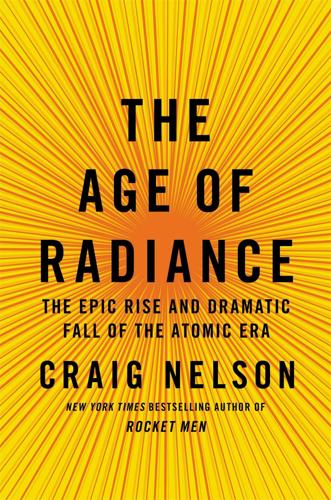
The Age of Radiance: The Epic Rise and Dramatic Fall of the Atomic Era
by
Craig Nelson
Published 25 Mar 2014
Chicago: University of Chicago Press, 2004. Crowell, William P. “Remembrances of Venona.” CIA Headquarters, July 11, 1995. http://www.nsa.gov/public_info/declass/venona/remembrances.shtml. “Cuban Missile Crisis.” AtomicArchive.com. http://www.atomicarchive.com/Docs/Cuba/index.shtml. “Cuban Missile Crisis.” Wilson Center Digital Archive. http://digitalarchive.wilsoncenter.org/collection/31/Cuban-Missile-Crisis. Cumings, Bruce. “Korea: Forgotten Nuclear Threats.” Le Monde Diplomatique, December 2004. Curie, Ève. Madame Curie. New York: Doubleday, 1937. Curie, Marie. Cher Pierre que je ne reverrai plus (Journal 1906–1907).
…
Robert Oppenheimer,” 261–65 iodine, 188, 215, 271, 308, 336, 350, 356, 365, 377 Iran, 6, 338, 373 Israel, 334, 337–38, 360, 370 Jaczko, Gregory, 355 Japan, 364 demand for surrender of, 211 earthquakes in, 342–45, 352–53 firebombing of, 209–11 nuclear power plants in, 340–41, 342 nuclear research in, 210 regulation of nuclear technology in, 341 thermonuclear testing affecting fishermen from, 273, 340 See also Fukushima Daiichi power plant disaster, Japan; Hiroshima, Japan, bombing; Nagasaki, Japan, bombing Joachimsthal, Czechoslovakia, mine, 36, 195, 231 Johnson, Lyndon, 211, 337 Joliot-Curie, Irène, 61, 82, 376 death of, 188 deuterium source for, 120 education of, 49–50 family background of, 25, 30, 31, 39, 41, 48 fame of, 98, 369 Fermi’s research and, 90 Hahn and Meitner on errors in research of, 90 man-made radiation research of, 61, 105 marriage of, 51–52 Meitner’s research and, 103 nuclear fission research of, 112, 117, 120, 142, 193 uranium sources and, 154 work with husband Fred, 52–53, 54, 61, 62, 90, 103, 112 Joliot-Curie, Jean-Frédéric (Fred), 376 deuterium source for, 120 French resistance work of, 188 health of, 188 marriage of, 51–52 nuclear fission research of, 142 uranium sources and, 154 work with wife Irène, 52–53, 54, 61, 62, 90, 103, 112 Jungk, Robert, 178, 180, 181 Kahn, Herman, 290–91, 292 Kan, Naoto, 346, 351, 352, 357 Karle, Isabella, 127 Kaufman, Irving, 241–42 Kazakhstan, atomic tests in, 233, 235, 336, 372 Kelvin, Lord William Thomson, 22–23, 39 Kennan, George¸ 256–57 Kennedy, John F., 265 arms race and, 276–77, 282, 289, 376 atomic satellite programs and, 305–06 Bay of Pigs invasion and, 286, 293–94 Cuban Missile Crisis and, 294–99 fallout shelters and, 286 joint moon mission proposal and, 284 Khrushchev and, 285–86 missile gap and, 282, 285–86, 293–94 nuclear air power programs and, 305 nuclear defense strategies and, 288–89 Nuclear Test Ban Treaty and, 374 presidential campaign against Nixon by, 282, 284–85 Kennedy, Robert, 297 KGB, 172, 238, 240, 292, 293, 327 Khan, Abdul Qadeer, 338 Khrushchev, Nikita, 370–71 arms race and¸ 245, 254, 267, 276–77, 284–85, 373 Bay of Pigs invasion and, 286, 293–94 Cold War and, 300 Cuban Missile Crisis and, 294–95, 296–97, 298, 299 joint moon mission proposal and, 284 rise to power by, 254 Szilard’s meeting with, 267 US perception of threats from, 256 Khrushchev, Sergei, 246, 256, 284, 290, 294–95, 297, 298 Killing a Nation defense strategy, 277, 292, 293, 372 Kim Il Sung, 243, 373 King, Ernest, 221–22 Kissinger, Henry A., 282, 335 Kistiakowsky, George (Kisty), 169, 171, 173, 196, 197–98, 199, 202, 228 Klaproth, Martin, 25 Knuth, August, 130 Kolbert, Elizabeth, 360–61 Korea.
…
Szilard was promised fifteen minutes but unsurprisingly to any of his friends, the talk went on for two hours, with Khrushchev finally agreeing to the possibility of an international agency that would limit arms escalation and a communications hotline between the Soviet premier and the American president in case of nuclear crisis. That hotline would also appear in Dr. Strangelove, but would not exist in the real world until the Cuban Missile Crisis and its series of delayed telegrams made it clear to both sides that this was worthwhile. In April 1958, the USSR unilaterally suspended nuclear testing, and after the AEC’s Strauss warned Eisenhower that a reciprocal American test ban would turn Los Alamos and Livermore into “ghost towns,” the president growled that he “thought scientists, like other people, have a strong interest in avoiding nuclear war.”

The Precipice: Existential Risk and the Future of Humanity
by
Toby Ord
Published 24 Mar 2020
A key difference between the two framings is that the pacing problem refers to the speed of technological change, rather than to its growing power to change the world. 58 Sagan (1994), pp. 316–17. 59 Barack Obama, Remarks at the Hiroshima Peace Memorial (2016). Consider also the words of John F. Kennedy on the twentieth anniversary of the nuclear chain reaction (just a month after the end of the Cuban Missile Crisis): “our progress in the use of science has been great, but our progress in ordering our relations small” (Kennedy, 1962). 60 In his quest for peace after the Cuban Missile Crisis, Kennedy (1963) put it so: “Our problems are manmade—therefore, they can be solved by man. And man can be as big as he wants. No problem of human destiny is beyond human beings.” Of course one could have some human-made problems that have gone past a point of no return, but that is not yet the case for any of those being considered in this book.
…
His name was Valentin Savitsky. He was captain of the submarine B-59—one of four submarines the Soviet Union had sent to support its military operations in Cuba. Each was armed with a secret weapon: a nuclear torpedo with explosive power comparable to the Hiroshima bomb. It was the height of the Cuban Missile Crisis. Two weeks earlier, US aerial reconnaissance had produced photographic evidence that the Soviet Union was installing nuclear missiles in Cuba, from which they could strike directly at the mainland United States. In response, the US blockaded the seas around Cuba, drew up plans for an invasion and brought its nuclear forces to the unprecedented alert level of DEFCON 2 (“Next step to nuclear war”).
…
But as more and more behind-the-scenes evidence from the Cold War has become public, it has become increasingly clear that we have only barely avoided full-scale nuclear war. We saw how the intervention of a single person, Captain Vasili Arkhipov, may have prevented an all-out nuclear war at the height of the Cuban Missile Crisis. But even more shocking is just how many times in those few days we came close to disaster, only to be pulled back by the decisions of a few individuals. The principal events of the crisis took place over a single week. On Monday, October 22, 1962, President John F. Kennedy gave a television address, informing his nation that the Soviets had begun installing strategic nuclear missiles in Cuba—directly threatening the United States.
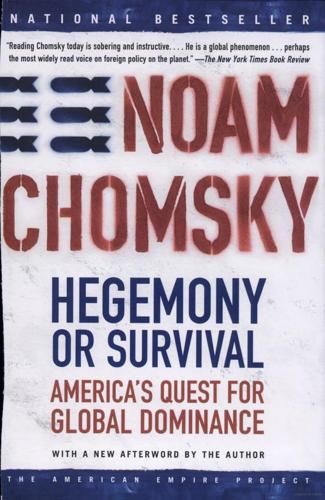
Hegemony or Survival: America's Quest for Global Dominance
by
Noam Chomsky
Published 1 Jan 2003
With different threats in mind, strategic analyst Michael Krepon regarded the final days of 2002 as “the most dangerous time since the 1962 Cuban missile crisis.” A high-level task force concluded that “we are entering a time of especially grave danger [as we] are preparing to attack a ruthless adversary [Iraq] who may well have access to [weapons of mass destruction].” Such dangers are likely to become even more grave in the longer term as a consequence of the easy resort to violence, as many have pointed out.1 The reasons behind these concerns merit close attention, but too narrow a focus can be misleading. We can gain a more realistic perspective on them by asking why the Cuban missile crisis was such a “dangerous time.”
…
Rather, they were spoken by the respected liberal elder statesman Dean Acheson in 1963. He was justifying US actions against Cuba in full knowledge that Washington’s international terrorist campaign aimed at “regime change” had been a significant factor in bringing the world close to nuclear war only a few months earlier, and that it was resumed immediately after the Cuban missile crisis was resolved. Nevertheless, he instructed the American Society of International Law that no “legal issue” arises when the US responds to a challenge to its “power, position, and prestige.” Acheson’s doctrine was subsequently invoked by the Reagan administration, at the other end of the political spectrum, when it rejected World Court jurisdiction over its attack on Nicaragua, dismissed the court order to terminate its crimes, and then vetoed two Security Council resolutions affirming the court judgment and calling on all states to observe international law.
…
The word noise connotes “discordant, unintelligent clamor,” Costigliola adds.11 Perhaps many Europeans might not be too happy about the significance accorded their survival, even if respected US commentators are confident that their reluctance to “come along” is a sign of “paranoid anti-Americanism,” “ignorance and avarice,” and other “cultural deficiencies.” International terrorism dominated the headlines as the retrospective conference took place; so did Washington’s allegedly novel doctrine of regime change. But there is little novel here: The Cuban missile crisis grew directly out of a campaign of international terrorism aimed at forceful regime change. Historian Thomas Paterson concludes, quite plausibly, that “the origins of the October 1962 crisis derived largely from the concerted U.S. campaign to quash the Cuban revolution” by violence and economic warfare.12 We can gain a better insight into current implications by looking at how the crisis evolved, and the guiding principles that motivated policy.
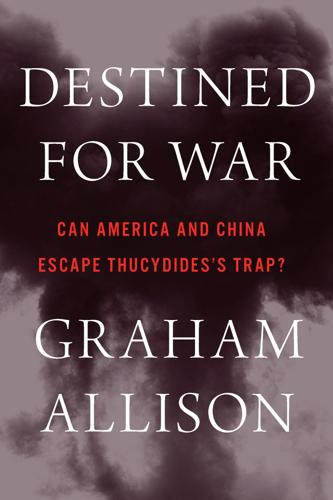
Destined for War: America, China, and Thucydides's Trap
by
Graham Allison
Published 29 May 2017
Reflecting on his own responsibilities, Kennedy pledged that if he ever found himself facing choices that could make the difference between catastrophic war and peace, he would be able to give history a better answer than Bethmann Hollweg’s. Kennedy had no inkling of what lay ahead. In October 1962, just two months after he read Tuchman’s book, he faced off against Soviet leader Nikita Khrushchev in the most dangerous confrontation in human history. The Cuban Missile Crisis began when the United States discovered the Soviets attempting to sneak nuclear-tipped missiles into Cuba, a mere ninety miles from Florida. The situation quickly escalated from diplomatic threats to an American blockade of the island, military mobilizations in both the US and USSR, and several high-stakes clashes, including the shooting down of an American U-2 spy plane over Cuba.
…
In analyzing how wars break out, historians focus primarily on proximate, or immediate, causes. In the case of World War I, these include the assassination of the Hapsburg archduke Franz Ferdinand and the decision by Tsar Nicholas II to mobilize Russian forces against the Central Powers. If the Cuban Missile Crisis had resulted in war, the proximate causes could have been the Soviet submarine captain’s decision to fire his torpedoes rather than allow his submarine to sink, or a Turkish pilot’s errant choice to fly his nuclear payload to Moscow. Proximate causes for war are undeniably important. But the founder of history believed that the most obvious causes for bloodshed mask even more significant ones.
…
Think again about the game of chicken discussed in chapter 8. Consider each clause of the paradox. On the one hand, if war occurs, both nations lose. There is no value for which rational leaders could reasonably choose the deaths of hundreds of millions of their own citizens. In that sense, in the Cuban Missile Crisis President Kennedy and Chairman Khrushchev were partners in a struggle to prevent mutual disaster. But this is the condition for both nations, and the leaders of both nations know it. Thus, on the other hand, if either nation is unwilling to risk waging (losing) a nuclear war, its opponent can win any objective by creating conditions that force the more responsible power to choose between yielding and risking escalation to war.

The Secret War Between Downloading and Uploading: Tales of the Computer as Culture Machine
by
Peter Lunenfeld
Published 31 Mar 2011
The bomb has been cited as the catalyst for everything from the rise of existentialism in the 1950s to the rebirth of religiosity in the West, from atomic age googie diners in Southern California to the kawai/cuteness of contemporary Japanese Superflat art. I was a baby when President John F. Kennedy appeared on all three major television networks to announce that the Soviets were stationing ballistic missiles just ninety miles off the Florida coast, and that what was later to be called the Cuban Missile Crisis was at hand. Kennedy used the medium of television to talk about the bomb, not only to the American people, but also to the leadership in Havana and Moscow, bypassing the customary diplomatic notification procedures entirely. The family lore is that my parents stayed up all that night in terror for themselves and for me.
…
All hyperlinks current as of October 1, 2010 197 INDEX Adobe Systems, 55 Adstar, 177 Advanced Research Projects Agency (ARPA), 152, 158 Advertisement, 184nn12,15 bespoke futures and, 107 culture machine and, 175–177 stickiness and, 23, 31 unimodernism and, 52, 57, 59 Affordances, 183n4 bespoke futures and, 121, 124, 129, 136 stickiness and, 16–17, 24, 28–35 unimodernism and, 68, 75 Web n.0 and, 80–82, 90 Afghanistan, 100 African National Congress, 113 AfterSherrieLevine.com, 41–42 Agee, James, 40–42 Age of Aquarius, 159 Agribusiness, 4, 10 Airplanes, xiii Alessi, 64 Algorithms, 46, 144, 174–177 Allen, Paul, 164 “All You Need Is Love” (Beatles), 62 Al-Muhajiroun, 134 Al-Qaeda, 134 Altair personal computer, 161, 164 Alto personal computer, 162 Amazing Stories (comic book), 108–110 Amazon, 68, 99, 145 Amis, Kinsley, 32 Animation, 55–56, 58, 110, 118 Antiglobalization activists, 98 AOL, 9, 53, 99 Apartheid, 112–113 Apple, 144, 163–167, 172, 186n12 Appropriate scale, 57 Aquarians, 24, 152, 159, 168–169 description of term, xv Engelbart and, 144, 157–167 Kay and, 144, 157, 160–167, 195nn16,17 Nelson and, 168 networked computers and, xv Sutherland and, 160–161 Arcades, 15, 71 Architectural Forum magazine, 84 Ariadne, 11 Arnold, Matthew, 14 Ars Electronica, 169–170 Art nouveau, 44, 66 “As We May Think” (Bush), 149, 157 AT&T, 144, 195n10 Atari, 165 Atlantic Monthly, 149 Atomic age, 146 as catalyst, xi Cuban Missile Crisis and, xi description of, xv emergence of, xi–xii 198 Atomic age (continued) Hiroshima and, 100–101 Manhattan Project and, 150 mutually assured destruction and, xi terrorism and, 100–101 Avant-gardism, 31, 44, 61, 117–120, 133 Babbage, Charles, 149 Bakri Muhammad, Omar, 134–135 Bali, 100 Ballmer, Steve, 164 Balzac, Honoré de, 44 Banham, Reyner, 10 Barr, Alfred, 117–118 Bauhaus, 117 BBC, 10 Beatles, 54–55, 62 Bebop, 25–27 Beirut, Michael, 102 Bellamy, Edward, 108 Benjamin, Walter, 88 Berg, Alban, 45 Berlin Wall, xvi, 85, 97, 99, 104 Bernays, Edward L., 123–124 Berners-Lee, Tim, 144, 167–169, 175 Bespoke futures adopting future as client and, 110–113 anticipated technology and, 108–110 crafting, 113–116 design and, 102, 105–106, 110–111, 115–116, 119–120, 124–125, 137 downloading and, 97, 123, 132, 138 dynamic equilibrium and, 117–120 89/11 and, xvi, 97, 100–102, 105, 130 Enlightenment and, xvi, 129–139 information and, 98, 100–101, 124–126 lack of vision and, 106–108 markets and, 97–104, 118, 120, 127, 131–132, 137–138 MaSAI (Massively Synchronous Applications of the Imagination) and, xvi, 112, 120–123, 127, 193n32 199 modernists and, 105–108 mutants and, 105–108 networks and, 98–101, 108, 112–113, 116, 119–126, 133, 137 New Economy and, 97, 99, 104, 131, 138, 144–145, 190n3 participation and, 98–99, 120–121, 129 plutopian meliorism and, xvi, 127–129, 133, 137–138 prosumers and, 120–121 reperceiving and, 112–113 R-PR (Really Public Relations) and, 123–127 scenario planning and, 111–119, 191n19, 192n20 simulation and, 98, 121, 124, 126–127 strange attractors and, xvi, 117–120, 192n27 technology and, 98–104, 107–113, 116, 119, 125–127, 131–133, 136–139 television and, 101, 108, 124, 127–129, 133–137 unfinish and, 127–129, 136 uploading and, 97, 120–123, 128–129, 132 Best use, 10, 13–15, 138 Bezos, Jeff, 145 Bible, 28, 137 BitTorrent, 92 Black Album, The (Jay Z), 55 Blade Runner (Scott), 107 Blogger, 177 Blogosphere, xvii bespoke futures and, 101 culture machine and, 175, 177 Facebook and, 81, 145, 180n2 stickiness and, 30, 34 Twitter and, 34, 180n2 unimodernism and, 49, 68 Web n.0 and, 80, 92–93 INDEX Bohème, La (Puccini), 61 Boing Boing magazine, 68–69 Bollywood, 62 Bourgeoisie, 31 Bowie, David, 62 Braque, Georges, 93 Breuer, Marcel, 45 Brillat-Savarin, Jean Anthèlme, 3 Brin, Sergey, 144, 174–176 Broadband technology, 9, 57 Brownian motion, 49 Burroughs, Allie Mae, 40–42 Burroughs, William, 52 Bush, Vannevar, 52, 194n6 culture machine and, 144, 147–152, 157 Engelbart and, 157 Memex and, 108, 149–151 Oppenheimer and, 150 systems theory and, 151 war effort and, 150–151 Business 2.0 magazine, 145 C3I , 146–147 Cabrini Green, 85 Calypso, 25–27 Cambodia, 107 Cambridge, 17, 36 “Can-Can” (“Orpheus in the Underworld”) (Offenbach), 62 Capitalism, 4, 13 bespoke futures and, 97–100, 103–105 Sears and, 103–105 stickiness and, 13 unimodernism and, 66, 75 Web n.0 and, 90 Capitulationism, 7, 24, 30, 182n1 Carnegie, Andrew, 166 Casablanca (film), 90 Cassette tapes, 2 CATIA 3–D software, 39 Cell phones, xiii, xvii, 17, 23, 42, 53, 56, 76, 101 Chaos theory, 117–120 Chaplin, Charlie, 45 Cheney, Dick, 99 China, 104, 107 Christians, 135 Cicero, 47 Cinema, 8, 10 micro, 56–60 stickiness and, 15 unimodernism and, 47, 52, 56–60, 63, 71 Clarke, Arthur C., 174 CNN, 58 Cobain, Kurt, 62 Code breaking, 17–18 Cold war, 101 Cole, Nat King, 62 Commercial culture, 4–5, 8 bespoke futures and, 98, 102, 108, 120, 132–134 culture machine and, 153–156, 167, 170, 172, 175–177 copyright and, 54, 88–95, 123, 164, 166, 173, 177 Mickey Mouse Protection Act and, 90 open source and, 36, 61, 69, 74–75, 91–92, 116, 121–126, 144, 170– 173, 177, 189n12 propaganda and, 124 scenario planning and, 111–119 stickiness and, 23, 28–31, 37 unimodernism and, 41, 69 Web n.0 and, 82–86 Commercial syndrome, 85–86 Communism, 97–98, 103 Compact discs (CDs), 2, 48, 53 Complex City (Simon), 39 “Computable Numbers, On” (Turing), 18 Computer Data Systems, 145 Computers, xi.
…
Congress and, 90 violations of, 92–93, 95 Web n.0 and, 88–95 Corian, 64 Creative Commons, 173, 189n12 bespoke futures and, 123 Mickey Mouse Protection Act and, 90 Computers (continued) Aquarians and, xv, 24, 144, 152, 157, 159–169 challenge to television of, 2 as culture machine, xiv, xvi, xv–xvi, 5 (see also Culture machine) distribution and, xiii dominance of, xii–xiii, xiv as dream machines, xiii emergence of, xii–xiii first, 146 hackers and, 22–23, 54, 67, 69, 162, 170–173 historical perspective on, 143–178 Hosts and, xv, 144, 167, 175 Hustlers and, xv, 144, 156, 162–167 intelligence test for, 19 as “Man of the Year,” xii Moore’s law and, 156, 195n13 mouse for, 158–159 participation and, xvi, 15–17, 27–35, 54, 66–67, 74–80, 98–99, 120– 121, 129, 143–147, 151, 156–165, 170, 175–178 Patriarchs and, xv, 143–144, 147–153, 156–157, 162–163, 166–168 personal, 152, 161–167 Plutocrats and, xv, 144, 152–159, 163–166, 170 production and, xiii relationship with data and, 32 Searchers and, xv–xvi, 144, 167, 174–178 simulation and, xvi, 2 (see also Simulation) Sterling on, 101–102 symbiosis and, 151–152 systems theory and, 151 ubiquity and, xiii, 22–23, 39, 57–59, 62, 74, 81–82, 87, 92–93, 125, 128, 144, 166, 177–178 Universal Turing Machine and, 18–19 201 INDEX Creative Commons (continued) open source and, 90–93, 123, 173 purpose of, 91 Web n.0 and, 90–93 Creatives, 30 Credit cards, 76 Crenshaw district, 105 Critical inquiry, 14 Cuban Missile Crisis, xi Cubism, 44, 79, 117 Cultural issues commercialism and, 4–5, 8 (see also Commercial culture) diabetic technologies and, 3–5 dominance of television and, xii, 2–5, 7–10 fan culture and, 28–32, 48, 49, 87 free culture and, 75, 92, 98–99 Freud and, 43–44 hierarchies and, 1, 24, 29, 93, 114 junk culture and, 5–10 mass/pop culture and, 13, 31, 39–40, 47–48, 53, 56–58, 61–63, 107, 109, 184n16 mechanization and, 44–45 open source and, 36, 61, 69, 74–75, 91–92, 116, 121–126, 144, 170– 173, 177, 189n12 psychology and, 16, 21–22, 42–44, 56, 151, 161 secular culture and, 133–139 Slow Food and, 5–7 stickiness and, 28–32 (see also Stickiness) Culture machine, 5 Aquarians and, xv, 24, 144, 152, 157, 159–169 bespoke futures and, 97–101, 116, 123–133, 137–138 design and, 139, 150, 160, 165, 167, 171–172, 176 development of, 143–178 downloading and, 143, 168 gaming and, 70–74 Hosts and, xv, 144, 167, 175 Hustlers and, xv, 144, 156, 162–167 information and, 46, 143–149, 152– 153, 163, 167–168, 172, 176–178 networks and, 143–144, 152, 167– 168, 172–175, 178 participation and, 15–17, 143–147, 151, 156–165, 170, 175–178 Patriarchs and, xv, 143–144, 147–153, 156–157, 162–163, 166–168 Plutocrats and, xv, 144, 152–159, 163–166, 170 postmodernism and, 39–40 Searchers and, xv–xvi, 144, 167, 174–178 simulation and, 15–17, 143–144, 147– 152, 156–160, 166–168, 175–178 stickiness and, 15–19, 27, 32, 35 technology and, 143–163, 173–174 unimodernism and, 39, 42, 46–60, 67–76 uploading and, 143, 168, 173, 175 Warriors and, 146–147 Web n.0 and, 79–85, 90–93 Cut-up fiction, 52 Cyberpunk, 68, 87, 110 Czechoslovakia, 104 Dada, 79, 186n8 Danger Mouse, 54–55 Dare, Dan, 108 Darth Vader, 90 Darwin, Charles, 133 Davis, Miles, 25–26 Dawkins, Richard, 143 Death and Life of Great American Cities, The (Jacobs), 84–85 Deconstruction, 29–31 DeLanda, Manuel, 189n8 De.lic.ious, 75 202 INDEX Design bespoke futures and, 102, 105–106, 110–111, 115–116, 119–120, 124–125, 137 control over form and, 111 culture machine and, 139, 150, 160, 165, 167, 171–172, 176 future as client and, 110–113 futurists on, 101–102 graphic, 31, 45, 64, 102, 181n7 Gropius and, 36–37 isotypes and, 44, 125, 193n34 mechanization and, 44–45 Moore’s law and, 156 open source, 36, 61, 69, 74–75, 91–92, 116, 121–126, 144, 170– 173, 177, 189n12 play and, 32–34 postmodernism and, 29–30, 39–41, 74, 79, 130, 135 power and, 32–34 tweaking and, 32–35 unimodernism and, 39, 43–46, 49, 55–56, 60, 64–8, 71–74 Design of Everyday Things, The (Norman), 16 Design Within Reach, 46 Desk jobs, 3 Dewey, John, 129 Dewey, Melvil, 80 Diabetes, 3–5, 8 “Diamond Dogs” (Bowie), 62 Dick, Philip K., 9 Difference engine, 149 Digg, 34 Digital Equipment Corporation (DEC), 71, 149, 153, 163, 170 Digital video discs (DVDs), 2, 7–8, 15, 58 Digital video recorders (DVRs), 2, 7, 15, 23, 181n3 Disco, 63 Disney Concert Hall, 39 DIY (do-it-yourself) movements, 67–70 203 Dot-com bubble, 79, 145, 174 Doubleclick, 177 Downloading, xiii–xiv, 180nn1,2 animal kingdom and, 1 bespoke futures and, 97, 123, 132, 138 best use and, 13–14 commercial networks and, 4–5 communication devices and, 15–16 cultural hierarchy of, 1–2 culture machine and, 143, 168 dangers of overabundance and, 7–10 defined, 1 diabetic responses to, 3–5 disrupting flow and, 23–24 figure/ground and, xvi, 42–43, 46, 102 Freedom software and, 22–23 habits of mind and, 9–10 humans and, 1–2 information overload and, 22, 149 info-triage and, xvi, 20–23, 121, 132, 143 as intake, 5 mindfulness and, xvi, 14, 17, 20–24, 27–29, 42, 77, 79, 123, 129, 183n6 patio potato and, 9–10, 13 peer-to-peer networks and, 15, 54, 92, 116, 126 stickiness and, 13–17, 20–23, 27–29, 184n15 surfing and, 20, 80, 180n2 television and, 2 unimodernism and, 41–42, 49, 54–57, 66–67, 76–77 viral distribution and, 30, 56, 169 wants vs. needs and, 13, 37, 57 Web n.0 and, 79, 82–83, 86–87 Duchamp, Marcel, 44, 48, 94 Dymaxion map, 73 Dynabook, 161–162, 196n17 Dynamic equilibrium, 117–120 EBay, 68 Eckert, J.

Army of None: Autonomous Weapons and the Future of War
by
Paul Scharre
Published 23 Apr 2018
In recent years, the U.S. military has jockeyed for position with Russian warplanes in Syria and the Black Sea, Iranian fast boats in the Straits of Hormuz, and Chinese ships and air defenses in the South China Sea. Periods of brinksmanship, where nations flex their militaries to assert dominance but without actually firing weapons, are common in international relations. Sometimes tensions escalate to full-blown crises in which war appears imminent, such as the 1962 Cuban Missile Crisis. In such situations, even the tiniest incident can trigger war. In 1914, a lone gunman assassinated Archduke Franz Ferdinand of Austria, sparking a chain of events that led to World War I. Miscalculation and ambiguity are common in these tense situations, and confusion and accidents can generate momentum toward war.
…
Command-and-control refers to the ability of leaders to effectively marshal their military forces for a common goal and is a frequent concern in crises. National leaders do not have perfect control over their forces, and warfighters can and sometimes do take actions inconsistent with their national leadership’s intent, whether out of ignorance, negligence, or deliberate attempts to defy authorities. The 1962 Cuban Missile Crisis was rife with such incidents. On October 26, ten days into the crisis, authorities at Vandenberg Air Force Base carried out a scheduled test launch of an Atlas ICBM without first checking with the White House. The next morning, on October 27, an American U-2 surveillance plane was shot down while flying over Cuba, despite orders by Soviet Premier Nikita Khrushchev not to fire on U.S. surveillance aircraft.
…
Even if we could ensure that the autonomous weapon would flawlessly carry out political leaders’ directions, with no malfunctions or manipulation by the enemy, “you still have the problem that that’s a snapshot of the preferences and desires at that moment in time,” he said. Danks explained that people generally do a good job of predicting their own future preferences for situations they have experience with, but for “a completely novel situation . . . there’s real risks that we’re going to have pretty significant projection biases.” Again, the Cuban Missile Crisis illustrates the problem. Robert McNamara, who was secretary of defense at the time, later explained that the president’s senior advisors believed that if the U-2 they sent to fly over Cuba were shot down, it would have signaled a deliberate move by the Soviets to escalate. They had decided ahead of time, therefore, that if the U-2 was shot down, the United States would attack: [B]efore we sent the U-2 out, we agreed that if it was shot down we wouldn’t meet, we’d simply attack.
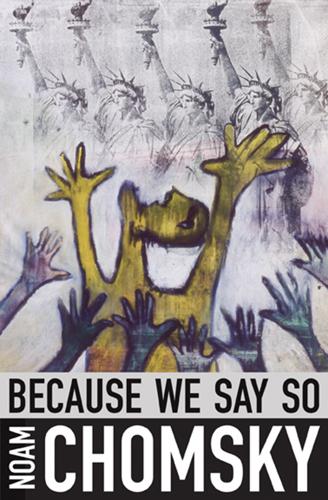
Because We Say So
by
Noam Chomsky
IN HIROSHIMA’S SHADOW August 1, 2012 August 6, the anniversary of Hiroshima, should be a day of somber reflection, not only on the terrible events of that day in 1945, but also on what they revealed: that humans, in their dedicated quest to extend their capacities for destruction, had finally found a way to approach the ultimate limit. This year’s August 6 memorials have special significance. They take place shortly before the 50th anniversary of “the most dangerous moment in human history,” in the words of the historian and John F. Kennedy adviser Arthur M. Schlesinger Jr., referring to the Cuban missile crisis. Graham Allison writes in the current issue of FOREIGN AFFAIRS that Kennedy “ordered actions that he knew would increase the risk not only of conventional war but also nuclear war,” with a likelihood of perhaps 50 percent, he believed, an estimate that Allison regards as realistic. Kennedy declared a high-level nuclear alert that authorized “NATO aircraft with Turkish pilots . . .
…
There have been innumerable cases when human intervention aborted nuclear attack only moments before launch after false reports by automated systems. There is much to think about on August 6. Allison joins many others in regarding Iran’s nuclear programs as the most severe current crisis, “an even more complex challenge for American policymakers than the Cuban missile crisis” because of the threat of Israeli bombing. The war against Iran is already well under way, including assassination of scientists and economic pressures that have reached the level of “undeclared war,” in the judgment of the Iran specialist Gary Sick. Great pride is taken in the sophisticated cyberwar directed against Iran.
…
But the achievements of those who have struggled for centuries for greater freedom and justice leave a legacy that can be taken up and carried forward—and must be, and soon, if hopes for decent survival are to be sustained. And nothing can tell us more eloquently what kind of creatures we are. RED LINES IN UKRAINE AND ELSEWHERE April 30, 2014 The current Ukraine crisis is serious and threatening, so much so that some commentators even compare it to the Cuban missile crisis of 1962. Columnist Thanassis Cambanis summarizes the core issue succinctly in the BOSTON GLOBE: “[President Vladimir V.] Putin’s annexation of the Crimea is a break in the order that America and its allies have come to rely on since the end of the Cold War— namely, one in which major powers only intervene militarily when they have an international consensus on their side, or failing that, when they’re not crossing a rival power’s red lines.”
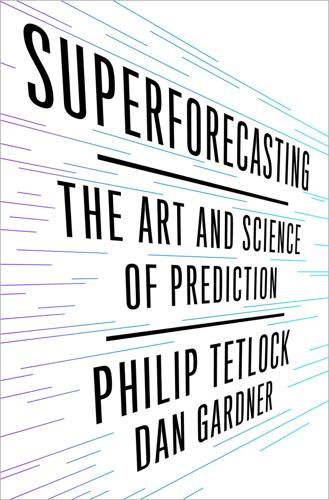
Superforecasting: The Art and Science of Prediction
by
Philip Tetlock
and
Dan Gardner
Published 14 Sep 2015
Finally an agreement was reached, war was averted, and the world exhaled. If the Bay of Pigs was the Kennedy administration’s nadir, the Cuban missile crisis was its zenith, a moment when Kennedy and his team creatively engineered a positive result under extreme pressure. Knowing this, we might assume Kennedy cleaned house after the Bay of Pigs and surrounded himself with far superior advisers in time for the missile crisis. But he didn’t. The cast of characters in both dramas is mostly the same: the team that bungled the Bay of Pigs was the team that performed brilliantly during the Cuban missile crisis. In his 1972 classic, Victims of Groupthink, the psychologist Irving Janis—one of my PhD advisers at Yale long ago—explored the decision making that went into both the Bay of Pigs invasion and the Cuban missile crisis.
…
Within eighteen months, an island off the coast of Florida was a base for five thousand Soviet soldiers and an array of Soviet intermediate-range nuclear missiles that could destroy Washington, DC, and New York City, and the two global superpowers were locked in a crisis that Kennedy estimated, in retrospect, had between a one-third and one-half chance of escalating into nuclear war. The story of the Cuban missile crisis that followed from the Bay of Pigs fiasco is equally familiar, but the similarities end there. Over thirteen terrifying days in October 1962, the Kennedy administration considered a range of dangerous options to counter the Soviet threat—including outright invasion—before settling on a naval blockade.
…
In his 1972 classic, Victims of Groupthink, the psychologist Irving Janis—one of my PhD advisers at Yale long ago—explored the decision making that went into both the Bay of Pigs invasion and the Cuban missile crisis. Today, everyone has heard of groupthink, although few have read the book that coined the term or know that Janis meant something more precise than the vague catchphrase groupthink has become today. In Janis’s hypothesis, “members of any small cohesive group tend to maintain esprit de corps by unconsciously developing a number of shared illusions and related norms that interfere with critical thinking and reality testing.”3 Groups that get along too well don’t question assumptions or confront uncomfortable facts.

Animal Spirits: The American Pursuit of Vitality From Camp Meeting to Wall Street
by
Jackson Lears
“It was a hero”: Mailer, “Superman Comes to the Supermarket,” Esquire, Nov. 1960. Kennedy’s aggressive nuclear policy: My interpretation of the Cuban Missile Crisis is based on Sheldon M. Stern, The Cuban Missile Crisis in American Memory (2012), which is ably summarized by Benjamin Schwarz, “The Real Cuban Missile Crisis,” The Atlantic (2013), www.theatlantic.com/magazine/archive/2013/01/the-real-cuban-missile-crisis/309190/. “would learn just”: Khrushchev to Strobe Talbott, cited in Schwarz, “Real Cuban Missile Crisis,” 3. “the peace and security”: Kennedy, television address to the nation, Oct. 22, 1962, cited in ibid. “The furnishings are functional”: Norman Mailer, The Armies of the Night (Signet Books ed., 1968), 25–26, 27.
…
Despite their commitment to abstract thought, they were “husky, wiry, physically attractive men who, by and large, are married to exceptionally pretty women.” The most prominent action intellectuals clustered at the RAND Corporation in Santa Monica, California. Among them was Albert Wohlstetter, who coined the phrase “the delicate balance of terror” in a RAND policy paper of 1958, and who consulted with John F. Kennedy during the Cuban Missile Crisis. The man who most fully elaborated the balance of terror was the RAND analyst Herman Kahn. His enormous girth made him anything but “wiry,” and he remained uncharacteristically confident (even among Cold War rationalists) about using rationality to manage the run-up to nuclear war—with the avowed purpose of ultimately preventing it.
…
There were many problems with using this formalist fantasy as a guide to policy, but the most potentially disastrous was its tendency to encourage escalating a nuclear confrontation by making it seem like cool and clearheaded strategy. A year after Verba wrote those words, Cold War rationality legitimated Kennedy’s public confrontation with Khrushchev over Soviet missiles in Cuba. What was striking about the American response to the Cuban Missile Crisis was the broad acceptance of Kennedy’s brinkmanship—even, or perhaps especially, among intellectuals. The absence of critical views was partly due to the chattering classes’ infatuation with JFK but also to changes in the tenor of political discourse since World War II. The triumph of technocratic rationality had transformed much political debate into disagreements over technique, easing the shift of formerly radical critics into a more appreciative stance toward American politics and society.
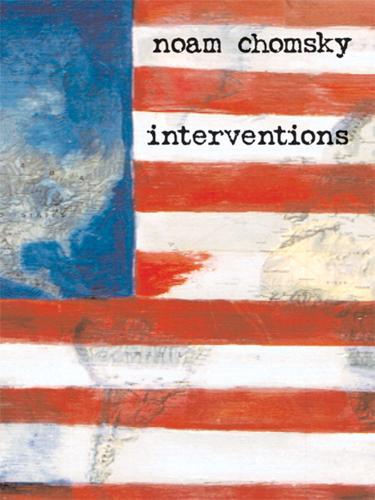
Interventions
by
Noam Chomsky
A large part of the opposition to Bush’s war is based on recognition that Iraq is only a special case of the “imperial ambition” declared forcefully in last September’s (2002) National Security Strategy. For perspective on our current situation, it may be useful to attend to very recent history. Last October (2002) the nature of threats to peace was dramatically underscored at the summit meeting in Havana on the fortieth anniversary of the Cuban Missile Crisis, attended by key participants from Cuba, Russia, and the United States. The fact that we survived the crisis was a miracle. We learned that the world was saved from possible nuclear devastation by one Russian submarine captain, Vasily Arkhipov, who countermanded an order to fire nuclear-tipped torpedos when Russian submarines were attacked by U.S. destroyers near Kennedy’s “quarantine” line.
…
And the campaign opened for the midterm congressional elections, which would determine whether the administration would be able to carry out its radical international and domestic agenda. The final days of 2002, foreign-policy specialist Michael Krepon wrote, were “the most dangerous since the 1962 Cuban missile crisis,” which Arthur Schlesinger described, reasonably, as “the most dangerous moment in human history.” Krepon’s concern was nuclear proliferation in “Iran, Iraq, North Korea and the Indian subcontinent,” an “unstable nuclear-proliferation belt stretching from Pyongyang to Baghdad.” Bush administration initiatives in 2002–2003 have only increased the threats in and near this unstable belt.
…
The troops are scheduled to be withdrawn, outside of artillery range, arousing concerns in North and South Korea about U.S. intentions. In October 2002, the United States charged that North Korea had secretly begun a program to enrich uranium, in violation of a 1994 agreement. The nuclear brinkmanship since then has reminded some observers of the Cuban Missile Crisis. This year (2003), Washington has taught an ugly lesson to the world: If you want to defend yourself from us, you had better mimic North Korea and pose a credible military threat.1 North Korea also failed a second criterion for a U.S. target: It is one of the poorest and most miserable countries in the world.
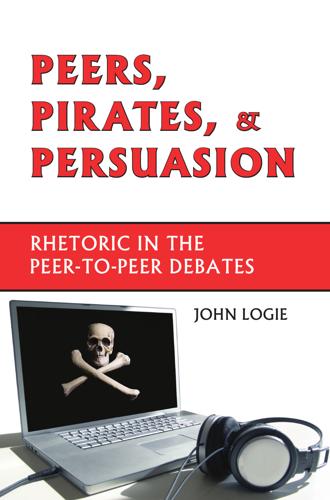
Peers, Pirates, and Persuasion: Rhetoric in the Peer-To-Peer Debates
by
John Logie
Published 29 Dec 2006
We will die, but we will sink them all. We will not disgrace our navy!” (Gonzalez) The Cuban Missile Crisis functions as a generally recognized “flashpoint” within the history of the Cold War. It is the point at which the confrontation between the then-extant superpowers was most pitched, most pointed, and potentially, most destructive. Within the context of the peer-to-peer debates, the showdown between the RIAA and Napster that culminated in the injunction that closed Napster parallels the Cuban Missile Crisis, featuring similarly intransigent parties mixing secret tactical exchanges with aggres- Pa r l orPr e s s 116 wwwww. p a r l or p r e s s . c om Peers, Pirates, and Persuasion sive public posturing.
…
This nuclear threat persisted until the inauguration of a mutually acknowledged period of détente in 1968. For years, no one was certain how close the two superpowers had come to what was then referred to as a “tactical nuclear exchange.” But a recent conference on the 40th Anniversary of the Cuban Missile Crisis pointed up how real the danger had been. The New York Times’s coverage of the conference contained a harrowing account of the peak of the crisis, in which a Soviet submarine commander, responding to depth charges dropped by an American destroyer, ordered the preparation of the submarine’s nuclear torpedo.
…
The period immediately following the Napster “crisis,” recalled the pitched period in the 1960s when the U.S. and the Soviet Union heated up the nuclear rhetoric while confining themselves to indirect confrontations via espionage and “little wars” against small nations positioned as emblematic of “the enemy.” Skirmishes between the record industry (and industry-supporting performers) and file-traders became increasingly common, and some of these battles had the jittery energy of the spy culture celebrated in the wake of the Cuban Missile Crisis. In 2003, Madonna, fresh from having recorded the theme for the latest installment in the James Bond series, completed an album enti- Pa r l orPr e s s Peer-to-Peer as Combat wwwww. p a r l or p r e s s . c om 119 tled American Life to surround the Bond theme (formally listed on the album as “‘Die Another Day’ from the MGM motion picture Die Another Day”).
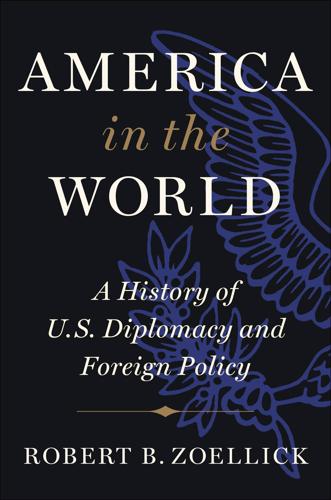
America in the World: A History of U.S. Diplomacy and Foreign Policy
by
Robert B. Zoellick
Published 3 Aug 2020
Stern, The Week the World Stood Still: Inside the Secret Cuban Missile Crisis (Stanford, CA: Stanford University Press, 2007); Don Munton and David A. Welch, The Cuban Missile Crisis: A Concise History (New York: Oxford University Press, 2007); James G. Hershberg, “The Cuban Missile Crisis,” in The Cambridge History of the Cold War, vol. 2, eds. Melvyn P. Leffler and Odd Arne Westad (New York: Cambridge University Press, 2010). The Berlin-Cuba connection is forcefully made by May and Zelikow in Kennedy Tapes, based on JFK’s tapes and recent studies of Soviet sources. Freedman also points to the strategic balance and Berlin in Kennedy’s Wars at 172–73.
…
Of course, he will not want war; he will concede.” In October, Gromyko delivered a matching, but less blunt, message directly to the president about the “rotten tooth” of West Berlin, “which must be pulled out.”52 The Cuban Missile Crisis In October, the threats to Berlin came to a head in an unusual spot—the Caribbean Sea. Although at one time historians studied the Cuban Missile Crisis as a separate event, many now suspect that Khrushchev viewed Berlin as a key, maybe even the major, objective of the plan to put intermediate-range nuclear missiles in Cuba.53 Soviet diplomacy demonstrated that the United States needs to keep in mind its traditional priority of continental security, including the nation’s southern flank, and to recognize the new connections between North America and the projection of power globally.
…
For “rotten tooth,” see “Memorandum of Conversation,” FRUS, 1961–1963, vol. 15, Berlin Crisis, 1962–1963, Doc. 135. 53. The literature on the Cuban Missile Crisis is enormous. See, most important, Michael Dobbs, One Minute to Midnight: Kennedy, Khrushchev, and Castro on the Brink of Nuclear War (New York: Knopf, 2008); Aleksandr Fursenko and Timothy Naftali, “One Hell of a Gamble”: Khrushchev, Castro, and Kennedy, 1958–1964 (New York: W. W. Norton & Company, 1997); Mark J. White, Missiles in Cuba (Chicago: Ivan R. Dee, 1997); Max Frankel, High Noon in the Cold War: Kennedy, Khrushchev, and the Cuban Missile Crisis (New York: Ballantine Books, 2005); Sheldon M. Stern, The Week the World Stood Still: Inside the Secret Cuban Missile Crisis (Stanford, CA: Stanford University Press, 2007); Don Munton and David A.
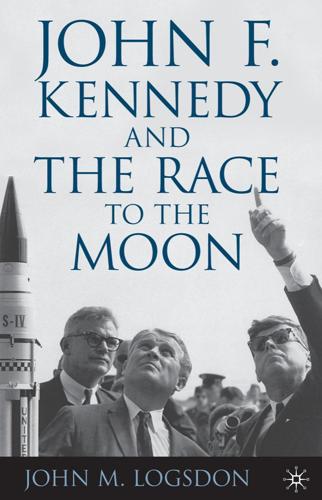
John F. Kennedy and the Race to the Moon (Palgrave Studies in the History of Science and Technology)
by
John M. Logsdon
Published 15 Dec 2010
There was a very real chance we were even with the Soviets in this effort. In addition, our relations with the Soviets, following the Cuban missile crisis and the test ban treaty, were much improved—so the President felt that, without harming any of those three goals, we now were in a position to ask the Soviets to join us and make it efficient and economical for both countries.7 T O T H E M O O N T O G E T H E R : P U R S U I T O F A N I L L U S I O N? 177 A New “Strategy of Peace” In the aftermath of the Cuban missile crisis, President Kennedy sought ways of lessening the U.S.-Russian tensions and mistrust that had led to that situation.
…
O’Donnell will not feel it wise to schedule the President’s time and that the President will confirm this judgment.”10 As Webb wrote his October 24 letter, President Kennedy was totally involved with dealing with the problem of Soviet missiles in Cuba, and most certainly was not going to take time to referee the NASA dispute with his science adviser. Webb and Wiesner talked by telephone on October 29, the Monday after the weekend during which the Cuban missile crisis was resolved. Wiesner said that his message to the president would not be to overrule any decision NASA might reach, but rather to be sure that a full and honest assessment had been made of all the options; Wiesner still questioned whether this was the case. Webb told Wiesner he “thought it better not to go to a formal hearing or involve the President personally in the decision,” but Wiesner thought that “involving the President couldn’t be avoided” because someone was sure to ask Kennedy whether the decision was made after the best possible analysis.
…
Like many communications to the president from government agencies, this letter had been referred to one of the staff agencies of the executive office, in this case BOB, for review and a decision of whether it needed direct presidential attention. Kennedy may well have wondered why he had not heard from Webb after asking him about this possibility on his September tour, and that could have added to his concern about the accuracy of the Time article. Of course, Kennedy had also been immersed with the Cuban missile crisis and the midterm congressional elections in the interim. Budget director Bell prepared a November 13 memorandum on the NASA budget situation that incorporated the schedule and budget estimates in Webb’s October letter; this memorandum was distributed to all participants in the meeting. In his memorandum, Bell identified two policy issues on which presidential guidance was needed: 1.
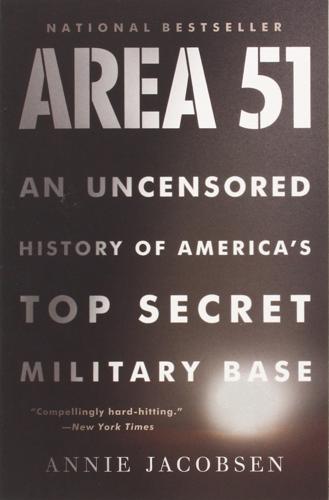
Area 51: An Uncensored History of America's Top Secret Military Base
by
Annie Jacobsen
Published 16 May 2011
Sherman Kent thanked Wheelon for his advice but explained that the board was going to present President Kennedy with the opposite conclusion—that there were no Soviet missiles in Cuba. The Cuban missile crisis is a story of conflict between the United States and the Soviet Union, and the drama that culminated in a ten-day standoff between two superpowers on the brink of thermonuclear war. But it is also the story of two powerful rivals within the American services, the CIA and the U.S. Air Force, and how they set aside historical differences to work together to save the world from near nuclear annihilation. Like so many international crises of the Cold War, the Cuban missile crisis had its link to Area 51—through the U-2. During the crisis, the CIA and the Air Force worked together to conduct the U-2 spy mission that caused the Soviet Union to back down.
…
They dropped the man through the nose of the wheel well; Captain Ledford followed, delaying opening his own parachute so he could be next to Sergeant Miller when he landed. Miller would be unconscious when he hit the earth, and without Ledford’s help he would likely have broken his back. The medic, not far behind, later recounted how amazing it was that Ledford’s daring and dangerous plan had actually worked. Now, two decades later, at the Cuban missile crisis round table, Ledford showed the same foresight in preempting a potentially deadly situation. The first thing General Ledford did was present the CIA and the Air Force with a shoot-down analysis, detailing the odds for losing a U-2 on another overflight. The chances were one in six, Ledford said.
…
On October 14, an Air Force pilot flying a CIA U-2 brought home film footage of Cuba that the White House needed to see. Photographs showing nuclear missiles supplied by the Soviet Union and set up on missile stands in Cuba. Those eight canisters of film brought back by the CIA’s U-2 set in motion the Cuban missile crisis, bringing the world closer than it had ever come to all-out nuclear war. They would also give the work going on at Area 51 a shot in the arm. The Pentagon told the CIA they wanted the Oxcart operations ready immediately so the aircraft could be used to overfly Cuba. A CIA review of Oxcart, declassified in 2007, said it flatly: “The Oxcart program suddenly assumed greater significance than ever, and its achievement of operational status became one of the highest national priorities.”
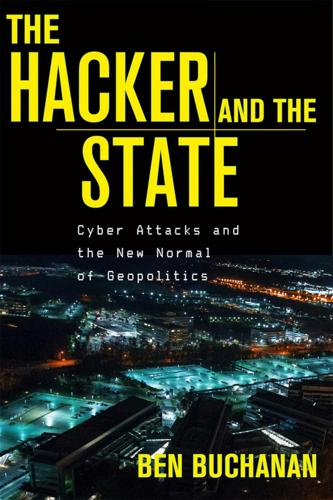
The Hacker and the State: Cyber Attacks and the New Normal of Geopolitics
by
Ben Buchanan
Published 25 Feb 2020
Some senior foreign policy decision-makers fancied themselves Kremlinologists who could interpret the signals of Soviet leaders and deduce how best to respond. Presidents and premiers signaled to each other, too: the most iconic moments of statecraft in the Cold War were Kennedy and Khrushchev’s battle of wills in the Cuban Missile Crisis and Reagan and Gorbachev’s tense negotiations at Reykjavik. Thousands of history books give weight to this kind of statecraft.8 Many scholars ignored how clandestine activities subtly shaped the global environment. These operations were hard to spot and harder still to study, but they mattered.
…
Soviet military planners wrote extensively about the practice of maskirovka, or “little masquerade”—multifaceted deception campaigns to mislead the enemy’s political and military leadership.10 While it is true that the adversary sometimes spotted these efforts, they were not designed to act as geopolitical signals and compel a change in behavior by threatening harm. They were operational and strategic tricks meant to gain an edge. Without maskirovka, the Cuban Missile Crisis with all its drama and signaling would not have unfolded as it did. Deception helped get the missiles to Cuba. The Soviets began with code-names that made it seem to anyone listening to their communications as if the missiles were bound for the Bering Sea. When the time came to load the ships that would instead travel to Cuba, the Soviets covered the missiles in farm equipment to fool observers, and in metal sheets to block infrared photography.
…
First, visibility enhances signaling, but cyber capabilities often benefit from or require secrecy. For decades, canonical international relations scholarship and policymaking has focused on those activities that all can see. Presidential summits and international diplomacy are fixtures in the minds of scholars and the public. Widely examined cases such as the Cuban Missile Crisis center on the capacity of leaders to walk up to—and then back from—the geopolitical brink in a way that shows resolve, benefits their own interests, and ultimately averts a war. For decades, this has been the art of modern statecraft. Conventional military activities are often far more oriented toward visible signaling than toward direct combat.
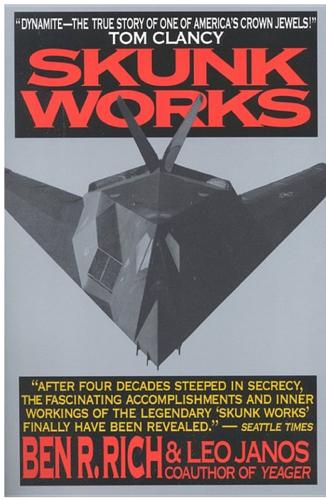
Skunk Works: A Personal Memoir of My Years of Lockheed
by
Ben R. Rich
and
Leo Janos
Published 1 Jan 1994
I flew over the Plain of Jars and watched the French get their butts kicked by Uncle Ho. Then, in ’62, the Russians took a few shots at me with SA-2s during the Cuban missile crisis. Didn’t come close thanks to my black box in the tail that jammed effectively. So I’m a believer. But that was inconsequential compared to another blue-suiter U-2 pilot, Major Chuck Maultsby, who was flying out of Alaska on a routine sampling mission right at the height of the 1962 Cuban missile crisis. His mission took him over the North Pole in the middle of the night, and when he turned to return to Alaska, he took the wrong south heading and wound up flying deep into Soviet territory.
…
All they told me was “How would you like to fly at very high altitude in a pressure suit?” I immediately thought, Rocket ships! Buck Rogers! Count me in. I was shipped down to Laughlin Air Force Base in Del Rio, Texas, on the Mexican border, way out of sight, which is how the Air Force wanted it, because it wasn’t until the 1962 Cuban missile crisis that the world learned the Air Force was flying U-2s. We had twenty airplanes there and Air Force instructors to check us out, but we had a lot of fatalities. The U-2 was strictly a one-seater. The first time you flew it, you soloed, ready or not. We did a lot of landing pattern and takeoff practicing, and got up to sixty thousand feet to get the feel of our pressure suits.
…
The gliders carried tiny transmitters that fooled the North Vietnamese missile batteries into thinking they were actually B-52 bombers or fighter-bombers. So for $500 a decoy we forced them to launch missiles costing thousands of dollars. Other Voices James R. Schlesinger (Director of the CIA 1973; Secretary of Defense from 1973 to 1975) As secretary of defense, I confronted my own version of a Cuban missile crisis scenario in the mid-1970s, when I suddenly found myself under enormous political pressure and the U-2 came to my rescue and bailed me out. This happened during the Ford administration, in the spring of 1975, a period during which the Soviets were aggressively establishing bases and influence in northeastern Africa, in places like Somalia, Angola, and Uganda.
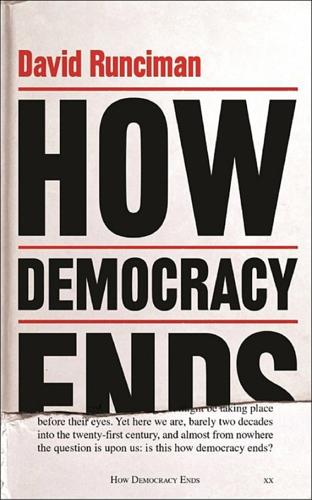
How Democracy Ends
by
David Runciman
Published 9 May 2018
In the UK the Campaign for Nuclear Disarmament (CND) had more than two million members at its peak, making it one of the largest civil society organisations in Europe. Mass participation coincided with the ratcheting up of nuclear tensions between the superpowers – it happened in the early 1960s, at the time of the Cuban Missile Crisis, and again in the early 1980s, when the Reagan administration was trying to win the arms race. It hasn’t happened since. Today, CND is a shell of what it was, with only a few thousand members and almost no public profile. The irony is that one of its most committed supporters, Jeremy Corbyn, was elected leader of the Labour Party in 2015 and could yet find himself as British prime minister.
…
It doesn’t matter so much what is at stake. It could be a question of nuclear apocalypse or it could be a question of the price of bread. In October 1962, between the publication of ‘Silent Spring’ and ‘Eichmann in Jerusalem’, the world came as close as it ever has to nuclear catastrophe. During the thirteen days of the Cuban Missile Crisis the two nuclear superpowers looked set to unleash the unimaginable. As the climax approached, with Russian and American ships apparently set on a collision course, the fate of human civilisation hung in the balance. At the last, Kennedy and Khrushchev found a path back from the edge of the abyss, through a mixture of skill and luck.
…
Index A accelerationism, 199–202 Achen, Christopher see Bartels, Larry and Achen, Christopher Ackerman, Bruce, 54–5 advertising, 160 and elections, 158 internet, 157, 159 Afghanistan, 75 Africa, 79 see also Algeria; Zimbabwe Algeria: coup, 41–3 Amazon, 131, 137 anarchism, 192–3, 214 appeasement, 144 Apple, 131, 137 Arendt, Hannah, 85, 86–7, 98 Eichmann in Jerusalem, 84 Argentina, 162 Aristotle, 161 armies see military artificial intelligence (AI), 122–3, 126, 129–30, 189–91 Athens, ancient, 35–8, 142, 161 conspiracy theories, 60 epistocracy, 179 Athens, modern, 27–8; see also Greece austerity, 208 Australia, 162 authoritarianism, 154–5, 171–3 ‘competitive’, 175 pragmatic, 174–5, 176, 177–8, 181, 205 B bankers, 69, 116, 181 banks, 131, 135; see also European Central Bank Bannon, Steve, 13 Bartels, Larry and Achen, Christopher: Democracy for Realists, 184 Bell, David A., 176 Benn, Tony, 58 Bentham, Jeremy, 127, 151, 152 Bermeo, Nancy, 44, 45 bio-engineering, 102–3 Bitcoin, 136 Bostrom, Nick, 105–6 Bourne, Sam (pseudonym): To Kill the President, 57, 58 Brazil, 217 Brennan, Jason: Against Democracy, 183–5, 186–7, 188–9 Bryan, William Jennings, 68–9 bureaucracies, 85, 86–7, 99, 127, 164; see also civil service Burton, Robert, 159–60 Bush, President George W., 12, 55 C Cambridge Analytica (firm), 156, 157, 159 capitalism, 196, 199 Carson, Rachel, 85, 87–8 Silent Spring, 82–3, 89, 90–91, 93 catastrophes, 6, 7, 85–6 environmental, 82–3, 85, 87–93; see also climate change nuclear, 83–4, 97 total, 100 Chicago: violence, 211 China and climate change, 174 Communist Party, 172–3 economy, 172, 208 foreign policy, 30–31 government model, 174 as a meritocracy, 175–6 nationalism, 172 pollution, 89 view of Trump, 173 Churchill, Winston, 8, 75–6, 168–9, 177 civil service, 41, 55–6; see also bureaucracies Clark, Christopher: The Sleepwalkers: How Europe Went to War in 1914, 115 Clemenceau, Georges, 71, 75–6 climate change, 90–93 China and, 174 consciousness raising, 89, 92–93 conspiracy theories, 91–92 incremental nature of, 97 and risk, 101 support for, 108 and uncertainty, 96 see also global warming Clinton, President Bill, 54–5 Clinton, Hillary, 13–15, 16, 198 Cold War, 28–9, 67, 94, 95–6, 106–7, 108–9 communism 194; see also China: Communist Party; Marxism-Leninism; Stalinism consciousness raising, 85, 89, 92–3, 106 conspiracy theories, 60–71 climate change, 91–2 and division, 99 and fake news, 75 France, 69 India, 65–6 nuclear weapons, 96 Poland, 65, 66 and totalitarianism, 98 Turkey, 65, 66 United Kingdom, 62–3 United States, 62, 64–5, 67 and war, 77 conspiracy theorists, 153 Constantine I, king of Greece, 27, 28 consumerism, 166 Corbyn, Jeremy, 58, 94–5, 148–9, 150, 209 corporations, 129–32, 139, 166 coups, 3, 217 Algeria, 41–3 and catastrophes, 85 and clarity, 59 and conspiracies, 7, 60 and counter-coups, 56–7 Cyprus, 33, 38–9 economic conditions for, 31 in fiction, 57–8 Greece, 26–30, 27, 32, 33, 34–5, 38, 40, 45 Luttwak on, 41–2, 46 Turkey, 50–52, 53, 66 varieties of, 44–5 election-day vote fraud, 44 executive, 44 executive aggrandisement, 44, 52, 55 promissory, 44, 47, 50–51 strategic election manipulation, 44 Zimbabwe, 48 crises, 5–6 Cuban missile Crisis (1962), 107–8 mid-life, 5, 8, 169, 218 Cummings, Dominic, 179 currencies, 135 digital, 136 Cyprus: coups, 33, 38–9 D databases, 123 de Gaulle, General Charles, 41, 42 de Tocqueville, Alexis, 142, 187 death, 23–4, 204, 216–17 democracy appeal of, 6, 169–71 audience, 47, 117 direct, 35, 48, 143, 161, 162, 163 failure of, 50 obsolescence, 167–8 plebiscitary, 47 spectator, 47 spread of, 3 strong and weak, 59–60 threats to 6–7, 53–4, 108, 112; see also coups digital revolution, 152, 164, 200–201, 215, 219 dignity collective, 172, 173, 177 and elections, 170, 177 and loss, 175 disruption, 198–9 Dorsey, Jack, 137 Dreyfus, Alfred, 69 dystopias, 90–91, 113, 114, 118–19, 126, 220 E East India Company, 130–31 economic growth, 172, 192 accelerationists and, 200 and populism, 192 United States, 175 Western Europe, 175 Economist (journal), 133 Edgerton, David, 122 education, 109–10, 163–4, 183–4, 185 Eggers, David: The Circle, 139, 140, 141–2, 144 Egypt, 48–50 Eichmann, Adolf, 84, 85–6 elections 4, 218 and advertising, 158–9 computers and, 125 and coups, 44, 45 decision-making process, 188–9 and dignity, 170, 177 and disinformation, 156–7 Egypt, 48–9 France, 148 fraud, 44 Greece, 28, 29, 39, 40, 148 Italy, 148 manipulation of, 44 Netherlands, 148 online, 162 Turkey, 51 United Kingdom, 95 United States see under United States see also vote, right to elites, 75 and climate change, 91–2 corporate, 139 and nuclear disarmament, 95 and populism, 65 power of, 61 see also wealth environmentalists, 200 epistocracy, 178–9, 180, 181–8, 191, 205 equality, 202–3; see also inequality Erdogan, President Recep, 51–3, 66, 149, 213 Estlund, David: Democratic Authority, 185 Ethiopia, 154–5 European Central Bank (ECB), 33, 39, 116–17 European Union (EU) and corporations, 132 and Greece, 30, 32, 116–17 executive aggrandisement, 45–6 military, 55, 56 United States presidents, 92 experts see epistocracy; technocracy ExxonMobil, 92 F Facebook, 131, 132–3, 134–5, 136, 138–9, 140, 141, 145, 150, 157 fascism, 169 financial crash (2008), 79, 110, 116 Forster, E.
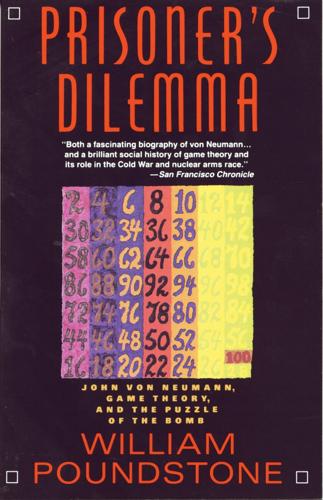
Prisoner's Dilemma: John Von Neumann, Game Theory, and the Puzzle of the Bomb
by
William Poundstone
Published 2 Jan 1993
Coda 8 GAME THEORY AND ITS DISCONTENTS Criticism of Game Theory Utility and Machiavelli Are People Rational? The Ohio State Studies 9 VON NEUMANN’S LAST YEARS The H-Bomb A Very Fine Tiger The Commissioner The Moment of Hope Illness Death 10 CHICKEN AND THE CUBAN MISSILE CRISIS Chicken Volunteer’s Dilemma Volunteer’s Dilemma Experiments The Cuban Missile Crisis The Madman Theory 11 MORE ON SOCIAL DILEMMAS Deadlock Stag Hunt Asymmetric Games Justifying Cooperation Howard’s Meta-Game Backward Induction Paradox 12 SURVIVAL OF THE FITTEST Stable Strategies Is Defection in the Genes? Robert Axelrod TIT FOR TAT The Trouble With TIT FOR TAT Artificial Selection The Fish in the Mirror Cooperation and Civilization TIT FOR TAT in the Real World 13 THE DOLLAR AUCTION Escalation Shubik’s Dollar Auction Dollar Auctions in Real Life Strategies Rational Bidding Where Game Theory Fails The Largest-Number Game Feather in a Vacuum Bibliography About the Author Copyright 1 DILEMMAS A man was crossing a river with his wife and mother.
…
The screenplay by Kubrick, Peter George, and Terry Southern was loosely based on George’s novel Red Alert. Peter Sellers, who played Strangelove, said in interviews that he based his portrayal on observations of Henry Kissinger. The wavy hair and glasses resemble Kissinger, not the balding von Neumann. 10 CHICKEN AND THE CUBAN MISSILE CRISIS In late 1950 the Cambridge University Labour Club passed a resolution censoring its own president, Bertrand Russell. The resolution criticized Russell sharply for his advocacy of a nuclear war against the Soviet Union. Russell responded curtly, “I have never advocated a preventive war, as your members would know if they took the trouble to ascertain facts.”
…
One defector quoted Blanche DuBois: “I’ve always depended on the kindness of strangers.” A total of $1,610,860 was requested. Had everyone who entered asked for $20, the payout would have been $670,220. The maximum that 33,511 people could have won, assuming that just under 20 percent asked for $100, is $1,206,380. THE CUBAN MISSILE CRISIS The Kennedy administration was receptive to the RAND Corporation’s circle of strategists. Herman Kahn and Daniel Ellsberg (who later came to public attention for his role in releasing the Pentagon Papers) championed the notion that U.S.-Soviet conflicts were chicken dilemmas. Why? By the early 1960s, leaders of both nations agreed that a nuclear war was the worst possible outcome of any situation.
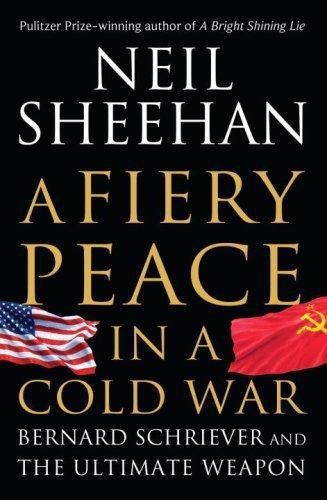
A Fiery Peace in a Cold War: Bernard Schriever and the Ultimate Weapon
by
Neil Sheehan
Published 21 Sep 2009
Chapters 72–77: Neufeld, Ballistic Missiles in the United States Air Force, 1945–1960; Heppenheimer’s Countdown; Zubok and Pleshakov, Inside the Kremlin’s Cold War; Taubman’s Khrushchev; Robert Kennedy’s 1968 Thirteen Days: A Memoir of the Cuban Missile Crisis; Fred Kaplan’s 1983 The Wizards of Armageddon; Anatoly Dobrynin’s 1995 In Confidence; Aleksandr Fursenko and Timothy Naftali’s 1997 One Hell of a Gamble: Khrushchev, Castro, and Kennedy, 1958–1964; The Kennedy Tapes: Inside the White House During the Cuban Missile Crisis, Ernest May and Philip Zelikow’s 1997 editing of the tapes of the White House meetings during the crisis; Max Frankel’s 2004 High Noon in the Cold War: Kennedy, Khrushchev and the Cuban Missile Crisis; Fursenko and Naftali’s 2006 Khrushchev’s Cold War; Michael Dobbs’s 2008 One Minute to Midnight: Kennedy, Khrushchev, and Castro on the Brink of Nuclear War; the official SAC history, The Development of Strategic Air Command; Wynn’s RAF Nuclear Deterrent Forces.
…
All that remained of Nedelin, he writes, was “a marshal’s shoulder strap and half-melted keys to his office safe.” The calamity did not stop test launches of the R-16 and the ICBM was deployed in 1962. The Soviets were, however, still having trouble with the weapon in October 1962 when the Cuban Missile Crisis occurred and Khrushchev had a total of twenty operational ICBMs to the 160 Kennedy possessed. Preparations to fire the R-16 continued to require several hours rather than the thirty minutes Yangel had posited and that was eventually achieved. “Before we get it ready to launch,” Kirill Moskalenko, a ranking Red Army marshal and friend of Khrushchev from Second World War days, warned in the midst of the crisis, “there won’t even be a wet spot left of any of us.” 66.
…
Kennedy, who had been out of town, got the news on the morning of the 16th, when he was shown the photographs at the White House and they were interpreted for him. “He can’t do that to me!” he exclaimed in his rage at Khrushchev. According to Max Frankel in his first-rate account of the drama, High Noon in the Cold War: Kennedy, Khrushchev, and the Cuban Missile Crisis, Robert Kennedy’s reaction was more earthy. “Oh shit! shit! shit! Those sons of bitches Russians.” The president quickly got his anger against Khrushchev under control. He was also able to put himself in Khrushchev’s place and see the situation from the Soviet leader’s perspective. In the opening sessions of the ad hoc Executive Committee of the National Security Council, or ExCom as it came to be known, which he convened in secret session, he said it was clear that the sixteen Jupiters in Turkey would have to be one of the bargaining chips in any deal they made with the Soviet dictator to lever his missiles out of Cuba.
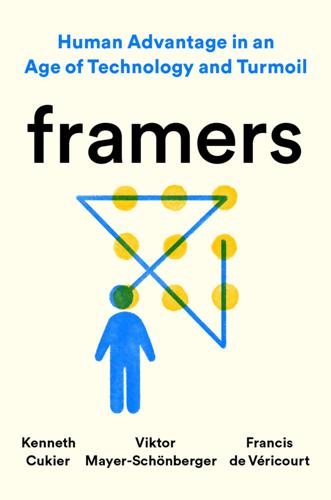
Framers: Human Advantage in an Age of Technology and Turmoil
by
Kenneth Cukier
,
Viktor Mayer-Schönberger
and
Francis de Véricourt
Published 10 May 2021
David Mandel, Denis J. Hilton, and Patrizia Catellani (London: Routledge, 2005); Ruth Byrne, The Rational Imagination: How People Create Alternatives to Reality (Cambridge, MA: MIT Press, 2005). Kennedy and the Cuban missile crisis: Graham T. Allison, Essence of Decision: Explaining the Cuban Missile Crisis (Boston: Little, Brown, 1971). Also: Ernest May, “John F. Kennedy and the Cuban Missile Crisis,” BBC, November 18, 2013, http://www.bbc.co.uk/history/worldwars/coldwar/kennedy_cuban_missile_01.shtml. The term groupthink comes from George Orwell’s novel Nineteen Eighty-Four. Some social scientists have challenged the idea that “groupthink” was a main factor in the Bay of Pigs disaster.
…
They are the antidote to jumping to a particular causal conclusion too quickly (and save our cherub from an unnecessary scolding). They remind us that things may be different than first thought. They make us more open-minded to see a world beyond our first causal hypothesis. During the Cuban missile crisis, President John F. Kennedy put counterfactuals to work in this way. On the morning of October 16, 1962, the president and his advisers were presented with aerial photographs that showed the Soviet Union was placing nuclear missiles in Cuba, just ninety miles off Florida. The military immediately urged a massive strike to knock out the installations.
…
Abaaoud, Abdelhamid, 213–214 abstraction and generalization causality and, 53–54 as defining characteristics of human cognition, 211 mental models made from ability of, 54–55, 59 as necessary for ambition and transcendence, 55 pattern recognition and, 56 relationship between, 64 accountability, 64, 65–66 Adair, John, 46 Adichie, Chimamanda Ngozi, 84 agency causality and, 65 counterfactuals and, 91 explainability as foundation of, 64 framing as empowering, 27 framing as ideal for efficiently preparing for, 208–209 mental models and, 9 mutability and, 107 number of constraints and, 118, 141 privileging human inaction and, 110 responsibility and, 65–66 social structures and, 66 agility of mind, 215–218 airplanes, development of, 36–38 All Quiet on the Western Front (Remarque), 83–84 AlphaZero system, 17–18 alternative realities constraints and shaping, 100–103 contradictions in, 110–111 counterfactuals and, 12–13, 79, 82–86, 94 envisioning, and shaping future, 94–95 existence of more than one, 159 framing and envisioning, 9, 79, 90, 94 minimal-change principle and, 108 monocultures and, 186 Amazon business model, 133–134 ambition and abstraction and generalization, 55 Americanah (Adichie), 84 Ansari, Anousheh, 194 antibiotics, ineffectiveness of, 1–2 Apple framing by teams at, 164–165 inspiration for computer system, 159 leadership of, ability to frame differently, 149, 150–151 Nokia versus, 6–7 Ardern, Jacinda, 32 Arendt, Hannah, 173–174, 180–181, 197, 198 Aristotle, 84–85 Armstrong, Neil, 34 artificial intelligence (AI) cannot conjure constraints, 118 e-sports, 69–70 failure to see causality, 45 generated music, 118–119 human element in, 93, 211 hyper-rationalists’ reliance on, to solve problems, 15–16 inability of, to frame, 44, 45–46 lack of imagination, 119 as reinforcing significance of framing, 211 self-driving cars, 92–93 arts AI-generated music, 118–119 business model for music industry, 120 constraints and, 100–103, 111–113 as constructed counterfactual realities, 82–85 imagination and, 82–85 mental models and, 11 Austrian wine industry, 108–109 Bach, Johann Sebastian, 118–119 Barzilay, Regina, 2–3, 4–5, 19, 211 Bay of Pigs invasion, 89, 234 Bernanke, Ben “Helicopter Ben,” 49–51, 101 Bezos, Jeff, 134 Black-Scholes theory, 39–40 Blue Ocean Strategy, 35 Branscomb, Lewis, 161 Brin, Sergey, 194 Bronner, Gérald, 213, 214 Brunelleschi, Filippo, 11 Burt, Ronald, 157 Bush, George W., 49 business and management Amazon, 133–134 benefits of mental diversity within, 161–166, 241–242 case study method of education, 86, 87–88, 155 difficulties changing corporate culture, 170–171 mental models and, 35 monocultures and death of, 182–183 music industry model, 120 reform of traditional pedagogical method in schools, 149–150 Silicon Valley versus East Coast technology titans, 183, 185–186 “thinking outside the box,” 46 Byrne, Ruth, 90, 110 Camden, New Jersey, police force, 134–136 Cappelli, Louis, Jr., 135 carbon dioxide and climate, 74–76, 168 “carbon sinks,” 76 Carcraft, 93 Carter, Jimmy, 116 Cassandras, 167–168 Cassirer, Ernst, 25 Catmull, Ed, 167–168 “causal determinism,” 88–89 causality ability to abstract from direct observation and, 53–54 agency and, 65 AI’s failure to see, 45 children and, 80–82 coincidence and, 66–67 correlation and, 68 counterfactuals and, 77, 79, 90 enables comprehension and explainability of reality, 52, 60 as foundation of human cognition, 12 in framing, 88–90 input of humans needed for technology to outperform humans, 70 needed for application of mental models, 62 predictability with, 52 reactions resulting from, 53 as result of being part of society, 58 scientific methodology prevents wrong inferences made from, 12 skepticism about, 68 statisticians and, 68 ultra-emotionalists and, 68–69 causal reasoning, 55 Cerf, Bennett, 101–102 Charging Bull statue, 198–199 Charpentier, Emmanuelle, 137 Chollet, François, 211 Churchill, Winston, 41 “Circumstances Affecting the Heat of the Sun’s Rays” (Foote), 73–74 clean-slate strategy, 158–160, 241 climate and carbon dioxide, 74–76, 168 Coconet, 118–119 cognitive complexity, 161 “cognitive effort,” 110 “cognitive foraging,” 156–158, 160 cognitive niche, 57, 58, 59, 230 “Cognitive Wheels” (Dennett), 44–45 coincidence and causality, 66–67 Collins, Jim, 2–3 Collison, Patrick, 185 Computers as Theatre (Laurel), 85 consistency principle, 110–114 constraints agency and number of, 118, 141 application method, 120–121 application of too many, 45 as boundaries on alternative realities, 100–103 changing, 201–202 consistency of, 104, 110–114 current reality as impacted by, 117–118 enable identification of viable options, 117 goal of, 114 hard, described, 104 imagination and, 47, 220 importance to counterfactuals of, 13, 115 increase agency, 118 as liberating, 100–103 minimal, 104 minimal-change principle and, 108–110 mutability of, 104–107, 110 space exploration and, 105 technology cannot conjure, 118 control, 64, 65–66 Cook, Tim, 151 Cooper, Sarah, 201–202 correlation and causality, 68 counterfactuals agency and, 91 alternative realities and, 12–13, 79, 82–86, 94 causality and, 77, 79, 90 causal link between carbon dioxide and climate and, 74–75 children and, 80–82 cognitive homogeneity as death of, 207 as counterbalance to “causal determinism,” 88–89 as crucial to progress by enabling what-if questions, 12–13 described, 12 in education, 86–88 finding relevant, 45 focused and goal-oriented nature of, 76 as form of evolution, 93–94 functionality of, 94 imagination and, 76, 79, 90 implicit knowledge and, 90–91 literature and art, 82–85 minimal-change principle and, 109–110 mutable constraints and, 106 omitting versus adding mutable action and, 110 thinking in, as natural for humans, 77 Coupland, Douglas, 112 Covid-19, framing of, 31–33 Craik, Kenneth, 226 creativity. See imagination Crick, Francis, 132 CRISPR, 137 Cuban missile crisis, 89–90 “cultural niche,” 58 Cuusoo, 165–166 “Cyclopedia of Puzzles,” 46 Dabiq, 213 Darwin, Charles, 7, 131 data, effect of frame applied to, 6 Days of Destruction, Days of Revolt (Hedges and Sacco), 135 decision-making framing as fundamental to, 5, 8 influence of different characterizations of outcomes, 10 mental models reduce cognitive load by focusing mind, 11–12 values in, 39–40 “deep reinforcement learning,” 70 Defense of the Ancients 2 (Dota 2), 69–70 Dennett, Daniel, 44–45 Descartes, René, 16 DeVore, Irven, 230 Diamond, Jared, 183–184 Dick, Philip K., 111 “diversity dividend,” 161–166 Donham, Wallace, 87, 156, 240 Doudna, Jennifer, 137 Earhart, Amelia, 160 Easy Solar, 203–204 Ebola, misframing of, 30–31, 32 economy.
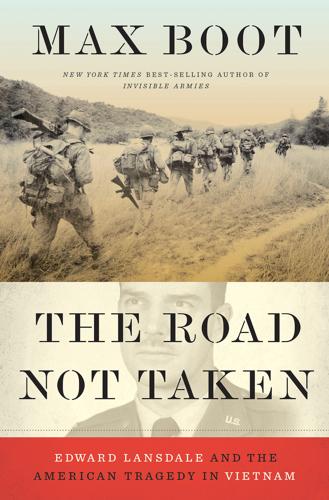
The Road Not Taken: Edward Lansdale and the American Tragedy in Vietnam
by
Max Boot
Published 9 Jan 2018
RG 84: State Department. RG 226: OSS. RG 263: CIA. RG 330: Secretary of Defense. RG 541: Kennedy Assassination Records Review Board. NSA: National Security Archives, George Washington University, Washington, D.C. CMC: Cuban Missile Crisis, 1962. EGL: EGL Papers. EGL/SMM: Saigon Military Mission report. RGD: Raymond Garthoff Donation Relating to the Cuban Missile Crisis. NWC: Naval War College, Newport, Rhode Island. EGL: EGL Interview. RASP: Raymond A. Spruance Papers. NYP: New York Public Library, New York, New York. ASP: Arthur Schlesinger Jr. Papers. PCLPP: Peter and Carolyn Lansdale Personal Papers, Ponte Verde Beach, Florida.
…
Although Kennedy proceeded with the previously scheduled Mongoose meeting that afternoon, it was obvious that Lansdale’s project would have to wait while the president and his advisers tried to figure out how to avert Armageddon.92 JOHN F. KENNEDY has been applauded by historians for his coolness under pressure during what became known as the Cuban Missile Crisis. The president wisely rejected advice from the Joint Chiefs of Staff and his more hard-line civilian advisers in the NSC’s ExComm (Executive Committee), including Robert McNamara and Robert Kennedy, to undertake military action against Cuba. The president rightly called this option “one hell of a gamble.”93 Unbeknownst to the CIA, the Soviets had already shipped tactical nuclear weapons to Cuba, along with 42,000 Red Army troops, and given their commanders authority to launch the weapons in the event of an American assault.94 An American attack on Cuba could have precipitated World War III, which is why the attorney general and the defense secretary later adjusted their recollections to excise their hawkish proposals.
…
Castro later said, “Six months before these missiles were installed in Cuba, we had received an accumulation of information that a new invasion was being prepared under the sponsorship of the Central Intelligence Agency.”96 “It was clear to me,” Khrushchev said, “that we might very well lose Cuba if we didn’t take some decisive steps in her defense.”97 Although Mongoose helped to precipitate the Cuban Missile Crisis, it also made possible its peaceful resolution by providing the intelligence that allowed Kennedy to act before the Soviet missiles were operational. “That’s the only decent thing Mongoose ever did . . . because we turned it into a decent collection operation,” concluded the CIA officer Sam Halpern.98 OPERATION MONGOOSE was not revived after the end of the crisis.
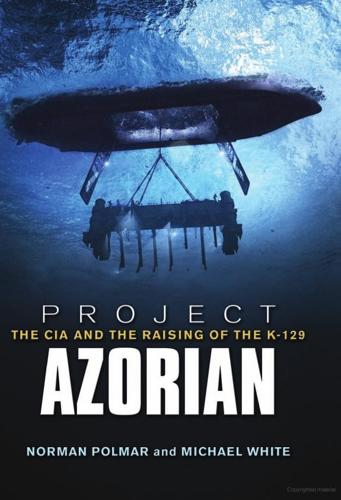
Project Azorian: The CIA and the Raising of the K-129
by
Norman Polmar
and
Michael White
Published 1 Dec 2010
And, the design of the Project 667A/Yankee SSBN, similar in several respects to the 16-missile U.S. Polaris submarines, was put on hold. Project 629/Golf II ballistic missile submarine. (© A.C. Baker III, from Cold War Submarines) The next-generation Soviet SSBN would not appear until the late 1960s, when the effects of the Cuban missile crisis of 1962 led to a further acceleration of Soviet nuclear strike forces. The first Project 667A/Yankee was completed in 1967 with large-scale production following. The older, far-less-capable Golf SSB and Hotel SSBN missile submarines continued to have a role. As Yankee SSBNs became available, the older missile submarines were employed as theater nuclear strike platforms and some were employed as missile test platforms, or were converted to communication relay ships.
…
As Yankee SSBNs became available, the older missile submarines were employed as theater nuclear strike platforms and some were employed as missile test platforms, or were converted to communication relay ships. However, the Golf-class submarines had important political-military roles. Following the Cuban missile crisis in the fall of 1962 that brought the United States and Soviet Union closer to nuclear conflict than at any other time during the Cold War, the Soviet government agreed not to introduce nuclear weapons into Cuba. On May 2, 1972—a little less than a decade after the crisis—a U.S. Defense Department spokesman stated that a Soviet Golf missile submarine had entered the port of Bahía de Nipe on Cuba’s northern coast.
…
Navy believed that the Soviets were working on just such a breakthrough in anti-submarine warfare. The early 1960s were violent, with several confrontations between the Soviet Union and the United States: the shootdown of a U-2 spyplane over the USSR in 1960, the Berlin crisis of 1961 that saw U.S. and Soviet tanks facing off, the nuclear confrontation during the Cuban missile crisis of 1962, the ongoing Vietnam War with Soviet weapons (including jet fighters) being supplied to the forces fighting the United States, and the North Korean capture of the U.S. spy ship Pueblo in January 1968, an act that many Americans believed was encouraged if not directly supported by the Soviet Union.
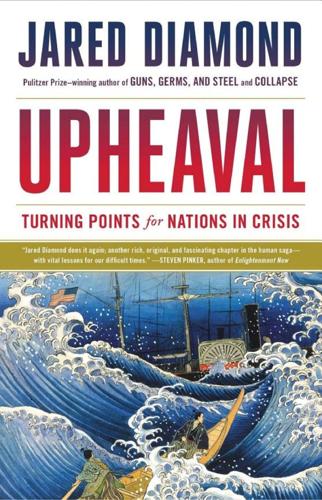
Upheaval: Turning Points for Nations in Crisis
by
Jared Diamond
Published 6 May 2019
Subsequent to the crisis, the gradual release of formerly classified information by both the U.S. and the Soviet Union made clear that we had been even closer to destruction than had been appreciated at the time. Unbeknownst to America’s military leaders then, who knew that at least 162 missiles had already been stationed in Cuba but who thought that the missiles’ nuclear warheads had not yet arrived, many of the warheads had actually already reached Cuba. After the Cuban Missile Crisis, the Soviet Union responded by accelerating its programs to develop more powerful nuclear weapons and intercontinental ballistic missiles. The U.S. responded with the determination that never again would it tolerate the installation of a communist government in the Western Hemisphere. Any American president who failed to prevent such an installation would have been immediately impeached and removed from office for gross neglect of American interests, just as President Kennedy was warned that he would be impeached if he failed to get Soviet missiles out of Cuba.
…
On the one hand, throughout my life, in each decade there have been reasons to consider that particular decade as posing the toughest problems that we Americans have ever faced—whether it was the 1940’s with World War Two against Japan and Nazi Germany, the 1950’s with the Cold War, the 1960’s with the Cuban Missile Crisis and the Vietnam War that lacerated American society, and so on. But even when I tell myself that we should be suspicious because every decade has seemed at the time to be the one offering the most cause for anxiety, I still have to agree: the current decade of the 2010’s really is the one offering the most cause for anxiety.
…
My account that follows relies on information provided by William Perry in conversation and in his book My Journey at the Nuclear Brink (2015). Perry’s career underlying his expertise about nuclear issues includes his analyses of Soviet nuclear capabilities in Cuba for President Kennedy each day during the 1962 Cuban Missile Crisis; serving as U.S. secretary of defense from 1994 to 1997; negotiating nuclear and other issues with North Korea, the Soviet Union / Russia, China, India, Pakistan, Iran, and Iraq; negotiating the dismantling of the former Soviet nuclear facilities in Ukraine and Kazakhstan after the dissolution of the Soviet Union; and much else.
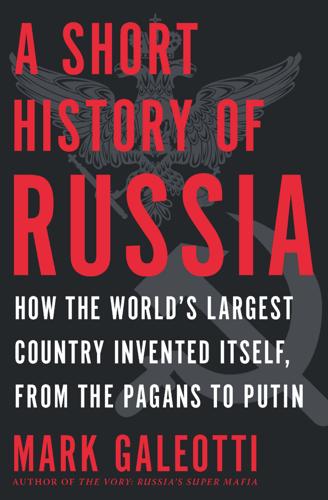
A Short History of Russia
by
Mark Galeotti
Published 1 May 2020
(While Stalin’s body was suitably embalmed and moved into Lenin’s mausoleum after his death, he was turfed out in 1961.) Khrushchev certainly had no qualms brutally crushing an anti-Soviet rising in Hungary in 1956, for example. More to the point, the Party elite began to see him as dangerous: his brinkmanship almost led to nuclear war during the 1962 Cuban Missile Crisis, and he had so mishandled the economy that there were widespread food shortages. © Helen Stirling Khrushchev had been a product of the Stalinist system and tried to rule as autocrat, not realizing that power had shifted to the wider Party elite—the boyars of the new order. In 1964, he was ousted in a bloodless political coup, and his eventual successor, Leonid Brezhnev, adapted to these new political realities.
…
absolutism, 65, 66, 128 Afghanistan, 185 agriculture, 42, 85, 119–120, 173, 177, 184–185 Alexander I, Tsar, 135, 138, 139, 140, 141–144 Alexander II, Tsar, 138, 139, 154, 176 Alexander III, Tsar, 159–160, 206 Ambassadorial Office, 77 America, attitude toward, 15. see also West, the Ancient Russia (map), 27 Andropov, Yuri, 186 An Imperial Stride, 117 Anna (daughter of Ivan V), 121–122 anticorruption, 202. see also corruption and extortion appanage, 49, 58 Arakcheyev, Alexei, 142 army, Peter the Great and the, 112–113 Arrival of Ryurik to Ladoga, 22 Askold (Viking adventurer), 26 Assembly of the Land, 78 Astrakhan Khanate, 80 authoritarian rule, 65–66, 111, 133 autocracy, 68–91, 126, 145–146 Banditry Office, 77 Basil II (emperor), 32 baskaks, 55 Batu Khan, 53, 54 Belskies, the, 74, 87 Benckendorff, Alexander, 147 Biron, Ernst, 122 Black Death, the, 58 black markets, 185, 191 Blue Sky Tengri, 52 Bohemians, the, 25 Bolesław (count), 33, 34 Bolsheviks, 168, 171–174, 178 Bonaparte, Napoleon, 119, 138, 139, 140–143 Boretskaya, Marfa, 72 Boris (brother of Yaroslav), 35 Boyar Council, 83 Brezhnev, Leonid, 184–185 Briacheslav of Polotsk, 33 Bulgars, the, 24, 29 Byzantine Orthodox Christianity, 31–32, 71, 99–100 Byzantium, 15, 23–25, 29, 30, 32, 34, 39, 72, 99 Cap of Monomakh, 75–76, 103 Cathedral of Christ the Saviour, 138, 138–139 Catherine I, 120–121 Catherine the Great, 115, 117, 121–133, 135, 176 mocking of, 117–118 presentation of Russia to the world, 118–119 Catholicism, Roman, 30 censorship, 147, 156 Charles XII, 114 Charter to the Gentry, 130 Chechnya, 197, 199–200 Cheka, the, 174 Chernenko, Konstantin, 186 Chernobyl, 187 China, 40, 209, 211 Christianity arise of in Russia, 14–15, 30–31 in Novgorod, 50 Orthodox, 31, 37, 56, 58, 64, 71, 72, 76, 78, 89, 98, 145–146, 152, 205 Russian state and, 30, 47, 77–78, 108 Chud, the, 22 church, reformation of, 77–78, 99–102, 108 cities and fortifications, early growth of, 23–30 civil service, 77, 157 Civil War (1918–22), 174, 190 civil wars, eleventh century, 35 Code of Laws (Sudebnik), 72–73 collectivization, 42, 177 Communist Party, 165, 174, 177, 188, 189, 191, 197 Congress of Soviets, 173 conservatism, 72, 133, 160, 167, 205 Constantine IX Monomachus, 75–76 Constantinople, 24–26, 28, 30, 34, 39, 40, 71, 117–118 Constituent Assembly, 173 Constitutional Democrat Party (Kadets), 166, 170–171 Contarini, Ambrogio, 85 corruption and extortion, 78, 83, 130, 184–186, 188, 191, 196, 198–199, 200, 202, 204, 213 Cossacks, 97–98, 127, 128, 141 Council of a Hundred Chapters, 77–78 coups and wars, see wars and coups Crimea, annexation of, 16, 44, 132, 195, 202 Crimean Khanate, 84, 104 Crimean Tatars, threat of, 89 Crimean War, 150, 152–154, 153 Cuban Missile Crisis, 182 Cumans, the, 38, 51–53 Decembrist Revolt of 1825, 145 Defenders of the Russian Soil, The, 193 democracy, as pretense, 200–201 democratization, 188 Derevliane, the, 28 despotism, 54–55, 66, 95–96, 126, 146 Dir (Viking adventurer), 26 disease and illness, 82, 97, 123, 127, 141, 174 diversity of population, 80 Dmitry I, Prince of Moscow, 46, 46–47, 58–63, 71 Dostoevsky, Fyodor, 147 double tsars, 103 Dual Power, 171 dvoyetsarstvenniki, 103 economy, see also serfs during 1700s, 119–120 during 1890s, 160–161 during 1970s, 184–185 during 1990s and 2000s, 197, 200, 204, 209 artisanal, 65 collectivization and, 177 early cities and, 34–35 Gorbachev and, 186–188 Ivan IV and, 84–87 Khrushchev and, 182 Lenin’s New Economic Policy, 174 Stalin and, 180–181 trade routes, 25–26, 28, 32–33, 37, 39, 41, 51, 65, 81, 151 during World War I, 169–170, 173 education, 102, 127, 143, 150, 156, 157, 158 egalitarianism, 76, 129, 165, 186 Elizabeth (daughter of Peter the Great), 122–123 Elizabeth, Empress, 123 Elizabeth, Queen of England, 69–70 Emancipation Decree, 156 embezzlement, see corruption and extortion Emergency Committee, 189 Emir Mamai of the Jochids, 60–62 emperors, as rulers, 76 English Muscovy Company, 82–83 enlightened despotism, 118, 126 Enlightenment Russia, 119 Eternal Peace Treaty, 104 ethnicity, 80, 195–196 Expansion of Russia, The (map) 131 extortion and corruption, 78, 83, 130, 184–186, 188, 191, 196, 198–199, 200, 202, 204, 213 fake news, 88. see also propaganda False Dmitries, 88, 132 farming, 85, 119–120, 173, 177, 184 fascism, 179 Federal Security Service (FSB), 198 feudalism, birth of, 37 Filaret, Patriarch, 91, 97 First Northern War, 100 First World War, 168–172, 190 foreign rule, myth of the end of, 63–67 France, influence of, 143–144 Frederick II of Prussia, 124 French Revolution, 134, 136, 142–143 Fundamental Laws, 166 Fyodor (son of Ivan IV), 70, 85, 87 Fyodor II (son of Godunov), 88 Fyodor III, 102–103 Gardariki, 25 Gathering of the Russian Lands, 63, 70–73 gender roles, women’s, 72, 120–121, 124, 127, 158, 175, 178 Genghis Khan, 52 geography Ancient Russia (map), 27 Crimean War, The (map), 153 early geographical divisions, 12–13 Expansion of Russia, The (map), 131 Golden Horde Russia (map), 59 Peter’s Great Embassy (map), 109 Putin’s Wars (map), 203 Soviet Union, The (map), 183 Time of Troubles, The (map), 86 trade routes, 25–26, 28, 32–33, 37, 39, 41, 51, 65, 81, 151 geopolitics, 39, 41, 88–89 Germany Germans as threat, 40 glasnost, 187–188 Glinskaya, Yelena, 74 Glinskies, the, 74 Global War on Terror, 201 Godunov, Boris, 87–88 Golden Horde, 46, 47, 54, 55–58, 59, 60–62, 64, 66–67 Golitsyn, Dmitry, 122 Golitsyn, Vasily (prince), 104 Gorbachev, Mikhail, 186–190, 194, 207 Gordon, Patrick, 98–99, 109 Grand Duchy of Lithuania, 60 Great Embassy, 110 Great Moscow Synod of 1666, 101 Great Northern War, 112, 113 Great Patriotic War, 179–182, 190 Great Silk Road, the, 58 Great Stand on the Ugra River, 63 Gulag, the, 177, 180, 181, 182 History of the All-Union Communist Party (Bolsheviks) (Stalin), 206–207 Hitler, Adolf, 13, 179–180, 205 Horsey, Jerome, 82–83 hybrid wars, 202 Igor (son of Ryurik), 26, 28 illness and disease, 82, 97, 123, 127, 141, 174 Imperial Academy of Arts, 158 industrialization, 42, 154, 177, 180, 181, 185, 194 inheritance by primogeniture, 57–58 intelligentsia radicalism, 158–159 Interior Ministry, 77 internet, Russian usage of, 209–210 invasions, early, 13–14 Islam, 14–15, 30–31, 40, 55 isolation of Russia, 64–65 Ivan (son of Alexei Romanov), 102–105 Ivan I, Prince, 57–58, 71 Ivan II, 58 Ivan III, Grand Prince, 63, 70, 71, 78 Ivan III the Great, 67 Ivan IV the Terrible, 69, 69, 70–87, 90, 112–113 Ivan V, 121, 122–123 Ivan VI, 122 Japan, 161–162 Jochi Khan, 53 Judaism, 13, 30, 36, 159 Kadets (Constitutional Democrat Party), 166, 170–171 KGB, 186, 194, 198 Khanate of Kazan, 74, 80 Khazars, the, 24 Khodorkovsky, Mikhail, 199 Khrushchev, Nikita, 182–184 Kiev fall to the Mongols, 53–54 family lineage and, 49 Grand Princes and, 30, 36–37, 41 growth of, 28, 32, 37 as heart of Rus’, 48–49 political fragmentation of, 34–37 princes of, 32–34 siege of, 34 Kipchaks, the, 38 Konstantin, Grand Duke, 144–145 Kriviches, the, 22 Kulikovo, 46, 63 Kurbsky, Andrei (prince), 83 Ladoga, 22–25 land grants, 78, 79 landholdings, patrimonial, 34–35 language, 13–14, 19, 31, 65 Lefort, Franz, 109–110 legal systems, 72–73 Lenin, Valdimir, 168, 171, 172–176, 190 Lenin-Stalin Mausoleum, 165 Leopold, Karl, 121 Life and Death of Grand Prince Dmitry Ivanovich, The, 47 linguistic autonomy, 19 literacy, 118, 136, 185 Livonian War of 1558-83, 81, 83, 85 Louis the Pious, King of the Franks, 23 Luzhkov, Yuri, 93–94 Lysenko, Trofim, 194 Lyubech, 1097 summit, 37 Magyars, the, 25 Majoritarians, see Bolsheviks Manifesto of the Freedom of the Nobility, 129 maps Ancient Russia, 27 Crimean War, The, 153 Expansion of Russia, The, 131 Golden Horde Russia, 59 Peter’s Great Embassy, 109 Putin’s Wars, 203 Soviet Union, The, 183 Time of Troubles, The, 86 Marx, Karl, 15, 64, 152, 168, 172, 212 Marxism, 136 Marxist-Leninist egalitarianism, 165 mass media, 200–201, 204–205, 208–211 Matveyev, Artamon, 106 Medvedev, Dmitry, 201 Mensheviks, 168, 170 Menshikov, Alexander, 121 merchant class, rise of, 157–158 Merias, the, 22 mestnichestvo, 73, 102, 107, 108 Mikhail I, 90–91, 97 military, see also soldiers; wars and coups feudal vs. monarchical, 79 growth of under Ivan IV, 79–80 inadequacies of, 106–107 Nicholas I and, 148–151 Paul I and, 134 Ministry of Foreign Affairs, 77 missionaries, 31, 64, 97 modernization attempts, 102, 114–115, 135–136, 139–140, 155, 160–162, 165, 182, 187 Monastery of the Caves, 38 Mongols, 13, 15, 38, 48, 51–57, 66–67 Mongol style of rule, 64, 65 Mongol Yoke, 46, 48, 55–58, 64 Monomakh, Vladimir, 36, 38, 75 Mons, Anna, 110 Moscow Golden Horde and, 60 rise of, 48, 51, 72, 76–79 as spiritual capital, 58 Muslims, 14, 25, 56, 80, 150, 209 Mstislav of Chernigov, 33 Muscovite state, rise of, 56, 58, 65, 70 myths, national and political, 14, 15, 43–44, 47–48, 62–63, 75, 117–119, 139–140, 178–179, 190, 194, 207, 210 Nagoi, the, 87 Nakaz, the, 127, 132–133, 135 namestniks, 77 Narodnaya Volya, 159 Naryshkin, Ivan, 106 navy, Russian, 94, 110–111, 112, 113 Nevsky, Alexander, 56–57 New Economic Policy, 174 New Maidens’ Monastery, 105 Nicholas I (son of Alexander I), 138, 139, 144–151 Nicholas II (son of Alexander III), 160, 166–168, 170 Nikon, Patriarch, 99–101, 108, 208 Normanist conquest, 38–44 Novgorod about, 11, 24, 26, 49–51 demise of, 71 as geopolitical power, 64 rise of Christianity in, 50 veches and, 36 Official Nationality, 145–146, 206 Ogedei (uncle of Batu Khan), 54 Old Believers, 101 Oleg (son of Sviatoslav), 29 Oleg (successor to Ryurik), 26 Operation Barbarossa, 179–180 Oprichnina, Oprichniks, 83, 84 Orthodox Christianity, 31–32, 37, 56, 58, 64, 71, 72, 76, 78, 89, 98–100, 145–146, 152, 205 Ottoman Empire alliance with France, 134 conflicts with, 80–81, 89, 113, 152 Nicholas I and, 150–151 overthrow of Constantinople, 71 pagan culture, 26, 30–31, 41, 50, 89 Paleologue, Sophia, 71 palimpsest, Russia as, 11–15, 17, 43, 196, 207, 208–214 patrimonial landholdings, 34–35 patrimonial rulers, succession of, 35 Patriotic War, 140 Paul I (son of Catherine the Great), 133–135 Pauline Laws, 134 Pechenegs, the, 28, 29, 34, 39, 51, 52 perestroika, 187 Peresvet, 46–47 Pereyaslavl Accords, 98 Persia, as threat, 98 Persian Campaign, 1722-3, 112 Perun the Thunderer, 26 Peter II, 121 Peter III (Peter of Holstein-Gottorp), 123, 124–125, 129 Peter the Great, 15, 93, 94–95, 103–105, 105–115, 109, 120–121, 135, 176 Petrograd Soviet, the, 170–171 Pobedonostsev, Konstantin, 159 pogroms, 36 Poland Poles as threat, 40, 89, 98 Polovtsians, the, 38, 51–53 Polyane, the, 24 pomeshchiks, 73, 78 pomestiye, 78 Populists, 158 posadniks, 35, 36, 49 Potemkin, Grigory, 119 Preobrazhensky Regiment, 123 primogeniture, inheritance by, 57–58 princes, role of, 35, 55 propaganda, 42, 88, 178, 187, 191, 204–205 Provisional Government, 170–171 Pugachev, Yemelyan, 132 Pushkin, Alexander, 147 Putin, Vladimir, 16, 40–42, 195, 198–201, 201–205, 203, 205–208 radicalism, European, 143 radicalism, intelligentsia, 158–159 Radimiches, the, 22 Raskol, the, 101 Rasputin, Grigory, 170 Redemption Dues, 156–157 religion, Russian state and, 30, 47, 77–78, 108 Renaissance culture, 51, 64, 65 revisionism, 193–195. see also myths, national and political contemporary, 40 history of, 15–17 of history of power and authority, 76 over the centuries, 43 Putin and, 210–211 Russia—My History, 204 revolutions, 148–151, 161 1848, 149 1905, 162, 166–168 1917, 170, 171 French, 134, 136, 142–143 revolutions, concerns about, 143 Roman Catholicism, 30 Romanov, Alexei, 98–101 Romanov, Mikhail, 90–91, 97 Romanovna, Anastasia, 82 Romanov dynasty, 70, 95, 96 Romodanovsky, Fyodor, 111 Rorik of Dorestad, 23, 24 Rus’, about, 26 Russia expansion of, 79–82, 97 future of, 212–213 Russia, Romanov, 70, 95, 96 Russian Empire, origins of, 96 Russian Federation, 195–196 Russian Soviet Federative Socialist Republic (RSFSR), map of, 183 Russian state, roots of, 77 Russification, 146 Russo-Persian War, 1722-3, 114 Russo-Turkish War, 128 Ryazan, 47, 57, 60 Ryurik, about, 22–23, 26 Ryurikid dynasty, about, 22–26, 56–58, 87 Ryurikids, arrival of, 23–29 Sacred Council, 77 Sarai, 47–48, 55–57, 60–63, 65–66 Scandinavian raider-traders, 23, 24 Second Rome, 15, 150 Second World War, 179–182, 190, 194 serfs Catherine the Great and, 130 egalitarianism and, 129 emancipation of, 148, 154, 155–158 as percentage of population, 119 Peter the Great and, 107, 108, 112 as soldiers, 156 St.
…
Petersburg, 94, 96, 112 streltsy, the, 79, 97, 104, 105–106, 111 Stroganovs, the, 81–82 Supreme Privy Council, 121–122 Sviatopolk (brother of Yaroslav), 33 Sviatoslav, Prince, 28–29 Sweden, as threat, 89, 98 Swedish Empire, loss to Russia, 113–114 Syrian Civil War (2015–), 202 Table of Ranks, 107–108 Tale of Igor’s Campaign, The, 41–42 Tatars, see Mongols taxation, 35, 56, 82, 85, 107, 130, 157 technology, 13, 96–97, 106, 136, 149, 176–177 terem, the, 72 Teutonic Knights, 56 Third Rome, 14–15, 71, 210 Third Section, 147, 159 Thor, 26 timelines 862–1113, 21 1223–1480, 45 1462–1613, 68 1613–1725, 92 1725–1796, 116 1812–1905, 137 1905–1991, 164 1991–2024, 192 Time of Troubles, 70, 82, 86, 88–89, 90, 97, 99, 207 Tokhtamysh, 61, 62–63 trade routes, 25–26, 28, 32–33, 37, 39, 41, 51, 65, 81, 151 Treaty of Brest-Litovsk, 173 Treaty of Nerchinsk, 104 Treaty of Tyavzino, 87 Tsargrad, see Byzantium tsars, role of, 72, 90 Tsereteli, Zurab, 94 Tver, 57, 60, 62 Union of Soviet Socialist Republics (USSR) dissolution of, 190–191, 195, 207 formation of, 174 Union Treaty, 189 unipolar world order, 201, 204 universities, 102, 119, 127, 150, 156, 157, 159. see also education uprisings, see wars and coups urbanization, 65 Uvarov, Sergei, 145 Uzbeg, Khan of the Golden Horde, 57 Varangian Guard, the, 23 Varangians, the, 22, 39 Vasily III (son of Ivan III), 73–74 Vasnetsov, Viktor, 22, 23 veche, the, 35–36, 49 Vikings, 13–14, 16, 22–23, 26, 29, 89 Viskovaty, Ivan, 77 Vladimir (son of Sviatoslav), 29 Vladimir the Great, 29–33 Vsevolod, Prince, 49, 50 Vyacheslav (brother of Yaroslav), 35 Vyshnegradsky, Ivan, 160 War Communism, 173–174 wars and coups, see also military; soldiers of 1991, 189 Civil War (1918–22), 174, 190 Cuban Missile Crisis, 182 First Northern War, 100 Great Northern War, 112, 113 Great Patriotic War (see World War II) hybrid wars, 202 Patriotic War, 140 Persian Campaign, 1722-3, 112 Peter the Great and, 112–115 Putin and, 202, 203 Russo-Persian War, 1722-3, 114 Russo-Turkish War, 128 Seven Years War, 123 with Sweden, 87 Syrian Civil War (2015–), 202 War of Spanish Succession, 110 World War I, 168–172, 190 World War II, 179–182, 190, 194 West, the Alexei Romanov and, 98–99 arms race with, 185 Catherine the Great and, 126 farming methods, 119–120 mass media and, 200–201, 204–205, 208–209 modernization and, 139–140 Nicholas I and, 149–150 influences of, 15–16 1990s and, 195 paranoia of, 194 Peter the Great and, 95, 110–112, 114 Putin and, 40–41 technological, 96–97, 176–177 2000s, during, 209–212 unipolar world order and, 201, 204 Western rationalism, 146 Witte, Sergei, 160 women, roles of, 72, 120–121, 127, 158, 175, 178 World War I, 168–172, 190 World War II, 179–182, 190, 194 Yalta Conference (1945), 181 Yaropolk (son of Sviatoslav), 29 Yaroslav the Wise, 33, 34, 35, 36, 50 Yeltsin, Boris, 188–190, 196–198, 199 Yuri (brother of Ivan IV), 74 Yuri Dolgoruky (Long-Armed Yuri), 51 Zaliznyak, Andrei, 11 Zemshchina (the Land), 83, 84 Zemsky Sobor (Assembly of the Land), 78, 87, 90–91 ISBN-13: 9781488076107 A Short History of Russia Copyright © 2020 by Mark Galeotti First published in 2020 in the United Kingdom by Ebury Press, part of the Penguin Random House group of companies.
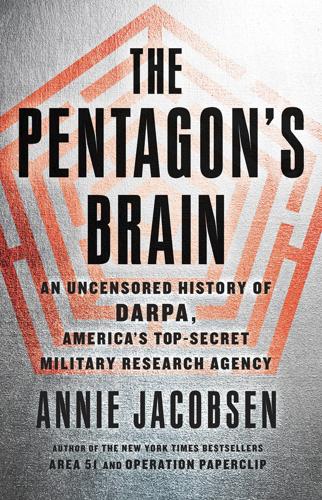
The Pentagon's Brain: An Uncensored History of DARPA, America's Top-Secret Military Research Agency
by
Annie Jacobsen
Published 14 Sep 2015
And yet new information from ARPA’s history has recently come to light that paints an even more dramatic Cuban Missile Crisis than was previously understood. “Guess how many nuclear missiles were detonated during the Cuban Missile Crisis?” asks Paul Kozemchak, special assistant to DARPA director Arati Prabhakar, during an interview for this book. Kozemchak is a thirty-year veteran of DARPA, which makes him the longest-serving employee in its history. “I can tell you that the answer is not ‘none,’” said Kozemchak. “The answer is ‘several.’” In this case, “several” refers to four. By the time of the Cuban Missile Crisis, Eisenhower’s test ban had failed, and the United States and the Soviet Union had both returned to nuclear weapons testing.
…
By the time of the Cuban Missile Crisis, Eisenhower’s test ban had failed, and the United States and the Soviet Union had both returned to nuclear weapons testing. Twice during the height of the Cuban Missile Crisis, on October 20 and October 26, 1962, the United States detonated two nuclear weapons—code-named Checkmate and Bluegill Triple Prime—in space. These tests, which sought to advance knowledge in ARPA’s pursuit of the Christofilos effect, are on the record and are known. What is not known outside Defense Department circles is that in response, on October 22 and October 28, 1962, the Soviets also detonated two nuclear weapons in space, also in pursuit of the Christofilos effect.
…
“They were testing elements of an antimissile system in a nuclear burst environment.” It is hard to determine what is more shocking, that this information, which was made public by Russian scientists in the early 1990s, is not generally known, or that four nuclear weapons were detonated in space, in a DEFCON 2 environment, during the Cuban Missile Crisis. Firing off nuclear weapons in the middle of a nuclear standoff is tempting fate. The BMEWS system, at J-Site in Thule, could easily have misidentified the Soviet missile launches as a nuclear first strike. “The danger of the situation simply getting out of control, from developments or accidents or incidents that neither side—leaders on either side—were even aware of, much less in control of, could have led to war,” says the former CIA officer Dr.
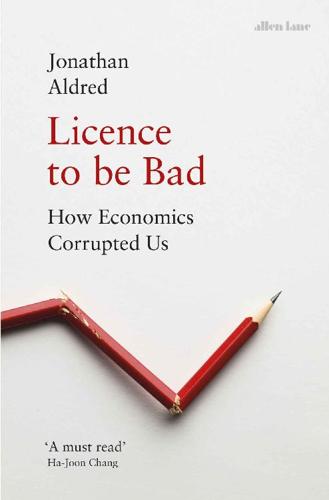
Licence to be Bad
by
Jonathan Aldred
Published 5 Jun 2019
But when the game is played by eminent statesmen … it is thought that the statesmen on one side are displaying a high degree of wisdom and courage, and only the statesmen on the other side are reprehensible.14 In any case, Chicken was not a helpful bit of game-theoretic analysis, because it has two Nash equilibria, the first being ‘your opponent does not swerve, you do’ and the second being ‘you do not swerve, your opponent does’. Game theory here makes no prediction about what will happen, or what should. The importance of this limitation was clear in the context of the Cuban Missile Crisis two years later when, in October 1962, both the US and the USSR refused to back down in their confrontation over the placing of Russian nuclear missiles on Cuba. It was obvious to both sides that Chicken was the game being played. However, what they both wanted to know was: which Nash equilibrium?
…
He discovered that, astonishingly, there was no means of speedy, reliable communication with the Kremlin: ‘I could direct dial my mother three thousand miles away to wish her happy birthday [but] Kennedy had no way to get in touch with Khrushchev.’22 Schelling persuaded President Kennedy to install what became known as ‘the hotline’ to solve the problem. With this single, simple act, Schelling may have made more difference to humanity than all the other thinkers in this book put together – although, with disturbing hindsight, the hotline was not fully operational until after the nuclear near-miss that was the Cuban Missile Crisis. It took until 1963 to persuade Soviet diplomats that the hotline was their idea, and to get special Cyrillic teletypewriters installed in the White House. As for Schelling’s economics, much of his work has a realism missing from Gary Becker’s world. Like Becker, Schelling studied discrimination.
…
By the time ‘Risk, Ambiguity and the Savage Axioms’ was published, Ellsberg was a consultant to the US Defense Department and the White House. In 1961 he drafted the guidance to the Joint Chiefs of Staff on the operational plans for general nuclear war; the following year, unsurprisingly, saw him preoccupied with the Cuban Missile Crisis. As for promoting his ideas in academic circles, Ellsberg had effectively gone AWOL. He had, in one way or another, become obsessed with the Vietnam War. After working on plans to escalate US involvement in Vietnam, Ellsberg spent two years in Saigon, and then returned to RAND to work on a top-secret review of US decision-making regarding Vietnam.
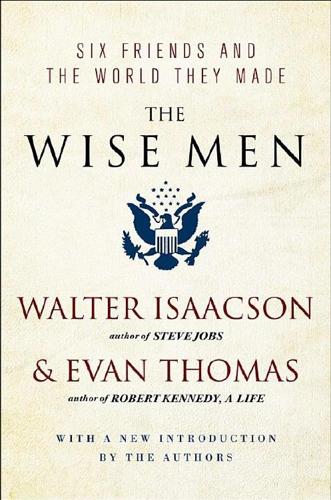
The Wise Men: Six Friends and the World They Made
by
Walter Isaacson
and
Evan Thomas
Published 28 Feb 2012
And yet, it turns out, it was Bundy who wrote a memo for Lyndon Johnson entitled “Backing from the Establishment,” which set the stage for the formation of the group that became known as the Wise Men. “The key to these people,” Bundy advised, “is McCloy.” When Bundy was seeking Lovett’s advice during the Cuban missile crisis, the elder statesman nodded toward a photograph near Bundy’s desk and intoned that “the best service we can perform for the President is to try to approach this as Colonel Stimson would.” That, in fact, might be the truest touchstone of Establishment credentials: reverence for the tradition exemplified by Henry Lewis Stimson, the consummate American statesman and Wall Street lawyer who served as Secretary of War under both William Howard Taft and Franklin Roosevelt and as Secretary of State under Herbert Hoover.
…
The North Vietnamese had somewhat reduced the level of fighting in the South. Was this a gesture of good faith by Hanoi? Harriman proposed to treat it as such. In return, he suggested, the U.S. should impose a total bombing halt. In effect he was suggesting the same ploy that had worked during the Cuban missile crisis: ignore the harsh rhetoric and respond to the hopeful hints; assume the enemy wants peace and help him achieve it. The first hurdle was not Hanoi, but Lyndon Johnson. And the timing was unfortunate. While HARVAN was concocting peace initiatives in Paris, Johnson had been in Honolulu promising his unyielding support to South Vietnamese President Thieu.
…
HARRIMAN AT GENEVA: Harriman Oral History, 1969, Columbia University; Harriman Oral History, 1964, Kennedy Library; authors’ interviews with William Sullivan, Michael Forrestal, Chester Cooper, Paul Nitze; Sullivan Oral History, 1970, Kennedy Library; Cooper Oral History, 1966, Kennedy Library; Schlesinger, A Thousand Days, 384; Rust, Kennedy in Vietnam, 71; McGeorge Bundy memo to President Kennedy, Nov. 15, 1961, Bundy notes of White House meeting on Laos, Aug. 29, 1961, Kennedy Library; Cooper, The Lost Crusade: America in Vietnam, 182–191; Hilsman, To Move a Nation: The Politics of Foreign Policy in the Administration of John F. Kennedy, 138, 142–55. OVERVIEW OF CUBAN MISSILE CRISIS: Abel, The Missile Crisis; Detzer, The Brink; Kennedy, Thirteen Days; Alsop and Bartlett, “In Time of Crisis”; Schlesinger, Robert Kennedy and His Times, 499–532; Schlesinger, A Thousand Days, 794–819; Sorensen, Kennedy, 667–718; Minutes of ExCom meetings, Kennedy Library. McCLOY INVOLVEMENT IN MISSILE CRISIS: Authors’ interviews with John McCloy, Andrea Giles, Robert Lovett; McCloy interview with Eric Sevareid, Part II, CBS News, July 20, 1975; Wershba, “U.S.
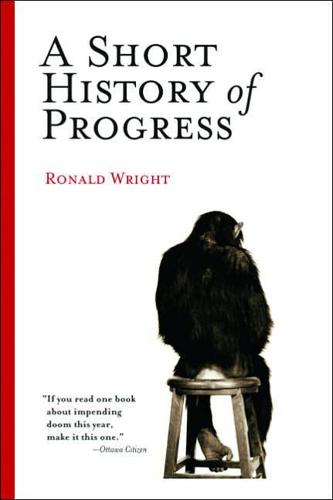
A Short History of Progress
by
Ronald Wright
Published 2 Jan 2004
They may have been wrong on the details they imagined for our times, but they were right to foresee trouble. Just ahead lay the Great War and 12 million dead,42 the Russian Revolution, the Great Slump — leading to Hitler, the death camps, the Second World War (with 50 million dead), the atom bomb. And these in turn to the Korean War, the Cold War, the near-fatal Cuban Missile Crisis, Vietnam, Cambodia, Rwanda. Even the most pessimistic Victorian might have been surprised to learn that the twentieth century would slaughter more than 100 million in its wars — twice the entire population of the Roman Empire.43 The price of history does indeed go up. The Victorian scientific romances had two modern descendants: mainstream science fiction, and profound social satire set in nightmare futures.
…
As an astronomer, he advocates establishing a small human colony in space as soon as possible, to give intelligent life a second chance if things go wrong. But if we ruin the earth, are we intelligent? And why should we deserve another chance? 55. Declassification of American and Soviet sources from the 1962 Cuban Missile Crisis, and statements by those involved, show that the world came much closer to nuclear war than had been thought. Robert McNamara, then U.S. defence secretary, has written “we came within a hairbreadth without realising it.” See ibid., pp. 25–28. 56. Following controversial legal rulings in the United States, biotech and agribusiness companies have taken out patents on crops (and even animals) they claim to have “invented.”
…
See also progress traps violence, 33–34, 71–73, 126, 139n5, 140n6 worldwide, 55–56 classes, 33, 56, 63–64, 71, 108, 109 climate change, 23, 37–38, 51–53, 125, 130, 148n53, 182n53 Cold War, 121, 133n7, 181n50 collapse of civilization, 8, 92–93 literary portrayals, 119–20, 122–23 natural or social, 56, 84 scientists’ warnings, 125–26, 181n52 three aspects, 107–8, 128 typical behaviour before, 129 worldwide, 125, 181n52 colonialism, 33, 139n5 communism, 124 Coningsby (Disraeli), 119 consumption and reserves, 148n52 Cook, James (Captain Cook), 58, 62 Copan, 98, 100, 101, 169n66 Cortés, Hernando, 51 “cosmic bombshells,” 139n2 Critias (Plato), 87–88 Cro-Magnons, 18, 20–22, 23–24, 26, 36, 37, 38, 66, 137n31, 137n35 genetic studies, 21, 137n32 and Neanderthals, see Neanderthals crops, 42, 44, 47, 114, 144n30, 144n31, 144n33, 152n22 failures, 130 see also farming; food production Crosby, Alfred, 130 Cuban Missile Crisis, 121, 182n55 cultures adaptations, 29–30 dangers, 30 defined, 32–33 outrunning evolution, 35 transmissible through speech, 13 cuneiform script, 65 Curie, Marie, 12 Darwin, Charles, 11, 12 Decline and Fall of the Roman Empire (Gibbon), 85–86 democracy, 6 “deregulation,” 127, 184n63 Descent of Man (Darwin), 12 Devil, 49, 147n46 Dickens, Charles, 119 dinosaurs, extinction, 31, 139n2 disease of twentieth century, 122, 123, 180n44 future concern, 130 Old World, in America, 112, 113, 116–17, 173n10, 173n11 dogs, 43 domestication, 33, 149n1 animals, 43–44 plants, 42, 44, 47 Dos Pilas, 99 drought, 101, 167n63, 168n64 dystopias, 122, 123 Easter Island, 57–64 collapse, 61–63, 82, 83, 129, 132 contact with Europe, 57–58, 62, 151n17 Easter Island, Earth Island (Bahn & Flenley), 63, 149n9 Ecological Imperialism (Crosby), 141n17 Eden, 9, 66, 67, 68 Egypt civilization, emergence, 33, 149n1 conservatism, 85, 103 disease, 104, 170n73 environment, 103, 109–10, 169n70 farming, 103 population growth, 103–4, 170n71 restraint in technology, 46 Einstein, Albert, 5, 118 Eiseley, Loren, 17 El Mirador, 95, 164n42 Enemy of the People (Ibsen), 180n41 Engels, Friedrich, 181n50 entrenched behaviour, 79, 102 Epic of Gilgamesh, 65–66, 70, 75–77, 152n24, 156n56, 157n59 epidemics, see Black Death in Europe Erewhon (Butler), 119, 122 European conquest of Americas, 37 Spanish, see Spanish conquests evolutionary theory, 9, 12 extinctions, 31, 37–40, 63, 141n18, 142n21 famines, 74, 105, 156n51, 171n76.
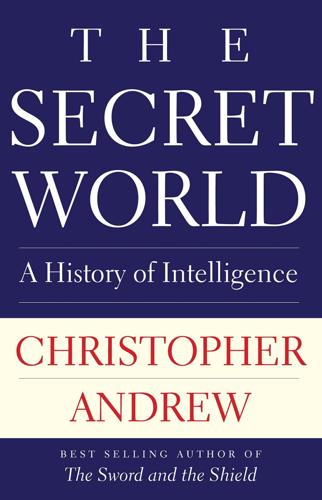
The Secret World: A History of Intelligence
by
Christopher Andrew
Published 27 Jun 2018
The U-2 missions, wrote Eisenhower, ‘provided proof that the horrors of the alleged “bomber gap” and “missile gap” were nothing more than the imaginative creations of irresponsibility’.50 Without the IMINT revolution, US policy towards the Soviet Union would doubtless have continued to be confused by other destabilizing myths about the extent of Soviet nuclear capability. The course of the 1962 Cuban Missile Crisis would also have been quite different. But for IMINT from U-2s (whose interpretation owed much to top-secret documents supplied by a British–American agent in the GRU, Oleg Penkovsky),* Khrushchev would almost certainly have achieved his ambition of concealing the construction of the missile bases until they were fully operational.
…
When the US fleet began dropping practice depth charges in an attempt to force the Soviet Foxtrot-class submarine B59 to come to the surface for identification, the submarine captain wanted to launch a nuclear torpedo. He would have done so but for the presence on board of the flotilla commander, who refused to permit the launch.52 After the Cuban Missile Crisis, the intelligence available to both East and West on the extent and deployment of their opponents’ nuclear strike force became an essential element in stabilizing the Cold War. According to Robert Gates, whose quarter-century career in the CIA and the White House staff culminated in his appointment as DCI from 1991 to 1993: The great continuing strength and success of the analysts of CIA and the intelligence community was in describing with amazing accuracy from the late 1960s until the Soviet collapse the actual military strength and capabilities of the Soviet Union . . .
…
Bush was widely expected to win a second term at the November elections and to take a personal interest in post-Cold War changes to the intelligence community. The American intelligence community had greater confidence in Bush than in any President for the previous generation. The US triumph in the Cuban Missile Crisis and the phenomenal technological achievements of American spy satellites and SIGINT collection (known in much greater detail to the White House than to the public) had given Cold War presidents inflated expectations of what their intelligence communities could achieve. ‘Of all the presidents I worked for [from 1968 to 1993]’, recalls Robert Gates, ‘only [George H.
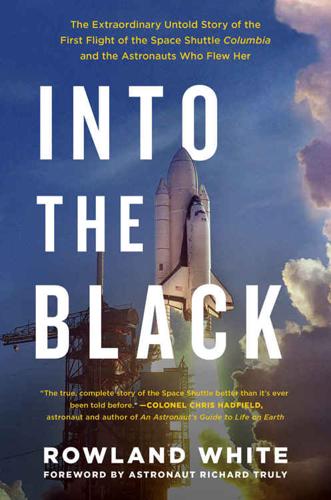
Into the Black: The Extraordinary Untold Story of the First Flight of the Space Shuttle Columbia and the Astronauts Who Flew Her
by
Rowland White
and
Richard Truly
Published 18 Apr 2016
In the early 1950s Collier’s magazine laid out German rocket pioneer Wernher von Braun’s vision for space, serving as an inspiration for many who later became part of the space program. Last of the gunfighters. During the Cuban Missile Crisis Dick Truly flew Vought F-8 Crusaders from the USS Enterprise, the Navy’s first nuclear-powered aircraft carrier. With dreams of becoming a test pilot, Bob Crippen earned his wings of gold as a naval aviator before flying A-4 Skyhawks off the deck of the USS Independence during the Cuban Missile Crisis. Crip is kneeling third from the right. Bob Crippen trained as a test pilot at Chuck Yeager’s Aerospace Research Pilot School at Edwards Air Force Base in 1965.
…
In the end, though, “Slats” didn’t stick. Everyone just knew the tan, brown-eyed Texan with the crewcut as Crip. After his first night landing aboard an aircraft carrier he thought, I can do just about anything. For a while, as he flew from the deck of the Navy’s first nuclear-powered aircraft carrier, USS Enterprise, during the Cuban Missile Crisis, it looked like that might include war. Test flying, though, remained his goal, and he filled in the application form in 1964. It offered him a choice: Do you want to go to the Navy’s test pilot school at Patuxent River? Or would you be prepared to go to the Empire Test Pilots School in the UK, or train with the Air Force instead?
…
When his orders came through telling him he’d been posted to Edwards Air Force Base, he was surprised to discover he’d be a student at an outfit called the Aerospace Research Pilot School—I thought I was going to test pilot school. The syllabus, he learned, included spaceflight. And his instructor on the space dynamics and control course was a young Navy pilot who, like Crip, had only just over a year before been flying off carriers during the Cuban Missile Crisis. His name was Lieutenant Dick Truly. THREE Edwards Air Force Base, 1963 When Dick Truly arrived at Edwards with his wife, Cody, two young sons and the family dog after a long cross-country drive, he felt like a cowboy just arrived at IBM. There were few places in the world that were more glamorous than Edwards.
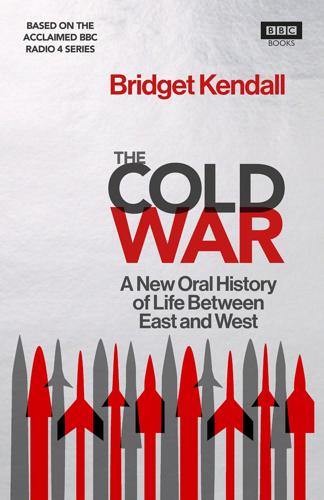
The Cold War: Stories From the Big Freeze
by
Bridget Kendall
Published 14 May 2017
In those days, West Berliners who wanted to see relatives in the East had only one way of doing this, and that was to stand at a vantage point in West Berlin where they could be seen by their relatives in the East. They could wave to each other. My fiancée saw her parents only as tiny little dots about 500 metres away. ‘The world was going to end any time now’ The Cuban Missile Crisis (1962) THE CONFRONTATION KNOWN as the Cuban Missile Crisis, and in Russia as the Caribbean Crisis, took place over 13 days in October 1962. It was the closest the United States and the Soviet Union came during the Cold War to triggering nuclear apocalypse. The starting point went back to more than three years earlier and the moment, in January 1959, when a band of rebels on the Caribbean island of Cuba, led by the young revolutionaries Fidel Castro, his brother Raúl and Ernesto ‘Che’ Guevara, succeeded in ousting the unpopular, corrupt dictatorship of Colonel Fulgencio Batista, following a two-year guerrilla campaign.
…
Contents Cover About the Book About the Author Title Page Introduction ‘Then all hell broke loose’ The Greek Civil War (1944–9) ‘The Iron Curtain was in place’ The Communist Coup in Czechoslovakia (1948) ‘There were no weapons, only arguments, ideas’ The Italian Election of 1948 ‘We were suddenly shut off’ The Berlin Blockade (1948–9) ‘Then fear replaced pride’ The Fall of Shanghai (1949) ‘The trap shut’ The Korean War (1950–3) ‘The world became a hostile place’ McCarthyism (1950–4) ‘When I saw the light, I had no idea what was happening’ The H-Bomb (1950s) ‘Now it was going to be different’ The East German Uprising (1953) ‘Democracy and freedom became a memory only’ The Iranian Coup (1953) ‘It was the beginning of freedom’ Khrushchev’s Secret Speech (1956) ‘We are not your comrades’ The Hungarian Revolution (1956) ‘They were leaving with only their suitcases, they lost everything’ The Congo Crisis (1960–1) ‘If one went, one couldn’t return’ The Berlin Wall (1961) ‘The world was going to end any time now’ The Cuban Missile Crisis (1962) ‘There was no future’ The Fall of Khrushchev and the Rise of Brezhnev (1964–82) ‘They could accuse you of anything’ The Outbreak of the Chinese Cultural Revolution (1966–7) ‘They didn’t want to live in the dark any more’ The Prague Spring (1968) ‘I can’t wash that stain away’ America’s Vietnam War (1965–73) ‘Everything that you thought is not true any more’ The Coup in Chile (1973) ‘These were just ordinary men marching in the street’ The Fall of Saigon and the Aftermath of the Vietnam War (1975–9) ‘We fell into each other’s arms’ The Cold Peace and Ostpolitik (1969–79) ‘The country was left with no protection at all’ The Angolan Civil War (1975–2002) ‘The newcomer holding a weapon is the enemy’ The Soviet Invasion of Afghanistan (1979–89) ‘We came out victorious’ The Birth of Solidarity in Poland (1980) ‘A threat to our mutual humanity’ The Nuclear Arms Race and CND (1981–7) ‘Everyone wanted change’ Gorbachev’s Perestroika (1985–91) ‘They are not so different from us’ The Fall of the Berlin Wall and German Reunification (1989–90) ‘The greatest value of mankind is their freedom’ The Baltic Republics Leave the Soviet Union (1988–91) ‘The last nail in the coffin’ The Collapse of the Soviet Union (1991) Contributor Biographies Picture Section Further Reading: Contributors’ Publications Further Reading Index of Contributors Index Acknowledgements Picture Credits Copyright About the Book Accompanying a landmark BBC Radio 4 series, The Cold War is essential reading for anyone seeking to understand how the tensions of the last century have shaped the modern world, and what it was like to live through them.
…
‘We fell into each other’s arms’ The Cold Peace and Ostpolitik (1969–79) AS THE COLD War wore on through the 1960s and 1970s, positions on both sides became entrenched, but at the same time governments in both East and West were keen to avoid unnecessary escalations. Neither Moscow nor Washington wanted to repeat the experience of the Cuban Missile Crisis in 1962, when the world had teetered on the brink of nuclear destruction. The implication of the West’s passive response to the Soviet-led invasion of Czechoslovakia in 1968 was that while the United States and its allies might not like what had happened, they were reluctantly prepared to live with a divided Europe.

Mindwise: Why We Misunderstand What Others Think, Believe, Feel, and Want
by
Nicholas Epley
Published 11 Feb 2014
Retrieved from http://www.nytimes.com/2010/08/19/health/19chen.html?pagewanted=all. AFTERWORD: BEING MINDWISE 1. Much of this information comes from Arthur Schlesinger’s foreword to Kennedy’s autobiographical account of the Cuban Missile Crisis, Thirteen Days. Many other books cover the crisis in considerably more detail. 2. The full set of letters sent between Khrushchev and Kennedy, from both before and after the Cuban Missile Crisis, can be found here: http://www.state.gov/www/about_state/history/volume_vi/exchanges.html. The opening letter I’m referring to is from October 26, 1962. 3. Kislyakov, A. (2003). Hotline: 40 years of building up trust.
…
How to Break a Terrorist (Alexander) How to Win Friends and Influence People (Carnegie), Principle 8 of, 8.1, 8.2 human immunodeficiency virus (HIV) human rights, dehumanization and Hume, David hummingbirds humor, sense of, experiments on perception of hunters, anthropomorphism and hurricanes, 4.1, 4.2, 4.3, 4.4, 7.1, 7.2 Hussein, Saddam, 1.1, 8.1 Hutus Hyde, Janet Ickes, William, 1.1, 8.1 illusion of courage, 5.1, nts.1n immigration, immigrants, dehumanization and Indian Territory, 3.1, 3.2, 3.3 inference, prf.1, 3.1 MPFC and, 3.1, 3.2 neuroimaging experiments and, 3.1, nts.1n inhibition hypothesis intelligence, experiments on perception of, 1.1, 1.2 intentions, prf.1, prf.2 interrogations intrinsic motivators, 3.1, nts.1n introspection, prf.1, 1.1 bigotry and, 2.1, 2.2 limitations to understanding of self through planning fallacy and shoppers’ preferences and Invisible Gorilla, The: and Other Ways Our Intuitions Deceive Us (Simons and Chabris), nts.1n Iraq Al Qaeda in U.S. invasion and occupation of, 3.1, 3.2, 4.1 Islam, Muslims Israel, 6.1, 8.1, 8.2 Jahoda, Gustav James, William, 2.1, 2.2 Japan, U.S. firebombing of, n job interviews Johnson, Todd Jolie, Angelina Jung, Carl juries inadmissible evidence instructions and personal attendance of witnesses before Katrina, Hurricane, 4.1, 7.1, 7.2 Keaton, Diane Keller, Helen Keller, Maryann Kennedy, John F. Cuban missile crisis and, aft.1, aft.2 Khrushchev, Nikita S., aft.1, aft.2 kidnappings, n King, B. B. King, Martin Luther, Jr., n assassination of Kismet (MIT robot) knowledge “curse” of egocentrism and, 5.1, nts.1n others as main source of self and, prf.1, 1.1, 2.1, 8.1 stereotypes and, 6.1, 6.2 Koop, C.
…
Rosebud Creek, Battle of (1876) Rosenblatt, Roger, n Rubens, Michael Rules for Aging (Rosenblatt), nts.1n Rwanda Ryan, Meg saccades Sacks, Oliver same-sex marriage, 5.1, 5.2 savings accounts Savitsky, Ken Sax, Leonard, n Schroeder, Juliana science fiction scientific method Screening of Passengers by Observation Techniques (SPOT) program, 8.1, 8.2 Sea of Cortez self-knowledge, prf.1, 1.1, 2.1, 8.1 associative networks and self-worth September 11, 2001 terror attacks, 3.1, 4.1, 4.2, 4.3, 4.4, 5.1, 5.2, 5.3, nts.1n, nts.2n anthropomorphism and, 4.1, 4.2, 4.3, 4.4, nts.1n, nts.2n Seuss, Dr., n “Sex Differences in Human Male Preferences” (study) sexism Shakespeare, William Shake Well Before Using: A New Collection of Impressions and Anecdotes, Mostly Humorous (Cerf), nts.1n Shaw, George Bernard Shedd Aquarium shock and awe strategy, 3.1, 3.2 shopping preferences Shylock shyness Sierra Leone silk moths Simmeth, Lois, n Simons, Daniel, n Sinai Peninsula Singer, Peter, 3.1, nts.1n, nts.2n Six-Day War sixth sense, mind reading or insight as Skin Horse, 4.1, 4.2 sloths Small Plate Movement Smith, Adam smoking snap judgments social interactions, prf.1, prf.2, 3.1, 4.1, 4.2, 4.3 social isolation, 3.1, 4.1, nts.1n solitary confinement songs, “tapping study” on recognition of, 5.1, nts.1n South, Clay South Carolina Soviet Union, aft.1, aft.2 Spanish Civil War speaker-listener technique speech anxiety, 5.1, 5.2, nts.1n speed dating spicebush swallowtail caterpillar, 4.1, 4.2 Spock (char.), 7.1, 7.2 sports, context of success in spotlight effect, 5.1, 5.2, 8.1, nts.1n Standing Bear, 3.1, 3.2, 3.3, 3.4, 3.5 Stanford University, 2.1, 3.1 Star Trek Steffel, Mary stereotypes, prf.1, 5.1, 6.1, 7.1, 8.1, 8.2, aft.1, nts.1n accuracy and error of African Americans and, 6.1, 6.2 aging and, 6.1, 6.2 Asians and circle test experiment and, 6.1, 6.2, 6.3, 6.4 conflict resolution and differences and, 6.1, 6.2, 6.3, 6.4, 6.5, 8.1, nts.1n, nts.2n expectations and self-fulfillment of explanation and, 6.1, 6.2 gender and, 6.1, 6.2, 6.3, 6.4, 6.5, nts.1n, nts.2n groups and, 6.1, 6.2, 6.3, 6.4, 6.5, nts.1n knowledge and, 6.1, 6.2 line length experiment and, 6.1, 6.2 politics and, 6.1, 6.2, 6.3, 6.4 race and ethnicity and reality and visible facts versus invisible states and, 6.1, 6.2, nts.1n wealth inequality and, 6.1, 6.2, 6.3, nts.1n Stevens, Martin Stevenson, DeShawn, n stock market, anthropomorphism and, 4.1, 4.2, 4.3 students, stereotype study of, 6.1, nts.1n Stumbling on Happiness (Gilbert) Stutesman, John suicide bombers, 3.1, 3.2 Sunstein, Cass Super Bowl Supreme Court, Canadian Sweden, Vasa disaster and, 5.1, nts.1n synapses “Take Five to Live Light” campaign Taliban talking stick Talking to the Enemy (Atran), nts.1n Target taxes, taxation taxicabs Taylor, Elizabeth teasing telepathy telephones, 4.1, 5.1, 8.1, nts.1n egocentrism and, 5.1, 5.2 television, anthropomorphism and terrorism, terrorists, 3.1, 3.2, 4.1, 4.2, 4.3, 5.1, 5.2, 5.3, 8.1, nts.1n, nts.2n parochial altruism and, 3.1, nts.1n Tesh, John, n Tevatron, 4.1, 4.2, 4.3 texting, 5.1, 6.1 Thaler, Richard Theory of Moral Sentiments, The (Smith) Titchener, Edward tobacco Todd, Ashley, 5.1, 5.2, 5.3, 5.4 toddlers, social testing of, prf.1, nts.1n Tools of the Mind, n torture issue, 5.1, nts.1n Tour de France Toyota, GM intrinsic motivation experiment and Transportation Security Administration (TSA), U.S., 8.1, 8.2 travel, social engagement versus solitude and Trigger (guitar) T-shirt experiment, 5.1, nts.1n Tutsis Twitter, 2.1, 5.1, 5.2, 6.1, aft.1 typecasting ubuntu concept United Nations (UN) United States of America Afghan war and, 3.1, 8.1 Cuban missile crisis and, aft.1, aft.2 Iraq invasion and, 3.1, 3.2, 4.1 September 11, 2001 terror attacks and, 3.1, 4.1, 4.2, 4.3, 5.1, nts.1n, nts.2n stereotyping of aging in World War II and, 3.1, nts.1n Universal Declaration of Human Rights (1948) University of Michigan Hospitals vacuum cleaners Vance, Walter, 7.1, 7.2 Vanilla Ice, n Vasa, 5.1, nts.1n Vaughan, Stevie Ray vegetarianism, anthropomorphism and, 4.1, 4.2 Velveteen Rabbit, The (Williams) Vermont Vietnam War vision brain function and, 2.1, 2.2, 2.3 color perception and deafness compared with loss of, 8.1, nts.1n defining groups and, 6.1, 6.2 saccades and visual cortex Wahlberg, Mark, 5.1, nts.1n Wallace, David Foster Wall Street Journal, nts.1n Walt Disney Company, 4.1, 4.2 Wansink, Brian wants warbots, 4.1, 4.2, nts.1n Washington, D.C.
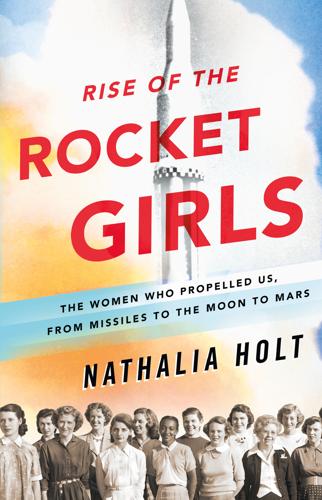
Rise of the Rocket Girls: The Women Who Propelled Us, From Missiles to the Moon to Mars
by
Nathalia Holt
Published 4 Apr 2016
Material about the Mercury 7 and the Saturn rocket can be found in Richard W. Orloff and David M. Harland, Apollo: The Definitive Sourcebook (New York: Springer, 2006). The Cuban missile crisis is described in Sheldon M. Stern, The Cuban Missile Crisis in American Memory: Myths Versus Reality (Palo Alto, CA: Stanford University Press, 2012). Both this book and the Kennedy Presidential Library website (http://www.jfklibrary.org/JFK/JFK-in-History/Cuban-Missile-Crisis.aspx) describe the presence of Jupiter missiles in Turkey. However, the role that the missiles played in the crisis wasn’t revealed to the American public until 1987.
…
Addressing the nation on October 22, Kennedy said, “My fellow citizens: let no one doubt that this is a difficult and dangerous effort on which we have set out. No one can foresee precisely what course it will take or what costs or casualties will be incurred.” It seemed the world was accelerating toward nuclear war. The roots of the Cuban missile crisis were tangled up in American rocketry. In 1961, Americans had deployed Jupiter nuclear missiles to Turkey, adjacent to the Soviet Union. And these medium-range ballistic missiles were developed by none other than Wernher von Braun at the Army Ballistic Missile Agency. At last, Kennedy brokered a deal with the Soviets.
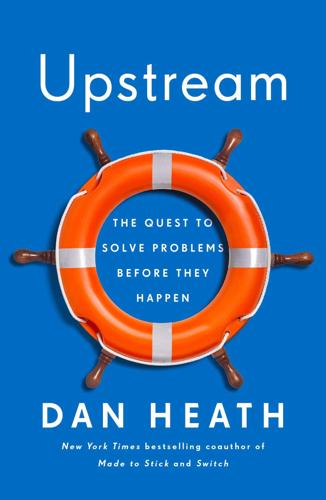
Upstream: The Quest to Solve Problems Before They Happen
by
Dan Heath
Published 3 Mar 2020
It was the era of the Cold War: Nuclear fallout shelters: Robert Klara, “Nuclear Fallout Shelters Were Never Going to Work,” History, October 16, 2017, updated September 1, 2018, https://www.history.com/news/nuclear-fallout-shelters-were-never-going-to-work; biological warfare: Joshua Lederberg, “The Infamous Black Death May Return to Haunt Us,” Washington Post, August 31, 1968, https://www.nlm.nih.gov/hmd/lederberg/pdf/bbabtv.pdf; Cuban Missile Crisis: “Cuban Missile Crisis,” Wikipedia, https://en.wikipedia.org/wiki/Cuban_Missile_Crisis; duck and cover in schools: Sarah Pruitt, “How ‘Duck-and-Cover’ Drills Channeled America’s Cold War Anxiety,” March 26, 2019, https://www.history.com/news/duck-cover-drills-cold-war-arms-race. The Andromeda Strain: Michael Crichton, The Andromeda Strain (New York: Centesis Corporation, 1969).
…
“Thousands of concerned citizens wrote NASA letters, worried that they were at risk from Moon germs,” wrote Michael Meltzer in his fascinating book When Biospheres Collide. It might be tempting to mock these fears now, with the infallibility of hindsight, but this concern was no joke. We simply did not know what was on the Moon. And existential risk was in the air. It was the era of the Cold War, nuclear fallout shelters, biological warfare agents, the Cuban missile crisis, “duck and cover” exercises in schools. (Feeding the fears was a 1969 bestseller by Michael Crichton, The Andromeda Strain—released about two months before the Moon landing—which concerned a deadly alien organism brought back to earth by a fallen satellite.) In the 1950s, just before the launch of the USSR’s Sputnik program, a group of scientists began to warn of the dangers of contamination from space exploration.
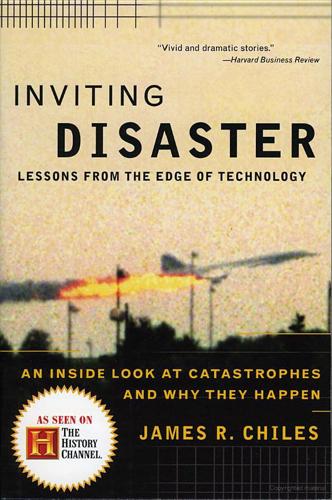
Inviting Disaster
by
James R. Chiles
Published 7 Jul 2008
Said the final report on the disaster, which cost 298 lives: “It was the collective faults of average individuals, ignorant of or indifferent to the need of precautionary measures, where they cannot, in their lack of knowledge, visualize a danger or hazard.” MINUTEMEN ON THE HIGH PLAINS During the Cuban Missile Crisis of October 1962, apparently there was no time to visualize, either, about something that could have gone terribly wrong for the world at Malmstrom Air Force Base. During the showdown with the USSR, defense contractors and air force personnel rushed to get the new solid-fueled Minuteman 1 missiles up and working in case the president wanted to fire them at the Soviet Union.
…
The men did their routine jobs well enough, but no one had much energy for tackling the difficult tasks, which needed protracted troubleshooting. Fortunately our endurance run ended soon afterward when reinforcement workers arrived via helicopter. But some workers don’t have that luxury. Recalling the brutally long days and nights of the Cuban Missile Crisis, presidential adviser Ted Sorensen said one of the most worrisome revelations was how sleeplessness eroded the powers of judgment. THE CAN-DO MAN Early-morning fatigue played a part in a very close call with a British airliner in June 1990. The central actor was a hardworking maintenance manager for British Airways; we don’t know his name, but we’ll call him Jones.
…
“Steaming the hold” was a traditional fire-fighting solution for the unusual emergency that had befallen them. Steaming was the worst thing they could have done, short of lighting up a flamethrower and dropping it down on the fertilizer bags before battening down the hatches. The words of John F. Kennedy come to mind, describing an incident during the Cuban missile crisis: “Always there’s some son of a bitch who doesn’t get the word.” The ones who had the word were the Army Ordnance Bureau’s Emergency Export Corporation, which was overseeing the manufacture of the fertilizer, and the U.S. Coast Guard, which had written regulations stating that the chemical was a “dangerous substance.”

Click Here to Kill Everybody: Security and Survival in a Hyper-Connected World
by
Bruce Schneier
Published 3 Sep 2018
Beardslee (Mar–Apr 1983), “Adolescents and the threat of nuclear war: The evolution of a perspective,” Yale Journal of Biology and Medicine 56, http://www.ncbi.nlm.nih.gov/pmc/articles/PMC 2589708/pdf/yjbm00104-0020.pdf. 95Over the years, there were plenty: Union of Concerned Scientists (20 Apr 2015), “Close calls with nuclear weapons,” http://www.ucsusa.org/sites/default/files/attach/2015/04/Close%20Calls%20with%20Nuclear%20Weapons.pdf. Future of Life Institute (1 Feb 2016), “Accidental nuclear war: A timeline,” https://futureoflife.org/background/nuclear-close-calls-a-timeline. 95The Cuban Missile Crisis is probably: Benjamin Schwarz (1 Jan 2013), “The real Cuban missile crisis,” Atlantic, https://www.theatlantic.com/magazine/archive/2013/01/the-real-cuban-missile-crisis/309190. 95although the 1983 false alarm is a close second: Sewell Chan (18 Sep 2017), “Stanislav Petrov, Soviet officer who helped avert nuclear war,” New York Times, https://www.nytimes.com/2017/09/18/world/europe/stanislav-petrov-nuclear-war-dead.html. 95although much less damaging than: Laura Geggel (9 Feb 2016), “The odds of dying,” Live Science, https://www.livescience.com/3780-odds-dying.html. 95But instead of regarding it as: As amazing as it seems today, immediately after 9/11, people actually believed that terrorist attacks of that magnitude would happen every few months.
…
Partly, it turned out our world’s leaders weren’t as fanatical as we thought they were. Over the years, there were plenty of technical glitches in both the US’s and the USSR’s missile detection systems—instances where the equipment clearly showed that the country was under nuclear attack—and in neither instance did the country retaliate. The Cuban Missile Crisis is probably the closest we came politically to a nuclear war, although the 1983 false alarm is a good close second. Yet it didn’t happen. Our collective fears after the 9/11 terrorist attacks were similar. That singular event, with its 3,000-person death toll and $10 billion cost in property and infrastructure damage, was way out of proportion to every other terrorist attack we have experienced in the history of our planet (although much less damaging than the annual death toll from automobiles, heart disease, or malaria).
…
Abbott Labs, 38, 41 Access Now, 214 accountability, 112, 128, 147 ACLU, 223 ad blockers, 16 African Union, 89 airline safety, 144 airplanes: bugs in, 41 remote control of, 1–2, 16 air traffic control, 210 Alexa (Amazon’s virtual assistant), 4, 61 Alexander, Keith, 118 algorithms: accurate inputs required by, 84 autonomous, 7, 82–87 data needed by, 84 hacking of, 83–84 machine learning, 82–83, 85, 111–12 physical agency of, 83 and robots, 86–87 security standards for, 111–12, 148 speed of, 84–85 Alibaba website, 169 Alphabet (Google’s parent company), 57 Alphonso, 58 Amazon, 57, 61, 62 Amnesia IoT botnet, 37 Amnesty International, 223 Anderson, Ross, 185 Andromeda botnet, 52 Angry Birds, 58 anonymity, 52, 53, 110, 199–200 Apple, 57, 60, 78, 174, 196 Applied Cryptography (Schneier), 32 Arab Spring, 67 arbitration agreements, 129 Arthur Andersen, 127 artificial intelligence (AI), 7, 86–87, 95, 148, 149, 219 Ashley Madison, hacking of, 78 AT&T, 113 Atomic Energy Commission (AEC), 149 attack vs. defense, 160–79 attack as US priority in, 73 attack easier than defense, 219 attacks changing in, 32–33 “defense dominant” strategy, 160 design for security vs. surveillance, 167–70 fixing vulnerabilities in, 162–67 in law enforcement, 173–76 offensive autonomous attack software, 85 and relationship between government and industry, 176–79 security as, 10, 16, 26–28 zero days in, 162, 163, 165 attribution, 52–55 in cyberattacks, 72, 203 detection evasion, 55 main points of, 54 authentication, 45–51 continuous, 47 differential, 47, 49 hub-and-spoke model of, 50 and identification, 51 and identity theft, 50–51, 171 and impersonation, 51 in Internet+, 49–51 methods of, 46 standards of, 109, 169 trade-off between security and usability in, 47 two-factor, 47, 49, 200 automobiles: aging, 39–40 bugs in, 41 driverless, 4, 205 industry regulation of, 182, 186 international markets for, 186, 187 Internet connection in, 6 manufacturer support of, 39–40 remote hacking of, 1, 3, 16 repair manuals for, 139 safety of, 139, 182 security standards for, 151 availability, attacks on, 78–82 Azimuth, 162 baby monitors, 133–35 backdoors, 26, 87, 88, 172, 174, 193–98, 220 Baker, Stewart, 204 balkanization, 157 banks, data manipulation attacks on, 81–82 Baratov, Karim, 30 Beckstrom, Rod, 19 Belan, Alexsey, 30 Bell, Alexander Graham, 152 best efforts, 122 Beyond Fear (Schneier), 211 “big data,” 57 biometrics, authentication via, 46, 47 Bismarck, Otto von, 220 bitcoin, 15, 74, 75, 77, 198, 218 blackouts, 29, 90 Blade Runner (film), 218 Blaster worm, 94 Bluetooth, 50, 58, 79 Bohm, Nick, 220 Border Gateway Protocol (BGP), 22, 23, 24, 115 Boston Marathon bombing (2013), 95, 202 Boston MBTA, 42 botnets, 26, 75, 77, 95, 139 Bowman Dam, Rye, New York, 79 breach disclosure laws, 137–38 bribery, 183 Brightest Flashlight, 58 BT, 113 Buckshot Yankee, 66 Budapest Convention on Cybercrime, 157 buffer overflow bug, 21 bug bounties, 36 bugs, 20–21, 41 CALEA (Communications Assistance for Law Enforcement Act) [1994], 168, 170 California, “Teddy Bears and Toasters” bill in, 187–88 Calo, Ryan, 149 Cameron, David, 197 Campos, Hugo, 63 CAN-SPAM Act (2003), 154 Caproni, Valerie, 193 “Capture the Flag” (hacking sport), 85 Carbon Black, 74 Carson, Rachel, Silent Spring, 183 caveat emptor, 131 Cellebrite, 174 cell towers, 32–33 fake, 168–70 Center on Privacy and Technology, 224 CEO fraud, 75 Challenger, 29 Check Point (Israeli company), 87 Cheney, Dick, 76, 93, 94 Chertoff, Michael, 198 Child Online Protection Act (1998), 154, 192–93 child porn, 183 China: and African Union headquarters, 89 censorship in, 67–68 and cybercrime law, 156, 158 cyberespionage by, 66, 67, 81 eavesdropping on communications, 195–96 hacking by, 45 intellectual property theft by, 66, 72–73 social control in, 67–68 China Telecom, 113 chips: general-purpose, 6 vulnerabilities in, 21 CIA, 73, 77, 165–67 Cisco Internet switches, 170 cities, smart sensors in, 4, 6 Citizen Lab, 64 Clapper, James, 66, 81 Clark, David, 23 class-action lawsuits, 129 class breaks: hacking via, 33, 95 use of term, 31–32 click fraud, 16, 75 cloud computing, 7, 190 Code for America, 223 Cogent ISP, 115 Cohen, Julie, 154 Comcast, 62, 113 Comey, James, 193–94 Commission on Enhancing National Cybersecurity, 180–81 complexity, 11, 27 and accidents, 80 theory of, 210 and unpredictability, 211 Computer Fraud and Abuse Act (1986), 42 computers: extensibility of, 24–26 as ubiquitous, 1–5, 19 vulnerabilities in, 30–32 confidentiality, threats to, 78–81 Consumers Union, 136, 145 copy protection, 25, 41, 62, 131, 154, 155, 205 Core Infrastructure Initiative, 115 corporations: CEO fraud in, 75 consumers controlled by, 59–64 data sought by, 57 infrastructure controlled by, 117 insecurity favored by, 56 profit maximization by, 118 regulation evaded by, 154–55 surveillance capitalism in, 57–59, 65, 209 CrashOverride, 2, 4–5 credential stealing, 45–47 credit card fraud, 16, 100 crime rate, public toleration of, 92 crimeware-as-a-service (CaaS), 76 cryptanalysis, differential, 33 cryptocurrencies, 172, 198 Cuban Missile Crisis (1962), 95 “cyber,” as umbrella term, 183–84 cyberattacks, 68–74, 116, 203, 217 Cyberbit (Israel), 65 cybercrime, 74–77, 156, 158 cyberdefense: “active,” 203 national agency for, 148 cyberespionage, see espionage Cyber Grand Challenge, 85 cyber incident data repository, 177 cyber peace, 213–14 cyberphysical systems, 7 cyber resilience, 211–12 cybersecurity, see Internet+ security Cybersecurity Improvement Act (2017), 180, 208 Cyber Shield Act (2017), 136 cyberstalking, 76 Cyber Threat Alliance, 177 cyberwar, 68–74 arms race in, 73, 116, 212–14 attribution in, 72 autonomous weapons in, 86 cyberespionage vs., 72 cyber mercenaries in, 70 limited response in, 71 “preparing the battlefield,” 69 and unpeace, 71–74 cyberweapons: in armed conflict, 72 autonomous, 86 instability of, 72, 212 manufacturers, 65 nonproliferation standards for, 158 theft of, 73 Daniel, Michael, 164 Darknet, 198 DARPA (US Defense Advanced Research Projects Agency), 85 data: accuracy of, 84 in adversarial machine learning, 84 anonymity of, 110 as byproduct, 57 “Collect it all,” 118 deletion of, 110 encryption of, 109, 171 integrity of, 80, 81, 109 jurisdiction over, 146 limits on collection of, 109 metadata, 174 natural bias of, 84 ownership of, 109 personal, control of, 62–63, 64, 109–11 sharing of, 177–79 storage and processing of, 174 Data and Goliath (Schneier), 110, 172 databases: encryption of, 171 threats to, 79, 80, 81 data brokers, 58 Data Encryption Standard (DES), 32, 33 DDoS (distributed denial-of-service) attack, 29, 130, 202 Deepwater Horizon disaster, 124 “defense dominance,” 160 see also attack vs. defense Democratic National Committee, Russian attacks on (2016), 30, 45, 78, 80 denial of service, 29, 79, 81, 130, 202 Department of Homeland Security, 117, 138 Derechos Digitales, Chile, 214 detection evasion, 55 Digital HKS, Harvard, 224 Digital Millennium Copyright Act (DMCA), 41–42, 62, 154, 193, 205–6, 220 digital rights management (DRM), 25, 62, 205 Digital Security Helpline, 214 DNSChanger malware, 37 Doctorow, Cory, 163 Dodd-Frank Act (2010), 126 Domain Name Service, 24, 115 security (DNSSEC), 24 domino effect, 210 “Don’t Panic,” 174 drones, 7, 80, 91, 95, 151, 200 Dyn, botnet attack against, 94, 202 Edgehill program (UK), 168 Electronic Communications Privacy Act (1986), 153 Electronic Frontier Foundation, 32, 223 Who Has Your Back?
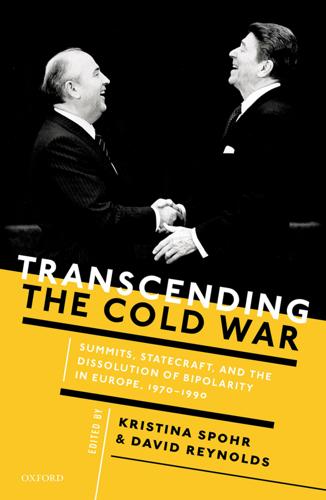
Transcending the Cold War: Summits, Statecraft, and the Dissolution of Bipolarity in Europe, 1970–1990
by
Kristina Spohr
and
David Reynolds
Published 24 Aug 2016
The next ‘Big Four’ meeting, in 1960 in Paris, was aborted and the Kennedy-Khrushchev encounter in Vienna the following year was a dialogue of the deaf. The Soviet leader returned home believing that he could bully the green, young American president by placing nuclear missiles in Cuba—a gamble that took the world to the brink of nuclear war in 1962. Mutual shock about the Cuban Missile Crisis, however, pushed the superpowers into dialogue to restrain their spiralling nuclear arms race. To advance this process of negotiation and cut through the bureaucratic obstacles, summitry became the prime instrument of diplomacy, starting with the meeting between President Richard Nixon and General Secretary Leonid Brezhnev in Moscow 1972.
…
His experience of Stalinism and the Great Patriotic War had made him staunchly conservative domestically but he also believed that war should be avoided at all costs. Brezhnev rejected the adventurism of his predecessor, Nikita Khrushchev, who, he thought, had brought the world to the brink of nuclear war with his reckless actions during the Cuban Missile Crisis in 1962. Instead of using nuclear weapons as a means to secure a dramatic realignment in global politics through audacious gambits, he ‘wanted’, according to historian Vladislav Zubok, ‘to convert the growing power of the Soviet Union into the coin of international diplomacy and prestige’.10 Brezhnev appears to have shared Nixon’s overall sense that the ‘correlation of forces’ was shifting in favour of the Soviet Union.
…
With the implementation of all these steps, Brezhnev hoped to rejuvenate the Soviet bloc and present himself as the architect of a new era of peace and stability, confirming his personal grip on power. Moscow’s new strategy coincided with a parallel crisis of the Western alliance. During the 1960s, NATO also lost cohesion and legitimacy. After the Cuban Missile Crisis, the Cold War had stabilized and fears of war with the Warsaw Pact declined. If these trends continued, Western political leaders feared, voters might conclude that NATO served no purpose or, worse, stood in the way of peace.14 Further, some Western European leaders chafed at American leadership.

Roller-Coaster: Europe, 1950-2017
by
Ian Kershaw
Published 29 Aug 2018
Fear of imminent nuclear war was never as acute as during the Cuban missile crisis in October 1962.fn1 It marked for nearly twenty years the high point of the CND’s protest. The Test Ban Treaty the following year saw its support slump. The CND had always been a minority movement – significant certainly, but never gaining the backing of the majority, even in the Labour Party. Most people recognized the fallacy of the notion that possession of the bomb gave Britain any genuine autonomy from the United States should it come to nuclear war. It was plain during the anxiety at the time of the Cuban missile crisis that, should it come to nuclear war, Britain would most likely be attacked whether it had the bomb or not.
…
And the threat of nuclear war, hanging over Europe like the sword of Damocles, did not depend solely upon events in Europe itself. For Europe was now fully exposed to the global confrontation between the nuclear superpowers. Events far from European shores, the outbreak of the Korean War in 1950 and the Cuban Missile Crisis of 1962, mark the beginning and end of the most dangerous phase of the Cold War for Europe (though a second, briefer period of heightened threat occurred in the early 1980s). The children, products of the post-war ‘baby boom’, born into this new era would live to see changes that their parents could not have imagined.
…
And in Moscow on 5 August 1963 the United States, the Soviet Union and Great Britain agreed to a limited Nuclear Test Ban Treaty, prohibiting other than underground testing. (France did not sign.) It was a modest step, but it amounted at least to a start. Little over a year later, in October 1964, Khrushchev was removed from power in a ‘palace coup’ in the Kremlin. His action in provoking the Cuban missile crisis, seen to have damaged the Soviet Union’s international standing, was among the reasons for his deposition. So was his authorization of the building of the Berlin Wall. With Khrushchev’s departure, the Cold War lost an erratic, blustering, unpredictable component. Two new Soviet leaders replaced him: Leonid Brezhnev as General Secretary of the Communist Party and Alexei Kosygin as Prime Minister.
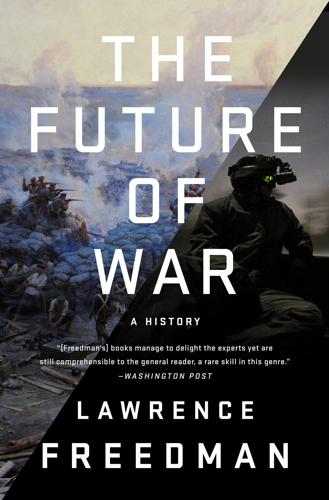
The Future of War
by
Lawrence Freedman
Published 9 Oct 2017
Even when the jamming ended, the aircraft crew decided that their protocols required them to continue with the mission. As in Red Alert, the president offered to trade one city for another, in this case New York for Moscow.19 Somewhat chillingly the novel appeared as a three-part serial in the Saturday Evening Post in October 1962, coinciding with the Cuban Missile Crisis, before being published the next year as a book. The authors introduced the book saying: ‘Men, machines, and mathematics being what they are, this is, unfortunately, a “true” story. The accident may not occur in the way we describe but the laws of probability assure us that ultimately it will occur.’
…
These went from reducing the vulnerability of populations, less dependence upon nuclear weapons or else their abolition, to a variety of political possibilities, including accommodation with the Soviet Union and even world federalism.22 In looking at the workings of the ‘crystal ball effect’ during the 1962 Cuban Missile Crisis, James Blight argued that the effect worked when combined with a ‘visceral fear’ that this might actually come to pass. Without the emotion that made the dangers seem so real and immediate, the knowledge would just fall into the ‘trash heap of received wisdom’, accepted ‘by rote and not from conviction’.
…
Speech to Economic Club of Chicago. PBS, 22 April 1999. Available: http://www.pbs.org/newshour/bb/international-jan-june99-blair_doctrine4-23/. Blattman, Christopher, and Edward Miguel. ‘Civil War’. Journal of Economic Literature 48.1 (2010): 3–57. Blight, James. The Shattered Crystal Ball: Fear and Learning in the Cuban Missile Crisis. New York: Rowman & Littlefield, 1990. Bloch, I. S. Is War Now Impossible? Being an Abridgment of The War of the Future in Its Technical Economic and Political Relations. London: Grant Richard, 1899. Available: https://archive.org/details/iswarnowimpossib00bloc. . ‘The Wars of the Future’.

The Signal: Watch Out for the Darkness
by
Nick Cook
Published 11 Jul 2018
Graham blinked fast and took his glasses off to wipe them on his jumper. ‘Please tell me that doesn’t mean what I think it does?’ Kiera gave him a thin smile. ‘I wish I could, Graham. However, over the last thirty minutes, the world has been propelled towards the equivalent of a modern-day Cuban Missile Crisis.’ I let out a small gasp. ‘You’re not seriously saying this signal could be the prelude to all-out nuclear war?’ She gave me a straight look. ‘That’s exactly what I’m saying.’ It felt as if the air had emptied from the meeting room for a moment as the implications of her words sunk in. Graham scraped his seat backwards and stood up.
…
‘I’m afraid the security situation has just been raised to DEFCON 3.’ Graham stared at him. ‘Isn’t that just a couple of steps below all-out nuclear war?’ ‘It is,’ Kiera replied. ‘How the hell could things have escalated this quickly?’ ‘Unfortunately it’s a sign of the accelerated times we live in. You see, in the days of the Cuban Missile Crisis, they had plenty of time for a huge amount of behind-the-scenes diplomacy to avert armagedon. However, in today’s interconnected world, where computers automate many of our military’s responses, things can escalate far more rapidly.’ ‘So you’re saying that some trigger-happy computers are propelling us towards a potential Armageddon?’
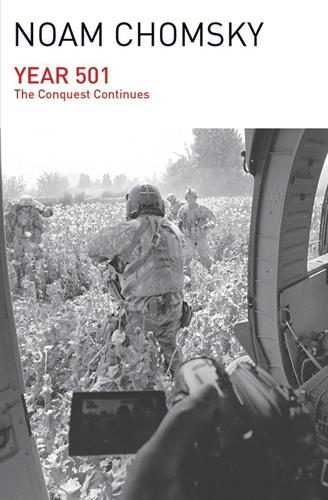
Year 501
by
Noam Chomsky
Published 19 Jan 2016
A 1980 study of the Center for Defense Information (CDI), tracing Russian influence on a country-by-country basis since World War II, concluded reasonably that Soviet power had declined from that peak to the point where by 1979, “the Soviets were influencing only 6 percent of the world’s population and 5 percent of the world’s GNP, exclusive of the Soviet Union.” By the mid-1960s, the Soviet economy was stagnating or even declining; there was an accompanying decline in housing, commerce, and life expectancy, while infant mortality increased by a third from 1970 to 1975.13 The Cuban missile crisis of 1962, revealing extreme Soviet vulnerability, led to a huge increase in military spending, levelling off by the late 1970s. The economy was then visibly stagnating and the autocracy unable to control rising dissidence. The command economy had carried out basic industrial development but was unable to proceed to more advanced stages, and also suffered from the global recession that devastated much of the South.
…
Between Life and Economics (1990 Boyer lectures of the Australian Broadcasting Company, ABC, 1990) Franklin, Bruce. M.I.A., or Mythmaking in America (Lawrence Hill, 1992) Gaddis, John Lewis. Strategies of Containment (Oxford, 1982) —The Long Peace (Oxford, 1987) Garthoff, Raymond. Détente and Confrontation (Brookings, 1985) —Reflections on the Cuban Missile Crisis (Brookings, 1987) George, Alexander, ed. Westem State Terrorism (Polity, 1991) Gerschenkron, Alexander. Economic Backwardness in Historical Perspective (Harvard, 1962) Ginger, Ann Pagan, and David Christiano, eds. The Cold War Against Labor (Meiklejohn Civil Liberties Institute, 1987), two vols.
…
See structural adjustment policies Austin, Stephen, 37 Australia, 76, 181, 187–90, 208 Avril, Propser, 288 Bailey, Thomas, 29 Baker, James, 61, 148, 195, 260, 348 Balaguer, Joaquín, 272 Ball, George, 173–74 Bangladesh, 15–16, 18, 86, 231, 354, 383 See also Bengal Baring, Evelyn (Earl of Cromer), 26 Barkin, David, 259 Barruel, Father, 243 Batista, Fulgencio, 198–99 Battuta, Ibn, 16 Bazin, Marc, 4, 288–89, 300–301 Beecher, Henry Ward, 393 Bekken, Jon, 394 Belgium, 28 Flemish colonialism, 28 Bemis, Samuel Flagg, 38 Bengal, 10, 15–16, 18, 26, 280 See also Bangladesh; India Benjamin, Jules, 199 Bentinck, Lord William, 17 Berle, Adolf, 198, 220, 229 Bernstein, Richard, 39 Bils, Mark, 145 biotechnology industries, 149, 158–61, 164, 208, 306 Bix, Herbert, 343 blackness, 5–6, 75, 274–76, 281–82, 302, 307 colonialism and, 30, 32–33, 37, 105, 193–194 first black republic, 271 in New World Order, 383 See also race; slavery Blaine, James, 214, 336 Blassingame, John, 282 Blatnik, John, 310 Blixen, Samuel, 242–43 Bohlen, Celestine, 111–12 Bohlen, Curtis, 161 Bolívar, Simón, 194–96, 215, 275 Bolivia, 107, 115–16, 214, 222 Bolts, William, 16 Boston Globe, 80–81, 154, 205, 210, 320, 351 Boucher, Richard, 148 Bourne, Peter, 117 Bowles, Chester, 200 Bradley, Omar, 62 Brady, Thomas, 8–9, 23 Brands, H.W., 172–76, 179, 184 Brazil, 7, 111, 135, 13–215, 280, 296 in New World Order, 58, 81, 143, 195, 208, 218–21, 223–33, 236–37, 254–56, 262–63, 392 Brenner, Robert, 23, 91 Bretton Woods system, 69, 76 See also liberalism Brewer, John, 12 Brezhnev, Leonid, 66, 123 British East India Company, 8, 10, 13, 15, 21, 313 Brittain, Victoria, 129–30 Brock, William, 132 Brooke, James, 236, 256 Brookings Institution, 142, 147 Bruce, David, 65 Brumberg, Abraham, 107, 112 Bryan, William Jennings, 276–77 Brzezinski, Zbigniew, 350 Buckley, Kevin, 359 Budiardjo, Carmel, 183 Bulgaria, 81, 112 Bundy, McGeorge, 367 Bunker, Ellsworth, 172 Burke, Melvin, 115–16 Burkina Faso, 86 Bush, George H.W., 122, 147–48, 157, 212, 245, 286, 326–27 drug war and, 80 Gulf war and, 31, 52–53, 253 Haiti policy, 292–93, 295–97, 301 health care policy, 320 Latin America policy, 118, 125, 127–28, 134, 210, 251, 268 New World Order and, 61, 82–83, 114–15, 130–31, 141, 164 Vietnam policy, 347–50, 370, 372 Butler, Smedley, 278 Butterfield, Fox, 359 Caffery, Jefferson, 198 Calderón Guardia, Rafael Ángel, 248 Callejas Romero, Rafael Leonardo, 249 Calleo, David, 71 Calley, William, 358–359 Cambodia, 104, 176, 187, 369 child labor in, 241–242 Khmer Rouge genocide, 238, 348–51 Vietnamese invasion of, 349–51, 349–52, 369 Canada, 77, 180, 194, 366 colonialism in, 30, 33 health care in, 320–21 in New World Order, 79–80, 133, 217 Canning, George, 194 Carey, Peter, 189 Caribbean colonialism in, 7, 30, 34, 194, 215, 275–76 in New World Order, 133, 250, 330 See also individual countries Caribbean Basin Initiative, 114 Carnegie, Andrew, 78, 106, 389–93 Carr, Caleb, 363, 420n48 Carter, Jimmy, 71, 105, 117, 157, 166, 201–02, 348–51, 382 China policy, 369 Korea policy, 140 Latin America policy, 59, 299 Vietnam policy, 346 Castro, Fidel, xi, 199–200, 202–11, 225 Ceausescu, Nicolae, 141 Center for Defense Information (CDI), 102, 104 Center for Defense Trade, 147 Center of Latin American Studies, 119 Central American Committee on Water Resources, 247 Central America Report (CAR), 41, 119–21, 248–49, 264–66 Central Intelligence Agency (CIA), 40, 54, 57, 98, 104, 105, 408n17 actions in Brazil, 223–24 actions in Cambodia, 350 actions in China, 410n3 actions in Cuba, 199, 202–03 actions in Indonesia, 169–71, 173–74, 182 actions in Nicaragua, 246 actions in Vietnam, 176 in New World Order, 55, 63, 215–16 Chalabi, Ahmad, 126 Chamorro, Violeta, 119–20, 263, 266, 300 Chandler, Alfred, 146 chemical warfare, 42, 189, 277, 346, 355–57 Cheney, Dick, x, 68, 149, 348 Cherokees, 36–37, 315–16 Chicago school, 254, 261 Chicago Tribune, 118, 382, 384–85 child labor, 82, 111, 232, 241–43 Childress, Richard, 347 Chile, 57, 105, 171, 208, 214, 225, 392 coup in, 49–50, 169 neoliberalism in, 254–55, 260–61, 269, 344 China, 18, 31–32, 95, 175, 178 colonialism in, 7, 10, 20 Cultural Revolution, 293 Japanese invasion of Manchuria, 328–31, 341 in New World Order, 47, 103, 104, 140, 143, 149, 154, 369 opium trade in, 19, 313–14, 410n13 rape of Nanking, 329 support for Khmer Rouge, 349–51 Christian Science Monitor, 119, 180 Chun Doo-hwan, 140–41 Churchill, Winston, 32, 45, 84, 98, 163, 277 Civil War (US), 33, 366 Clairmonte, Frederick, 18 Clapham, J.H., 18 class war, 61, 70, 74, 78, 156, 379, 384, 386 Cleveland, Grover, 392 Clinton, Bill, 320 Clive, Robert, 10, 16 Cobban, Alfred, 28 Cockburn, Alexander, 372 Colby, William, 40–41, 182 Cold War, 46, 60, 93, 101–06, 220 end of, 52, 112, 121–25, 130–31, 141, 147, 291, 294, 349 relation to North-South conflict, 91, 98, 212 US policy in, 64, 223, 234, 251–53, 269, 331, 340 Collins, Joseph, 261 Collor de Mello, Fernando, 111, 256 Colombia, 119–22, 244 colonialism, 48, 91–92, 101, 216, 307, 343 British colonialism, vii–viii, 4–6, 8–22, 26–28, 274–75, 314, 361–62 Dutch colonialism, 7, 9–11, 13–14, 19, 26, 168, 362 Flemish colonialism, 28 French colonialism, 28, 95, 271–75, 281, 341, 345, 369, 374 Japanese colonialism, 4, 341, 343 neocolonialism, 3, 60–61, 76, 130, 172, 219 Portuguese colonialism, 6–7, 9, 11, 19, 180 settler colonialism, viii Spanish colonialism, 6–7, 9–10, 17, 42–44, 195, 273–74 US colonialism, ix, 14, 30–38, 43, 105, 197, 276–82, 314–19, 328, 334–38, 372 See also imperialism Columbus, Christopher, 6, 271–74 Colombian era, 3, 42, 215 Native American policy, 44, 364–65 Committee of Concerned Asian Scholars, 339 Communism, 49–50 in Brazil, 220, 223–24, 230 in Chile, 50 in China, 143, 341 in Cuba, 199, 203–05 in Indonesia, 168–170, 174–75, 177–86 in Italy, 56 in Japan, 142 in Poland, 108 in Soviet Union, 111–13 in Spain, 101 US policy toward, 54, 66, 81, 93–98, 131, 150, 217, 235, 320, 331, 381, 388 in Vietnam, 346, 359–60, 366–70 See also Marxism; Soviet Union Conniff, Ruth, 384 Constable, Pamela, 205, 263, 295 Conyers, John, 300 Cooper, Marc, 269 Cortés, Hernán, 9, 15 Costa Rica, 119–20, 208, 245–48 Costigliola, Frank, 65 Council on Hemispheric Affairs (COHA), 272, 288, 293, 299 counterinsurgency, 40, 235, 247, 331, 372 Cowell, Alan, 126 Cromer, Lord. See Baring, Evelyn Crossette, Barbara, 195, 251, 301, 346–48 Cuba, ix–xii, 49, 105, 122, 214, 235, 257, 329 racialization in, 274 South Africa policy, 100, 129 US policy toward, 67, 124, 196–212, 284, 296, 336–37, 344 Cuban missile crisis, xi, 102, 157, 203, 206 Cumings, Bruce, 47–48 Curzon, Lord George, 26, 48 Czechoslovakia, 68, 113 Daly, Herman, 82 Davidson, Basil, 6 Dawes, Henry, 318 Debo, Angie, 317 Debs, Eugene, 392 de Gaulle, Charles, 65 Delfim Neto, Antonio, 226–27 Democratic Republic of the Congo, 28, 129, 141 denialism, vii–x disability, 355–57, 356–57 Dole, Sanford, 337 Dominican Republic, 253, 272, 275, 278–79, 282, 295, 304 Donovan, William, 98 Dower, John, 334 Drake, Francis, 8 Dreier, John, 58–59 drug war, 42, 80, 83, 116–17, 119–22, 154, 232 Du Boff, Richard, 71, 83, 309 Duggan, Laurence, 47 Dulles, John Foster, 48, 51, 54, 98, 217, 220 DuPont, Samuel, 335 Dutch East India Company (VOC), 7, 26 Duvalier, François (“Papa Doc”), 278, 281 Duvalier, Jean-Claude (“Baby Doc”), 272, 283–292, 294, 299, 305 Economic Policy Institute, 387 Economist, 44, 86, 88, 151, 152, 161, 180, 381 Ecuador, 242–43 education, 227, 309, 312, 317 in New World Order, 118, 153–56, 231–32, 256, 258, 262, 268, 285, 353–54, 383 See also universities Egypt, 26, 126, 148, 150, 164 Eisenhower, Dwight, 98–99, 310, 368 Brazil policy, 218 Cuba policy, 199–200, 204 Latin America policy, 47, 51, 54, 234 Ellacuría, Ignacio, 209 El Salvador, 120–21, 211, 308 in New World Order, 247, 249, 251, 266, 269 Rio Sumpul massacre, 362 US policy toward, 51 Emerson, Ralph Waldo, 36 Engelberg, Stephen, 108–109 England, 64, 277, 389, 394 British colonialism, vii–viii, 4–6, 5, 7–10, 8–22, 26–28, 26–29, 48, 274–75, 313–15, 314, 361–62 economy of, 11–24, 72, 92–94, 110, 144–46, 343–44 in New World Order, 56, 62, 69, 73, 76–77, 97, 188–90, 214, 217, 219, 234 slavery in, x, 193, 311 US-British relations, 31–37, 193–97, 334, 337, 392 environmental crisis, 79–83, 88, 150–52, 161, 239, 245, 259, 262, 398 Episcopal Council of Latin America, 243 European Community (EC), 86, 113–14, 133, 145, 195 Evans, Gareth, 187–88 Evans, Peter, 213, 228, 230 Fagoth, Steadman, 120 Fairbank, John King, 339 Fall, Bernard, 346 Far Eastern Economic Review, 350, 370 Farmer, Paul, 272, 275 fascism, 55–57, 95, 96, 97, 222, 226–28, 254, 281, 331, 342–43 left-fascists, 69, 75–76, 81, 365 Federspiel, Howard, 182 Felix, David, 145, 228, 254–55, 258, 261 Fields, Richard, 37 Figueres, José, 57 Financial Times, 77, 84, 86, 107, 109, 358 Fitch, John, 393 Food for Peace program, 150 Foreign Affairs, 294 France, 12, 19, 23, 29, 34, 92, 93, 187, 279, 287, 340 French colonialism, 28, 95, 271–75, 281, 341, 345, 369, 374 in New World Order, 58, 65–66, 68, 86, 217, 234, 348 Francis, David, 143 Frankel, Max, 177 Franklin, Bruce, 366, 369 Fraser, Doug, 384 Freed, Kenneth, 41 Freedom House, 51, 175, 367 Freedom Support Act, 115 French, Howard, 204, 293, 295, 301–302 Frick, Henry Clay, 390 Friedman, Thomas, 52–53, 125, 127, 251–53, 262 G-7, 3–4, 41, 84–85, 115 Gaidar, Yegor, 108 Gaillard, Roger, 278 Gama, Vasco da, 3, 42 García Moreno, Victor Carlos, 243 Garrett, G.T., 15 Garthoff, Raymond, 66, 105, 350, 407n12 Gelb, Leslie, 68 General Agreement on Tarrifs and Trade (GATT), 80, 85, 88, 132, 161 Geneva Convention, 332, 369, 375 genocide, vii, 37–40, 42, 99, 140, 165–66, 180, 238–39, 252, 349, 361 George, Lloyd, 32 Germany, 5, 24, 91, 114, 219, 228, 275 in New World Order, 55, 63–65, 68, 70, 77–78, 84, 101–02, 143–145, 149, 163 in postwar period, 62–65 in WWII, 96, 167, 170, 245, 257, 328, 332, 364 Gerschenkron, Alexander, 94, 141 Gibb, Tom, 247 Gibraltar, 97 Gilpatric, Roswell, 202 Glaser, Gabrielle, 110–11 Gleijeses, Piero, 194–96 Golden, Tim, 251 Gómez, Juan Vicente, 214, 234 Gómez Lizarazo, Jorge, 121 Goodman, Amy, 189 Gorbachev, Mikhail, 100, 102, 210–11, 407n12 Gordon, Lincoln, 223–25 Gott, Richard, 401n1 Goulart, João, 223–25, 252 Gowan, Peter, 113 Gramajo, Héctor, 40–41, 181, 209, 404n39 Grant, Charles (Lord Glenelg), 311 Grau San Martín, Ramón, 197–98 Greece, 55–56 Green, David, 198, 216, 218 Green, Marshall, 171, 173–74, 176–77, 183 Greenberger, Robert, 296, 345 Greenway, H.D.S., 351–353 Grenada, xii, 93, 105, 116–17, 122, 201 Grew, Joseph, 329 Gromyko, Andrei, 203 Grotius, Hugo, 29 Guatemala, 93, 211, 242–243, 278 genocide by military, 39–41, 252 in New World Order, 81, 117, 120–21, 237–40, 243, 250, 266, 280, 296, 319 US policy toward, 51, 96, 183 Guaymí Indians, 245 Guinea-Bissau, 231 Gulf War (first), 31, 52, 69, 189, 296, 313, 339–40, 397 New World Order and, 61, 147–48 Gutman, Herbert, 389 Haberman, Clyde, 53 Hagopian, Frances, 255 Haines, Gerald, 215–21, 229–30, 254, 255 Haiti, 124, 237, 319, 330 colonial history of, 271–76 US policy toward, 124, 196, 252–53, 276–305, 307–08, 311 Haitian-American Company for Agricultural Development (SHADA), 304 Halliday, Fred, 187 Hamilton, Alexander, 194 hansei, 253, 326, 361, 373 Hanson, Simon, 218 Harberger, Arnold, 254 Hartung, William, 149 Harvard International Review, 40 Hassett, John, 43 Hatfield, Mark, 159 Haugaard, Lisa, 267 Hawaii, 334–38 Hawke, Bob, 188 Hayden, Bill, 188 Haynes, Michael, 108 Hegel, Georg Wilhelm Friedrich, 5, 153, 166–67, 311, 320 Henwood, Doug, 84 Herman, Edward, 166, 262 Hewlett, Sylvia Ann, 225 Higgenbotham, Leon, 194 Hitler, Adolf, 95, 99, 185, 211, 257, 278, 331 Ho Chi Minh, 95, 279, 368 Hockstader, Lee, 250, 298 Hoerr, John, 386 Hollings, Ernest, 327 Holroyd, John Baker (Lord Sheffield), 7 Holt, Thomas, 311 Holzman, Franklyn, 105, 408n17 Honduras, 51, 127, 206, 248, 266, 362 Hong Kong, 257 Honorat, Jean-Jacques, 289, 290, 292, 299 Huelshoff, Michael, 144 Hull, Cordell, 198, 329–30, 336, 343 human rights, 131, 139, 237–50, 257, 296, 301, 346, 398 in Colombia, 121 in Cuba, 207 in the Democratic Republic of the Congo, 141 in East Timor, 182–90 in El Salvador, 268 in Guatemala, 39, 404n39 in Haiti, 286–293 in Honduras, 128 in Indonesia, 168–81 in liberalism, 79 in Panama, 118–19 US policy toward, x, 42, 46, 124–25, 165–67, 298 Human Rights Watch, 290 Humboldt, Wilhelm von, 25–26 Hungary, 68, 81, 251, 396 Hunter, John, 37 Huntington, Samuel, 228–29 Hurtado, Carlos, 121 Hurtado, Maria Elena, 162 Hussein, Saddam, 37–38, 52, 54, 58, 99, 122, 124–27, 186, 209, 253 Hyland, William, 294 imperialism, xiii, 3, 22, 222, 276, 340, 343 in New World Order, 84–98, 135, 164, 172, 207, 215, 233, 238, 340, 379, 397 See also colonialism Incas, 5, 9 India, 7, 15, 329 colonialism in, 7, 8–10, 14–20, 26–27 in New World Order, 47, 163, 241, 250 textile industry, 13 See also Bengal indigenous communities, viii in the Americas, 5–6, 39, 162, 164, 238, 240–41, 273, 311, 319 in Liberia, 306–07 See also Native Americans; individual tribes Indochina, 185, 341, 367–69, 395 French policy toward, 65 Indochinese wars, 32, 175 US policy toward, 51, 98, 374–77 See also individual countries Indonesia, 225, 252, 296, 329, 349, 369 colonialism in, 7, 10 US policy toward, 51, 168–90 Industrial Biotechnology Association, 159 Inter-American Advisory Commission, 218 International Court of Justice.
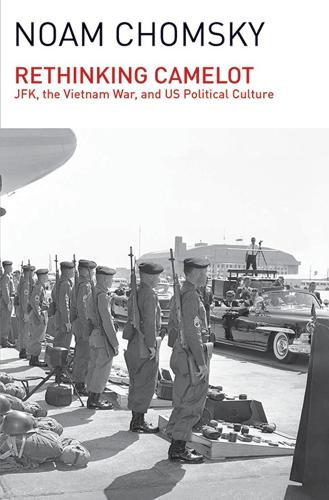
Rethinking Camelot
by
Noam Chomsky
Published 7 Apr 2015
Another was bringing “the terrors of the earth” to Cuba, in the words of Kennedy’s close associate historian Arthur Schlesinger. Kennedy’s terrorist war against Cuba, which was no small affair, was a major factor in bringing about what Schlesinger described accurately as “the most dangerous moment in history,” the Cuban missile crisis. Kennedy is much lauded for his cool courage in bringing the crisis to an end. The truth, now well established by scholarship,4 sheds little glory on the Camelot image. At the peak moment of the crisis, when Kennedy’s subjective assessment was that the probability of nuclear war was 1/3 to 1/2, he decided to reject Khrushchev’s offer to end the crisis by simultaneous public withdrawal of Soviet missiles from Cuba and US missiles from Turkey—obsolete missiles for which a withdrawal order had already been given because they were being replaced by far more lethal and threatening Polaris submarines.
…
Chomsky, For Reasons of State, Pantheon, 1973. 2. Marc Selverstone, “It’s a Date: Kennedy and the Timetable for a Vietnam Troop Withdrawal,” Diplomatic History 34.3, June 2010. 3. See N. Chomsky, “Murdering History,” in Year 501: The Conquest Continues, South End, 1993. 4. See particularly Sheldon Stern, The Cuban Missile Crisis in American Memory: Myths versus Reality, Stanford, 2012. 5. John H. Coatsworth, “The Cold War in Central America, 1975–1991,” The Cambridge History of the Cold War, vol. III, 2010. Notes to the Introduction 1. See 501 for much further discussion and sources. Also DD, and earlier work cited there. 2.
…
Informed Dissent (Vietnam Generation, Burning Cities Press, 1992) Duncanson, Denis. Government and Revolution in Vietnam (Oxford, 1968) Fall, Bernard. Last Reflections on War (Doubleday, 1967) ———, and Marcus Raskin, eds. Vietnam Reader (Vintage, 1965) Garthoff, Raymond. Reflections on the Cuban Missile Crisis (Brookings, 1987) Gibbon, William Conrad, ed. The U.S. Government and the Vietnam War, part II, 1961-1964 (Princeton, 1986) Giglio, James. The Presidency of John F. Kennedy (Kansas, 1991) Griffen, William, and John Marciano. Lessons of the Vietnam War: A Critical Examination of School Texts (Rowman and Allanheld, 1979) Herman, Edward.
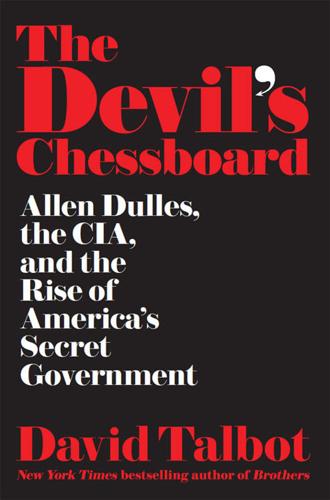
The Devil's Chessboard: Allen Dulles, the CIA, and the Rise of America's Secret Government
by
David Talbot
Published 5 Sep 2016
Rumsfeld arranged for Dulles to speak about the CIA and Cuba to the 88th Congressional Club in March 1963, an event the ambitious congressman declared a “tremendous success.” Cuba remained the source of greatest friction within the Kennedy government. In October 1962, these tensions came close to exploding during the Cuban Missile Crisis, when virtually the entire national security circle around the president urged him to take aggressive actions that would have triggered a nuclear conflagration. JFK’s lonely stand—which was supported only by his brother and McNamara within his inner council—was a virtuoso act of leadership.
…
By 1963, the military and espionage officials in Kennedy’s government were all too aware of their commander in chief’s dedication to peace—a growing commitment to détente with the Communist world that, in the minds of the national security high command, demonstrated JFK’s naïveté and weakness and put the country at risk. The leadership ranks in the Pentagon and the CIA were convinced that the Cuban Missile Crisis had been the ideal opportunity for Kennedy to finally knock out the Castro regime by launching a full-scale military invasion or even a nuclear broadside. The peaceful resolution of the crisis left Kennedy’s warriors in an ugly mood. Daniel Ellsberg, who later became famous for leaking the Pentagon Papers, observed the seething fury among uniformed officers when he was serving as a young defense analyst: “There was virtually a coup atmosphere in Pentagon circles.
…
“The Kennedy administration,” LeMay growled, “thought that being as strong as we were was provocative to the Russians and likely to start a war. We in the Air Force, and I personally, believed the exact opposite.” LeMay and his generals continued to angrily replay the “lost opportunity” of the Cuban Missile Crisis: it was the moment “we could have gotten the Communists out of Cuba,” LeMay declared. “We walked Khrushchev up to the brink of nuclear war, he looked over the edge, and had no stomach for it,” said General David Burchinal, who served as LeMay’s deputy during the crisis. “We would have written our own book at that time, but our politicians did not understand what happens when you have such a degree of superiority as we had, or they simply didn’t know how to use it.
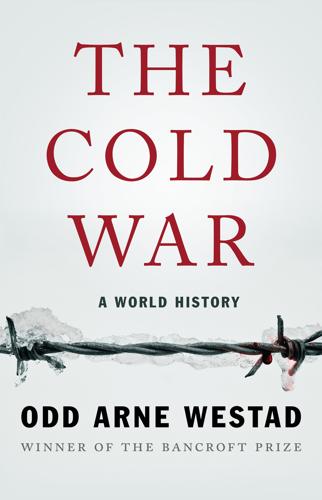
The Cold War: A World History
by
Odd Arne Westad
Published 4 Sep 2017
To JFK, the 1960s was a decade of enormous danger and enormous opportunity. The world was plastic, and it was up to the United States to mold it into a new shape. Over time, Kennedy’s belligerent approach would be tempered by events. In a presidency tragically cut short, the defining moment was the Cuban missile crisis, when the Soviet Union and the United States got closer to nuclear war than at any other point during the Cold War. In the time that was left to him after that crisis in October 1962, Kennedy was more serious about seeking compromise and therefore a lasting peace. But he always remained strongly ideological.
…
The president and all of Washington viewed Soviet actions as preparations for an attack on the United States and a means through which (legitimate) US control of the Western Hemisphere could be thwarted. At the start of the crisis, they would rather risk war than accept compromise. Kennedy’s main strength throughout the Cuban missile crisis of 1962 was that, in spite of his hard line overall, he still gave diplomacy a chance. As the world held its breath on 23 October, waiting to see what would happen when Soviet ships bound for Cuba were intercepted by the US Navy, Kennedy secretly explored how the crisis could be resolved and nuclear war avoided.
…
Khrushchev, who knew the world was teetering on the brink of war, decided to accept. Conscious that time was running out, he had his acceptance read out on the open airwaves of Radio Moscow. He even had the broadcast repeated twice. On the morning of 28 October the immediate crisis was over. The Cuban missile crisis was the most dangerous nuclear confrontation between the Soviet Union and the United States during the Cold War (though not the only one). Historians have been battling over who won and who lost. The real answer is, of course, that everyone won, since nuclear war was avoided. But it is also clear that, by being forced to take his missiles out of Cuba in such an open and visible fashion, Khrushchev lost the most.

How Not to Network a Nation: The Uneasy History of the Soviet Internet (Information Policy)
by
Benjamin Peters
Published 2 Jun 2016
Kennedy’s top men to discuss the impending peril of Soviet cybernetics, only to have his meeting interrupted by the announcement that surveillance satellites had just uncovered photos of Soviet missiles in Cuba.109 By the time the dust settled after the Cuban missile crisis, Soviet cybernetics no longer agitated the administration, which had reviewed the science and did not deem it an urgent threat. It is a strange twist of history, then, that the international crisis that is considered the zenith of cold war hostility (the Cuban missile crisis) also defused and derailed mounting American anxieties about the “Soviet cybernetic menace.”110 Although U.S. and Soviet intelligence officers alternately fretted about or enthused over the possibilities of a cybernetically coordinated Soviet power, the facts about the practical debates among Soviet scientists point in a very different direction.
…
The next chapter extends and complicates this theme in its history and analysis of the central and longest-lasting attempt to network the Soviet Union. 4 Staging the OGAS, 1962 to 1969 The year 1962 proved to be a tumultuous one for the world. Khrushchev’s grasp on the reigns of the Soviet state began to slip in the face of mounting criticism, and Kennedy’s Bay of Pigs invasion metastasized into the Cuban missile crisis, probably the closest the world has yet come to a nuclear world war.1 Behind the scenes to these potentially cataclysmic situations, a small team of Soviet cyberneticists who were located in Kiev and Moscow were committed to building “electronic socialism” under the guise of the All-State Automated System, or OGAS.
…
See also ARPANET (Advanced Research Projects Agency Network); ASU (avtomatizirovannaya sistema upravleniya); OGAS (obshche-gosudarstvennaya avtomatizirovannya sistema) project aborted attempts, 12 beliefs and debate about, 8, 169 and chess, 176, 178–180 civilian, 91, 94, 97 and closed cultures, 192 definitions of, 10 distributed, 55, 94, 96, 100, 120 EASU (Economic Automatic Management System), 81, 86–87, 91, 103–104 global-local, 121–122 heterarchical, 57, 96, 175 and human condition, 203–204 literature on, 8–9 military, 7, 12, 83, 86–89, 93–94, 144 national, 54–56, 97–98, 100, 119–120 packet-switching, 94–96, 198, 200 and private interests, 200, 202–203 rational system for economic control, 101–105 and social change, 171–172 survivable, 95, 97 Unified Communication System (ESS), 81, 97–101, 103–104 Computers brain-computer analogy, 18, 27, 95–96, 100, 118–119 chess programs, 179 and cybernetic sciences, 16, 37 and economic calculations, 84–85 first electronic computers, 126 and military innovations, 83 minds as, 18, 37–38, 53–54, 119 and nuclear bombs, 25 personal, 186 Soviet term for, 10 Soviet terms for, 38 Computers, Chess, and Long-Range Planning, 177 Computer technology, 3, 8, 104–105 Conditioned reflexes, 34, 40 Cooley, Charles Horton, 55, 202 Council for Cybernetics, 44 Council of Ministers, 214 CSA (tsentral’noe statisticheskoe upravleniye). See Central Statistical Administration (CSA) Cuban missile crisis, 45 Cybernetic Revolutionaries: Technology and Politics in Allende’s Chile, 9 Cybernetics, 3, 11–12. See also Economic cybernetics; Soviet cybernetics American consolidation of, 17–24 brain-computer analogy, 18, 27, 95–96, 100, 118–119 Chile, 27–28 as communication science, 21 and computers, 16, 37 contemporary scholarship, 7–9 defining, 15–16, 45–46 eastern Europe, 28 England, 26–27 feedback loops, 21–22 France, 25–26 heterarchy, 22–24 and information/game theory, 20 Macy Conferences on Cybernetics, 18–19 methodology, 20 and models of mind, 29 origin of term, 17 as postwar systems science, 15, 24 Soviet criticism of, 30–32 vocabulary of, 16, 19 Cybernetics, or Control and Communication in the Animal and the Machine, 17–18, 30, 35–37, 47, 50, 82, 198 Cybernetics: In the Service of Communism, 44, 46 Cybersyn network, 9, 27–28, 54, 197, 199 Cybertonia, 130–136 Danil’chenko, I.
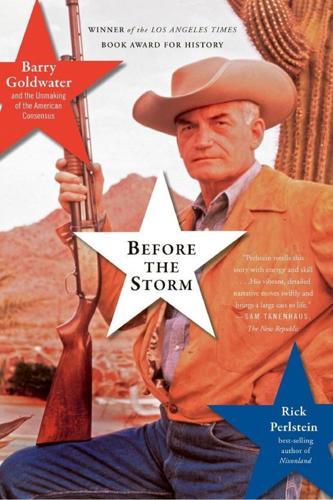
Before the Storm: Barry Goldwater and the Unmaking of the American Consensus
by
Rick Perlstein
Published 17 Mar 2009
Senior officers who had been loyal to the military through the lean years of the 1920s and the 1930s, when it was small, insular, and unpopular, now found their beloved institution overrun with “computer types,” as Strategic Air Command chief Thomas Power put it, who “didn’t know their ass from a hole in the ground”—who demanded that Defense Department staff race hither and yon to collect statistics to justify policies and programs that had existed since Adam. When Kennedy had cruelly scapegoated his Joint Chiefs of Staff for the Bay of Pigs fiasco, the distrust had become almost total. The following fall, when Kennedy called in the Joint Chiefs to tell them of the deal that settled the Cuban Missile Crisis and to congratulate them for their assistance, Navy chief George W. Anderson shouted, “We have been had!” and Air Force chief Curtis LeMay—who was inordinately proud of commanding an operation that rained down more destruction on Tokyo in one day than Hiroshima and Nagasaki combined—thought the American naval blockade was “almost as bad as the appeasement at Munich.”
…
Once upon a time—in August of 1961, perhaps, when Gallup found that 71 percent of Americans supported going to war over Berlin shortly after Kennedy warned that such an engagement could mean “more devastation in several hours than has been wrought in all the wars of human history”; when hardly an eyebrow was raised when President Kennedy told Stewart Alsop, “In some circumstances we must be prepared to use the nuclear weapon at the start, come what may”—Goldwater might have gotten away with it. Not after the Cuban Missile Crisis. Not after the test-ban treaty. Now, raising terrifying doubts about the entire nuclear program, alone, on the fly, with no more cover than vague promises of “classified information,” was enough to make it sound like Goldwater was courting either political or planetary suicide. Goldwater’s friends could only defend him by revealing classified information or by defying their civilian leader, McNamara.
…
Kubrick could not have known that McGeorge Bundy had warned Kennedy in January of 1961 that “a subordinate commander, faced with a substantial Russian military action, could start the thermonuclear holocaust on his own initiative if he could not reach you (by failure of communication at either end of the line).” Kubrick understood nuclear war’s built-in absurdities well enough to be able to imagine it. Cut to the cavernous War Room, where the President’s top military and civilian advisers are gathered around a giant table (just like the conclave President Kennedy convened to defuse the 1962 Cuban Missile Crisis, where Strategic Air Command chief Tommy Power’s advice was to preempt the problem by—in the words of his alter ego in Strangelove, General Buck Turgidson—“hitting them with everything we’ve got”). As the simpering President (he looks like Adlai Stevenson) fervidly negotiates with the Soviet premier over the phone to convince him not to unleash his arsenal in retaliation, the Soviet ambassador steps into the room to explain the futility of the entire discussion: Any nuclear explosion over the Motherland, he dryly explains, will automatically set off a new, top secret “doomsday machine” with the power to destroy all life on earth.

Radical Uncertainty: Decision-Making for an Unknowable Future
by
Mervyn King
and
John Kay
Published 5 Mar 2020
On Tuesday, 16 October 1962, Kennedy was informed that a U-2 reconnaissance flight had produced evidence of Russian missile sites under construction in Cuba. The photographs were presented to a meeting in the White House by the CIA. Those present formed a group of senior Cabinet members and officials, later to be called the Ex-Comm, which met almost continuously for the thirteen days of what became known as the Cuban Missile Crisis. The prospect of nuclear missiles based so close to the US mainland was unacceptable. How should the President respond? Rather quickly, the choices were narrowed down to two: a naval quarantine that would intercept further Russian ships en route to Cuba, or an airstrike on all military installations in Cuba followed by an invasion.
…
The mistakes made by people who enjoyed the flattery of supportive sycophants – George W. Bush planning the Iraq war, or Dick Fuld leading Lehman to self-destruction – contrast with the achievements of those who were not afraid of honest critique: Alfred Sloan building the world’s most successful corporation, the chastened John F. Kennedy responding to the challenge of the Cuban Missile Crisis. A narrative was in the minds of the Republican ideologues in the George W. Bush administration who believed that the rapid establishment of a stock exchange in Iraq was a central building block of stability and democracy, but it was a narrative constructed from a priori assertions rather than from specific – or any – knowledge of Iraqi politics and culture.
…
A., ‘USS Crisis: Can the Pension System be Reformed?’, Times Higher Education (6 Sept 2018) Keating, J., ‘In his Heart, Rick Santorum Knows that Dutch People are Forcibly Euthanized’, Foreign Policy (12 Mar 2012) Kennedy, G., The Art of Persuasion in Greece (London: Routledge, 1963) Kennedy, R. F., Thirteen Days: A Memoir of the Cuban Missile Crisis (New York: Norton, 1999) Kennes, R. and Smets, P., ‘The Transferable Belief Model’, Artificial Intelligence , Vol. 66, No. 2 (1994), 191–234 Keren, G., ‘A Tale of Two Systems: A Scientific Advance or a Theoretical Stone Soup? Commentary on Evans and Stanovich (2013)’, Perspectives on Psychological Science , Vol. 8, No. 3 (2013), 257–62 Keren, G. and Schul, Y., ‘Two Is Not Always Better than One: A Critical Evaluation of Two-System Theories’, Perspectives on Psychological Science , Vol. 4, No. 6 (2009), 533–50 Keynes, G. and Keynes, J.
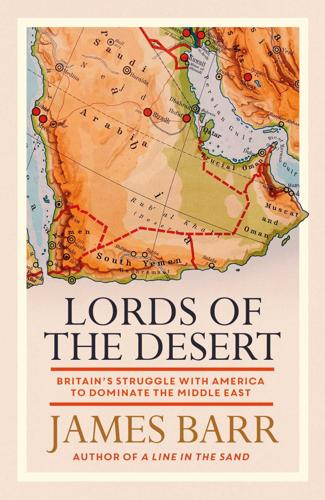
Lords of the Desert: The Battle Between the US and Great Britain for Supremacy in the Modern Middle East
by
James Barr
Published 8 Aug 2018
The Russians rapidly agreed to Nasser’s request and on 1 October 1962 the Soviet Union followed Egypt in recognising the new Yemeni Arab Republic. Within a few days the first of many Egyptian reinforcements started arriving. ‘I sent a company to Yemen and had to reinforce it with 70,000 soldiers,’ Nasser would complain in 1967. He would eventually call Yemen his ‘Vietnam’.6 * * * In a White House caught up in the Cuban Missile Crisis and Vietnam, Yemen was never a priority. ‘I don’t even know where it is,’ John F. Kennedy confessed, when he and Macmillan first discussed the country in November. But the news from Sanaa was nonetheless unwelcome in Washington, because the president was trying to mend fences with Nasser following a National Intelligence Estimate that described the outlook for ‘conservative and western aligned regimes’ in the Middle East as ‘bleak’.
…
Failure to recognise the new regime would antagonise Nasser, while its royalist opponents were so grotesque that active support for them would, as Macmillan was now forced to admit, be ‘politically repugnant’. Following news of further setbacks for the royalists and Yemeni claims that they would not interfere in Aden, on 23 October (in the middle of the Cuban missile crisis) the cabinet agreed to recognise the new government in Sanaa ‘in principle’. But tellingly, it did not set a date when it would do so.12 There was an important reason for that vagueness. A day earlier Macmillan had met the governor of Aden, Charles Johnston, and the cabinet’s main advocates for and against recognition, Lord Home and Duncan Sandys, now secretary of state for the colonies.
…
Macmillan argued that there was a ‘strong case’ for delaying recognition, at least until after a parliamentary debate on the merger of the colony and the protectorate, due to take place in a week’s time.20 * * * While Macmillan procrastinated, the Americans tried to come up with a compromise that might simultaneously please Nasser and the Saudis. Once the Cuban Missile Crisis was over, Kennedy sent a message to Crown Prince Faisal in Riyadh to tell him that he would publish a message restating American support for Saudi Arabia ahead of recognising the new government in Sanaa. Before Kennedy’s message reached Riyadh, however, it was undone by events on the ground in Yemen.

The Great Mental Models: General Thinking Concepts
by
Shane Parrish
Published 22 Nov 2019
It’s harder to take advantage of, or even see, opportunities while in this defensive mode because our priority is saving ourselves—which tends to reduce our vision to dealing with the perceived threat instead of examining the bigger picture. _ By not assuming the worst, Vasili Arkhipov single-handedly avoided nuclear war with the Americans. The man who saved the world On October 27, 1962, Vasili Arkhipov stayed calm, didn’t assume malice, and saved the world. Seriously. This was the height of the Cuban missile crisis. Tensions were high between the United States and the Soviet Union. The world felt on the verge of nuclear war, a catastrophic outcome for all. American destroyers and Soviet subs were in a standoff in the waters off Cuba. Although they were technically in International waters, the Americans had informed the Soviets that they would be dropping blank depth charges to force the Soviet submarines to surface.
…
London: Heinemann and Balestier, 1891. 4 Heather, Peter. The Fall of the Roman Empire: A New History of Rome and the Barbarians. Oxford: Oxford University Press, 2006. 5 Gibbon, Edward. The Decline and Fall of the Roman Empire, New York: Everyman’s Library, 1910. 6 Roberts, Priscilla. Cuban Missile Crisis: The Essential Reference Guide. Santa Barbara: ABC-CLIO, 2012.
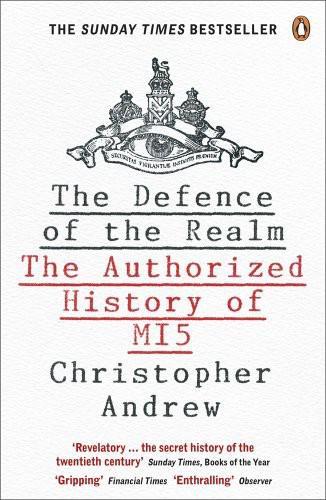
The Defence of the Realm
by
Christopher Andrew
Published 2 Aug 2010
One recalls Mitchell as a ‘civilised, humane man’, considerate in his treatment of junior colleagues. 55 See below, p. 509. 56 Security Service Archives. 57 Security Service Archives. 58 Security Service Archives. 59 Security Service Archives. 60 Interview with Ward by Warwick Charlton, Today, 11 May 1963. 61 Security Service Archives. 62 Security Service Archives. 63 Security Service Archives. 64 Security Service Archives. 65 Security Service Archives. 66 Security Service Archives. 67 Security Service Archives. 68 Security Service Archives. 69 Security Service Archives. 70 Security Service Archives. 71 Security Service Archives. Ward later gave a similarly inflated account of his role during the Cuban Missile Crisis to the writer Warwick Charlton, who published it in Today on 11 May 1963. 72 Scott, Macmillan, Kennedy and the Cuban Missile Crisis, pp. 104–7. 73 Security Service Archives. 74 Security Service Archives. 75 Knightley and Kennedy, Affair of State, ch. 1. 76 Introduction by Lord Denning to 1992 reissue of The Denning Report. 77 Security Service Archives. 78 Security Service Archives. 79 Christopher Andrew, interview with Sir Dick White, 1984. 80 Security Service Archives. 81 Security Service Archives. 82 Security Service Archives. 83 Security Service Archives. 84 Pearson, Profession of Violence, pp. 115–16, 120, 122.
…
Hollis, who is Sir Dick White’s deputy.’46 At the time White gave Hollis his enthusiastic support.47 He later changed his mind, writing in a sympathetic obituary that, though respected within the Service during his nine years as DG, Hollis ‘did not enjoy easy personal relations with its ordinary members who tended to find him reserved and aloof’.48 Some, probably many, did not meet him at all. One staff member who encountered Hollis in the lift and failed to recognize him, said: ‘Oh, we haven’t met. What section are you?’ ‘I am the DG,’ replied Hollis.49 Perhaps the ultimate example of Hollis’s remote management style came during the thirteen days of the Cuban Missile Crisis in October 1962, the most dangerous moment in British history. Though the crisis was caused by the American discovery of Soviet nuclear missile bases under construction in Cuba, the threat to Britain, the United States’ chief ally, was even greater than to America itself. There must have seemed to many Service staff, as to much of the British population, a real danger that the crisis would end in thermonuclear warfare and the obliteration of the United Kingdom.
…
At a meeting with Ward on 28 May 1962, ‘Wood’ discovered that ‘Without our knowledge Ward was used by the Foreign Office . . . to pass off-the-record information to the Russian embassy.’66 A fortnight later D1, Arthur Martin, wrote to Philip Adams of the Foreign Office Security Department to check the truth of Ward’s claim that he and Sir Godfrey Nicholson MP (a distant relative) had ‘assisted the Foreign Office by passing official reports to Ivanov’.67 Adams confirmed that suitably tailored FO material had been channelled to Ivanov via Ward.68 Ward had been used as an intermediary with the Soviet embassy with the personal approval of both the Foreign Secretary, Lord Home, and the PUS, Sir Harold Caccia. The Security Service warned the Foreign Office that Ward was ‘both naive and indiscreet’,69 thus implying that the FO had also been naive to use him. The Foreign Office paid little, if any, attention to the warning. During the Cuban Missile Crisis in October 1962, Ward was used once again, this time on the initiative of the Russians, as a confidential channel for communications between Moscow and London. MI5 ‘again drew the attention of the Foreign Office to the dangers of using Ward for such purposes’.70 Already fond of boasting about his close contacts with the highest in the land, Ward interpreted his use as a back-channel between Moscow and London at the most dangerous moment of the Cold War as proof that Whitehall had assigned him a major role as an intermediary between East and West.
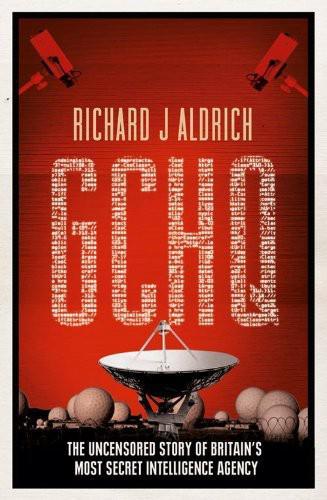
GCHQ
by
Richard Aldrich
Published 10 Jun 2010
Indeed, NSA staff who listened in to Soviet radars and fighter controllers during the Gary Powers flight argued that he had only been shot down because, quite inexplicably, he was flying at only thirty-five thousand feet and was heading in the wrong direction (British intelligence sources seem to confirm this story).5 In late June 1960 the CIA’s Director, Allen Dulles, confided to a friend that he was sure Powers ‘was not shot down at normal altitude’, but later the CIA and NSA fell into a bitter dispute over exactly how the U-2 had been intercepted by the Soviets.6 The Gary Powers shootdown triggered a major diplomatic confrontation between Moscow, Washington and London. The incident encapsulated many of the wider international trends of the 1960s. During the decade there were major flashpoints such as the Cuban Missile Crisis in 1962 and the Soviet invasion of Czechoslovakia in 1968. There were also serious confrontations in the Third World, the largest being the Vietnam War, which kept the temperature at boiling point. Although engaged in an arms race, East and West had achieved nuclear parity, signalled by the deployment of Soviet missiles which could reach the American homeland.
…
After all, deterrence was supposed to ensure that the north German plains would remain the Cold War’s frozen front, with little likelihood of real conflict. In fact, by the early 1960s a number of crises had created a climate of growing anxiety. Confrontations over Berlin and Cuba, together with the escalating conflict in Vietnam, made war seem somewhat closer. Alarmingly, American sigint had failed to give much warning about the emerging Cuban Missile Crisis in 1962. The Six-Day War in 1967 and the invasion of Czechoslovakia in 1968 were also unsettling for commanders. More generally, throughout the 1960s there was a growing awareness that NATO’s conventional inferiority in numbers, especially in northern Germany, might call for the early use of nuclear weapons to stem the tide of a Warsaw Pact attack.
…
The first vessel in NSA’s Technical Research Ship programme was the USS Oxford, a converted Liberty ship which put to sea in 1961. Its flexibility was immediately apparent as it floated from one trouble spot to another, admittedly at an ambulatory pace of just eleven knots. It proved especially successful during the Cuban Missile Crisis. Accordingly, during the 1960s four more ships in the Oxford class were launched: the Georgetown, the Jamestown, the Belmont and the Liberty. Three smaller ships joined the listening fleet, based on converted military transports: the Valdez, the Muller and finally the Pueblo, which entered service in 1968.
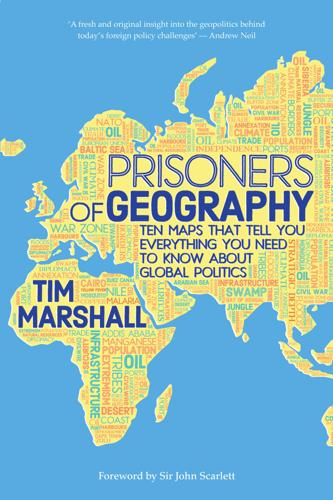
Prisoners of Geography: Ten Maps That Explain Everything About the World (Politics of Place)
by
Tim Marshall
Published 10 Oct 2016
For most of the nineteenth century, foreign policy was dominated by expanding trade and avoiding entanglements outside the neighborhood, but it was time to push out and protect the approaches to the coastlines. The only real threat was from Spain—it may have been persuaded to leave the mainland, but it still controlled the islands of Cuba, Puerto Rico, and part of what is now the Dominican Republic. Cuba in particular kept American presidents awake at night, as it would again in 1962 during the Cuban Missile Crisis. The island sits just off Florida, giving it access to and potential control of the Straits of Florida and the Yucatán Channel in the Gulf of Mexico. This is the exit and entry route for the port of New Orleans. Spain’s power may have been diminishing toward the end of the nineteenth century, but it was still a formidable military force.
…
The English language even has two sayings that demonstrate how deeply ingrained the idea is: “Give them an inch and they’ll take a mile,” and President Theodore Roosevelt’s maxim of 1900, which has now entered the political lexicon: “Speak softly and carry a big stick.” The deadly game in this century will be how the Chinese, Americans, and others in the region manage each crisis that arises without losing face and without building up a deep well of resentment and anger on both sides. The Cuban Missile Crisis is generally considered an American victory; what is less publicized is that several months after Russia removed its missiles from Cuba, the United States removed its Jupiter missiles (which could reach Moscow) from Turkey. It was actually a compromise, with both sides, eventually, able to tell their respective publics that they had not capitulated.
…
Geological Survey, 248 Ural Mountains, 8–9, 11–13, 15–17, 28, 92 Uruguay, 215, 230–31, 232, 233–34, 236 Ürümqi, 36–37, 50, 57 USSR, 13–14, 16, 199, 212. See also Russia Afghanistan invasion (1979), 18–19, 177, 181 Cold War, 81, 94, 107, 118, 198–200, 205, 221, 235, 251–53 collapse of, 17, 19–21, 28, 30, 95, 253 Cuban Missile Crisis (1962), 72–73 space exploration, 261–62 Utah, 62–63, 71 Uzbekistan, 8–9, 20, 133 Vaca Muerta shale formation, 236–37, 238 Venezuela, 34, 215, 218, 220, 221, 227, 229, 230–31, 233–34, 235 Victoria Island, 240–41 Vietnam, 36–37, 45–46, 55, 57–58, 76, 78–79, 191 Vladivostok, 8–9, 19, 36–37, 45, 194 Wang Jing, 227–28 War of the Pacific (1879), 220–21 Warsaw Pact, 13–14, 20–21, 97 Washington, George, 74 water supplies, 47, 120–22, 125, 131–32, 179–80, 191, 207, 218, 228, 232, 261 West Bank, 142, 153, 153–56 Western Europe, 86–87, 88–108.
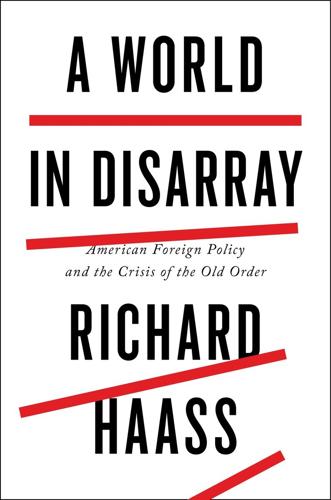
A World in Disarray: American Foreign Policy and the Crisis of the Old Order
by
Richard Haass
Published 10 Jan 2017
See weapons of mass destruction Chemical Weapons Convention, 61 China, 79–92, 223–24 and Africa, 194 and Asia-Pacific region, 9, 89, 90–91, 180–81, 182–83, 263–64, 328n12 and Cold War, 47, 50, 80, 84–85 and cyberspace, 143 and Gulf War, 87–88 and humanitarian concerns, 82–84, 229–30 and Libya intervention, 162 and North Korea, 88–89, 241, 263–64 and South Asia, 125, 128–29, 265 and Taiwan, 58, 84–87, 90 and trade, 80–82, 87, 89, 90, 146 and U.S. debt, 295–96 U.S. relations with, 79–92, 216–24 Chou En-lai, 80 Churchill, Winston, 95 civil conflict, 110–22 in Haiti, 113 in Iraq, 111–12, 154–55, 173–75, 231 in Libya, 163 and Responsibility to Protect, 115–17 Rwanda crisis, 113–15, 116–17 in Somalia, 112–13 and terrorism, 119–22 See also Arab Spring; Responsibility to Protect; Syrian crisis climate change, 10, 89, 138–40, 244–45 Clinton (William J.) administration, 93, 109, 112–13, 128, 177 coalitions of the willing, 200 Cold War, 37–54, 210 and arms control, 42–44, 50 and balance of power, 38–39, 41, 50 and bipolarity, 46–47, 202 and China, 47, 50, 80, 84–85 and Cuban missile crisis, 48–50 end of, 2–3, 51–54, 72, 93, 103, 210 and Europe, 50–51, 70, 188–89 and nuclear weapons, 41–42 and South Asia, 183, 184 and sovereignty, 45–46, 51 spheres of influence, 47–48 World War II origins of, 37–38 Concert of Europe, 24–25, 26 Conference of Parties (COP21), 139–40 confidence-building measures (CBMs), 262 containment, 46, 53, 218, 289 Crimea. See Ukraine Cuban missile crisis, 48–50 cyberspace, 10, 140–44, 245–47 Czechoslovakia, 106, 108 decolonization, 61–63, 67–68, 71, 72 détente, 49 deterrence, 42, 43–44, 217, 240 development, 56, 65 See also economics diplomacy, 26–27, 81, 132–33, 219–20, 251, 261, 282–83 Cold War, 44 post–World War II, 57, 65, 67 and South Asia, 184–85 and Syrian crisis, 171–72 and weapons of mass destruction, 132–33 See also United Nations Doha (Development) Round, 146–47 East China Sea dispute, 90, 181 economics, 9–11, 90, 248–49 and post–Cold War global cooperation, 145–49 post–World War II, 56–57, 65–66 and U.S. policy, 251, 290–92, 329n4 See also monetary systems; trade education, 291, 300–302 Egypt, 63, 69, 157–58, 167, 230, 278 ethnic cleansing, 109 Europe, 188–91, 284–86 Cold War, 50–51, 70 Helsinki Accords, 50–51, 261–62 Partnership for Peace, 95, 96 post–World War II, 61, 69–70 See also European integration; European Union; Yugoslav transition European integration, 35, 61, 73, 188–91 European Union, 97, 108, 143, 188–89, 285–86 Brexit, 1–2, 9, 12, 191 failed states, 111 G-7/G-8, 199 G-20, 199–200 Gadhafi, Muammar, 136, 161 Gates, Robert, 185 GATT (General Agreement on Tariffs and Trade), 57, 65, 145 Genocide Convention, 64, 66–67, 116, 234 Georgia, 96–97, 222 Germany, 32–35, 231 global health, 10, 144–45, 247–48 globalization, 11, 148, 226, 233–34, 244 See also trade Gorbachev, Mikhail, 52–53 Great Depression, 32 great-power relations.
…
There is no end to the literature that examines foreign policy decision making. Some of the best books include Richard Neustadt and Ernest May, Thinking in Time: The Uses of History for Decision-Makers (New York: Free Press, 1986); Graham Allison and Philip Zelikow, Essence of Decision: Explaining the Cuban Missile Crisis (Boston: Addison Wesley, 1999); Morton H. Halperin and Priscilla A. Clapp with Arnold Kanter, Bureaucratic Politics and Foreign Policy, 2nd ed. (Washington, DC: Brookings Institution Press, 2006); and Gordon Goldstein, Lessons in Disaster: McGeorge Bundy and the Path to War in Vietnam (New York: Times Books, 2008).
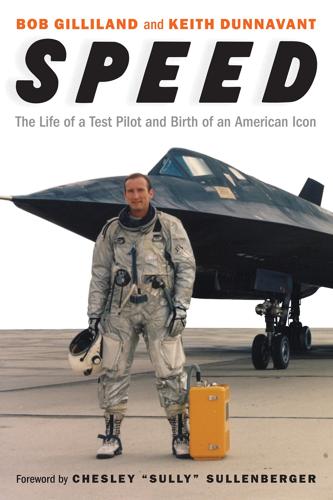
Speed
by
Bob Gilliland
and
Keith Dunnavant
(Wounded by the Bay of Pigs disaster, which pushed his boss Allen Dulles into an early retirement, Bissell left the agency in early 1962, while the first A-12 was still being assembled.) On December 27, 1962, two months after a U-2 piloted by Major Rudolph Anderson and dispatched by President Kennedy was shot out of the sky during the Cuban Missile Crisis, proving the loss of Powers’s plane was no fluke, the air force placed an initial order for six aircraft under the new RS-71 designation. In time this development would be recognized as the birth of Kelly Johnson’s most iconic aircraft. With the election looming and the White House feeling the need for a preemptive strike against hawkish Republican nominee Barry Goldwater, President Johnson made a conscious decision to once again use the country’s most advanced aircraft program to his political advantage.
…
Air Force, 135, 161, 190; and Skunk Works security, 115, 185–86; U-2 reconnaissance program of, 116–19, 139 Civil War, 9 CL-400 “Project Suntan” (Lockheed), 142 coffin corner, 139 Cold War: aerial reconnaissance during, 115–19; and Berlin Airlift resupply mission, 54–56; and the Blackbird program, 133–35, 161; impact of, on aircraft development, 91; and the Korean War, 71; and Soviet capabilities, 75–76; and the space race, 91, 122–24; SR-71 missions during, 202–7; tensions during, 54–55, 66–67, 75–76, 116, 121; and U-2 incident, 118; and U.S. bomber capabilities, 58 Collins, Eileen, 213 Collins, Ken, 190 commercial aviation, 34, 97–98, 140 compressibility, 138 Connally, John, 128 Conquest I (F8F-2 Bearcat), 225 Constellation airliner (Lockheed), 98, 120 Convair, 58, 116, 127, 146 Cook, Everett, 95 Cooper, Gordon, 123 Coors, Giles “Bull,” 18, 172 Copenhagen (Denmark), 46–47, 54 Crew, Jerry, 192 Crickmore, Paul, 144, 152, 202–4, 206 Cross, Carl S., 164 Crossfield, Scott, 91, 131, 199 Cuban Missile Crisis, 135 D-21 drone, 134, 171 Daley, Richard M., 219 d’Angleterre, Hotel (Copenhagen), 47 Daniel, Walt, 133, 164 David Clark Company, 122 Davis, Glenn, 45 Davis, Mel, 35–37, 40, 43–44, 47 DC-8 airliner (Douglas), 140 dead-stick landings, 104, 105–6, 130 Desoto Oil and Gas Trust, 201–2 Detroit Aircraft Corporation, 97 Doolittle, Jimmy, 60 Douglas Aircraft: C-47 “Gooney Bird,” 56; D-558-11 Skyrocket, 91; DC-4 airliner, 34; DC-8 airliner, 140; as defense contractor, 91; start of, 101 drone program, 134, 170–71 Dulles, Allen W., 116, 135 Earhart, Amelia, 86, 98 East Berlin (Germany), 55, 208 Eastham, Jim: as A-12 test pilot, 127, 132; awards and honors of, 132; at Hughes, 127; during SR-71’s maiden flight, 163–64, 169, 171; as SR-71 test pilot, 149; and YF-12A maiden flight, 131 Edwards, Glen, 88, 89 Edwards Air Force Base: naming of, 89; RJG’s work out of, 105; SR-71 testing at, 1–2; X-1 program at, 91; YF-12As testing at, 133.
…
Army), 3, 5–7 36th Fighter-Bomber Wing, 66 Thompson, Warren, 204 three-point landings, 59 Thrust supersonic car, 218 Thunderhead, Operation, 193 titanium, 144–45 Torick, Ray, 107–71 Torino (Italy), 108 Trans World Airlines, 34, 98 Trippe, Juan, 34 Truman, Harry, 41–42, 44, 47, 71, 88 Tymczyszyn, Joe, 131–32 Tyson, Mike, 173 U-2 (Lockheed): challenges flying, 116, 139; CIA’s program of, 116, 117–19; compared to the A-12 Blackbird, 125–26; during the Cuban Missile Crisis, 135; design challenges of, 139; development of, 116–17, 120; Kelly Johnson’s design for, 116, 139; Kelly Johnson’s interview regarding, 125; limitations of, 139, 142–43; and Powers incident, 118–19, 125, 190, 204–5; Tony LeVier as test pilot of, 117 Udvar-Hazy Center (Smithsonian), 210, 225 University Club (Memphis TN), 12 University of Michigan, 98 University of Tennessee, 104 unstarts, 130, 150, 183 V5 program (naval aviator training), 27–28 Vanderbilt University, 5, 32–33, 36, 50 Varney, Walter, 97 Vida, J.
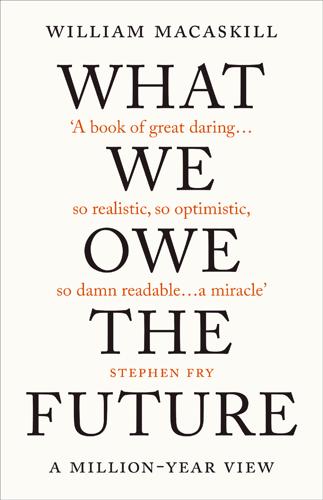
What We Owe the Future: A Million-Year View
by
William MacAskill
Published 31 Aug 2022
And there are several reasons to think that the risk of great-power war in the next hundred years remains unacceptably high. First, it seems plausible that maintaining the Long Peace has involved a healthy dose of luck in addition to structural factors like economic growth and international cooperation. We know that the United States and the Soviet Union came close to war during the Cuban Missile Crisis, for example. But this was hardly the Cold War’s only moment of danger. Tensions were also high during the Berlin crises, the Suez Crisis, the 1973 Arab-Israeli war, multiple crises in the Taiwan Strait, and proxy wars in Korea and Vietnam, as well as on several occasions when early-warning systems failed and sent false alarms of incoming nuclear attacks.61 World War II has been characterized in part as hugely unlucky, due to Hitler’s unlikely rise.62 But the peace that followed has also been partly the result of chance.63 Second, changes in the distribution of global economic and military power may increase the risk of conflict.
…
The overall destructive power of explosive weapons therefore increased enormously over the course of just two decades, with the vast majority of those weapons built by the United States and the Soviet Union.50 It would be a mistake to infer that, because an all-out nuclear war never occurred, it was very unlikely to have occurred. Indeed, there were several close calls. During the Cuban Missile Crisis, John F. Kennedy put the chance of all-out nuclear war at “somewhere between one in three and even.”51 In 1979, US command centres detected a large number of incoming nuclear missiles, causing them to begin preparing for their own counterstrike. But when senior commanders checked the raw data to confirm the strike, they saw no evidence of incoming missiles.
…
See catastrophes, global; climate change; collapse, civilisational; extinction, human; recovery, civilisational; resilience, societal and civilisational; stagnation, civilisational Clarke, Arthur C., 105–106 Clarkson, Thomas, 52 clean energy, long-term benefits of, 24–26 Clear Air Task Force, 232 climate change addressing neglected problems, 230–231 agricultural recovery from extreme catastrophe, 133 averting civilisational collapse, 161–162 the benefit of future generations, 10–11 civilisational collapse resulting from, 134–138 deforestation and megafauna extinction, 30–31 effects of the intuition of neutrality, 175–176 evaluating future interventions, 228 expected value theory as decisionmaking tool, 39–40 fossil fuel depletion, 138–141 the impact of vegetarianism, 231–232 long-term consequences, 24–25 nuclear winter, 129 rigidity following early plasticity, 42–43 See also environmental destruction climate sensitivity, 42 cloning, 62, 156 coal use, 134–135, 139–140 Cold Takes (Karnofsky), 253 Cold War crises threatening the Long Peace, 114 division of Korea, 41 effect on the quality of life, 116 engineered pathogens, 114 governing nuclear weapons, 41–42 collapse, civilisational defining, 124 global nuclear war, 128–131 Parfit’s population ethics, 168–169 the Roman Empire, 122–124 through climate change, 134–138 through fossil fuel depletion, 138–141 through long-term stagnation, 161–163 colonialism, 3 evolutionary divergence and reconvergence, 96 projecting future trends, 21 slavery and, 48 comet, risk of collision with, 106, 113 communication building career capital, 238–239 connectedness of people, 27–28 rapid technological progress in, 147–148 communism: cultural and values conquest, 92 competition: cultural evolution, 58–59 Condorcet, Nicolas de, 66–67 Confucianism, 75–79 connectedness of people, 27–28 consciousness, the evolution of, 191–192 consequentialists, 76, 241 conservation: preventing values lock-in, 99 Constitution, US, 23–24, 41 consumption decisions, the impact of, 231–233 contingency of the abolition of slavery, 49, 62–70 economic growth, 149 evolution of moral norms, 70–71, 84 expected contingency of values, 55–62 historical, 224 surviving a global catastrophe, 133 See also significance, persistence, contingency (SPC) framework convergent evolution, 56–57 corporal punishment, 53, 67–68 Cotra, Ajeya, 86, 90 cotton cultivation, 64 COVID-19 pandemic building career capital during, 238 culturally diverse responses to, 96–97 death and economic tolls, 107 engineered pathogens and, 113 vaccine development, 96, 238 Cowen, Tyler, 147–148 critical level view of wellbeing, 185–186 cryopreservation, 85 Cuba: societal resilience, 127 Cuban Missile Crisis, 114, 128 Cugoano, Ottobah, 52 cultural diversity charter cities, 100 COVID-19 response, 96–97 cultural experimentation and the abolition of slavery, 99 predicting the duration of civilisational stagnation, 157–158 cultural evolution building a morally improved world, 100 contingency and persistence of moral changes, 84 cultural conquest and values lock-in, 92–95 cultural divergence and reconvergence, 95–97 the effects of long-term stagnation, 161 fitness landscape, 58–62 Daniell, Marcus, 239 Daoism (China), 76–77 Dartnell, Lewis, 138–140 dead hand problem, 54 death the bombing of Hiroshima and Nagasaki, 126–127 COVID-19, 107 effects of fossil fuel consumption, 24–25 electricity production, 25(fig.)

There Is Nothing for You Here: Finding Opportunity in the Twenty-First Century
by
Fiona Hill
Published 4 Oct 2021
Taking notes helped commit things to memory as well as providing material to refer back to later in my finished writing. My notes were an invaluable source. They assisted my career development, even though they seemed to define me. Graham Allison himself had launched his career as the notetaker for a series of seminars at Harvard about the Cuban missile crisis when he was a graduate student working on his PhD in the Government Department. He turned those notes into his dissertation and then a best-selling political science book, Essence of Decision. The notetaking and the subsequent book launched his career as a Harvard professor and later as the youngest Harvard dean and founder of the Kennedy School.
…
Back in the 1980s, Trump had proffered himself as Reagan’s arms control negotiator in magazine interviews. He had bragged that he could easily reach a deal if he just got the chance to sit down with Gorbachev. In 1990 he told Playboy Magazine that nuclear war was the “ultimate catastrophe” and he personally wanted to do something about it. He had been sixteen during the trauma of the Cuban missile crisis in the 1960s and had then had to contemplate the rerun of a war scare in the 1980s. Trump had an uncle who was a nuclear physicist at MIT, so by some process of family and genetic osmosis, he believed he already fully understood the issue. And he was convinced that his business experience and personal charisma would sway Gorbachev and any subsequent Soviet or Russian leader into agreeing to reduce or even eliminate weapons.
…
(Caracas: UNESCO International Institute for Higher Education in Latin America and the Caribbean, 2021), 45, https://www.iesalc.unesco.org/en/wp-content/uploads/2021/03/Women-Report-EN-080321.pdf. 60 percent of schoolgirls: Denise Hamilton, “Changing Lifestyles: Prostitution Rising as Tough Times Wear on Soviet People,” Los Angeles Times, November 12, 1991, https://www.latimes.com/archives/la-xpm-1991-11-12-wr-1528-story.html. Essence of Decision: Graham T. Allison, Essence of Decision: Explaining the Cuban Missile Crisis (Boston: Little, Brown, 1971). push the bank: Elena Fabrichnaya, “How Russia’s central bank chief held the line,” Reuters, September 26, 2016, https://www.reuters.com/article/us-russia-cenbank-nabiullina-insight-idUSKCN11W166. “combat the strong stereotypes”: Hill and Gaddy, Mr. Putin, 462–463.

Enlightenment Now: The Case for Reason, Science, Humanism, and Progress
by
Steven Pinker
Published 13 Feb 2018
The Doomsday Clock, despite adorning a journal with “Scientists” in its title, does not track objective indicators of nuclear security; rather, it’s a propaganda stunt intended, in the words of its founder, “to preserve civilization by scaring men into rationality.”70 The clock’s minute hand was farther from midnight in 1962, the year of the Cuban Missile Crisis, than it was in the far calmer 2007, in part because the editors, worried that the public had become too complacent, redefined “doomsday” to include climate change.71 And in their campaign to shake people out of their apathy, scientific experts have made some not-so-prescient predictions: Only the creation of a world government can prevent the impending self-destruction of mankind.
…
Much of the credit for the absence of nuclear war between great powers must go to the forces behind the decline of war between great powers (chapter 11). Anything that reduces the risk of war reduces the risk of nuclear war. The close calls, too, may not depend on a supernatural streak of good luck. Several political scientists and historians who have analyzed documents from the Cuban Missile Crisis, particularly transcripts of John F. Kennedy’s meetings with his security advisors, have argued that despite the participants’ recollections about having pulled the world back from the brink of Armageddon, “the odds that the Americans would have gone to war were next to zero.”92 The records show that Khrushchev and Kennedy remained in firm control of their governments, and that each sought a peaceful end to the crisis, ignoring provocations and leaving themselves several options for backing down.
…
Nuclear safety features prevent accidents: Mueller 2010a, pp. 100–102; Evans, Ogilvie-White, & Thakur 2014, p. 56; J. Mueller, “Fire, Fire (Review of E. Schlosser’s ‘Command and Control’),” Times Literary Supplement, March 7, 2014. Note that the common claim that the Soviet navy officer Vasili Arkhipov “saved the world” during the Cuban Missile Crisis by overruling an embattled submarine captain who was about to fire a nuclear-tipped torpedo at American ships is cast in doubt by Aleksandr Mozgovoi’s 2002 book Kubinskaya Samba Kvarteta Fokstrotov (Cuban Samba of the Quartet of Foxtrots), in which Vadim Pavlovich Orlov, a communications officer who took part in the events, reports that the captain had spontaneously backed off from his impulse: Mozgovoi 2002.
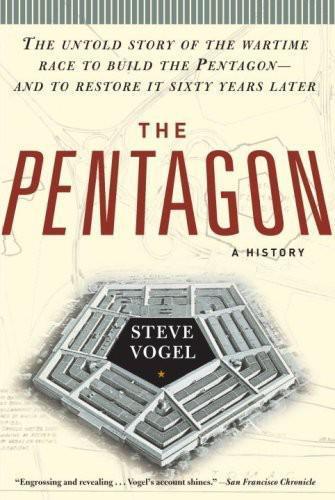
The Pentagon: A History
by
Steve Vogel
Published 26 May 2008
Brugioni, Eyeball to Eyeball: The Inside Story of the Cuban Missile Crisis, 415, 398; Raymond, Power at the Pentagon, 10–12. A private elevator Ibid.; Goldberg, The Pentagon, 144; National Military Command Center System history draft, NMCC, 18 Aug. 1986, OSD HO. The reality was strange enough George C. Wilson, “From Strangelovian to Prosaic,” WP, 10 July 1976; Raymond, Power at the Pentagon, 10–12. Yet the National Military Brugioni, Eyeball to Eyeball, 399–400. “It was a means” Transcript, forum on Fortieth Anniversary of the Cuban Missile Crisis, 18 Oct. 2002, Harvard University, John F. Kennedy School of Government, www.iop.harvard.edu/pdfs/transcripts/cuban_missile_crisis_10.18.02.pdf, (hereafter fortieth anniversary transcript, Harvard).
…
“You had to be scared. A mob is an uncontrollable force.” The true and high church It had been almost exactly twenty-five years since George Marshall and Henry Stimson had moved into the Pentagon in November 1942, but no celebrations were planned in the fall of 1967. In the five years since the Cuban Missile Crisis, the tiny American presence in Vietnam had escalated with the introduction of ground forces in 1965 and would soon reach 500,000 troops, with no end in sight. By October, more than 13,000 Americans had been killed and 86,000 wounded. Public opinion was turning against the war, fired both by the growing number of casualties and by reports on great suffering in Vietnam.
…
Five elements of the building were given historic status: the five outer façades; the center courtyard and surrounding façades; the Mall terrace; the River terrace; and the distinctive five-sided shape. Finally, the figures who had strode along its corridors—from Marshall and Stimson, to Forrestal, Eisenhower, McNamara, Powell, and many others—and the decisions they made, for better or worse, in its command centers and executive suites—about the atomic bomb, the Cuban Missile Crisis, Vietnam, and beyond—pointed irrefutably to the extraordinary role the building had played in American history since World War II. The Pentagon, the nomination concluded, “is of an exceptional level of historic significance.” The Pentagon was now officially a landmark. There was no choice but to fix it.

Accessory to War: The Unspoken Alliance Between Astrophysics and the Military
by
Neil Degrasse Tyson
and
Avis Lang
Published 10 Sep 2018
Thirteen months later, in December 1958, the General Assembly proposed and adopted its first resolution devoted specifically to space, Res. 1348—“Question on the Peaceful Use of Outer Space”—followed by more resolutions in 1959, 1961, 1962, 1963, 1965, and 1966.93 From the viewpoint of a US diplomat deeply involved in disarmament and space policy at the time, the two-year lead-up to the 1963 UN resolution was the breakthrough, setting the terms under which peace might be preserved in space.94 Although a resolution is less potent than a treaty, it may have been the more achievable option, given the prevailing political climate: hot on the heels of the terrifying superpower standoff known as the Cuban Missile Crisis, in the fall of 1962, and the Senate’s 80–19 approval in September 1963 of the groundbreaking Limited Test Ban Treaty, the very existence of which could be substantially chalked up to the near-catastrophe over Cuba.95 At long last, in October 1967, during the presidency of Lyndon Baines Johnson, the United Nations’ pioneering Outer Space Treaty (full title: Treaty on Principles Governing the Activities of States in the Exploration and Use of Outer Space, Including the Moon and Other Celestial Bodies) became international law.
…
Among them were the worsening prospects of the Vietnam War; the attempted invasion of Cuba at the Bay of Pigs in April 1961; two atmospheric US nuclear tests in July 1962 that interfered with radio transmissions, disabled several satellites, and contaminated four Midwestern states with radioactive iodine; and a plan by the Atomic Energy Commission to detonate up to six hydrogen bombs at the mouth of a valley on Alaska’s seacoast in order to create an instant artificial harbor.124 Add the humiliation of a Soviet citizen becoming the first human to orbit Earth. Add, too, the growing awareness that space debris and nuclear radiation posed enormous dangers to astronaut flights and orbiting satellites. Soon after the Cuban Missile Crisis pushed the USA and USSR alarmingly close to nuclear war in the fall of 1962,125 the Soviet Union increased its retaliatory arsenal. Secretary of Defense Robert McNamara glimpsed the possibility of “a more stable balance of terror.”126 Diplomatic work to address at least the testing of nuclear weapons—work that had been creeping along since the end of World War II—now rocketed ahead.
…
As Secretary of Defense Robert McNamara said in 1992 upon learning this information, “It meant that had a U.S. invasion been carried out . . . there was a 99 percent probability that nuclear war would have been initiated.” See LaFeber, America, Russia, 221, 231–37. See also the detailed account by the Central Intelligence Agency, “Cuban Missile Crisis, 1962, Value of Photo Intelligence,” May 8, 2007, www.cia.gov/library/center-for-the-study-of-intelligence/kent-csi/docs/v44i4a09p_0002.htm to –0015.htm (accessed Sept. 13, 2016; by Apr. 23, 2017, photos had been removed). 96.See, e.g., Edward R. Finch Jr., “Outer Space for ‘Peaceful Purposes,’ ” American Bar Association Journal 54:4 (Apr. 1968), 365–67.
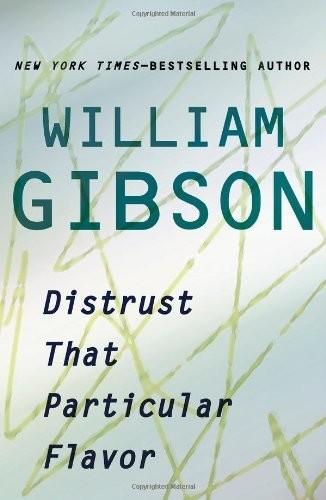
Distrust That Particular Flavor
by
William Gibson
Published 3 Jan 2012
Once, a stove-sized, florally ornate cast-iron fragment that might have been a leftover part of the Brooklyn Bridge. Once, a lovingly crafted plywood box containing exquisitely painted models of every ballistic missile in the arsenals of the U.S. and the U.S.S.R. at the time of its making. This last, redolent of both the Cold War and the Cuban Missile Crisis, had particularly held my attention. It was obviously a military learning aid, and I wondered what sort of lectures it had illustrated. It seemed, then, a relic from a dark and terrible time that I remembered increasingly as a dream, a very bad dream, of childhood. But the image that kept coming to me, last week, was of the dust that must be settling on the ledge of E.
…
They are the italics of the perpetually impatient and somehow perpetually unworldly futurist, seeing his model going terminally wrong in the hands of the less clever, the less evolved. And they are with us today, those italics, though I’ve long since learned to run shy of science fiction that employs them. I suspect that I began to distrust that particular flavor of italics when the world didn’t end in October of 1962. I can’t recall the resolution of the Cuban Missile Crisis at all. My anxiety, and the world’s, reached some absolute peak. And then declined, history moving on, so much of it, and sometimes today the world of my own childhood strikes me as scarcely less remote than the world of Wells’s childhood, so much has changed in the meantime. I may actually have begun to distrust science fiction, then, or rather to trust it differently, as my initial passion for it began to decline, around that time.
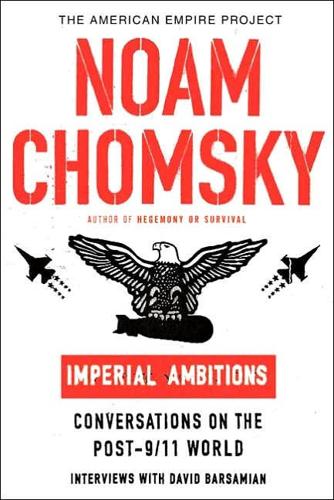
Imperial Ambitions: Conversations on the Post-9/11 World
by
Noam Chomsky
and
David Barsamian
Published 4 Oct 2005
Dean Acheson, a respected elder statesman and a senior adviser to the Kennedy administration, delivered a lecture to the American Society of International Law in which he stated that no “legal issue” arises if the United States responds to any challenge to its “power, position, and prestige.”5 The timing of his statement is quite significant. He made it shortly after the 1962 Cuban missile crisis, which virtually drove the world to the edge of nuclear war. The Cuban missile crisis was largely a result of a major campaign of international terrorism aimed at overthrowing Castro—what’s now called regime change, which spurred Cuba to bring in Russian missiles as a defensive measure. Acheson argued that the United States had the right of preventive war against a mere challenge to our position and prestige, not even a threat to our existence.
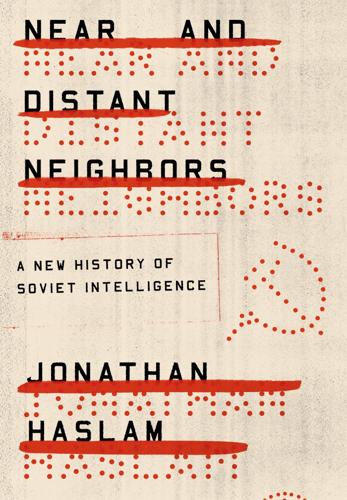
Near and Distant Neighbors: A New History of Soviet Intelligence
by
Jonathan Haslam
Published 21 Sep 2015
The burglars found what they were looking for: three Minox cameras, dictaphones, cipher tables, instructions on communications, and money. Fearing he might flee, and with Khrushchev’s permission, they arrested Pen’kovskii (by then handled by the Americans) on October 22, 1962, the height of the Cuban Missile Crisis. Since all the evidence was in, and he was a weak man in an impossible situation, it was not hard to find Pen’kovskii guilty of having passed to CIA and MI5 more than five thousand photographs of secret information. After standing trial, he was shot on May 18, 1963.75 Serov, too, was punished for being duped so easily.
…
From de la Salle, Moscow secured NATO’s plans for war, including the entire list of targets and the payload destined for the destruction of Warsaw Pact forces.76 Crisis over Missiles in Cuba: Operation Anadyr Lagging behind in the strategic nuclear arms race as the Americans extended their advantage with every passing year, Khrushchev sought a short cut. This was how the Cuban Missile Crisis erupted in October 1962. The Russians always called this the Caribbean crisis—that is to say, it had little to do with Cuba itself. At this point, Georgii Bol’shakov found a place in history. Trained for military intelligence in 1943, Bol’shakov was soon fluent in English. In 1951 he was despatched to the United States under cover as the TASS correspondent in Washington, D.C.
…
Under Khrushchev, the moments of relief from constant confrontation proved fleeting. The pressure exerted on the West in Europe and the Third World was persistent and probing. The détente that the European democracies, in particular, had dreamed of under Khrushchev faded all too rapidly with the Berlin crisis between 1958 and 1961, capped by the Cuban Missile Crisis of October 1962. However much both sides in the Cold War wished to avoid open conflict, the search for marginal advantage proved unending. There would therefore be no relief from the ongoing Cold War, in spite of treaties on the banning of atomic tests and a treaty on the nonproliferation of nuclear weapons.
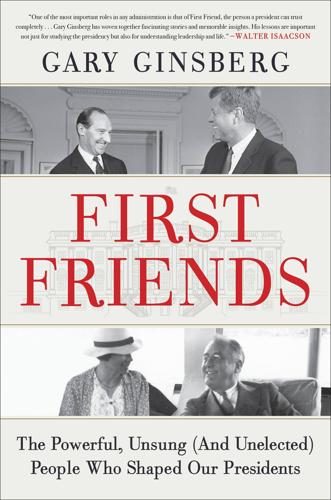
First Friends: The Powerful, Unsung (And Unelected) People Who Shaped Our Presidents
by
Gary Ginsberg
Published 14 Sep 2021
John Fitzgerald Kennedy was sitting in the dining room of “the Suite of Presidents” in Chicago’s historic Blackstone Hotel, eating a bowl of the hotel’s famous Boston clam chowder while he scanned the local newspapers. It was Saturday, October 20, 1962, what would later be known as Day 5 of the Cuban Missile Crisis. The night before, he had headlined a fund-raiser for the Cook County Democratic Party. Now he would fly off for a day of vigorous campaigning for Democratic candidates in the upcoming midterm elections. As Kennedy began reviewing the day’s schedule—which would take him to five states, starting in Milwaukee and ending in Seattle—a phone call came in from his brother Bobby, the attorney general.
…
That Kennedy would choose Ormsby-Gore as one of his key confidants is testament to the fullness of a bond forged at the outset of World War II and deepened over the ensuing two decades. More remarkable still is the fact that the man the president entrusted with such sensitive information during the Cuban Missile Crisis was neither a member of his government nor even a citizen of the country he led. He was the British ambassador to the United States, a lord-in-waiting, a cousin by marriage to a sibling, and a man of exquisite social grace and fierce intellectual firepower (Kennedy often told friends that next to McGeorge Bundy, Ormsby-Gore was the most brilliant man he had ever met).
…
.… He was part of the family, really.” If anyone doubted that claim, they need only notice the black ambassadorial Rolls-Royce parked most days at the White House. By the time Ormsby-Gore walked into the White House “unseen” on Sunday morning, October 21, 1962, Kennedy was six days into the Cuban Missile Crisis, with the United States and the Soviet Union eyeball-to-eyeball in a standoff that seemed to be inching terrifyingly close to nuclear engagement. The night before, Kennedy had finally decided on a blockade as the military approach he would take, overruling generals like Curtis LeMay who favored bombing Cuba.
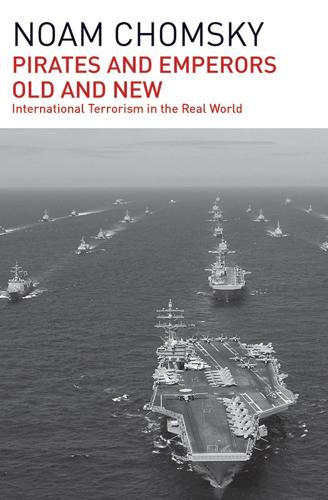
Pirates and Emperors, Old and New
by
Noam Chomsky
Published 7 Apr 2015
President Kennedy launched a campaign to bring “the terrors of the earth” to Cuba, his close confidant historian Arthur Schlesinger writes in his biography of Robert Kennedy, who was assigned the task as his highest priority. The terrorist atrocities were extreme, and as is well known, played a part in what Schlesinger called “the most dangerous moment in history,” the Cuban missile crisis. The terrorist attacks were resumed when the crisis abated, and continued for many years. In Angola, the Reagan Administration—the last holdouts in backing apartheid South Africa—supported the vicious and brutal UNITA army, and continued to do so even its leader, Jonas Savimbi, had been roundly defeated in a carefully monitored free election and even after South Africa had withdrawn support from this “monster whose lust for power had brought appalling misery to his people,” in the words of Marrack Goulding, British ambassador to Angola, who was seconded by the CIA station chief in nearby Kinshasa, who warned that “it wasn’t a good idea” to support the monster “because of the extent of Savimbi’s crimes.
…
Anti-Cuban terrorism was directed by a secret Special Group established in November 1961 under the code name “Mongoose,” involving 400 Americans, 2,000 Cubans, a private navy of fast boats, and a $50 million annual budget, run in part by a Miami CIA station functioning in violation of the Neutrality Act and, presumably, the law banning CIA operations in the United States.18 These operations included bombing of hotels and industrial installations, sinking of fishing boats, poisoning of crops and livestock, contamination of sugar exports, etc. Not all of these actions were specifically authorized by the CIA, but no such considerations absolve official enemies. Several of these terrorist operations took place at the time of the Cuban missile crisis of October–November 1962. In the weeks before, Garthoff reports, a Cuban terrorist group operating from Florida with U.S. government authorization carried out “a daring speedboat strafing attack on a Cuban seaside hotel near Havana where Soviet military technicians were known to congregate, killing a score of Russians and Cubans”; and shortly after, attacked British and Cuban cargo ships and again raided Cuba among other actions that were stepped up in early October.
…
Torture in Latin America, LADOC (Latin American Documentation), Lima, 1987, the report of the First International Seminar on Torture in Latin America (Buenos Aires, December 1985), devoted to “the repressive system” that “has at its disposal knowledge and a multinational technology of terror, developed in specialized centers whose purpose is to perfect methods of exploitation, oppression and dependence of individuals and entire peoples” by the use of “state terrorism inspired by the Doctrine of National Security.” This doctrine can be traced to the historic decision of the Kennedy Administration to shift the mission of the Latin American military to “internal security,” with far-reaching consequences. 18. Raymond Garthoff, Reflections on the Cuban Missile Crisis (Brookings Institution, 1987), 17. 19. Ibid., 16f., 78f., 89f., 98. See the references of note 1. Also Bradley Earl Ayers, The War that Never Was (Bobbs-Merrill, 1976); Warren Hinckle and William Turner, The Fish is Red (Harper & Row, 1981); William Blum, The CIA (Zed, 1986); Morris Morley, Imperial State and Revolution (Cambridge, 1987); Taylor Branch and George Crile, “The Kennedy Vendetta: Our Secret War on Cuba,” Harper’s, August 1975. 20.

The Better Angels of Our Nature: Why Violence Has Declined
by
Steven Pinker
Published 24 Sep 2012
Cognitive landmarks in positive-sum negotiation: Schelling, 1960. 171. Higher value on life: Luard, 1986, p. 268. 172. Khrushchev: Quoted in Mueller, 2004a, p. 74. 173. Carter’s restraint: “Carter defends handling of hostage crisis,” Boston Globe, Nov. 17, 2009. 174. Saving face during the Cuban Missile Crisis: Glover, 1999, p. 202. 175. RFK on Cuban Missile Crisis: Kennedy, 1969/1999, p. 49. 176. Khrushchev and Kennedy pulling on a knot: Quoted in Glover, 1999, p. 202. 177. Cold War as ladder versus escalator: Mueller, 1989. 178. Military aversion to gratuitous killing: Hoban, 2007; Jack Hoban, personal communication, Nov. 14, 2009. 179.
…
The 2004 train bombing in Madrid by an Islamist terrorist group, far from whipping the Spanish into an anti-Islamic lather, prompted them to vote out the government that had involved them in the Iraq War, an involvement many felt had brought the attack upon them. The most consequential discounting of honor in the history of the world was the resolution of the 1962 Cuban Missile Crisis. Though the pursuit of national prestige may have precipitated the crisis, once Khrushchev and Kennedy were in it, they reflected on their mutual need to save face and set that up as a problem for the two of them to solve.174 Kennedy had read Tuchman’s The Guns of August, a history of World War I, and knew that an international game of chicken driven by “personal complexes of inferiority and grandeur” could lead to a cataclysm.
…
Demonstrations and petitions attracted millions of citizens, together with public figures such as Linus Pauling, Bertrand Russell, and Albert Schweitzer. The mounting pressure helped nudge the superpowers to a moratorium and then a ban on atmospheric nuclear testing, and then to a string of arms-control agreements. The Cuban Missile Crisis in 1962 was a tipping point. Lyndon Johnson capitalized on the change to demonize Goldwater in the Daisy ad and called attention to the categorical boundary in a 1964 public statement: “Make no mistake. There is no such thing as a conventional nuclear weapon. For nineteen peril-filled years no nation has loosed the atom against another.

On the Future: Prospects for Humanity
by
Martin J. Rees
Published 14 Oct 2018
These now loom far larger, and they are becoming more probable, and potentially more catastrophic, with each decade that passes. We’ve had one lucky escape already. 1.2. NUCLEAR THREATS In the Cold War era—when armament levels escalated beyond all reason—the superpowers could have stumbled towards Armageddon through muddle and miscalculation. It was the era of ‘fallout shelters’. During the Cuban missile crisis, my fellow students and I participated in vigils and demonstrations—our mood lightened only by the ‘protest songs’, such as Tom Lehrer’s lyrics: ‘We’ll all go together when we go, all suffused with an incandescent glow’. But we would have been even more scared had we truly realised just how close we were to catastrophe.
…
See also self-awareness consumerism, 36 Conway, John, 166–68, 170, 174 Copenhagen Consensus, 42 Copernican revolution, 184, 204, 205 cosmic exploration, 121, 123–24. See also spaceflight cosmic inflation theory, 187, 188 cosmology: as vital part of common culture, 214. See also big bang Coursera, 98 creationism, 195, 196 Crick, Francis, 204–5 CRISPR/Cas9, 66–67, 73–74 Crutzen, Paul, 31 cryonics, 81–82 Cuba, environmental plan of, 45 Cuban missile crisis, 17–18, 20 Curiosity rover, 127–28, 143 cyberattack, threat of, 20–21, 94–95 cybertech, benefits and vulnerabilities of, 5, 6–7, 63, 109–10 cyborg technologies, 7, 151 dark matter, 179 Dartnell, Lewis, 217 Darwin, Charles, 121–22, 175, 194, 195, 196, 214. See also evolution Dasgupta, Partha, 34 death: assisted dying, 70–71; organ transplants and, 71 Deep Blue, 86 DeepMind, 86–87, 106 demographic transition, 30 Dengue virus, 74 designer babies, 68–69 Deutsch, David, 192 developing countries: clean energy for, 48–49, 51; effective redeployment of existing resources for, 224; genetically modified (GM) crops and, 66; impact of information technology on, 83–84; megacities of, 22, 29, 77, 109; need for good governance in, 28–29; need to bypass high-consumption stage, 27, 36; population trends in, 30–31.
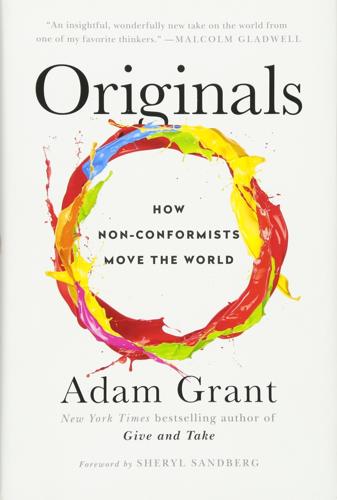
Originals: How Non-Conformists Move the World
by
Adam Grant
Published 2 Feb 2016
Subsequent studies have also demonstrated that cohesion takes time to develop: A group without stable membership has no opportunity to form a sense of closeness and camaraderie. University of Toronto researcher Glen Whyte points out that in the year after the Bay of Pigs, Kennedy led a cohesive group of mostly the same advisers to an effective resolution of the Cuban missile crisis. We now know that the consensus to launch the Cuban invasion “was not the result of a desire to maintain the group’s cohesiveness or esprit de corps,” explains Stanford psychologist Roderick Kramer. Cohesion doesn’t cause groupthink anywhere else, either. There was another fatal flaw in Janis’s analysis: He studied mostly cohesive groups making bad choices.
…
At IDEO, the design consulting firm that created the mouse for Apple, managers throw cultural fit out the window, focusing instead on how potential candidates can improve the culture. * In light of this evidence that authentic dissent works best, I asked Nemeth what she thought of Robert Kennedy’s assigned devil’s advocate role in the Cuban missile crisis. “I think Bobby Kennedy’s role there was to ensure a process of questioning each possibility,” she replied. “What he did was at least make them go through the motions of reconsidering positions—at least defending them. I still don’t think this has the same effect as authentic dissent but it was certainly an improvement over a rush to judgment.”
…
As a Bridgewater employee, if you talk behind someone’s back, they’ll call you a slimy weasel to your face. If you do it more than once, you might be sent packing. * The futility of democratic voting as a decision-making process has been clear since the Bay of Pigs debacle, when President Kennedy’s straw poll silenced the opposition. Having learned from that experience, in the Cuban missile crisis, Kennedy sought to bring more dissenting opinions to the table. To prevent the committee from favoring for political reasons the option that pleased him, he started by limiting his own role in the decision-making process, which forced the group to make a more balanced assessment of a broader range of possibilities.
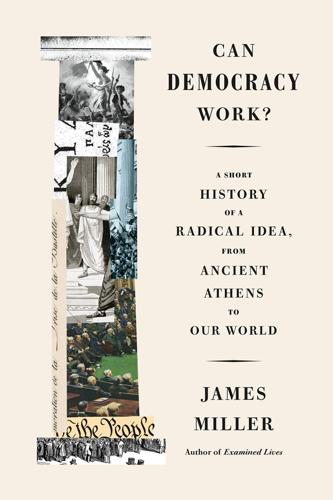
Can Democracy Work?: A Short History of a Radical Idea, From Ancient Athens to Our World
by
James Miller
Published 17 Sep 2018
Both sides stockpiled a growing number of ever more sophisticated nuclear weapons. Both sides maneuvered for advantage, in part through proxy wars that engulfed distant lands in death and destruction, and in part through hair-raising episodes of “nuclear brinksmanship.” The most memorable example of the latter came during the Cuban missile crisis of 1962, when, as declassified documents show, Soviet and American leaders came dangerously close to irradiating a large portion of the Northern Hemisphere. Meanwhile, a series of newly independent nations appeared, claiming their right to self-determination, starting with the partitioning of British India into the new nations of the Republic of India and the Dominion of Pakistan in 1947.
…
In the course of doing my job, I came to see from the inside—especially with the sympathetic mentorship of Daniel Bell, who was still intellectually active in the Academy in those days—how the country’s self-selected intellectual ruling class understood itself and its political obligations and prerogatives. “hierarchy, coercion, secrecy and deception”: Huntington, in Crozier, Huntington, and Watanuki, The Crisis of Democracy, 93. “nuclear brinksmanship”: Alexandr Fursenko and Timothy Naftali, One Hell of a Gamble: Khrushchev, Castro, and Kennedy, 1958–1964: The Secret History of the Cuban Missile Crisis (New York: W. W. Norton, 1997). Cf. Jonathan Schell, The Fate of the Earth (New York: Knopf, 1982). A lifelong supporter of America’s Democratic Party: Robert D. Kaplan, “Looking the World in the Eye,” The Atlantic, December 2001. This sensitive profile of Huntington, along with the appreciation of Robert Putnam cited above, is my source for the biographical details that follow.
…
.; Madison as chief architect of; viewed as democratic instrument; voting restrictions in Constitution of Athens, The (Aristotle, attributed) Continental Army Continental Congress Creek nation Crisis of Democracy, The Critias Croly, Herbert Crossley, Archibald Crystallizing Public Opinion Cuban missile crisis (1962) culture, American, see American culture Czechoslovakia; Velvet Revolution in Dahl, Robert Danton, Georges David, Jacques-Louis Davidson, Carl Debs, Eugene V. Declaration of Independence; as moral challenge Declaration of the Rights of Man and Citizen, French Delphi demagogues democracy: in American republic, see American democracy; in ancient Greece, see Athenian democracy; anxieties about; capitalism and; Cole’s conception of; communism and; conflicting views of; Dahl’s definition of; dangers of; demagogues and; Dewey’s conception of; dictatorial; direct, see direct democracy; Economist index of; eighteenth-century rebirth of; as enduring ideal; as European invention; forced export of; Freedom House index of; future of; as “government by popular opinion” (Wilson); Havel on; Huntington’s view of; inherent instability of; internationalism and; labor unions and; Lenin’s conception of; liberalism and; liberalism vs.; limits on; Lincoln on; Lippmann’s conception of; Marx’s ambivalence about; Mazzini’s view of; Michels’s faith in; misleading accounts of; modern conception of; as most often honored in the breach; nationalist movements and; in nineteenth-century Europe, see Europe, struggle for equality in; as pandering to desire; participatory (see also direct democracy); psychological limits on; public opinion and; representative, see representative democracy; revolt as recurrent feature of; Rice’s view of; Rousseau on; Schumpeter’s view of; slavery and; social, see social democracy; totalitarian; V-Dem Institute report on; Wallas on; Weber on; Whitman on; Wilson’s conception of; World War II and democracy, as ideal: in popular opinion; as shared belief system democracy, in twentieth century; American vs.
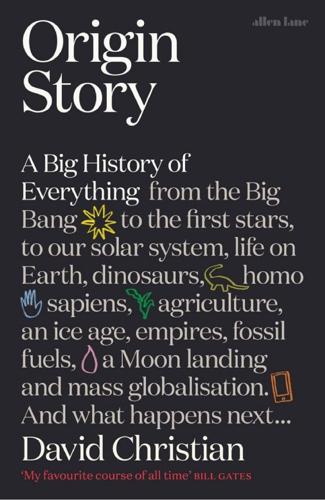
Origin Story: A Big History of Everything
by
David Christian
Published 21 May 2018
But I worried that teaching a national or imperial history (Russia was both nation and empire) conveyed the subliminal message that humans are divided, at the most fundamental level, into competing tribes. Was that a helpful message to teach in a world with nuclear weapons? As a schoolboy during the Cuban missile crisis, I vividly remember thinking we were on the verge of an apocalypse. Everything was about to be destroyed. And I remember wondering if there were kids “over there” in the Soviet Union who were equally scared. After all, they, too, were humans. As a child, I had lived in Nigeria. That gave me a strong sense of a single, extraordinarily diverse human community, a feeling that was confirmed when, as a teenager, I went to Atlantic College, an international school in South Wales.
…
From the bloodbath of the world wars, the United States and the Soviet Union emerged as the first global superpowers. There were many local wars, most aimed at overthrowing European colonial rule. But there were no more major international wars during the era of the Cold War. By now, all powers understood that there would be no victors in a nuclear war. But there were some close shaves. Soon after the Cuban missile crisis of 1962, President John Kennedy admitted that the odds of an all-out nuclear war had been “between one out of three and even.”1 The four decades after World War II witnessed the most remarkable spurt of economic growth in human history. This was the period of the Great Acceleration. Global exchanges were renewed and intensified.
…
Wrigley, Energy and the English Industrial Revolution, loc. 2112, Kindle. 18. Daniel Yergin, The Prize: The Epic Quest for Oil, Money, and Power (New York: Free Press, 1991), chapter 1. 19. Ibid., 16. Chapter 11. The Anthropocene: Threshold 8 1. Graham Allison and Philip Zelikow, Essence of Decision: Explaining the Cuban Missile Crisis, 2nd ed. (New York: Longman, 1999), 271. 2. Angus Maddison, The World Economy: A Millennial Perspective (Paris: Organisation for Economic Co-Operation and Development, 2001), 127. 3. Tim Lenton, Earth Systems Science: A Very Short Introduction (Oxford: Oxford University Press, 2016), 82. 4.

Model Thinker: What You Need to Know to Make Data Work for You
by
Scott E. Page
Published 27 Nov 2018
We next show how to create a dialogue among multiple models by reconsidering two historical events: the 2008 global financial market collapse, which reduced total wealth (or what had been thought to be wealth) by trillions of dollars, resulting in a four-year global recession, and the 1961 Cuban missile crisis, which nearly resulted in nuclear war. The 2008 financial collapse has multiple explanations: too much foreign investment, over-leveraged investment banks, lack of oversight in the mortgage approval process, blissful optimism among home-flipping consumers, the complexity of financial instruments, a misunderstanding of risk, and greedy bankers who knew the bubble existed and expected a bailout.
…
As Lo summarizes: “We should strive at the outset to entertain as many interpretations of the same set of objective facts as we can, and hope that a more nuanced and internally consistent understanding of the crisis emerges in the fullness of time.” He goes on to say, “Only by collecting a diverse and often mutually contradictory set of narratives can we eventually develop a more complete understanding of the crisis.” No single model suffices.11 In Essence of Decision, Graham Allison undertakes a many-model approach to explain the Cuban missile crisis. On April 17, 1961, a CIA-trained paramilitary group landed on the shores of Cuba in a failed attempt to overthrow Fidel Castro’s communist regime, increasing tensions between the United States and the Soviet Union, Cuba’s ally. In response, Soviet premier Nikita Khrushchev moved short-range nuclear missiles to Cuba.
…
“Structural Vulnerability of the North American Power Grid.” Physical Review E 69: 025103. Allesina, Stefano, and Mercedes Pascual. 2009. “Googling Food Webs: Can an Eigenvector Measure Species’ Importance for Coextinctions?” PLOS: Computational Biology 9, no. 4. Allison, Graham. 1971. Essence of Decision: Explaining the Cuban Missile Crisis. New York: Little, Brown. Alvaredo, Facundo, Anthony B. Atkinson, Thomas Piketty, and Emmanuel Saez. 2013. “The World Top Incomes Database.” https://www.inet.ox.ac.uk/projects/view/149. Anderson, Chris. 2008a. “The End of Theory: The Data Deluge Makes the Scientific Method Obsolete.” Wired 16, no. 7.
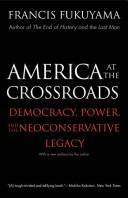
America at the Crossroads: Democracy, Power, and the Neoconservative Legacy
by
Francis Fukuyama
Published 20 Mar 2007
John Lewis Gaddis has shown that preemption (often unilateral preemption) has been used by American administrations since the early nineteenth century; it was seriously considered at several points during the Cold War. 12 The Eisenhower administration debated a preemptive "rollback" strategy in the early 1950s, and the Kennedy administration considered preempting the Soviet medium-range missiles deployed to Cuba during the Cuban Missile Crisis. What was revolutionary about the NSS was its expansion of traditional notions of preemption to include what amounted to preventive war. Preemption is usually understood to be an effort to break up an imminent military attack; preventive war is a military operation designed to head off a threat that is months or years away from materializing.
…
See also nuclear deterrence; Soviet Union Commentary, 17 communism: collapse of, 52-53, 59, 60; differing views of, 50-51; opposition to, 15-17, 50-51 Community of Democracies, 176-77, 187 competition: and political development, 129 conditionality: and structural adjustment loans, 145-47 conservatism, traditional: as compared with neoconservatism, 38-39 2l8 counterinsurgency, 76, 184 crime: and social policy, 19-20 Cuban Missile Crisis, 83 cultural relativism, 22, 23-24 Czechoslovakia, 29 Darfur, 173 Dayton Accords, 98 Dean, Howard, 12 Declaration of Independence, 23 decolonization, 118 democracy, Western: assumptions about, 30-31, 116; as by-product of modernization, 54, 57; and economic development, 128; expansion of, 55-58, in; in Germany, 132; in Japan, 132; and liberal authoritarianism, 140-41; and political development, 125; promotion of, 46-47, 114, 115, 117, 131-38, 140, 150-51, 177, 178, 206m; role of institutions in, 116-18; as solution to terrorism, 74; sources of weakness of, 24 Democratic Party, 61 democratic transitions, 117, 127-30, 176; role of United States in, 131-32, 133,134-38 deterrence.
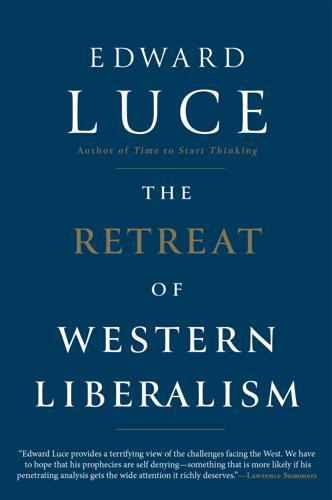
The Retreat of Western Liberalism
by
Edward Luce
Published 20 Apr 2017
Each feeds off and reinforces the other. The biggest duty of any state is to protect the nation from enemies. In the pre-nuclear age, this was accomplished with large-scale armies. During the nuclear era, it moved increasingly to weapons of mass destruction. Although the Cold War involved near-misses, most notably during the Cuban Missile Crisis of 1962, the Americans and the Soviets gradually came to understand each other’s signals. Eventually each was able to read the other’s nuclear grammar fluently. After 1962 the two sides set up a nuclear hotline and even agreed to exchanges of personnel so that they could minimise the risk they would stumble into war.
…
advertising, 65–6, 178 Afghanistan, 80 Africa: Chinese investment in, 32, 84; economic growth in, 21, 31, 32; future importance of, 200–1; and liberal democracy, 82, 83, 183; migration from, 140, 181; slave trade, 23, 55, 56 African-Americans, 104 age demographics, 34–5, 155, 156; ageing populations, 39; baby boom years, 39, 121; and gig economy, 64; life expectancy, 38, 58, 59, 60; millennials, 40–1, 121–2; and support for democracy, 121–2; and voter turnout, 103–4 Airbnb, 63 Albright, Madeleine, 6 American Revolution, 9 Andorra, 72 Andreessen, Marc, 61 Apple, 27, 31, 59, 60, 156 Arab Spring, 12, 82 Arab world, 202 Arendt, Hannah, The Origins of Totalitarianism, 128 Aristotle, 138, 200 artificial intelligence, 13, 34, 51–5, 56, 60–2 Asian Development Bank, 84 Asian economies, 21–2, 162; as engine of global growth, 21, 30, 31, 32; and Industrial Revolution, 23–4; and optimism, 202; of South Asia, 31; see also China; India Asian flu crisis (1997), 29 Asian Infrastructure Investment Bank (AIIB), 84 Attlee, Clement, 90 Australia, 84, 160, 167, 175 Austria, 15–16, 116 autocracy: and America’s post-9/11 blunders, 80–1, 85, 86; authoritarian nature of Trump, 133, 169, 171, 178–9; China as, 78, 80, 83–6, 159–60, 165, 201; and end of Cold War, 5, 78–9; and First World War, 115; and Great Recession, 83–4; and illiberal democracy, 204; myth of as more efficient, 170–1; popular demagogues, 137; rising support for, 11, 73, 82–3, 122 automation: and Chinese workforce, 62, 169; communications technology, 13, 52–5, 56–7, 59–60, 61–6, 67–8 see also digital revolution; and education, 197, 198; and Henry Ford, 66–7; political responses to, 67–8; steam revolution, 24, 55–6; techno-optimists, 52, 60; in transport, 54, 55, 56–7, 58, 59, 61 Bagehot, Walter, 115 Baker Institute, 68 Baldwin, Richard, 25, 27, 61 Bangladesh, 32 bank bail-outs, 193 Bannon, Steve, 130, 148, 173, 181–2 Belgium, 140 Bell, Daniel, 37 Berlin Wall, fall of (1989), 3–5, 6, 7, 74, 77 Bernstein, Carl, 132 Berra, Yogi, 57 Bhagwati, Jagdish, 159 Bismarck, Otto von, 42, 78, 120, 156, 161 Black Death, 25 Blair, Tony, 45, 89–90, 91 Blum, Léon, 116 Boer War (1899-1902), 155, 156 Bortnikov, Alexander, 6 Botswana, 82 Brazil, 29 Brecht, Bertolt, 86, 87 Breitbart News, 148 Brexit, 15, 73, 88, 92, 98, 101, 104, 119, 120, 163; UKIP’s NHS spending claim, 102; urban–hinterland split in vote, 47, 48, 130; xenophobia during campaign, 100–1 Britain: elite responses to Nazi Germany, 117; foreign policy goals, 179; gig economy, 63; growth of inequality in modern era, 43, 46, 47, 48, 50–1; history in popular imagination, 163; Imperial Preference, 22; London’s elites, 98–100, 130; nineteenth-century franchise extension, 114–15; policy towards China, 164; rapid expansion in nineteenth century, 24; and rise of Germany, 156, 157; rising support for authoritarianism, 122; separatism within, 140; Thatcher’s electoral success, 189–90 British East India Company, 22 British National Party (BNP), 100 Brown, Gordon, 99 Brownian movement, 172 Bryan, William Jennings, 111 Brynjolfsson, Erik, 60 Buffet, Warren, 199 Bush, George W., 31, 73, 79–81, 103, 156, 157, 163, 165, 182 Bush Republicans, 189 Cameron, David, 15, 92, 98, 99–100 Carnegie, Andrew, 42–3 Cherokee Indians, 114, 134 Chicago, 48 China: as autocracy, 78, 80, 83–6, 159–60, 165, 201; circular view of history, 11; colonial exploitation of, 20, 22–3, 55; decoupling of economy from West (2008), 29–30, 83–4; democracy activists in, 86, 140; entry to WTO (2001), 26; exceptionalism, 166; expulsion of Western NGOs, 85; future importance of, 200–1; and global trading system, 19–20, 26–7; Great Firewall in, 129; handover of Hong Kong (1997), 163–4; history in popular imagination, 163–4; hostility to Western liberalism, 84–6, 159–60, 162; and hydrogen bomb, 163; and Industrial Revolution, 22, 23–4; internal migration in, 41; investment in developing countries, 32, 84; military expansion, 157, 158; as nuclear power, 175; Obama’s trip to (2009), 159–60; political future of, 168–9, 202; pragmatic development route, 28, 29–30; pre-Industrial Revolution economy, 22; rapid expansion of, 13, 20–2, 25–8, 30, 35, 58, 157, 159; and robot economy, 62; Shanghai Cooperation Organization, 80; Trump’s promised trade war, 135, 145, 149; and Trump’s victory, 85–6, 140; US naval patrols in seas off, 148, 158, 165; US policy towards, 25–6, 145–6, 157–61, 165; US–China war scenario, 145–53, 161; in Western thought, 161–2; Xi’s crackdown on internal dissent, 168; Zheng He’s naval fleet, 165–6 China Central Television (CCTV), 84, 85 Christianity, 10, 105 Churchill, Winston, 98, 117, 128, 169 cities, 47–51, 130 class: creeping gentrification, 46, 48, 50–1; emerging middle classes, 21, 31, 39, 159; in Didier Eribon’s France, 104–10; Golden Age for Western middle class, 33–4, 43; Hillaryland in USA, 87–8; ‘meritocracy’, 43, 44–6; mobility as vanishing in West, 43–6; move rightwards of blue-collar whites, 95–9, 102, 108–10, 189–91, 194–5; poor whites in USA, 95–6, 112–13; populism in late nineteenth century, 110–11; and post-war centre-left politics, 89–92, 99; ‘precariat’ (‘left-behinds’), 12, 13, 43–8, 50, 91, 98–9, 110, 111, 131; and Trump’s agenda, 111, 151, 169, 190; urban liberal elites, 47, 49–51, 71, 87–9, 91–5, 110, 204; West’s middle-income problem, 13, 31–2, 34–41 Clausewitz, Carl von, 161 Clinton, Bill, 26, 71, 73, 90, 97–8, 157–9 Clinton, Hillary, 15, 16, 47, 67, 79, 160, 188; 2016 election campaign, 87–8, 91–4, 95–6, 119, 133; reasons for defeat of, 94–5, 96–8 Cold War: end of, 3–5, 6, 7, 74, 77, 78, 117, 121; nuclear near misses, 174; in US popular imagination, 163; and Western democracy, 115–16, 117, 183 Colombia, 72 colonialism, European, 11, 13, 20, 22–3; anti-colonial movements, 9–10; and Industrial Revolution, 13, 23–5, 55–6 Comey, James, 133 communism, 3–4, 5, 6, 105–8, 115 Confucius Institutes, 84 Congress, US, 133–4 Copenhagen summit (2009), 160 Coughlin, Father, 113 Cowen, Tyler, 40, 50, 57 Crick, Bernard, 138 crime, 47 Crimea, annexation of (2014), 8, 173 Cuba, 165 Cuban Missile Crisis (1962), 165, 174 cyber warfare, 176–8 Cyborg, 54 D’Alema, Massimo, 90 Daley, Richard, 189 Danish People’s Party, 102 Davos Forum, 19–20, 27, 68–71, 72–3, 91, 121 de Blasio, Bill, 49 de Gaulle, Charles, 106, 116 de Tocqueville, Alexis, 38, 112, 126–7 democracy, liberal: as an adaptive organism, 87; and America’s Founding Fathers, 9, 112–13, 123, 126, 138; and Arab Spring, 82; Chinese view of US system, 85–6; communism replaces as bête noire, 115; concept of ‘the people’, 87, 116, 119–20; damaged by responses to 9/11 attacks, 79–81, 86, 140, 165; and Davos elite, 68–71; de Tocqueville on, 126–7; declining faith in, 8–9, 12, 14, 88–9, 98–100, 103–4, 119–23, 202–3; demophobia, 111, 114, 119–23; economic growth as strongest glue, 13, 37, 103, 201–2; efforts to suppress franchise, 104, 123; elite disenchantment with, 121; elite fear of public opinion, 69, 111, 118; failing democracies (since 2000), 12, 82–3, 138–9; and ‘folk theory of democracy’, 119, 120; Fukuyama’s ‘End of History’, 5, 14, 181; and global trilemma, 72–3; and Great Recession, 83–4; and Hong Kong, 164; idealism of Rousseau and Kant, 126; illiberal democracy concept, 119, 120, 136–7, 138–9, 204; in India, 201; individual rights and liberty, 14, 97, 120; late twentieth century democratic wave, 77–8, 83; and mass distraction, 127, 128–30; need for regaining of optimism, 202–3; need to abandon deep globalisation, 73–4; nineteenth-century fear of, 114–15; and plural society, 139; popular will concept, 87, 118, 119–20, 126, 137–8; post-Cold War triumphalism, 5, 6, 71; post-war golden era, 33–4, 43, 89, 116, 117; post-WW2 European constitutions, 116; and ‘precariat’ (‘left-behinds’), 12, 13, 43–8, 50, 91, 98–9, 110, 111, 131; the rich as losing faith in, 122–3; Russia’s hostility to, 6–8, 79, 85; space for as shrinking, 72–3; technocratic mindset of elites, 88–9, 92–5, 111; Trump as mortal threat to, 97, 104, 111, 126, 133–6, 138, 139, 161, 169–70, 178–84, 203–4; and US-led invasion of Iraq (2003), 8, 81, 85; Western toolkit for, 77–9; see also politics in West Diamond, Larry, 83 digital revolution, 51–5, 59–66, 67–8, 174; cyber-utopians, 52, 60, 65; debate over future impact, 56; and education, 197, 198; exponential rate of change, 170, 172, 197; internet, 34, 35, 127, 128, 129–30, 131, 163; internet boom (1990s), 34, 59; and low productivity growth, 34, 59, 60; as one-sided exchange, 66–7; and risk-averse/conformist mindset, 40 diplomacy and global politics: annexation of Crimea (2014), 8, 173; China’s increased prestige, 19–20, 26–8, 29–30, 35, 83–5, 159; declining US/Western hegemony, 14, 21–2, 26–8, 140–1, 200–1; existential challenges in years ahead, 174–84; multipolarity concept, 6–8, 70; and nation’s popular imagination, 162–3; parallels with 1914 period, 155–61; and US ‘war on terror’, 80–1, 140, 183; US–China relations, 25–6, 145–6, 157–61, 165; US–China war scenario, 145–53, 161; US–Russia relations under Obama, 79 Doha Round, 73 drugs and narcotics, 37–8 Drutman, Lee, 68 Dubai, 48 Durkheim, Émile, 37 Duterte, Rodrigo, 136–7, 138 economists, 27 economy, global see global economy; globalisation, economic; growth, economic Edison, Thomas, 59 education, 42, 44–5, 53, 55, 197, 198 Egypt, 82, 175 electricity, 58, 59 Elephant Chart, 31–3 Enlightenment, 24, 104 entrepreneurialism, decline of in West, 39–40 Erdoğan, Recep Tayyip, 137 Eribon, Didier, 104–10, 111 Ethiopia, 82 Europe: ‘complacent classes’ in, 40; decline of established parties, 89; geopolitical loss, 141; growth of inequality in modern era, 43; identity politics in, 139–40; migration crisis, 70, 100, 140, 180–1; nationalism in, 10–11, 102, 108–9; nineteenth-century diplomacy, 7–8, 155–6, 171–2; post-war constitutions in, 116; Putin’s interference in, 179, 180; as turning inwards, 14 European Commission, 118, 120 European Union, 72, 117–19, 139–40, 179–80, 181, 201; see also Brexit Facebook, 39, 54, 67, 178 fake news, 130, 148, 178–9 Farage, Nigel, 98–9, 100, 184 fascism, 5, 77, 97, 100, 117 Federal Bureau of Investigation (FBI), 131–2, 133 Felt, Mark, 131–2, 134 financial crisis, global (2008), 27, 29, 30, 91; Atlantic recession following, 30, 63–4, 83–4 financial services, 54 Financial Times, 136, 200 Finland, 139 First World War, 115, 154–5 Flake, Jeff, 134 Florida, Richard, 47, 49, 50, 51 Flynn, Michael, 148, 149 Foa, Roberto Stefan, 123 Ford, Henry, 66–7 Foucault, Michel, 107 France, 15, 37, 63, 102, 104–10, 116; 1968 Paris demonstrations, 188; French Revolution, 3 Franco, General Francisco, 77 Franco-German War (1870–1), 155–6 Frank, Robert H., 30, 35–6, 44 Franklin, Benjamin, 204 Freelancer.com, 63 Friedman, Ben, The Moral Consequences of Economic Growth, 38 Friedman, Thomas, 74 Frontex (border agency), 181 FSB, 6 Fukuyama, Francis, 12, 83, 101, 139, 193–4; ‘The End of History?’

Adapt: Why Success Always Starts With Failure
by
Tim Harford
Published 1 Jun 2011
But while this is how we instinctively think about how leadership works and how organisations should operate, it’s a dangerously misleading view. The problem is that no leader can make the right decision every time. Napoleon, perhaps the finest general in history, invaded Russia with half a million men and lost over 90 per cent of them to death and desertion. John F. Kennedy forced Khrushchev to back down during the Cuban missile crisis. Yet he will also be remembered for the of Pigs fiasco, when he somehow persuaded himself both that 1400 US-trained Cuban exiles might defeat 200,000 troops and topple Fidel Castro, and that nobody would suspect that the US was involved. Mao Zedong was the greatest of all insurgent commanders, but a catastrophic peacetime leader whose blundering arrogance killed tens of millions of his own people.
…
Irving Janis’s classic analysis of the Bay of Pigs and other foreign policy fiascos, Victims of Group Think, explains that a strong team – a ‘kind of family’ – can quickly fall into the habit of reinforcing each other’s prejudices out of simple team spirit and a desire to bolster the group. Janis details the way in which John F. Kennedy fooled himself into thinking that he was gathering a range of views and critical comments. All the while his team of advisers were unconsciously giving each other a false sense of infallibility. Later, during the Cuban Missile Crisis, Kennedy was far more aggressive about demanding alternative options, exhaustively exploring risks, and breaking up his advisory groups to ensure that they didn’t become too comfortable. It was a lesson that David Petraeus – another historian – had grasped. Once Petraeus had a robust, usable doctrine, properly tested by a range of contrasting views, he launched his own guerrilla campaign to get the US Army to pay attention to it.
…
, 165 Bertrand, Marianne, 135 Bhopal disaster, 184 Billing, Noel Pemberton, 87–8 biomass systems, 170–1 bird flu, 97 Björkman, Martina, 142–3 Blair, Tony, 20, 30, 141 Boulton-Paul Defiant aircraft, 85 BP, 216–19, 245 Bradley, James, 106 Branson, Sir Richard, 112, 243 Brazil, 117, 148 breeding, selective, 175–6 Bremer, Paul, 1700000140345 >58 Brin, Sergey, 232 Bromgard, Jimmy Ray, 252 Buiter, Willem, 205 bulldog, British, 175–6 Bulow, Jeremy, 205 Bunting, Madeleine, 130 Burroughs 3500 computer, 69–71 Bush, Laura, 119 Bush, President George W., 20, 59, 64 business world: evolutionary theory and, 14–15, 16, 17, 18–19, 174–5, 233–4; failure in, 8–10, 11–12, 18–19, 36, 148–9, 224, 239–46; see also corporations and companies; economics and finance Cadbury’s dairy milk chocolate, 165 CAFE environmental standards in USA, 172–3, 176 Canon, 241 Capecchi, Mario, 97–101, 102, 114, 140, 152, 223 Carbon Trust, 163–5 Cardano, Gerolamo, 83 Carlsmith, James, 251> Case Foundation, 119 Casey, General George W., 55, 59, 71 catastrophe experts, 184–6, 191, 194–5, 208 Cave-Brown-Cave, Air Commodore Henry, 81, 83, 85, 88, 114 centralised decision making, 70, 74–5, 226, 227, 228; warfare and, 46–7, 67–8, 69, 71, 76, 78–9 centrally planned economies, 11, 21, 23–6, 68–9, 70 Challenger shuttle disaster, 184 Charles, Prince, 154 Chernobyl disaster, 185 Chile, 3, 69–72, 76, 148 China, 11, 94, 131, 143, 147, 150, 152 Christensen, Clayton, 239–40, 242, 245 Chuquicamata mine (Chile), 3 Churchill, Winston, 41–2, 82, 85 Citigroup, 205131 Clay Mathematics Institute, 110 climate change, 4, 20; carbon dioxide emissions and, 132, 156, 159–65, 166–9, 173, 176, 178–80; ‘carbon footprinting’, 159–66; carbon tax/price idea, 167–9, 178–80, 222; environmental regulations and, 169–74, 176, 177; ‘food miles’ and, 159, 160–1, 168; governments/politics and, 157–8, 163, 169–74, 176, 180; greenhouse effect and, 154–6; individual behaviour and, 158–63, 164, 165–6; innovation prizes and, 109, 179; methane and, 155, 156, 157, 159–60, 173, 179, 180; new technologies and, 94–5; simplicity/complexity paradox, 156, 157–8; Thaler-Sunstein nudge, 177–8; uncertainty and, 156 Coca-Cola, 28, 243 Cochrane, Archie, 123–7, 129, 130, 140, 238, 256 cognitive dissonance, 251–2 Cold War, 6, 41, 62–3 Colombia, 117, 147 complexity theory, 3–4, 13, 16, 49, 72103, 237 computer games, 92–3 computer industry, 11–12, 69, 70–1, 239–42 corporations and companies: disruptive technologies and, 239–44, 245–6; environmental issues and, 157–8, 159, 161, 165, 170–1, 172–3; flattening of hierarchies, 75, 224–5, 226–31; fraud and, 208, 210, 212–13, 214; innovation and, 17, 81–2, 87–9, 90, 93–4, 95–7, 108–11, 112, 114, 224–30, 232–4; limited liability, 244; patents and, 95–7, 110, 111, 114; randomised experiments and, 235–9; skunk works model and, 89, 91, 93, 152, 224, 242–3, 245; strategy and, 16, 18, 27–8, 36, 223, 224–34; see also business world; economics and finance cot-death, 120–1 credit-rating agencies, 188, 189, 190 Criner, Roy, 252 Crosby, Sir James, 211, 214, 250, 256 Cuban Missile Crisis, 41, 63 Cudahy Packing, 9 dairy products, 158, 159–60, 164–5, 166 Darwin, Charles, 86 Dayton Hudson, 243 de Montyon, Baron, 107–8 Deal or No Deal (TV game show), 33–5, 253 decentralisation, 73, 74–8, 222, 224–5, 226–31; Iraq war and, 76–8, 79; trial and error and, 31, 174–5, 232, 234 decision making: big picture thinking, 41, 42, 46, 55; consistent standards and, 28–9; diversity of opinions, 31, 44–5, 46, 48–50, 59–63; doctrine of unanimous advice, 30–1, 47–50, 62–3, 64, 78; grandiosity and, 27–8; idealized hierarchy, 40–1, 42, 46–7, 49–50, 55, 78; learning from mistakes, 31–5, 78, 119, 250–1, 256–9, 261–2; local/on the ground, 73, 74, 75, 76–8, 79, 224–5, 226–31; reporting lines/chain of command, 41, 42, 46, 49–50, 55–6, 58, 59–60, 64, 77–8; supportive team with shared vision, 41, 42, 46, 56, 62–3; unsuccessful, 19, 32, 34–5, 41–2; see also centralised decision making Deepwater Horizon disaster (April 2010), 36, 216–19, 220 Democratic Republic of Congo, 139–40 Deng Xiaoping, 1 Denmark, 148 Department for International Development (DFID), 133, 137–8 development aid: charter cities movement, 150–3; community-driven reconstruction (CDR), 137–40; corruption and, 133–5, 142–3; economic ‘big push’ and, 143–5, 148–9; feedback loops, 141–3; fundamentally unidentified questions (FUQs), 132, 133; governments and, 118, 120, 143, 144, 148–9; identification strategies, 132–5; microfinance, 116, 117–18, 120; Millennium Development Villages, 129–30, 131; product space concept, 145–8; randomised trials and, 127–9, 131, 132, 133, 134, 135–6, 137–40, 141; randomistas, 127–9, 132, 133, 135–40, 258; selection principle and, 117, 140–3, 149; SouthWest project in China, 131; success and failure, 116, 118–20, 130–1; Muhammad Yunus and, 116, 117–18 digital photography, 240–1, 242 Dirks, Ray, 211–12, 213 disk-drive industry, 239–40, 242 Djankov, Simeon, 135 domino-toppling displays, 185, 200–1 Don Basin (Russia), 21–2, 24, 27 dot-com bubble, 10, 92 Dubai, 147, 150 Duflo, Esther, 127, 131, 135, 136 Dyck, Alexander, 210, 213 eBay, 95, 230 econometrics, 132–5 economics and finance: banking system as complex and tightly coupled, 185, 186, 187–90, 200, 201, 207–8, 220; bankruptcy contingency plans, 204; Basel III regulations, 195; bond insurance business, 189–90; bridge bank/rump bank approach, 205–6; capital requirements, 203, 204; centrally planned economiepos=0000032004 >11, 21, 23–6, 68–9, 70; CoCos (contingent convertible bonds), 203–4; complexity and, 3–4; decoupling of financial system, 202, 203–8, 215–16, 220; Dodd-Frank reform act (2010), 195; employees as error/fraud spotters, 210, 211, 212, 213, 215; energy crisis (1970s), 179; evolutionary theory and, 14–17, 18–19, 174–5; improvements since 1960s, 215; inter-bank payments systems, 207; latent errors and, 209–10, 215; ‘LMX spiral’, 183–4, 189; narrow banking approach, 206–7, 215; need for systemic heat maps, 195–6; reinsurance markets, 183; zombie banks, 201–2; see also business world; corporations and companies; financial crisis (from 2007) Edison, Thomas, 236, 238 Eliot, T.S., 260 Elizabeth House (Waterloo), 170–1, 172 Endler, John, 221–2, 223, 234, 239 Engineers Without Borders, 119 Enron, 197–8, 200, 208, 210 environmental issues: biofuels, 84, 173, 176; clean energy, 91, 94, 96, 245–6; corporations/companies and, 159, 161, 165, 170–1, 172–3; renewable energy technology, 84, 91, 96, 130, 168, 169–73, 179, 245; see also climate change Equity Funding Corporation, 212 Ernst and Young, 199 errors and mistakes, types of, 208–10; latent errors, 209–10, 215, 218, 220 European Bank for Reconstruction and Development (EBRD), 188 European Union, 169, 173 Evans, Martin, 100 evolutionary theory, 6, 12–13, 15–17, 174, 258; business world and, 14–17, 174–5, 233–4; Darwin and, 86; digital world and, 13–14, 259–60; economics and, 14–17, 174–5; Endler’s guppy experiments, 221–2, 223, 239; fitness landscapes, 14–15, 259; Leslie Orgel’s law, 174, 175, 176, 177, 178, 180; problem solving and, 14–15, 16; selective breeding and, 175–6 expertise, limits of, 6–8, 16, 17, 19, 66 extinction events, biological, 18–19 Exxon (formerly Jersey Standard), 9, 12, 188, 245 F-22 stealth fighter, 93 Facebook, 90, 91 failure: in business, 8–10, 11–12, 18–19, 36, 148–9, 224, 239–46; chasing of losses, 32–5, 253–4, 256; in complex and tightly coupled systems, 185–90, 191–2, 200, 201, 207–8, 219, 220; corporate extinctions, 18–19; denial and, 32, 34–5, 250–3, 255–6; disruptive technologies, 239–44, 245–6; of established industries, 8–10; government funding and, 148–9; hedonic editing and, 254; honest advice from others and, 256–7, 258, 259; learning from, 31–5, 78, 119, 250–1, 256–9, 261–2; modern computer industry and, 11–12, 239–42; as natural in market system, 10, 11, 12, 244, 245–6; niche markets and, 240–2; normal accident theory, 219; recognition of, 36, 224; reinterpreted as success, 254–5, 256; shifts in competitive landscape, 239–46; ‘Swiss cheese model’ of safety systems, 186–7, 190, 209, 218; types of error and mistake, 208–10; willingness to fail, 249–50, 261–2; of young industries, 10 Fearon, James, 137, Federal Aviation Administration, 210 Federal Reserve Bank, 193–4 feedback, 25, 26, 42, 178, 240; in bureaucratic hierarchies, 30–1; development and, 141–3; dictatorships’ immunity to, 27; Iraq war and, 43–5, 46, 57–8, 59–62; market system and, 141; praise sandwich, 254; public services and, 141; self-employment and, 258; yes-men and, 30 Feith, Douglas, 44, 45 Ferguson, Chris ‘Jesus’, 32 Fermi nuclear reactor (near Detroit), 187 Festinger, Leon, 251 financial crisis (from 2007), 5, 11, 25; AIG and, 189, 193–5, 215–16, 228; bankers’ bonuses, 198; banking system as complex and tightly coupled, 185, 186, 187–90, 200, 201, 207–8, 220; bond insurance business and, 189–90; collateralised debt obligations (CDOs), 190, 209; credit default swaps (CDSs), 187–9, 190, 194; derivatives deals and, 198, 220; faulty information systems and, 193–5; fees paid to administrators, 197; government bail-outs/guarantees, 202, 214, 223; Lehman Brothers and, 193, 194, 196–200, 204–5, 208, 215–16; ‘LMX spiral’ comparisons, 183–4, 189; Repo 105 accounting trick, 199 Financial Services Authority (FSA), 214 Firefox, 221, 230 Fleming, Alexander, 83 Food Preservation prize, 107, 108 Ford Motor Company, 46–7 fossil record, 18 Fourier, Joseph, 155 fraud, corporate, 208, 210, 212–13, 214 Friedel, Robert, 80 Frost, Robert, 260 A Funny Thing Happened on the Way to the Forum (musical), 248 Gage, Phineas, 21, 27 Galapagos Islands, 86, 87 Gale (US developer), 152 Galenson, David, 260 Galileo, 187 Galland, Adolf, 81 Gallipoli campaign (1915), 41–2 Galvin, Major General Jack, 62, 256 game theory, 138, 205 Gates, Bill, 110, 115 Gates, Robert, 59, 64, 78 Gates Foundation, 110 Geithner, Tim, 193–5, 196 GenArts, 13 General Electric, 9, 12, 95 Gilbert, Daniel, 255, 256 GlaxoSmithKline, 95 Glewwe, Paul, 127–8 Global Positioning System (GPS), 113 globalisation, 75 Google, 12, 15, 90, 91, 239, 245, 261; corporate strategy, 36, 231–4; Gmail, 233, 234, 241, 242; peer monitoring at, 229–30 Gore, Al, An Inconvenient Truth, 158 Göring, Hermann, 81 government and politics: climate change and, 157–8, 163, 169–74, 176, 180; development aid and, 118, 120, 143, 144, 148–9; financial crisis (from 2007) and, 193–5, 198–9, 202, 214, 215–16, 223; grandiosity and, 27–8; ideal hierarchies and, 46pos=00002pos=0000022558 >7, 49–50, 62–3, 78; innovation funding, 82, 88, 93, 97, 99–101, 102–3, 104, 113; lack of adaptability rewarded, 20; pilot schemes and, 29, 30; rigorous evaluation methods and, 29* Graham, Loren, 26 Grameen Bank, 116, 117 Greece, 147 Green, Donald, 29* greenhouse effect, 154–6 Gulf War, first, 44, 53, 65, 66, 67, 71; Battle of 73 Easting, 72–3, 74, 79 Gutenberg, Johannes, 10 Haldane, Andrew, 195, 258 Halifax (HBOS subsidiary), 211 Halley, Edmund, 105 Halliburton, 217 Hamel, Gary, 221, 226, 233, 234 Hanna, Rema, 135 Hannah, Leslie, 8–10, 18 Hanseatic League, 150 Harrison, John, 106–7, 108, 110, 111 Harvard University, 98–9, 185 Hastings, Reed, 108 Hausmann, Ricardo, 145 Hayek, Friedrich von, 1, 72, 74–5, 227 HBOS, 211, 213, 214 healthcare sector, US, 213–14 Heckler, Margaret, 90–1 Henry the Lion, 149, 150, 151–2, 153 Hewitt, Adrian, 169 Hidalgo, César, 144–7, 148 Higginson, Peter, 230 Hinkley Point B power station, 192–3, 230–1 Hitachi, 11 Hitler, Adolf, 41, 82, 83, 150 HIV-AIDS, 90–1, 96, 111, 113 Holland, John, 16, 103 Hong Kong, 150 Houston, Dame Fanny, 88–9, 114 Howard Hughes Medical Institute (HHMI), 101–3, 112 Hughes (computer company), 11 Humphreys, Macartan, 136, 137, 138–40 Hurricane aircraft, 82* IBM, 11, 90, 95–6 In Search of Excellence (Peters and Waterman, 1982), 8, 10 India, 135, 136, 143, 147, 169 individuals: adaptation and, 223–4, 248–62; climate change and, 158–63, 164, 165–6; experimentation and, 260–2; trial and error and, 31–5 Indonesia, 133–4, 142, 143 Innocentive, 109 innovation: corporations and, 17, 81–2, 87–9, 90, 93–4, 95–7, 108–11, 112, 114, 224–30, 232–4; costs/funding of, 90–4, 99–105; failure as price worth paying, 101–3, 104, 184, 215, 236; government funding, 82, 88, 93, 97, 99–101, 102–3, 104, 113; grants and, 108; in health field, 90–1, 96; large teams and specialisation, 91–4; market system and, 17, 95–7, 104; new technologies and, 89–90, 91, 94–5; parallel possibilities and, 86–9, 104; prize methodology, 106–11, 112, 113–14, 179, 222–3; randomistas and, 127–9, 132, 133, 135–40, 258; return on investment and, 83–4; skunk works model, 89, 91, 93, 152, 224, 242–3, 245; slowing down of, 90–5, 97; small steps and, 16, 24, 29, 36, 99, 103, 143, 149, 153, 224, 259–60; space tourism, 112–13, 114; specialisation and, 91–2; speculative leaps and, 16, 36, 91, 99–100, 103–4, 259–60; unpredictability and, 84–5 Intel, 11, 90, 95 International Christelijk Steunfonds (ICS), 127–9, 131 International Harvester, 9 International Rescue Committee (IRC), 137–8, 139 internet, 12, 15, 63, 90, 113, 144, 223, 233, 238, 241; randomised experiments and, 235–6, 237; see also Google Iraq war: al Anbar province, 56–7, 58, 64, 76–7; civil war (2006), 39–40; Commander’s Emergency Response Program (CERP), 77; counterinsurgency strategy, 43, 45, 55–6, 58, 60–1, 63–4, 65; decentralisation and, 76–8, 79; feedback and, 43–5, 46, 57–8, 59–62; FM 3–24 (counter-insurgency manual), 63; Forward Operating Bases (FOBs), 51–3, 57, 65; Haditha killings (19 November 2005), 37–9, 40, 42, 43, 52; new technologies and, 71, 72, 74, 78–9, 196; Samarra bombing (22 February 2006), 39; Tal Afar, 51, 52, 53–5, 61, 64, 74, 77, 79; trial and error and, 64–5, 66–7; US turnaround in, 35, 40, 46, 50–1, 53–6, 57–8, 59–61, 63–5, 78; US/allied incompetence and, 38, 39–40, 42–5, 46, 50, 64, 67, 79, 223; Vietnam parallels, 46 J&P Coats, 9 Jacobs, Jane, 87 James, Jonathan, 30 Jamet, Philippe, 192 Janis, Irving, 62 Japan, 11, 143, 176, 204, 208 Jay-Z, 119 Jo-Ann Fabrics, 235 Jobs, Steve, 19 Joel, Billy, 247–8, 249 Johnson, President Lyndon, 46, 47, 49–50, 60, 62, 64, 78 Jones, Benjamin F., 91–2 Joyce, James, 260 JP Morgan, 188 Kahn, Herman, 93 Kahneman, Daniel, 32, 253 Kantorovich, Leonid, 68–9, 76 Kaplan, Fred, 77 Karlan, Dean, 135 Kauffmann, Stuart, 16, 103 Kay, John, 206–7, 208, 215, 259 Keller, Sharon, 252 Kelly, Terri, 230 Kennedy, President John F., 41, 47, 62–3, 84, 113 Kenya, 127–9, 131 Kerry, John, 20 Keynes, John Maynard, 181 Kilcullen, David, 57, 60–1 Klemperer, Paul, 96, 205 Klinger, Bailey, 145 Kotkin, Stephen, 25 Kremer, Michael, 127–8, 129 Krepinevich, Andy, 45 Lanchester, John, 188 leaders: decision making and, 40–2; failure of feedback and, 30–1, 62; grandiosity and, 27–8; ignoring of failure, 36; mistakes by, 41–2, 56, 67; need to believe in, 5–6; new leader as solution, 59 Leamer, Ed, 132* Leeson, Nick, 184–5, 208 Lehman Brothers, 193, 194, 196–200, 204–5, 208, 215–16 Lenin Dam (Dnieper River), 24 Levine, John, 48–9 Levitt, Steven, 132–3 Liberia, 136–9 light bulbs, 162, 177 Lind, James, 122–3 Lindzen, Richard, 156 Livingstone, Ken, 169 Lloyd’s insurance, 183 Lloyds TSB, 214 Local Motors, 90 Lockheed, Skunk Works division, 89, 93, 224, 242 Lomas, Tony, 196, 197–200, 204, 205, 208, 219 Lomborg, Bjorn, 94 longitude problem, 105–7, 108 Lu Hong, 49 Lübeck, 149–50, 151–2, 153 Luftwaffe, 81–2 MacFarland, Colonel Sean, 56–7, 64, 74, 76–7, 78 Mackay, General Andrew, 67–8, 74 Mackey, John, 227, 234 Madoff, Bernard, 208212–13 Magnitogorsk steel mills, 24–5, 26, 153 Malawi, 119 Mallaby, Sebastian, 150, 151 management gurus, 8, 233 Manhattan Project, 82, 84 Manso, Gustavo, 102 Mao Zedong, 11, 41 market system: competition, 10–11, 17, 19, 75, 95, 170, 239–46; ‘disciplined pluralism’, 259; evolutionary theory and, 17; failure in as natural, 10, 11, 12, 244, 245–6; feedback loops, 141; innovation and, 17, 95–7, 104; patents and, 95–7; trial and error, 20; validation and, 257–8 Markopolos, Harry, 212–13 Marmite, 124 Maskelyne, Nevil, 106 mathematics, 18–19, 83, 146, 247; financial crisis (from 2007) and, 209, 213; prizes, 110, 114 Mayer, Marissa, 232, 234 McDonald’s, 15, 28 McDougal, Michael, 252 McGrath, Michael, 252 McMaster, H.R.
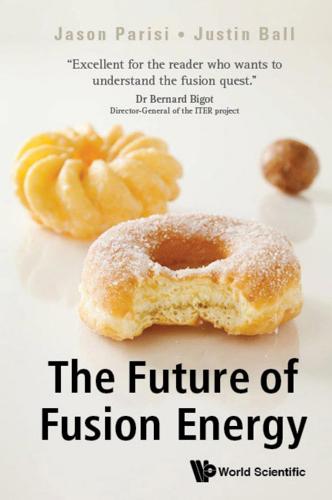
The Future of Fusion Energy
by
Jason Parisi
and
Justin Ball
Published 18 Dec 2018
As of 2018, nine countries have nuclear arsenals.2 While a nuclear weapon has not been used since World War II, there have been many incidents when nuclear war appeared imminent or nuclear accidents nearly occurred (which could have been easily interpreted as acts of aggression). The closest we came to nuclear war may have been on October 27, 1962 — the height of the Cuban Missile Crisis. Earlier that day, a U.S. U-2F spy plane had been shot down over Cuba, killing the pilot. In response, the U.S.S. Beale, an American destroyer, dropped depth charges on a Soviet submarine, the B-59, as warning shots to make it surface. Unbeknownst to the Americans, the B-59 was armed with nuclear torpedoes!
…
Index A agriculturalists energy sources, 4 air conditioners, 12 Al-Qaeda, 308 Alcator C-Mod, 231, 280, 301, 361 Alpha Centauri, 348 aneutronic see p-B, 292 ARC, 248 Argentina see Ronald, 179 Arkhipov, Vasili, 305 arsenals by country nuclear weapons, 304 ASDEX-U, 129, 193, 277 Aston, Francis, 177 atmospheric pollution, 238 B B-59 submarine, 305 bald spot, 103 banana orbits see super-bananas, 118, 190 baseload sources, 46 bell curve, 39, 83 Bell Telephone Laboratory, 184 Beria, Lavrenti, 189 beryllium, 162, 224, 324 Bethe, Hans, 178 Big Bang, 12 binding energy, 70–71 biomass, 35 Boeing 747 airplane, 353 Boltzmann constant, 69 bootstrap current, 189 bootstrap multiplication see bootstrap current, 254 brains, 59 bravery, 59, 335 brawn, 59 breakeven, 135 Breakthrough Starshot, 353 breeder reactors, 26, 330 fuelling proliferation, 333 bremsstrahlung see p-B, 293 burning plasma see ignition, breakeven, triple product, Lawson criteria, 136, 214 C C-2U, 278 Californium, 316 CANDU reactors, 327 capital cost, 240 carbon capture and storage, 39 Carnot limit, 31 catalyzed D–D fuel cycle, 85, 355 central solenoid, 145, 283 chain reaction, 314 chemical propulsion, 352 Chernobyl, 24 Chicago Pile-1, 311 classical transport, 123 climate change, 238–239 CNO cycle see stars, Bethe, Hans, 178 cold fusion, 77 Commonwealth Fusion Systems, 301 confinement, 82 electrostatic, 112 empirical scaling laws, 251 energy confinement time, 90 toroidal magnetic, 109 volume to surface area ratio argument, 256 conservation of momentum, 349 frozen lake argument, 350 convective eddies, 32 conventional spacecraft, 350 Coriolis force, 32 cost of electricity, 239 critical mass, 315 cross-section, 77–78 Cuban Missile Crisis, 304 current drive, 144 electron cyclotron, 152 electromagnetic wave, 150 inductive, 145 neutral beam, 148 cusp geometry see Lockheed Martin, 288 D D–3He fusion, 85, 300, 354 D–D fusion, 20, 85, 202, 301, 354 D–T fusion, 20, 83, 161, 202, 269, 281, 287, 292, 337 Darwin, Charles, 175 Debye length, 99 dense plasma focus see Lawrenceville plasma physics, 297 deuterium abundance on Earth, 22 diagnostics, 164–165 diffusion see random walk diffusion, 123 DIII-D, 277 direct drive see indirect drive, inertial confinement fusion, 272 dirty bombs, 321 dispatchable sources, 46 disruptions, 153–154, 222, 244, 267 mitigating, 155 divertor, 157, 194, 220, 256 double-edged sword nuclear energy as blueprint, 345 nuclear physics, 310 technologies, 311 E early hominids, 3 Earth–Moon system, 16, 41 Eddington, Arthur, 178 edge localized modes see ELMs, 194 Edison, Thomas, 6 electric field, 94, 150 electromagnetic force, 74 electromagnetic induction, 5, 12 electromagnetic repulsion, 67 electromagnetic waves, 269 electromagnetism, 90 electromagnets, 93 electrons, 65 in light bulbs, 6 electrostatic, 95 ELMs, 194, 222 ELMO bumpy torus, 114 empirical scaling law, 130, 251 enrichment, 333 energy conservation of, 11 flows of, 13 energy hierarchy, 58 energy storage, 50 Enola Gay, 305 entropy, 11 EPED, 197 exhaust velocity, 350 expanding electrical grids, 54 external power, 249 F Faraday, Michael, 5 Fat Man, 305 fissiled percent, 322 fertile material, 330 field-reversed configuration, 290 first wall, 153, 222 fission proliferation, 333 fission reactors, 325 climate versus nuclear security tradeoff, 335 fission–fusion hybrids, 332 flow, 197, 245 Fokker–Planck simulations see gyrokinetics, 209 formation of fossil fuels, 37 Forrest, Michael, 188–189 fossil fuels, 37 Fukushima, 24 fusion, 13, 16, 19 enrichment in fusion blanket, 337 proliferation, 336 fusion fuels, 83 fusion power density, 243 fusion reactor design, 237 disabling a proliferator, 338 small fusion system, 339 smallest planned, 159 timescale for blanket proliferation ramp-up, 340 fusion thruster, 354 G gas centrifuges, 318 gaseous diffusion, 317 General Atomics, 198, 279 General Fusion, 284 geopolitics, 343 geothermal, 16, 27 global zero, 343 gravitational confinement, 89 gravity, 13, 89 gravity-assist, 351 Greenwald limit, 251 gun-type bomb, 323 gyrokinetic simulations, 252 gyrokinetics, 206, 252 scale separation, 207 gyroradius, 92 H H-mode, 130, 193, 206, 252 hairy ball theorem, 103 Halite-Centurion, 274 half-life, 20 Harwell, 187 heat death of the Universe, 12 heat flux, 221 heating, 14, 218 electron cyclotron, 152 ion cyclotron, 152 heavy element synthesis, 15 heavy elements, 16 heavy water reactors, 327 Heisenberg’s Uncertainty Principle, 79 Helion Energy, 300 heliotron, 114 helium-3 abundance, 354 hex, 317 Hiroshima, 322, 336 hohlraum see inertial confinement fusion, 272 hydroelectric, 39 hydrogen bomb, 89, 304, 324 hydropower, 17 I IAEA, 334, 339 ignition, 131, 250, 269 MCF and ICF ignition differences, 274 implosion bomb, 323 inboard see torus terminology, 110 indirect drive see direct drive, inertial confinement fusion, 272 inductive heating, 147 Industrial Revolution, 4 inertial confinement fusion, 269 weaponization propspects, 271 intercontinental ballistic missiles see ICBM, 309 intercontinental electrical grids, 55 Intergovernmental Panel on Climate Change, 9 internal transport barriers see pedestal, 196 intermittency, 30, 46 INTOR, 225 IPA, 278 Iron Curtain, 181 isotopes, 20, 73 isotope effect, 204 isotopic semantics, 73 ITER, 137, 203, 211, 237, 248, 257, 273, 302, 353, 361 ignition, 214 Q, 213 strategy, 216 Ivy Mike, 304 J JET, 140, 155, 169, 198, 200, 260, 273, 277 jet engine, 349 JT-60, 260 JT-60SA, 140, 169, 361 JT-60U, 140, 277, 361 Juno spacecraft, 347 K K-DEMO, 361 Kelvin, Lord, 177 Khrushchev, Nikita, 187 kink limit, 246 Kremlin, 186 Kurchatov, Igor, 188 Kurchatov Institute, 185 L L-mode, 193, 252 Lamb, Horace, 127 Landau energy levels, 298 Landau damping, 151 Landau, Lev, 151 Langmuir, Irving, 165 Langmuir probes, 165 laser enrichment, 320 lattice structure, 156 Lavrentyev, Oleg, 186 Lawrenceville Plasma Physics, 296 Lawson criterion see triple product, 131, 324 Lawson, John, 131 levitated dipole, 114 limiter see divertor, 157, 194 linear magnetic, 100 lithium, 21, 242 lithium pebbles, 163 lithium-6, 84, 161 lithium-7, 161 lithium-ion batteries, 22, 51 Little Boy fissiled percent, 322 Lockheed Martin, 287 Lufthansa Flight 181, 199 M magnet(s), 139 permanent, 93 magnetic confinement fusion, 247 magnetic field, 91, 150, 247 magnetic islands, 117, 265 magnetic mirror, 100, 355 magnetic surfaces, 114, 144, 158, 191, 265 open versus closed, 158 magnetized target fusion see MTF, 284 magnetohydrodynamics see MHD, 121 Manhattan Project, 318 Mars, 347 mass–energy equivalence, 77 material survivability, 255 matter–antimatter annihilation, 352 mechanical stress, 142, 283 Mercury, 181 Mercury laser see NIF, 276 messy engineering endeavor, 259 MHD, 209, 246 MHD stability, 153 mini-golf, 68 Mini-Sphere, 278 MIT, 301 Model C stellarator, 189 moderator, 326 Moore’s Law see triple product, 136, 205 MRI machines, 140 MTF, 284, 300 Munich, 199 N Nagasaki, 305, 322 neoclassical transport, 126, 265 net electric power, 241–242 net electricity, 169 neutral beam, 220 negative ion acceleration, 220 neutral beams, 291 efficiency, 149 neutron capture cross-section, 331 neutron flux, 156 neutron multiplication, 224 neutron multiplication factor, 162 neutron multipliers, 162 neutron shielding, 292 New York Times, 180 NIF, 273, 336 niobium–titanium, 184 niobium–tin, 184, 248 Nixon, Richard, 224 Nobel Peace Prize, 186 Nobel Prize, 183 non-inductive see current drive; neutral beam, 149 non-renewable, 19 North Korea, 339 nucleons, 65 nuclear energy transition, 341 nuclear fission, 16, 23 nuclear proliferation, 238, 359 nuclear potential, 66 nuclear security, 336 nuclear weapon, 303 boosted implosion bomb, 323 defenses, 309 gun-type bomb, 322 hydrogen bomb, 323 implosion bomb, 322 inspectors, 340 neutron initiator, 324 proliferation with increased tritium availability, 342 significant quantity, 334 tamper, 322 Teller–Ulam design, 325 weapon designs, 321 yield, 303 nuclear winter, 308 O ocean waves, 44 Onnes, Heike, 181 outboard see torus terminology, 110 Oxford, 199 P p-B fusion, 290 particle drifts, 104 E × B drift, 106, 128 B drift, 106, 194 curvature drift, 106 Pauli exclusion principle, 183 pedestal, 193 Pelamis, 46 Perhapsatron, 114, 181, 285 photosynthesis, 35 plasma, 86 plasma current, 114, 264 maximization, 246 plasma flow, 197, 245 plasma gain, 169 plasma heating, 144 plasma power engineering multiplication factor, 170 plasma power multiplication factor, 135 plasma pressure, 244 plasma shaping, 198 Pluto, 321, 347 plutonium, 90 plutonium-239, 25 production, 320 reactor-grade, 329 weapons-grade, 321 poloidal field coils, 144 poloidal see torus terminology, 110 polonium-210, 162 power multiplication, 170 Princeton, 189, 198 Princeton University, 180 profits, 238 proliferation, 333 propellant, 349 proton–proton chain see CNO cycle, stars, Bethe, Hans, 179 proton–proton fusion, 28 public relations, 359 pure fission weapons, 325 Q quasineutrality, 97–98, 150 R radioactive waste, 167 random walk diffusion, 123 rate of energy consumption, 18 Rayleigh–Taylor instability, 271, 285 remote maintenance system, 204 renewable, 19, 57 resistivity, 141 Richter, Ronald, 179, 187 right-hand rule, 93 robotic maintenance, 169, 257 rocket equation, 351 role model effect of fusion technology, 344 S safety factor, 115 Sakharov, Andrei, 186 Saturn, 347 scattering collision, 67 scientific notation, 26 seasonal energy storage, 52 Seebeck effect, 6 seeds, 35 shaping, 198 D-shape, 198 shattered pellet injection see disruptions, 156 significant quantity, 340 solar, 16, 28 Solar System, 17, 348 energy flows, 15 space capsules see divertor, 160 space colonization, 349 SPARC, 301 spent fuel current world production, 334 spherical tokamaks, 281 spheromak, 114, 287 Spitzer, Lyman, 113, 180, 263 ST40, 278 Stalin, Joseph, 187 stars, 175 possible fusion reactions, 178 red giant phase, 15 steam engine, 4 steam turbine, 6 stellarator(s), 114, 263 ignited, 267 stochastic regions, 117, 265 strong nuclear force, 66 Sun, 347 lifetime of, 176 super-bananas see banana orbits, 118 super-duper H-mode, 259 supercomputers, 204 superconductivity, 141, 181, 248 Cooper pairs, 183 type I, 184 type II, 184 superconductor, 283 high-temperature, 185, 283, 301 REBCO, 186 materials, 182 problem with neutrons, 163 supernovae, 14–15 surface-to-air missiles, 309 Sword of Damocles, 306 Symmetric Tokamak, 189 T T-1, 188 T-3, 113, 189, 263, 278 T-7, 185 T4, 278 TAE Technologies, 280, 290 Tamm, Igor, 186 TCV, 201, 280 technetium, 24 temperature, 83 TFTR, 203, 277 tritium detection, 339 thermal equilibrium, 82 thermodynamic efficiency, 31 thermonuclear bomb see nuclear weapons — hydrogen bomb, 324 thermotron, 180 Thor, 110 Thomson scattering, 166 thorium, 321 Three Mile Island, 24 tidal, 16, 41 TNT, 304 toast making of, 7 tokamak, 113 Tokamak Energy Ltd., 281 Tore Supra, 141 toroidal torus terminology, 110 toroidal field, 140 toroidal field coils, 198 toroidal symmetry, 264 torsatron, 114 torus, 104 torus terminology, 110 trapped particles, 118 TRIAM-1M, 185 Trinity, 303, 344 triple product, 135, 267 tritium, 20, 161, 338 cost, 202 current reserves, 341 detecting use in fusion reactor, 339 increased availability proliferation risk, 342 tritium breeding, 215 tritium breeding blanket, 160, 247 Troyon limit, 243, 282 game of chicken, 244 violation, 245 Tsar Bomba, 304 Tuck, James, 181 tungsten, 224 turbulence, 206, 255 turbulent eddy, 128, 197 turbulent transport, 126 U U.S.S.
…
Index A agriculturalists energy sources, 4 air conditioners, 12 Al-Qaeda, 308 Alcator C-Mod, 231, 280, 301, 361 Alpha Centauri, 348 aneutronic see p-B, 292 ARC, 248 Argentina see Ronald, 179 Arkhipov, Vasili, 305 arsenals by country nuclear weapons, 304 ASDEX-U, 129, 193, 277 Aston, Francis, 177 atmospheric pollution, 238 B B-59 submarine, 305 bald spot, 103 banana orbits see super-bananas, 118, 190 baseload sources, 46 bell curve, 39, 83 Bell Telephone Laboratory, 184 Beria, Lavrenti, 189 beryllium, 162, 224, 324 Bethe, Hans, 178 Big Bang, 12 binding energy, 70–71 biomass, 35 Boeing 747 airplane, 353 Boltzmann constant, 69 bootstrap current, 189 bootstrap multiplication see bootstrap current, 254 brains, 59 bravery, 59, 335 brawn, 59 breakeven, 135 Breakthrough Starshot, 353 breeder reactors, 26, 330 fuelling proliferation, 333 bremsstrahlung see p-B, 293 burning plasma see ignition, breakeven, triple product, Lawson criteria, 136, 214 C C-2U, 278 Californium, 316 CANDU reactors, 327 capital cost, 240 carbon capture and storage, 39 Carnot limit, 31 catalyzed D–D fuel cycle, 85, 355 central solenoid, 145, 283 chain reaction, 314 chemical propulsion, 352 Chernobyl, 24 Chicago Pile-1, 311 classical transport, 123 climate change, 238–239 CNO cycle see stars, Bethe, Hans, 178 cold fusion, 77 Commonwealth Fusion Systems, 301 confinement, 82 electrostatic, 112 empirical scaling laws, 251 energy confinement time, 90 toroidal magnetic, 109 volume to surface area ratio argument, 256 conservation of momentum, 349 frozen lake argument, 350 convective eddies, 32 conventional spacecraft, 350 Coriolis force, 32 cost of electricity, 239 critical mass, 315 cross-section, 77–78 Cuban Missile Crisis, 304 current drive, 144 electron cyclotron, 152 electromagnetic wave, 150 inductive, 145 neutral beam, 148 cusp geometry see Lockheed Martin, 288 D D–3He fusion, 85, 300, 354 D–D fusion, 20, 85, 202, 301, 354 D–T fusion, 20, 83, 161, 202, 269, 281, 287, 292, 337 Darwin, Charles, 175 Debye length, 99 dense plasma focus see Lawrenceville plasma physics, 297 deuterium abundance on Earth, 22 diagnostics, 164–165 diffusion see random walk diffusion, 123 DIII-D, 277 direct drive see indirect drive, inertial confinement fusion, 272 dirty bombs, 321 dispatchable sources, 46 disruptions, 153–154, 222, 244, 267 mitigating, 155 divertor, 157, 194, 220, 256 double-edged sword nuclear energy as blueprint, 345 nuclear physics, 310 technologies, 311 E early hominids, 3 Earth–Moon system, 16, 41 Eddington, Arthur, 178 edge localized modes see ELMs, 194 Edison, Thomas, 6 electric field, 94, 150 electromagnetic force, 74 electromagnetic induction, 5, 12 electromagnetic repulsion, 67 electromagnetic waves, 269 electromagnetism, 90 electromagnets, 93 electrons, 65 in light bulbs, 6 electrostatic, 95 ELMs, 194, 222 ELMO bumpy torus, 114 empirical scaling law, 130, 251 enrichment, 333 energy conservation of, 11 flows of, 13 energy hierarchy, 58 energy storage, 50 Enola Gay, 305 entropy, 11 EPED, 197 exhaust velocity, 350 expanding electrical grids, 54 external power, 249 F Faraday, Michael, 5 Fat Man, 305 fissiled percent, 322 fertile material, 330 field-reversed configuration, 290 first wall, 153, 222 fission proliferation, 333 fission reactors, 325 climate versus nuclear security tradeoff, 335 fission–fusion hybrids, 332 flow, 197, 245 Fokker–Planck simulations see gyrokinetics, 209 formation of fossil fuels, 37 Forrest, Michael, 188–189 fossil fuels, 37 Fukushima, 24 fusion, 13, 16, 19 enrichment in fusion blanket, 337 proliferation, 336 fusion fuels, 83 fusion power density, 243 fusion reactor design, 237 disabling a proliferator, 338 small fusion system, 339 smallest planned, 159 timescale for blanket proliferation ramp-up, 340 fusion thruster, 354 G gas centrifuges, 318 gaseous diffusion, 317 General Atomics, 198, 279 General Fusion, 284 geopolitics, 343 geothermal, 16, 27 global zero, 343 gravitational confinement, 89 gravity, 13, 89 gravity-assist, 351 Greenwald limit, 251 gun-type bomb, 323 gyrokinetic simulations, 252 gyrokinetics, 206, 252 scale separation, 207 gyroradius, 92 H H-mode, 130, 193, 206, 252 hairy ball theorem, 103 Halite-Centurion, 274 half-life, 20 Harwell, 187 heat death of the Universe, 12 heat flux, 221 heating, 14, 218 electron cyclotron, 152 ion cyclotron, 152 heavy element synthesis, 15 heavy elements, 16 heavy water reactors, 327 Heisenberg’s Uncertainty Principle, 79 Helion Energy, 300 heliotron, 114 helium-3 abundance, 354 hex, 317 Hiroshima, 322, 336 hohlraum see inertial confinement fusion, 272 hydroelectric, 39 hydrogen bomb, 89, 304, 324 hydropower, 17 I IAEA, 334, 339 ignition, 131, 250, 269 MCF and ICF ignition differences, 274 implosion bomb, 323 inboard see torus terminology, 110 indirect drive see direct drive, inertial confinement fusion, 272 inductive heating, 147 Industrial Revolution, 4 inertial confinement fusion, 269 weaponization propspects, 271 intercontinental ballistic missiles see ICBM, 309 intercontinental electrical grids, 55 Intergovernmental Panel on Climate Change, 9 internal transport barriers see pedestal, 196 intermittency, 30, 46 INTOR, 225 IPA, 278 Iron Curtain, 181 isotopes, 20, 73 isotope effect, 204 isotopic semantics, 73 ITER, 137, 203, 211, 237, 248, 257, 273, 302, 353, 361 ignition, 214 Q, 213 strategy, 216 Ivy Mike, 304 J JET, 140, 155, 169, 198, 200, 260, 273, 277 jet engine, 349 JT-60, 260 JT-60SA, 140, 169, 361 JT-60U, 140, 277, 361 Juno spacecraft, 347 K K-DEMO, 361 Kelvin, Lord, 177 Khrushchev, Nikita, 187 kink limit, 246 Kremlin, 186 Kurchatov, Igor, 188 Kurchatov Institute, 185 L L-mode, 193, 252 Lamb, Horace, 127 Landau energy levels, 298 Landau damping, 151 Landau, Lev, 151 Langmuir, Irving, 165 Langmuir probes, 165 laser enrichment, 320 lattice structure, 156 Lavrentyev, Oleg, 186 Lawrenceville Plasma Physics, 296 Lawson criterion see triple product, 131, 324 Lawson, John, 131 levitated dipole, 114 limiter see divertor, 157, 194 linear magnetic, 100 lithium, 21, 242 lithium pebbles, 163 lithium-6, 84, 161 lithium-7, 161 lithium-ion batteries, 22, 51 Little Boy fissiled percent, 322 Lockheed Martin, 287 Lufthansa Flight 181, 199 M magnet(s), 139 permanent, 93 magnetic confinement fusion, 247 magnetic field, 91, 150, 247 magnetic islands, 117, 265 magnetic mirror, 100, 355 magnetic surfaces, 114, 144, 158, 191, 265 open versus closed, 158 magnetized target fusion see MTF, 284 magnetohydrodynamics see MHD, 121 Manhattan Project, 318 Mars, 347 mass–energy equivalence, 77 material survivability, 255 matter–antimatter annihilation, 352 mechanical stress, 142, 283 Mercury, 181 Mercury laser see NIF, 276 messy engineering endeavor, 259 MHD, 209, 246 MHD stability, 153 mini-golf, 68 Mini-Sphere, 278 MIT, 301 Model C stellarator, 189 moderator, 326 Moore’s Law see triple product, 136, 205 MRI machines, 140 MTF, 284, 300 Munich, 199 N Nagasaki, 305, 322 neoclassical transport, 126, 265 net electric power, 241–242 net electricity, 169 neutral beam, 220 negative ion acceleration, 220 neutral beams, 291 efficiency, 149 neutron capture cross-section, 331 neutron flux, 156 neutron multiplication, 224 neutron multiplication factor, 162 neutron multipliers, 162 neutron shielding, 292 New York Times, 180 NIF, 273, 336 niobium–titanium, 184 niobium–tin, 184, 248 Nixon, Richard, 224 Nobel Peace Prize, 186 Nobel Prize, 183 non-inductive see current drive; neutral beam, 149 non-renewable, 19 North Korea, 339 nucleons, 65 nuclear energy transition, 341 nuclear fission, 16, 23 nuclear proliferation, 238, 359 nuclear potential, 66 nuclear security, 336 nuclear weapon, 303 boosted implosion bomb, 323 defenses, 309 gun-type bomb, 322 hydrogen bomb, 323 implosion bomb, 322 inspectors, 340 neutron initiator, 324 proliferation with increased tritium availability, 342 significant quantity, 334 tamper, 322 Teller–Ulam design, 325 weapon designs, 321 yield, 303 nuclear winter, 308 O ocean waves, 44 Onnes, Heike, 181 outboard see torus terminology, 110 Oxford, 199 P p-B fusion, 290 particle drifts, 104 E × B drift, 106, 128 B drift, 106, 194 curvature drift, 106 Pauli exclusion principle, 183 pedestal, 193 Pelamis, 46 Perhapsatron, 114, 181, 285 photosynthesis, 35 plasma, 86 plasma current, 114, 264 maximization, 246 plasma flow, 197, 245 plasma gain, 169 plasma heating, 144 plasma power engineering multiplication factor, 170 plasma power multiplication factor, 135 plasma pressure, 244 plasma shaping, 198 Pluto, 321, 347 plutonium, 90 plutonium-239, 25 production, 320 reactor-grade, 329 weapons-grade, 321 poloidal field coils, 144 poloidal see torus terminology, 110 polonium-210, 162 power multiplication, 170 Princeton, 189, 198 Princeton University, 180 profits, 238 proliferation, 333 propellant, 349 proton–proton chain see CNO cycle, stars, Bethe, Hans, 179 proton–proton fusion, 28 public relations, 359 pure fission weapons, 325 Q quasineutrality, 97–98, 150 R radioactive waste, 167 random walk diffusion, 123 rate of energy consumption, 18 Rayleigh–Taylor instability, 271, 285 remote maintenance system, 204 renewable, 19, 57 resistivity, 141 Richter, Ronald, 179, 187 right-hand rule, 93 robotic maintenance, 169, 257 rocket equation, 351 role model effect of fusion technology, 344 S safety factor, 115 Sakharov, Andrei, 186 Saturn, 347 scattering collision, 67 scientific notation, 26 seasonal energy storage, 52 Seebeck effect, 6 seeds, 35 shaping, 198 D-shape, 198 shattered pellet injection see disruptions, 156 significant quantity, 340 solar, 16, 28 Solar System, 17, 348 energy flows, 15 space capsules see divertor, 160 space colonization, 349 SPARC, 301 spent fuel current world production, 334 spherical tokamaks, 281 spheromak, 114, 287 Spitzer, Lyman, 113, 180, 263 ST40, 278 Stalin, Joseph, 187 stars, 175 possible fusion reactions, 178 red giant phase, 15 steam engine, 4 steam turbine, 6 stellarator(s), 114, 263 ignited, 267 stochastic regions, 117, 265 strong nuclear force, 66 Sun, 347 lifetime of, 176 super-bananas see banana orbits, 118 super-duper H-mode, 259 supercomputers, 204 superconductivity, 141, 181, 248 Cooper pairs, 183 type I, 184 type II, 184 superconductor, 283 high-temperature, 185, 283, 301 REBCO, 186 materials, 182 problem with neutrons, 163 supernovae, 14–15 surface-to-air missiles, 309 Sword of Damocles, 306 Symmetric Tokamak, 189 T T-1, 188 T-3, 113, 189, 263, 278 T-7, 185 T4, 278 TAE Technologies, 280, 290 Tamm, Igor, 186 TCV, 201, 280 technetium, 24 temperature, 83 TFTR, 203, 277 tritium detection, 339 thermal equilibrium, 82 thermodynamic efficiency, 31 thermonuclear bomb see nuclear weapons — hydrogen bomb, 324 thermotron, 180 Thor, 110 Thomson scattering, 166 thorium, 321 Three Mile Island, 24 tidal, 16, 41 TNT, 304 toast making of, 7 tokamak, 113 Tokamak Energy Ltd., 281 Tore Supra, 141 toroidal torus terminology, 110 toroidal field, 140 toroidal field coils, 198 toroidal symmetry, 264 torsatron, 114 torus, 104 torus terminology, 110 trapped particles, 118 TRIAM-1M, 185 Trinity, 303, 344 triple product, 135, 267 tritium, 20, 161, 338 cost, 202 current reserves, 341 detecting use in fusion reactor, 339 increased availability proliferation risk, 342 tritium breeding, 215 tritium breeding blanket, 160, 247 Troyon limit, 243, 282 game of chicken, 244 violation, 245 Tsar Bomba, 304 Tuck, James, 181 tungsten, 224 turbulence, 206, 255 turbulent eddy, 128, 197 turbulent transport, 126 U U.S.S. Beale see Cuban Missile Crisis, 305 units of energy and power, 18 units of nuclear energy, 69 uranium, 90 enrichment of U-238, 315 fission reaction, 312 uranium deposits, 25 uranium-235, 23 uranium-238, 24 US Energy Research and Development Administration, 360 US Geological Survey, 21 V vacuum vessel, 164 W W7-X, 265, 280 Wagner, Fritz, 193 waste repository, 168 wave, 44 WEST, 141 wind, 17, 30 work, 4 World War II energy release, 304 X X-point, 158, 194, 256 X-rays, 272 Y yellowcake, 317 Yeltsin, Boris, 307 Z ZETA, 165, 187, 297
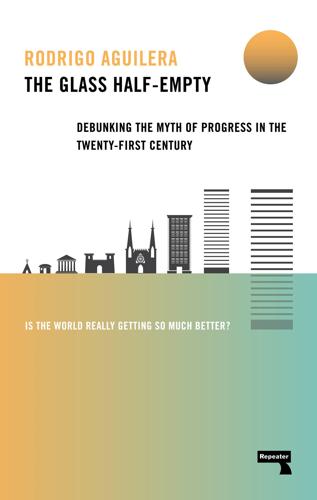
The Glass Half-Empty: Debunking the Myth of Progress in the Twenty-First Century
by
Rodrigo Aguilera
Published 10 Mar 2020
PART III: THE END OF THE END OF HISTORY CHAPTER SEVEN: THE EVIL THAT MEN DO Two Minutes to Midnight “The only people who should be allowed to govern countries with nuclear weapons are mothers, those who are still breastfeeding their babies.” — Tsutomu Yamaguchi, Hiroshima and Nagasaki survivor If art imitates life, then no single day in the history of humankind has outdone the best Tom Clancy techno-thriller better than October 27th, 1962. At the height of the Cuban Missile Crisis, the Soviet diesel-powered submarine B-59 found itself ringfenced by a task force of US surface ships enforcing a naval blockade of the island in order to prevent further missiles from being transported from the USSR. The B-59, along with three other submarines in its flotilla, was tasked with protecting the Soviet ships that intended to defy the blockade, a standoff which carried apocalyptic consequences: one wrong move by either side could set off a chain reaction of events leading to a nuclear exchange between the two superpowers.
…
But fortunately for the human species, the decision to use nuclear weapons depended on a consensus of three people, which also included the boat’s second officer, Vasily Alexandrovich Arkhipov. Arkhipov vetoed the motion and persuaded the captain to surface. We may think, as Pinker does, that the Cuban Missile Crisis was ultimately resolved by cooler heads in Washington and Moscow drowning out the calls for war: “The records show that Khrushchev and Kennedy remained in firm control of their governments and that each sought a peaceful end to the crisis, ignoring provocations and leaving themselves several options for backing down.”2 Reality, however, played out quite differently.
…
But this precludes the likelihood of either unilateral full disarmaments or a coordinated move towards the ultimate objective of global nuclear disarmament.43 The temptation of one or more countries going rogue and retaining some of their stockpiles would simply be too huge. In situations of brinkmanship like the Cuban Missile Crisis, the behavior of the opposing sides is more akin to the Chicken Game, made famous in a scene in the movie Rebel Without A Cause, where two people drive a car into a direct collision with the other unless one swerves at the last minute (the loser becomes the “chicken” despite being unequivocally the more reasonable of the two).

Cuba Travel Guide
by
Lonely Planet
Parque Histórico Militar Morro-Cabaña Top Sights 1Fortaleza de San Carlos de la CabañaC2 Sights 2Área Expositiva Crisis de OctubreC2 3 Cañonazo Ceremony C3 4 Castillo de los Tres Santos Reyes Magnos del Morro A1 5 Maritime Museum A1 6 Museo de Comandancia del Che C3 7 Museo de Fortificaciones y Armas C2 Eating 8 Paladar Doña Carmela C1 9Restaurante la Divina PastoraB2 10Restaurante los Doce ApóstolesA2 Drinking Nightlife 11 Bar el Polvorín A1 Área Expositiva Crisis de Octubre MONUMENT OFFLINE MAP GOOGLE MAP (admission CUC$1) Looking surprisingly innocuous today, the missiles that nearly caused World War III are laid out on a grassy knoll behind the Cabaña fort put there on the 50th anniversary of the Cuban Missile Crisis in 2012. Here you can ponder the Soviet R-12 nuclear rocket with a range of 2100km that was stationed in Pinar del Río in 1962 and caused the Kennedy administration and the rest of the world plenty of sleepless nights. Also on show is the wing of an American U2 spy plane shot down over Holguín province on October 27, 1962.
…
There are nine holes with 18 tees to allow 18-hole rounds. Green fees start at CUC$20 for nine holes and CUC$30 for 18 holes, with extra for clubs, cart and caddie. In addition, the club has five tennis courts and a bowling alley. Fidel and Che Guevara played a round here once as a publicity stunt soon after the Cuban missile crisis in 1962. The photos of the event are still popular. Che won – apparently. Eating Restaurante el Bambú VEGETARIAN $ (Jardín Botánico Nacional; meals CUC$1; noon-5pm, closed Mon; ) This is the first and finest example of vegetarian dining in Havana, and has been a leading advocate for the benefits of a meatless diet (a tough call in the ration-card economy of Cuba).
…
Mount a horse and take a ride with the guajiros into the Valle de Palmarito in Parque Nacional Viñales (Click here). Get gobsmacked by the grottos and caves of Gran Caverna de Santo Tomás (Click here), one of Latin America’s largest subterranean systems. Recharge your batteries on dreamy Cayo Jutías (Click here). See where Che Guevara played chess during the Cuban Missile Crisis in Cueva de los Portales (Click here). History The pre-Columbian history of western Cuba is synonymous with the Guanahatabeys, a group of nomadic Indians who lived in caves and procured their livelihood largely from the sea. Less advanced than the other indigenous peoples who lived on the island, the Guanahatabeys were a peaceful and passive race whose culture had developed more or less independently of the Taíno and Siboney cultures further east.

On Power and Ideology
by
Noam Chomsky
Published 7 Jul 2015
The officer on duty, Stanislav Petrov, decided to disobey orders and not report the warnings to his superiors. Thanks to his dereliction of duty, we are alive to reflect on the black swan we prefer not to see. Other studies reveal a shocking array of close calls, even apart from the “most dangerous moment in history” during the Cuban missile crisis of 1962. An enormous gap in these lectures, not appreciated at the time, was that another and even more ominous threat was inexorably advancing: environmental catastrophe. By now no reasonable person can doubt that we are marching resolutely toward a grim fate, and not far in the future, unless the course we are following is radically altered.
…
These were “the good old days,” when the country was still available as a base for U.S. terrorism, subversion and aggression and there was therefore no need for Western humanists to agonize over democracy and human rights in Nicaragua or to conduct a terrorist war in order “to fit Nicaragua back into a Central American mode” and to “demand reasonable conduct by a regional standard,” the proper goal of U.S. policy, the editors of the Washington Post declare—the “regional standard” and “Central American mode” being exemplified by El Salvador, Guatemala, Honduras, and the Somoza regime. The most famous of the 19 incidents was the Cuban missile crisis, when U.S. planners estimated the probability of war at one-third to one-half as they rejected Khrushchev’s offer to end the crisis by the simultaneous withdrawal of Soviet missiles from Cuba and American missiles from Turkey—obsolete missiles in the latter case (they were being replaced by Polaris submarines), for which a withdrawal order had already been issued but not yet executed.

Marx at the Arcade: Consoles, Controllers, and Class Struggle
by
Jamie Woodcock
Published 17 Jun 2019
Returning to work in 1961, he ran the statistics-heavy program on an IBM 1620. The same year, Raytheon developed a simulation of the Cold War for the US military. The simulation was too complex for most users, so an alternative analog version was developed.29 In 1962, two major events in the early history of videogames took place. The first followed the Cuban Missile Crisis, which saw the launch of the computer war game STAGE (Simulation of Total Atomic Global Exchange) by the US Department of Defense. Rather than ending in mutually assured destruction, the simulation predicted that the United States would defeat the Soviet Union in a thermonuclear war.30 Unfortunately, unlike in WarGames, there is no record of the simulation playing tic-tac-toe to show otherwise (luckily, this has never been tested in practice; otherwise the history of videogames—and the rest of the world—would be much shorter.)
…
J., 115 Blizzard, 28 Bogost, Ian, 51, 152 Bond, James, 115 Borderlands, 30 Brazil, 98 Brecht, Bertolt, 142–43 Breitbart News, 154–55 Brentano’s Bookstore, 139 Brexit, 145 British Army, 54, 57 British Petroleum, 25 Broderick, Matthew, 19–20 Bungie, 47 Burgeson, John, 20 C Caillois, Roger, 16–17, 125, 139, 151 California, 39 Call of Duty, 30, 55, 58, 117, 123 Call of Duty 4: Modern Warfare, 118 Call of Duty: Black Ops, 119 Call of Duty: Modern Warfare 2, 118 Call of Duty: WWII, 39 Cambridge, 19 Campbell, Colin, 131 Canada, 98 Capital (Marx), 8, 53, 67–69, 74 Carbo-Mascarell, Rosa, 145 Carleton College, 22 Castells, Manuel, 75 Chapman, Adam, 118 China, 35, 37–39, 46–47, 53, 73, 140, 155 Chomp, 23 CIA, 119 Civilization, 2, 31, 129–33 CivilizationEDU, 132 Civilization VI, 131 Clancy, Tom, 120 Clash of Clans, 32 Class Struggle, 139, 145 Cleaver, Harry, 67 Cold War, 20, 28, 119 Columbine, 116 Commander Keen, 1 Communism, 131 Condition of the Working Class in England, 67 Congo, 140 Conservative Party, 40, 42, 145 Conviction, 121 Cook, Mike, 137 Corbyn, Jeremy, 145 Corbyn Run, 145 Counter-Strike, 2, 31, 39, 52, 70, 122, 150, 154, 156–57 Counter-Strike: Global Offensive, 39, 122 Crash Bandicoot, 152 Creative Skillset, 87 Croft, Lara, 29, 152 CrossFire, 32, 38 Crusades, 4 Csikszentmihalyi, Mihaly, 114 Cuban Missile Crisis, 20 D DARPA. See Defense Advanced Research Projects Agency Dartmouth College, 22 Deep Blue, 29 Defense Advanced Research Projects Agency, 54 Delightful Murder (Mandel), 106–7 Deliveroo, 102 Destiny, 47, 81 Deus Ex, 126 Didžgalvytė, Marijam, 144–46 Digital Equipment PDP-8, 23 Discord, 99 Dizzy, 2 DMA Design Limited, 40 Donkey Kong, 25 Doom, 29 Doom II, 54 Dota 2, 32, 70, 150 Douglas, A.

Exponential: How Accelerating Technology Is Leaving Us Behind and What to Do About It
by
Azeem Azhar
Published 6 Sep 2021
Lotus produced more spreadsheet applications, like 1-2-3, which was the dominant office staple through the 1980s and much of the 1990s. They also made an exotic spreadsheet program called Improv, which I was partial to, as well as Ami Pro, the word processor on which I typed up my undergraduate thesis on the Cuban missile crisis. And Lotus was not alone. Firms like WordPerfect and WordStar also created word-processing software. Some of these companies were dominant until relatively late: WordPerfect was the market leader in word processing in 1995, when it had 50 per cent market share. But once Microsoft had established dominance in the operating system market, it became increasingly hard to take on.
…
While there were some fraught moments, the twentieth century did not, fortunately enough, end with nuclear oblivion. And this was in part down to the communication and de-escalation tactics adopted by some of the more sensible officials in Washington and Moscow. For one thing, the two superpowers ultimately learnt to interact effectively. After the Cuban missile crisis in 1962, the United States and Soviet Union established a hotline – the famous ‘red telephone’ – so the superpowers’ leaders could talk to each other directly. It was an important measure in building trust between the two rivals, particularly at times when a small miscommunication could spell disaster.
…
Abu Dhabi, UAE, 250 Acemoglu, Daron, 139 Acorn Computers, 16, 21 Ada Lovelace Institute, 8 additive manufacturing, 43–4, 46, 48, 88, 166, 169, 175–9 Adidas, 176 advertising, 94, 112–13, 116, 117, 227–8 AdWords, 227 aeroponics, 171 Afghanistan, 38, 205 Africa, 177–8, 182–3 Aftenposten, 216 Age of Spiritual Machines, The (Kurzweil), 77 agglomeration, 181 Air Jordan sneakers, 102 Airbnb, 102, 188 aircraft, 49–50 Alexandria, Egypt, 180 AlexNet, 33 Algeciras, HMM 61 Alibaba, 48, 102, 108, 111, 122 Alipay, 111 Allen, Robert, 80 Alphabet, 65, 113–14, 131, 163 aluminium, 170 Amazon, 65, 67–8, 94, 104, 108, 112, 122, 135–6 Alexa, 25, 117 automation, 135–6, 137, 139, 154 collective bargaining and, 163 Covid-19 pandemic (2020–21), 135–6 drone sales, 206 Ecobee and, 117 Go stores, 136 Kiva Systems acquisition (2012), 136 management, 154 Mechanical Turk, 142–3, 144, 145 monopoly, 115, 117, 122 Prime, 136, 154 R&D, 67–8, 113 Ami Pro, 99 Amiga, 16 Anarkali, Lahore, 102 anchoring bias, 74 Android, 85, 94, 117, 120 Angola, 186 Ant Brain, 111 Ant Financial, 111–12 antitrust laws, 114, 119–20 Apache HTTP Server, 242 Appelbaum, Binyamin, 63 Apple, 47, 62, 65, 85, 94, 104, 108, 112, 122 App Store, 105, 112, 115 chip production, 113 Covid-19 pandemic (2019–21), 222–3 data collection, 228 iOS, 85 iPhone, 47, 62, 85, 94, 105 media subscription, 112 watches, 112 APT33 hacker group, 198 Aral, Sinan, 238 Aramco, 108, 198 Armenia, 206–7 Arthur, William Brian, 110, 123 artificial intelligence, 4, 8, 31–4, 54, 88, 113, 249 academic brain drain, 118 automation, 125–42 data and, 31–2, 142 data network effect, 106–7 drone technology and, 208, 214 education and, 88 employment and, 126–7 healthcare and, 88, 103 job interviews and, 153 regulation of, 187, 188 arXiv, 59 Asana, 151 Asian Development Bank, 193 Aslam, Yaseen, 148 Assembly Bill 5 (California, 2019), 148 asymmetric conflict, 206 AT&T, 76, 100 Atari, 16 attack surfaces, 192–3, 196, 209, 210 Aurora, 141 Australia, 102, 197 automation, 125–42 autonomous weapons, 208, 214 Azerbaijan, 173, 206–7 Ballmer, Steve, 85 Bangladesh, 175 banking, 122, 237 Barcelona, Catalonia, 188 Barlow, John Perry, 184 Barrons, Richard, 195, 211 Bartlett, Albert, 73 batteries, 40, 51, 53–4, 250, 251 Battle of the Overpass (1937), 162 Bayraktar TB2 drone, 206 Bee Gees, 72 Bekar, Clifford, 45 Bell Labs, 18 Bell Telephone Company, 100 Benioff, Marc, 108–9 Bentham, Jeremy, 152 Berlin Wall, fall of (1989), 4 Bermuda, 119 Berners-Lee, Timothy, 55, 100, 160, 239 Bessen, James, 46 Bezos, Jeffrey, 135–6 BGI, 41 Biden, Joseph, 225 Bing, 107 biological weapons, 207, 213 biology, 10, 39, 40–42, 44, 46 genome sequencing, 40–41, 90, 229, 234, 245–7, 250, 252 synthetic biology, 42, 46, 69, 174, 245, 250 biopolymers, 42 bits, 18 Black Death (1346–53), 12 BlackBerry, 120 Blair, Tony, 81 Bletchley Park, Buckinghamshire, 22 blitzscaling, 110 Blockbuster, 138 BMW, 177 Boeing, 51, 236 Bol.com, 103 Bollywood, 181 Boole, George, 18 Bork, Robert, 114–15, 117, 119 Bosworth, Andrew, 233 Boyer, Pascal, 75 Boyle, James, 234 BP, 92, 158 brain, 77 Braudel, Fernand, 75 Brave, 242 Brazil, 202 Bremmer, Ian, 187 Bretton Woods Conference (1944), 87 Brexit (2016–20), 6, 168 British Broadcasting Corporation (BBC), 87, 129, 191 Brookings Institution, 130 BT, 123 Bulgaria, 145 Bundy, Willard Legrand, 149 Busan, South Korea, 56 business, 82, 92–124 diminishing returns to scale, 93, 108 economic dynamism and, 117 economies of scale, 50, 92 growth, 110–13 increasing returns to scale, 108–10 intangible economy, 104–7, 118, 156, 175, 180 linear value chains, 101 market share, 93–6, 111 monopolies, 10, 71, 94, 95, 114–24 network effect, 96–101 platform model, 101–3, 219 re-localisation, 11, 166–79, 187, 252, 255 state-sized companies, 11, 67 superstar companies, 10, 94–6 supply chains, 61–2, 166–7, 169, 175, 187, 252, 255 taxation of, 96, 118–19 Butler, Nick, 179 ByteDance, 28 C40 initiative, 189 Cambridge University, 127, 188 cancer, 57–8, 127 Capitol building storming (2021), 225 car industry, 93 carbon emissions, 35, 90, 251 Carlaw, Kenneth, 45 Carnegie, Andrew, 112 Carnegie Mellon University, 131 Catholic Church, 83, 88 censorship, 216–17, 224–6, 236 Central Intelligence Agency (CIA), 194 Cerebras, 34 cervical smears, 57–8 chemical weapons, 207, 213 Chen, Brian, 228 chewing gum, 78 Chicago Pile-1 reactor, 64 Chile, 170 China automation in, 127, 137 brainwave reading in, 152 Covid-19 pandemic (2019–21), 245 drone technology in, 207 Great Firewall, 186, 201 Greater Bay Area, 182 horizontal expansion in, 111–12 manufacturing in, 176 misinformation campaigns, 203 raw materials, demand for, 178 Singles’ Day, 48 social credit systems, 230 superstar companies in, 95 US, relations with, 166 chips, 19–22, 28–9, 48–9, 52, 113, 251 Christchurch massacre (2019), 236 Christensen, Clayton, 24 CIPD, 153 cities, 11, 75, 169, 179–84, 188, 255 Clegg, Nick, 225–6, 235 climate change, 90, 169, 187, 189, 251, 252 cloud computing, 85, 112 Cloudflare, 200 cluster bombs, 213 CNN, 185, 190 coal, 40, 65, 172 Coase, Ronald, 92 Coca-Cola, 93 code is law, 220–22, 235 cold fusion, 113–14 Cold War (1947–91), 194, 212, 213 collective bargaining, 147, 149, 154, 156, 162–5 Colombia, 145 colonialism, 167 Columbus, Christopher, 4 combination, 53–7 Comical Ali, 201 commons, 234–5, 241–3, 256 companies, see business comparative advantage, 170 complex systems, 2 compounding, 22–3, 28 CompuServe, 100 computing, 4, 10, 15–36, 44, 46, 249 artificial intelligence, 4, 8, 31–4, 54, 88 cloud computing, 85, 112 internet, 47–8, 55, 65, 84 Law of Accelerating Returns, 30–31, 33, 35 machining, 43 Moore’s Law, see Moore’s Law quantum computing, 35 transistors, 18–22, 28–9, 48–9, 52 conflict, 87, 189, 190–215 attack surfaces, 192–3, 196, 209, 210 cyberattacks, 11, 114, 140, 181, 187, 190–200, 209–14, 256 de-escalation, 212–13 drone technology, 11, 192, 204–9, 214, 256 institutional change and, 87 misinformation, 11, 191, 192, 200–204, 209, 212, 217, 225 new wars, 194 non-proliferation, 213–14 re-localisation and, 189, 193, 194, 209 consent of the networked, 223 Costco, 67 Coursera, 58 Covid-19 pandemic (2019–21), 12–13, 59, 78–9, 131, 245–9 automation and, 127, 135, 136 cities and, 183 contact-tracing apps, 222–3 gig economy and, 146 lockdowns, 12, 152, 176, 183, 246 manufacturing and, 176 misinformation and, 202–4, 247–8 preprint servers and, 60 recession (2020–21), 178 remote working and, 146, 151, 153 supply chains and, 169, 246 vaccines, 12, 202, 211, 245–7 workplace cultures and, 151, 152 cranks, 54 credit ratings, 162, 229 critical thinking skills, 212 Croatia, 145 Crocker, David, 55 crowdsourcing, 143–4 Cuba, 203 Cuban missile crisis (1962), 99, 212 cultural lag, 85 cyberattacks, 11, 114, 140, 181, 187, 190–200, 209–14, 256 CyberPeace Institute, 214 Daniel, Simon, 173–4 Dar es Salaam, Tanzania, 183 Darktrace, 197 data, 8, 11, 71, 217–19, 226–31, 235, 237–42, 256 AI and, 8, 32, 33, 58, 106 compensation for, 239 commons, 242 cyberattacks and, 196 doppelgängers, 219, 226, 228, 239 interoperability and, 237–9 network effects, 106–7, 111 protection laws, 186, 226 rights, 240 Daugherty, Paul, 141 DDT (dichlorodiphenyltrichloroe thane), 253 death benefits, 151 Dediu, Horace, 24, 30 deep learning, 32–4, 54, 58, 127 deforestation, 251 dehumanisation, 71, 154, 158 deindustrialisation, 168 Deliveroo, 154, 163 Delphi, 100 dematerialised techniques, 166, 175 Denmark, 58, 160, 199–200, 257 Deutsche Bank, 130 Diamandis, Peter, 5 Dickens, Charles, 80 digital cameras, 83–4 Digital Geneva Convention, 211 Digital Markets Act (EU, 2020), 122 digital minilateralism, 188 Digital Nations group, 188 Digital Services Act (EU, 2020), 123 diminishing returns, 93, 108 disinformation, see misinformation DoorDash, 147, 148, 248 dot-com bubble (1995–2000), 8, 108, 150 Double Irish tax loophole, 119 DoubleClick, 117 drone technology, 11, 192, 204–9, 214, 256 Dubai, UAE, 43 Duke University, 234 dystopia, 208, 230, 253 Eagan, Nicole, 197 eBay, 98, 121 Ecobee, 120 economies of scale, 50, 92 Economist, The, 8, 65, 119, 183, 239 economists, 63 Edelman, 3 education artificial intelligence and, 88 media literacy, 211–12 Egypt, 145, 186 Elance, 144 electric cars, 51, 69, 75, 173–4, 177, 250 electricity, 26, 45, 46, 54, 157, 249–50 see also energy Electronic Frontier Foundation, 184 email, 6, 55 embodied institutions, 82 employment, 10, 71, 125–65 automation, 125–42 collective bargaining, 147, 149, 154, 156, 162–5 dehumanisation and, 71, 154, 158 flexicurity, 160–61, 257 gig economy, 10, 71, 142–9, 153, 162, 164, 239, 252, 255 income inequality, 155–8, 161, 168 lump of labour fallacy, 139 management, 149–54, 158–9 protections, 85–6, 147–9 reskilling, 159–60 universal basic income (UBI), 160, 189 Enclosure, 234–5, 241 energy, 11, 37–8, 39–40, 44, 46, 172–4, 250 cold fusion, 113–14 fossil fuels, 40, 159, 172, 250 gravitational potential, 53 solar power, 37–8, 53, 65, 77, 82, 90, 171, 172, 173, 249, 250, 251 storage, 40, 53, 114, 173–4, 250, 251 wind power, 39–40, 52 Energy Vault, 53–4, 173 Engels, Friedrich, 81 Engels’ pause, 80, 81 environmental movement, 73 Epic Games, 116 estate agents, 100 Estonia, 188, 190–91, 200, 211 Etzion Airbase, Sinai Peninsula, 195 European Commission, 116, 122, 123 European Space Agency, 56 European Union, 6, 82, 147, 186, 226 Excel, 99 exogeny, 2 exponential gap, 9, 10, 67–91, 70, 89, 253 cyber security and, 193 institutions and, 9, 10, 79–88, 90 mathematical understanding and, 71–5 predictions and, 75–9 price declines and, 68–9 superstar companies and, 10, 94–124 exponential growth bias, 73 Exponential View, 8–9 externalities, 97 extremism, 232–4 ExxonMobil, 65, 92 Facebook, 27, 28, 65, 94, 104, 108, 122, 216–17, 218, 219, 221–2, 223 advertising business, 94, 228 censorship on, 216–17, 224–6, 236 collective bargaining and, 164 data collection on, 228, 239–40 extremism and, 233–4 Instagram acquisition (2012), 117, 120 integrity teams, 234 interoperability, 237–8 Kenosha unrest shooting (2020), 224 misinformation on, 201, 225 network effect and, 98, 223 Oculus acquisition (2014), 117 pay at, 156–7 Phan photo controversy (2016), 216–17, 224, 225 platform model, 101 polarisation and, 233 relationship status on, 221–2 Rohingya ethnic cleansing (2018), 224, 225 US presidential election (2016), 217 WhatsApp acquisition (2014), 117 facial recognition, 152, 208 Factory Act (UK, 1833), 81 Fairchild Semiconductor, 19, 21 fake news, 201–4 family dinners, 86 farming, 170–72, 251 Farrar, James, 148 fax machines, 97 Federal Aviation Administration (US), 236 feedback loops, 3, 13 fertilizers, 35, 90 5G, 203 Financial Conduct Authority, 122 Financial Times, 183 Finland, 160, 211–12 Fitbit, 158 Fiverr, 144 flashing of headlights, 83 flexicurity, 160, 257 flints, 42 flywheels, 54 Ford, 54, 92, 162 Ford, Gerald, 114 Ford, Henry, 54, 162 Ford, Martin, 125 Fortnite, 116 fossil fuels, 40, 159, 172 France, 100, 138, 139, 147, 163 free-market economics, 63–4 freelance work, 10, 71, 142–9 Frey, Carl, 129, 134, 141 Friedman, Milton, 63–4, 241 Friedman, Thomas, 167 FriendFeed, 238 Friendster, 26 Fudan University, 245 fund management, 132 Galilei, Galileo, 83 gaming, 86 Gates, Bill, 17, 25, 84 gender, 6 General Agreement on Tariffs and Trade, 87 General Data Protection Regulation (GDPR), 226 General Electric, 52 General Motors, 92, 125, 130 general purpose technologies, 10, 45–8 generative adversarial networks (GANs), 58 Geneva Conventions, 193, 199, 209 Genghis Khan, 44 GEnie, 100 genome sequencing, 40–41, 90, 229, 234, 245–7, 250, 252 Germany, 75, 134, 147 Giddens, Anthony, 82 gig economy, 10, 71, 142–9, 153, 162, 164, 239, 252, 255 Gilbreth, Lillian, 150 Ginsparg, Paul, 59 GitHub, 58, 60 GlaxoSmithKline, 229–30 global financial crisis (2007–9), 168 Global Hawk drones, 206 global positioning systems (GPS), 197 globalisation, 11, 62, 64, 156, 166, 167–71, 177, 179, 187, 193 internet and, 185 conflict and, 189, 193, 194 Glocer, Thomas, 56 Go (game), 132 GOAT, 102 Gojek, 103 Golden Triangle, 170 Goldman Sachs, 151 Goodfellow, Ian, 58 Google, 5, 35, 36, 94, 98, 104, 108, 115, 122 advertising business, 94, 112–13, 116, 117, 227 Android, 85, 94, 117, 120 chip production, 113 Covid-19 pandemic (2019–21), 222–3 data network effect, 106–7 death benefits, 151 Double Irish tax loophole, 119 Maps, 113 quantum computing, 35 R&D, 114, 118 vertical integration, 112–13, 116 X, 114 YouTube acquisition (2006), 112, 117 Gopher, 59, 100 GPT-3, 33 Graeber, David, 133–4 Grand Bazaar, Istanbul, 102 Graphcore, 34, 35 graphics chips, 34 Grateful Dead, The, 184 gravitational potential energy, 53 gravity bombs, 195 Greater Bay Area, China, 182 Greenberg, Andy, 199 Gross, Bill, 53 Grove, Andrew, 17 GRU (Glavnoje Razvedyvatel’noje Upravlenije), 199 Guangzhou, Guangdong, 182 Guardian, 8, 125, 154, 226, 227 Guiyang, Guizhou, 166 H1N1 virus, 75 Habermas, Jürgen, 218 Hard Times (Dickens), 80 Hardin, Garrett, 241 Harop drones, 207–8 Harpy drones, 207–8 Harvard University, 150, 218, 220, 221, 253 healthcare artificial intelligence and, 57–8, 88, 103 data and, 230, 239, 250–51 wearable devices and, 158, 251 Helsinki, Finland, 160 Herlev Hospital, Denmark, 58 Hinton, Geoffrey, 32, 126–7 HIPA Act (US, 1996), 230 Hitachi, 152 Hobbes, Thomas, 210 Hoffman, Josh, 174 Hoffman, Reid, 110, 111 Holmes, Edward, 245 homophily, 231–4 Hong Kong, 182 horizontal expansion, 111–12, 218 Houston Islam protests (2016), 203 Houthis, 206 Howe, Jeff, 143 Hsinchu, Taiwan, 181 Hughes, Chris, 217 Hull, Charles, 43 Human + Machine (Daugherty), 141 human brain, 77 human genome, 40–41, 90, 229, 234, 250 human resources, 150 Hussein, Saddam, 195 Hyaline, 174 hydroponics, 171 hyperinflation, 75 IBM, 17, 21, 47, 98 IDC, 219 Ideal-X, 61 Ikea, 144 Illumina, 41 Ilves, Toomas Hendrik, 190 ImageNet, 32 immigration, 139, 168, 183–4 Impossible Foods, 69 Improv, 99 income inequality, 155–8, 161, 168 India, 103, 145, 181, 186, 224, 253, 254 Indonesia, 103 Industrial Revolution (1760–1840), 79–81, 157, 235 informational networks, 59–60 ING, 178 innovation, 14, 117 Innovator’s Dilemma, The (Christensen), 24 Instagram, 84, 117, 120, 121, 237 institutions, 9, 10, 79–88, 90–91 path dependence, 86–7 punctuated equilibrium, 87–8 intangible economy, 104–7, 118, 156, 175, 180 integrated circuits, 19 Intel, 16–17, 19, 163 intellectual property law, 82 Intermediate-Range Nuclear Forces Treaty (1987), 237 International Alliance of App-Based Transport Workers, 164 International Court of Justice, 224 International Criminal Court, 208 International Energy Agency, 77, 82 International Labour Organization, 131 International Monetary Fund (IMF), 87, 167, 187 international organisations, 82 International Organization for Standardization, 55, 61 International Rescue Committee, 184 International Telecommunication Union, 55 internet, 7, 47–8, 55, 65, 72, 75, 84–5, 88, 115, 184–6 code is law, 220–22, 235 data and, 11, 32, 71 informational networks, 59–60 localisation, 185–6 lockdowns and, 12 network effect, 100–101 online shopping, 48, 61, 62, 75, 94, 102, 135 platform model and, 102 public sphere and, 223 standardisation, 55 Wi-Fi, 151 interoperability, 55, 120–22, 237–9, 241, 243, 256–7 iPhone, 47, 62, 85, 94, 115, 175 Iran, 186, 196, 198, 203, 206 Iraq, 195–6, 201, 209 Ireland, 57–8, 119 Islamic State, 194, 233 Israel, 37, 188, 195–6, 198, 206, 207–8 Istanbul, Turkey, 102 Jacobs, Jane, 182 Japan, 37, 152, 171, 174 Jasanoff, Sheila, 253 JD.com, 137 Jena, Rajesh, 127 Jio, 103 job interviews, 153, 156 John Paul II, Pope, 83 Johnson, Boris, 79 Jumia, 103 just in time supply chains, 61–2 Kahneman, Daniel, 74 KakaoTalk, 27 Kaldor, Mary, 194 Kapor, Mitchell, 99 Karunaratne, Sid, 140–41, 151 Kenosha unrest shooting (2020), 224 Keynes, John Maynard, 126, 158 Khan, Lina, 119 Khartoum, Sudan, 183 Kim Jong-un, 198 King’s College London, 179 Kiva Systems, 136 Kobo360, 145 Kodak, 83–4, 88 Kranzberg, Melvin, 254 Krizhevsky, Alex, 32–3, 34 Kubursi, Atif, 178 Kurdistan Workers’ Party, 206 Kurzweil, Ray, 29–31, 33, 35, 77 Lagos, Nigeria, 182 Lahore, Pakistan, 102 landmines, 213 Law of Accelerating Returns, 30–31, 33, 35 Laws of Motion, 20 learning by doing, 48, 53 Leggatt, George, 148 Lemonade, 56 Lessig, Larry, 220–21 Leviathan (Hobbes), 210 Li Fei-Fei, 32 life expectancy, 25, 26 light bulbs, 44, 157 Lime, 27 Limits to Growth, The (Meadows et al.), 73 linear value chains, 101 LinkedIn, 26, 110, 121, 237, 238 Linkos Group, 197 Linux OS, 242 Lipsey, Richard, 45 lithium-ion batteries, 40, 51 lithium, 170 localism, 11, 166–90, 252, 255 log files, 227 logarithmic scales, 20 logic gates, 18 logistic curve, 25, 30, 51, 52, 69–70 London, England, 180, 181, 183 London Underground, 133–4 looms, 157 Lordstown Strike (1972), 125 Lotus Development Corporation, 99 Luddites, 125, 253 Lufa Farms, 171–2 Luminate, 240 lump of labour fallacy, 139 Lusaka, Zambia, 15 Lyft, 146, 148 machine learning, 31–4, 54, 58, 88, 127, 129, 143 MacKinnon, Rebecca, 223 Maersk, 197, 199, 211 malaria, 253 Malaysia Airlines Flight 17 shootdown (2014), 199 Malta, 114 Malthus, Thomas, 72–3 malware, 197 Man with the Golden Gun, The (1974 film), 37 manufacturing, 10, 39, 42–4, 46, 166–7, 175–9 additive, 43–4, 46, 48, 88, 166, 169, 175–9 automation and, 130 re-localisation, 175–9 subtractive, 42–3 market saturation, 25–8, 51, 52 market share, 93–6, 111 Marshall, Alfred, 97 Massachusetts Institute of Technology, 18, 147, 202, 238 Mastercard, 98 May, Theresa, 183 Mayors for a Guaranteed Income, 189 McCarthy, John, 31 McKinsey, 76, 94 McMaster University, 178 measles, 246 Mechanical Turk, 142–3, 144, 145 media literacy, 211–12 meningitis, 246 Mexico, 202 microorganisms, 42, 46, 69 Microsoft, 16–17, 65, 84–5, 88, 98–9, 100, 105, 108, 122, 221 Bing, 107 cloud computing, 85 data collection, 228 Excel, 99 internet and, 84–5, 100 network effect and, 99 Office software, 98–9, 110, 152 Windows, 85, 98–9 Workplace Productivity scores, 152 Mill, John Stuart, 193 miniaturisation, 34–5 minimum wage, 147, 161 misinformation, 11, 191, 192, 200–204, 209, 212, 217, 225, 247–8 mobile phones, 76, 121 see also smartphones; telecom companies Moderna, 245, 247 Moixa, 174 Mondelez, 197, 211 Mongol Empire (1206–1368), 44 monopolies, 10, 71, 94, 95, 114–24, 218, 255 Monopoly (board game), 82 Montreal, Quebec, 171 mood detection systems, 152 Moore, Gordon, 19, 48 Moore’s Law, 19–22, 26, 28–9, 31, 34, 63, 64, 74 artificial intelligence and, 32, 33–4 Kodak and, 83 price and, 41–2, 51, 68–9 as social fact, 29, 49 superstar companies and, 95 time, relationship with, 48–9 Moravec, Hans, 131 Moravec’s paradox, 131–2 Motorola, 76 Mount Mercy College, Cork, 57 Mozilla Firefox, 242 Mumbai, India, 181 mumps, 246 muskets, 54–5 MySpace, 26–7 Nadella, Satya, 85 Nagorno-Karabakh War (2020), 206–7 napalm, 216 NASA (National Aeronautics and Space Administration), 56 Natanz nuclear site, Iran, 196 National Health Service (NHS), 87 nationalism, 168, 186 NATO (North Atlantic Treaty Organization), 191, 213 Netflix, 104, 107, 109, 136, 137, 138, 139, 151, 248 Netherlands, 103 Netscape Communicator, 6 networks, 58–62 network effects, 96–101, 106, 110, 121, 223 neural networks, 32–4 neutral, technology as, 5, 220–21, 254 new wars, 194 New York City, New York, 180, 183 New York Times, 3, 125, 190, 228 New Zealand, 188, 236 Newton, Isaac, 20 Nigeria, 103, 145, 182, 254 Niinistö, Sauli, 212 Nike, 102 nitrogen fertilizers, 35 Nixon, Richard, 25, 114 Nobel Prize, 64, 74, 241 Nokia, 120 non-state actors, 194, 213 North Korea, 198 North Macedonia, 200–201 Norway, 173, 216 NotPetya malware, 197, 199–200, 211, 213 Novell, 98 Noyce, Robert, 19 NSO Group, 214 nuclear weapons, 193, 195–6, 212, 237 Nuremberg Trials (1945–6), 208 O’Reilly, Tim, 107 O’Sullivan, Laura, 57–8, 60 Obama, Barack, 205, 214, 225 Ocado, 137 Ocasio-Cortez, Alexandria, 239 Oculus, 117 oDesk, 144 Ofcom, 8 Ofoto, 84 Ogburn, William, 85 oil industry, 172, 250 Houthi drone attacks (2019), 206 OAPEC crisis (1973–4), 37, 258 Shamoon attack (2012), 198 Standard Oil breakup (1911), 93–4 Olduvai, Tanzania, 42 online shopping, 48, 61, 62, 75, 94, 102, 135 open-source software, 242 Openreach, 123 Operation Opera (1981), 195–6, 209 opium, 38 Orange, 121 Organisation for Economic Co-operation and Development (OECD), 119, 167 Osborne Computer Corporation, 16 Osborne, Michael, 129 Osirak nuclear reactor, Iraq, 195–6, 209 Ostrom, Elinor, 241 Oxford University, 129, 134, 203, 226 pace of change, 3 pagers, 87 Pakistan, 145, 205 palladium, 170 PalmPilot, 173 panopticon, 152 Paris, France, 181, 183 path dependence, 86 PayPal, 98, 110 PC clones, 17 PeerIndex, 8, 201, 237 Pegasus, 214 PeoplePerHour, 144 PepsiCo, 93 Perez, Carlota, 46–7 pernicious polarization, 232 perpetual motion, 95, 106, 107, 182 Petersen, Michael Bang, 75 Phan Thi Kim Phuc, 216–17, 224, 225 pharmaceutical industry, 6, 93, 250 phase transitions, 4 Philippines, 186, 203 Phillips Exeter Academy, 150 phishing scams, 211 Phoenix, Arizona, 134 photolithography, 19 Pigou, Arthur Cecil, 97 Piketty, Thomas, 160 Ping An Good Doctor, 103, 250 Pix Moving, 166, 169, 175 PKK (Partîya Karkerên Kurdistanê), 206 Planet Labs, 69 platforms, 101–3, 219 PlayStation, 86 plough, 157 Polanyi, Michael, 133 polarisation, 231–4 polio, 246 population, 72–3 Portify, 162 Postel, Jon, 55 Postings, Robert, 233 Predator drones, 205, 206 preprints, 59–60 price gouging, 93 price of technology, 22, 68–9 computing, 68–9, 191, 249 cyber-weapons, 191–2 drones, 192 genome sequencing, 41–2, 252 renewable energy, 39–40, 250 printing press, 45 public sphere, 218, 221, 223 Pulitzer Prize, 216 punctuated equilibrium, 87–8 al-Qaeda, 205, 210–11 Qatar, 198 quantum computing, 35 quantum physics, 29 quarantines, 12, 152, 176, 183, 246 R&D (research and development), 67–8, 113, 118 racial bias, 231 racism, 225, 231, 234 radicalisation pathways, 233 radiologists, 126 Raford, Noah, 43 Raz, Ze’ev, 195, 209 RB, 197 re-localisation, 11, 166–90, 253, 255 conflict and, 189, 193, 194, 209 Reagan, Ronald, 64, 163 religion, 6, 82, 83 resilience, 257 reskilling, 159–60 responsibility gap, 209 Restrepo, Pascual, 139 Reuters, 8, 56, 132 revolutions, 87 Ricardo, David, 169–70, 177 rights, 240–41 Rise of the Robots, The (Ford), 125 Rittenhouse, Kyle, 224 Roche, 67 Rockefeller, John, 93 Rohingyas, 224 Rome, ancient, 180 Rose, Carol, 243 Rotterdam, Netherlands, 56 Rule of Law, 82 running shoes, 102, 175–6 Russell, Stuart, 31, 118 Russian Federation, 122 disinformation campaigns, 203 Estonia cyberattacks (2007), 190–91, 200 Finland, relations with, 212 Nagorno-Karabakh War (2020), 206 nuclear weapons, 237 Ukraine cyberattacks (2017), 197, 199–200 US election interference (2016), 217 Yandex, 122 S-curve, 25, 30, 51, 52, 69–70 al-Sahhaf, Muhammad Saeed, 201 Salesforce, 108–9 Saliba, Samer, 184 salt, 114 Samsung, 93, 228 San Francisco, California, 181 Sandel, Michael, 218 Sanders, Bernard, 163 Sandworm, 197, 199–200, 211 Santander, 95 Sasson, Steve, 83 satellites, 56–7, 69 Saturday Night Fever (1977 soundtrack), 72 Saudi Arabia, 108, 178, 198, 203, 206 Schmidt, Eric, 5 Schwarz Gruppe, 67 Second Machine Age, The (Brynjolfsson and McAfee), 129 self-driving vehicles, 78, 134–5, 141 semiconductors, 18–22, 28–9, 48–9, 52, 113, 251 September 11 attacks (2001), 205, 210–11 Shamoon virus, 198 Shanghai, China, 56 Shannon, Claude, 18 Sharp, 16 Shenzhen, Guangdong, 182 shipping containers, 61–2, 63 shopping, 48, 61, 62, 75, 94, 102, 135 Siemens, 196 silicon chips, see chips Silicon Valley, 5, 7, 15, 24, 65, 110, 129, 223 Sinai Peninsula, 195 Sinclair ZX81, 15, 17, 21, 36 Singapore, 56 Singles’ Day, 48 Singularity University, 5 SixDegrees, 26 Skydio R1 drone, 208 smartphones, 22, 26, 46, 47–8, 65, 86, 88, 105, 111, 222 Smith, Adam, 169–70 sneakers, 102, 175–6 Snow, Charles Percy, 7 social credit systems, 230 social media, 26–8 censorship on, 216–17, 224–6, 236 collective bargaining and, 164 data collection on, 228 interoperability, 121, 237–8 market saturation, 25–8 misinformation on, 192, 201–4, 217, 247–8 network effect, 98, 223 polarisation and, 231–4 software as a service, 109 solar power, 37–8, 53, 65, 77, 82, 90, 171, 172, 173, 249, 250, 251 SolarWinds, 200 Solberg, Erna, 216 South Africa, 170 South Korea, 188, 198, 202 Southey, Robert, 80 sovereignty, 185, 199, 214 Soviet Union (1922–91), 185, 190, 194, 212 Spain, 170, 188 Spanish flu pandemic (1918–20), 75 Speedfactory, Ansbach, 176 Spire, 69 Spotify, 69 Sputnik 1 orbit (1957), 64, 83 stagflation, 63 Standard and Poor, 104 Standard Oil, 93–4 standardisation, 54–7, 61, 62 Stanford University, 32, 58 Star Wars franchise, 99 state-sized companies, 11, 67 see also superstar companies states, 82 stirrups, 44 Stockholm International Peace Research Institute, 208 Stockton, California, 160 strategic snowflakes, 211 stress tests, 237 Stuxnet, 196, 214 Sudan, 183 superstar companies, 10, 11, 67, 94–124, 218–26, 252, 255 blitzscaling, 110 collective bargaining and, 163 horizontal expansion, 111–12, 218 increasing returns to scale, 108–10 innovation and, 117–18 intangible economy, 104–7, 118, 156 interoperability and, 120–22, 237–9 monopolies, 114–24, 218 network effect, 96–101, 121 platform model, 101–3, 219 taxation of, 118–19 vertical expansion, 112–13 workplace cultures, 151 supply chains, 61–2, 166–7, 169, 175, 187, 252 surveillance, 152–3, 158 Surviving AI (Chace), 129 Sutskever, Ilya, 32 synthetic biology, 42, 46, 69, 174, 245, 250 Syria, 186 Taiwan, 181, 212 Talkspace, 144 Tallinn, Estonia, 190 Tang, Audrey, 212 Tanzania, 42, 183 TaskRabbit, 144 Tasmania, Australia, 197 taxation, 10, 63, 96, 118–19 gig economy and, 146 superstar companies and, 118–19 Taylor, Frederick Winslow, 150, 152, 153, 154 Tel Aviv, Israel, 181 telecom companies, 122–3 Tencent, 65, 104, 108, 122 territorial sovereignty, 185, 199, 214 Tesco, 67, 93 Tesla, 69, 78, 113 Thailand, 176, 203 Thatcher, Margaret, 64, 163 Thelen, Kathleen, 87 Thiel, Peter, 110–11 3D printing, see additive manufacturing TikTok, 28, 69, 159–60, 219 Tisné, Martin, 240 Tomahawk missiles, 207 Toyota, 95 trade networks, 61–2, 166–7, 169, 175 trade unions, see collective bargaining Trading Places (1983 film), 132 Tragedy of the Commons, The (Hardin), 241 transistors, 18–22, 28–9, 48–9, 52, 113, 251 transparency, 236 Treaty of Westphalia (1648), 199 TRS-80, 16 Trump, Donald, 79, 119, 166, 201, 225, 237 Tufekci, Zeynep, 233 Turing, Alan, 18, 22 Turkey, 102, 176, 186, 198, 202, 206, 231 Tversky, Amos, 74 23andMe, 229–30 Twilio, 151 Twitch, 225 Twitter, 65, 201, 202, 219, 223, 225, 237 two cultures, 7, 8 Uber, 69, 94, 102, 103, 106, 142, 144, 145 Assembly Bill 5 (California, 2019), 148 engineering jobs, 156 London ban (2019), 183, 188 London protest (2016), 153 pay at, 147, 156 satisfaction levels at, 146 Uber BV v Aslam (2021), 148 UiPath, 130 Ukraine, 197, 199 Unilever, 153 Union of Concerned Scientists, 56 unions, see collective bargaining United Arab Emirates, 43, 198, 250 United Autoworkers Union, 162 United Kingdom BBC, 87 Biobank, 242 Brexit (2016–20), 6, 168 collective bargaining in, 163 Covid-19 epidemic (2020–21), 79, 203 DDT in, 253 digital minilateralism, 188 drone technology in, 207 flashing of headlights in, 83 Golden Triangle, 170 Google and, 116 Industrial Revolution (1760–1840), 79–81 Luddite rebellion (1811–16), 125, 253 misinformation in, 203, 204 National Cyber Force, 200 NHS, 87 self-employment in, 148 telecom companies in, 123 Thatcher government (1979–90), 64, 163 United Nations, 87, 88, 188 United States antitrust law in, 114 automation in, 127 Battle of the Overpass (1937), 162 Capitol building storming (2021), 225 China, relations with, 166 Cold War (1947–91), 194, 212, 213 collective bargaining in, 163 Covid-19 epidemic (2020–21), 79, 202–4 Cyber Command, 200, 210 DDT in, 253 drone technology in, 205, 214 economists in, 63 HIPA Act (1996), 230 Kenosha unrest shooting (2020), 224 Lordstown Strike (1972), 125 manufacturing in, 130 misinformation in, 202–4 mobile phones in, 76 nuclear weapons, 237 Obama administration (2009–17), 205, 214 polarisation in, 232 presidential election (2016), 199, 201, 217 presidential election (2020), 202–3 Reagan administration (1981–9), 64, 163 self-employment in, 148 September 11 attacks (2001), 205, 210–11 shipping containers in, 61 shopping in, 48 solar energy research, 37 Standard Oil breakup (1911), 93–4 taxation in, 63, 119 Trump administration (2017–21), 79, 119, 166, 168, 201, 225, 237 Vietnam War (1955–75), 216 War on Terror (2001–), 205 universal basic income (UBI), 160, 189 universal service obligation, 122 University of Cambridge, 127, 188 University of Chicago, 63 University of Colorado, 73 University of Delaware, 55 University of Oxford, 129, 134, 203, 226 University of Southern California, 55 unwritten rules, 82 Uppsala Conflict Data Program, 194 UpWork, 145–6 USB (Universal Serial Bus), 51 Ut, Nick, 216 utility providers, 122–3 vaccines, 12, 202, 211, 245–7 Vail, Theodore, 100 value-free, technology as, 5, 220–21, 254 Veles, North Macedonia, 200–201 Véliz, Carissa, 226 Venezuela, 75 venture capitalists, 117 vertical expansion, 112–13, 116 vertical farms, 171–2, 251 video games, 86 Vietnam, 61, 175, 216 Virological, 245 Visa, 98 VisiCalc, 99 Vodafone, 121 Vogels, Werner, 68 Wag!

Siege: Trump Under Fire
by
Michael Wolff
Published 3 Jun 2019
(Bannon knew Cambridge well: he and Halper walked the same streets as members of the back-office staff of Cambridge Analytica, the shady tech company with which Bannon was associated that had more or less unscrupulously acquired vast amounts of election metadata.) Indeed, Stefan Halper was a spy, a heavy hitter in the U.S.-UK spy world, who had been married to the daughter of a legendary CIA figure, Ray Cline, who was on the case during the Cuban Missile Crisis. And Halper was also a professional spy recruiter—a flytrap in Cambridge. Now, Halper conveniently bubbled up from the deep state to recruit several Trump stumblebums. In Bannon’s view, the Obama White House and the intelligence community would of course have had close eyes on Trump during the campaign.
…
He warned against both the format and the venue, and said Trump would be judged—and not favorably—against his presidential peers, each memorialized by the Oval Office proscenium. But that, of course, was why Trump was so insistent about announcing it this way: he wanted to show everybody that he was one of them. The border crisis, he declared, was like the Cuban Missile Crisis, when John F. Kennedy faced down the Russians and addressed the nation from the Oval Office. Well, Bannon thought, at least the president was trying to seize the day. Even if Trump sniffed oddly, as he tended to do when he read from a teleprompter, and even if, in a formal setting, he could never quite match his expression to his words, and even if the stage lights magnified the orange of his hair, the declaration of a national emergency would, Bannon hoped, help him appear to be presidential.
…
Gore Calamari, Matt Calley, Brian Cambridge Analytica Cameron, Ron campaign finance laws Camp of the Saints, The (Raspail) Canada Car & Driver caravan Carlson, Tucker Carter, Sara Catholics CBS Central Intelligence Agency (CIA) Chao, Elaine Charles, Prince of Wales China North Korea and tariffs and China Club Christie, Chris Churchill, Winston Cipollone, Pat Citibank Citizens United Clapper, James Clifford, Clark Cline, Ray Clinton, Bill impeachment and Rich pardon and Clinton, Hillary Clinton Cash (Schweizer) Clinton Foundation CNBC CNN Coats, Dan Cobb, Ty Cohen, Michael Daniels and FBI raid and guilty plea and McDougal and Trump Tower Moscow and Cohen, Samantha Cohn, Gary Cohn, Roy Colbert, Stephen Comey, James Ashcroft and Clinton’s emails and deep state and elections of 2016 and Flynn and Giuliani and publishes Higher Loyalty Comstock, Barbara Congressional Leadership Fund (CLF) Conway, George Conway, Kellyanne Corsi, Jerome Costa, Robert Coulter, Ann Council for the American Worker Crimea criminal justice reform Cruz, Ted Cuban Missile Crisis Cummings, Elijah Cuomo, Andrew Daily Beast Daily Caller Daily Mail Daniels, Stormy Davidson, Keith M. Davos in the Desert Dean, John de Blasio, Bill debt ceiling “deep state” Defending Democracy Together Defense Department Defense Intelligence Agency (DIA) Deferred Action for Childhood Arrivals (DACA) Delgado, A.
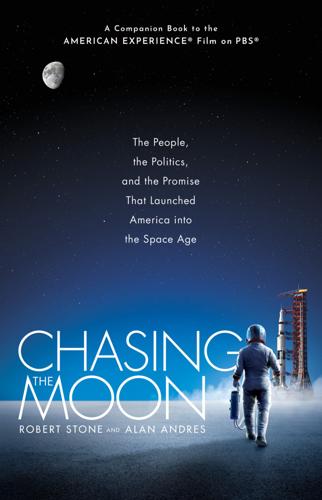
Chasing the Moon: The People, the Politics, and the Promise That Launched America Into the Space Age
by
Robert Stone
and
Alan Andres
Published 3 Jun 2019
* * * — THE KENNEDY ADMINISTRATION’S problems with Cuba and the Soviet Union reached a climax when American intelligence aircraft flying over the Caribbean island discovered photographic evidence of the deployment of medium- and intermediate-range ballistic nuclear missiles. For thirteen days during October 1962, the fate of the world hung in the balance as the United States and the Soviet Union engaged in a nerve-racking battle of wills, which subsided only when the Soviets announced they would dismantle and remove the missiles. The Cuban Missile Crisis brought the world closer to nuclear annihilation than any other moment in the history of the planet and served as a cautionary lesson to both superpowers. For those who experienced those days in October of 1962, life would never be quite the same. As the crisis developed, the Pentagon distributed a list of likely missile targets in the United States.
…
After sitting through some of the White House strategy meetings, Minow had come to believe the Third World War was likely, and he confided to his wife that he’d already decided not to go if he received an order to evacuate; instead, he would return home to be with his family. In Minow’s estimation, Kennedy’s handling of the Cuban Missile Crisis was his greatest legacy. He recalls attending meetings in which the president’s military advisers pushed Kennedy to bomb Cuba. Had it not been for the previous mistake of the Bay of Pigs, Minow believes, Kennedy wouldn’t have had the courage to overrule his military. When he chose to address the General Assembly of the United Nations a year after the crisis, President Kennedy wondered if perhaps space might serve as the diplomatic bridge between the two superpowers.
…
Just to be safe, Kraft called Borman at the White House and asked if he could use his new connections in the USSR to obtain details about Luna 15’s trajectory. From his small White House office, Borman sent a teletype message to the head of the Soviet Academy of Sciences, using the now-famous hotline set up by President Kennedy in the aftermath of the Cuban Missile Crisis. In his message, Borman requested Luna 15’s orbital parameters, in accordance with the rules of the 1967 Outer Space Treaty. Within hours Borman received a response, revealing that Luna 15’s trajectory would not intersect Apollo 11’s orbit, as well as an assurance that should anything change he would be notified promptly.
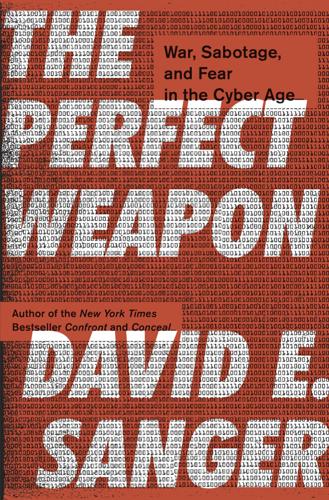
The Perfect Weapon: War, Sabotage, and Fear in the Cyber Age
by
David E. Sanger
Published 18 Jun 2018
“The temptation is always to seek to integrate it into familiar doctrine: to deny a revolution is taking place.” It was time, he said, “to attempt an assessment of the technological revolution which we have witnessed in the past decade” and to understand how it affected everything we once thought we understood. The Cuban Missile Crisis erupted only five years later, the closest the world came in the Cold War to annihilation by miscalculation. That crisis was followed by the first efforts to control the spread of nuclear weapons before they dictated our fate. While most nuclear analogies do not translate well to the new world of cyber conflict, this one does: We all live in a state of fear of how our digital dependencies can be hijacked by nations that in the past decade have discovered a new way to pursue old struggles.
…
Some said it was the Chinese. Or the Russians. Or a disgruntled insider. Even Wired magazine, usually pretty careful about such topics, characterized the case as “flimsy.” The truth was that the Obama administration had done a poor job of making its case against North Korea. There was no “Cuban Missile Crisis moment,” in which Obama, like Kennedy fifty-two years before, presented his evidence. And what would he have shown? Everyone could recognize the Soviet missiles in Kennedy’s spy-satellite photographs. But computer code was not made for vivid visuals. “The best you can say is that there isn’t a shred of evidence that anyone else was behind the hack,” Kevin Mandia said to me at the time, after being called in to Sony to help.
…
There were exceptions, of course, moments of national terror: the British burned Washington in the War of 1812, the Japanese attacked Pearl Harbor, and al Qaeda brought down the Twin Towers and struck the Pentagon. But we knew the only attack that could threaten the existence of the country would come at the tip of a Soviet or Chinese intercontinental missile, or in the form of terrorists with access to nuclear weapons. And after some terrifying close calls, notably the Cuban Missile Crisis in 1962, we found an uneasy balance of power with our primary adversaries—mutually assured destruction—to deter the worst. It worked, or has so far, because the cost of failure is so high. In the cyber age, we have not found that balance, and probably never will. Cyberweapons are entirely different from nuclear arms, and their effects have so far remained relatively modest.
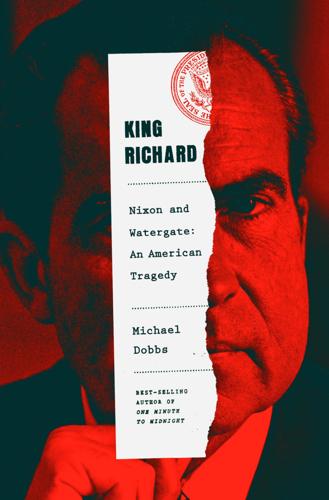
King Richard: Nixon and Watergate--An American Tragedy
by
Michael Dobbs
Published 24 May 2021
Truman and Eisenhower both experimented with recording press conferences and scraps of private conversations but soon abandoned the practice. The first president to tape himself extensively was John F. Kennedy, who made a copious record of the anguished debates with his advisers during the Cuban missile crisis. Kennedy’s successor, LBJ, routinely recorded his telephone conversations, accumulating more than eight hundred hours of material he intended to use for his memoirs. Like his predecessors, Nixon assumed that the tapes were his private property. After being shown the newly installed microphones in the Oval Office, he again demanded assurances that no one be allowed to listen to the recordings without his authorization.
…
For many years, the personalized license plate on his vintage Rolls-Royce read “H20GATE.” Manolo Sanchez and his wife, Fina, retired to their native Spain after serving the Nixon family in New York, the White House, and California. ACKNOWLEDGMENTS I have long been interested in hinge moments in history. My book on the Cuban missile crisis, One Minute to Midnight, described our closest ever brush with nuclear apocalypse. Another book, Down with Big Brother, told the astonishing story of the collapse of communism and the fall of the Soviet empire. The hundred days that followed Richard Nixon’s second inaugural in 1973 is replete with similar drama.
…
Kennedy Library 4Richard Nixon Library 5Richard Nixon Library 6National Archives 7Everett Collection 8Richard Nixon Library 9Richard Nixon Library 10Richard Nixon Library 11Richard Nixon Library 12Richard Nixon Library 13Lyndon Johnson Library 14(left) Richard Nixon Library; (right) Everett Collection 15Richard Nixon Library 16Richard Nixon Library 17David Hume Kennerly, Getty / Hulton Archive 18Richard Nixon Library 19Richard Nixon Library 20Richard Nixon Library 21Richard Nixon Library 22Richard Nixon Library 23Richard Nixon Library 24Richard Nixon Library 25Richard Nixon Library 26Richard Nixon Library 27Richard Nixon Library 28Richard Nixon Library 29National Archives 30Richard Nixon Library 31Richard Nixon Library 32Richard Nixon Library 33Richard Nixon Library 34Richard Nixon Library 35Wally McNamee, Getty / Corbis Historical A NOTE ABOUT THE AUTHOR Michael Dobbs was born and educated in the U.K. but is now a U.S. citizen. He was a longtime reporter for The Washington Post where he covered the collapse of communism as a foreign correspondent and founded the Fact Checker column. His previous books include the bestselling One Minute to Midnight on the Cuban missile crisis, which was part of an acclaimed Cold War trilogy. He lives outside Washington, D.C. What’s next on your reading list? Discover your next great read! Get personalized book picks and up-to-date news about this author. Sign up now.

The Psychopath Test: A Journey Through the Madness Industry
by
Jon Ronson
Published 12 May 2011
Al shrugged and glanced at the floor for a moment. “I was stationed on a nuclear missile site,” he said. “You’re dealing with nuclear weapons. I was there during the Cuban missile crisis. The job’s very serious. You’ve got a mission. If you fail the mission, a lot of people could be seriously hurt. And does that commitment conflict with your family life? Of course it does. . . .” Al was referring to the time during the Cuban missile crisis that he left his five-months-pregnant wife home alone with no food or access to money and in desperation she had to call her mother and sister for help. “Oh!” I said.
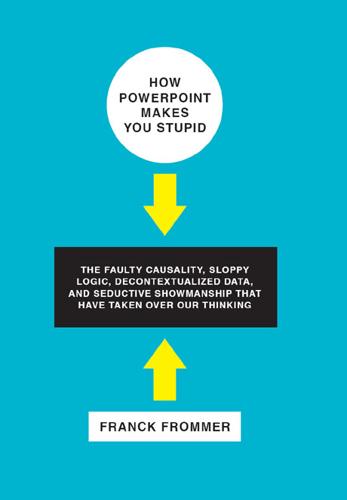
How PowerPoint Makes You Stupid
by
Franck Frommer
Published 6 Oct 2010
On the subject of “information culture” more generally, it is worth consulting Armand Mattelart, Histoire de la société de l’information (Paris: La Découverte, 2001), 35–41, where one discovers the essential role of the former mathematician, Harvard professor, and president of Ford, Robert McNamara, in the rationalization of management in the Kennedy administration, where he was secretary of defense during the Cuban missile crisis and the beginnings of the Vietnam War. The American sociologist Daniel Bell names in the pantheon of figures inspiring technocracy Henri de Saint-Simon, Frederick Taylor, and Robert McNamara. 9. See, for example, www.slideshare.net, http://presentationload.com, http://thepowerpointtemplates.com. 10.
…
See illustration The Cognitive Style of PowerPoint (Tufte), xiii–xiv, 201 on graphs, 89–90 on lists, 60, 64 Commodore, 9 communication normalized, 224 and screen, 79 societal foundation, 225 and work, 33–34 Compaq, 9 competencies, 210–14 employment, 213–14 school, 211 work, 212 computer home ownership, 220 use in higher education, 199, 220 See also microcomputer computer science, 134 consultants, 130–35, 141–51, 181–82, 188 Anglo versus European, 146–48 company slides, 145–46 computer science, 134 formalization, 132 Minto pyramid principle, 145 models, 131–33 Taylor & Fayol, 131 reductionism, 132, 135 content versus form, 42–43 form dominates, 126, 222 control education, 221 and PowerPoint, 46–48 Conway, Melvin, 63 Craig, Russell, 201 critical thinking, 165, 228 cryptography, 19 Cuban missile crisis, 155–56 Darcos, Xavier, 181, 218, 220 Debord, Guy, 223, 226 Del Rey, Angélique, 211 Deming, William Edwards, 136 Deming’s wheel, 136 diagrams and graphs, 86–92, 135–41 BCG matrix, 137 Deming’s wheel, 136 flow chart, 140 Porter matrix, 137–38 SWOT matrix, 139 See also illustration Diffie, Whitfield, 19–20 digital natives, 214, 224 digital workplace, 217–21 Duarte, Nancy, 86 DuPont and graphic presentations, 2–3 econometrics, 133 economization, 168–75, 181–82 education, 199–209 business, 192, 211–12 competencies, 210–14 computer use, 199, 220 digitalization, 216–22 digital workplace, 217–21 divisions by discipline, 200, 208–9 employment, 206–7, 213–14 expenditures for training, 192–93 France versus Anglo-Saxon, 208, 216 humanities and social sciences, 205–7 employability, 206–7 images and animation, 203 note taking abandoned, 204 outcomes, 201, 220 PowerPoint, 214–15 versus learning, 197–99, 201–2, 227–28 versus teaching, 204–5 privatization, 219 sell yourself, 222 whiteboards, 215–17 See also readability employee adaptability, 32, 41 autonomous, 8–9, 12, 28, 48 and employer relations, 212 See also Taylorism; workplace English, 53, 208 See also language Enjeux–Les Échos, 224 Eurotunnel, 70–71 Facebook, 65 Fallows, James, 159, 161 Farkas, David, 51, 200 Fayol, Henri, 131 Fiasco (Ricks), 163–64 Le Figaro, 205 flow chart, 140 Forethought, 21 France economization, 168–75, 181–82 education, 209 versus Anglo-Saxon, 208, 216 France Telecom, 180–89 jobs, 182, 189 slides, 183–89 Franks, Tommy, 163 Friedman, Milton, 191 Gaglio, Gérard, 34, 39, 102, 105 Gallo, Carmine, 117–18 The Presentation Secrets of Steve Jobs, 117 Gardiner, Sam, 159–60 Gaskins, Robert, 15–25, 39 background, 17–18 Bell Northern to Forethought, 20–21 criticizes PowerPoint, 24–25 first PowerPoint presentation, 15–16 Microsoft acquires PowerPoint, 21–22 Gates, Bill, 21, 115–16 Gaulejac, Vincent de, 223 globalization, 173–74 See also economization Godin, Seth, 86 Goody, Jack, 57–58 Google, 65, 94, 97 Gore, Al, 227 An Inconvenient Truth, 73, 118–24 Apple Macintosh, 120 awards and ticket sales, 119 biographical details, 121 graphic presentation.
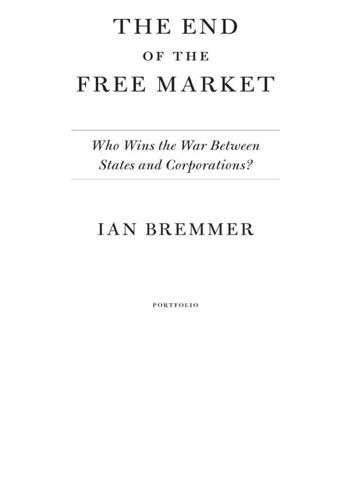
The End of the Free Market: Who Wins the War Between States and Corporations?
by
Ian Bremmer
Published 12 May 2010
For the projection of power around the world, no weapon is more valuable than an aircraft carrier. The United States has eleven carrier groups; China has none. In short, the gap between the U.S. and Chinese militaries is considerable, and widening in America’s favor. But though state capitalism’s challenge to free markets won’t generate the drama of the Berlin airlift or the Cuban missile crisis, it can compromise a country’s security and the future of the global economy. With mercantilism a thing of the past, few now doubt that commerce can generate new wealth and expand more than one economy at a time. The end of the Cold War and the growth of emerging-market states like China, India, Russia, Brazil, and others have created new opportunities for precisely that kind of mutually profitable exchange.
…
Calderón, Felipe Camara, Moussa Dadis Canada capitalism, free market better government produced by different models of mixed skepticism of Capitalism, Socialism, and Democracy (Schumpeter) capitalism, state, see state capitalism Caribbean Community (Caricom) Castro, Fidel CEDIGAZ Chávez, Hugo Chayefsky, Paddy Check Point Software Chemezov, Sergei Chen Yun child-labor laws Chile China African commercial ties with banks in decoupling and in economic crisis economic growth in economic reforms in foreign direct investment in Internet in IPR violations by military of oil demand in sovereign wealth funds in Soviet split with “special economic zones” in state-owned enterprises in stimulus package in trade by China Development Bank China Investment Corporation (CIC) China Mobile China National Offshore Oil Corporation (CNOOC) China National Petroleum Corporation (CNPC) Christian Science Monitor Citgo Petroleum Corporation Citigroup Clinton, Bill Clinton, Hillary Coca-Cola Colbert, Jean-Baptiste Cold War collateralized debt options Commercial International Merchant Bankers Committee on Foreign Investment in the United States (CFIUS) communism Communist Party, Chinese Communist Party, India Companhia Vale do Rio Doce companies, privately owned see also specific companies companies, state-owned see also national oil and gas corporations consumer sovereignty Conté, Lansana Correa, Rafael Costa Rica Council on Foreign Relations credit-default swaps Cuba Cuban missile crisis Daimler/Chrysler Davidson, Christopher Declaration of Independence decoupling Defense Department, U.S. democracy Democratic Party, U.S. Deng Xiaoping Denmark Deripaska, Oleg derivatives Deutsche Bank dictatorship dirigisme dollar, U.S. Dongfeng Motor Corporation dot-com bubble Drake, Francis Dubai Dubai Ports World Dubai: The Vulnerability of Success (Davidson) Dubai World Dutch East India Company Dutch tulip mania East Siberian Gas Company Economist Intelligence Unit’s (EIU) Democracy Index Ecuador Egypt Egyptian General Petroleum Company Eisenhower, Dwight D.
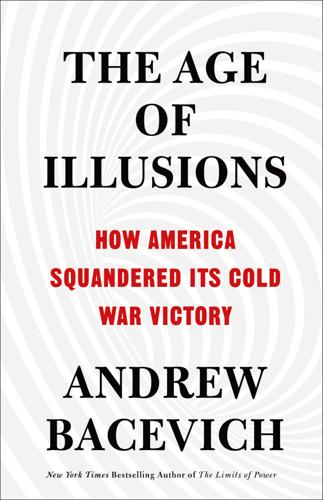
The Age of Illusions: How America Squandered Its Cold War Victory
by
Andrew J. Bacevich
Published 7 Jan 2020
So once beyond its sobering initial phases, highlighted by dangerous confrontations centering on Berlin and the Korean peninsula, the Cold War was not so much waged as managed. Dramatic rhetorical flourishes notwithstanding, both sides came to recognize that they shared a mutual interest in avoiding Armageddon, a point definitively driven home in 1962 by the Cuban Missile Crisis. The challenges inherent in achieving even that limited objective appeared likely to continue far into the future, as would the rivalry pitting the United States against the Soviet Union, the Free World against the Communist Bloc, the West against the East. Presidents might express ritualistic hopes of achieving world peace, but the immediate task was simply to prevent the superpower competition from getting out of hand.
…
See also post–Cold War (Emerald City) consensus Bush Jr. and Bush Sr. and citizens vs. soldiers and consequences of containment and critics and defined democracy and Dulles and end of, with fall of Berlin Wall freedom and geopolitics and globalization and Hillary Clinton and ideology and limits and materialism and morality and Nixon and president as leader of Free World and Reagan and religion and Trump and Vietnam and Collins, Gail Columbian Exchange Comey, James common good Communism capitalism vs. collapse of Nixon in China and Wallace and conservatives consumerism and materialism consumer protection containment Coolidge, Calvin Council on Foreign Relations credit card debt crime criminal justice reform Cruz, Ted Cuba invasion of 1898 Obama and Cuban Missile Crisis culture wars Culture Wars (Hunter) Cyrus the Great death penalty Declaration of Independence Defense Department Defense of Marriage Act (1996) deindustrialization Deliberate Force, Operation demagogues democracy Democratic Party primaries of 2016 “deplorables” depression and anxiety Desert Storm, Operation Dewey, Commodore Dewey, Thomas discrimination diversity military and Obama and divorce Donaldson, Sam Doonesbury (Trudeau) Douthat, Ross Dowd, Maureen drugs and substance abuse Dukakis, Michael Duke University Dulles, John Foster Earth Summit (Rio de Janeiro, 1992) Eastern Europe economy.
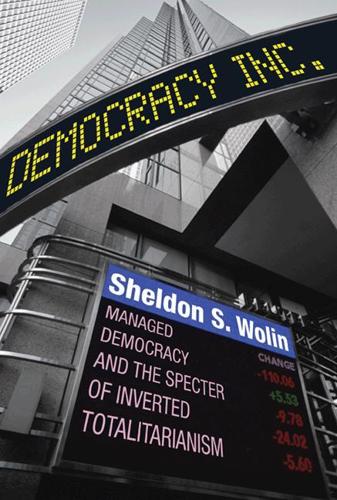
Democracy Incorporated
by
Sheldon S. Wolin
Published 7 Apr 2008
As then Vice President Nixon explained, “tactical atomic explosives are now conventional.”52 When the Cold War threatened to become too normal and abstract, déjà vu all over again, there would be “war scares,” including air raid drills during which children practiced protecting themselves from nuclear attacks by huddling under their schoolroom desks.53 Perhaps the most unnerving example of the mentality at work constructing a Cold War power imaginary was the doctrine of “Mutual Assured Destruction” formulated in the aftermath of the Cuban Missile Crisis of 1962. Instead of targeting an enemy’s military facilities “each side should target the other’s cities” in order to cause the most casualties possible. “The assumption behind it,” according to one historian, “was that if no one could be sure of surviving a nuclear war, there would not be one.”54 If there had been one, incinerated parents could die comforted with the knowledge that, thanks to school desks, their children would have been spared.
…
Foreign affairs, like military affairs, were about power politics, unpredictable dangers—including threats to the very existence of the nation—complex strategies, and “the” national interest, subjects about which average citizens lacked the experience and competence to judge. The models for the kind of experienced expertise qualified to deal with high matters of state were the “wise men” assembled by President Kennedy during the Cuban Missile Crisis and later by President Johnson for Vietnam strategies.11 Although the one was a near nuclear disaster (averted because in the end JFK followed his own judgment) and the other a clear disaster (plunged into because LBJ did follow his more hawkish advisers), neither resulted in discrediting the status of elitism or its claims.
…
Bush administration, 94, 109, 143 and government, 111, 136, 137, 138–41, 144, 145–47, 160, 169 and health care, 109 Huntington on, 180, 181 and inequalities, 157, 269 and instability, 128, 129 and inverted totalitarianism, xviii, xxi, 44, 45, 47, 56–57, 61, 139, 185, 238–39 and Iraqi economy, 88 and Iraq War, 93, 193–94 and liberalism, 220 lobbying by, 51 and low-wage workers, 196 and managed citizenry, 107 and Mansfield, 173 and military, 45, 135, 136, 199–200 and myth, 13 and opinion manipulation, 60 political incorporation of, 91 political influence of, 66–67 and political parties, 201 and presidency, 102, 103 and Reagan, 272 and religion, 46, 116, 127, 128–29 and Republican Party, 63, 127, 150, 187, 201 rise of, xxii and Rumsfeld, 169 and science, 126, 132 and Smith, 123 and social programs, 111 and state, xxiii, 58, 63, 67, 87, 92, 112–13, 131, 135, 143, 195, 200, 220, 238–39, 284, 287 and Straussians, 168 and Superpower, 62, 102–3, 131, 132, 133, 139, 143 and taxation, 274 and technology, 132 and wartime sacrifice, 109–10. See also business Corwin, Edward, Total War and the Constitution, 16–17, 41–42, 50 Coughlin, Charles, 23 criminal justice system, 57, 58. See also judiciary/courts Cromwell, Oliver, 251 Cuba, 190 Cuban Missile Crisis, 33, 165 culture, xviii, 61, 63, 157 culture wars, 111–12, 224 Dahl, Robert, 51 Darwin, Charles, xxii Dean, Howard, 205, 216, 324n14 defendants, rights of, 78, 108, 182, 235. See also judiciary/courts deficits, 157, 270 Delay, Tom, 119 democracy: and American colonies, 150–51, 254, 255 and antidemocracy, xx–xxi and archaism, 121 Athenian, 95, 150, 151, 242–48, 256 as breaking with past, 273, 274, 275 and capitalism, 34, 267, 268–69 and citizens, 290–91 citizens as agents in, 60 citizens as source of power in, 90–91 and citizens’ participation, 121, 186–87 citizens’ responsibility in, 138 and classic totalitarianism, 50 and Cold War, 26, 36 and Cold War liberals, 27 conditional basis of authority in, 173 and consent, 76, 77, 79 consolidation of American, xix and Constitution, 219, 225–30, 242, 254 constitutional, 104 as contributing to Nazism and Fascism, 52–54 and corporations, 139–40, 187, 258 corruption in, 245 decline of, 107 and despotism, 79–80 development of American, 255–58 and education, 161 and election of 2000, 102 and elections, 147–48 and elites, 55, 159, 160, 166, 173, 234, 245–46 and empire, 20, 52, 70, 97, 100, 189, 191, 194, 244–45, 247–48, 267, 273 and equality, 61, 186, 268–69 essentials of, 212–13 and everyday vs. virtual reality, 268 exclusion of, 134 and extraordinary majority, 156 as failing, 259–60 and foreign policy, 165 and Founding Fathers, 155, 225–30, 229 and free enterprise, 91, 92 fugitive, 23, 227, 254, 255, 277, 278, 287, 288, 290 and government regulation, 195 and grievances, 255 Huntington on, 179, 181 and inequalities through capitalism, 157 and Internet, 233 and inverted totalitarianism, xxiv, 46, 47, 49, 52, 61, 259 in Iraq, 141–42 and Iraq War, 50 and irrationality, 280 Jefferson on, 256–57 and liberalism, 270 limited role of, 257 local character of, 291 Machiavelli on, 151–52 managed, xxiv, 47, 97, 102, 136–37, 140, 141, 142, 143, 149, 150, 155, 156, 157, 159, 166, 213, 229, 240, 257, 273, 280, 287 and managers, 145 Mansfield’s contempt for, 172 and military, 147 and The National Security Strategy of the United States, 85 Negroponte on, 134 and New Deal, 273 and NSC-68, 31 nurturance of, 81 and the people, 243 and Plato, 266 plebiscitary, 54 and postclassical Europe, 248–49 and privatization, 213 and public service, 146 and Putney debates, 250–53 and redress, 227 and religion, 2–3, 119 and Republican Party, 187, 224 revival of, 259, 273–75, 287–92 sacrifice under, 108 self-distrust of, 110 shareholder, 65 Smith on, 21 and Strauss, 167, 171 and Superpower, 51, 100, 101, 107, 233, 237, 260, 267 Tocqueville on, 79 and totalitarianism, 42–43, 54 and truth, 260–67 Turner on, 232–33 values of, 269 Zakaria’s attack on, 174–77, 178 Democratic Convention of 1968, 216 Democratic Party: centrism of, 206, 325n24 and Cold War, 27 in Congress, 111, 202–3 conservatism of, 206–7 constituency of, 149 and corporations, 207 and election of 2000, 166 and election of 2004, 205–6 and elimination of social programs, 156 and environment, 206, 207–8 financing of, 195 and government as enemy, 157 as inauthentic opposition, 201 and Iraq War, 103–4, 110 as majority party, 286, 287 and small government, 136 demos: and American colonies, 254 Athenian, 243, 246, 247, 250 decline of power of, 194 defined, 278 development of, 289–90 and elites, 290 and evolving American democracy, 258 fragmented, 277 as fugitive, 288 grievances of, 255 as irrational, 282 modern, 250 and past, 276 power of, 249–50.
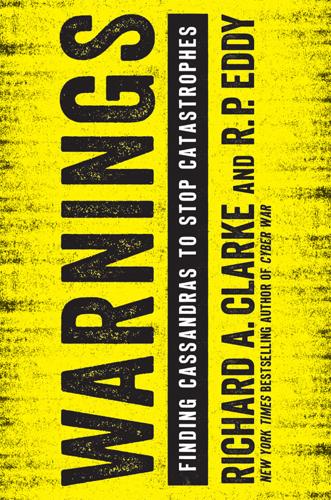
Warnings
by
Richard A. Clarke
Published 10 Apr 2017
They ordered the Red Army to nuclear alert, sending submarines to sea, putting bombers in the air, and fueling missiles. When the NATO exercise ended, the Soviet Union gradually backed down too, but the incident brought the United States and Soviet Union closer to war than they had been since the Cuban Missile Crisis twenty years earlier. Certain tells had been identified by Charlie Allen and his staff to monitor the situation between Iraq and Kuwait. Months before, in January, he ordered his staff to review the Iraqi I&W target list. They refined the list and increased the priority of photographing the key units.
…
In retrospect it seems inexplicable that almost forty years after the first nuclear weapon was used, after the two superpowers had built tens of thousands of nuclear weapons, that the world’s most powerful nations did not really understand the implications of using them against one another. After all, they had come perilously close to fighting such a war several times, the Cuban Missile Crisis of 1962 being the most famous. Both nations had nuclear-armed missiles on alert, capable of launching at a moment’s notice. On a normal day, the United States had B-52 bombers armed with nuclear weapons flying patrols just outside of Russian airspace, each with predetermined targets, waiting for the “go code.”
…
See also Upper Big Branch Mine disaster Cassandra system, 122, 125, 133, 137–38, 140–41 fatality rate, 123–24, 125–28 federal regulations, 124–30, 137–39 federal research program, 124–25 history of, 122–23 institutional refusal and, 137–42 Coastal wetlands, 41, 42–44 Coastal Wetlands Planning, Protection, and Restoration Act (CWPPRA), 43–44 Coding errors, 366–67 Cognitive biases, 34–35, 171–72 heuristics and, 189–91 Cognitive style, 14–15 Cold and the Dark, The: The World after Nuclear War (Sagan, Ehrlich, and Kennedy), 273–74 Cold Start doctrine, 264–65, 267, 270 Cold War, 25–26, 267–68, 271–74, 277–78 Collateralized debt obligations (CDOs), 147–48 Columbia University, 237, 238 Coming Plague, The (Garrett), 232 Complexity, and vulnerabilities, 366–67 Complexity Mismatch, 116, 178–79, 215, 299 Comprehensive Nuclear-Test-Ban Treaty (CTBT), 266 Computers in Crisis (Murray), 193–94 Conference on the Long-Term Worldwide Biological Consequences of Nuclear War (1983), 273 Congressional oversight committees, 355 Consensus science, 172–73 Continuous miners, 131–32 Conventional wisdom, 28, 355 Coplan, Jeremy, 186 Corvette hacks, 297–98 Cosmic Catastrophes (Morrison and Chapman), 302, 303, 304–5, 308–9, 312, 314–15, 319 Cost-benefit analysis, 361–62 Countervalue strike, 275, 278–79 Cowardice, 180 Cox, Jeff, 150 Cretaceous-Paleogene extinction event, 307–9 Crichton, Michael, 172–73 Crick, Francis, 328 Crimea, 285 CRISPR, 231–32, 326, 327, 329–49 CRISPR/Cas9, 326, 330–49, 360, 366–67 CRISPR Therapeutics, 333 Critical infrastructure protection (CIP), 287 Critics, 168, 170, 186–88 Crittenden, Gary, 143–44, 156 Crocker, Ryan, 73 Crocker’s Rules, 208–9 Cuban Missile Crisis, 26, 274 Cybersecurity, 283–300 Cynomolgus monkeys, 334–35 Daniel, 2 DARPA (Defense Advanced Research Projects Agency), 210, 382n Darwin, Charles, 325 Data, 36–37, 184 “Decay heat,” 85 Decision makers (the audience), 168, 170, 176–82, 380n false Cassandras and, 191–98 making the same mistakes, 189–91 responses, 358–64 scanning for problems, 354–56 Deep Impact (movie), 313–14 Deep learning, 210, 212 Demon core, 83 Deutsche Bank, 157 Devil’s advocates, 359, 379n DiBartolomeo, Dan, 105–6 Diffusion of responsibility, 176–77, 215, 235, 321, 348 Dinosaurs, 307–9 DiPascali, Frank, 107 Disembodied AI, 207 DNA, 326, 327–28, 336–37 Dole, Bob, 28–29 Dot-com bubble, 147 Doudna, Jennifer, 326–30, 335–36, 338–41, 343, 345, 346–49, 360 Drijfhout, Sybren, 253 Duchenne muscular dystrophy, 332 Duelfer, Charles, 30–31 Eagles, the (band), 305 Earth Institute, 238 Earthquake preparedness, 352–53 Ebola virus, 3, 219–20 Edwards, Edwin, 43 Eemian interglacial, 249, 250 Eggers, Dave, 39 Egypt, 59, 63, 66–67 Ehrlich, Paul, 192–93 Ein-Dor, Tsachi, 13, 186, 380n Einstein, Albert, 185 Eisman, Steve, 149, 152 Electricity Information Sharing and Analysis Center (E-ISAC), 287 Electric Power Research Institute, 286 Electromagnetic pulse (EMP), 274, 352 Embodied AI, 206 EMCON (emissions control), 29–30 Empire State Building, 260 Empirical method, 36, 184, 185 Energy policy, 243–44 Enron, 152 Enthoven, Alain, 361 Epidemic Intelligence Service, 354–55 Epidemic That Never Was, The (Neustadt), 196–97 EQ (emotional quotient), 183 Erasmus Medical Center, 222 Ermarth, Fritz, 27 Erroneous Consensus, 172–73 Ethics of AI growth, 205–6 of gene editing, 334, 339–40, 343 Eugenics, 342, 344 Evolution, 329–33 Expert Political Judgment (Tetlock), 13–15 Explainable AI, 210 Fairfield Greenwich Group, 108, 113 Fallujah, 68, 69 False Cassandras, 191–98 Famines, 192 Farmington Mine disaster, 127–28 Farson, Richard, 175 “Fast-failure” review, 357 Fatalism, 2 Fate of the States (Whitney), 153 Federal Bureau of Investigation (FBI), 8, 100, 112, 115 Federal Deposit Insurance Corporation (FDIC), 160 Federal Emergency Management Agency (FEMA), 40, 46–48, 51, 53–54, 323–24 Hurricane Pam exercise, 40, 47–49 Federal Reserve Bank, 159 Feedback loops, 16, 192–93 Fermi, Enrico, 373n Feynman, Richard, 240 Figueres, Christiana, 247 Financial Crisis Inquiry Commission, 162 Financial crisis of 2008, 143–65 Madoff fraud and SEC, 118–19 primary cause of, 147–48 Whitney and, 143–46, 148–50, 156–60 Flash Crash of 2010, 211 Fletcher, Charles, 256–57 Flood Control Act of 1928, 42 Flood Control Act of 1965, 46 Flu pandemic of 1918, 195, 198, 217, 221–24 Flu pandemic of 2009, 217–18, 221–22 Forbes, 154 Ford, Gerald, 196–97 Ford, Robert, 57–74 aid to Syrian opposition, 62–63, 64–65 ambassadorship in Egypt, 67 ambassadorship in Syria, 57–58 departure from Syria, 60–62 warning and prediction of, 64–74 Foreign Service, U.S., 57, 58, 67 Fortune, 146, 148–49, 161 Fossil fuels, 16, 42, 257–58.
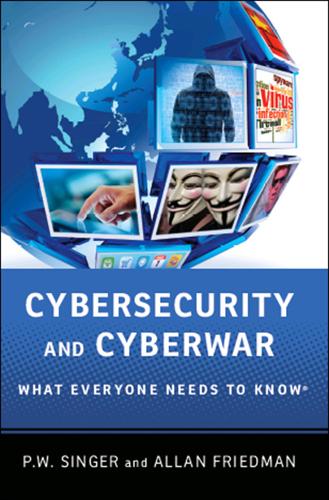
Cybersecurity: What Everyone Needs to Know
by
P. W. Singer
and
Allan Friedman
Published 3 Jan 2014
For instance, when General Curtis LeMay headed the new Strategic Air Command in the 1950s, he surprised civilian leaders when they finally got around to asking what he planned for American nuclear bomber forces, if there ever were a crisis with the Soviets. LeMay explained that he was not too concerned, because he’d just order a preemptive nuclear attack. “I’m going to knock the s**t out of them before they take off the ground.” It’s a good thing they asked and shut down such plans before the Cuban Missile Crisis just a few years later. Today’s leaders might want to ask if there are any cyber equivalents. Focus: What Is the Chinese Approach to Cyberwar? “The most threatening actor in cyberspace.” So who won this not-so-prized description? Not al-Qaeda. Not the US military’s Cyber Command. Not Facebook’s privacy policy.
…
With the two superpowers at loggerheads, the Baruch plan fell apart. Instead, a nuclear arms race would shape the next 50 years of global politics, a time in which over one hundred thousand atomic bombs would be built and the world would almost be destroyed several times over, as during close calls like the Cuban Missile Crisis. While today’s emerging cyber arms races are far from identical to the Cold War, there are still lessons that can be learned from it. Or, to paraphrase Mark Twain, while history may not always repeat itself, “It does rhyme.” One of the most instructive lessons is that the initial periods of a burgeoning arms race are often the most dangerous.
…
The possessors of the new technology see themselves as having a unique advantage but one that is fleeting, creating a “use it or lose it” mentality. It is also the period in which the technology and its consequences are least understood, especially by senior leaders. In the Cold War, for example, probably the scariest time was not the Cuban Missile Crisis, but the late 1940s and 1950s when the real-world versions of Dr. Strangelove were taken seriously, arguing that nuclear war was something that was not only survivable but winnable. This was a period that saw everything from General Douglas Macarthur’s 1951 demand to be given sole discretion to drop atomic bombs on mainland China to perhaps one of the most outrageous nuclear concepts of all, Project A-119.
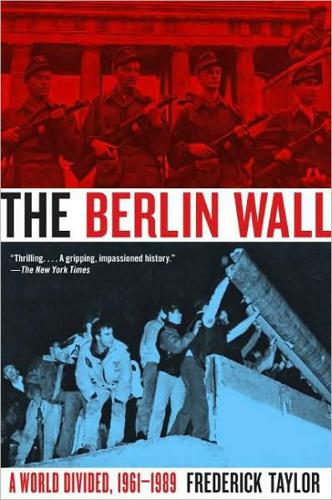
The Berlin Wall: A World Divided, 1961-1989
by
Frederick Taylor
Published 26 May 2008
Only if the ‘enemy’ agreed to respect totally the integrity of the GDR’s borders should this concession be extended. After one final Christmas agreement (1966), the concession was not renewed. It would be years before West Berliners could once again visit the East—as part of a more general settlement which went a long way to granting the Communist regime the recognition it craved.2 During the Cuban Missile Crisis of October 1962, almost everyone had expected the Soviets to apply extra pressure via Berlin. The Americans had, after all, demanded the right to board and inspect Soviet missiles bound for Cuba. There had been anxiety that the Soviets would respond with a similar move against Allied traffic going into Berlin.
…
The kind of polarised antiCommunist attitudes that had been general in West Berlin at the beginning of the 1960s had given way, for much of the population-including the political and media élite-at best to a more nuanced view of the Cold War, at worst to a bite-the-hand-that-feeds anti-Americanism. After the Cuban Missile Crisis, the main theatre of the Cold War did not switch back to Europe. Despite crablike progress towards a halftolerable status quo in Berlin during the rest of the decade, and the usual East-West name-calling, at no point did the city become a potential flashpoint for the Third World War as it had been between 1948 and 1963.
…
Edgar, 143 Horn, Gyula, 406 Howley, Colonel Frank L., 38-9 Hoxha, Enver, 276 Hübner, Lieutenant-Colonel, 141 Huguenots, 8 Huhn, Private Reinhold, 317-18, 320, 326 Human Rights Watch, 382 Humboldt Harbour, 260-2, 293 INDEX / 509 Hungary, 5, 15; elections, 43; uprising, 100-1, 106, 145, 263, 299; trade with West Germany, 149; escapes through, 332; technology imports, 373; opens border, 401, 404, 406; economic revival , 444 Hurd, Douglas, 433 Hussiten Strasse, 187 HVA ,371, 418 Hyannis Port 204-5, 209, 214, 218, 224-5 lch Klage An, 181 Independence, Missouri, 72 India, 11, 55, 443 Ingolsradt, 447 intelligentsia, 192 International Press Centre, 422 Invalidenfriedhof cemetery, 307 Invalidenstrasse, 169; checkpoint, 425, 427-8 Iran, 360, 375 Iraq, 207, 375 Ireland, 340, 443 Iron Cross, 14 Iron Curtain, 37, 174, 370 Israel, 155, 443 Italy, 15, 23, 50, 210, 445 Jäger, Lieutenant-Colonel Harald, 427 James I, King of England, 6 Japan, 377, 385, 444 Jena; battle of, 12 Jenapharm drugs company, 349 Jercha, Heinz, 315 Jerusalem, 155 Jerusalem Strasse, 318 Jesenskä, Milena, 450 Jew Süss, 181 Jews, 22-3, 27, 40-1; and ’doctors’ plot’, 78; in Görden prison, 92; property expropriated, 194-5 510 / THE BERLIN WALL Joachim II, Elector of Brandenburg, 5 Joffre, Marshal, 398 Johannisthal, 256 John Paul II, Pope, 387 Johns, Colonel Glover, 249-51, 253-4 Johnson, Lyndon B., 228-34, 269; visits Berlin, 242-9, 252-7; chastises Brandt, 246-8; love of shopping, 252-3, 255 Junkers, 27, 51 Kabin, I., 89 Kafka, Franz, 450 Kaiser, Jacob, 52 Kaiserswerther Strasse, 176 Karinhall, 109 Karl-Marx-Allee, 346 Karl-Marx-Stadt, 376, 382, 410-11, 439 Karlshorst, 49, 86-7, 214, 274, 280 Kane, Hans Hermann van, 10 Katyn massacre, 401 Kegel, Gerhard, 454 Keibelstrasse, 141, 159 Kelly, Petra, 395 Kennedy, Jackie, 99, 112 Kennedy, John F., 99, 171, 216; sworn in as president, 112; background and rise to power, 112-14; and ’missile gap’, 113, 116; and Khrushchev, 115, 121 summit with Khrushchev, 127-9, 131, 138, 208-9 television address, 131-4, 144-5, 148, 152, 209; and border closure, 145-6, 148, 152; ill health, 203; response to border closure, 145-6, 148, 152; irritation with Brandt, 219; Brandt’s letter to, 221-2, 226-8; reply to Brandt, 228-34, 244, 246-8; letter to Khrushchev, 277; and Checkpoint Charlie confrontation, 284-7; and Peter Fechter killing, 320-1; and Cuban Missile Crisis. 336; Berlin visit, 337-42; ’jelly donut’ story, 340-1; assassination, 341 Kennedy, Joseph, 112 INDEX / 511 Kennedy, Robert, 112, 114, 205, 223-4, 229; and Bolshakov channel, 284-5; and Berlin visit, 337; promotes cultural-exchange programme, 355 Kessler, General, 431, 441 Keutschen, 370 KGB, 149, 195, 198, 215, 291 Khrushchev, Leonid, 454 Khrushchev, Nikita, 81, 356, 403, 413, 417; denunciations of Stalin, 100, 103, 275, 281-2, 346; appoints Gomulka, 101; support for Ulbricht, 102, 105, 118; and rocketry and nuclear weapons, 102-3, 113, 116-18, 120-1, 134-5; declaration on prosperity, 103, 386; mocked by Stalin, 103, 117; provokes Berlin Crisis, 103-5; and Kennedy; and Ulbricht’s Berlin policy, 117, 122, 126-7, 137-8; relations with China, 118, 275-6, 287; relationship with Ulbricht, 119-20; stations missiles in GDR, 120; modest personal status, 123; summit with Kennedy, 127-9, 131, 138; and Kennedy’s television address, 132, 134; meeting with McCloy, 134-5; and border closure, 137, 139-41, 145-6, 148-9, 154, 158, 174; intentions over Berlin, 205-6, 211, 220, 224, 226, 251-2, 254, 269, 274, 288; intentions over GDR, 268, 271, 276-7, 286-8; and XXII.
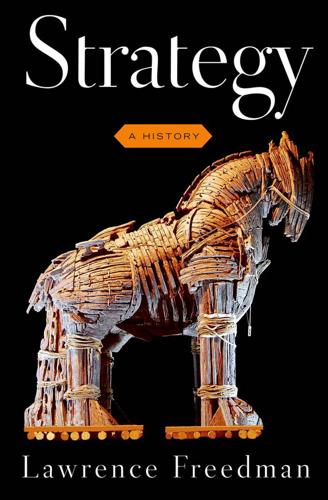
Strategy: A History
by
Lawrence Freedman
Published 31 Oct 2013
Fred Kaplan, Wizards of Armageddon (Stanford: Stanford University Press, 1991), 302. 50. Kaysen to Kennedy, September 22, 1961, Foreign Relations in the United States XIV-VI, supplement, Document 182. 51. Robert Kennedy, Thirteen Days: The Cuban Missile Crisis of October 1962 (London: Macmillan, 1969), 69–71, 80, 89, 182. 52. Ernest May and Philip Zelikow, The Kennedy Tapes: Inside the White House During the Cuban Missile Crisis (New York: W. W. Norton, 2002). 53. Albert and Roberta Wohlstetter, Controlling the Risks in Cuba, Adelphi Paper No. 17 (London ISS, February 1965). 54. Kahn, On Thermonuclear War, 226, 139. 55. Herman Kahn, On Escalation (London: Pall Mall Press, 1965). 56.
…
He had worked with Schelling on the Marshall Plan in the late 1940s, and the two remained good friends. When McNaughton spoke of arms control, for example, he showed interest in the notion of the “reciprocal fear of surprise attack” and “non-zero-sum games.”34 He is said to have remarked that the Cuban missile crisis demonstrated the realism of Schelling’s games.35 McNaughton was a key figure in the development of the U.S. policy on Vietnam, working closely with Secretary of Defense Robert McNamara and National Security Advisor McGeorge Bundy. One of his memos was famously described by a colleague as the reductio ad absurdum of the planner’s art, combining realpolitik with the hyper-rationalist belief in control of the most refined American think tank.36 In a report of a working group McNaughton chaired in February 1964,37 one suggestion was pure Schelling: it would be possible to influence Hanoi’s decisions by action designed “to hurt but not to destroy.”38 Also drawn from Schelling was the proposition that “a decision to use force if necessary, backed by resolute and extensive deployment, and conveyed by every possible means to our adversaries, gives the best present chance of avoiding the actual use of such force.”
…
See Ali, Mohammed Clay, Jenny Strauss, 26 Cleaver, Eldridge, 403 Clegg, Stewart, 559 Clifford, Clark, 447 Clinton, Bill, 434, 450–453 Clinton, Henry, 232 Clinton, Hillary, 453, 455 Co-opetition (Nalebuff and Brandenburger), 523, 710n6 coalitions Carmichael on, 296 Clausewitz on, 90–92 game theory and, 582–583 Hayden on, 376, 380 Napoleonic Wars and, 90–91, 115 Peloponnesian War and, 30, 32–35 Riker on, 581–583 Rustin on, 395 Second World War and, 141–143 Coast of Utopia, The (Stoppard), 265 cognition, hot and cold forms of, 598–599 Cohen, Eliot, 141, 214 Cold War Berlin blockade crisis and, 172–174 communication during, 167, 173 Cuban missile crisis and, 173–176, 190 deterrence theory and, 158–159, 165, 192 nuclear weapons and, 156–159, 167–168 origins of term, 145, 649n2 Cologne Workers Council, 257–258 Columbia University protests, 403–405 Command in the Air (Douhet), 125–126 Committee on Public Information (CPI, United States), 337, 340 communism.
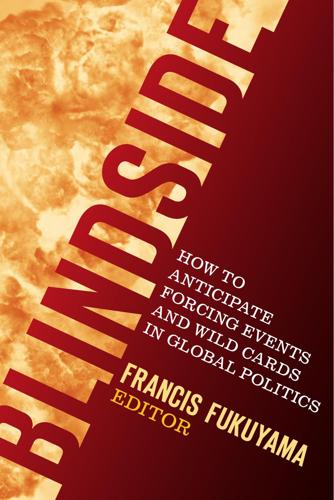
Blindside: How to Anticipate Forcing Events and Wild Cards in Global Politics
by
Francis Fukuyama
Published 27 Aug 2007
He also foresaw most of the personal computing functions now taken for granted—graphing, simulations, modeling, and more. 2990-7 ch06 bonvillian 64 7/23/07 12:10 PM Page 64 william b. bonvillian These insights served Licklider well in the new assignment coming his way. President John F. Kennedy and Defense Secretary Robert McNamara were deeply frustrated by the profound command-and-control problems they encountered during the Cuban missile crisis, particularly the inability to obtain and analyze real-time data and interact with on-the-scene military commanders. DARPA called on Licklider, already at the agency, to tackle the problem. Strongly backed by noted early DARPA directors Jack Ruina and Charles Herzfeld, Licklider set in place a remarkable support network of early information technology researchers at universities and firms that, over time, built the sinews of personal computing and the Internet.
…
.: on East Asian economy, 49; on energy innovation agency, 67, 68; on ethanol, 79; and scientific innovation, 69 Connected science, 61–63 Consumerism, 133 Contact tracing, of SARS, 87 Containment policy: toward Soviet Union, 31, 116; toward U.S., 108 Conventional wisdom, strategic surprises challenging, 94, 95 Convergence, in information technology innovations, 123–25 Corn, ethanol from, 78–79 Cost-benefit analysis: definition of, 14–15; future in, 15, 16, 18–19; inverse, 16–17; limitations of, 14–19, 171; need for, 4; tolerable windows in, 17–18; uncertainty in, 16–18; value of life in, 15–16 Credit Lyonnais Securities Asia, 43 Creutzfeldt-Jakob disease, 83–84 Cuban missile crisis, 64 Cultural barriers, to preparing for catastrophes, 13–14 Cultures, capacity for adaptation in, 154–55 Currency devaluation, in East Asian economic crisis, 43, 44, 47–48 Currency undervaluation, in East Asian economic crisis, 44, 47, 49 Cyber-nations, 156–57 DARPA (Defense Advanced Research Projects Agency), 57–70; creation of, 63; innovation organization at, index 63–67; lessons learned from, 59–60; as model for energy dilemma, 59–60, 67–70; precursors of, 60–63; rise of, 63–65 Darul Islam, 144 Data collection, filters in, 99–100 Day after Tomorrow, The (film), 105, 140 Debt, private, in East Asian economic crisis, 44–45, 46, 48 Debt of Honor (Clancy), 93 Defense, Department of, DARPA’s work with, 64–65, 68 Defense Advanced Research Projects Agency.

Dataclysm: Who We Are (When We Think No One's Looking)
by
Christian Rudder
Published 8 Sep 2014
The thing is, as much as I love that book, and as much as it turns the schoolhouse version of American history on its head, Howard Zinn could still only tell us what he could see, the observable actions, the words spoken aloud. The hearts of women and men were beyond him. In the stress of the Cuban Missile Crisis, in the boredom of the trenches, in the liberation of the Pill—for all the moments of quiet joy and interior anguish lost to history, what if we had the data we have now? How much richer would our understanding be? 1 Google Trends expresses a search’s popularity with a simple index number proportional to the number of searches for the word or phrase.
…
abstractions, 3.1, 4.1, 4.2, 12.1 Academy of Motion Picture Arts and Sciences Africa, 9.1, 9.2n, 9.3, 12.1 African Americans, 12.1, nts.1 jokes about, 8.1n, 8.2, 9.1 as political candidates, 8.1, 8.2 on Twitter, 13.1, nts.1 see also racism aging AIDS, 9.1, 9.2 algorithms, itr.1, 4.1, 6.1, 9.1, 9.2, 10.1n, 10.2, 10.3, 10.4, 11.1, 12.1, 13.1, 13.2, 14.1, 14.2, 14.3 Ali, Muhammad, 8.1, nts.1 Amazon, itr.1, bm2.1, nts.1 American Institute of Public Opinion American Political Science Association (APSA) Anderson, Benedict, 12.1, nts.1 Anderson, Pamela Anonymous collective anorexia Apple, 3.1, 14.1 apps, itr.1, 3.1, 4.1, 5.1, 12.1, 13.1, 14.1, nts.1 Arab Spring, n Aristotle, 10.1, nts.1 Arizona State University, 3.1, nts.1 Asians, itr.1, 6.1, 8.1, 10.1 atheism, 5.1, 7.1 attractiveness, 5.1, 5.2, 6.1, 7.1, nts.1, nts.2 aging and disparities in, 5.1, 5.2, 5.3 jobs and, 7.1, 7.2 of men to women, 1.1, 2.1, 5.1, 6.1 race and, 6.1, 6.2 satisfaction and, 5.1, 5.2, 5.3 sex and, itr.1, 1.1, 2.1, 6.1, 7.1, 7.2, bm2.1 of women to men, 1.1, 5.1 Atwater, Lee, 8.1, nts.1 Backstrom, Lars, 4.1, nts.1, nts.2 ballads, 3.1, 10.1 Ballou, Sullivan, 3.1, 3.2, nts.1, nts.2 Bass Ale, 13.1, 13.2, nts.1 Baywatch (TV series), 6.1, nts.1 Beatles, 10.1, 13.1 beauty, itr.1, 1.1, 4.1, 5.1, 6.1, 7.1n definition of, 2.1, nts.1 divisiveness of, itr.1, 7.1 effects of imperfection and, 2.1, 2.2 Beauty Myth, The (Wolf) behavior research Big Data, itr.1, itr.2, 6.1 Big Lead, The (blog) biology: evolutionary marine, 9.1, nts.1 bisexuality, itr.1, 11.1n, nts.1 male vs. female, 11.1, 11.2, 11.3 message exchanges and, 11.1, 11.2 vocabulary typical of, 11.1 Bisexual Resource Center blindness, 6.1, nts.1 blogs, itr.1, 3.1, 5.1, 6.1, 13.1, bm2.1 body-image Blumenbach, Johann books, 3.1n, 3.2, 8.1, 12.1 Boston, Mass., 6.1, 11.1 Boston Globe, 6.1, 9.1, 11.1, nts.1, nts.2, nts.3 Boston Marathon bombing, 14.1, nts.1 Bradley effect, 8.1, nts.1 brain, itr.1, 2.1, 7.1 Brand Called You, The (Montoya) “Brand Called You, The” (Peters) brands, 9.1, 13.1, nts.1 personal, 13.1, 13.2, nts.1 product, 13.1, 13.2, nts.1, nts.2 Breitbart, Andrew British Trademark Registration Act Bujalski, Andrew Burns, Ken BuzzFeed, 9.1, nts.1 calculus, 4.1, 9.1 California, 8.1, 12.1, 12.2, 12.3 cancer Carnegie, Andrew Carnegie, Dale, 13.1, 13.2, nts.1 Carver, Raymond celebrities, 9.1, 11.1, 13.1, 14.1 gay Census, US, 1.1, 10.1, nts.1, nts.2 Centers for Disease Control (CDC) Chicago, Ill., 8.1, 12.1, 12.2 children, itr.1, 11.1, 11.2, 12.1, bm2.1 birth of raising of, 1.1, 2.1, 7.1 teenage, 1.1, 2.1, 3.1, 7.1, 7.2, 9.1, 10.1, 12.1, 13.1 China Christianity, 7.1, 13.1 Chungking Express (film) Civil War, The (TV series) Civil War, US, 3.1, 3.2 Clinton, Hillary Rodham Clovis people Coldest Winter Ever, The (Sister Souljah) Columbia University communication, 3.1, 5.1, 9.1, 13.1, 14.1 connections fostered by, 3.1, 3.2, 3.3, 13.1 identifying sources of momentous changes in, 3.1, 3.2 communities, itr.1, 12.1, 13.1 movement of virtual Computer Fraud and Abuse Act (CFAA) computers, itr.1, itr.2, 5.1, 6.1, 8.1, 13.1 cookies on hard drives on laptop, itr.1, 13.1 limitations of science of, 4.1, 13.1, 14.1 sitting at software for, 4.1, 4.2, 6.1, 9.1, 11.1, 12.1, 14.1, 14.2 storage of data on, itr.1, 1.1, 3.1, 14.1 use of mouse with Condor, 9.1, 9.2 Congress, US, 9.1, 12.1 approval ratings of, itr.1, nts.1 see also House of Representatives, US Constitute project conversation, itr.1, 4.1, 7.1, 8.1 in-depth on-line, 5.1, 5.2, 5.3, 5.4 on race Cornell University, 11.1, 12.1 Craigslist, itr.1, 12.1, nts.1 maps of, 12.1, 12.2, 12.3 “Missed Connections” section on, 12.1, 12.2 Crawford, Cindy Crick, Francis criminal justice system, 6.1, 7.1 black vs. white defendants in, 6.1, 8.1 Cronkite, Walter cross dressing Cuban Missile Crisis culturomics, 3.1, 3.2n curves, itr.1, itr.2, 7.1, 7.2, 9.1, bm2.1, nts.1 bell beta, itr.1, nts.1 customer relations management (CRM) customers contradictory behavior of Cyrus, Miley data, itr.1, 9.1, bm2.1 actor vs. acted upon in analysis of, itr.1, 1.1, 2.1, 4.1, 6.1, 14.1, bm2.1 collection of, itr.1, itr.2, itr.3, itr.4, itr.5, 1.1, 1.2, 8.1, 12.1, 14.1 commercial use of, itr.1, 14.1, 14.2 corporate use of, 14.1, 14.2, 14.3 cross-referencing of deletion of, 14.1, 14.2 digital, itr.1, itr.2, itr.3, 6.1, bm2.1 emotional shading behind extrapolations from, 6.1, 8.1, 14.1 governmental surveillance of, itr.1, 14.1, 14.2, 14.3, nts.1 hacking of, 12.1, 14.1, 14.2, nts.1 of human interaction, itr.1, itr.2 human story behind, itr.1, itr.2 lack of location longitudinal message, 3.1, 6.1 personal pollution of, 11.1n, 12.1 privacy issue and, itr.1, 14.1, 14.2, 14.3, 14.4, nts.1 robust, 5.1, 10.1 selection bias and selling of, 14.1, 14.2 storage of, itr.1, 1.1, 3.1, 14.1 as storytelling terabytes of, itr.1, 2.1 truth of, 13.1, 14.1 unprecedented deluge of, itr.1, 4.1, 14.1, 14.2 use of color with, itr.1, 3.1, bm1.1 visualization of, 1.1n, 14.1 as windows on our lives databases, itr.1, 1.1, 3.1, 8.1 dataclysm.org/relationshiptest, 4.1 DateHookup, itr.1, 6.1, 6.2 dating, 1.1, 3.1, 4.1, 5.1, nts.1 attractiveness and satisfaction in, 5.1, 5.2, 5.3 racism and, 6.1, 6.2, 6.3, 6.4, 6.5 see also websites, dating Dazed and Confused (film), 1.1, 12.1 death “and taxes,” death penalty Democratic Party, 5.1, 8.1, 13.1 demographics, itr.1, 1.1, 5.1, 6.1, 6.2, 10.1 depression, 8.1, 11.1 Description of a Slave Ship Digital OnLine Life and You (DOLLY Project), 12.1, nts.1 disease, 4.1, 14.1, bm1.1 epidemics of, 8.1, 8.2, 14.1, nts.1 “Dittoheads,” dogfooding Don’t Look Back (film) Dowdell, James, 4.1, nts.1 drugs, 8.1, 11.1 side effects of Dylan, Bob, itr.1, itr.2 Earth, itr.1, 2.1, 10.1, 14.1, 14.2, 14.3 age of, 9.1, 9.2 as viewed from space earthquakes, 7.1, 12.1, 12.2, nts.1 eating disorders economics, 1.1, 8.1, 13.1 Economist, 9.1, nts.1 education, 1.1, 5.1, 6.1 college, itr.1, 4.1, 6.1, 10.1, 13.1, 14.1 exchange programs in high school, itr.1, 3.1, 6.1, 9.1, 12.1, 13.1 Egypt, 9.1, 9.2, 13.1 Einstein, Albert, 10.1, 13.1, 13.2, 14.1 elections, US black candidates in, 8.1, 8.2 district gerrymandering and exit polls in of 1952 of 1982 of 2008, 8.1, 8.2, nts.1, nts.2 of 2012 e-mail, 3.1, 3.2, 4.1, 5.1, 12.1, 14.1 embeddedness, 4.1, 4.2 employment, 6.1, 6.2 search for, 7.1, 7.2 see also jobs English language, 3.1, 3.2, 10.1 Enlightenment era, 4.1, 6.1 Escher, M.
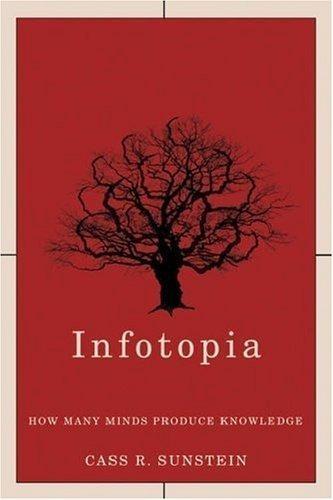
Infotopia: How Many Minds Produce Knowledge
by
Cass R. Sunstein
Published 23 Aug 2006
Note that in the blogosphere, it is tempting to try to make a name for oneself, or at least to have a little fun, by taking a contrarian position. The question is whether deliberating groups can give people an incentive to challenge the emerging or conventional wisdom. In at least one well-known case, this approach appeared to work. “During the Cuban missile crisis, President Kennedy 210 / Infotopia gave his brother, the Attorney General, the unambiguous mission of playing devil’s advocate, with seemingly excellent results in breaking up a premature consensus,”20 a consensus that might well have led to war. Research on devil’s advocacy in small groups provides suggestive evidence of the effectiveness of devil’s advocacy in real-world settings.21 Many experimenters have found that protection of genuine dissenting views can enhance group performance.22 But a formal requirement of devil’s advocacy enhances group performance far less than does authentic dissent.
…
See Central Intelligence Agency Clement, Edith, 135, 141 Clinton, Hillary Rodham, 140–41 Coca-Cola, 164–66 Code, and Other Laws of Cyberspace (Lessig), 161 cognitively central group members, 85 cognitively peripheral group members, 85, 87 cohesiveness, group, 68–69, 96 collaborative filtering, 147–48 collective intelligence, 24 collective knowledge, 10 Columbia (space shuttle), 13, 67, 213 Columbia Accident Investigation Board, 13 commodities, 126, 127, 197 common knowledge effect, 81–86, 101 communism, 224 comparison shopping, 128 competence, 38, 207 complacency, 19 Condorcet Jury Theorem, 25–37, 42, 59, 234n.12, 235n.19 democracy and, 27, 35–36, 43, 51 errors and, 28–29, 33–36, 78, 80, 105, 219 Hayek’s views and, 121 multiple options and, 31–33, 37 optimism and, 224 confidence, 61, 103 of deliberating groups, 14, 55– 57, 78, 86, 95, 102, 206, 238n.15 confirmation bias, 139 confusion, errors and, 28, 37 Congress, U.S., 38, 214 conjunction errors, 77, 79 consensus, 46, 63, 64, 204, 211 conservatives, 70–71 blogs and, 188, 189–90 deliberation by, 45–46, 55, 75 group polarization and, 93, 188, 221 traditionalism and, 123 Constitution, U.S., 36, 49–51 Constitutional Convention (1787), 49 conventional wisdom, 29, 201, 210 Cooper, David, 61–62 Copenhagen Consensus, 40, 237.n43 copyleft licenses, 167–68, 179 copyrights, 153–54, 164–67, 179–80 corroboration, 55, 95 Cowgill, Bo, 115, 116 Creative Commons License, 153, 179–80 creativity, 55, 180, 218, 222 open source projects and, 15, 177, 179, 195, 222 credibility, 85, 88 criminal punishment, 68 critical thinking, 201, 204, 213, 223 Cuban missile crisis (1962), 210–11 cultural differences, deliberation and, 71 cumulative knowledge, 9–11, 152 Cunningham, Ward, 149 customer reviews, 10, 18, 192–94 Daily Kos (blog), 6, 181, 189–90 Daily Me (personalized news), 9, 19, 97–98, 147, 219, 224 Daily Us (concept), 10, 11, 15, 219 Index / 261 DARPA Grand Challenge race, 116 Daschle, Tom, 107 Dean, Howard, 99 decision making, 12, 197 Defense Department, U.S., 3–4, 5, 107–8, 131–32, 198 deliberation, 11–14, 43, 45–103, 128, 130, 197, 218 accuracy and, 57–65, 84, 96, 200, 205, 209 amplification of errors and, 14, 17, 75–81, 101, 220 anonymity in, 208, 209, 223 Aristotle on, 49, 119 bias and, 58, 78, 80–81, 96, 212, 242n.8 blogs and, 190 cascade effects in, 14, 17, 75, 88– 92, 98–100, 201, 203, 205, 220 deferral in, 60, 66–67, 215, 216 errors and, 17, 35, 48, 54, 56, 58, 70–71, 96, 201, 221 experts and, 53–54, 65, 207, 211–12 failure factors in, 65–70, 83 failures of, 12–14 group confidence and unity in, 14, 55–57, 78, 86, 95, 102, 206, 238n.15 group polarization in, 17, 75, 92–98, 203, 205, 220–21 hidden profiles and, 17, 81–88, 100–101, 102, 203, 204, 205, 210, 212 improvement of, 19, 69, 102, 200–216, 223 incentives and, 201, 203–5, 223 information aggregation and, 7, 14, 54, 57–58, 70, 81–82 262 / Index informational influences on, 13–14, 66–67, 70–71, 79, 86– 88, 201, 220 Internet and, 8, 58, 148 key preconditions for, 71–73 majority rule in, 64–65 minority views in, 66, 70 in open source software development, 175, 176–77 prediction markets and, 104, 131, 145 private vs. social benefits and, 69–70, 104 problems concerning, 75–102 role assignment in, 211–12 self-silencing in, 14, 67–68, 70, 203–4, 209, 210 social pressures and, 14, 67–71, 79, 86–88, 203–4, 208–10, 220 statistical groups vs., 57, 58, 59–60 status of members and, 70, 87– 88, 206–8 success mechanisms of, 52–55 synergy and learning in, 54–55, 220 theory and practice of, 49–52 truth and, 53, 57, 63–65, 66, 96, 200, 216 Wikipedia and, 152, 195 deliberative democracy, 11–14, 49– 52, 72, 102 deliberative polls, 11–12 Delphi technique, 208–10 democracy, 202–3, 224 Condorcet Jury Theorem and, 27, 35–36, 43, 51 deliberative, 11–14, 49–52, 72, 102 majority rule and, 26–27 Democrats, 14, 70–71, 93, 95, 99, 214 Descartes, René, 217 Deutsche Bank, 117 devil’s advocates, 210–11 dictatorships, 202 disclosure, deliberation and, 69– 70, 201, 203–4 discrimination, 76 dispersed information, 15, 19, 197 blogs and, 18–19, 189, 218, 223 deliberation and, 49, 54, 57, 63, 75 deliberative democracy and, 50 experimental efforts in aggregating, 191–95 Hayek’s view of, 118–21, 130, 137 new technologies and, 217–18 open source initiatives and, 19, 166, 175, 177, 195, 218, 222 prediction markets and, 6, 19, 118–21, 130, 135–37, 144, 198 wikis and, 19, 152, 218, 222 dissenters in deliberating groups, 66, 67–68 devil’s advocates as, 210–11 diversity, 46, 50, 55, 213 dKosopedia (wiki), 6, 160 documentation creation, 149 Dorgan, Byron, 107 Dreamworks, 4–5 drug companies, 177 Dukakis, Michael, 138–39 Dylan, Bob, 166 Eastman Kodak, 163 eBay, 18, 194 echo chambers, 8, 97, 188, 191, 218, 224 Edley, Christopher, 214 efficient capital markets hypothesis, 127 egocentric bias, 80 Ehrlich, Paul, 144–45 elections, 40–41, 108–11, 138–42 Eli Lilly, 117 encyclopedias, online, 160.
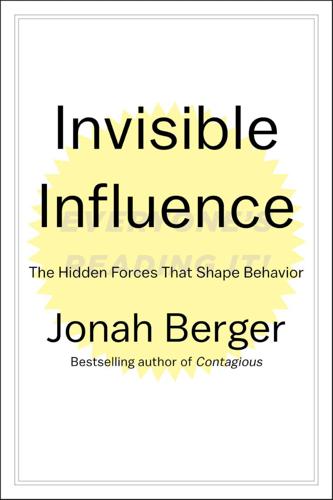
Invisible Influence: The Hidden Forces that Shape Behavior
by
Jonah Berger
Published 13 Jun 2016
Group members who were on the fence tend to conform, and unless someone has strong objections, they tend to keep their opposition to themselves. Without much of a peep, the group quietly goes one way when they could have just as easily gone the opposite. Groupthink has been blamed for everything from the space shuttle Challenger disaster to the Cuban missile crisis. People talk about the wisdom of crowds, but crowds are only wise when the group has access to everyone’s individual information. Aggregating these pieces can lead to better decisions than any person could have made alone. But if everyone just follows everyone else, or keeps their information to themselves, the value of the group is lost.
…
See also Counterfeiting as an identity-relevant attribute, 180 prominence of, 128–35, 144 Braunstein, Alex, 150 Brian, Jennifer, 64 Brian, Morgan, 63–64, 70 Buchanan, James, 162 Burberry, 131, 143–44 Camry (Toyota), 144 Capitol High (high school pseudonym), 118–19 Celebrities, reverse endorsements by, 16, 99–101, 110 Challenger space shuttle disaster, 58 Chameleons, imitation by, 32–33 Chan, Cindy, 172 Chickens, novelty and, 16, 163–64 Chinese characters experiment, 157–60 Christian Louboutin, 133 Cialdini, Bob, 200 Clinton, Bill, 162 Clothing preferences, 79, 172–76 Coaction effects, 189n Cockroaches, social facilitation and, 17, 187–88, 191–94 Cohen, Geoffrey, 105 Color, 147–49, 180–81n Color of the Year, 147–49, 181 Conformity, 19–30 negative depictions of, 78n power of, 24–27 reasons for, 27–30 Conservatives/Republicans, 15, 67, 105–6, 144 Conspicuous consumption, 131, 133 Coolidge, Calvin, 163–64 Coolidge, Grace, 163–64 Coolidge effect, 165–66 Corn color experiment, 26–27, 56, 59 Costs, 123–28 Coton Doux, 133 Cottage Club, 173–76 Counterfeiting, 134, 135–39, 143 Crowds, 58 Cuban missile crisis, 58 Cuckoo’s Calling, The (Galbraith), 54–55 Culture, differentiation and, 93 Cycle racing, 188 Day & Night watch, 124 Democrats. See Liberals/Democrats Dessert, social pressure to decline, 29–30 Differentiation, 63–97, 229–30 See also Divergence; Optimal distinction culture and, 93 drive for, 70–72 historical influences on, 76–80 identity and, 80–83 illusion of, 83–86 popularity backlash and, 72–76 practical applications of, 96–97 practical applications of similarity and, 181–85 siblings’ influence on, 16, 64–70 social class and, 86–96 Dior, 137 Disney, Walt, 45 Dissension, encouraging, 58–59 Divergence, 15.
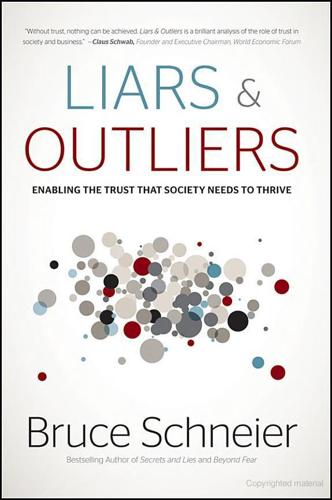
Liars and Outliers: How Security Holds Society Together
by
Bruce Schneier
Published 14 Feb 2012
Robert Axelrod (1984), The Evolution of Cooperation, Basic Books. open grazing pasture Garrett Hardin (1968), “The Tragedy of the Commons,” Science, 162:1243–8. Chapter 6 predictably irrational Dan Ariely (2008), Predictably Irrational: The Hidden Forces That Shape our Decisions, Harper Perennial. Cuban Missile Crisis Steven J. Brams (24 Jan 2001), “Game Theory and the Cuban Missile Crisis,” Plus Magazine. worst in people Morton Deutsch and Robert M. Krauss (1960), “The Effect of Threat upon Interpersonal Bargaining,” Journal of Abnormal & Normal Social Psychology, 61:181–9. better model Rolf Kümmerli, Caroline Colliard, Nicolas Fiechter, Blaise Petitpierre, Flavien Russier, and Laurent Keller (2007), “Human Cooperation in Social Dilemmas: Comparing the Snowdrift Game with the Prisoner's Dilemma,” Proceedings of the Royal Society B: Biological Sciences, 274:2965–70.
…
(If you don't have a convenient cliff, you can play the game by racing two cars directly at each other; the first person to swerve to avoid the oncoming car is the chicken.) In this game, cooperate–cooperate is the best solution, but cooperate–defect or defect–cooperate is much better than defect–defect. In foreign policy, this is known as brinkmanship, a strategy that almost led to disastrous consequences during the Cuban Missile Crisis of 1962. There have been some fascinating experiments with Chicken that really seem to have brought out the worst in people. (4) For many interactions, the Snowdrift Dilemma is a better model of the real world than the Prisoner's Dilemma. (5) There's also the unfortunately named Battle of the Sexes.
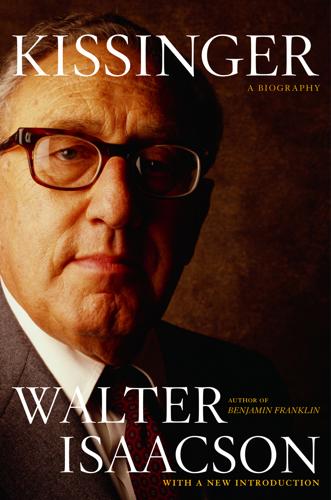
Kissinger: A Biography
by
Walter Isaacson
Published 26 Sep 2005
Throughout his career he was skeptical that most Western European governments had the backbone to sustain a tough anti-Soviet defense policy.20 During this period, Kissinger was refining the realpolitik philosophy that undergirded his approach to foreign policy. One of its central tenets was that a nation’s influence depends on the perception the world holds of its power and of its willingness to use power. As he explained in an analysis of the Cuban missile crisis for The Reporter late in 1962: even if one believed that there was not much military danger in allowing the Soviets to keep their missiles in Cuba, America could not afford a weak response because that would “embolden” its adversaries, “dishearten” its allies, and diminish its “credibility.”
…
“Those soccer fields could mean war, Bob,” Kissinger continued. “Cubans play baseball. Russians play soccer.” Haldeman went into the Oval Office, kicked out Ehrlichman, and ushered Kissinger in. What the Soviets were doing, with clever ambiguity, was testing the fuzzy margins that had been established after the 1962 Cuban missile crisis. The facility that Moscow was building at Cienfuegos was not exactly a full-fledged submarine base but rather a semi-permanent support facility designed for stopovers, refueling, and recreation. This would allow the Soviets to extend the range of their submarines and to deploy ones carrying nuclear missiles near Cuba.
…
The memo he had hastily drafted and brought to the Oval Office that morning began: “Analysis of reconnaissance flight photography over Cuba has this morning confirmed the construction of a probable submarine deployment base.” Nixon wrote some orders in the margin demanding a report on “what CIA can do to support any kind of action which will irritate Cuba” and “what actions we can take, covert or overt, to put missiles in Turkey or a sub base in the Black Sea.” Nixon did not want a new Cuban missile crisis, especially at that moment. It would force the cancellation of his eagerly anticipated trip to Europe and distract from the crisis in Jordan. Likewise, Secretary Rogers urged Kissinger by phone that day to avoid “high-level tension.” Kissinger disagreed. At an early-afternoon CIA briefing, he was informed that the “support facility” (as the analysis carefully called it) would increase by 33 percent the amount of time Soviet subs could be within range of the U.S.
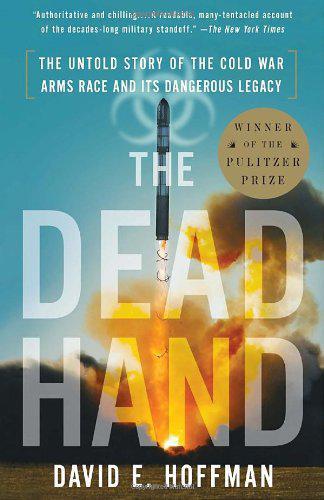
The Dead Hand: The Untold Story of the Cold War Arms Race and Its Dangerous Legacy
by
David Hoffman
Published 1 Jan 2009
When the war plan was revised in the spring and summer of 1962, the new plan gave the president more flexibility and choices in waging a possible nuclear attack, including the ability to hold back forces in reserve, to avoid population centers and industry and to leave out some countries as targets. A key feature of the new plan, put into effect just before the Cuban missile crisis of October 1962, was to aim largely at Soviet weapons, and not at cities and industry, an idea known as counterforce. If one thinks of cocked pistols aimed at each other, counterforce was an effort to shoot the gun out of the hand of the enemy. 6 It seemed to be more humane to aim at missiles rather than cities, but counterforce also raised deeply disturbing questions.
…
"The packet was constructed with a pull-string, on which an operator could tug to immediately open it up," Yarynich recalled. The whole system was slow and cumbersome. Monolit had another, more serious shortcoming. The orders could not be recalled--there was no way to cancel.7 In late October 1962, during the Cuban missile crisis, Yarynich was sent as a communications officer to supervise at a rocket division near Nizhny Tagil, 860 miles east of Moscow in Siberia. At the peak of the confrontation, the crews received an unmistakable signal through the Monolit system. The code word was "BRONTOZAVR." The word was a signal: switch the command system from peacetime to combat alert status.
…
The Pioneers were the newest Soviet missile, the best technology, with twenty or thirty years of useful service duty ahead of them--and all those involved were appalled at the idea of sacrificing them. Katayev recalled one particularly emotional meeting in 1985 when the idea of reducing the missile arsenal was debated. There were shouts of protest: "Sabotage!" and "The Fifth Column!" and "Remember Khrushchev!" (for the Cuban missile crisis fiasco). "I tried in vain to defuse the emotions with the help of technical arguments in favor of reducing the number of missiles," Katayev recalled. After the stormy meeting, he remained in the conference room with one of Akhromeyev's deputies. Katayev attempted in earnest to argue his point.
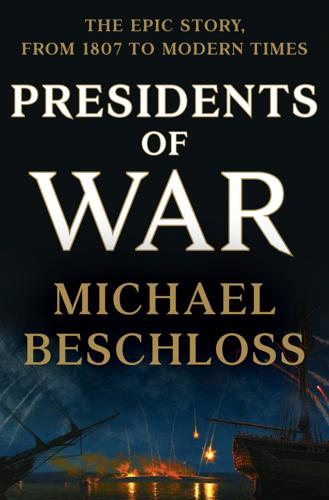
Presidents of War
by
Michael Beschloss
Published 8 Oct 2018
As time went on, the sinking of the Maine became shorthand for a disaster that would quickly unite Americans in support for a retaliatory military attack on another country, just as the Thornton affair had generated immediate passion for James Polk to start a war against Mexico. During the Cuban Missile Crisis in 1962, President John Kennedy and his brother Robert, his Attorney General, considered scenarios that might win public support for the US military to bomb and invade Fidel Castro’s Cuba, after which it could destroy nuclear-capable missiles that had been secretly slipped onto the island by the Soviet leader Nikita Khrushchev.
…
.”*24 Unwilling to take to heart the mistakes that Truman and other politicians had made over Korea, the American people and those who guided them were thus all the more doomed to rush into the darkness of Vietnam. *1 In October 1962, President Kennedy borrowed some of this language when he addressed the nation during the Cuban Missile Crisis, saying, “The cost of freedom is always high, but Americans have always paid it,” and “The 1930s taught us a clear lesson: aggressive conduct, if allowed to go unchecked and unchallenged, eventually leads to war.” *2 MacArthur had written, “Our hold upon the southern part of Korea represents a secure base.
…
They rebuffed him, citing the constitutional separation of powers, and Kennedy observed that “the steam really went out of Lyndon.” When Kennedy called on Johnson for comment during councils on foreign policy, the Vice President would sometimes lower his large head and sadly reply that he was insufficiently informed to offer an opinion. Throughout the Cuban Missile Crisis of October 1962, Johnson was a member of President Kennedy’s impromptu advisory panel called ExComm. Attorney General Robert Kennedy observed that when his brother refused the Joint Chiefs’ demand that the missile sites be bombed, followed by an invasion of the island, Johnson was “shaking his head, mad,” although “he never made clear what he would do” instead.
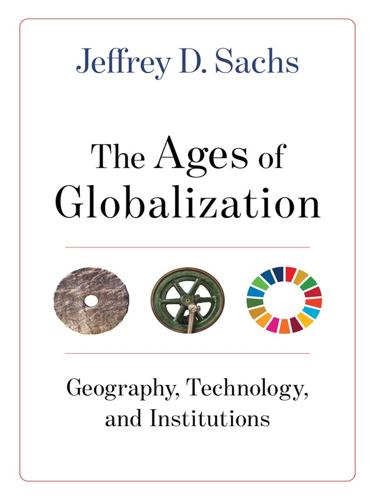
The Ages of Globalization
by
Jeffrey D. Sachs
Published 2 Jun 2020
The conundrum is how easily we nonetheless fall prey to our small differences, which can be stirred into virulent hatreds by demagogic leaders in their quest for power. I have mentioned many times one modern leader whose leadership I admire and whose words continue to inspire. President Kennedy lived through the closest brush with global nuclear annihilation that we have ever experienced: the 1962 Cuban Missile Crisis. In the wake of that horrifically close call, Kennedy urged peace between the United States and the Soviet Union and achieved a first step toward that peace by negotiating the Partial Nuclear Test Ban Treaty in 1963. In making the case for peace rather than war, Kennedy explained our common human interests in words that still guide us today in managing our interdependent world: So, let us not be blind to our differences—but let us also direct attention to our common interests and to the means by which those differences can be resolved.
…
See carbon dioxide coal, 16, 18, 51, 131; Britain’s access to, 137, 143; geological deposits of, 145; in industrialization, 27–28, 145 coastal regions, 25–27 Code of Hammurabi, 66 coffee, 119–20 cold zones, 24 colonial era, 163–64 Columbian exchange, 100–103, 101 Columbus, Christopher, 11, 99, 99, 108 Commentariolus (Copernicus), 105 Commonwealth of Independent States (CIS), 27, 112, 113 communications, 15 competitive exclusion, 37 computers, 4–5, 170–71, 175 Conference of Berlin (1885), 152 conflict risks, 192–93 Confucianism, 69, 71–72, 90 consensus, lack of, 211 consonantal writing system, 73 Constantine XI (Byzantine emperor), 98 Constantinople, fall of, 104–5 consumerism, in Europe, 119 Copernicus, Nicolaus, 105, 135 Copper age, 3, 61 Corded Ware culture, 63 cotton, 120–21 countries: illiteracy of, 164, 164–65; life expectancy of, 164, 164–65; per capita GDP of, 142; population and global output of, 209, 209–10 crops, 50, 101, 101 Crosby, Alfred, 100 Cuban Missile Crisis, 213 cultural acceleration, 37–38 Cultural Revolution, 148 cuneiform, 47–48, 66 Cw temperate monsoon climate, 23 Cyrus the Great, 73 da Gama, Vasco, 11, 98–99, 100 data, 4, 169, 172, 219–20, 226n7 da Vinci, Leonardo, 135 Declaration of Independence, 131 Decline and Fall of the Roman Empire (Gibbon), 131 decolonization, 163–67 Deep Blue (IBM computer), 175 demographic changes, 2 Deng Xiaoping, 180 Denisovans, 3, 35–37 Department of Defense, U.S., 171 developing countries, 178, 179 Diamond, Jared, 46 Dias, Bartolomou, 98 Digital Age, 2, 4–5, 196; economic growth in, 193–94; global interactions in, 11 digital revolution, 166, 168, 170–77, 186 digital technologies, 181 Diocletian (Roman emperor), 77–80 directed technical change, 199 diseases: of Africa, 152; from Europe, 102; of livestock, 101–2; smallpox, 102; tropical vector-borne, 49, 117; trypanosomiasis, 50 divergence, great global, 143–46, 144 dog domestication, 54–55 domestication, animal, 18–19, 46, 54–59 donkeys, 47, 55, 57–59, 67 Drake, Francis, 109, 116 dromedary camels, 55 droughts, 190, 191 dryland empires, 51 dry regions, 22, 24 Dutch East India Company, 108–9, 120 Dylan, Bob, 30 Earth, 103, 138 East Asia, 165 East India Company, 108–10, 116, 120, 148 East Indies, 108 ecological crisis, 170 ecological zones, 45–46 Economic Consequences of the Peace, The (Keynes), 155–56, 158 economic development: Britain and U.S., 154, 154; in China, 180; extreme poverty ended by, 198–99; primary energy reserves in, 27–28; riverine cities in, 47–48; from technologies, 21 economic growth, 10, 138; in Digital Age, 193–94; living standard through, 196–97; sustainable, 187 economics, 10, 159, 184 egalitarianism, 39–40 Egypt, 47, 60, 73; Britain controlling, 154; earliest kingdoms of, 66 Eisenhower, Dwight D., 199 Eldorado city, 117 electricity, 141 Elizabeth (queen of England), 110, 116 Emancipation Decree of 1861, 121 Empire of Cotton (Beckert), 120 empires: Achaemenid, 74–75, 77; Africa divided by European, 153; Akkadian, 66; of Alexander the Great, 76; British, 112, 154–55; Byzantine, 85–88, 86; of Classical Age, 69; climate zones distribution of, 83–84, 84; dryland, 51; of Eurasia, 82, 82–83; globalization with competing, 28; greed in building, 114–15; Habsburg, 157; Han, 80–83; Hellenistic, 76; land-based, 3–4, 73–76; lucky latitudes and land, 73–74; Maratha, 148; Mongol, 65, 86, 91–93, 92; Mughal, 111, 148; multiethnic multireligious, 11; Neo-Assyrian, 66, 73–74, 74; Ottoman, 89, 111, 158; Parthian, 82–83; Portugal and, 110, 110–11; Roman, 77–80, 82–83, 85–88, 156; Romanov, 158; Russian, 27, 112–14; Safavid, 111; Seleucid, 77; temperate zone, 51; Timurid, 93, 93–94; transoceanic, 4; Umayyad, 87, 87.
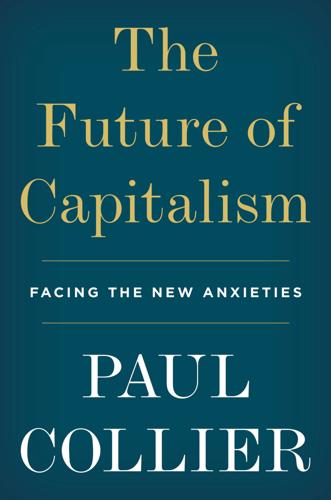
The Future of Capitalism: Facing the New Anxieties
by
Paul Collier
Published 4 Dec 2018
The central principle was reciprocal security guarantees among its members. The shared identity was of democracies facing a common threat. There were a few free-riders, but the new obligation was reinforced by an all-too-credible narrative of enlightened self-interest: hang together, or be hanged. Actions matched words, the key moments being the Cuban Missile Crisis of 1962, and the deployment of cruise missiles in the early 1980s. The new reciprocal obligations were successful in keeping the peace while the many internal tensions of communism accumulated. While the Soviet Union was the new threat, within Europe Germany remained the old fear. France had fought three deadly wars against Germany in a mere seventy years.
…
To locate a specific entry, please use your ebook reader’s search tools. 3G mobile phone network, 88 Abedi, Salman, 212, 213 abortion, 99, 102 AfD (Alternative for Germany), 5 Africa, 8, 110–11, 192, 193 capital flight, 208 HIV sufferers in, 120–21 need for modern firms, 37 and World Bank/IMF, 118† youth’s hope of escape to Europe, 121 African Americans, 13 Akerlof, George, 18, 34, 35, 50–51 Amazon, 87, 91, 146, 147 anger management programmes, 160 Apple, 148 asymmetric information, 88, 90, 185 auction theory, 146–7, 148 Bank of England, 39 Bear Stearns, 71, 75, 86 belief systems and belonging, 34, 40–41, 42, 53–6, 165, 211–15 CEO compensation committees, 77–8 Clark’s ‘family culture’, 107–8 the ethical family, 97–8, 99–105, 108, 109, 210 formation through narratives, 34, 40–41, 42, 53–6, 165, 211–15 GM-Toyota comparisons, 72–4 and ISIS, 42 Johnson & Johnson’s Credo, 39–40, 40*, 41, 72, 74*, 79 and leadership, 41–2, 43, 95 of personal fulfilment, 28, 99, 100–101, 102, 103, 108–9, 213 polarization within polities, 38, 63, 202–5 and schools, 165 Theory of Signalling, 41, 43, 53, 63, 95 and trust, 27, 29*, 48, 53–4, 55–6, 59, 63, 73–4, 79, 94–5, 210 see also belonging, narrative of; reciprocity value-based echo-chambers, 38, 61–2, 64–5, 212, 215 see also nationalism belonging, narrative of absent from Utilitarian discourse, 16, 59, 66–7, 210–11 avoided by politicians, 66–7, 68, 211, 215 as a basic drive, 27, 31, 42–3, 65, 66 and belief systems, 34, 40–41, 42, 53–6, 211–15 in Bhutan, 37† civil society networks/groups, 180–81 and ‘common knowledge’, 32–3, 34, 54, 55, 66, 212 families as natural units for, 32, 97–8, 104 heyday of the ethical state, 49, 68, 114 and home ownership, 68, 181–2, 184 and ISIS, 42, 212, 213 and language, 32, 33, 54, 57 and mutual regard/reciprocity, 25, 40–41, 49, 53–6, 67, 68, 98, 181, 182, 210–11, 212–13 place-based identity, 51–6, 65–8, 211–14, 215 and purposive action, 68, 98, 114, 211, 212, 213 and salient identity, 51–6 Bennett, Alan, The History Boys, 7* Bentham, Jeremy, 9–10, 12, 13 Berlusconi, Silvio, 14 Besley, Tim, 18–19, 35 Betts, Alex, 27 BHS, 80, 172 Bhutan, 37†, 63 Biafra, 58 Bitcoin, 37–8, 193 Blackpool, 4 Bonhoeffer, Dietrich, Letters and Papers from Prison, 108 The Bottom Billion (Collier), 27 Brazil, 58 Brexit vote (June 2016), 5, 125, 131, 196, 215 British Academy, 7 British Motor Corporation, 74 Brooks, David, The Road to Character, 108 Buiter, Willem, 186 Bush, George W., 120–21 business zones, 150 ‘Butskellism’, 49* Cadbury, 77 Cameron, David, 205 Canada, 22 capitalism competition, 21, 25, 56, 85, 86 ‘creative destruction’ concept, 21 current failings of, 4–5, 17, 25, 42, 45–6, 48, 201, 212–13 and decline of social trust, 5, 45–6, 48, 55, 59, 69 as essential for prosperity, 4–5, 18, 20, 25, 201 and families, 37 first mover advantage, 148 and greed, 10, 19, 25–7, 28, 31, 42, 58, 69, 70†, 81, 95 and Marx’s alienation, 17–18 and oppositional identities, 56, 74 vested interests, 85, 86, 135–6, 207 see also firms Catalan secession movement, 58 causality, narrative of, 33, 34 CDC Group, 122, 149* Chaucer, Geoffrey, The Canterbury Tales, 129 Chicago, University of, 166 childhood adoption, 110–11 children in ‘care’, 104, 105, 110, 111, 157 children ‘reared by wolves’, 31–2 cognitive development, 105–6, 170, 175–6 fostering, 104, 105, 111 identity acquisition, 32 impact of parental unemployment, 160–61 learning of norms, 33, 35, 107–8 non-cognitive development, 105, 163, 169–70, 171–3, 174, 175–6 ‘rights of the child’ concept, 103–4 in single-parent families, 101, 102, 104–5, 155, 160 trusted mentors, 169–70 see also family China, 118–19, 149, 203 Chira, Susan, 52–3 Chirac, Jacques, 14, 120–21 Christian Democratic parties, 5, 14 Citigroup, 186 Clark, Gregory, The Son Also Rises, 106–8 Clarke, Ken, 206 class divide assortative mating among new elite, 99–100, 154, 188–9 author’s proposed policies, 19–20, 21, 183–4, 187–8, 190, 207–8 and breadth of social networks, 169 and Brexit vote, 5, 196 and cognitive development, 105–6 divergence dynamic, 7, 18, 48, 98–108, 154–61, 170–71, 172–80, 181–90 ‘elite’ attitudes to less-well educated, 4, 5, 12, 16, 53, 59, 60–61, 63 and family life, 20, 98, 99–106, 157–62 and fracture to skill-based identities, 3–5, 51–6, 78 and home ownership, 68, 181, 182–3 need for socially mixed schools, 164–5 and non-cognitive development, 105, 163, 169–70, 171–3, 174, 175–6 and parental hothousing, 100, 101, 105–6 post-school skills development, 170–76 pre-emptive support for stressed families, 20, 155, 157–60, 161–3, 208 and reading in pre-teens, 167–9 and recent populist insurgencies, 5 retirement insecurities, 179–80 and two-parent families, 155–6, 157 unravelling of shared identity, 15, 50, 51–6, 57*, 58–61, 63, 215 see also white working class climate change, 44, 67, 119 Clinton, Hillary, 5, 9, 203–4 coalition government, UK (2010–15), 206 cognitive behavioral therapy, 160 Cold War, 113, 114, 116 end of, 5–6, 115, 203 Colombia, 120 communism, 32, 36–7, 85–6 communitarian values care, 9, 11, 12, 16, 29, 31, 42, 116 fairness, 11, 12, 14, 16, 29, 31, 34, 43, 116, 132–3 hierarchy, 11, 12, 16, 38–9, 43, 99–100 left’s abandonment of, 16, 214* liberty, 11, 12, 16, 42 loyalty, 11, 12, 16, 29, 31, 34, 42–3, 116 new vanguard’s abandonment of, 9, 11–13, 14–15, 16, 17, 49–50, 113, 116–18, 121, 214 post-war settlement, 8–9, 49, 113–16, 122 and reciprocal obligations, 8–9, 11–12, 13, 14, 19, 33, 34, 40–41, 48–9, 201, 212–15 roots in nineteenth-century co-operatives, 8, 13, 14, 201 sanctity, 11, 16, 42–3 Smith and Hume, 21–2† values and reason, 29–30, 43–4 see also belonging, narrative of; obligation, narrative of; reciprocity; social democracy Companies Act, UK, 82 comparative advantage, 20, 120, 192, 194 Confederation of British Industry (CBI), 79 conservatism, 30, 36 Conservative Party, 14, 49, 205, 206 contraception, 98–9, 102 co-operative movement, 8, 13, 14, 201 Corbyn, Jeremy, 202, 204–5 Crosland, Anthony, The Future of Socialism, 17, 18, 19 Cuban Missile Crisis (1962), 114 debutante balls, 188 Denmark, 63, 178, 214* Descartes, Rene, 31 Detroit, 128, 129, 144 Deutsche Bank, 78, 185 development banks, 149–50 Development Corporations Act (1981), 150 Dickens, Charles, Bleak House, 108 digital networks detachment of narratives from place, 38, 61–2 economies of scale, 86–7 global e-utilities, 37, 38, 86–7, 89–90, 91 social media, 27, 61, 87, 173, 207, 215 value-based echo-chambers, 38, 61–2, 64–5, 212, 215 Draghi, Mario, 153 Dundee Project, 161–2 Dutch Antilles, 193 East Asia, 147, 192 eBay, 87 economic man, 10, 19, 25, 26–7, 31, 34–5, 196, 209, 210, 215 economic rent theory, 19, 91, 133–9, 140–44, 186–8, 192, 195, 207 education and collapse of social democracy, 50, 52, 53, 54, 55, 59, 63 and empathy, 12 and European identity, 57* expansion of universities, 99–100, 127 and growth of the middle class, 100 inequality in spending per pupil, 167 mis-ranking of cognitive and non-cognitive training, 174–6 need for socially mixed schools, 164–5 post-school skills development, 170–76 pre-school, 105–6, 163–4 quality of teaching, 165–6 reading in pre-teens, 167–9 and shocks to norms of ethical family, 98, 99–105 symbols of cognitive privilege, 175 teaching methods, 166–7 vocational education, 171–6 zero-sum aspects of success, 189 electoral systems, 206 Emerging Market economies, 129, 130–31 empires, age of, 113 The Enigma of Reason (Mercier and Sperber), 29 enlightened self-interest, 33, 40*, 97–8, 101, 109, 112, 113, 114, 117, 184, 213 Enron, 80 ethnicity, 3, 20, 56, 62, 64, 65, 211 Europe Christian Democrats in, 5, 14 class divides, 3, 4, 5, 125 decline in social trust, 45 and knowledge industries, 192 metropolitan-provincial divides, 3, 4, 125 and migration, 121, 197 and shared identity, 57–8, 64, 66, 125 social democracy in, 8–9, 49, 50 European Central Bank, 153 European Commission, 57 European Investment Bank, 149 European Union (EU, formerly EEC), 66, 67, 114, 115, 116, 117 Brexit vote (June 2016), 5, 125, 131, 196, 215 Eurozone crisis, 153 public policy as predominantly national, 212 universities in, 170 evolutionary theory, 31, 33†, 35–6, 66 externalities, 145–6 Facebook, 87 Fairbairn, Carolyn, 79 fake news, 33–4 family, 19 African norms, 110–11 benefits for single parents, 160 Clark’s ‘family culture’, 107–8 entitled individual vs family obligation, 99–103, 104–6, 108–9, 210 equality within, 39, 154 erosion of mutual obligations, 101–2, 210 identity acquisition, 32 ideologies hostile to, 36–7 impact of unemployment/poverty, 4, 7, 160–61 importance of, 36, 37 and increased longevity, 110, 161 in-kind support for parenting, 161 nuclear dynastic family, 102, 110, 154 one-parent families, 101, 102, 104–5, 155, 160 parental hothousing, 100, 101, 105–6 post-1945 ethical family, 97–8, 99–105, 108, 210 pressures on young parents, 159–60, 161–3 and public policy, 21, 154–5, 157–70, 171–3, 177, 209 and reciprocity, 97–8, 101, 102 shocks to post-1945 norms, 98–105 shrinking of extended family, 101–2, 109–10, 161 social maternalism concept, 154–5, 157–8, 190 two-parent families as preferable, 155–6, 157 see also childhood; marriage Farage, Nigel, 202 fascism, 6, 13*, 47, 113 Federalist papers, 82 feminism, 13, 99 Fillon, François, 204 financial crisis, global (2008–9), 4, 34, 71, 160 no bankers sent to gaol for, 95–6 financial sector, 77–9, 80–81, 83–5 asymmetric information, 88, 185 co-ordination role, 145–6 economies of scale, 87 localized past of, 84, 146 toxic rivalries in, 189 trading in financial assets, 78–9, 84, 184–5, 186, 187 Finland, 63 firms, 19, 21, 69 CEO pay, 77–8, 79, 80–81 competition, 21, 25, 56, 85, 86 control/accountability of, 75–81, 82–5 cultures of good corporate behaviour, 94–5 demutualization in UK, 83, 84 deteriorating behaviour of, 18, 69, 78, 80–81 economies of scale, 17–18, 37, 86–7, 88–91, 126–7, 144–5, 146–7 ethical, 70–71, 172, 209–10 and ethical citizens, 93–4, 95, 96 failure/bankruptcy of, 70, 71, 72, 74, 75–6 flattening of hierarchies in, 39 Friedman’s profit nostrum, 69–70, 71, 76, 78–9, 210 global e-utilities, 37, 38, 86–7, 89–90, 91 ideologies hostile to, 37, 81 low productivity-low cost business model, 173–4 ‘maximising of shareholder value’, 69–70, 76, 79, 82–3 ‘mutuals’, 83 need for bankslaughter crime, 95–6 new network features, 86–7 policing the public interest, 93–4 public dislike of, 69, 95–6 public interest representation on boards, 92–3 regulation of, 87–90, 174 reward linked to short-term performance, 77, 78–81 sense of purpose, 39–40, 41, 70–75, 80–81, 93–4, 96 shareholder control of, 76–7, 79, 80, 82–3 societal role of, 81–2, 92–3, 96, 209–10 utility services, 86, 89, 90 worker interests on boards, 83, 84–5 Fisher, Stephen, 196* Five Star, 125 Ford, 70, 71 France, 7, 63, 67, 114 écoles maternelles in, 164 labour market in, 176, 189 pensions policy, 180 presidential election (2017), 5, 9, 204 universities in, 170 working week reduced in, 189 Frederiksen, Mette, 214* Friedman, Milton, 15, 69–70, 71, 76 The Full Monty (film), 7, 129 G20 group, 118 G7 group, 118 G8 group, 194 Ganesh, Janan, 125 Geldof, Bob, 169 General Agreement on Tariffs and Trade (GATT), 114, 115, 116–17 General Motors (GM), 72, 73–4, 75, 86, 172 geographic divide, 3, 16, 18, 19, 215 author’s proposed policies, 19, 207 and Brexit vote, 125, 196 broken cities, 4, 7, 19, 48, 125, 129–30, 147–9 business zones, 150 co-ordination problem over new clusters, 145–50, 207 decline of provincial cities, 4, 7, 19, 48, 125, 129–30, 131, 144–5 economic forces driving, 126–30 and education spending, 167 first mover disadvantage, 148–9 ideological responses, 130–32 investment promotion agencies, 150–51 and local universities, 151–2 and metropolitan disdain, 125 need for political commitment, 153 as recent and reversible, 152–3 regenerating provincial cities, 19, 142, 144–50 and spending per school pupil, 167 widening of since 1980, 125 George, Henry, 133–6, 141 Germany 2017 election, 5, 205 local banks in, 146 Nazi era, 57 and oppositional identities, 56–7 oversight of firms in, 76 post-war industrial relations policy, 94–5 and post-war settlement, 114 re-emergence of far right, 5 rights of refugees in, 14 ‘social market economy’, 49 TVET in, 171–2, 174, 175 vereine (civil society groups), 181 worker interests on boards, 84–5 global divide, 7–8, 20, 59–60, 191–8, 208 globalization, 4, 18, 20, 126–7, 128, 129, 130–31, 191–8 Goldman Sachs, 70†, 83–4, 94 Google, 87 Great Depression (1930s), 114 Green, Sir Philip, 80 Grillo, Beppe, 202 ‘Grimm and Co’, Rotherham, 168–9 Gunning, Jan Willem, 165 Haidt, Jonathan, 11–12, 14, 16, 28, 29, 132–3 Haiti, 208 Halifax Building Society, 8, 84 Hamon, Benoît, 9, 204 Harvard-MIT, 7, 152 Hershey, 77 HIV sufferers in poor countries, 120–21 Hofer, Norbert, 202 Hollande, Francois, 9, 204 Hoover, 148 housing market, 181–4 buy-to-let, 182, 183, 184 and lawyers, 187 mortgages, 84, 176, 182, 183–4 proposed stock transfer from landlords to tenants, 184 Hume, David, 14, 21, 21–2†, 29 Huxley, Aldous, Brave New World (1932), 5 Iceland, 63 Identity Economics, 50–56, 65–7 ideologies based on hatred of ‘other’ part of society, 43, 56, 213, 214 ‘end of history’ triumphalism, 6, 43–4 hostile to families, 36–7 hostile to firms, 37, 81 hostile to the state, 37–8 and housing policy, 183 and migration, 198 New Right, 14–15, 26, 81, 129 norms of care and equality, 116, 132–3 polarization of politics, 38, 63, 202–5 pragmatic eschewal of, 17, 18, 21, 22, 29–30 and principle of reason, 9, 13, 14, 15, 21, 43 Rawlsian vanguard, 13–14, 30, 49–50, 53, 67, 112, 113, 201, 202, 203, 214 return of left-right confrontation, 5, 6, 81, 202–5 and rights, 12–14, 44, 112 seduction of, 6 and twentieth century’s catastrophes, 5–6, 22 views on an ethical world, 112 see also Marxism; rights ideology; Utilitarianism IFC (International Finance Corporation), 122 Imperial Chemical Industries (ICI), 69–70, 75 India, 118–19 individualism entitled individual vs family obligation, 99–103, 104–6, 108–9, 210 fulfilment through personal achievement, 28, 99, 100–101, 102, 103, 108–9, 213 New Right embrace of, 14–15, 53, 81, 214–15 as rampant in recent decades, 19, 214–15 reciprocity contrasted with, 44–5 and withering of spatial community, 61–2 industrial revolution, 8, 126 inequality and assortative mating among new elite, 99–100, 154, 188–9 and divergence dynamic, 7, 18, 48, 98–108, 154–61, 170–71, 172–80, 181–90 and financial sector, 185 and geographic divide, 3, 7–8, 20, 125 global divide, 7–8, 20, 59–60, 191–8, 208 persistence of, 106–8 Rawls’ disadvantaged groups, 3–4, 13–14, 16, 50, 53, 121, 203–4, 214 and revolt against social democracy, 15–16 rising levels of, 3–5, 106, 125, 181, 190 and Utilitarian calculus, 132 innovation, 185–6, 208 International Monetary Fund (IMF), 114, 117 international relations achievement of post-WW2 leaders, 113–16, 122 building of shared identity, 114–16 core concepts of ethical world, 112, 113–14 erosion of ethical world, 116–18 expansion of post-war ‘clubs’, 116–18, 210 new, multipurpose club needed, 118–19, 122 and patriotism narrative, 67 situation in 1945, 112–13, 122 investment promotion agencies, 150–51 Irish Investment Authority, 151 Islamist terrorism, 42, 212, 213 Italy, 4, 58, 160 James, William, 29* Janesville (US study), 178 Japan, 72–3, 94, 101, 149, 192 John Lewis Partnership, 83, 172 Johnson, Robert Wood, 39–40, 72 Johnson & Johnson, 39–40, 41, 72, 74*, 79 Jolie, Angelina, 112 JP Morgan, 71* Juppé, Alain, 204 Kagame, Paul, 22 Kay, John, 82*, 84, 211 Keynes, John Maynard, 115 General Theory (1936), 47 kindergartens, 163 Knausgård, Karl Ove, 173 knowledge revolution, 126, 127–8 Kranton, Rachel, 35, 50–51 Krueger, Anne, 141 Krugman, Paul, 47 labour market flexicurity concept, 178 function of, 176–7 and globalization, 192, 194–6 and immigration, 194, 195, 196 investment in skills, 176–7 job security, 176, 177 and low productivity-low cost business model, 173–4 minimum wage strategies, 147, 174, 176, 180 need for reductions in working hours, 189 need for renewed purpose in work, 190 regulation of, 174, 189 and robotics revolution, 178–9 role of state, 177–8, 189 see also unemployment Labour Party, 49, 206 Marxist take-over of, 9, 204–5 language, 31, 32, 33, 39–40, 54, 57 Larkin, Philip, 99, 156 lawyers, 13–14, 45 Buiter’s three types, 186 and shell companies, 193, 194 surfeit of, 186–7 taxation of private litigation proposal, 187–8 Le Pen, Marine, 5, 63, 125, 202, 204 leadership and belief systems, 41–2, 43, 95 building of shared identity, 39–42, 49, 68, 114–16 changing role of, 39 and flattening of hierarchies, 39 and ISIS, 42 political achievements in post-war period, 113–16, 122 and pragmatist philosophy, 22 and shared purpose in firms, 39–40, 41, 71–5 strategic use of morality, 39–40, 41 transformation of power into authority, 39, 41–2, 57 League of Nations, 116 Lee Kwan Yew, 22, 147 Lehman Brothers, 71*, 76 liberalism, 30 libertarianism, 12–13, 15 New Right failures, 16, 21 Silicon Valley, 37–8 lobbying, 85, 141 local government, 182, 183 London, 3, 125, 127–8, 165–6, 193 impact of Brexit on, 131, 196 migration to, 195–6 Macron, Emmanuel, 67, 204 Manchester terror attack (2017), 212, 213 market economy, 19, 20, 21, 25, 48 and collapse of clusters, 129–30, 144–5 failure over pensions, 180 failure over skill-formation, 173–4 mutual benefit from exchange, 28 market fundamentalists, 147, 150 marriage assortative mating, 35, 99–100, 154, 188–9 cohabitation prior to, 99, 100 as ‘commitment technology’, 109, 155–6 divorce rates, 98, 99, 100–101, 102, 103 and female oppression, 156 religious associations, 109, 156 and rent-seeking, 141 ‘shotgun weddings’, 103 and unemployment, 103 Marxism, 13*, 26, 30, 43, 47, 113, 203, 214 alienation concept, 17–18 and the family, 36–7 late capitalism concept, 6 takeover of Labour Party, 9, 204–5 and ‘useful idiots’, 205* view of the state, 37 Maxwell, Robert, 80 May, Theresa, 205 Mayer, Colin, 18, 70 media celebrities, 6, 112, 204 Mélenchon, Jean-Luc, 5, 202, 204 mental health, 157, 158–9, 162 Mercier, Hugo, 29 meritocratic elites, 3–4, 5, 12–17, 20 Rawlsian vanguard, 13–14, 30, 49–50, 53, 67, 112, 113, 201, 202, 203, 214 Utilitarian vanguard, 9–10, 11–13, 15–16, 18, 52, 53, 59, 66–7, 209 see also Utilitarianism WEIRD (Western, Educated, Industrial, Rich and Developed), 3–4, 12, 14, 16, 17, 20, 116, 121, 133, 214* and white working class, 5, 16 Merkel, Angela, 14, 205 metropolitan areas, 3, 4, 7, 16, 19, 48, 125 co-ordination problem over new clusters, 145–50, 207 economies of agglomeration, 18, 19, 129, 131, 133–44, 195, 196, 207 gains from public goods, 134–5, 138–9 migration to, 195–6 political responses to dominance of, 131–2 scale and specialization in, 126–8, 130, 144–5 and taxation, 131, 132–43, 187, 207 Middle East, 192 Middleton, Kate, 188–9 migration, 121, 194–8, 203 as driven by absolute advantage, 20, 194–5, 208–9 and housing market, 182, 183 Mill, John Stuart, 9–10 minimum wage strategies, 147, 174, 176, 180 Mitchell, Andrew, 188 Mitchell, Edson, 78 modernist architecture, 12 Monarch Airlines, 75 monopolies, natural, 86–7, 88 and asymmetric information, 88, 90 auctioning of rights, 88–9 taxation of, 91–2 utility services, 86, 89, 90 ‘moral hazard’, 179 morality and ethics deriving from values not reason, 27, 28–9, 42–3 and economic man, 10, 19, 25, 26–7, 31, 34–5 and empathy, 12, 27 evolution of ethical norms, 35–6 Haidt’s fundamental values, 11–12, 14, 16, 29, 42–3, 132–3 and market economy, 21, 25, 28, 48 and modern capitalism, 25–6 and new elites, 3–4, 20–21 Adam Smith’s theories, 26–8 use for strategic purposes, 39–40, 41 and Utilitarianism, 9–10, 11, 14, 16, 55, 66–7, 209, 214 motivated reasoning, 28–9, 36, 86, 144, 150, 167 Museveni, President, 121 narratives and childhood mentors, 169–70 and consistency, 41, 67, 81, 96 conveyed by language, 31, 33, 57 detachment from place by e-networks, 38, 61–2 and heyday of social democracy, 49 and identity formation, 32 mis-ranking of cognitive and non-cognitive training, 174–6 moral norms generated from, 33, 97–8 and purposive action, 33–4, 40–41, 42, 68 and schools, 165 of shared identity, 53–6, 81 use of by leaders, 39–42, 43, 49, 80–81 see also belonging, narrative of; obligation, narrative of; purposive action National Health Service (NHS), 49, 159 national identity and citizens-of-the-world agenda, 59–61, 63, 65 contempt of the educated for, 53, 59, 60–61, 63 and distinctive common culture, 37†, 63 established in childhood, 32 esteem from, 51–3 fracture to skill-based identities, 3–5, 51–6, 78 legacy of Second World War, 15, 16 methods of rebuilding, 64, 65–8, 211–15 and new nationalists, 62–3, 67, 203, 204, 205 patriotism narrative, 21, 63, 67, 215 place-based identity, 51–6, 65–8, 211–14, 215 and polarization of society, 54–5 and secession movements, 58 unravelling of shared identity, 15, 50, 51–6, 57*, 58–61, 63, 215 and value identity, 64–5 National Review, 16 nationalism, 34 based on ethnicity or religion, 62–3 capture of national identity notion by, 62, 67, 215 and narratives of hatred, 56, 57, 58–9 and oppositional identities, 56–7, 58–9, 62–3, 68, 215 traditional form of, 62 natural rights concept, 12, 13 Nestlé, 70, 71 Netherlands, 206 networked groups as arena for exchanging obligations, 28 and ‘common knowledge’, 32–3, 34, 54, 55, 66, 212 decline of civil society networks/ groups, 180–81 and early man, 31 evolution of ethical norms, 35–6 exclusion of disruptive narratives, 34 families as, 97–8 leadership’s use of narratives, 39–42, 49 narratives detached from place, 38, 61–2 value-based echo-chambers, 38, 61–2, 64–5, 212, 215 see also family; firms Neustadt, Richard, 39* New York City, 5, 125, 128, 143–4, 193 NGOs, 71, 118, 157–8 ‘niche construction’, 35*, 36* Nigeria, 58 Noble, Diana, 149* Norman, Jesse, 21–2† North Atlantic Treaty Organization (NATO), 114, 115, 116, 117 North Korea, 85 Northern League, Italy, 58 Norway, 63, 206, 208–9 Nozick, Robert, 14–15 obligation, narrative of, 11, 12–13, 16, 19, 29, 33 and collapse of social democracy, 53–6, 210 entitled individual vs family obligation, 99–103, 104–6, 108–9, 210 in ethical world, 112, 113–22 and expansion of post-war ‘clubs’, 117–18, 210 fairness and loyalty instilled by, 34 heyday of the ethical state, 48–9, 68, 196–7 and immigration, 196–7 and leadership, 39, 40–41, 49 ‘oughts’ and ‘wants’, 27, 28, 33, 43 and secession movements, 58 and Adam Smith, 27, 28 see also reciprocity; rescue, duty of oil industry, 192 Organization for Economic Co-operation and Development (OECD), 114–15, 125 Orwell, George, Nineteen Eighty-Four (1949), 5 Oxford university, 7, 70, 100 Paris, 5, 7, 125, 128, 174, 179 patriotism, 21, 63, 67, 215 Pause (NGO), 157–8 pension funds, 76–7, 79–81, 179–80, 185 Pew Research Center, 169 Pinker, Steven, 12* Plato, The Republic, 9, 11, 12, 15, 43 Playboy magazine, 99 political power and holders of economic rent, 135–6, 144 leadership selection systems in UK, 204–5, 206 minimum age for voting, 203 need to restore the centre, 205–7 polarization within polities, 38, 63, 202–5 polities as spatial, 38, 61–2, 65, 68, 211–13 and shared identity, 8, 57–61, 65, 114–16, 211–15 transformation into authority, 41–2, 57–8 trust in government, 4, 5, 48, 59, 210, 211–12 populism, political, 6, 22, 43, 58–9, 202 and geographic divide, 130–31 headless-heart, 30, 60, 112, 119, 121, 122 media celebrities, 6, 112, 204 pragmatism as opposed to, 30 and US presidential election (2016), 5, 203–4 pragmatist philosophy, 6, 9, 19, 21, 21–2†, 46, 201 author’s proposed policies, 19–20, 21, 207–15 limitations of, 30 and Macron in France, 204 and migration, 198 and post-war settlement, 113, 116, 122 and social democracy, 18, 201–2 successful leaders, 22 and taxation, 132, 207 and teaching methods, 166–7 values and reason, 29–30, 43–4 proportional representation, 206 protectionism, 113, 114, 130–31 psychology, social, 16, 54 co-ordination problems, 32–3 esteem’s trumping of money, 174 Haidt’s fundamental values, 11–12, 14, 16, 29, 42–3, 132–3 narratives, 31, 32, 33–4, 38, 39–42, 49, 53–6 norms, 33, 35–6, 39, 42–3, 44, 97–8, 107–8 ‘oughts’ and ‘wants’, 27, 28, 33, 43 personal achievement vs family obligation, 99–103, 104–6, 108–9, 210 ‘theory of mind’, 27, 55 Public Choice Theory, 15–16 public goods, 134–5, 138–9, 186, 202, 213 public ownership, 90 Puigdemont, Carles, 202 purposive action, 18, 21, 25, 26, 34, 40*, 53–4, 68, 112, 211–13 autonomy and responsibility, 38–9 and belonging narrative, 68, 98, 114, 211, 212, 213 in Bhutan, 37† decline in ethical purpose across society, 48 and heyday of social democracy, 47, 49, 114 and narratives, 33–4, 40–41, 42, 68 in workplace, 190 Putnam, Robert, 45–6, 106 Bowling Alone, 181 ‘quality circles’, 72–3 Rajan, Raghuram, 178 Rand, Ayn, 32 rational social woman, 31, 50–51, 196 Rawls, John, 13–14 Reagan, Ronald, 15, 26 Reback, Gary, 90 reciprocity, 9, 19, 31, 212–15 and belonging, 25, 40–41, 49, 53–6, 67, 68, 98, 181, 182, 210–11, 212–13 and collapse of social democracy, 11, 14, 53–6, 58–61, 201, 210 and corporate behaviour, 95 in ethical world, 112, 113–15, 116 and expansion of post-war ‘clubs’, 117–18, 210 fairness and loyalty as supporting, 29, 31, 34 and the family, 97–8, 101, 102 and geographic divide, 125 heyday of the ethical state, 48–9, 68, 96, 196–7, 201 and ISIS, 42 Macron’s patriotism narrative, 67 nineteenth-century co-operatives, 8 rights matched to obligations, 44–5 and three types of narrative, 33, 34, 40–41 transformation of power into authority, 39, 41–2, 57–8 Refuge (Betts and Collier), 27 refugees, 14, 27, 115, 119–20, 213 regulation, 87–90 and globalization, 193–4 of labour market, 174 religion, 56–7, 62–3, 109, 156 religious fundamentalism, 6, 30, 36–7, 212, 213, 215 rent-seeking concept, 140–41, 150, 186, 187–8, 195 rescue, duty of, 40, 54, 119–21, 210, 213 as instrument for ethical imperialism, 117–18, 210 as not matched by rights, 44, 45, 117 and post-war settlement, 113, 115–16 restoring and augmenting autonomy, 121–2 and stressed young families, 163 term defined, 27, 112 value of care as underpinning, 29 retirement pensions, 179–80 rights ideology and corresponding obligations, 44–5 emergence in 1970s, 12–14 human rights lobby, 112, 118, 118* individualism as rampant in recent decades, 19, 214–15 and lawyers, 13–14, 45 Libertarian use of, 12–13, 14–15 natural rights concept, 12, 13 and New Right, 12–13, 14–15, 53 Rawls’ disadvantaged groups, 3–4, 13–14, 16, 50, 53, 112, 121, 203–4, 214 ‘rights of the child’ concept, 103–4 and Utilitarian atate, 12–14 see also individualism Romania, communist, 32, 36 Rotherham, ‘Grimm and Co’, 168–9 rule of law, 138–9, 186 Rwanda, 22 Salmond, Alex, 202 Sandel, Michael, 105 Sanders, Bernie, 9, 64, 202, 203 Sarkozy, Nicolas, 204 Schultz, Martin, 14 Schumpeter, Joseph, 21* Scotland, 58 Seligman, Martin, 108–9 sexual behaviour birth-control pill, 98–9, 102 and class divide, 99, 102, 155–6 concept of sin, 156 and HIV, 121 and stigma, 156–8 sexual orientation, 3, 45 Sheffield, 7, 8, 126, 128–9, 131, 151, 168, 192 shell companies, 193, 194 Shiller, Robert, 34 Sidgwick, Henry, 55 Signalling, Theory of, 41, 43, 53, 63, 95 Silicon Valley, 37–8, 62, 145, 152, 164 Singapore, 22, 147 Slovenia, 58 Smith, Adam, 14, 21, 21–2†, 174 and mutual benefit from exchange, 28 and pursuit of self- interest, 26–7, 40 on reason, 29 The Theory of Moral Sentiments (1759), 27, 28, 174 Wealth of Nations (1776), 26, 28, 174 Smith, Vernon, 28 social democracy ‘Butskellism’, 49* collapse of, 9, 11, 50, 51–6, 116–18, 201–2, 210 communitarian roots, 8–9, 11, 13, 14, 17, 48–9, 201 and group identities, 3–4, 13–14, 51–6 heyday of, 8–9, 15, 17, 47, 48–9, 68, 96, 196–7, 201, 210 and housing, 181–2 influence of Utilitarianism, 9, 10, 14, 16, 18, 49–50, 201, 203, 214 Libertarian challenge, 12–13, 14–15 New Right abandonment of, 14–15, 16, 26, 53 and Public Choice Theory, 15–16 replaced by social paternalism, 11–13, 49–50, 209–10 and rights ideology, 12–14 and secession movements, 58 shared identity harnessed by, 15, 196–7 unravelling of shared identity, 15, 50, 51–6, 57*, 58–61, 63, 215 and Utilitarianism, 214 social maternalism concept, 21, 154–5, 190 free pre-school education, 163–4 mentoring for children, 169–70, 208 support for stressed families, 20, 155, 157–60, 161–3, 208 social media, 27, 61, 87, 173, 207, 215 social paternalism backlash against, 11–13, 15–16 as cavalier about globalization, 20 and child-rearing/family, 105, 110, 154–5, 157, 158, 159, 160, 190, 209 replaces social democracy, 11–13, 49–50, 209–10 ‘rights of the child’ concept, 103–4 and Utilitarian vanguard, 9–10, 11–13, 15–16, 18, 66–7, 209 social services, 159 scrutiny role, 162 Solow, Robert, 141 Soros, George, 15* South Africa, 85 South Asia, 192 South Korea, 129, 130–31 South Sudan, 192 Soviet Union, 114, 115, 116, 203 Spain, 58, 160 specialization, 17–18, 36, 126–8, 130, 144–5, 192 Spence, Michael, 41, 53, 95 Sperber, Dan, 29 St Andrews University, 189 Stanford University, 145, 152 Starbucks, 193 the state, 19 ethical capacities of, 11, 20–21, 48–9 failures in 1930s, 47, 48 ideologies hostile to, 37–8 and pre-school education, 163–4 and prosperity, 37 public policy and job shocks, 177–8 public policy on the family, 21, 154–5, 157–70, 171–3, 177, 209 public-sector and co-ordination problem, 147–8 social maternalism policies, 21, 157, 190 Utilitarian takeover of public policy, 10–12, 13–14, 15–17, 18, 49–50, 113, 201 Stiglitz, Joseph, 56 Stoke-on-Trent, 129 Stonehenge, 64 Sudan, 8 Summers, Larry, 187 Sure Start programme, 164 Sutton, John, 151* Sweden, 178 Switzerland, 175, 206 Tanzania, 193 taxation and corporate globalization, 193, 194 of economic rents, 91–2, 187–8 ethics and efficiency, 132–43 on financial transactions, 187 generational differences in attitudes, 59 Henry George’s Theorem, 133–6, 141 heyday of the ethical state, 49 issues of desert, 132–3, 134–9 and the metropolis, 131, 132–43, 187, 207 and migration, 197 of natural monopolies, 91–2 ‘optimal’, 10 of private litigation in courts, 187–8 and reciprocity, 54, 55, 59 redesign of needed, 19 redistributive, 10, 11, 14, 49, 54, 55, 60, 197 of rents of agglomeration, 19, 132–44, 207 social maternalism policies, 21, 157 substantial decline in top rates, 55 tax havens, 62 Venables-Collier theory, 136–9 Teach First programme, 165–6 technical vocational education and training (TVET), 171–6 technological change, 4 robotics revolution, 178–9 and withering of spatial community, 61–2 see also digital networks telomeres, 155–6 Tepperman, Jonathan, The Fix, 22 Thatcher, Margaret, 15, 26 Thirty Years War, 56–7 Tirole, Jean, 177, 178 Toyota, 72–3, 74, 94, 172 trade unions, 173, 174, 176 Troubled Families Programme (TFP), 162 Trudeau, Pierre, 22 Trump, Donald, 5, 9, 63, 64, 86, 125, 136, 202, 204, 206, 215 Uber, 87 unemployment in 1930s, 47 and collapse of industry, 7, 103, 129, 192 impact on children, 160–61 older workers, 4, 103, 213 retraining schemes, 178 in USA, 160 young people, 4 Unilever, 70, 71 United Kingdom collapse of heavy industry, 7, 103, 129, 192 extreme politics in, 5 and falling life expectancy, 4 financial sector, 80, 83, 84–5 IMF bail-out (1976), 115 local banks in past, 146 northern England, 3, 7, 8, 84, 126, 128–9, 131, 151, 168, 192 shareholder control of firms, 76–7, 79, 80, 82–3 statistics on firms in, 37 universities in, 170, 172, 175* vocational education in, 172, 175† widening of geographic divide, 125 United Nations, 65, 112 ‘Club of 77’, 116 Security Council, 116 UNHCR, 115 United States breakdown of ethical family, 104–5 broken cities in, 129, 130 extreme politics in, 5, 63 and falling life expectancy, 4 financial sector, 83–4, 186 and global e-utilities, 89–90 growth in inequality since 1980, 125 heyday of the ethical state, 49 and knowledge industries, 192 labour market in, 176, 178 local banks in past, 146 oversight of firms in, 76 pessimism in, 5, 45–6 presidential election (2016), 5, 9, 203–4 Public Interest Companies, 93 public policy as predominantly national, 212 ‘rights of the child’ concept in, 103–4 Roosevelt’s New Deal, 47 statistics on firms in, 37 taxation in, 143–4, 144* unemployment in, 160 universities in, 170, 172, 173 weakening of NATO commitment, 117 universities in broken cities, 151–2 in EU countries, 170 expansion of, 99–100, 127 knowledge clusters at, 127, 151–2 low quality vocational courses, 172–3 in UK, 170, 172, 175* in US, 170, 172, 173 urban planning, post-war, 11–12 Utilitarianism, 19, 30, 49–50, 55, 108, 112, 121, 210–11 backlash against, 11–13, 201, 202 belonging as absent from discourse, 16, 59, 66–7, 210–11 care as key value, 12 and consumption, 10, 11, 16, 19–20, 209 equality as key value, 12, 13, 14, 15, 116, 132–3, 214 incorporated into economics, 10–11, 13–14, 16 influence on social democrats, 9, 10, 14, 16, 18, 49–50, 201, 203, 214 origins of, 9–10 paternalistic guardians, 9–10, 11–13, 66–7, 210 takeover of public policy, 10–12, 13–14, 15–17, 18, 49–50, 113, 201 and taxation, 10, 132*, 133 vanguard’s switch of identity salience, 52, 53, 59 Valls, Manuel, 204 Venables, Tony, 18, 136, 191* Venezuela, 120, 214 vested interests, 85–6, 135–6, 165, 166, 207 Volkswagen, 74–5 Walmart, 87 Warsi, Baroness Sayeeda, 65 Wedgwood, Josiah, 129 welfare state, 9, 48–9 unlinked from contributions, 14 well-being and happiness belonging and esteem, 16, 25, 27, 29, 31–3, 34, 42, 51–6, 97–8, 174 entitled individual vs family obligation, 108–9 and financial success, 26, 94 ‘ladder of life’, 25* poverty in Africa, 37 reciprocity as decisive for, 31 Westminster, Duke of, 136 white working class ‘elite’ attitudes to, 4, 5, 16 falling life expectancy, 4, 16 pessimism of, 5 William, Prince, 188–9 Williams, Bernard, 55* Wittgenstein, 62, 63 Wolf, Alison, 52–3, 155 World Bank, 115, 117, 118, 118*, 122 World Food Programme, 115 World Health Organization, 115 World Trade Organization (WTO), 116–17 Yugoslavia, 58 Zingales, Luigi, 178 Zuma, Jacob, 85 Copyright THE FUTURE OF CAPITALISM.
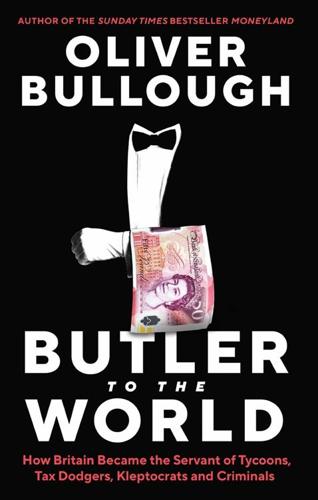
Butler to the World: How Britain Became the Servant of Tycoons, Tax Dodgers, Kleptocrats and Criminals
by
Oliver Bullough
Published 10 Mar 2022
It held half the market on the eve of the Suez Crisis, but that share had fallen to just 3 per cent by 1962, as American, Japanese and other British banks realised the appeal of cheap string-free money. What you could do with it was limited only by your imagination, because it expanded unimpeded trade to the whole world. ‘The Euro-dollar market knows no politics,’ said Oscar Altman, deputy director of the International Monetary Fund, in 1964. It was little more than a year after the Cuban Missile Crisis, but capitalist and communist banks alike plugged happily into the City of London’s new blood supply, safe from the privations of the Cold War. It was around the time of the Cuba crisis that American journalists first noticed what was going on. According to the New York Times, in July 1962 the market was worth between $2 billion and $5 billion, all of it circulating outside the US financial system.
…
INDEX A accountants regulators 185, 186 Suspicious Activity Reports 189 Acheson, Dean 58 Action Fraud 214, 218 Aliyev family 191–3 Aliyev, Nurali 199, 200, 202 Aliyev, Rakhat 198, 199, 200 Allard Prize 145 Aloi, Tony 229–30, 231 Altman, Oscar 52 Angola 155 Anguilla 198, 235, 243 Apple 223 Archbishop of Canterbury’s Faculty Office 186–8 Asquith, Lord Julian 234 Asquith, Raymond 159, 169, 173 Assad, Hafez al- 159 Assange, Julian 171 Assets Recovery Agency 204 Association of Accounting Technicians 135 Australia 19 visas 244 Austria 166, 170, 171 autonomy 31, 38, 57 Azerbaijan 191–3, 197 B BAE Systems 85–9 Ballester, Freddie 98–100, 104, 105, 114, 121 Bank of England 36–40 cultural uniformity 45–6 Eurodollars 45–7, 49, 50–1, 54–5, 58–9, 232 governors 32, 33, 36 and Midland Bank 42 Suez Crisis 44 banknotes 8 banks and money laundering 194 Suspicious Activity Reports 189–90 Baring, Evelyn, first Earl of Cromer 16, 32 Baring, George Rowland Stanley, third Earl of Cromer 32–3, 36, 39, 55, 232 Baring, Rowland, second Earl of Cromer 32 Barings Bank 57 Barker, Alison 183 Barkshire, John 34, 40, 229–31 BBC, Orwell statue 8 Bean, David 88 Bell, Geoffrey 45–6, 51 Bell, Lord 171 Bercow, John 163 Berry, Elspeth 138, 146–7 Betfair 115 Better Regulation Task Force 111 betting see gambling Betting and Gambling Council 119 Billion Bright Trading Limited 213 billionaires, and COVID-19 pandemic 58 Birnbaum, Eugene 54 Blair, Tony 109 blockchain 242, 243 Boeing 170 BOLSA (Bank of London and South America) 50, 57 Bolton, George 43, 50 Bossano, Joe 95, 96–7, 123, 124 Bretton Woods 30, 31 Brexit 12–13, 140, 142, 144, 248, 249 Bridgen, Andrew 140–1 British empire 18–20, 58 and City of London 30 British Private Equity and Venture Capital Association 142 British Syrian Society 159–60 British Ukrainian Society (BUS) 159–60, 172–3, 174 British Virgin Islands (BVI) 68–71, 74, 79–81, 91, 227 Firtash 161 Khassenov 209 shell companies 72–9, 81–5, 86–9, 90, 123, 124, 235, 238, 239, 240 Brompton Road Tube station 151–3, 164–5, 170, 172, 174, 176–7 Brown, Gordon 132 Brown, John 108, 109–10 Budapest Project 167–8, 169 Burma 20 Butler, Paul 71, 72–3, 75–6 butlers 4–6 Jeeves 6–7, 10–11 C Callaghan, James 36 Cambridge University 160–1, 162, 163, 169, 171–2, 237 Canada 19 visas 244 capital flows 31–2, 50, 51, 55, 59 Eurodollars 40–2, 44–57, 58–9, 232, 238 funk money 64–6, 78–9, 82, 208 capitalism 35 Cassidy, Rebecca 111–12, 113, 116–17, 119 Cayman Islands 233–5, 241, 243, 247 Ceylon 20 Chambers, Ajit 149–50, 151, 152, 153, 165, 176–7 Chandler, Victor 104–7, 108 Child & Child 192–3 China British investment in 19 cultural revolution 66 and Hong Kong 78, 82 money laundering 1–4 socialism 123 and Tanganyika 63 Church of England 186–8 Churchill, Winston 7, 21 City of London 29–30, 32, 57–8 Big Bang 56 cultural uniformity 32–4, 35–6 deregulation 56–7 Eurodollars 44–57, 58–9 financial innovation 48 and funk money 64, 65 Midland Bank 40–2 money laundering 182, 184 offshore finance 249 regulation 39–40 Scottish limited partnerships 137–9, 141, 142–3 and Suez Crisis 42–4 Clarke, Kenneth 240 Clinton, Bill 109, 121, 236 Cobbold, Cameron 33 Colston, Edward 7 Columbus, Christopher 69 communism 35 Tanganyika 62, 63 Coomes, Mr and Mrs 101 Coral 103, 107 Countrywide 193 COVID-19 pandemic 13, 15 and billionaires 58 Crimea 164 Cromer, Evelyn Baring, first Earl of 16, 32 Cromer, George Rowland Stanley Baring, third Earl of 32–3, 36, 39, 55, 232 Cromer, Rowland Baring, second Earl of 32 Crown Prosecution Service 204, 218 Cuban Missile Crisis 52 Curaçao 71–2, 198 Cyprus 19 Firtash 166 D Daily Telegraph 108 Danske Bank 144–5 Davies, Philip 115 defence against money laundering (DAML) SARs 195 Department for Culture, Media and Sport 110 Deripaska, Oleg 226 DF Foundation 161 dirty money see money laundering dollars 41–2, 44, 48 see also Eurodollars double taxation treaties 72, 75 E The Economist 151–2 Eden, Anthony 23, 24, 26 Edmonds, Tamlyn 219–20, 221, 222 Edmonds Marshall McMahon (EMM) 219–20, 225 Egypt, Suez Crisis 15–19, 20–7 Eisenhower, President 24 ELMER 195, 205 Envers 87, 88 estate agents 193 Suspicious Activity Reports 189 Eurobonds 45 Eurodollars 40–2, 44–57, 58–9, 232, 238 exchange rates 31–2, 38 F Fawcett, Millicent 8 FBI Budapest Project 168 Firtash 168–71, 200, 202 Federal Reserve 46, 48 Eurodollars 51, 53–4 Financial Action Task Force (FATF) 182–4 Financial Conduct Authority (FCA) 183, 185, 186 financial innovation 48 see also Eurodollars Financial Intelligence Unit (FIU) 190, 195 Financial Security Index (Tax Justice Network) 235 Financial Times 38 Firtash, Dmitry 157–66, 171–6, 177, 181, 219, 227 Brompton Road Tube station 164–5, 170, 172, 174, 177 Cambridge University 160–1, 162, 163, 169, 171–2, 237 FBI case 168–71, 200, 202 Firtash, Lada 163, 172 fixed-odds betting terminals (FOBTs) 112 Fonseca, Ramon 78 Foreign Affairs Committee 166, 179–81, 248 Fortuna United LP 128–30 France Eurodollars 49 overseas territories 243 prosecutions 216 Suez Crisis 23–4 Franco, Francisco 93, 95 Franklin, Professor Simon 161 Fraser, Ian 128–9 Freud, Jane McAdam 165 Fry, Richard 29–30, 57 funk money 64–6 Hong Kong 78–9, 82 Kazakhstan 208 G gambling 10, 102–5 deregulation 107–14, 236–7 gambling addiction 111, 116– 20, 121, 124 Gibraltar 98–102, 104, 105–7, 113, 114–17, 122–4, 242–3 Gambling Commission 118, 119, 185 Gambling with Lives 118 Gamesys 120 Garcia, Joe 122–3 Gartcosh 125–6 gas 153–5, 168 Gazprom 153, 155, 156, 157, 158, 161 Gazprombank 161 Germany, Eurodollars 49 ghost stations 149–53, 164–5 Gibraltar 91–8, 114–15, 122, 227, 235, 238, 241–3, 245 blockchain 242, 243 gambling 10, 98–102, 104, 105–7, 109, 110, 113, 114– 17, 119–20, 121–4, 242–3, 245 smuggling 92, 97 Global Witness 157–8, 169, 196, 198, 200, 205 golden visas 244–5 Goodman, Helen 172–3 Granovski, Vladimir 159 Greece financial crisis 31 visas 244 Green, Jeremy 57 Greenspan, Alan 46 Grogan, John 159, 160 Group DF 161 Grundy, Milton 233–4, 235–6 Guernsey 235 Guyana 19 H Hambro, Charles 49 Hambros Bank 57, 65 Hayek, Friedrich 35 Hayward, Mark 188 hedge funds Cayman Islands 234 and limited partnerships 138 Her Majesty’s Revenue and Customs 185 Herald 125, 147 Hitler, Adolf 21 Hodge, Margaret 239–40, 241, 247–8 Hodivala, Jama 223 Home Office, UWOs 197 Hong Kong and British Virgin Islands 78–9, 82 Khassenov 208–9, 211–12, 213, 220 Horrocks, Ian 210, 214–15, 218, 219, 220, 221 HSBC 189, 193 Hungary 166, 167–8, 169 Hunte, Lewis 76, 77 Huntington, Earl of 107 I India 19, 20 Institute of Chartered Accountants 194–5 Intelligence and Security Committee 175–6, 201 international business companies (IBCs) 77–8, 83–4 International Centres Forum 90 Ireland betting duty 106 petrol taxes 47, 54, 56, 236 Isle of Man 235, 243 Isola, Albert 241–2 Israel, Suez Crisis 23–4 Italy, visas 244 J Jaspert, Augustus James Ulysses 80–1 Jeeves, Reginald 6–7, 9, 11, 59, 101, 110–11, 232, 246 Jersey 235 Johnson, Boris Brexit campaign 225 London Underground 149–50, 151 and Russian influence in UK 175 Jowell, Tessa 110 Justice Committee 225 K Kazakhstan 198–201, 207, 208 Kennedy, John F. 63 Kenya 19, 61 Keynes, John Maynard 35 Khassenov, Argyn 207–15 private prosecution 215, 219– 23, 226 Kleinwort Benson 64 Kroll 126, 127, 128 Kulich, Aleksandr 209, 213 Kulich, Andrey 208–9, 210, 211, 213–14, 220, 221–3, 226 L Ladbrokes 103, 104, 107, 115 Laird, Judge Francis 220, 221 Lancet 124 Lasser Bros 229 Law Commission 190–1 Law Society of Scotland 136–7 lawyers 11–12 private prosecutions 223–4 regulators 185 Suspicious Activity Reports 188–9 Leask, David 125–6, 128, 131, 134, 135, 136, 144, 147 Lebedev, Yevgeny 248 legislative reform orders (LROs) 139–40 Levin, Carl 247 Li Ka-Shing 78–9 limited partnerships (LPs) 138, 143–4, 146–7 Northern Ireland 146 private fund limited partnerships 142, 145–6 Scottish limited partnerships 128–45, 227, 245, 246 London Kleptocracy Tours 162–3, 196 London Underground 149–51 Brompton Road Tube station 151–3, 164–5, 170, 172, 174, 176–7 M McMafia 179, 196, 214 Macmillan, Harold 20, 23 Malaya 19, 20 Malone, Jeff 17–18, 25–6, 34–5 Malta 242 Marx, Karl 35 May, Theresa 182 Mercantile House 229 merchant banks 36, 44 Metcalf, David 244 Micky Blue Eyes 230–1 Midland Bank 40–2, 44, 45, 51–2, 57 Migration Advisory Committee 244 Mills, Nigel 203 Ministry of Defence Brompton Road Tube station 152, 164–5, 172 Gibraltar 94–5, 114–15 Mishcon de Reya 199, 201 Mitchell, Andrew 239–40, 241, 247–8 Mkapa, Benjamin 89 Mogilevich, Semyon 157, 158, 167–8, 169 Moldova 126–7, 128, 129, 131, 132, 142, 143, 147 money laundering 1–4, 9, 179– 82, 196–8, 203–6, 246 Aliyev family 191–3 Cayman Islands 247 Financial Action Task Force 182–4 limited partnerships 128–45, 146, 245 Mogilevich 167–8 Nazarbayeva case 198–203 Panama Papers 191–2 UK regulation 184–96 Moneyland (Bullough) 30, 45, 130 Montado, Ernest 94, 95 Montegriffo, Peter 114 Moscow Narodny Bank (MNB) 41 Mossack Fonseca 78, 83, 191 Mullin, Roger 132, 134–6, 138– 42, 143–4 Mynors, Humphrey 39 N Nasser, Gamal Abdel 22, 23 National Crime Agency (NCA) 197, 201–4, 241 and Khassenov 214 Nazarbayeva case 199–201, 202, 203 National Lottery 103–4 Nazarbayev family 208 Nazarbayev, Nursultan 198, 201 Nazarbayeva, Dariga 198, 199, 200, 202 Ndibe, Okey 10 Netherlands 190 New Deal 31, 56 New York 229–31 New York Times 53, 89–90 New Zealand 19 Nigeria 155 healthcare 9–10 Nixon, Richard 55 Noriega, Manuel 78 Northern Ireland limited partnerships 146 petrol taxes 47, 54, 56, 236 notaries 187–8 Noyes, James 120 Nurse, Gwyneth 141–2, 143 Nyerere, Julius 62–3, 85, 89–90 O O’Brien, Leslie 54 Ogle, Vanessa 64 online gambling 114–17, 119– 20, 124 Only When I Larf 212 Orange Revolution 155–7, 159 Orban, Victor 169 Ormerod, David 191 Orwell, George 8 overseas territories 235, 239–41, 243, 245 see also British Virgin Islands; Cayman Islands; Gibraltar Owens, Lynne 201 P Panama 78, 82, 240 Panama Papers 83, 191–2 partnerships 132 see also limited partnerships Party Gaming 114, 121–2 Patel, Priti 181 Peel, Robert 7–8 Petfre 120 Philip, Prince 61, 161, 162, 169 police 216–17 and financial crime 218, 219– 20, 246 funding 224 Gartcosh 125–6 Hungary 168 and Khassenov 214, 219–20 and London Kleptocracy Tours 163 and private sector 202 and Scottish limited partnerships 126, 144, 146, 246 Portugal, visas 244 private equity, and limited partnerships 137–9, 142 private fund limited partnerships (PFLPs) 142, 145–6 private prosecutions 215–19, 223–8 Khassenov 215, 219–23, 226 problem gamblers 111, 116–20, 121, 124 Pryor, Henry 195 Public Accounts Committee 248 Purplebricks 193 Putin, Vladimir 155 and Ukraine 156, 164, 166 R Racing Post 106 Rankin, Ian 125, 134 Reagan, Ronald 56 Red Diamond Trading Limited 86, 88 Regulatory Reform Committee 139, 141–2 Rhodes, Cecil 7, 18–19 Riegels, Colin 71 Riegels, Michael in British Virgin Islands 68, 71, 73–4, 75, 76, 77, 78, 82, 83–5 in Tanzania 61–2, 63, 65–7, 85 and Tanzania radar contract 89 Riegels, Norma 67, 68, 73, 75, 84–5 Risby, Lord 159–60, 163–4, 173 Rock Turf Accountants 98, 100–1 RosUkrEnergo (RUE) 155, 156–7, 158, 169 Rothermere, Viscount 32 Royal Navy, Gibraltar 92, 93, 94–5 Russia money in UK 175–6, 179, 182, 222 organised crime 167 and Ukraine 154, 155, 164 S Saudi Arabia, and BAE Systems 87, 90 Scotland, police force 246 Scotsman 125 Scottish limited partnerships (SLPs) 128–45, 227, 245, 246 Scottish National Party 131–2 Scottish private fund limited partnerships 146 Scottish Property Federation 136, 142 Serious Fraud Office (SFO) 206 and BAE Systems 88–9, 90 Seychelles 128–9 Sharif, Khalid Mohammed 192–3 Shaw, David 84 shell companies 72–84, 86–9, 90, 123, 124, 130–1, 196, 237, 239–40 Scottish limited partnerships 128–32 Shetler-Jones, Robert 159, 171, 175 Shonfield, Andrew 37–9, 59 Shor, Ilan 127, 128 Short, Clare 86 Skripal, Sergei 179 Smith, Richard 128–9, 133–4 Solicitors Regulation Authority (SRA) 192–3 Soviet Union 153 see also Kazakhstan; Russia; Ukraine Spain, and Gibraltar 93, 95, 97–8, 124 Spink, Mike 162, 165 sportsbook.com 114 Spring, Richard (Lord Risby) 159–60, 163–4, 173 Standard Chartered 209, 210, 211–12, 220 Stark, Pete 75 sterling 30, 42–3 The Sting 212 Stoutt, Lavity 75, 76 Suez Crisis 15–19, 20–7, 34–5, 42–4, 58, 249 Suez Veterans’ Association (SVA) 15, 16–18, 22, 24, 25–6 suicides, and gambling addiction 118 surveillance capitalism 117 Suspicious Activity Reports (SARs) 2–4, 187–91, 192, 193, 194 ELMER 195, 205 Switzerland Eurodollars 49 Firtash 166 T Tanchel, Vivienne 225–6 Tanganyika 61–3 Tanzania 63, 65–7, 85 corruption 89–90 radar contract 85–9 tax havens 72, 84 see also British Virgin Islands; Cayman Islands; Curaçao Tax Justice Network (TJN) 235 taxation treaties 71–2, 75 Thank You, Jeeves (Wodehouse) 110–11 Thatcher, Margaret 56 Thompson, Mark 181, 206 The Times 131, 140 Tortola 69 Trainspotting 128 Transparency International 185, 194, 196 Transport for London (TfL) 149 Traynor, Brian 99–100 Treasury and Bank of England 37–8 limited partnerships 136, 139, 141–2, 143 Treaty of Utrecht 93 Tube see London Underground Turpin, Neil 187, 188 U UK Finance 190 Ukraine 131, 170, 174–5 British Ukrainian Society 159–60 corruption 155, 164 gas 153–5, 156–7, 158, 168 Orange Revolution 155–7, 159 unexplained wealth orders (UWOs) 196–202, 203–4 United Nations General Assembly, Suez Crisis 43 United States and BAE Systems 87 and British Virgin Islands 78, 82 and Cayman Islands 247 Eurodollars 51, 52, 55 financial deregulation 56–7 and Firtash 166, 168–71, 176, 177 gambling 102, 120–2, 236 and Gibraltar 96 and money laundering 189, 191, 193 New Deal 31, 56 offshore business 71–2, 73, 74–5 and organised crime 166–71 and Panama 78 Regulation Q 41, 56 Suez Crisis 24–5, 43–4 and Tanganyika 63 and Ukraine 164 visas 244 United States Virgin Islands (USVI) 70 V Venezuela 155 Vicious Games (Cassidy) 111– 12, 113, 116–17, 119 Virgin Islands 69, 70 see also British Virgin Islands visas 244–5 Vithlani, Shailesh 85–8 Volcker, Paul 46 W Walker, David 50–1 Wall Street Journal 168–9 Wallace, Ben 194, 196 Washington, George 63 welfare state 31, 56 Westwood, Neville 71, 73 Wheatley, Sowande 240 whistle-blowers 246–7 Whittingdale, John 173–4 Wilkinson, Howard 145 William Hill 103, 107, 108, 115 Without the Option (Wodehouse) 6–7 Wodehouse, P.
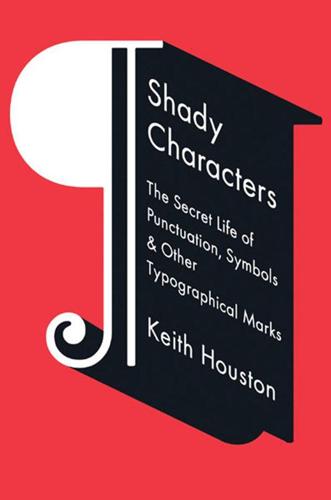
Shady Characters: The Secret Life of Punctuation, Symbols, and Other Typographical Marks
by
Keith Houston
Published 23 Sep 2013
* See chapter 10, “Quotation Marks (“ ”),” for more details. Chapter 2 The Interrobang The year 1962 was a momentous one for the United States of America. John Glenn became the first American, and only the second human, to reach orbit; the Kennedy administration successfully negotiated the nuclear tightrope of the Cuban missile crisis, and NASA launched AT&T’s Telstar, the world’s first telecommunications satellite, ushering in a new era of instantaneous global communications.1 Consumer society, too, was reaching new heights: advertising ruled, and the ad men were at the peak of their game. Amid this turmoil of Cold War and technological revolution, one Madison Avenue executive turned his attention to loftier matters.
…
blogID=84; Keith Miller, “The Clever Nostalgia of Adam Mars-Jones,” Times Literary Supplement, March 26, 2008; Alice Rawsthorn, “Brand Obama, a Leader in the Image War,” New York Times, April 4, 2008. 63.J.Morgan, “An Account of the Making of Common Worship: Services and Prayers for the Church of England,” Typography Papers 5 (2003): 33–64. 2.THE INTERROBANG () 1.Laurence Chang, Peter Kornbluh, and US National Security Archive, The Cuban Missile Crisis, 1962: A National Security Archive Documents Reader (New York: The New Press, 1992); Erik Gregersen, “Telstar (communications satellite),” Encyclopaedia Britannica, http://www.britannica.com/EBchecked/topic/586427/Telstar [last accessed March 30, 2011]; Erik Gregersen, Shiveta Singh, and Amy Tikkanen, “Mercury (space project),” Britannica Online Encyclopedia.
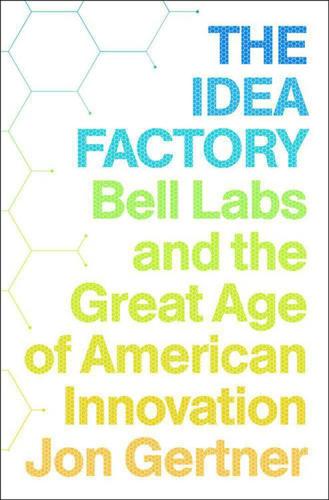
The Idea Factory: Bell Labs and the Great Age of American Innovation
by
Jon Gertner
Published 15 Mar 2012
“Kennedy and [his science advisor Jerome] Wiesner and I got down on our hands and knees and we got under the desk and found somebody had put it in a drawer,” Baker later remarked. “And then we explained the whole technology.” Kennedy often invited Baker into his private quarters for discussions; he likewise called him at his Bell Labs office, at least once trying to find out if Jim Fisk might take a job in the administration.38 During the Cuban Missile Crisis—a crisis brought on by the interpretation of information, in this case aerial photographs—Baker also became a fixture in the cabinet room.39 In the early 1960s, Baker’s closest associate in Washington was Clark Clifford, an advisor to Kennedy and the chairman of the Foreign Intelligence Advisory Board.
…
AT&T archives. 36 Bamford, The Puzzle Palace, pp. 427–29. 37 New Scientist, January 30, 1975, p. 274. 38 Baker’s handwritten notes. Baker Collection, Princeton University. 39 William O. Baker, National Reconnaissance Office Oral History. “I was sitting around the Cabinet room during the Cuban missile crisis of October 1962,” Baker would recall, and ultimately served as a “legman,” going back and forth between the White House and State Department, relaying information about the Russian fleets steaming toward Cuba with their cargo. 40 Clark Clifford, “Serving the President,” New Yorker, May 6, 13, 20, 1991.
…
.: The Story of Industrial Conquest (Danielian), 45–47 atomic bomb, 59–60, 65–66, 74, 104, 202, 356 Atomic Energy Commission (AEC), 159–60, 246, 266 atoms, 42, 81, 83–84, 85 audion, 23 Baker, Helen, 240–41 Baker, William, 2, 3, 38–39, 81, 211, 213, 236, 237–49, 250–52, 254, 256, 258, 260–61, 266–67, 270–73, 275, 278, 297, 304, 307, 311, 319, 327–29, 342, 347, 352, 357 antitrust suit and, 300–301 as Bell Labs president, 268–69, 301 charge-coupled device and, 261 childhood of, 240–41 death of, 330 Fisk and, 241–42, 243 government work of, 245–49 Pierce and, 238, 243–44 retirement of, 301 Shannon and, 244 Shockley and, 313–14 synthetic rubber work of, 242–43 Telecommunications Act and, 328–29 Baker Committee, 246–47 Bamford, James, 247 Bardeen, John, 88–89, 92, 94–97, 163, 166, 180, 197, 266, 315–17 Brattain and, 89 death of, 316 Nobel Prizes awarded to, 181, 317 “surface states” theory of, 92–93 transistor work of, 99–107, 110, 111, 114, 171, 181, 281, 315–16 Barzman (née Levor), Norma, 119–20, 121, 133 basic research, 30 applied research vs., 28–29 Baxter, William, 297–98, 301 Beckman, Arnold, 308 Bell, Alexander Graham, 17, 23–24, 98, 112, 263 Bell Laboratories Record, 63, 74, 160, 169, 173, 263 Bello, Francis, 142, 163–64, 184–85 Bell System, 17–20, 22, 26, 341 breakup of, 272, 301–2, 304, 328, 330, 331, 333 growth of, 45–46 MCI and, 271–74, 299 New York World’s Fair exhibit of, 228–31, 262 quality control within, 49–50 Bell System Technical Journal, 41, 127 Bell Telephone Laboratories, 1–2, 298, 330–38, 339–60 antitrust suit and, 299–303 “case” classifications at, 80 Communications Development Training Program (“Kelly College”) at, 153, 293 creation of, 31–32 Depression and, 43 development and systems engineers at, 173 diffusion of new technologies from, 111 downsizing at, 333 durability tests at, 48–49 essential idea of, 32–33 funding for, 154, 156, 333, 336, 351 growth of, 76–77 Holmdel facility, see Holmdel individual genius vs. collaboration at, 133–35 interdisciplinary groups at, 79–80 Kelly’s lectures about, 149–52 Kwajalein outpost of, 293–94 lectures at, 43 Lucent and, 335–37, 338, 340, 346 management style at, 102 markets for products of, 154 materials at, 50–51, 81–83, 114 math department at, 122–23, 133 military and, see military Murray Hill facility of, 75–79, 81, 88, 93, 146, 151, 331, 335, 336, 338, 340 narrowing of ambitions at, 334–35, 346 notebooks at, 56–57 number of workers at, 172–73 qualities shared by recruits at, 38–39 research scientists at, 173 social and professional exchanges at, 151 solid-state group at, 43, 79, 80, 81, 86–91, 92, 102, 103, 105, 112, 134, 150–51 study groups at, 43–44 technical assistants at, 154 West Street offices of, 26–27, 31, 75, 76, 146, 339–40 World War II and, 59–74, 81 Bennett, William, 256 bits, 129 Bode, Hendrik, 146, 147 Bohr, Niels, 51, 69, 267 bombs, 71 atomic, 59–60, 65–66, 74, 104, 202, 356 Bown, Ralph, 96–97, 99–100, 104–6, 108, 141, 150, 266, 334, 357–58 Brattain, Walter, 39, 42, 43, 44, 57–58, 80–81, 83, 85, 87–89, 93–97, 111, 154, 163, 166, 170, 180, 183, 266, 315–16 Bardeen and, 89 death of, 316 laboratory of, 93 Nobel Prize awarded to, 181 Pierce and, 197 transistor work of, 99–107, 110–11, 114, 171, 180, 181, 281, 315–16 Braun, Ernest, 90, 108, 152 Bridge, The, 61–62 Brown, Benjamin, 316 Brown, Charles, 298, 299, 301, 333 Brown, Walter, 56, 310 Brownell, Herbert, 182 Buchsbaum, Sol, 302, 357 Buckley, Oliver, 37, 40, 44–45, 59, 63, 64, 69, 73, 105, 106, 112, 156, 157, 160, 236, 245, 246, 282 as Bell Labs president, 78–79 Murray Hill complex and, 76–77, 78 retirement of, 156, 157 Buehler, Ernie, 167–68 Bush, Vannevar, 116–20, 123, 157 Business Week, 253 Byron, Christopher, 333 California Institute of Technology (Caltech), 14, 267 Pierce at, 191–93, 324, 325 Shockley at, 53–54, 192 carbon granules, 12, 20 Carr, Nicholas, 342 Carty, John J., 21–22, 27, 31 cell phones, 3, 131, 227, 233–34, 279–83, 284, 286–97, 335 Chaffee, Joe, 222 Chapin, Daryl, 171, 172 charge-coupled device (CCD), 261, 341 chess computer, 136, 137–38, 143, 322 chips, 252–53 Christensen, Clayton, 349 Chu, Steven, 331, 355 CIA, 247 Clark, Thomas, 158 Clarke, Arthur C., 4–5, 177, 178, 179, 197, 203 Clifford, Clark, 248, 328 codes, 124–25, 126 Coll, Steve, 271 Columbia University, 43 communication and messages, 121, 125–26, 128–32 cryptography and, 124–25, 131, 141, 147 digital, 129–31, 185, 250–51 optical, 256–61 pattern followed by, 128 Communications Development Training Program (CDT; “Kelly College”), 153, 293 Communications Satellite Act, 224 computers, 105–6, 155, 182, 184, 197, 226, 235, 250, 252, 253 chess, 136, 137–38, 143, 322 digital, 123, 251 Echo and, 214 electronic switching and, 233 music and, 225, 244, 325–27 Shannon and, 117–18, 136–44 COMSAT, 224 Conant, James, 157 “Convergence in Webster” game, 133, 197 copper, 83, 84, 86 Cornell University, 14 Corning Glass Works, 261, 262, 277, 278 Craig, Cleo, 179–80 Crawford Hill, 214–18, 220, 223, 258, 259, 340 Cronkite, Walter, 226 cryptography, 124–25, 131, 141, 147 Cuban Missile Crisis, 248 Cutler, C. Chapin, 214 cybernetics, 142 Danielian, N. R., 45–47 Darrow, Karl, 41–42, 43, 202 David, Edward, 228, 229, 238 Davisson, Clinton J. “Davy,” 28–30, 32, 33, 37, 40, 43, 52, 60, 61, 69, 152, 353, 359 Murray Hill complex and, 76 DeButts, John, 273–74, 298 De Forest, Lee, 23 Depression, Great, 36, 37, 41, 43, 75 digital computing, 123, 251 digital information, 129–31, 185, 250–51 digital photography, 261 DiPiazza, Gerry, 293–95 discovery, invention vs., 106–7 Distant Early Warning (DEW) line, 161, 182 “Don’t Write: Telegraph” (Pierce), 202–3 Dorros, Irwin, 239, 264, 265, 333 Drucker, Peter, 302–3, 330 DuBridge, Lee, 157, 245 DuPont, 167 Echo, 212–20, 221, 222, 224, 225, 226, 227, 228, 244, 254, 323, 340 Edison, Thomas, 11–13, 14, 29, 81, 152 carbon granules and, 12, 20 Einstein, Albert, 43, 51, 267 Shannon and, 121, 131–32 Eisenhower, Dwight D., 157, 182, 217–18, 246, 247 electrolytes, 93–94, 95 electromagnetic waves, 235–36 electron diffraction, 37 electronic switching (ESS), 229, 231–34, 235, 260, 261, 290–91 electrons, 15, 42, 43, 83–84, 85, 95, 101 Electrons and Holes in Semiconductors (Shockley), 112 Elizabeth II, Queen, 224 Elmendorf, Chuck, 55, 192–94, 236, 283, 288, 312, 358 energy innovation, 355–56 Engel, Joel, 287–91, 294–95, 354 Epstein, Paul, 15 Espenschied, Lloyd, 63–64 Facebook, 344, 353–54 Fairchild Semiconductor, 251, 252 Fano, Robert, 131 Federal Communications Commission (FCC), 226–27, 260, 270–72, 280–83, 286–88, 290, 295–97, 302, 329 Fermi, Enrico, 43, 60 Feynman, Richard, 42, 63 fiber optics, 258–62, 277–79, 331, 341 testing of, 296–97 field effect, 90–91, 92, 101 Fisk, Jim, 2, 3, 38, 41, 43, 55, 59–60, 68–72, 80, 88, 133, 159, 170, 184–85, 211–13, 234–37, 242, 245–46, 248, 252, 254, 258, 260, 263, 268, 285, 300, 304, 306, 307, 311–13 Baker and, 241–42, 243 retirement of, 266 Fleckenstein, Bill, 237 Fletcher, Harvey, 15, 16, 22, 25, 26, 28, 40, 43, 65, 80, 96, 267 Jewett and, 24 Flexner, Simon, 205 Forrester, Jay, 105–6, 334 Fortune, 142, 163–64, 166, 184–85, 219, 243, 270 Frenkiel, Dick, 284–96, 351 Friis, Harald, 152–53, 174, 196, 206, 209, 213 Fry, Thornton, 122–23 Fuller, Cal, 168–69, 171–72 functional devices, 252 Galambos, Louis, 19–20 Gallatin, Mo., 9–11, 38, 342 Gates, Bill, 4, 357 General Electric (GE), 163, 251, 303, 348 germanium, 86–87, 93–95, 99, 102–4, 107, 109–10, 165–66, 168, 169 purification of, 114, 134 Gibney, Robert B., 93, 96 Ginsparg, Paul, 337 glass, 83 Glennan, Keith, 211 glider planes, 189–90, 192 Goeken, Jack, 271 “Gold Bug, The” (Poe), 124 Golden, William, 157 Goodell, Rae, 313 Google, 341, 344, 353–54 Gordon, Eugene, 109 Gould, Gordon, 255 Gray, Elisha, 17–18, 98 Greene, Harold, 297–98, 299, 302 Gunther-Mohr, Robert, 305–6 Hagelbarger, David, 144, 148 Hagstrum, Homer, 201–2 Hartley, Ralph, 121 Hayes, Brian, 339 Hecht, Jeff, 259 Herriott, Donald, 256 Hewlett, Bill, 308 Hewlett-Packard, 308, 319 Hill, Charles, 179–80 Hoddeson, Lillian, 44, 79, 88, 105 Hoerni, Jean, 181 Holmdel, 213–17, 278, 281 Black Box, 284–85, 331, 338, 339, 340, 354 Crawford Hill, 214–18, 220, 223, 258, 259, 340 horn antenna, 173–74, 206, 207, 209, 215, 223 Howard Hughes Medical Institute, 354–55 How to Build and Fly Gliders (Pierce), 189, 190, 192, 200 Hughes Aircraft, 255 IBM, 348 Kelly as consultant for, 305–6 Imperial College of Science and Engineering, 141 information, 342 digital, 129–31, 185, 250–51 see also communication and messages information theory, 125, 128–30, 135, 136, 141, 142, 149, 151, 185–86, 202, 281, 318–19 innovation, 152–53, 250, 260, 343–44 competition and, 352 energy, 355–56 at Janelia Farm, 355 Kelly’s approach to, 151–52, 186, 211, 343, 345, 347 mistakes in, 262 Morton on, 108–9, 113, 152 spurs to, 153 use of term, 107, 151–52 venture economy and, 347–48 innovation hubs, 355 innovator’s dilemma, 349–50 Institute of Radio Engineers, 203 integrated circuits, 253–54, 260, 261–62, 339 Intel, 290, 308, 341 Internet, 334, 335, 342 invention, 152–53 discovery vs., 106–7 individual genius vs. collaboration in, 133–35 Jakes, Bill, 212–18, 227, 280, 291–92, 295 Jakes, Mary, 214, 215, 216 James, Frank, 10 James, Jesse, 10 Janelia Farm, 354–55 Jansky, Karl, 106 Japan Prize, 359 Javan, Ali, 256 Jet Propulsion, 203 Jet Propulsion Laboratory, 210–11, 214, 215, 325 Jewett, Frank Baldwin, 16–19, 21, 24, 26, 27, 30, 31–33, 36–37, 45, 59, 64, 82, 83, 106, 157, 192, 246, 268, 300, 353, 356 as chairman, 78 Fletcher and, 24 Millikan and, 16–17, 22, 24 Murray Hill complex and, 76–77 transatlantic phone service and, 176 transcontinental phone service and, 21–22 Jobs, Steve, 357 Johns Hopkins University, 14 Johnson, Lyndon B., 223, 247, 248 Kahn, David, 125 Kao, Charles, 258–59, 261 Kappel, Frederick, 219, 220, 223, 231 Kasparov, Garry, 322 Keefauver, Bill, 239 Kelly, Joseph Fennimore, 9–10, 11 Kelly, Katherine, 16, 28, 155 Kelly, Mervin, 2, 3, 9–11, 13, 14, 24, 25, 26, 28–30, 32, 33, 36–38, 40, 41, 44–48, 51, 52, 59–71, 73–74, 78–81, 83, 85, 88, 108, 113–14, 127, 134, 141, 149–62, 163, 165, 169, 170, 172–73, 180, 183–85, 234, 236, 242–46, 249, 253, 266–67, 270–71, 274, 285, 300, 304–7, 311, 339, 342–43, 345–46, 352, 353 amplifier work and, 95–97 as Bell Labs executive vice president, 79, 156 as Bell Labs president, 156, 157 death of, 306–7 early life of, 9–10, 342 gardens of, 155–56, 304 as IBM consultant, 305–6 innovation as viewed by, 151–52, 186, 211, 343, 345, 347 interdisciplinary groups created by, 79–80 lectures about Bell labs given by, 149–52 military work of, 157–62, 307 Millikan and, 16 mobile phones and, 280 Murray Hill complex and, 75–78 Nobel Prize and, 181 Parkinson’s disease of, 306 Pierce and, 195–96, 306–7, 345–46 retirement of, 212, 304–5 Sandia Labs and, 159–60, 271 satellite project and, 210, 211–12, 220, 225 Shockley and, 56, 180–82 transatlantic phone cable and, 176–79 transistor and, 99, 101, 105, 108, 110–13, 180 vacuum tube work of, 33–36, 37, 82, 349 work habits of, 155, 156–57 Kennedy, John F., 224, 247, 248 Kilby, Jack, 251–54, 262 Killian, James, 157, 245 Kim, Jeong, 337–38, 343 Kleiner, Eugene, 181, 346 Kleiner Perkins, 346, 348 Kleinrock, Len, 317, 319 Kogelnik, Herwig, 256–57, 341, 345 Kompfner, Rudi, 198, 199, 201, 207, 210–14, 216, 217, 223, 256–58, 265, 275–77, 323–24, 341 death of, 324 fiber optics and, 259–60, 261, 277 Kwajalein, 293–94 Kyoto Prize, 322 Land, Edwin, 248 Landau, Henry, 190 language, 125–26 lasers, 207, 254–58, 261, 276–79, 341 Lewbel, Arthur, 320 Li, Tingye, 259 light, 275–76 infrared, 254–55 lasers, 207, 254–58, 261, 276–79, 341 optical communications, 256–61; see also fiber optics Lilienthal, David, 160 Lillienfield, Julius, 101 linemen, 49 Lombardo, Guy, 218–19 Long Lines, 25, 173, 269, 301 Los Alamos, 159 Los Angeles Times, 314 Lucent, 335–37, 338, 340, 346 Lucky, Bob, 129, 131, 144, 265, 274, 332, 357, 359 on Baker, 238 Pierce and, 190–91 Macdonald, Stuart, 90, 108, 152 magnetron, 67–69, 70, 71 Maiman, Ted, 255–56 Manhattan Project, 4, 63, 64, 66, 134, 157, 356 Marconi, Guglielmo, 177 masers, 207, 208, 209, 254–55, 359 “Mathematical Theory of Communication, A” (Shannon), 127–32, 133 “Mathematical Theory of Cryptography, A” (Shannon), 124, 125, 131 Mathews, Max, 185–86, 225, 325–26 Mayo, John, 300, 302, 327, 331, 344, 348–50, 353 McCalley, Andrew, 39 McGowan, Bill, 271–72 MCI (Microwave Communications Inc.), 271–74, 299, 328 McMillan, Brock, 127, 132, 133, 136, 138, 156, 211 Mendel, Gregor, 134 messages, see communication and messages Metcalfe, Robert, 264 Microsoft, 341, 353–54 Microwave Communications Inc.
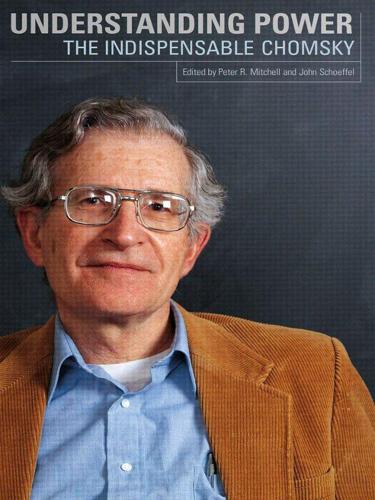
Understanding Power
by
Noam Chomsky
Published 26 Jul 2010
It turns out that Operation MONGOOSE practically blew up the world. I don’t know how many of you have been following the new material that’s been released on the Cuban Missile Crisis [1962 U.S.-Soviet showdown over Soviet missiles in Cuba], but it’s very interesting. There have been meetings with the Russians, now there are some with the Cubans, and a lot of material has come out under the Freedom of Information Act here. And there’s a very different picture of the Cuban Missile Crisis emerging. One thing that’s been discovered is that the Russians and the Cubans had separate agendas during the course of the Crisis. See, the standard view is that the Cubans were just Russian puppets.
…
The only two places where you can find it reported are in a footnote, on another topic actually, in one of these national security journals, International Security, and also in a pretty interesting book by one of the top State Department intelligence specialists, Raymond Garthoff, who’s a sensible guy. He has a book called Reflections on the Cuban Missile Crisis, and he brings in some of this material. 27 Actually, other things have been revealed about the Crisis which are absolutely startling. For instance, it turns out that the head of the U.S. Air Force at the time, General Thomas Power, without consultation with the government—in fact, without even informing the government—raised the level of American national security alert to the second highest level [on October 24, 1962].
…
In fact, throughout this whole period the Russians were very passive, they never reacted much—because they were scared. The fact is, the United States had an enormous preponderance of military force. I mean, the U.S. military thought there was no real problem: they wanted a war, because they figured we’d just wipe the Russians out. 29 WOMAN: But are you saying that the U.S. intentionally created the Cuban Missile Crisis? Well, I’m not quite saying that. These are things that happened in the course of the Crisis—how we got to it is a little different. It came about when the Russians put missiles on Cuba and the United States observed that missiles were going in and didn’t want to allow them there. But of course, there’s a background, as there always is to everything, and part of the background is that the United States was planning to invade Cuba at the time, and the Russians knew it, and the Cubans knew it.

Mistakes Were Made (But Not by Me): Why We Justify Foolish Beliefs, Bad Decisions, and Hurtful Acts
by
Carol Tavris
and
Elliot Aronson
Published 6 May 2007
He had believed the claims and faulty intelligence reports of his top military advisers, who assured him that once Americans invaded Cuba at the Bay of Pigs, the people would rise up in relief and joy and overthrow Castro. The invasion was a disaster, but Kennedy learned from it. He reorganized his intelligence system and determined that he would no longer accept uncritically the claims of his military advisers, a change that helped him steer the country successfully through the subsequent Cuban missile crisis. After the Bay of Pigs fiasco, Kennedy spoke to newspaper publishers and said: "This administration intends to be candid about its errors. For as a wise man once said, 'An error does not become a mistake until you refuse to correct it.'...Without debate, without criticism, no administration and no country can succeed—and no republic can survive."
…
See pyramid of choice Christensen, Andrew, [>], [>] Cialdini, Robert, [>]–[>] Civil War, [>], [>], [>]–[>] Clancy, Susan, [>]–[>] Claytor, Ralph, [>]–[>] clinical psychologists, [>], [>] clinical trials, [>]–[>] Clinton, Bill, [>], [>], [>] (n.2) Clinton, Hillary, [>] cloning, [>] closed loops, of mental-health practitioners, [>]–[>], [>]–[>], [>], [>], [>]–[>] cognitive dissonance, [>], [>]–[>] admitting mistakes, [>]–[>], [>] (n.2) behaviorism and, [>]–[>] brain processing of information, [>]–[>], [>]–[>] catharsis and, [>]–[>], [>]–[>] (n.16) confirmation bias and, [>]–[>], [>]–[>] in decision making, [>]–[>], [>] (n.12) denial of problems in legal system and, [>]–[>], [>] denial of problems in mental-health profession, [>]–[>], [>] doomsday predictions and, [>]–[>], [>], [>] initiation experiments and, [>]–[>], [>], [>]–[>] irrevocability and, [>] lessons from dissonance theory, [>]–[>] living with dissonance, [>]–[>] in marriage, [>], [>]–[>] memory and, [>]–[>], [>]–[>] nature of, [>]–[>] obedience to authority and, [>]–[>], [>], [>] (n.27)—[>] popular use of term, [>] recognizing own, [>]–[>] self-concept and, [>]–[>] virtuous circle and, [>]–[>] Cohen, Geoffrey, [>] Cohen, Richard, [>]–[>] Columbia space shuttle explosion, [>]–[>] compassion, virtuous circle and, [>]–[>] con artists, [>]–[>] concentration camps Birkenau, [>] Camp Erika, [>], [>]–[>] (n.17) Majdanek, [>], [>] confessions, false, [>]–[>], [>]–[>], [>]–[>], [>]–[>], [>], [>]–[>] confirmation bias, [>]–[>], [>]–[>] blind spots and, [>] legal system and, [>], [>] in marriage, [>]–[>], [>]–[>] mental-health practitioners and, [>], [>], [>] nature of, [>] testimony of children and, [>]–[>] conflict resolution, in marriage, [>]–[>], [>]–[>], [>]–[>] conflicts of interest corporate, [>], [>]–[>] gifts and, [>]–[>], [>]–[>] pharmaceuticals industry, [>]–[>] in politics, [>]–[>], [>]–[>], [>] science versus commerce, [>]–[>] Connolly, Patrick, [>] Conroy, John, [>] contempt, in marriage, [>]–[>] control groups, [>], [>] Convicting the Innocent (Borchard), [>]–[>] convictions, false, [>]–[>], [>]–[>] Conway, Michael, [>]–[>] corporations conflicts of interest, [>] gifts and, [>]–[>] pharmaceuticals industry, [>]–[>] Courage to Heal, The (Bass and Davis), [>], [>]–[>], [>] Crandall, Chris, [>] Criminal Interrogation and Confessions (Inbau et al.), [>]–[>] Criner, Roy, [>]–[>] Crocker, Charles, [>] Crowe, Michael, [>]–[>], [>], [>] Crowe, Stephanie, [>]–[>] Crusades, [>]–[>] CSX Transportation Inc., [>] Cuba Bay of Pigs fiasco, [>] Cuban missile crisis, [>] Guantánamo Bay and, [>] cults Hare Krishna gifts, [>]–[>] Satanic, [>], [>], [>] Cunningham, Randy "Duke," [>] cycle of abuse, [>]–[>] Daily Show, The (TV program), [>] Damn It Dolls, [>]–[>] Dancing with Daddy (Petersen), [>] Davis, Deborah, [>] Davis, Jefferson, [>] Davis, Keith, [>]–[>] Davis, Laura, [>], [>]–[>], [>] (n.40) daycare center abuse claims, [>]–[>], [>]–[>], [>], [>]–[>] (n.3), [>]–[>] (n.39) Dean, John, Watergate scandal, [>]–[>] death penalty, [>], [>] decision making cognitive dissonance in, [>]–[>], [>] (n.12) pyramid of choice and, [>]–[>], [>]–[>] Dedge, Wilton, [>]–[>] defense mechanisms, [>] de Klerk, Frederik, [>]–[>] DeLay, Tom, [>]–[>] Democrats, [>]–[>], [>]–[>], [>] denial of guilt, confessions and, [>]–[>], [>]–[>] depression, [>]–[>], [>], [>], [>], [>]–[>] DeRenzo, Evan, [>] DeWitt, John, [>] Dickens, Charles, [>] Dinka (Sudan), tooth extraction by, [>]–[>], [>]–[>] discrimination, [>]–[>], [>]–[>] dissociative identity disorder, [>], [>], [>] (n.3) dissonance theory.
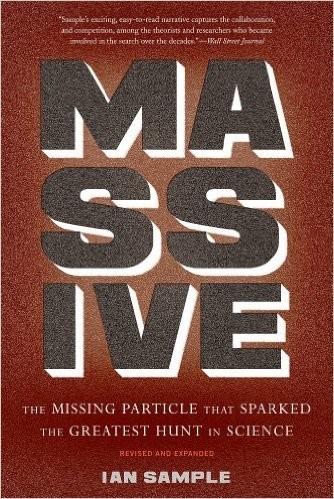
Massive: The Missing Particle That Sparked the Greatest Hunt in Science
by
Ian Sample
Published 1 Jan 2010
The plane was almost entirely intact, and the pilot was alive and well. Tensions between the Cold War adversaries escalated to a new high. The Soviet physicists that Wilson and his delegation were trying to build relationships with could hardly bear to speak to them. The U-2 incident was followed swiftly by the Cuban missile crisis, which pushed the United States and the Soviet Union to the brink of nuclear war. But in spite of desperate political upheavals throughout the 1960s and 1970s, a small group of scientists from America, the USSR, and CERN continued to sketch out plans for Wilson’s World Accelerator. As presidents and premiers fell, Wilson saw the project as a way to heal the wounds of war, to replace suspicion and secrecy with trust and cooperation.
…
Cline, David Clinton, Bill Cockroft, John Cogill, Michael Coleman, Sidney Color charge Conway, John background blogging Fermilab and Copernicus, Nicolaus Cosmic inflation theory Cosmic rays collider safety and strangelets and vacuum decay and Coulson, Charles Crick, Francis Cuban missile crisis Curie, Marie Dark energy Dark matter Darriulat, Pierre Darwin, Charles Das Gupta, Sabul De Broglie, Louis Department of Energy, U.S. Deryagin, Boris Descartes, René Desertron accelerator Di Lella, Luigi Dimensions Dirac, Paul background/description equation magnetic monopoles Nobel lecture question quantum mechanics/relativity Salam and Discover magazine Dixon, Paul DNA structure Donohoe, F.J.
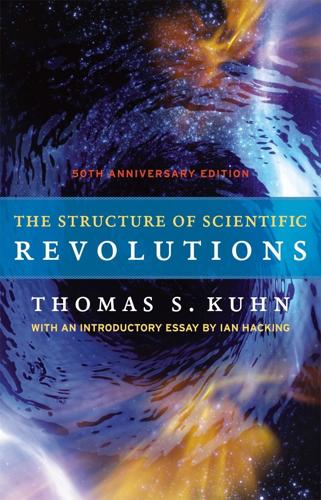
The Structure of Scientific Revolutions
by
Thomas S. Kuhn
and
Ian Hacking
Published 1 Jan 1962
At least once a year towns sounded an air raid siren, at which everyone had to take shelter. Those who protested against a nuclear weapon, by ostentatiously not taking shelter, could be arrested, and some were. Bob Dylan first performed “A Hard Rain’s A-Gonna Fall” in September 1962; everyone assumed it was about nuclear fallout. In October 1962 there was the Cuban Missile Crisis, the closest the world has come, after 1945, to nuclear war. Physics and its threat were on everyone’s mind. The Cold War is long over, and physics is no longer where the action is. Another event of 1962 was the awarding of Nobel prizes to Francis Crick and James Watson for the molecular biology of DNA and to Max Perutz and John Kendrew for the molecular biology of hemoglobin.
…
B., xiin11 Cold War, ix commitment: group commitment, 181–86; instrumental, 40–41; and normal science, 7, 40–42, 43; to paradigm, 100–101; quasi-metaphysical commitments, 41 communities, scientific, xxi, xxii, xxiv; insulation from demands of everyday life, 163–64; losses due to paradigm changes, 169; practitioners of a scientific specialty, 176; rarely study the same problems, 161; requisites for membership, 167–68; structure of, and paradigms, 19–20, 175–86; subject matter of, 179 computer communication, ix Comte, Auguste, xxxiv, xxxivn42 Conant, James, viii, xlv conjectures, xiv Continental mechanics, 33 Copernicus and Copernican revolution, xliv, 6, 76, 80, 93, 98, 156; and calendar design and astrology, xlv, 82, 152; and paradigm-induced changes in scientific perception, xxviii, 116–17, 153–54; and prediction of annual parallax, 27; Preface to the De Revolutionibus, 69; prerevolutionary crisis state, 67–70, 71, 74, 75, 76, 82, 83, 86; resistance to, 148–49, 150 correspondence theory, xxxv Coulomb, Charles-Augustin de, 21, 29, 34; Coulomb’s Law of electrical attraction, 28, 35, 36 counterinstances, 77, 78–80, 82, 131 Crick, Francis, ix crisis, xi, xxiii, xxv, xliii; and anomaly, 68, 81–83; and argument and counterargument, 156; and blurring of a paradigm, 84; description of in the De Revolutionibus, 69; effects of, 83–84; may develop in one community and create crisis in another, 180; and multiple emergent paradigms, xxxii; often proliferates new discoveries, 88–89; in physics in late nineteenth century, 72–75; in pneumatic chemistry, 86; preceding Lavoisier’s oxygen theory of combustion, 70–72; as precondition for novel theories, 75, 77; and prolonged awareness of anomaly, 68; provision of data for paradigm shift, 89; response to, 77–91; and theory change, xxvii; transition to new paradigm, 84–91 Crookes, William, 58n7, 93 Cuban Missile Crisis, ix d’Alembert, Jean, 31 Dalton, John, xxix, 79, 106, 191–92; chemical atomic theory, 129, 131, 132–34, 138, 140, 180 Darrow, K. K., “Nuclear Fission,”60n10 Darwin, Charles: lack of recognized goal, 170–71; The Origin of Species by Means of Natural Selection, xv, 149–51 De Broglie, Louis, 157 definitions, 183 dephlogisticated air, 54, 55, 80, 85, 118, 146 Desaguliers, John Theophilus, 14 Descartes, René, 41, 104, 121, 126, 149, 193 descriptive and narrative modes, 206–7 development, scientific: competition between views of nature in early stages of, 4; concept of development-by-accumulation, 2–3; and expectations, 59; and first received paradigm, 64; prior to universally received paradigm, 12–18; schools characteristic of early stages of, 17 Dewey, John, xxxvii disciplinary matrix, 181–86, 187 discoveries (novelties of fact), 53; and destructive-constructive paradigm changes, 53, 66, 97; difficulty of establishing priority, 55–56; gradual and simultaneous emergence of observational and conceptual recognition, 56, 62; and previous awareness of anomaly, 62; resistance to, 62.
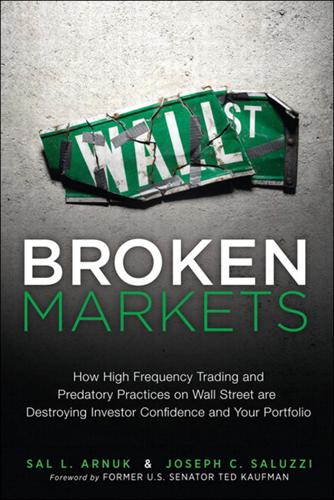
Broken Markets: How High Frequency Trading and Predatory Practices on Wall Street Are Destroying Investor Confidence and Your Portfolio
by
Sal Arnuk
and
Joseph Saluzzi
Published 21 May 2012
Historians will judge how dangerous and disruptive the current financial crisis is compared to the Great Depression, and the story is not over, but despite the tremendous pain caused by the financial crisis, it seems difficult to draw an equivalence between today’s 9% unemployment rate and the Great Depression’s 25% rate, or between today’s hundreds of failed but insured banks and the thousands of failed and uninsured banks back then. It also seems willfully illiterate to ignore the many crises since the Great Depression when the market was not as volatile as it was in 2008. It wasn’t as volatile during the Vietnam War, or the Cuban Missile Crisis, or the Korean War, or World War II, or the Berlin Crisis, or after 9/11, and more, a series of events that plainly included serious risks to life on Earth itself. The market in the 1930s was also tiny compared to modern-day markets. In the 1930s, average daily volume per stock was less than 2,000 shares a day, making it easy to knock prices around.
…
Within one week in August 2011, the Dow Jones Industrials Average went up or down by 400 points four days in a row, something it had never done before, ever. Crain’s New York called it the “wildest week on record,” and this after at least some of the SEC’s fixes were already implemented. As a point of comparison, President Kennedy first told the nation about the Cuban Missile Crisis on the evening of October 22, 1962, and warned the entire world was at “the abyss of destruction.” The next day the front page of The New York Times screamed “Kennedy Ready for Soviet Showdown.” The stock market’s reaction? The Dow Jones Industrials Average fell about 200 points, after adjusting for different baselines between 1962 and 2011.

Stealth
by
Peter Westwick
Published 22 Nov 2019
American spy planes would receive a Soviet radar signal and feed it into a variable delay to create an aircraft of any apparent size, speed, and location—and then beam that signal back to the Soviet radar receiver. The process, in effect, conjured a ghost aircraft on Soviet radar screens. The CIA then had the National Security Agency (NSA) monitor the communications of the Soviet radar sites, whose reactions revealed when they could detect the ghost aircraft. The CIA used the Cuban Missile Crisis as a Palladium experiment. CIA planes first generated a false signal to mimic an American aircraft attacking Cuba; then a Navy submarine off the coast surfaced and released, at set intervals, metallic balloons of carefully calibrated sizes. The Soviets, as expected, activated a nearby SA-2 radar to track the ghost aircraft, and the radar then reported seeing the mysterious spheres near the target.
…
See Operation Linebacker II Clark, Virginius Evans, 129 Clark Y airfoil, 129, 149 clearance process, 113 Clinton, Bill, 182–183 close-tolerance machine shops, 14 Cold War Antenna Laboratory and, 7–8 black world during, 112 ending of, 194 military-industrial complex from, xv technology from, 7 Collins, Whitley, 59 combat use, of Stealth aircraft, 110 commercial airliners, 102–104 Commission on Integrated Long-Term Strategy, 121 composite materials, 172 computer-assisted design system, 171 computers aircraft design using, 46, 171, 191–192 for aircraft flight controls, 83–86 design process with GENSCAT and, 65 high-tech industries and, 194–195 Lockheed using, xii–xiii, 48, 70 Overholser and programming of, 48–49 RCS and, 47 control surfaces, 164 Convair, 37–38, 57 conventional technologies, 120–121 Corona spy satellites, 32 Costello, Robert, 176 cost-to-kill ratios, 176 countries, with Stealth aircraft, 186 cross-axis coupling, 84 Crouch, Richard, 178–179 cruise missiles, 127, 138, 144 Cuban Missile Crisis, 10 Currie, Malcolm, 26 curves, 69, 131 BSAX using, 132–133 Northrop using, 133, 147–149, 158, 191–192 of Tacit Blue, 137, 159–160 D-21 Tagboard drone, 50–51 Damaskos, Nikander, 79–81 Darby, S. Newman, 208n.18 DARPA. See Defense Advanced Research Projects Agency DDR&E. See director of defense research and engineering death ray, 2–3 Defense Advanced Research Projects Agency (DARPA), 23–29 BSAX and, 124 Cashen and suggestions from, 225n.20 Damaskos’s formula used by, 80 funding from, 52–53 LRRD sponsored by, 118 Tacit Blue contract from, 133 wing-body-tail design and, 135 Defense Nuclear Agency, 118 defense systems, 64–65, 120 DeLauer, Richard, 170 delta wing, 70 Democrats, 156–157, 170–171 design Cashen facing challenges in, 128–129 computer-assisted, 171 with computers, xii–xiii engineers, 91 Northrop integrating production with, 169 of SR-71 spy plane, 34–35 Stealth aircraft challenge of, 85–86 Stealth program integrating production and, 192–193 Tacit Blue integrating production and, 139 design competition, 79 Lockheed and Northrop in, xi, 29, 53 of spy planes, 37–39 of XST, 61 detection range, of radar, 204n.5 development engineering, 75–76 diffraction, 131 of radar, 43, 191, 195 Ufimtsev researching, 41, 65 Dingell, John, 170 director of defense research and engineering (DDR&E), 23–25, 99–100 dirty-hands engineers, 88 Discriminate Deterrence (report), 121–122 Disney, Walt, 18–19 Disneyland, 18–21, 131 Doppler shift, 125 Dornheim, Mike, 177–178 double-W planform, 164 Douglas, Donald, 14 Douglas, Michael, 186 Douglas Aircraft, 58 Drake, James, 17, 208n.18 drones, 50–51, 84, 185 Dyson, Ken, 95, 97–98, 141 dystopia, 21 Earhart, Amelia, 55, 129 ECHO, 47–49 ECM.
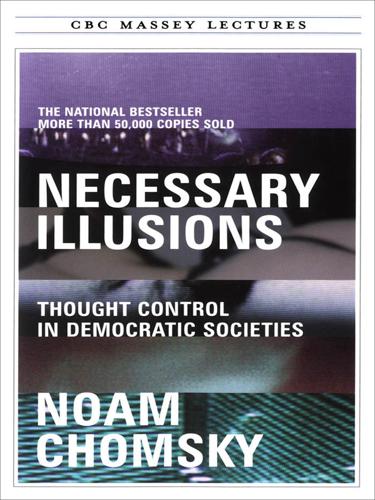
Necessary Illusions
by
Noam Chomsky
Published 1 Sep 1995
Anti-Cuban terrorism was directed by a secret Special Group established in November 1961 to conduct covert operations against Cuba under the code name “Mongoose,” involving 400 Americans, 2,000 Cubans, a private navy of fast boats, and a $50 million annual budget, run in part by a Miami CIA station functioning in violation of the Neutrality Act and, presumably, the law banning CIA operations in the United States.29 These operations included bombing of hotels and industrial installations, sinking of fishing boats, poisoning of crops and livestock, contamination of sugar exports, blowing up of civilian aircraft, etc. Not all of these actions were directly authorized by the CIA, but we let no such niceties disturb us when condemning officially designated terrorist states. Several of these terrorist operations took place at the time of the Cuban missile crisis of October-November 1962. In the weeks before, Raymond Garthoff reports, a Cuban terrorist group operating from Florida with U.S. government authorization carried out “a daring speedboat strafing attack on a Cuban seaside hotel near Havana where Soviet military technicians were known to congregate, killing a score of Russians and Cubans”; and shortly after, attacked British and Cuban cargo ships and again raided Cuba among other actions that were stepped up in early October while Congress passed a resolution “sanctioning the use of force, if necessary, to restrain Cuban aggression and subversion in the Western Hemisphere” and voted to withhold aid from any country trading with Cuba.
…
For further details, see the references of note 36, including some exceptions to the general pattern, primarily in the Christian Science Monitor and Los Angeles Times, and editorials in the Boston Globe. 40. See Manufacturing Consent, chapter 5, and sources cited. A variant of this diplomatic strategy was called “the Trollope ploy” by the Kennedy intellectuals during the Cuban missile crisis, when they sought to evade a proposal by Khrushchev that they recognized would be regarded generally as a reasonable way to terminate the crisis; the “ploy” was to attribute to Khrushchev a different and more acceptable stand, just as the heroine of a Trollope novel interprets a meaningless gesture as an offer of marriage.
…
For a longer excerpt see Turning the Tide, 167-68; and notes, on the efforts by editor Hendrik Hertzberg to evade the facts. Hertzberg, TNR, Feb. 6, 1989. Recall also the laudatory comments on Reagan’s dedication to human rights during the propaganda exercises at the Summits, already discussed. 29. Raymond L. Garthoff, Reflections on the Cuban Missile Crisis (Brookings Institution, 1987, 17). 30. Ibid., 16f., 78f., 89f., 98; International Security, Winter 1987-88, 12. For more on these terrorist operations, see the references of chapter 5, note 25; also U.S. Army Captain Bradley Earl Ayers, The War that Never Was (Bobbs-Merrill, 1976); Warren Hinckle and William Turner, The Fish is Red (Harper & Row, 1981); William Blum, The CIA (Zed, 1986); Morris Morley, Imperial State and Revolution (Cambridge, 1987). 31.
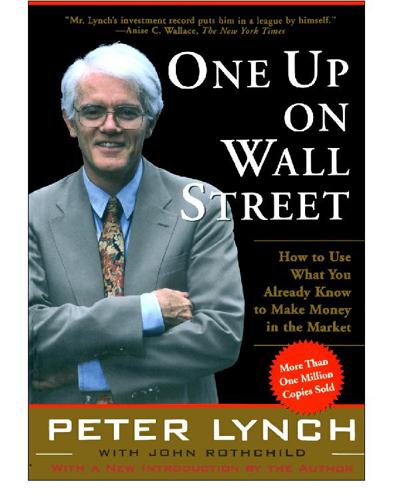
One Up on Wall Street
by
Peter Lynch
Published 11 May 2012
As long as they don’t recognize their predicament, they can just hang out there forever. 20 50,000 Frenchmen Can Be Wrong Thinking back over my tenure as a stockpicker, I remember several major news events and their effects on the prices of stocks, beginning with President Kennedy’s election in 1960. Even at the tender age of sixteen, I’d heard that a Democratic presidency was always bad for stocks, so I was surprised that the day after the election, November 9, 1960, the market rose slightly. During the Cuban missile crisis and our naval blockade of the Russian ships—the one and only time America has faced the immediate prospect of nuclear war—I feared for myself, my family, and my country. Yet the stock market fell less than 3 percent that day. Seven months later, when President Kennedy berated U.S. Steel and forced the industry to roll back prices, I feared for nothing, yet the market had one of its largest declines in history—7 percent.
…
Lawrence, 85 Clear Channel Communications, 26 Clear Shield, 133 CNA, 155 Coastal Corporation, 214–15 Coca-Cola, 34, 109, 118, 134, 159, 241, 247, 281 brand name, value of, 142, 209 hidden assets of, 210–11 as stalwart company, 112, 115, 162, 163, 176 Coca-Cola Enterprises, 134, 210–11 Coleco, 42 Colgate-Palmolive, 112, 115–16 Comdial, 159 companies: asset-play, 125–27, 128, 129, 174–75, 209–13, 231, 241, 256–57; see also assets biotech, 21 bonds of, 68, 70, 203 book value of, 207–9, 210–11 buying back shares by, 18, 19, 144–45, 153, 157 cash position of, 194, 197, 199–201, 214–15 classification of, 110–29 consumer demand and, 142, 254 contacting, 186–91, 287 cyclical, 119–22, 127–29, 175, 207, 225, 228–29, 241, 253–54 debt of, 194–97, 201–4, 208, 255 diversification of, 135, 145 diworseification of, 124, 153–57 dullness of, 130–32, 160 earnings as value of, 161–62, 164, 167 economy and, 110–11, 120–21 European, 212–13 exclusive franchises and, 140–41 fast-growing, 118–19, 127–29, 162–63, 167, 176, 222, 229–30, 241, 243, 254–55 financial reports of, 194–97; see also annual reports fundamental strength of, 108, 220–21 growth rate of, 110–11, 127–29, 199, 217–19 headquarters of, 190 industries and, 110, 111, 118, 119, 139–40 institutional ownership of, 55, 57, 136, 179, 257 inventories of, 215–16, 253, 255 life of, 222–24 middleman, 160 names of, 160 pension plans of, 217 performances of, 131–33, 138 representatives of, 191 restructuring of, 124, 153 rumors on, 137, 183–84 size of, 64–65, 109–10 slow-growing, 111–12, 127–29, 175, 205, 228, 241, 251–52 spinoffs of, 133–36, 159 stalwart, 112–18, 128, 176, 205, 228, 241, 243, 252 summarizing prospects of, 174–75, 229–34 turnaround, 12, 122–24, 127–29, 153, 159, 175–76, 202, 203–4, 213, 230–31, 241, 255, 260 unpredictability of, 265 as users of technology, 142 value of, 161–62, 164, 167 see also stocks competition, industrial, 139, 176–80 compounding: of earnings, 219 of interest, 67–68 Con Ed, 76, 123, 205–6, 265 Coniston Partners, 279 Conrock, 131 Consolidated Edison, 76, 123, 205–6, 265 Consolidated Foods, 37 Consolidated Rock, 131 Consumer Price Index, 70 Consumer Reports, 107 Container Corporation, 154 Contel, 213 Continental Air, 224–26 copying industry, 152 Corn Products Refining, 72 corporate bonds, 68, 70, 203 corporations, see companies Cosmic R and D, 33 Cray computer, 49 Crazy Eddie, 153 Crown, Cork, and Seal, 131, 160, 190, 267, 268 back share buying by, 144 CSX, 210 Cuban missile crisis, 276 CVS, 155 Dairy Queen, 144 Dart, 133 Dart & Kraft, 133 Datapoint, 134 day traders, 20 Dean Witter, 158 debt: bank vs. funded, 202–3 of companies, 194–97, 201–4, 208, 255 investment in, 67, 70 tax deductions and, 285 -to-equity ratio, 202 deficit, U.S. trade, 284 Del Haize, 212–13 Dell Computer, 25, 26 Delta Airlines, 226 Denny’s, 178 depreciation, 214, 215 deRoetth, Peter, 55, 192, 249 Digital Equipment, 111, 129 diluting, 145, 264 discounting, 100, 171 disk drive industry, 151, 160 Disney, 128, 256 diverse performance, 59–60, 64 dividends, 18–19, 112, 204–7 p/e ratio and, 199 stock price and, 205 taxing of, 285 Dollar General, 25, 26 dot.com stocks, 11 market capitalization of, 13–14 p/e ratio and, 12–13 Dow Chemical, 109, 119, 128, 164, 165 Dow Jones, 47, 48, 51, 52, 53, 88, 128 Japanese, 55, 278 in 1988–89, 288 in 1970s, 278, 289 in October 1987, 28, 69 rise, since 1966, 55 twentieth-century history of, 71–72 Doyle’s, 28, 29, 30 Dravo, 141 Drexel Burnham Lambert, 280 Dreyfus, 89, 95, 102, 103, 104, 247 Dunkin’ Donuts, 33, 64, 66, 163, 281 investment research on, 36, 40–41, 95, 106 as multibagger, 35, 58 DuPont, 109, 212 earnings: compounded, 219 dot.com stocks and, 13 future, 172–73, 187 growth rate and, 199, 217–18 inventories and, 215 punishing, 164–65, 211 as value of stocks, 161–62, 164–65, 167 see also price/earnings ratio Eastern Airlines, 224 Eastman Kodak, 61, 96, 108, 152, 231 Eaton, 61 economic growth, definition of, 110 economy of 1988 vs. 1930, 282–83, 288 Edelman, Asher, 279 efficient-market hypothesis, 52 E.
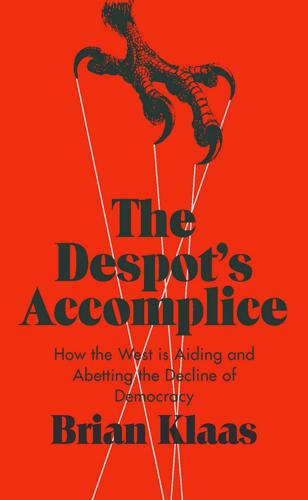
The Despot's Accomplice: How the West Is Aiding and Abetting the Decline of Democracy
by
Brian Klaas
Published 15 Mar 2017
USAID claimed that the covert app 49 THE DESPOT’S ACCOMPLICE disappeared because funding ran out, but there are suspicions that its true nature was uncovered and deemed a risk to American public relations at a time when US-Cuban relations were beginning to show signs of a thaw. â•… This intervention in Cuba offers two lessons. First, diplomatic history casts a long shadow: tiny Cuba continued to be perceived as a disproportionate threat in Washington for decades beyond the Cuban Missile Crisis. Second, modern-day diplomacy aimed at promoting democracy around the world has not completely dissociated itself from bizarre plots straight out of a James Bond film, a sort of misguided GoldenHashtag sequel to Goldeneye or Goldfinger. â•… Yet in all the cases mentioned above, from Iran to the Democratic Republic of Congo to Chile or Cuba, the perceived threat was exaggerated and overblown.
…
Federal Election Commission, 185, 188 City on a Hill, 10, 35, 179, 188, 189 Cleisthenes, 28 climate change, 209 Clinton, Hillary, 5–6, 112, 178, 190 Clinton, William “Bill”, 52, 92, 102, 112, 115–16, 184, 190 Cobra Gold, 201 Cold War, 1, 20, 35–6, 37–50, 55, 66, 75, 81, 93, 149, 150, 200–1, 204, 221 Colombia, 27, 33, 171, 189 Commonwealth of Independent States Observation Mission (CISEMO), 211 Communist Party of China, 208 of Moldova, 195 of Thailand, 199 Community College of Denver, 209 Confucius Institutes, 209 Congo, 20, 36, 38, 42–4, 47, 48, 95, 121 Congress, US, 32, 33, 35, 184, 194 Connecticut Compromise, 32–3 constitutions, 31–2, 150–1, 190, 197 Contadora Island, Panama, 117 COPPPAL (Conferencia Permanente de Partidos Políticos de América Latina y el Caribe), 211 Corner House, Riga, 147–8, 160, 225 corruption, 73, 82, 99, 107, 139, 260 170–1, 197, 200, 201, 209, 210, 219 Côte d’Ivoire, 3, 19, 104–10, 111, 119 2000 presidential election, 104 2002 outbreak of civil war, 104 2010 presidential election, 104–5; outbreak of violence, 105–6, 119; Gbabgbo offered asylum in the US, 111 2011 UN/French intervention, 106, 108–10; Gbabgbo extradited to ICC, 106, 109, 119 2015 presidential election, 110 Council of Europe, 84 Council of Five Hundred, 29 counterfeit democracies, 3, 6–9, 20, 23, 33–4, 52, 70, 73, 79, 82–90, 158–9, 173, 175, 204, 210, 216–17, 220, 223 Crimea, 64, 65 crisis of democracy, 180 Critias, 29 Croatia, 75 Cuba, 45, 49–50, 176 curse of low expectations, see Madagascar Effect Daily Show, The, 53 Dark Ages, 30, 219 Dayton, Mark, 186–7 DDoS (Distributed Denial-ofService), 168 death squads, 47, 114, 117 Delian League, 29 democracy deficit, 180 democracy promotion industry, 58–60, 138 democracy wars, 67, 69–79, 220 Democratic Party, 35, 58, 84, 92, 124, 142, 182–8 INDEX Democratic Republic of the Congo, see Congo demos, 27, 28 Deng Xiaoping, 206 Denmark, 77, 220 Denver, Colorado, 209 Department for International Development (DFID), 59 Department of Defense, 115 Detention Site Green, Udon Thani, 201 Development Alternatives Inc., 138 Development Assistance Committee (DAC), 58 Devlin, Larry, 43 Diamond, Larry, 171 Dictator’s Learning Curve, The (Dobson), 210 digital communications, 49, 125, 161–75, 207, 208, 221, 223 Dirección de Inteligencia Nacional (DINA), 48 direct democracy, 28–9 disabled rights, 141, 144 disinformation, 207–8 Dobson, Will, 210 “Don’t Forget Me” (GooGoosha), 140 Dubai, 82 Duékoué, Côte d’Ivoire, 105 Dulles, Alan, 41 Durack, Western Australia, 29–30 Duvalier, Jean-Claude “Baby Doc”, 114 Ebola, 184 echo chamber effect, 165 Egypt, 6, 9–10, 13–16, 27, 88, 155, 163–4, 225 1987 US aid payments begin, 14 2001 EU Association Agreement, 155 2008 Afifi exiled to US, 163 2009 Clinton describes Mubaraks as ‘friends of my family’, 6; Obama’s Cairo speech, 9–10, 218 2011 Tahrir Square protests begin, 10, 13, 163–4; Mubarak ousted, 13, 164 2012 Morsi elected president, 14; anti-Morsi demonstrations begin, 164, 247 2013 coup d’état; el-Sisi comes to power, 14–16, 88, 164; Saudi Arabia announces aid package, 15 Eid al-Kabir, 124 Eisenhower, Dwight David, 38, 43 elections campaign finance, 185–8, 238 foreign aid/intervention, 97–110, 143 “free and fair”, 8, 14, 88–90, 102, 159, 193 gerrymandering, 180–5, 188, 251 grade inflation, 88–9, 158, 159 inclusivity, 24, 129–31, 221 observation/monitoring, 8, 65, 81, 83–4, 88–90, 102, 158–9, 173–4, 178, 211, 223 polling, 174–6 respect for, 5, 37–48 rigging of, 22–3, 34, 61, 63–4, 70–1, 83–5, 87, 112, 158–9, 166, 210–11 short-term thinking, 26, 54, 56 turnout, 180, 184 Electoral Integrity Project, 189, 238 Elizabethville, Congo, 43 “emerging democracy”, 88 Emory University, 136 261 INDEX “End of History”, 163, 214 English Civil War (1642–51), 31 Ennahda party, 126–8 Equatorial Guinea, 6, 11, 121, 173, 220 Erdoggan, Recep Tayyip, 20, 161–3, 176 Eritrea, 11, 24 Estonia, 17, 149, 151 Ethiopia, 27 Eton College, Berkshire, 202 European Commission, 150 European Parliament, 84, 180 European Partnership for Democracy (EPD), 58 European Union (EU), 2, 3, 56, 61–3, 65–7, 84, 90, 100, 143, 145, 148–56, 160, 180, 195, 214, 223, 225, 247 1999 European Parliament elections, 180 2004 Eastern Bloc countries accede to Union, 148–9 2005 intervention in Palestinian election campaign, 100 2006 asset ban on Lukashenko government, 63 2008 aid given for Ghanaian election, 143 2009 Eurozone crisis begins, 180, 190 2013 endorsement of Azerbaijani election, 84; endorsement of Malagasy election, 90 2014 Riga designated European Capital of Culture, 148, 225 2015 Riga summit; Juncker slaps Orbán, 150 2016 Belarus sanctions suspended, 65, 67, 195; Zimbabwe sanctions suspended, 247; UK € 262 holds membership referendum, 1 Eurozone crisis, 180, 190 Facebook, 125, 161–3, 165, 168, 172, 223 Falls Church, Virginia, 163 famine, 24 Fatah, 99–102 Fats Domino, 207 Ferjani, Said, 125–33, 142, 156, 221, 224 Fidesz Party, 150–2 financial crisis (2008–9), 185, 206 FixMyStreet, 171 Florida, United States, 117 Forces Nouvelles, 106 Ford, Gerald, 45 Foreign Affairs, 53 foreign aid, 14–15, 47, 49, 52, 57, 89, 90, 92, 93, 95, 100–1 Fourteen Points (1918), 35 France, 2, 33, 44, 55–6, 58, 72, 89, 106, 108–10, 115, 129, 214, 225 “free and fair”, 8, 14, 88–90, 102, 159, 193 free speech, 94, 103, 161–3, 165, 188 free trade zones, 152–60 Freedom House, 139, 140, 189 Friedrich Ebert Foundation, 189 Front Populaire Ivorien, 105 FSB (Federal’naya sluzhba bezopasnosti), 61 Fukuyama, Francis, 74, 163, 214 fungibilty, 95 Gaddafi, Muammar, 24, 76–9, 102, 113, 129 Gambia, The, 121 Gandhi, Jennifer, 136 INDEX Gaza, Palestine, 100–1, 240–1 Gbabgbo, Laurent, 105–10, 111, 119 General Motors, 48 Geneva Convention, 177 Geneva, Switzerland, 140 George III, King of the United Kingdom, 31 Georgia, 143 Geraldton, Western Australia, 30 Germany, 17, 23, 35, 44, 56, 58, 74–5, 103–4, 147–8, 165, 189, 201, 204, 208, 213, 223 Gerry, Elbridge, 181–2 gerrymandering, 180–5, 188, 251 Ghana, 17, 143, 144, 171 Ghani, Rula, 137 globalization, 153 Globe & Mail, 94 golden handcuffs, 111, 119–21, 154 golden parachutes, 19, 116–21 Gollum, 20, 161–3, 165, 176 Google, 164 GooGoosha (Gulnara Karimova), 140, 145 Government Organized NonGovernmental Organizations (GONGOs), 209–10, 212 grade inflation, 88, 99, 158, 159 Great Leap Forward (1958–61), 24 Greece, 20, 21, 22, 27–30, 31, 156, 230 Green Revolution (2009), 135–6, 166–8 gridlock, 184–5, 187 Guardian, 166 gun regulation, 186–7 gunboat diplomacy, 116, 118, 120 Gutiérrez, Luis, 182 Guyana, 171, 220 Guys and Dolls, 40 Hague, William, 77 Haiti, 114–21 Hamas, 99–104, 241 Harmodius, 28 Harvard University, 45 health care, 184–5 Henry IV “the Impotent”, King of Castile and Léon, 30, 231 Herodotus, 29 Higiro, Robert, 94 Hipparchus, 28 Hitler, Adolf, 23, 103–4, 165 HIV (human immunodeficiency virus), 116, 207 Hobart, Tasmania, 153 homosexuality, 12, 20 Hong Kong, 168–70, 176, 221 House of Representatives, 33, 181 human rights, 10, 11, 52, 54, 57, 64, 113, 118, 139, 209, 213 Humphrey, Hubert, 21 Hungary, 150–2, 160, 171 Hussein, Saddam, 63, 72, 73, 79, 124, 156–7 I Paid a Bribe, 170–1 Ibragimbekov, Rustam, 82 Iceland, 88 Iglesias, Julio, 140 “illiberal democracy”, 227 Illinois, United States, 182–3 Iloniaina, Alain, 222–3 imihigo program, 93 Immunization of the Revolution, 127 inclusion, 24, 129–31 India, 56, 98, 152, 156, 170–1, 172, 220 Indonesia, 27, 156, 218 Indyk, Martin, 102 insidious model effect, 46, 48 Inter-Commission Working Group 263 INDEX on International Cooperation, 211 Inter-Services Intelligence (ISI), 52, 53 International Criminal Court (ICC), 106, 109, 118, 119 International Monetary Fund (IMF), 105 International Republican Institute (IRI), 58, 142 Internet, 49, 125, 161–75, 207, 208, 221, 223 iPad, 151 iPhones, 20, 83, 135–6, 145 Iran, 26, 30, 36, 38, 47, 48, 69, 98, 117, 135–6, 145, 208, 232 1951 nationalization of AngloIranian Oil Company, 38 1953 Operation Ajax; Mossadegh ousted, 38–42, 98, 208 1979 Islamic Revolution, 42, 117, 216 2009 intervention in Lebanese election, 98; presidential election; Green Revolution protests, 135–6, 166–8 2010 VOA announces “citizen journalism” iPhone app, 135–6, 145 2015 nuclear deal, 26 Iraq, 2, 5, 20, 49, 63, 67, 72–5, 77, 78, 79, 98, 124, 128, 129, 133, 156–7, 198, 213 1979 Saddam comes to power, 72, 129 1990 invasion of Kuwait, 156 2003 US-led invasion, 63, 72–3, 77, 84, 98, 156, 201, 234; de-Ba’athification campaign, 72, 77, 124, 128 2006 formation of al-Maliki government, 73 264 2015 IS execute election officials, 74 Ireland, 90, 217 Islam, 11, 12, 16, 99, 105, 123–6, 129, 131, 177, 218 Islamic State (IS), 74, 78, 131 Islamism, 99, 123–6, 129, 131, 177 Israel, 14, 99–104 Italy, 98, 192 Jackson, Peter, 162 Jammeh,Yahya, 121 Japan, 17, 24, 35, 56, 58, 74–5, 89, 112, 154, 156, 164, 204, 206, 217, 218, 220 al-Jazeera, 76 Jeddah, Saudi Arabia, 172 Joan of Portugal, Queen consort of Castile, 231 Jobs, Steve, 151 Johnson, Boris, 202 Jordan, 18, 60, 155 Juncker, Jean-Claude, 150 Kabila, Joseph, 121 Kabul, Afghanistan, 70 Kagame, Paul, 6, 91–6 Kagan, Robert, 217–18 Kakul Military Academy, 53 Kallel, Abdallah, 124 Kant, Immanuel, 118 Karbala, Iraq, 201 Karegeya, Patrick, 94 Karimov, Islam, 139–40, 142, 154 Karimova, Gulnara, 139–40, 145 Karnataka, India, 170 Karoui, Nébil, 131 Karzai, Hamid, 70 Katanga, Congo, 43–4 Keane, John, 30 INDEX Kennedy, John Fitzgerald, 11, 35–6, 55, 190, 192 Kenya, 220 KGB (Komitet Gosudarstvennoy Bezopasnosti), 3, 61–2, 147–8, 194, 225 Khan, Rana Sanaullah, 52 Khomeini, Ruhollah, 167 Kim Jong-un, 136, 181 Kingdom of Ebla, 28 Kipling, Rudyard, 69 Kissinger, Henry, 44–7, 214 knee-jerk reactions, 26, 55 Koch Brothers, 185–6 Konrad Adenauer Foundation, 58, 189 Kounalakis, Eleni, 151 kratos, 27 Kununurra, Western Australia, 30 Kuwait, 156, 229 Kyrgyzstan, 185 2011 NATO-led intervention, 76–7; death of Gaddafi, 76–7, 113 2013 Political Isolation Law, 77, 128 LINE, 164–5 Literary Digest, 174 lobbying, 186–7 local-level democracy, 3, 18, 169–73 locusts, 6–7 London, England, 132–3 long-term thinking, 4, 46, 48, 51–67, 138, 141, 234 Lord of the Rings (Tolkien), 20, 161–3, 165, 176 “Luck Be a Lady Tonight”, 40 Lukashenko, Alexander, 61–7, 154, 193–5, 206, 222 Lumumba, Patrice, 42–4 Lumumbashi, Congo, 43 Lake, Anthony, 117 Landon, Alf, 174 Langouste (Ramakavélo), 87 Laos, 200 Latin Earmuffs, 182 Latvia, 147–50, 151–2, 154, 160, 225 League of Democracies, 152–60, 212 Lebanon, 98 Léon, 30–1, 231 Léopoldville, Congo, 43 Levy, Phil, 157 Libya, 2, 5, 20, 24, 49, 67, 69, 76–9, 102, 113, 128, 129, 133, 156, 213 1969 coup d’état; Gaddafi comes to power, 78, 113, 129 2008 Rice makes visit, 76 MacCann, William, 34 Madagascar, 3, 6–9, 17, 20, 59, 85–91, 96, 200, 220, 222–3, 234–5 1991 Panorama Convention, 87 1992 presidential election, 87 1993 population census, 89 2006 presidential election, 85–6 2009 coup d’état; Rajoelina comes to power, 6, 90 2012 Rajoelina announces capture of bandits’ sorcerer, 7 2013 general election, 8, 89–90, 211, 222–3 Madagascar Effect, 6–8, 17, 81, 96, 159, 204, 234–5 Madison, James, 31–2 Malaysia, 153, 218 al-Maliki, Nouri, 73–4 Mao Zedong, 23, 24 265 INDEX marketplace of ideas, 24, 219 Mauritius, 220 May, Theresa, 26 McCain, John, 77 McMahon, Michael, 83 McSpedon, Joe, 49 Megara, 156 Mejora Tu Escuela, 171 El Mercurio, 47 Merkel, Angela, 208 Mesopotamia, 28 Mexico, 27, 149, 155, 156, 171, 172, 178 MI6, 43 Miami, Florida, 117 Miloševicc, Slobodan, 98, 120 Minnesota, United States, 21, 186–7 Minsk, Belarus, 19, 61–2, 66, 192, 193 Mo Ibrahim Foundation, 119 Mobutu, Joseph-Desiré, 43–4 Mogadishu, Somalia, 116 Moghaddam, Ismail Ahmadi, 167 Mohammad Reza Pahlavi, Shah of Iran, 39–42, 117 Moldova, 195–6 Mondale, Walter, 21 Mong Kok riots (2016), 169 Mongolia, 17, 30, 189 Morjane, Kamel, 130 Morocco, 155, 171 Morsi, Mohammed, 14, 15, 164, 247 Moscow, Russia, 210 Mossadegh, Mohammed, 38–42, 43, 232 Mosul, Iraq, 72, 73 al-Moubadara, 130 Mubarak, Hosni, 6, 13, 164 Mugabe, Robert, 112–13, 157–8 Mugenzi, Rene Claudel, 94–5, 189 € 266 Muhirwa, Alice, 93 Muñiz de Urquiza, María, 90 Munyuza, Dan, 94 Musharraf, Pervez, 51–7 Myanmar, 218, 225 Nasiri, Nematollah, 40 Nation, The, 198 National Council for Peace and Order (NCPO), 197 National Democratic Institute (NDI), 58, 92, 142 National Endowment for Democracy (NED), 58, 60, 144, 247 National Rifle Association (NRA), 186–7 Native Americans, 32, 33 Nawabshah, Pakistan, 51 Nazi Germany (1933–45), 23, 44, 74–5, 103–4, 147–8, 165 Nepal, 98 Netherlands, 58, 89, 143 Netherlands Institute for Multiparty Democracy, 58 New Stanford Hospital, Palo Alto, 26 NewYork Times, 71, 93, 185–6 New Zealand, 112, 156, 209 Nicaragua, 24, 98 Nidaa Tounes, 131 Niger, 185 Nigeria, 171, 172 Nixon, Richard, 44–7 Niyazov, Saparmurat, 25 Nobel Prize, 18, 24, 131, 156, 163 non-alignment, 43 non-governmental organizations (NGOs), 58–60, 141–2, 144, 158, 209–10, 212, 238 North Atlantic Treaty Organization (NATO), 45, 55, 77 INDEX North Carolina, United States, 183 North Korea, 4, 11, 136, 138, 144, 173, 176, 181 Norway, 24, 77, 205, 219 nuclear power/weapons, 26, 192 Nunavut, Canada, 153, 230–1 Nunn, Sam, 116 Nuristan, Afghanistan, 70 Nyaklyayew, Uladzimir, 61–2, 65 Nyamwasa, Faustin Kayumba, 94 Obama, Barack, 6, 9–10, 14, 49, 54, 55, 57–8, 76, 96, 111, 183, 204, 205, 218 Obiang, Teodoro, 6, 121 Odysseus, 22, 153 oil, 4, 11, 16, 24, 84, 192, 229 olive oil, 125 Operation Ajax (1953), 38–42, 98, 208 Operation Desert Storm (1991), 156 Operation Enduring Freedom (2001–14), 70 Operation Uphold Democracy (1994–5), 116 Orbán, Viktor, 150–2 Organization for Security and Co-operation in Europe (OSCE), 64 Ortega, Daniel, 98 Orwell, George, 15, 101, 199 Oswald, Lee Harvey, 192 Ouattara, Alassane, 105–10, 119 Oxford University, 198, 202 OxfordGirl, 166 Pakistan, 18, 50–7, 70, 220, 233 Palestine, 99–104, 108, 240–1 Palestine Liberation Organization (PLO), 99 Panama, 117 Panorama Convention (1991), 87 Papua New Guinea, 188 parliaments, 31 partisan engagement, 99–104 Peloponnesian War (431–404 BC), 156 People’s Alliance for Democracy (PAD), 197, 202 Pericles, 29 Persia, 28 Peru, 153 Philadelphia, Pennsylvania, 33 Philippines, 218 Pinochet, Augusto, 47–8, 225 Piromya, Kasit, 204–5 Plateau Dokui, Abidjan, 107 Plato, 29 Poland, 201 Political Isolation Law (2013), 77, 128 polling, 174–6 Pomerantsev, Peter, 210 Pongsudhirak, Thitinan, 165 Port-au-Prince, Haiti, 117 Portugal, 218, 231 Pouraghayi, Saeedah, 167 Powell, Colin, 116, 120 Préval, René, 117 Price, Melissa, 30 Princeton University, 186 prisoner’s dilemma, 200 process engagement, 99–100 propaganda-industry tax, 209 protectionism, 177 proto-democracy, 28 Public Diplomacy of the Public Chamber of Russia Elections, 211 Pul-i-Charki, Kabul, 71 Putin, Vladimir, 63, 64–5, 194–5, 204, 207, 214 267 INDEX al-Qaeda, 18, 50, 52–3, 55, 78, 177, 234 Qatar, 155, 229 Qatif, Saudi Arabia, 11, 16 Queen, 121 racism, 176, 218, 250 Rajoelina, Andry, 6 Ramadan, 126 Ramakavélo, Desiré-Philippe, 86–7 Rao, Bhaskar, 170 Rassemblement des Républicains, 105 Ratchaburi, Thailand, 199 Ravalomanana, Marc, 6 Reagan, Ronald, 35–6, 55 realpolitik, 4, 45, 48, 98, 104 refugees, 208 representative democracy, 30–3 Republican Party, 39, 58, 79, 124, 142, 181, 182–8 Rever, Judi, 94 Riahi, Taghi, 39–40 Rice, Condoleeza, 76, 102 Riga, Latvia, 147–8, 150, 160, 225 rock lobster, 87 Rojanaphruk, Pravit, 198–9, 221, 223–4 Romania, 149, 209 Rome, Ancient (753 BC–476 AD), 21, 30 Romney, Mitt, 112 Roosevelt, Franklin Delano, 39, 174 Roosevelt, Kermit, 38–40, 208 Roosevelt, Theodore “Teddy”, 39 de Rosas, Juan Manuel, 34–5 Roskam, Peter 183 rule of law, 10, 27, 73, 77, 136, 159, 209, 218 Rumsfeld, Donald, 145 Russia Today (RT), 207–9 268 Russian Federation, 24, 27, 60–1, 63–5, 82, 106, 140, 149, 190, 191–6, 204, 205–12, 214, 221, 229 1996 Commonwealth with Belarus established, 194 2002 proposal for re-integration of Belarus, 194 2005 support for Moldovan opposition on Transnistria, 195–6; Russia Today established, 207 2010 Putin sings Fats Domino’s Blueberry Hill, 207 2013 endorsement of Azerbaijani election, 211 2014 annexation of Crimea; intervention in Ukraine, 64, 65; RT reports “genocide” in Ukraine, 207; RT reports CIA behind Ebola outbreak, 207 2015 NED banned, 60; pressure on Belarus to host military base, 65, 195 2016 RT report on rape of “Lisa” in Germany, 208; Putin praised by Trump, 214 Rwanda, 6, 20, 91–6, 120, 185, 189, 215, 216 Rwandan Patriotic Front (RPF), 91 San Diego State University, 209 sanctions, 52, 62–5, 67, 103, 106, 135–6, 145, 156–8, 160, 195, 247, 253 Sandinista National Liberation Front, 98 Sandy Hook massacre (2012), 186 dos Santos, José Eduardo, 112–13 Sarkozy, Nicolas, 108 INDEX SARS (severe acute respiratory syndrome), 25–6 Saudi Arabia, 5–6, 9–12, 15–16, 19–20, 85, 98, 138, 144, 200, 216, 229 1962 slavery abolished, 11 2009 intervention in Lebanese election, 98; children sentenced to prison and lashes for stealing exam papers, 11, 16; Jeddah floods, 172 2010 Indonesian maid mutilated by employer, 11, 12; arms deal with US, 10–12 2011 Qatif protests, 16 2013 aid package to Egypt announced, 15; purchase of US naval craft announced, 16; Badawi sentenced to prison and lashes, 16 Saudi Arabia Effect, 5, 9, 16, 85, 138, 200 Schneider, René, 45 School of the Americas, 115 Seattle, Washington, 77 Secret Intelligence Service (SIS), 43 Sen, Amartya, 24 Senate, US, 32–3, 187 Senegal, 42, 121 September 11 attacks (2001), 18, 52–3, 55, 70 Serbia, 98, 120 Shanghai Cooperation Organization, 211 Sharif, Nawaz, 51–2, 233 Shinawatra, Thaksin, 196, 199, 201, 202, 205 Shinawatra,Yingluck, 198 short-term thinking, 3–4, 26, 46, 48, 51–67, 120, 138, 141, 234 Shushkevich, Stanislav, 192–3 Siberia, 147, 148 Sidick, Koné Abou Bakary, 107–9 Sierra Leone, 88, 171, 209 Singapore, 23, 24, 27, 93, 155, 215, 216, 217, 229 Siripaiboon, Thanakorn, 165 el-Sisi, Abdel Fattah, 15 Skujenieks, Knuts, 148 Skype, 62 slavery, 11, 29, 32 social media, 49–50, 125, 161–70, 173, 176, 199, 207, 208, 223 Socrates, 29 Solon, 28 Somalia, 42, 116 Sophocles, 29 Sopko, John, 137 Sousse attacks (2015), 131 South Africa, 27, 94, 157, 189 South Korea, 17, 27, 112, 152, 156, 218 Soviet Union (1922–91), 1, 22–3, 35–6, 37–50, 61, 64, 82, 121, 147–8, 150, 160, 192–4, 201, 204, 206–7 Spain, 218 Sparta, 28, 29 St John’s College, Oxford, 202 Stalin, Joseph, 23 Stanford University, 171 State Department, 11, 15, 54, 202 state power, 27 Statkevich, Mikalai, 61–2, 65, 222 Stewart, Jon, 53 Sting (Gordon Sumner), 140 Stockholm Syndrome, 199 Sudan, 206 Sukondhapatipak, Werachon 198 Sundaravej, Samak, 197 Super PACs, 185 Supreme Court, US, 185, 188 Sweden, 92, 220 269 INDEX Switzerland, 118, 140, 205 Syria, 78, 120, 131, 198, 208, 217, 224, 225 Szájer, József, 151 Tahrir Square, Cairo, 10, 13, 163–4 Taiwan, 27, 218 Taliban, 18, 52, 56, 71, 138 tame democracy promotion, 59 Taming of Democracy Assistance, The (Bush), 59 Tarakhel Mohammadi, 70–1 Tasmania, Australia, 153 Tasting and Grumbling, 197 Tea Party, 185 terrorism, 11, 16, 18, 19, 20, 26, 52–3, 55, 63, 70, 78, 97, 100, 101, 131, 156, 201, 234 Tetra Tech, 138 Thailand, 3, 19, 27, 154, 164–5, 196–206, 212, 221, 223–4, 253 1973 pro-democracy uprising, 199 1976 student protests, 199 1982 launch of Cobra Gold exercises with US, 201 2003 troops dispatched to Iraq, 201 2006 coup d’état, 196, 197 2008 judicial coup, 196, 197, 202, 253 2010 protests and crackdown, 202 2014 NCPO coup d’état, 164, 196–206, 221; junta gives out free haircuts, 154; rail deal with China, 203; junta releases LINE “values stickers”, 164–5 2015 man arrested for insulting Tongdaeng, 165 270 2016 constitutional referendum, 197, 223 Thirty Tyrants, 29 Thucydides, 28, 29 time horizon, 55 Tobruk, Libya, 77 Togo, 170, 177–8 Tolkien, John Ronald Reuel, 20, 161–3, 165, 176 Tongdaeng, 165 torture, 11, 28, 43, 48, 52, 124–7, 132, 139, 141, 222, 224 Trans-Pacific Partnership, 153 Transnistria, 196 transparency, 26, 82, 170, 174, 212, 218 Tripoli, Libya, 77 Trojan War, 22 Trump, Donald, 1, 20, 25, 79, 178, 180, 187, 188, 204, 205 Tudeh Party, 41, 232 Tunisia, 12–13, 17, 18, 19, 27, 65, 77, 123–33, 142, 143, 144, 155, 156, 209, 218, 221, 224–5 1987 coup d’état; Ben Ali comes to power, 124, 126, 129 1991 Barraket Essahel affair, 123, 126, 224 1995 EU Association Agreement, 155 2010 self-immolation of Bouazizi; protests begin, 12, 126, 224 2011 ousting of Ben Ali, 13, 124–6, 130 2014 assembly rejects bill on political exclusion, 128; law on rehabilitation and recognition of torture victims, 224; presidential election, 130 2015 Bardo Museum and Sousse attacks, 131, 156; National INDEX Dialogue Quartet awarded Nobel Peace Prize, 18, 131 Tunisia’s Call, 131 Turkey, 20, 27, 39, 149, 161–3, 165, 176 Turkmenistan, 11, 25, 26, 138, 144, 154 Twitter, 49, 162, 163, 166, 168, 176, 199, 208 U2, 92 Udon Thani, Thailand, 201 Uganda, 166, 176 Ukraine, 2, 27, 64, 65, 171, 198, 207, 213 Umbrella Movement (2014), 168, 176, 221 United Arab Emirates (UAE), 229 United Kingdom (UK), 1–3, 31, 33, 38, 43–4, 56, 58, 71–2, 92, 94–5, 126, 129, 132–3, 156, 166, 171–2, 180, 189, 202, 214 1707 Acts of Union, 31 1947 Churchill’s statement on democracy, 22, 190, 215 1951 Mossadegh nationalizes Anglo-Iranian Oil Company, 38 1987 Ferjani arrives in exile, 126 1999 European Parliament election, 180 2003 invasion of Iraq, 72–3 2009 OxfordGirl tweets on Iranian Green Revolution, 166; Blair meets with Kagame, 6, 92 2011 intervention in Libya, 77; Kagame appears on BBC radio; threat against Mugenzi, 94–5, 189 2012 launch of FixMyStreet, 171 2016 EU membership referendum, 1 United Nations (UN), 104, 105, 106, 108–10, 118, 130, 132, 140, 152 United States (US) 1787 Constitutional Convention, 31 1812 redrawing of Massachusetts senate election districts, 181–2 1869 Wyoming grants women vote, 33 1870 non-white men receive vote, 33 1913 Seventeenth Amendment enacted, 32 1917 Wilson’s “safe for democracy” speech, 35 1918 Wilson’s Fourteen Points, 35 1920 women receive vote, 33 1924 protections to ensure Native American voting rights, 33 1936 presidential election, 174 1948 CIA intervention in Italian election, 98 1953 Operation Ajax; Mossadegh ousted in Iran, 38–42, 98, 208 1960 plot to assassinate Lumumba with poisoned toothpaste, 43 1961 Foreign Assistance Act, 14–15 1962 Saudi Arabia pressured into abolishing slavery, 11; Cuban Missile Crisis, 50 1963 Kennedy’s Berlin speech, 35; assassination of Kennedy, 192 271 INDEX 1965 protections to ensure minority voting rights, 33 1973 ousting of Allende in Chile, 47 1982 launch of Cobra Gold exercises with Thailand, 201 1987 Reagan’s Berlin speech, 35; aid payments to Egypt begin, 14 1988 Reagan’s “city on a hill” speech, 10, 35, 179, 188, 189 1990 intervention in Nicaraguan election, 98 1991 launch of Operation Desert Storm in Iraq, 156 1992 presidential and House of Representatives elections, 183–4 1993 Clinton assumes office, 115; Battle of Mogadishu, 116 1994 launch of Operation Uphold Democracy in Haiti, 116; Cessna crash at White House, 116; Cédras given “golden parachute”, 116–17 1997 USAID Cambodia claims to have “exceeded expectations”, 59 1999 Pakistan urged to return to democracy, 52, 53 2001 September 11 attacks, 18, 52–3, 55, 70; cooperation with Pakistan begins, 52–3, 55; invasion of Afghanistan, 70, 71, 84, 98 2002 Bush announces new approach for Israel/Palestine conflict, 99 2003 invasion of Iraq, 63, 72–3, 77, 84, 98, 156, 201, 234 272 2004 Belarus Democracy Act, 63, 194 2005 Senate vote on armorpiercing bullet ban, 187; intervention in Palestinian election campaign, 99–104 2006 Musharraf appears on The Daily Show, 53 2008 Afifi arrives in exile, 163, 247; Rice’s visit to Libya, 76 2009 Obama assumes office, 55, 57; Clinton describes Mubaraks as “friends of my family”, 6; Obama’s Cairo speech, 9–10, 218; military helicopter drops ballot boxes in Afghanistan, 70; Kagame receives Clinton Global Citizen award, 92 2010 VOA announces “citizen journalism” app for Iran, 135, 145; Citizens United v.
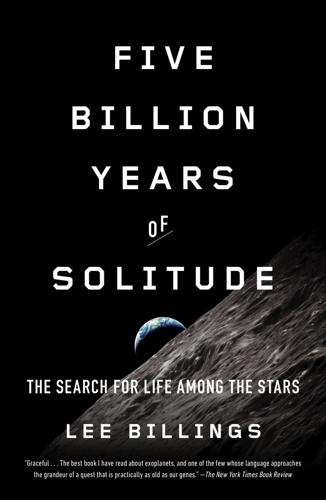
Five Billion Years of Solitude: The Search for Life Among the Stars
by
Lee Billings
Published 2 Oct 2013
The resulting arsenals of thermonuclear weapons were more than adequate to extinguish hundreds of millions of lives in a single nuclear exchange. Those who survived such a nuclear holocaust would face a severely damaged planetary biosphere and a world plunged into a new Dark Age. Less than a year after the Green Bank proceedings, the Cuban missile crisis would bring the world to the brink of thermonuclear war, and as time marched on, more and more nations successfully weaponized the power of the atom. Humans had developed a global society, radio telescopes, and interplanetary rockets at roughly the same time as weapons of mass destruction.
…
acid runoff, 173, 175 Alienopoly, 260 Allegheny Plateau, 124–28 Allen, Paul, 12 Allen Telescope Array (ATA), 12–14, 41, 42 Alpha Centauri, 36, 52, 73, 232, 234 search for planet near, 94–98 simulations of planetary assembly in, 96, 97 American Astronomical Society, 194 Americas, 21–22 anaerobes, 129, 140, 142, 143, 169 Anaximander, 78 Anderson, Eric, 258 Andromeda Galaxy, 31, 191, 238 Anglada-Escudé, Guillem, 64–69 anthracite coal, 125, 131, 134, 136, 137, 144, 160, 184 Anthropocene era, 135–37, 145, 146 anti-gravity devices, 100 Apollo program, 1, 50, 151, 187, 202, 212, 239 Archean Eon, 139–40, 141, 169, 171, 184, 200 Arecibo Observatory, 39–42 Ares V, 203 Aristarchus, 79–81, 86 Aristotle, 78–79, 82 Arthur, Janice, 121–23 Arthur, Mike, 121–24, 127–30, 136–38 Asimov, Isaac, 152 asteroids, 3, 19, 76, 110, 140, 154, 258 Earth struck by, 30 astrobiology, 15, 153, 169, 231 astronomy, 4, 33, 48, 111, 190 Copernican Principle (principle of mediocrity) in, 83, 89, 91 golden age of, 192 modern, beginning of, 82 see also cosmology Astrophysical Journal Letters, 67 Atchley, Dana, 15 Atlantis, 185–87 ATLAST (Advanced Technology Large-Aperture Space Telescope), 198, 203, 230 atomic weapons, 23–24 atoms, 43, 79–81, 248 Automated Planet Finder (APF), 61, 70, 114 Bahcall, John, 249, 251 Bains, William, 261 Barnard’s Star, 52 Baum, Frank, 11 Beichman, Charles, 221–22 Berner, Robert, 178 Big Bang, 89–91 biosignatures, 167–72, 261–62 black holes, 88–89, 191, 206 black shales, 123–26, 135, 137–38, 141 in Marcellus formation, 126–30, 137, 138, 141, 144, 160 Bode, Johann, 109 Bode’s law, 109–10 BoingBoing.net, 74 Bonfils, Xavier, 66–69 Bradbury, Ray, 98–99 Bryson, Bill, 144 Bush, George W., 196, 198, 215, 221–23 Butler, Paul, 55, 58–70, 96, 114 Caldeira, Ken, 181 California, 105–7, 112–13 gold rush in, 105–6, 111, 112–13 Calvin, Melvin, 15, 19–20, 25 Cambrian Period, 138–39, 143–45, 182 Cameron, James, 258 Campbell, Joseph, 261 Canada, 244–48 Canadian Shield, 246 Capella, 239 carbon, 123, 131, 132, 134, 135, 140, 141, 175, 179, 182 carbonate-silicate cycle, 175–81, 184 carbon cycle, organic, 175 carbon dioxide (CO2), 124, 132, 134–37, 140, 141, 157, 159–62, 168, 170, 172, 173, 175–82, 184 Carboniferous Period, 131, 132 Carina Nebula, 238 Carnegie Institution, 251 Carpenter, Scott, 100 Carter, Jimmy, 240 Cash, Webster, 219–20 Cerro Tololo Inter-American Observatory, 96 Challenger, 3, 188–89 Chandra X-Ray Observatory, 192, 209 Chaotian Eon, 139 Charbonneau, David, 228–30, 232 charged-coupled devices (CCDs), 51–53 China, 21–22 chlorofluorocarbons, 134, 142 chlorophyll, 141, 143 Christmas Tree Cluster, 238 Clinton, Bill, 196, 215 clouds, 161–62, 164, 206 coal, 125, 131, 134, 136, 137, 144, 160, 184 Columbia, 189, 196 comets, 2, 3, 19, 76–77, 140 Halley’s, 3 Compton Gamma Ray Observatory, 192, 209 computers, 43–44 Constellation program, 196, 198, 203, 204, 215, 221, 223 convergent evolution, 21 Cook, James, 85–86 Copernican Principle (principle of mediocrity), 83, 89, 91 Copernicus, Nicolaus, 81–83, 86, 87, 89, 91, 200 Cornell University, 39, 42 coronagraphic TPF, 217–22, 224, 231, 249 coronagraphs, 217 cosmology, 77–82 Copernican Principle (principle of mediocrity) in, 83, 89, 91 inflationary theory in, 89–92 modern, 86–87, 91 see also astronomy Cosmos, 240 Costanza, Robert, 74–75 Crab Nebula, 30 Crabtree, William, 84 Crutzen, Paul, 134–35 Cuban missile crisis, 23–24 cyanobacteria, 140–44, 175, 183 Daily Mail, 74 dark energy, 88, 90 dark matter, 206 Darwin, Charles, 200 Davidson, George, 113 deep time, 145–46 Democritus, 79, 80, 92, 238 Demory, Brice, 259 De Rerum Natura (On the Nature of Things) (Lucretius), 80–81 De Revolutionibus Orbium Coelestium (On the Revolutions of Heavenly Orbs) (Copernicus), 82 Devonian Period, 128, 130–32 Diamandis, Peter, 258 dinosaurs, 30, 136, 144 Discovery, 189 DNA, 40, 141, 143, 170 dolphins, 16, 20–21 Drake, Frank, 9–17, 27–45, 101, 167–68, 240 Arecibo transmission of, 39–41 orchids of, 37–38 Drake equation, 16–25, 28–29, 38–39, 41, 42, 183 longevity of technological civilizations (L term) in, 22–25, 38–39, 41, 42 Draper Laboratory, 256 Dyson, Freeman, 104 Dyson spheres, 104, 105 Earth, 109 asteroid strike on, 30 atmosphere of, 3, 132, 134–35, 139, 140, 144, 157–60, 168–69, 174–77, 206, 238 “Blue Marble” images of, 212, 239–41 carbonate-silicate cycle on, 175–81, 184 climate of, 123–24, 128, 132–37, 142, 144, 156–57, 160–62, 173–75, 184 in early cosmology, 77–82 energy consumption on, 103–4 extinctions on, 43, 135, 184 faint young Sun problem and, 173–75 formation of, 2, 7, 20, 139, 173 geologic time periods of, 128–45 glaciation on, 132–34, 142, 174, 176, 178, 179, 183 human population of, 43, 100, 134, 136 ice caps of, 128, 132–33, 135, 136, 184 Laughlin’s idea for moving orbit of, 76–77 Laughlin’s valuation of, 73–76 oxygen on, 139–44, 159, 171, 180–82, 200, 238 Snowball Earth events, 142, 174, 179 Sun’s distance from, 83, 86 tectonic plates of, 30, 105, 111, 128, 140, 144, 176, 229 union of organisms with geophysical systems on (Gaia hypothesis), 175, 176, 178, 183 water on, 3, 30, 158–61, 174, 177–80, 182 Earth, life on, 31, 154 diversification and explosion of, 138–39, 143, 144, 182 emergence of, 4, 7, 19–20, 238 end of, 7–8, 31–32, 75–77, 159, 180–83 essential facts of, 29–30 humanity’s ascent, 144–46 intelligent, 20–21, 182–83 jump from single-celled to multicellular, 28 redox reactions and, 168 Earth-like planets, 29, 32–34, 71–72, 99, 227–28 Earth-size or Earth-mass planets, 6, 53–54, 56, 200, 227, 251 ecology and economics, 74 economic growth, 102, 103 Eddington, Arthur, 35 Edison, Thomas, 106 Einstein, Albert, 35, 87 Elachi, Charles, 211–12, 214, 221 electricity, 103, 136 Emerson, Ralph Waldo, 254 Endeavour, 190 endosymbiosis, 143 energy, 103–4, 136–38 from fossil fuels, 103, 124–27, 137, 154, 160, 184 Engelder, Terry, 126 Epicurus, 80 Epsilon Eridani, 10–11 Eshleman, Von, 35 ethanol, 137 eukaryotes, 143, 144 European Southern Observatory (ESO), 60, 64, 66 European Space Agency, 222 evolution, 183 convergent, 21 of universe, 88–89 exoplanetology, 13, 14, 34, 51, 193 exoplanets, 5, 27–28, 87, 222–23, 263 51 Pegasi b, 50, 53, 54, 58–59 Alpha Centauri Bb, 98–99 biosignatures and, 167–72, 261–62 Blue Marble images of, 212–15 distinguishing between various compositions of, 251 Earth-like, 29, 32–34, 71–72, 99, 227–28 Earth-size or Earth-mass, 6, 53–54, 56, 200, 227, 251 formation of, 109 GJ 667Cc, 65–69, 72 Gliese 581c, 163 Gliese 581d, 163 Gliese 581g (Zarmina’s World), 63–64, 68, 69, 72, 163 Gliese 876b, 60 habitability of, 154–83 HD 85512b, 163–64 Jupiter-like, 13, 28, 50, 56, 59, 60, 108, 109, 226, 228, 248–49 Laughlin’s valuation of, 71–77 migration theory and, 108 Neptune-like, 56, 108–9, 251 “Next 40 Years” conference on, 225–35, 263 observation of stars of, 33 snow line idea and, 110 super-Earths, 228–29, 251, 262 transits of, 53 TrES-4, 228 exoplanet searches, 5–7, 13–14, 32–33, 69–70 and false-alarm discoveries, 52–53 press releases on progress in, 163–65 SETI and, see SETI spectroscopy in, see spectroscopy, spectrometers see also telescopes Ferguson, Chris, 185–86 financial markets, 111–12 Fischer, Debra, 59, 61, 62, 69, 96 Ford, Eric, 249–50 Ford, Henry, 125 fossil fuels, 103, 124–27, 137, 154, 160, 184 fracking (hydraulic fracturing), 126–27 Gaia hypothesis, 175, 176, 178, 183 galactic planetary census, 54 galaxies, 87, 88, 99, 238 Andromeda, 31, 191, 238 Hubble Telescope and, 191 Local Group of, 88 Milky Way, see Milky Way Galileo, 241–42 Galileo Galilei, 81–83, 210 Galliher, Scot, 257 Garrels, Robert, 178 gas, natural, 125–27, 137, 184 Gemini telescopes, 199–200, 203 General Dynamics Astronautics time capsule, 100–103 geologic time periods, 128–45 geology, 110–11, 123 glaciers, 132–34, 142, 174, 176, 178, 179, 183 Glenn, John, 100 Goldin, Dan, 194, 211, 215, 242 governments, Urey on, 102 gravitational lenses, 35–37 Great Observatories, 192, 197, 209 Greece, ancient, 77, 92, 238 Green Bank conference, 15–25, 27–28, 101, 167–68, 240 greenhouse gases, 124, 134, 137, 157, 160, 174, 175 carbon dioxide, see carbon dioxide methane, 140, 142, 168–71, 174, 200 Grunsfeld, John, 197–99, 225–26, 235 Guedes, Javiera, 96 Gund Institute for Ecological Economics, 74–75 “Habitable Zones around Main Sequence Stars” (Kasting), 155–56, 159 Hadean Eon, 139–40, 156 Halley, Edmond, 84 Halley’s comet, 3 Hart, Michael, 174, 178 Hays, Paul, 176–79 heliocentrism, 79–82 Hiroshima, 23 Holmes, Dyer Brainerd, 100–101 Holocene Epoch, 133–35, 145 Horrocks, Jeremiah, 84 Howard, Andrew, 62 How to Find a Habitable Planet (Kasting), 167 Hu, Renyu, 259 Huang, Su-Shu, 15, 19 Hubble, Edwin, 86–87 Hubble Space Telescope, 189–93, 195, 197–99, 205–7, 209, 218–19, 226 human genome project, 234 hydraulic fracturing (fracking), 126–27 hydrogen, 159, 170–72 Icarus, 155 ice ages, 132, 133, 142–43 Industrial Revolution, 22, 134 inflationary theory, 89–92 Ingersoll, Andrew, 159 intelligence, 20–21, 23, 32, 182–83 interferometry, 213–14, 216, 231 International Space Station (ISS), 187, 189, 197, 202, 207–8, 210 interstellar travel, 44–45, 100–101 iron, 141 James Webb Space Telescope (JWST), 193–99, 202–4, 209, 215, 216, 218, 220, 225, 262 Jensen-Clem, Becky, 259 Jet Propulsion Laboratory (JPL), 211–12, 216, 219, 221–25, 231 Johnson, Lyndon B., 101 Journal of Geophysical Research, 178 Jupiter, 76, 109, 191, 239 Galileo’s study of, 81 Kepler’s laws and, 83 moons of, 28, 110 Jupiter-like planets, 13, 28, 50, 56, 59, 60, 108, 109, 226, 228, 248–49 Kasdin, Jeremy, 219–20 Kasting, Jerry, 150–52 Kasting, Jim, 150–67, 169–84 children of, 153 Kasting, Sandy, 150 Kasting, Sharon, 153 Keck Observatory, 59, 60, 62, 66, 118 Kennedy, John F., 224 Kennedy Space Center, 185 Kepler, Johannes, 82, 83 planetary motion laws of, 82–84 Kepler field stars, 41 Kepler Space Telescope, 13–14, 53–54, 56, 62, 71–73, 98, 108–9, 166, 201, 225, 229–30, 263 Kirschvink, Joseph, 142 Knapp, Mary, 259 Korolev, Sergei, 186 Kuchner, Marc, 217–18 Kuiper Belt, 76 Large Magellanic Cloud, 238 Lasaga, Antonio, 178 Late Heavy Bombardment, 3, 140 Laughlin, Greg, 5–6, 48–50, 53–57, 69–70, 93–100, 107–12, 114–15, 117–20 Alpha Centauri planet search and, 94–98 idea to move Earth, 76–77 magnetic toy of, 93–94 SETI as viewed by, 99 valuation equation of, 71–77 laws of nature, 155–56 Lederberg, Joshua, 15, 16, 167–68 Le Gentil, Guillaume, 85, 117 Leinbach, Mike, 185–86 Lick, James, 112–14 Lick Observatory, 58, 61, 62, 70, 113–19 life, 32 on Earth, see Earth, life on intelligent, 23, 32 single-celled, 20 technological, see technological civilizations light: photons of, 72, 89, 115–16, 156, 191, 193–94, 201, 202, 213, 216, 237–38 polarization of, 115–16 waves of, 213–14, 216 Lilly, John, 15–16, 20–21 Local Group, 88 Lovelock, James, 168, 170, 174–76, 178, 181–83 Lucretius, 80–81 Lyot, Bernard, 217 Madwoman of Chaillot, The, 36 Manhattan Project, 23 Marcellus Center for Outreach and Research, 127, 149 Marcellus formation, 126–30, 137, 138, 141, 144, 160 Marconi, Guglielmo, 48 Marconi Conference Center, 48–50, 53–57 Marcy, Geoff, 57–63, 69, 70, 114, 194, 230–32, 235 Margulis, Lynn, 175 Mars, 19, 50, 87, 100, 107, 109, 155, 167, 179, 191, 192, 239 Kepler’s study of, 82, 83 missions to, 187, 188, 196, 207, 221 water on, 28, 179 Marshall, James, 105–6, 112 Martian Chronicles, The (Bradbury), 98–99 Massachusetts Institute of Technology (MIT), 251–52, 259 ExoplanetSat project, 256–57 “Next 40 Years of Exoplanets” conference at, 225–35, 263 Mayor, Michel, 58 McPhee, John, 145 mEarth Project, 228–29 mediocrity, principle of (Copernican Principle), 83, 89, 91 Mercury, 82, 109, 239 meteorites, 20 methane, 140, 142, 168–71, 174, 200 methanogens, 140, 142, 169 microbes, 28 Miletus, 77 Milky Way, 16–17, 25, 31, 39, 41, 79, 86–87, 191, 237, 238 Sun’s orbit in, 95 Miller, George P., 101 Miller, Stanley, 19 Miller Institute for Basic Research in Science, 48, 74 mitochondria, 143 Moon, 3, 76, 100, 229, 242 in early cosmology, 78, 83 formation of, 30, 139 Moon, missions to, 188, 196, 221, 224 Apollo, 1, 50, 151, 187, 202, 212, 239 Morrison, Philip, 15, 18–19, 21, 23–24 Mosely, T.

Beyond: Our Future in Space
by
Chris Impey
Published 12 Apr 2015
Gemini spacecraft carried two astronauts and the missions tested docking technology, practiced working outside a spacecraft, and orbited long enough to mimic a trip to the Moon and back. All the early Apollo crews were veterans of the Mercury and Gemini programs. America was hopeful that the two superpowers might collaborate rather than duplicate the vast effort required for a race to the Moon. After stepping back from the brink following the Cuban missile crisis, Kennedy and Soviet Premier Nikita Khrushchev had developed a mutual understanding. In 1963, in a speech to the United Nations General Assembly, Kennedy proposed a joint space effort. Khrushchev initially rejected the overture but was poised to accept it when Kennedy was assassinated in November 1963.
…
Frank, 188 behavioral b’s, 15 Bell X-1, 71 Bell, Alexander Graham, 78 Bell Labs, 153 Benford, Gregory, 223–24 Benford, James, 223–24 Bennett, Charles, 230 Bering Strait, land bridge across, 8, 120, 218 Berlin Rocket Society, 32 Berlin Wall, 41 Berners-Lee, Tim, 78–79 Bernoulli, Daniel, 68 Berserker series (Saberhagen), 177, 259 Bezos, Jeff, 103 Bible, 148–49 big bang theory, 131, 255 “Big Ear” telescope, 237 Bigelow, Robert, 102–3 binary stars, 126 biohackers (grinders), 207 biomarkers, 216–18 Biosphere 2 experiment, 192–97, 193, 285–86 black projects, 69–70, 72, 144 Blade Runner, 204, 208, 259 Blue Origin, 103 Boeing X-37, 72, 85 Bohr, Niels, 213, 288 Bostrom, Nick, 207, 245–47, 260–61 Bounty, HMS, 202 Bradbury, Ray, 164 brains: computer interfaces with, 205–7 human, 12–17, 203, 283 of orcas, 190 radiation damage to, 115 simulation of, 259–61 “brain in a vat” concept, 260 Branson, Holly and Sam, 89 Branson, Richard Charles Nicholas, 80, 86–89, 95, 97–98, 101–2, 106 Breakthrough Propulsion Physics, 290 Brezhnev, Leonid, 42 Brightman, Sarah, 102 Brin, Sergey, 275 British Airways, 87 British Interplanetary Society, 221 Brokaw, Tom, 74 Brother Assassin (Saberhagen), 177 Bryan, Richard, 238 buckyballs, 151, 231 Buddhism, 20, 267 Bulletin of the Atomic Scientists, 197 Buran, 72 Burnett, Mark, 75 Burroughs, Edgar Rice, 164 Burrows, William, 35–36 Bush, George W., administration of, 93 Bussard, Robert, 222 butterfly effect, 195 By Rocket into Interplanetary Space (Oberth), 31 California, population dispersion into, 8 California, University of: at Irvine, 112, 223 at Los Angeles, 78 Calvin, William, 15 camera technology, 53, 176–77, 205 Cameron, James, 92, 120, 176 Canada, 142 canals, on Mars, 163 canards, 82–83 cancer, 180 cannonball, Newton’s experiment with, 25, 267 cannons: acceleration force of, 26 smooth-bore, 24 carbon, 172 in nanotechnology, 151–52, 182 as requirement for life, 123–24, 256 carbon dioxide, 132, 171, 172–73, 182, 193–94, 196, 218, 278 carbon nanotubes, 151–52 carbyne, 152 Cassini spacecraft, 52–53, 125, 182 Castro, Fidel, 41 casualties, early Chinese, 22 cataracts, 115 cats, 48–49, 251 causality principle, 230–31 cave paintings, 15 celestial property rights, 145–47 Center for Strategic and International Studies (CSIS), 158 centrifuges, 114 Cerf, Vinton, 67 Chaffee, Roger, 43 Challenger, explosion of, 55–56, 56, 74, 107, 271 Chang’e 3 lunar probe, 143, 162 chemical fuels, 219–21, 220 chickens, research using, 26 chimpanzees, 14 genetic diversity of humans vs., 202 China: as averse to innovation, 109 in early attempts at space travel, 21–22, 22, 68, 139, 141 population dispersion into, 7 revolution in, 141 rocket development in, 23–24, 113 space program of, 139–44, 140, 161, 162, 195, 276 US relations with, 144 Christian, Fletcher, 202 Christianity, 20 Chuansheng Chen, 11 civilization: Type I, 253, 254, 257 Type II, 253–54, 254, 257 Type III, 253, 254, 257 Type IV, 253, 254, 255 Clarke, Arthur C., 149–50, 164, 185, 201, 252 climate change, 197–98, 286 Clinton, Bill, 154 cloning, 251 Clynes, Manfred, 205 Cocconi, Giuseppe, 187 Colbert, Stephen, 74, 117 Cold War, 35–39, 41–43, 50, 55, 73, 76, 139, 145, 197 Columbia, disintegration of, 55, 56, 107 Columbia Accident Investigation Board Report, 107 Columbus, Christopher, 243 comets, 183 Commercial Orbital Transportation Services (COTS), 275 Committee on the Peaceful Uses of Outer Space, 145 communication: with alien species, 52, 189, 234–35, 238, 239, 246, 253, 255, 259 by digital data transmission, 66–67, 77–80 latency and, 178 space technology in, 153–54 Compaq, 95 computation, future technology of, 258–62 confinement, psychological impact of, 169–70 Congress, US: legislation in, 78, 144 on space programs, 38, 41, 75, 156, 158 consciousness, simulation of, 259–61 conservation biology, 201 conspiracy theories, 238, 240 Constellation program, 104 Contact (film), 236–37, 242 Contact (Sagan), 236 contraception, 200 Copernicus, 19, 20, 127 Coriolis force, Coriolis effect, 152 cosmic rays, 115, 160, 160, 164, 167, 168, 204 cosmism, 27 cosmonauts, 141 disasters of, 108 records set by, 115 selection criteria for, 74 Cosmos 1, 184 cosmos, cosmology, ancient concepts of, 17–20 Cosmos Studios, 184 Cosmotheoros (Huygens), 163 counterfactual thinking, 14 Cronkite, Walter, 74 cryogenic suspension, 250–51 cryptobiosis, 123 cryptography, 231, 291 Cuban missile crisis, 41–42 CubeSat, 184–85 Cultural Revolution, Chinese, 141–42 Curiosity rover, 165, 167, 176, 181 cybernetics, 206–7 Cyborg Foundation, 288 cyborgs (cybernetic organisms), 204–8, 288 Cygnus capsule, 100 cytosine, 6 dark energy, 256 d’Arlandes, Marquis, 68 DARPANET, 78 Darwin, Charles, 265 “Darwin” (machine), 227 Death Valley, 118–19 deceleration, 222, 223 DeepSea Challenger sub, 120 deep space, 126–29 Defense Advanced Research Projects Agency (DARPA), 78, 224 Defense Department, US, 38, 78, 90, 153 De Garis, Hugo, 258 Delta rockets, 72, 113 Delta-V, 111 Democritus, 19 Destination Mir (reality show), 75 Diamandis, Peter, 90–94, 97–98, 147, 156 diamonds, 131, 231 Dick, Philip K., 204–5 Digital Equipment Corporation, 213 DNA, 6–7, 9, 19, 189, 202, 228, 251, 263, 265, 266 Do Androids Dream of Electric Sheep (Dick), 205 dogs: brains of, 13 in scientific research, 251 in space travel, 40, 47 Dolly (sheep), 251 Doomsday Clock, 197–98, 246, 286 dopamine, 10, 98 Doppler method, exoplanet detection and characterization by, 127, 128, 129, 130, 133, 215 Doppler shift, 127 Dora-Mittelbau concentration camp, 33 Downey, Robert, Jr., 95 drag, in flight, 68, 83, 223 Drake, Frank, 187–88, 235, 237 Drake equation, 188, 189, 233–35, 237, 241, 243, 244, 253, 291–92 DRD4 alleles, 7R mutation in, 10–12, 11, 15, 98 Drexler, Eric, 226 drones, 180–81 Druyan, Ann, 184 Duke, Charles, 45 Dunn, Tony, 225 Dyson, Freeman, 226–27, 253 Dyson sphere, 253–54, 254 Earth: atmosphere of, 8, 70–71, 70 early impacts on, 50, 172 geological evolution of, 172 as one of many worlds, 17–20 planets similar to, 122, 124–26, 129–33, 224, 235 projected demise of, 197–98 as round, 19 as suited for human habitation, 118–22, 121, 234 as viewed from space, 45, 53, 121, 185, 270 Earth Return Vehicle, 169 “Earthrise” (Anders), 270 Earth similarity index, 215–16 eBay, 79, 95 Economist, The, 105 ecosystem, sealed and self-contained, 192–97, 193, 285 Eiffel Tower, 27, 149 Einstein, Albert, 220, 228, 256 Eisenhower, Dwight D., 36–39, 73, 79 electric cars, 96 electric solar sails, 186 electromagnetic waves, 186 e-mail, 78 embryo transport, 251 Enceladus, 177, 182, 227 potential habitability of, 125, 278 Encyclopædia Britannica, 95, 283 Endangered Species Act (1973), 201 energy: aliens’ use of, 190 civilizations characterized by use of, 252–57, 254, 258 dark, 256 declining growth in world consumption of, 257 Einstein’s equation for, 220 production and efficiency of, 219–24, 220 as requirement for life, 123–24 in rocket equation, 110 Engines of Creation (Drexler), 226 environmental disasters, 245 environmental protection: as applied to space, 147 movement for, 45, 235, 263, 270 Epicureans, 18 Epsilon Eridani, 187 Eratosthenes, 19 ethane, 52, 125 Ethernet, 213 eukaryotes, 172 Euripides, 18 Europa, 52, 97–98 potential habitability of, 125, 125, 161, 278 Europa Clipper mission, 98 Europe: economic depression in, 28 population dispersion into, 7–8, 11, 15 roots of technological development in, 23–24 European Southern Observatory, 133 European Space Agency, 159, 178–79 European Union, bureaucracy of, 106 Eustace, Alan, 120, 272 Evenki people, 119–20 Everest, Mount, 120 evolution: genetic variation in, 6, 203, 265 geological, 172 of human beings, 16–17 off-Earth, 203–4 evolutionary divergence, 201–4 exoplanets: Earth-like, 129–33, 215–18 extreme, 131–32 formation of, 215, 216 incidence and detection of, 126–33, 128, 233 exploration: as basic urge of human nature, 7–12, 109, 218, 261–63 imagination and, 262–63 explorer gene, 86 Explorer I, 38 explosives, early Chinese, 21–23 extinction, 201–2 extraterrestrials, see aliens, extraterrestrial extra-vehicular activities, 179 extremophiles, 122–23 eyeborg, 205–6 Falcon Heavy rocket, 114 Falcon rockets, 96, 97, 101, 184 Federal Aviation Administration (FAA), 82, 93, 105–7, 154 Fédération Aéronautique Internationale, 272 Felix and Félicette (cats), 48–49 Fermi, Enrico, 239–41 Fermilab, 254 “Fermi question,” 240–41, 243 Feynman, Richard, 179–80, 230, 270, 280 F4 Phantom jet fighter, 82 51 Peg (star), 126, 133 55 Cancri (star), 131 F-117 Nighthawk, 69 fine-tuning, 256, 294 fire arrows, 23, 68 fireworks, 21–24, 31 flagella, 180 flight: first human, 68 first powered, 69 principles of, 67–73 stability in, 82–83 “Fly Me to the Moon,” 45 food: energy produced by, 219, 220 in sealed ecosystem, 194–95 for space travel, 115–16, 159, 170 Forward, Robert, 223 Foundation series (Asimov), 94 founder effect, 202–3 Fountains of Paradise, The (Clarke), 149 France, 48, 68, 90 Frankenstein monster, 206, 259 Fresnel lens, 223 From Earth to the Moon (Verne), 183 fuel-to-payload ratio, see rocket equation Fukuyama, Francis, 207 Fuller, Buckminster, 151, 192 fullerenes, 151 Futron corporation, 155 Future of Humanity Institute, 245 “futurology,” 248–52, 249 Fyodorov, Nikolai, 26, 27 Gagarin, Yuri, 40–41, 41, 66, 269 Gaia hypothesis, 286 galaxies: incidence and detection of, 235 number of, 255 see also Milky Way galaxy Galileo, 49–50, 183, 270 Gandhi, Mahatma, 147 Garn, Jake, 114 Garn scale, 114 Garriott, Richard, 92 gas-giant planets, 125, 126–29 Gauss, Karl Friedrich, 238 Gazenko, Oleg, 47 Gemini program, 42 Genesis, Book of, 148–49 genetic anthropology, 6 genetic code, 5–7, 123 genetic diversity, 201–3 genetic drift, 203 genetic engineering, 245, 249 genetic markers, 6–7 genetics, human, 6–7, 9–12, 120, 201–4 Genographic Project, 7, 265 genome sequencing, 93, 202, 292 genotype, 6 “adventure,” 11–12, 98 geocentrism, 17, 19–20, 49 geodesic domes, 192 geological evolution, 172 George III, king of England, 147 German Aerospace Center, 178 Germany, Germans, 202, 238 rocket development by, 28, 30–34, 141 in World War II, 30–35 g-forces, 46–49, 48, 89, 111, 114 GJ 504b (exoplanet), 131 GJ 1214b (exoplanet), 132 glaciation, 172 Glenn Research Center, 219 global communications industry, 153–54 Global Positioning System (GPS), 144, 153–54 God, human beings in special relationship with, 20 Goddard, Robert, 28–32, 29, 36, 76, 78, 81–82, 94, 268 Goddard Space Flight Center, 178 gods, 20 divine intervention of, 18 Golden Fleece awards, 238 Goldilocks zone, 122, 126, 131 Gonzalez, Antonin, 215 Goodall, Jane, 14 Google, 80, 92, 185, 272, 275 Lunar X Prize, 161 Gopnik, Alison, 10, 13 Grasshopper, 101 gravity: centrifugal force in, 26, 114, 150 in flight, 68 of Mars, 181, 203 Newton’s theory of, 25, 267 and orbits, 25, 114–15, 127, 128, 149–50, 267 in rocket equation, 110 of Sun, 183 waves, 255 see also g-forces; zero gravity Gravity, 176 gravity, Earth’s: first object to leave, 40, 51 human beings who left, 45 as obstacle for space travel, 21, 105, 148 as perfect for human beings, 118 simulation of, 168–69 Great Art of Artillery, The (Siemienowicz), 267 Great Britain, 86, 106, 206, 227 “Great Filter,” 244–47 Great Leap Forward, 15–16 “Great Silence, The,” of SETI, 236–39, 240–41, 243–44 Greece, ancient, 17–19, 163 greenhouse effect, 171, 173 greenhouse gasses, 132, 278 Griffin, Michael, 57, 147, 285–86 grinders (biohackers), 207 Grissom, Gus, 43 guanine, 6 Guggenheim, Daniel, 81, 268 Guggenheim, Harry, 81 Guggenheim Foundation, 30, 81–82, 268 gunpowder, 21–24, 267 Guth, Alan, 257 habitable zone, 122, 124–26, 130–31, 132, 188, 241, 246, 277–78, 286, 291 defined, 124 Hadfield, Chris, 142 hair, Aboriginal, 8 “Halfway to Pluto” (Pettit), 273 Hanson, Robin, 247 haptic technology, 178 Harbisson, Neil, 205, 288 Harvard Medical School, 90 Hawking, Stephen, 88, 93, 198, 259 HD 10180 (star), 127 Heinlein, Robert, 177 Heisenberg compensator, 229 Heisenberg’s uncertainty principle, 229–30 heliocentrism, 19 helium, 68 helium 3, 161–62 Herschel, William, 163 Higgs particle, 256 High Frontier, 146–47 Hilton, Paris, 88, 101–2 Hilton hotels, 145 Hinduism, 20 Hiroshima, 222 Hitler, Adolf, 32, 34 Hope, Dennis M., 145, 147 Horowitz, Paul, 237–38 hot Jupiters, 127–28, 130 Hubble Space Telescope, 56–57, 65, 218, 225 Huffington, Arianna, 92 human beings: as adaptable to challenging environments, 118–22 as alien simulations, 260–61, 260 creative spirit of, 73, 248 early global migration of, 5–12, 9, 11, 15, 19, 118, 120, 186, 202, 218, 262, 265 Earth as perfectly suited for, 118–22, 121 exploration intrinsic to nature of, 7–12, 109, 218, 261–63 first appearance of, 5, 15, 172, 234 impact of evolutionary divergence on, 201–4 as isolated species, 241–42 as lone intelligent life, 241, 243 merger of machines and, see cyborgs minimal viable population in, 201–2, 251 off-Earth, 203–4, 215, 250–52 requirements of habitability for, 122, 124–26, 129, 130–31 sense of self of, 232, 261 space as inhospitable to, 53–54, 114–17, 121, 123 space exploration by robots vs., 53–57, 66, 98, 133, 161, 177–79, 179, 208, 224–28 space travel as profound and sublime experience for, 45, 53, 117, 122 speculation on future of, 93, 94, 204, 207–8, 215, 244–47, 248–63, 249 surpassed by technology, 258–59 threats to survival of, 94, 207–8, 244–47, 250, 259–62, 286, 293 timeline for past and future of, 248–50, 249 transforming moment for, 258–59 Huntsville, Ala., US Space and Rocket Center in, 48 Huygens, Christiaan, 163 Huygens probe, 53 hybrid cars, 96 hydrogen, 110, 156, 159, 161, 187, 219, 222 hydrogen bomb, 36 hydrosphere, 173 hyperloop aviation concept, 95 hypothermia, 251 hypothetical scenarios, 15–16 IBM, 213 Icarus Interstellar, 224 ice: on Europa, 125 on Mars, 163–65, 227 on Moon, 159–60 ice ages, 7–8 ice-penetrating robot, 98 IKAROS spacecraft, 184 imagination, 10, 14, 20 exploration and, 261–63 immortality, 259 implants, 206–7 inbreeding, 201–3 India, 159, 161 inflatable modules, 101–2 inflation theory, 255–57, 255 information, processing and storage of, 257–60 infrared telescopes, 190 Inspiration Mars, 170–71 Institute for Advanced Concepts, 280 insurance, for space travel, 106–7 International Academy of Astronautics, 152 International Geophysical Year (1957–1958), 37 International Institute of Air and Space Law, 199 International MicroSpace, 90 International Scientific Lunar Observatory, 157 International Space Station, 55, 64–65, 64, 71, 75, 91, 96, 100, 102, 142, 143, 144, 151, 153, 154, 159, 178–79, 179, 185, 272, 275 living conditions on, 116–17 as staging point, 148 supply runs to, 100–101, 104 International Space University, 90 International Traffic in Arms Regulation (ITAR), 105–6, 144 Internet: Congressional legislation on, 78, 144 development of, 76–77, 77, 94, 95, 271 erroneous predictions about, 213–14 limitations of, 66–67 robotics and, 206 space travel compared to, 76–80, 77, 80 Internet Service Providers (ISPs), 78 interstellar travel, 215–18 energy technology for, 219–24 four approaches to, 251–52 scale model for, 219 Intrepid rovers, 165 Inuit people, 120 Io, 53, 177 property rights on, 145 “iron curtain,” 35 Iron Man, 95 isolation, psychological impact of, 169–70 Jacob’s Ladder, 149 Jade Rabbit (“Yutu”), 139, 143, 161 Japan, 161, 273 Japan Aerospace Exploration Agency (JAXA), 184 Jefferson, Thomas, 224 Jemison, Mae, 224 jet engines, 69–70 Jet Propulsion Laboratory, 141 Johnson, Lyndon, 38, 42, 45, 158, 269 Johnson Space Center, 76, 104, 179, 206, 229, 269 see also Mission Control Jones, Stephanie Tubbs, 74 Joules per kilogram (MJ/kg), 219–20, 222 Journalist in Space program, 74 “junk” DNA, 10, 266 Juno probe, 228 Jupiter, 126, 127, 177, 217, 270 distance from Earth to, 50 moons of, 97, 125, 125 probes to, 51–52, 228 as uninhabitable, 125 Justin (robot), 178 Kaku, Michio, 253 Karash, Yuri, 65 Kardashev, Nikolai, 253 Kardashev scale, 253, 254, 258 Kármán line, 70, 70, 101 Kennedy, John F., 41–43, 45 Kepler, Johannes, 183 Kepler’s law, 127 Kepler spacecraft and telescope, 128, 128, 129–31, 218, 278 Khrushchev, Nikita, 42, 47 Kickstarter, 184 Killian, James, 38 Kline, Nathan, 205 Knight, Pete, 71 Komarov, Vladimir, 43, 108 Korean War, 141 Korolev, Sergei, 35, 37 Kraft, Norbert, 200 Krikalev, Sergei, 115 Kunza language, 119 Kurzweil, Ray, 94, 207, 259 Laika (dog), 47, 65, 269 Laliberté, Guy, 75 landings, challenges of, 51, 84–85, 170 Lang, Fritz, 28, 268 language: of cryptography, 291 emergence of, 15, 16 of Orcas, 190 in reasoning, 13 Lansdorp, Bas, 170–71, 198–99, 282 lasers, 223, 224, 225–26, 239 pulsed, 190, 243 last common ancestor, 6, 123, 265 Late Heavy Bombardment, 172 latency, 178 lava tubes, 160 legislation, on space, 39, 78, 90, 144, 145–47, 198–200 Le Guin, Ursula K., 236–37 Leonov, Alexey, 55 L’Garde Inc., 284 Licancabur volcano, 119 Licklider, Joseph Carl Robnett “Lick,” 76–78 life: appearance and evolution on Earth of, 172 artificial, 258 detection of, 216–18 extension of, 26, 207–8, 250–51, 259 extraterrestrial, see aliens, extraterrestrial intelligent, 190, 235, 241, 243, 258 requirements of habitability for, 122–26, 125, 129, 131–33, 241, 256–57 lifetime factor (L), 234–335 lift, in flight, 68–70, 83 lift-to-drag ratio, 83 light: from binary stars, 126 as biomarker, 217 Doppler shift of, 127 momentum and energy from, 183 speed of, 178, 228–29, 250, 251 waves, 66 Lindbergh, Charles, 30, 81–82, 90–91, 268 “living off the land,” 166, 200 logic, 14, 18 Long March, 141 Long March rockets, 113, 142, 143 Long Now Foundation, 293 Los Alamos, N.
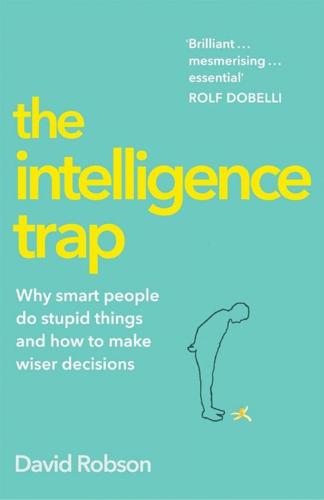
The Intelligence Trap: Revolutionise Your Thinking and Make Wiser Decisions
by
David Robson
Published 7 Mar 2019
And the idea does find further support in an examination of the US’s most important political crises in the last 100 years, including John F. Kennedy’s handling of the Cuban missile crisis, and Robert Nixon’s dealings with the Cambodian invasion of 1970 and the Yom Kippur War of 1973. Textual analyses of the speeches, letters and official statements made by presidents and their Secretaries of State show that the level of open-minded thinking consistently predicted the later outcome of the negotiations, with JFK scoring highly for his successful handling of the Cuban missile crisis, and Dwight Eisenhower for the way he dealt with the two Taiwan Strait conflicts between Mainland China and Taiwan in the 1950s.36 In more recent politics, the German Chancellor Angela Merkel is famous for her ‘analytical detachment’, as she famously listens to all perspectives before making a decision; one senior government official describes her as ‘the best analyst of any given situation that I could imagine’.
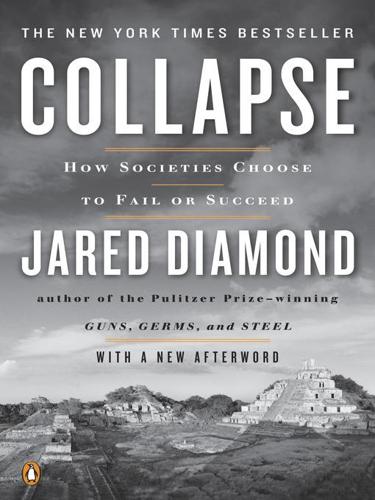
Collapse: How Societies Choose to Fail or Succeed
by
Jared Diamond
Published 2 Jan 2008
In early 1961 they fell into poor group decision-making practices that led to their disastrous decision to launch the Bay of Pigs invasion, which failed ignominiously, leading to the much more dangerous Cuban Missile Crisis. As Irving Janis pointed out in his book Groupthink, the Bay of Pigs deliberations exhibited numerous characteristics that tend to lead to bad decisions, such as a premature sense of ostensible unanimity, suppression of personal doubts and of expression of contrary views, and the group leader (Kennedy) guiding the discussion in such a way as to minimize disagreement. The subsequent Cuban Missile Crisis deliberations, again involving Kennedy and many of the same advisors, avoided those characteristics and instead proceeded along lines associated with productive decision-making, such as Kennedy ordering participants to think skeptically, allowing discussion to be freewheeling, having subgroups meet separately, and occasionally leaving the room to avoid his overly influencing the discussion himself.
…
Irving Janis, Groupthink (Boston: Houghton Mifflin, 1983, revised 2nd ed.) explores the subtle group dynamics that contributed to the success or failure of deliberations involving recent American presidents and their advisors. Janis’s case studies are of the 1961 Bay of Pigs invasion, the American army’s crossing of the 38th parallel in Korea in 1950, American’s non-preparation for Japan’s 1941 Pearl Harbor attack, America’s escalation of the Vietnam War from 1964 to 1967, the Cuban Missile Crisis of 1962, and America’s adoption of the Marshall Plan in 1947. Garrett Hardin’s classic and often-cited article “The tragedy of the commons” appeared in Science 162:1243-1248 (1968). Mancur Olson applies the metaphor of stationary bandits and roving bandits to Chinese warlords and other extractive agents in “Dictatorship, democracy, and development” (American Political Science Review 87:567-576 (1993)).
…
Tikopia and tragedy of the commons Bougainville copper mine BP (British Petroleum) Buffalo Creek, West Virginia Burundi: genocide in independence of business, see big business Cahokia, collapse of Canada: Franklin Expedition in Inuit in logging in Native Americans in settlements of Canela y Lázaro, Miguel cannibalism: of Anasazi anthropologists’ objections to of Donner Party on Easter Island in Leningrad siege on Mangareva on Pitcairn and warfare carbon isotope analyses carbon sink Carson, Rachel Catherwood, Frederick CFCs, harmful effects of Chardón, Carlos chemical industry chestnut blight Chevron Corporation Chevron Niugini Chevron Texaco Chicago Zoological Society Chile: and Easter Island fishing in mining in wine palm of wood imports from China agriculture climate change in conquering Nature in Cultural Revolution in cultural values of deforestation in development projects in economic growth of emigration from environmental problems of First World goals of food in foreign investment in geography of global connectedness of Grain-to-Green program grassland in Great Leap Forward in health problems in land ownership in map natural disasters in Olympic Games in per-capita environmental impact of political unity in population control in population of shifting environmental thinking in species diversity in top-down decision-making in trade with warlords in water diversion project in western, development of chlorofluorocarbons Christianity, exclusivity of chronic wasting disease (CWD) Churchill, Winston Clark Fork River Superfund site Clean Water Act Clearcut Controversy (Montana) climate change and forest fires in global warming in tree ring studies and water levels Club of Rome coal mining collapse: comparative method of study of complex societies in five-point framework of past vs. modern societies and power cycling use of term Colorado, mining in Colorado River, diversion of Columbus, Christopher comparative studies consumer influence Cook, Capt. James Cook, John coral reefs Cortés, Hernán Cristino, Claudio Cuba Cuban Missile Crisis Daly, Marcus dams Däniken, Erich von Davis, John decision-making, see group decision-making deforestation and agriculture in Australia in China clear-cutting comparative studies of consequences for society and drought of Easter Island and erosion exporting to other nations and extinction of forests government regulation of of Japan and leased logging rights long-term thinking in in Maya sites in Montana of New Guinea in Norse Greenland social licence to operate in in Southwestern U.S.

Global Catastrophic Risks
by
Nick Bostrom
and
Milan M. Cirkovic
Published 2 Jul 2008
He had just a few minutes to decide if he should push the button that would launch a barrage of nuclear missiles. Thankfully, he concluded that his radars were in error. The suitcase was closed. Several other incidents have been reported in which the world, allegedly, was teetering on the brink of nuclear holocaust. At one point during the Cuban missile crisis, for example, President Kennedy reportedly estimated the probability of a nuclear war between the United States and the U S S R to be 'somewhere between one out of three and even'. To reduce the risks, Cirincione argues, we must work to resolve regional conflicts, support and strengthen the Nuclear Non-proliferation Treaty - one ofthe most successful security pacts in history - and move towards the abolition of nuclear weapons.
…
To survive any appreciable time, we need to drive down each risk to nearly zero. ' Fairly good' is not good enough to last another million years. 342 Global catastrophic risks It seems like an unfair challenge. Such competence is not historically typical of human institutions, no matter how hard they try. For decades, the United States and the U S S R avoided nuclear war, but not perfectly; there were close calls, such as the Cuban Missile Crisis in 1962. If we postulate that future minds exhibit the same mixture of foolishness and wisdom, the same mixture of heroism and selfishness, as the minds we read about in history books then the game of existential risk is already over; it was lost from the beginning. We might survive for another decade, even another century, but not another million years.
…
Indian rear admiral Raja Menon put the larger point simply: "The Kargil crisis demonstrated that the subcontinental nuclear threshold probably lies territorially in the heartland of both countries, and not on the Kashmir cease-fire line'". 25 It would be reaching too far to say the Kargil was South Asia's Cuban missile crisis, but since the near-war, both nations have established hotlines and other confidence-building measures (such as notification of military exercises) , exchanged cordial visits of state leaders, and opened transportation 23 Toon, O.B., Robock, A., Turco, R.P., Bardeen, C., Oman, L., and Stenchikov, G.L. (2007).
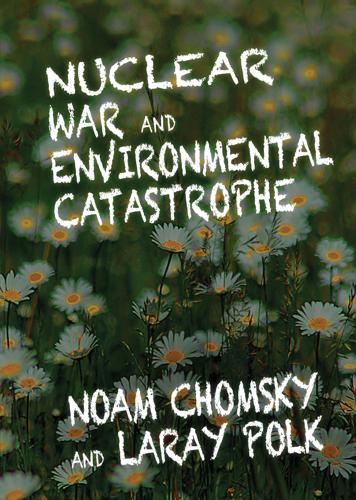
Nuclear War and Environmental Catastrophe
by
Noam Chomsky
and
Laray Polk
Published 29 Apr 2013
According to Graham Allison: “The U.S. air strike and invasion that were scheduled for the third week of the confrontation would likely have triggered a nuclear response against American ships and troops, and perhaps even Miami. The resulting war might have led to the deaths of 100 million Americans and over 100 million Russians.” “The Cuban Missile Crisis at 50: Lessons for U.S. Foreign Policy Today,” Foreign Affairs, July/August 2012. 109 National Security Archive Electronic Briefing Book No. 281, s.v. “Documents 8A-D: DEFCON 3 during the October War.” 110 The CIA speculates Soviet fears of an imminent attack may have been a response to US actions launched a few months into Reagan’s first term: air and naval probes near Soviet borders that sought vulnerabilities in early warning systems; fleet exercises in proximity to sensitive Soviet military and industrial sites and operations that simulated surprise naval attacks; radar-jamming and transmission of false radar signals; submarine and antisubmarine aircraft conducting maneuvers in areas where the Soviet Navy stationed its nuclear-powered ballistic missile submarines; and simulated bombing runs over a Soviet military installation in the Kuril Island chain.
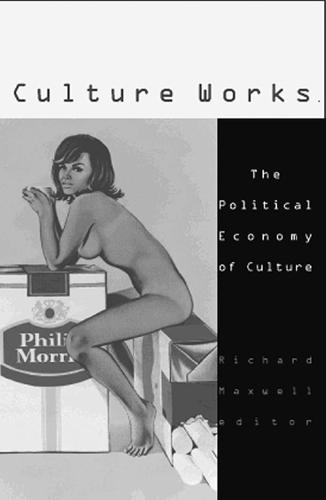
Culture works: the political economy of culture
by
Richard Maxwell
Published 15 Jan 2001
Even after Abstract Expressionism had been superseded by later movements such as pop and op art, the avant-garde and the discourse that surrounded it continued to be useful to government, corporate, and art-world institutions interested in promoting any number of freedoms, including freedom from totalitarianism, individual freedom, artistic freedom, freedom of expression, freedom of speech, freedom to consume, freedom from government regulation—even international free trade. 30 Art Corporate Patronage in the 1960s and the 11 Pop Artists Portfolios Far from subsiding, Cold War tensions escalated after the 1950s, with the need for cultural symbols of American freedom and superiority continuing to be a priority well into the 1960s and beyond. The Cuban Revolution in 1959 was soon followed by the Bay of Pigs fiasco, the construction of the Berlin Wall, the 1962 Cuban Missile Crisis, the 1964 detonation of an atom bomb in China, and the Tonkin Gulf Resolution. Along with these developments came growing anxieties within government and corporate communities about the spread of communism and about the potential loss of U.S. foreign markets and capital investments. Indeed, it is the pervasiveness of corporate ideology in the discourse of arts patronage and cultural policy during the 1960s that is so striking.
…
See also Commodification; Commoditization Commodification, 73, 148, 197, 210–18, 242 Commoditization, 113 Companhia do Pagôde, 113–14 Computers, 2, 123–25, 185, 198–207, 216–18, 243; cost of, 199; environmental costs, 202; software industry, 238 Conglomerates, 178, 181, 183, 226, 231–32 Consumer movement, 84, 90–96, 100, 187 Consumers Union, 90 Cookies, 216 Copyright term extension, 234 Corporate welfare, 171–72, 176 Corporation and the Arts, The, 33 Corporation for Public Broadcasting, 182 Crane, Philip, 46 Cuban Missile Crisis, 31 254 Cultural industries, 2, 6, 134–35, 228–31, 242–43 Cultural policy, 7–9, 16–20, 24, 28–32, 39–43, 60, 64, 118, 171–72, 175, 187–91, 218–20, 240–45 Culture: definitions, 1–4 Curtin, Michael, and Thomas Streeter, 225–49 D’Acci, Julie, 245 Dança da Garrafa, 111–13 Dança do Robó, 111 Davis, Susan G., 163–96 Debartolo Group, 178 De/Cipherin’, 17, 108–28 DeGeneres, Ellen, 232, 238 Deindustrialization, 171, 190, 235 Deja.com, 215 Democracy, 25, 27, 33, 35–38, 45, 47, 93, 98, 102, 170, 174 De Montebello, Philippe, 48 Deregulation, 141, 231 Diaper fallacy, 243 Dine, Jim, 31, 37, 39 Disney, 136, 140, 145, 181–82, 210, 212–15, 233; Club Disney, 181–82; Disney Store, 182; Disney Store Online, 212 Dissent, 28, 49, 170, 226 Diversity, 79, 175, 219, 225–28, 244 Do-it-yourself: the metaphysic of, 13–16 Dominican Republic, 176 Dondero, George A., 28 Drum talk, 121–22 East Asia, 3 Ebersol, Dick, president of NBC sports, 147; and feminization of TV sport, 147–53 Economics, neoclassical, 202 Edge, 228–31, 243 Education, 18, 23, 34, 90, 131, 202–3, 211; corporate influence, 94 Eells, Richard, 32–41 Eisner, Michael, 140 Electronics, 2, 3, 9, 14 11 Pop Artists, 31–40 El Salvador, 175 Emerson Electric Co.: interlock with Anheuser-Busch, 64 Enchantment, 2–3, 13, 15.
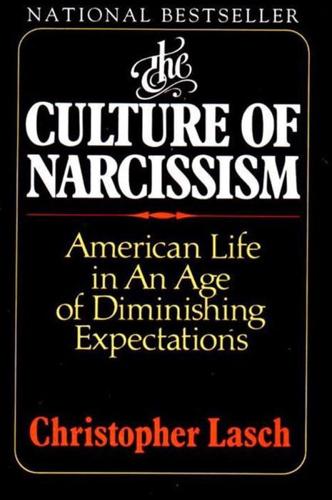
The Culture of Narcissism: American Life in an Age of Diminishing Expectations
by
Christopher Lasch
Published 1 Jan 1978
Kennedy, in his eagerness to overcome the impression of weakness left by the Bay of Pigs fiascoitself the product of a haunting fear that the Cuban revolution had undermined American prestige in Latin America-blustered against Nikita Khruschchev in Vienna proclaimed Berlin "the great testing-place of Western courage and will, and risked nuclear war over the Cuban missile crisis, even though Soviet missiles in Cuba, deliberately provocative as they were in no way altered the military balance of power. In many ways the most , " , important event of the Kennedy administration however-its high point, from which everything else was a decline-was the inaugural, a spectacle that solidified the myth of Camelot before , .
…
Heath, 1976), 7:44, p. 44. 235 awareness movement, 9, 15, 30, 99, 235; progressive critique of, 25-7 bureaucracy xv, 13-14, 32, 68, 101 2 185-6. and , Mises on common sense Bureaucracy, p. 125. . , aggression, 179: and anlagonislic cooperation, Bach, Sheldon: on changing patlems of psychic disor - der, 42 Bad Seed, The (March) 204 Balzac, de, Honorc 93 , , 118-9; in business , 119; and competition , conservalive critique of . 57 9- 232-6: and dependence 228-32: in education 142, 144. 146; and narcissism, 43-7, 61 n : and propaganda 75-7; and , . , survivalism 61-3 . 275 276 : Index Index : 277 Bush. Vannevar, 139 Crusoe, Robinson, 53 emitleinenl,221 Bun, Dorcas Susan, 104; on compeiiiion, 117 ciyonics,207 Epstein. Joseph: on sports, 102 escalation: theory and tactics of, 82 Eveigmn State College, 141 n. Ewen, Stuart: on advertising, 92 Exley, Frederick, 18.19: quoted. 21.22,140 Cuban missile crisis, 79 " Caillois, Roger: on games, 100 California Insliluie of Technology, 215 calling: Puritan doctrine of, 54-6 cultural deprivation, 142 cultural revolution, xv, 5, 114, 126, 151. 177 n.; we Calvinism:«r Puritanism aillure: and personality, 33-5,63-4 Camp Walter. 120, 121: on sports. 113 Carnegie Cotporation, 149,226 Carnegie, Dale, 59 castration: fear of, 203-5 Cat s Crad/e (Vonnegut), 20 Caweltt, John; on success myth, 58 celebrity, 59-61, 118-9; cull of, 21-2, 33 , 84, 181, 231-2: and fame, 84-6 Center for Policy Reseatch, 168 n.
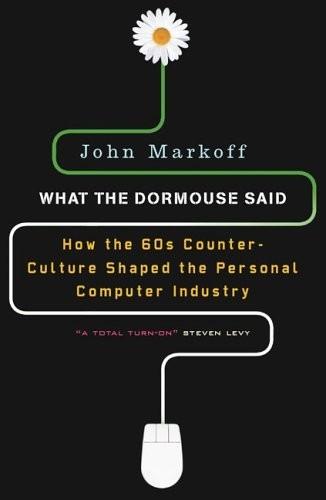
What the Dormouse Said: How the Sixties Counterculture Shaped the Personal Computer Industry
by
John Markoff
Published 1 Jan 2005
A tiny peace movement had recently sprung up on American college campuses, led by groups such as the National Committee for a SANE Nuclear Policy, Peacemakers, Turn Toward Peace, and the Student Peace Union, as well as dozens of small newsletters, magazines, and dissident journals. Moore became active in the Committee for Non-Violent Action, one of the first American peace organizations to focus on civil disobedience. In the aftermath of the Cuban missile crisis, he participated in the racially integrated Quebec-Washington-Guantánamo Walk for Peace. The walk began in 1963 in Quebec with groups from other cities expanding its numbers. In Atlanta, some of the marchers were beaten and jailed, and civil rights became a significant issue. Once again, Moore made it only as far as Florida; because of a U.S. ban on travel to Cuba, the marchers stopped in Miami.
…
Because Allison’s expertise was in radio physics, he wound up with a night job, since most of the missiles were fired at 3:00 A.M., when they were least likely to disturb civilians. For the most part, the work was highly technical and uneventful. There was, however, the evening of the third day of the Cuban missile crisis, when other military radars tracked one of the experimental launches, and planes were scrambled from a nearby air force base. The launches were temporarily put on hold. When Allison came back to the West Coast, he initially spent time working for the classified side of SRI, but soon, like many others, he became more intrigued with computing.
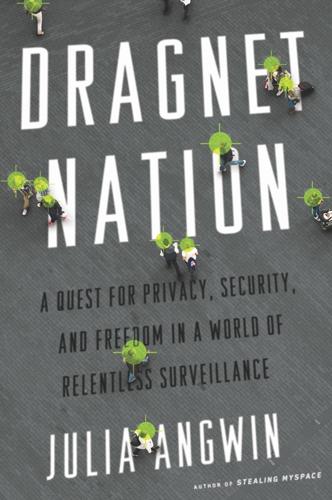
Dragnet Nation: A Quest for Privacy, Security, and Freedom in a World of Relentless Surveillance
by
Julia Angwin
Published 25 Feb 2014
the United States successfully launched photoreconnaissance: Corona Fact Sheet, National Reconnaissance Office, accessed July 19, 2013, http://www.nro.gov/history/csnr/corona/factsheet.html. The images captured by the satellite: Dwayne A. Day, “Of Myths and Missiles: The Truth About John F. Kennedy and the Missile Gap,” Space Review, January 3, 2006, http://www.thespacereview.com/article/523/1. in 1961, the Soviets had just four: John T. Correll, “Airpower and the Cuban Missile Crisis,” Air Force Magazine 88, no. 8 (August 2005), http://www.airforcemag.com/MagazineArchive/Pages/2005/August%202005/0805u2.aspx. In 1972, the United States and the Soviet Union: Treaty on the Limitation of Anti-Ballistic Missile Systems, U.S.-U.S.S.R., May 26, 1972, 23 U.S.T. 3435, https://www.fas.org/nuke/control/abmt/text/abm2.htm.
…
See also e-mail; IP address; passwords; Web browsers; websites; and specific companies, services, and software compartmentalization and encryption and malicious software and passwords and terrorism and threat models and ConvergeTrack cookies copyrights CoreLogic Council on American-Islamic Relations (CAIR) court orders court records credit cards disposable number fake identity and credit reports credit score crime Crimes Against Children Research Center criminal records CryptoParty handbook Cuban missile crisis Cukier, Kenneth culture of fear customized content Cuyahoga River cyber-espionage companies cyber-stalking Cypherpunks Cypherpunk’s Manifesto, A (Hughes) Dandia, Asad dark data cycles data auctions data audit credit scoring and data brokers and fake identity and Freestylers and government and travel and data brokers auditing your data on government and health insurers and opt-outs and regulation of data exchanges Dataium service Data Liberation Front Datalogix DataLossDB website data pollution strategy data-scoring business data storage dating profiles Davis, Ed Debt (Graeber) Defense Department DeleteMe Democratic Party Demographics Inc.

Stakeholder Capitalism: A Global Economy That Works for Progress, People and Planet
by
Klaus Schwab
Published 7 Jan 2021
It was part of the Cold War between the Soviet-led Eastern part of the world and the United States–led Western bloc. That conflict took place all over the world. A few months before the Wall was built, Cuban exiles aided by the US government attempted a coup d’état of the newly communist Cuba of Fidel Castro. The botched attempt became known as the Bay of Pigs. It led to the Cuban Missile Crisis two years later. In the months and years that followed, the Soviet Union and the United States each ramped up their stock of weapons of mass destruction and brought the world to the brink of a nuclear war. It was only narrowly avoided. Back in Berlin, the Wall's starkest division between these two worlds was in front of the Brandenburg Gate.
…
Ltd in 1998, 16 ZF (Zeppelin Foundation) presence in, 16, 18 Chinese Century of Humiliation (1840), 56 Chinese Dream (China), 184 Chinese economy African ties (2020s) with, 69–70 Belt and Road Initiative, 100 carbon neutrality goal of the, 62–63 the “China effect” of, 70–72 economic growth (2000s–present) of, 18 emerging global markets interacting with, 63–66, 70–72 energy demands, 62–63 environmental degradation and growth of the, 72 FDI investors setting up businesses in SEZs, 57–58, 61 Gini Indices on global income inequality impact of, 37fig–38, 226 historic Silk Road of ancient, 99, 100 IMF forecast on 2020 economic growth of, 71 increased total debt–to–GDP ratio, 62 increasing national income inequality in, 40 IT and Internet revolution role in expanding, 137 oil imports to, 64 post-World War II, 6 the price of progress, 61–63 private sector's percentage of GDP, 172 Reform and Opening Up policy (1979), 15, 18, 36, 57, 59, 72 state capitalism model of the, 171, 172–173 Christian–Democrats (CDU) [Germany], 78, 79 Christian–Democrats political parties (Europe), 83, 188 Civil Rights Act (US), 226 Civil society to advance interest, meaning, or purpose to members, 179 advocacy groups, 243–246 consumer rights groups, 239–240 the international community and, 237–238 as key stakeholders, 178 modern labor unions, 240–243 NGOs as part of the, 183, 197 NGOs (nongovernmental organizations), 183, 197, 214, 237 plagued by inequality and unsustainability, 3 Cleveland (Ohio), 159 Climate Action Tracker, 191 Climate change Anthropocene label on human responsibility for, 161 Fridays for Climate strikes (2018), 149, 250 Greta Thunberg's activism on, 52, 86, 147–150, 250 megatrends driving, 159–162 Paris Agreement (2015) on, 150, 165, 182, 183, 189, 198 reasons for lack of progress in fighting, 150–159 School Strike for Climate (2018), 147, 148–149 searching for solutions to, 165–168 UN Climate Change Conference (COP21) [2015], 150 UN Earth Summit (Rio de Janeiro, 1992) on, 150 UN Intergovernmental Panel on Climate Change (IPCC), 51, 149 See also Global warming; Greenhouse gases; Pollution Climate change megatrends changing societal preferences, 162–165 demographic changes, 160–161 technological progress, 161–162 urbanization, 159–160 Club of Rome, 12–13, 47–48, 149–150 CO2 emissions, 160, 161, 165–166, 182, 200, 202, 203, 207 Cold War Berlin Wall (1961) during the, 75–76, 88, 89 collapse of Soviet Union ending the, 16, 98 fall of the Iron Curtain ending, 77, 80 Soviet sphere of influence during, 6, 7, 8, 75–77 Collective bargaining decline during the 1980s, 14 European promotion of (1950-1970), 10 Ravensburger Pact's impact on, 17 Colombia, 188 Colonialization (19th century), 104 Columbia University, 11, 22 Columbus, Christopher, 97, 101 Communism collapse (1990s–2000s) Soviet Union, 16, 98 Communist Party of China (CPC), 56–57 ideological battle between capitalism and, 7 Soviet Union's promotion of economic model of, 6, 7, 8 Communist Party of China (CPC), 56–57 Compagnie de Suez (France), 94 Companies aim to generate profits and value creation, 179 at the center point of its stakeholders, 175fig checks and balances within, 185, 193–198 collective bargaining with, 10, 14, 17 global stakeholder model role of, 180fig as key stakeholders, 178 re-emerging post-World War II, 6–7 society demanding that a social purpose be served by, 215–216 Stakeholder Capitalism Metrics to measure goals of, 193, 214–215, 249, 250–251 See also specific company; Stakeholder companies Competition EU's anti-competition ruling against Microsoft, 139–140, 141 Milton Friedman doctrine on, 209 Thiel's editorial on problem of, 208–209 See also Monopolies “Competition is for Losers” Wall Street Journal editorial (Thiel), 208–209 Connective technologies description and importance of, 177 government focus on improving digital connectivity, 225, 227–228, 232 Consumer International, 238 Consumer rights groups, 239–240 Cook, Tim, 211–212 Corporate social responsibility (CSR) Mærsk projects in, 206 Milton Friedman's rejection (1970s) of, 14 Costa Rica, 188 Côte d'Ivoire, 70 COVID-19 pandemic “all of society” approach to the, 224 changing travel habits during the, 164 China's total debt–to–GDP ratio impacted by, 62 economies of ASEAN nations and, 66, 67fig female government leadership found to do better during, 224 global economic impact of, 108 globalization allowing rapid spread of, 107 impact on interest rates by, 31 India's economic growth impacted by, 66, 67, 68–69 inequalities revealed by the, 3–4, 43, 73, 227 as litmus test, 250 New Zealand's successful response to, 219–224, 236 protests over governmental responses to, 87 public debt increase during, 19, 29–30 as reminder of interconnectedness of people, 177 response in Sweden to the, 220 SARS–CoV–2 vaccines developed to combat the, 248 Singapore response to the, 232–233 social disruption due to, 247, 248 South Africa's economic impact due to, 70 Spain and Italy as worst hit economies by, 68 stakeholders working for well-being of people during, 248 US society ill-prepared for the, 186 well-managed response in Germany to, 79 Coyle, Diane, 25, 191, 234 Crabtree, James, 40, 125 Crazy Rich Asians (film), 228 CRRC (China), 142 Cryptocurrencies, 161 Cuban Missile Crisis, 76 Czech Republic, 41 D Dale, Spencer, 49 Dansk Metal (Denmark), 115, 117 Darvas, Zsolt, 36, 37, 112, 113 “Data as a property right” initiative, 239 Data Dividend Project, 239 Davos Manifesto (1973), 13–14, 88, 213 Davos Manifesto (2020), 191–192, 213 Davos meetings. See World Economic Forum Annual Meetings Davos (Switzerland), 11 Deaton, Angus, 42 Debt China's increased total debt–to–GDP ratio, 62 high-quality vs. low-quality, 29 increasing rates of, 28–31 low inflation rates and impact on, 33 Decision making Davos Manifesto (1973) on stakeholder-centered, 13–14, 88, 213 history of stakeholder concept on, 174–175 need for checks and balances in, 185, 193–198 reaching environment, social, and governance (ESG) objectives, 185, 193 separating consultative process from, 198 stakeholder model on, 13, 173, 175–198 subsidiarity principle of, 181–183 “Decoupling” of wages, 34 Deloitte (US), 215, 250 Democracy Economist Intelligence Unit's Singapore ranking (2019), 233 global drop in voter turnout for elections, 188 respecting local customs and traditions, 195–196 stakeholder model applied to, 185, 193–198 See also Political divisions Demographic changes, 160–161 Deng Xiaoping, 56, 57 Denmark “Active Labour Market Policies” of, 120–121 A.P.

Stakeholder Capitalism: A Global Economy That Works for Progress, People and Planet
by
Klaus Schwab
and
Peter Vanham
Published 27 Jan 2021
It was part of the Cold War between the Soviet-led Eastern part of the world and the United States–led Western bloc. That conflict took place all over the world. A few months before the Wall was built, Cuban exiles aided by the US government attempted a coup d’état of the newly communist Cuba of Fidel Castro. The botched attempt became known as the Bay of Pigs. It led to the Cuban Missile Crisis two years later. In the months and years that followed, the Soviet Union and the United States each ramped up their stock of weapons of mass destruction and brought the world to the brink of a nuclear war. It was only narrowly avoided. Back in Berlin, the Wall's starkest division between these two worlds was in front of the Brandenburg Gate.
…
Ltd in 1998, 16 ZF (Zeppelin Foundation) presence in, 16, 18 Chinese Century of Humiliation (1840), 56 Chinese Dream (China), 184 Chinese economy African ties (2020s) with, 69–70 Belt and Road Initiative, 100 carbon neutrality goal of the, 62–63 the “China effect” of, 70–72 economic growth (2000s–present) of, 18 emerging global markets interacting with, 63–66, 70–72 energy demands, 62–63 environmental degradation and growth of the, 72 FDI investors setting up businesses in SEZs, 57–58, 61 Gini Indices on global income inequality impact of, 37fig–38, 226 historic Silk Road of ancient, 99, 100 IMF forecast on 2020 economic growth of, 71 increased total debt–to–GDP ratio, 62 increasing national income inequality in, 40 IT and Internet revolution role in expanding, 137 oil imports to, 64 post-World War II, 6 the price of progress, 61–63 private sector's percentage of GDP, 172 Reform and Opening Up policy (1979), 15, 18, 36, 57, 59, 72 state capitalism model of the, 171, 172–173 Christian–Democrats (CDU) [Germany], 78, 79 Christian–Democrats political parties (Europe), 83, 188 Civil Rights Act (US), 226 Civil society to advance interest, meaning, or purpose to members, 179 advocacy groups, 243–246 consumer rights groups, 239–240 the international community and, 237–238 as key stakeholders, 178 modern labor unions, 240–243 NGOs as part of the, 183, 197 NGOs (nongovernmental organizations), 183, 197, 214, 237 plagued by inequality and unsustainability, 3 Cleveland (Ohio), 159 Climate Action Tracker, 191 Climate change Anthropocene label on human responsibility for, 161 Fridays for Climate strikes (2018), 149, 250 Greta Thunberg's activism on, 52, 86, 147–150, 250 megatrends driving, 159–162 Paris Agreement (2015) on, 150, 165, 182, 183, 189, 198 reasons for lack of progress in fighting, 150–159 School Strike for Climate (2018), 147, 148–149 searching for solutions to, 165–168 UN Climate Change Conference (COP21) [2015], 150 UN Earth Summit (Rio de Janeiro, 1992) on, 150 UN Intergovernmental Panel on Climate Change (IPCC), 51, 149 See also Global warming; Greenhouse gases; Pollution Climate change megatrends changing societal preferences, 162–165 demographic changes, 160–161 technological progress, 161–162 urbanization, 159–160 Club of Rome, 12–13, 47–48, 149–150 CO2 emissions, 160, 161, 165–166, 182, 200, 202, 203, 207 Cold War Berlin Wall (1961) during the, 75–76, 88, 89 collapse of Soviet Union ending the, 16, 98 fall of the Iron Curtain ending, 77, 80 Soviet sphere of influence during, 6, 7, 8, 75–77 Collective bargaining decline during the 1980s, 14 European promotion of (1950-1970), 10 Ravensburger Pact's impact on, 17 Colombia, 188 Colonialization (19th century), 104 Columbia University, 11, 22 Columbus, Christopher, 97, 101 Communism collapse (1990s–2000s) Soviet Union, 16, 98 Communist Party of China (CPC), 56–57 ideological battle between capitalism and, 7 Soviet Union's promotion of economic model of, 6, 7, 8 Communist Party of China (CPC), 56–57 Compagnie de Suez (France), 94 Companies aim to generate profits and value creation, 179 at the center point of its stakeholders, 175fig checks and balances within, 185, 193–198 collective bargaining with, 10, 14, 17 global stakeholder model role of, 180fig as key stakeholders, 178 re-emerging post-World War II, 6–7 society demanding that a social purpose be served by, 215–216 Stakeholder Capitalism Metrics to measure goals of, 193, 214–215, 249, 250–251 See also specific company; Stakeholder companies Competition EU's anti-competition ruling against Microsoft, 139–140, 141 Milton Friedman doctrine on, 209 Thiel's editorial on problem of, 208–209 See also Monopolies “Competition is for Losers” Wall Street Journal editorial (Thiel), 208–209 Connective technologies description and importance of, 177 government focus on improving digital connectivity, 225, 227–228, 232 Consumer International, 238 Consumer rights groups, 239–240 Cook, Tim, 211–212 Corporate social responsibility (CSR) Mærsk projects in, 206 Milton Friedman's rejection (1970s) of, 14 Costa Rica, 188 Côte d'Ivoire, 70 COVID-19 pandemic “all of society” approach to the, 224 changing travel habits during the, 164 China's total debt–to–GDP ratio impacted by, 62 economies of ASEAN nations and, 66, 67fig female government leadership found to do better during, 224 global economic impact of, 108 globalization allowing rapid spread of, 107 impact on interest rates by, 31 India's economic growth impacted by, 66, 67, 68–69 inequalities revealed by the, 3–4, 43, 73, 227 as litmus test, 250 New Zealand's successful response to, 219–224, 236 protests over governmental responses to, 87 public debt increase during, 19, 29–30 as reminder of interconnectedness of people, 177 response in Sweden to the, 220 SARS–CoV–2 vaccines developed to combat the, 248 Singapore response to the, 232–233 social disruption due to, 247, 248 South Africa's economic impact due to, 70 Spain and Italy as worst hit economies by, 68 stakeholders working for well-being of people during, 248 US society ill-prepared for the, 186 well-managed response in Germany to, 79 Coyle, Diane, 25, 191, 234 Crabtree, James, 40, 125 Crazy Rich Asians (film), 228 CRRC (China), 142 Cryptocurrencies, 161 Cuban Missile Crisis, 76 Czech Republic, 41 D Dale, Spencer, 49 Dansk Metal (Denmark), 115, 117 Darvas, Zsolt, 36, 37, 112, 113 “Data as a property right” initiative, 239 Data Dividend Project, 239 Davos Manifesto (1973), 13–14, 88, 213 Davos Manifesto (2020), 191–192, 213 Davos meetings. See World Economic Forum Annual Meetings Davos (Switzerland), 11 Deaton, Angus, 42 Debt China's increased total debt–to–GDP ratio, 62 high-quality vs. low-quality, 29 increasing rates of, 28–31 low inflation rates and impact on, 33 Decision making Davos Manifesto (1973) on stakeholder-centered, 13–14, 88, 213 history of stakeholder concept on, 174–175 need for checks and balances in, 185, 193–198 reaching environment, social, and governance (ESG) objectives, 185, 193 separating consultative process from, 198 stakeholder model on, 13, 173, 175–198 subsidiarity principle of, 181–183 “Decoupling” of wages, 34 Deloitte (US), 215, 250 Democracy Economist Intelligence Unit's Singapore ranking (2019), 233 global drop in voter turnout for elections, 188 respecting local customs and traditions, 195–196 stakeholder model applied to, 185, 193–198 See also Political divisions Demographic changes, 160–161 Deng Xiaoping, 56, 57 Denmark “Active Labour Market Policies” of, 120–121 A.P.

A History of Modern Britain
by
Andrew Marr
Published 2 Jul 2009
What no one in Whitehall or Washington knew then, though they might have guessed it, was that Mao had decided to use unfortunate Korea as a ‘meat-grinder’ war, in which the huge numbers of Western deaths would break the morale of the capitalist West and gain him vital credit with Stalin, so persuading Moscow to share nuclear secrets with Beijing. In March 1951, Mao told the Soviet dictator that his plan was ‘to spend several years consuming several hundred thousand American lives’.66 Had he been more militarily successful, the temptation to go nuclear would have been great. Though the Cuban missile crisis of 1962 is remembered, rightly, as the moment when the world came nearest to nuclear war, there was a serious possibility of it happening earlier, in Korea and China. The scale of the challenge in Korea after the Communist north invaded on 25 June 1950 quickly persuaded the British government that troops and ships should be sent to help the Americans and the flailing southern regime of Syngman Rhee.
…
At the England–France rugby international at Twickenham a few days later, England won six-five and the captain assured Heath, the failed negotiator, that he had had a word with the team and told them ‘this was an all-important game. Everyone knew what I meant and produced the necessary.’50 Macmillan himself bitterly recorded in his diary that ‘the French always betray you in the end.’ Tales of Yankee Power In 1962 the world had come to the brink of nuclear war during the Cuban missile crisis. The people living round Scotland’s Holy Loch, where Macmillan had allowed the Americans to base the first nuclear submarines, immediately realized the gravity of the Cuban crisis when they awoke in the night to the unfamiliar sound of silence. The humming of motors on the loch they had become so used to had suddenly ceased and when morning broke they saw that the US submarines had slipped away to prepare their nuclear attack on Russia.
…
Britain would build the submarines, at Barrow-in-Furness and Birkenhead, including the nuclear power systems, and would produce her own nuclear warheads. But America would supply the Polaris missiles themselves. Work started in 1963 on a new British nuclear submarine base at Faslane, just along the coast from the Holy Loch, the first new naval base since 1909. It had become perfectly obvious after the Cuban missile crisis that if Armageddon happened, it would have been triggered by some miscalculation or accident involving the US or the USSR. Every other nation, nuclear or not, would be a mere observer. And if the independent deterrence was not independent, and far from giving Britain leverage, made her a supplicant, why did Britain press on?
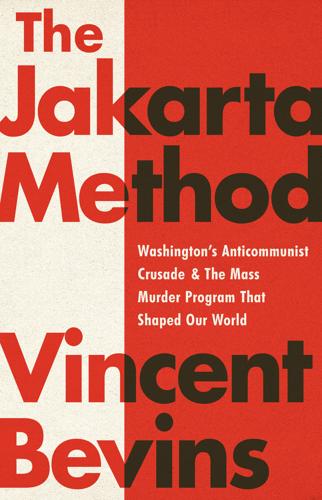
The Jakarta Method: Washington's Anticommunist Crusade and the Mass Murder Program That Shaped Our World
by
Vincent Bevins
Published 18 May 2020
Unless you are Indonesian, or a specialist on the topic, most people know very little about Indonesia, and almost nothing about what happened in 1965–66 in that archipelago nation. Indonesia remains a huge gap in our collective general knowledge, even among people who do know a little about the Cuban Missile Crisis, or the Korean War, or Pol Pot, or can easily rattle off some basic facts about the world’s most-populous country (China), the second most-populous (India), or even numbers six and seven (Pakistan and Nigeria). Even among international journalists, few people know that Indonesia is the world’s largest Muslim-majority country, let alone that in 1965, it was home to the world’s largest Communist Party outside the Soviet Union and China.
…
Inflation was already out of control, but things got much worse for the economy when all US aid dried up, and Brazil’s international creditors stopped all further loans while Washington instead funneled cash to state governors committed to a golpe de estado, or coup, in Brazil.33 Brazil’s Congress caught one US-backed front channeling millions to opposition politicians, and Jango shut them down, but that didn’t stop the ongoing, effective destabilization of his government.34 With the US now effectively leading an international capital strike, Jango struggled to finance basic state functions. He certainly had no help from the men in Moscow; after the Cuban Missile Crisis, the Soviets did not want to cause any trouble in Washington’s backyard.35 Then, Carlos Lacerda, the man who had played a role in the end of both the Vargas and Quadros presidencies, acted again. In October 1963 he gave an interview to Julian Hart, the Brazil correspondent for the Los Angeles Times (and therefore my own predecessor), in which he accused Jango of plotting a coup himself, calling him a golpista (Portuguese for putschist), and asked Washington to intervene.
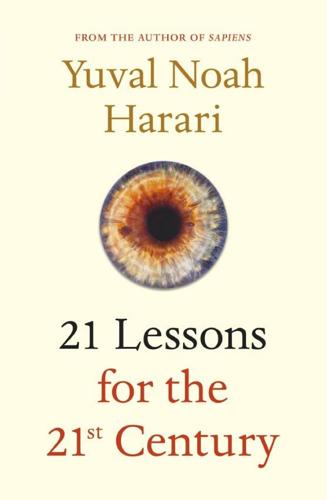
21 Lessons for the 21st Century
by
Yuval Noah Harari
Published 29 Aug 2018
Do Donald Trump, Theresa May, Vladimir Putin, Narendra Modi and their colleagues save the world by fanning our national sentiments, or is the current nationalist spate a form of escapism from the intractable global problems we face? The nuclear challenge Let’s start with humankind’s familiar nemesis: nuclear war. When the Daisy advertisement aired in 1964, two years after the Cuban Missile Crisis, nuclear annihilation was a palpable threat. Pundits and laypeople alike feared that humankind did not have the wisdom to avert destruction, and that it was only a matter of time before the Cold War turned scorching hot. In fact, humankind successfully rose to the nuclear challenge. Americans, Soviets, Europeans and Chinese changed the way geopolitics has been conducted for millennia, so that the Cold War ended with little bloodshed, and a new internationalist world order fostered an era of unprecedented peace.
…
Abbasid caliphs 94 Abraham, prophet 182–3, 186, 187, 274 advertising 36, 50, 53, 54, 77–8, 87, 97, 113, 114, 267 Afghanistan 101, 112, 153, 159, 172, 210 Africa 8, 13, 20, 58, 76, 79, 100, 103–4, 107, 139, 147, 150–1, 152, 168, 182, 184, 223, 226, 229, 239 see also under individual nation name African Americans 67, 150, 152, 227 agriculture 171, 185; animals and 71, 118–19, 224; automation of jobs in 19–20, 29; climate change and modern industrial 116, 117; hierarchical societies and birth of 73–4, 185, 266–7; religion and 128–30 Aisne, third Battle of the (1918) 160 Akhenaten, Pharaoh 191 Al-Aqsa mosque, Jerusalem 15 al-Baghdadi, Abu Bakr 98 Algeria 144, 145 algorithms see artificial intelligence (AI) Ali, Husayn ibn 288 Alibaba (online retailer) 50 Allah 104, 128, 130, 204, 271–2, 289 AlphaZero 31, 123 al-Qaeda 162, 168 Amazon (online retailer) 39, 40, 50, 52, 91, 267–8 Amazon rainforest 116 Amos, prophet 188 Amritsar massacre (1919) 10 Andéol, Emilie 102 animals xi, 73, 86, 98–9, 182, 190, 218, 245; distinct social behaviours 94–5; ecological collapse and 71, 116, 118–19, 224; farm animals, subjugation of 71, 118–19, 224; morality and 187–8, 200; religious sacrifice of 190 anti-Semitism 142, 143, 194, 195, 235–6 see also Jews Apple (technology company) 91, 178 Arab Spring xi, 91 Arjuna (hero of Bhagavadgita) 269–70, 271, 299 art, AI and 25–8, 55–6, 182 artificial intelligence (AI) xiii, xiv; art and 25–8, 55–6, 182; authority shift from humans to 43, 44–72, 78, 268; biochemical algorithms and 20, 21, 25–8, 47–8, 56, 59, 251, 299; cars and see cars; centaurs (human-AI teams) 29, 30–1; communism and 35, 38; consciousness and 68–72, 122, 245–6; creativity and 25–8, 32; data ownership and 77–81; dating and 263; decision-making and 36–7, 50–61; democracy and see democracy; digital dictatorships and xii, 43, 61–8, 71, 79–80, 121; discrimination and 59–60, 67–8, 75–6; education and 32, 34, 35, 38 39, 40–1, 259–68; emotional detection/manipulation 25–8, 51–2, 53, 70, 79–80, 265, 267; equality and xi, 8, 9, 13, 41, 71–2, 73–81, 246; ethics and 56–61; free will and 46–9; games and 29, 31–2, 123; globalisation and threat of 38–40; government and xii, 6, 7–9, 34–5, 37–43, 48, 53, 61–8, 71, 77–81, 87, 90, 121, 267, 268; healthcare and 22–3, 24–5, 28, 48–9, 50; intuition and 20–1, 47; liberty and 44–72; manipulation of human beings 7, 25–8, 46, 48, 50–6, 68–72, 78, 79–80, 86, 96, 245–55, 265, 267, 268; nationalism and 120–6; regulation of 6, 22, 34–5, 61, 77–81, 123; science fiction and 245–55, 268; surveillance systems and 63–5; unique non-human abilities of 21–2; war and 61–8, 123–4 see also war; weapons and see weapons; work and 8, 18, 19–43 see also work Ashoka, Emperor of India 191–2, 286 Ashura 288, 289 Asia 16, 39, 100, 103, 275 see also under individual nation name Assyrian Empire 171 Athenian democracy, ancient 95–6 attention, technology and human 71, 77–8, 87, 88–91 Australia 13, 54, 116, 145, 150, 183, 187, 232–3 Aztecs 182, 289 Babri Mosque, Ayodhya 291 Babylonian Empire 188, 189 Baidu (technology company) 23, 40, 48, 77, 267–8 Bangladesh 38–9, 273 bank loans, AI and 67 behavioural economics 20, 147, 217 Belgium 103, 165, 172 Bellaigue, Christopher de 94 Berko, Anat 233 bestiality, secular ethics and 205–6 bewilderment, age of xiii, 17, 215, 257 Bhagavadgita 269–70, 271, 299 Bhardwaj, Maharishi 181 Bible 127, 131–2, 133, 186–90, 198, 199, 200, 206, 233, 234–5, 240, 241, 272, 298 Big Data xii, 18, 25, 47, 48, 49, 53, 63, 64, 68, 71–2, 268 biometric sensors 23, 49, 50, 52, 64, 79, 92 biotechnology xii, xiv, 1, 6, 7, 8, 16, 17, 18, 21, 33–4, 41, 48, 66, 75, 80, 83, 88, 109, 121, 122, 176, 211, 251–2, 267 see also under individual area of biotechnology bioterrorism 167, 169 Bismarck, Otto von 98–9 bitcoin 6 Black Death 164 Blair, Tony 168 blockchain 6, 8 blood libel 235–6 body, human: bioengineered 41, 259, 265; body farms 34; technology and distraction from 88–92 Bolshevik Revolution (1917) 15, 248 Bonaparte, Napoleon 96, 178, 231, 284 Book of Mormon 198, 235, 240 Book of the Dead, Egyptian 235 Bouazizi, Mohamed xi brain: biochemical algorithms of 20, 21, 47, 48; brain-computer interfaces 92, 260; brainwashing 242–4, 255, 267, 295; decision-making and 50, 52; equality and 75, 79; flexibility and age of 264–5; free will and 250–2, 255; hominid 122; marketing and 267; meditation and 311, 313–14, 316, 317 Brazil 4, 7, 12, 76, 101, 103, 118, 130 Brexit referendum (2016) 5, 9, 11, 15, 45–6, 93, 99, 115 Brihadaranyaka Upanishad 283–4, 302–3 Britain 5, 9, 10, 11, 13, 15, 44–5, 94, 99, 108, 115, 139, 143, 150, 165, 172, 178, 182, 232–3, 243 Brussels bombings (March, 2016) 160 Buddha/Buddhism 58, 102, 136, 183, 184, 186, 190, 196, 278, 291, 302–6, 315 Bulgaria 169, 195, 227 Burma 304–5 Bush, George W. 4, 168, 176, 178 Caesar, Julius 96, 179 California, U.S. 8, 39, 85, 88, 148, 172, 177, 178, 200, 266 Cambridge Analytica 80, 86 Cambridge University 12, 45, 194 Cameron, David 45, 46 Canaan 189, 190, 289, 291 Canada 13, 38, 74, 107 capitalism xii, 11, 16, 35, 38, 55, 68, 76, 77, 96, 105–6, 108, 113, 130, 131, 132, 134, 135, 148, 210, 217, 245, 273, 292, 309 carbon dioxide 117 care industry 24–5 Caro, Rabbi Joseph 195 cars 133, 135; accidents and 23–4, 54, 56–7, 114, 159, 160; choosing 78; GPS/navigation and 54; self-driving 22, 23–4, 33, 41, 56–7, 58–9, 60–1, 63, 168 Catalan Independence 124, 125 Catholics 108, 132, 133, 137, 213, 292, 299 centaurs (human-AI teams) 29, 30 Chad 103, 119 Chaucer, Geoffrey: Canterbury Tales 235–6 Chemosh 191 chess 29, 31–2, 123, 180 Chigaku, Tanaka 305 child labour 33, 224 chimpanzees 94–5, 98, 122, 187–8, 200, 242 China xi, 4, 5, 8, 9, 10, 12, 13, 15, 64, 76, 100, 104, 105, 106, 107, 109, 113, 114, 115, 118, 119, 120, 121, 135, 145, 150, 151, 159, 168, 169, 171, 172–3, 175, 176, 177–8, 180, 181, 182, 183, 184, 185, 186, 193, 201, 227–8, 232, 251, 259–60, 262, 274, 284–5 Chinese Communist Party 5 Christianity 13, 55, 58, 96, 98, 126, 128–30, 131, 132, 133, 134–5, 137, 142, 143, 148, 183, 184–6, 187, 188, 189–90, 191, 192, 193, 194, 196, 199, 200, 203, 204, 208, 212–13, 233, 234–5, 236, 253, 282, 283, 288, 289, 291, 294, 296, 308; Orthodox 13, 15, 137, 138, 183, 237, 282, 308 Churchill, Winston 53, 108, 243 civilisation, single world xi, 5, 92, 95–109, 110, 138; ‘clash of civilisations’ thesis and 93–8; economics and 105–6; European civilisation and 95–6, 108–9; human tribes and 98–100; science and 107–8 ‘clash of civilisations’ 93–4 climate change x, xi, 15, 75–6, 78, 108, 109, 116–20, 121, 122–3, 124, 127, 128, 130, 133, 138, 168, 195, 219, 223, 228, 244, 265 Clinton, Bill 4, 168, 176 Clinton, Hillary 8, 97, 236 Cnut the Great, King of the Danes 105 Coca-Cola 50, 238, 267 Coldia (fictional nation) 148–50, 152–4 Cold War (1947–91) 99, 100, 113, 114, 131, 176, 180 communism xii, 3, 5, 10, 11, 14, 33, 35, 38, 74, 87, 95, 131, 132, 134, 176–7, 209–10, 251, 262, 273, 277, 279 Communities Summit (2017) 85 community 11, 37, 42, 43, 85–92, 109, 110, 135, 143–4, 201, 230, 241; breakdown of 85–7; Facebook and building of global xiii, 81, 85–91 compassion 62, 63, 71, 186; Buddhism and 305–6; religion and 186, 200, 201–2, 204, 208–9, 234, 305–6; secular commitment to 200, 201–2, 204–6, 208–9, 210 Confucius 15, 136, 181, 190, 260, 284–5 consciousness ix; AI and 36, 68–72, 122; intelligence and 68–70, 245–6; meditation and 315, 316; religion and 197 Conservative Party 45 conservatives: conservation and 219–20; embrace liberal world view 44–5 conspiracy theories 222, 229 Constantine the Great, Roman Emperor 192 Constantius II, Roman Emperor 192 cooperation 12, 29, 134; fictions and mass 134, 137, 233–42, 245; human-AI 29, 31; morality and 47, 187; nationalism and 134, 137, 236–8; religion and 134, 137, 233–6 corruption 12, 13, 15, 188–9 Council of Religion and the Homosexual (CRH) 200 creativity 25–8, 31, 32, 75, 182, 234, 262, 299 Crimea 174–5, 177, 179, 231, 238 Croats 282 Crusades 96, 165, 184, 199, 212, 213, 296 cryptocurrency 6 Cuba 9–10, 11, 114, 176 Cuban Missile Crisis (1962) 114 cultures, differences between 147–55 culturism 150–4 cyberwarfare 127, 176, 178, 179 cyborgs 8, 76–7, 212, 278 Czech Republic 200 Daisy advertisement: US presidential election (1964) and 113, 114 Darwin, Charles 194; On the Origin of Species 98–9 Darwinism 213 data: Big Data xii, 18, 25, 47, 48, 49, 53, 63, 64, 68, 71–2, 268; liberty and 44–72; ownership regulation 77–81, 86 see also artificial intelligence (AI) Davos World Economic Forum 222 Dawkins, Richard 45 Deep Blue (IBM’s chess program) 29, 31 democracies: ‘clash of civilisations’ thesis and 93–8; data processing and 65; equality and 74; individual, trust in and 217, 220; liberal democracy see liberal democracy; liberty and 44–6, 53, 55, 64, 65, 66, 67; media manipulation and 12–13; secular ethics and 204, 210 Denmark 4, 94, 105, 144, 153, 200, 210 dharma 270, 271, 286, 299, 309 Di Tzeitung 97 dictatorships 3, 5, 33, 74, 210, 305; digital xii, 43, 61–8, 71, 79–80, 121 discrimination: AI and 59–60, 67–8, 75–6; brain and structural bias 226–8; religion and 135, 191, 200, 208; racism/culturism, immigration and 147–55 disease 16, 22, 28, 49, 88, 107, 218, 289 disorientation, sense of 5, 6 DNA 49, 66, 67, 79, 98, 150, 182 doctors 22–3, 24, 28, 48–9, 106–7, 128–9, 280 dogmas, faith in 229–30 dollar, American 106 Donbas 238 Donetsk People’s Republic 232 drones 29, 30, 35, 64, 76 East Africa 239 ecological crisis, xi, xiv, 7, 109, 195, 219, 244, 265; climate change x, xi, 15, 75–6, 78, 108, 109, 116–20, 121, 122–3, 124, 127, 128, 130, 133, 138, 168, 195, 219, 223, 228, 244, 265; equality and 75–6; global solution to 115–26, 138, 155; ignorance and 219–20; justice and 223, 228, 244, 265; liberalism and 16; nationalism and 15, 115–26; religion and 127, 128, 130, 133, 138; technological breakthroughs and 118–19, 121, 122–4 economics xii, 3, 4, 7, 9, 11, 16, 68, 99, 222, 224, 225, 240, 262, 309; AI and 6, 7, 8, 9, 19–43; capitalist see capitalism; communism and see communism; data processing and 65–6; economic models 37, 105–6; equality and 9, 71, 73–7 see also equality; liberalism and 3–5, 16, 44–5; nationalism and 115, 117, 118, 120, 121, 124; religion and 130–3; war and 171–5, 177–8, 179–80; work and 19–43 education 11, 16, 66, 74, 75, 111, 112, 113, 184, 194, 259–68; AI and 32, 34, 35, 38 39, 40–1, 259–68; basic level of 40–1; future of 259–68; liberal 217, 219, 261; secular 207, 209 Egypt 63, 74, 128–9, 172, 181, 188–9, 235, 284, 291, 296 Einstein, Albert 45, 181, 193, 194, 195 El Salvador 4, 150 ‘End of History’ 11 Engels, Friedrich: The Communist Manifesto 262, 273 England 105, 139, 235–6 equality xi, 13, 41, 71–2, 73–81, 92, 95, 144, 204, 223; AI and 75–81; history of 73– 4; secularism and 206–7, 208–9 ethics: AI and 56–61, 63, 121; complex nature of modern world and 223–30; nationalism and 121–2; religion and 186–93, 199–202; secular 199–202, 203–14 Europe xi, xii, 5, 10, 11, 16, 40, 47, 79, 93–100, 103–4, 105, 106, 107, 108–9, 113, 114, 115, 124–5, 128, 135, 136, 138, 139, 140, 143–4, 145, 147, 150, 153, 154–5, 159, 160, 164, 169, 171–2, 175, 176, 186, 187, 193, 201, 207, 228, 236, 252, 294, 307 see also under individual nation name European Union xii, 47, 93, 94, 95, 99, 108, 115, 124, 169; Constitution 95, 124; crisis in 138; immigration and 138, 139, 143–4, 154–5; Russia and 177; size and wealth of 176; terrorism and 159 Evangelical Christians 133 evolution 47, 98–9, 110–11, 127, 187, 194, 205, 206, 217, 218, 223, 274, 276, 277 Ex Machina (film) 246 Facebook xiii, 27, 77, 178, 230, 301, 302, 306; community-building and xiii, 85–91, 93; equality and 77, 80; liberty and 55, 64, 65, 67, 80, 86; ownership of personal data 80, 86; post-truth and 233, 235, 238; US presidential election (2016) and 80, 86 failed states 101, 112, 210 fair game rules 187 fake news xi, 231–42 famine 16, 33, 208, 212, 238, 251, 271 farming, modern industrial 29, 116, 118, 127, 128, 129, 224, 260, 262 see also agriculture fascism xii, 3, 9, 10, 11, 33, 142, 148, 154, 237, 251, 292–5, 297, 305 feminism 87, 143, 208, 217, 246, 280 Ferdinand, Archduke Franz 9, 11, 171 Fernbach, Philip 218 financial crisis, global (2008) 4, 171 financial system, computers and complexity of 6 Finland 38, 74 First World War (1914–18) 9, 10, 11, 30, 33, 99–100, 112, 123, 124, 160, 170, 171, 172, 265 Flag Code of India 285–6 flags, national 103, 285–6 fMRI scanner 21, 240 football, power of fictions and 241 France 10, 13, 51, 63, 66, 76, 94, 96, 99, 102, 103, 104, 115, 122, 139, 144, 145, 164, 165, 172, 182, 184, 194, 204, 285, 295–6 Francis, Pope 133 Freddy (chimpanzee) 188 free-market capitalism xii, 3, 4, 11, 16, 44, 55, 217, 245 free will 20, 44, 45–6, 47–8, 250–1, 299–301 French Revolution (1789) 63, 184, 207 Freud, Sigmund 135, 185, 193, 194–5, 286 Friedman, Milton 130 Front National 13 Galilei, Galileo 193, 207 gay marriage 44, 198, 205–6 Gaza 173 genetically modified (GM) crops 219 Georgia 176, 177 Germany 13, 66, 68, 95, 96, 98–9, 108, 118, 139, 147, 148, 155, 169, 171–2, 173, 179, 182, 194, 195, 239, 251, 277; Nazi 10, 66, 96, 134, 136, 212, 213, 226, 237, 251, 279, 294, 295 Gandhi, Mahatma 132 globalisation 8, 9, 113, 139; AI/automation and 38–9; history of 99; inequality and 73, 74, 76; nationalism and 109; reversing process of xiii, 5; spread of 4, 99 global stories, disappearance of 5, 14 global warming see climate change God xi, xiii, 46, 106, 197–202; 245, 252, 254, 269, 281, 285, 287, 303, 304; Bible and see Bible; ethics and 199–202, 205, 206, 208, 209; existence of 197–9; Jewish and Christian ideas of 184–5, 189, 190; justice and 225; mass cooperation and 245; monotheism and 190–3; post-truth and 234–6, 239; sacrifice and 287, 289; state identity and 138 gods xii, 277, 281, 291; agriculture and 128, 129; humans becoming ix, 79, 86; justice and 188, 189; sacrifice and 287–9; state identity and 136, 137 Goebbels, Joseph 237 Goenka, S.
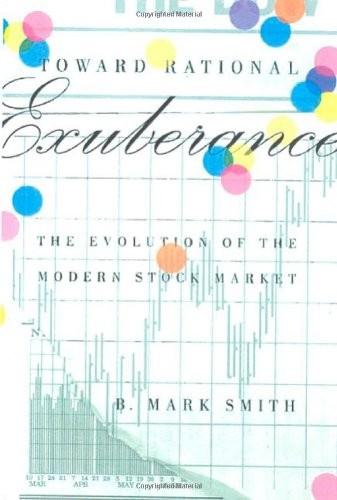
Toward Rational Exuberance: The Evolution of the Modern Stock Market
by
B. Mark Smith
Published 1 Jan 2001
Unfortunately, an examination of events immediately subsequent to the 1962 market break muddies the conclusion somewhat. Unlike the post—1929 crash market, which rallied briefly but then slid into a prolonged decline precipitated by the Depression, stock prices recovered robustly in late 1962 (after the Cuban missile crisis). The Dow Jones Industrials broke through the December 1961 high in 1963, and eventually established a new high slightly over 1,000 in early 1966. Thus an investor who bought the Dow Industrial stocks at the “overpriced” high of 734.51 in December 1961 would, over the next four years, achieve a compounded rate of return (including dividends) of approximately 11%, roughly the historic average rate of return for stocks over the century.
…
consumer spending; and crash of 1929; on credit; during World War II Cooke, Jay, & Company Coolidge, Calvin Cornell University corners; of silver market, see silver crisis Cornfeld, Bernard Corn Products Corrigan, Gerald cost-push inflation Council of National Defense covariance Cowles, Alfred Cox, Albert Crane, Burton crashes; of 1837; of 1929, ; of 1962; of 1987; see also panics Cuban missile crisis customer stock purchase plans Cutten, Arthur Darvas, Nicholas Darwin, Charles Day and Night Bank DeAngelis, Anthony De Bondt, Werner Defense Department, U.S. defined-benefit pension plans defined-contribution pension plans Democratic party democratization of stock market depressions; fear of; of 1920–21; see also Great Depression Detroit Law School Dewey, Thomas Dillon, Douglas Dines, James discounted cash-flow model; see also Dividend Discount Model; present value, determination of Disney Dividend Discount Model Dodd, David Douglas, William O.

Apollo 8: The Thrilling Story of the First Mission to the Moon
by
Jeffrey Kluger
Published 15 May 2017
See also Mission Control Carpenter, Scott Carr, Jerry CBS TV Cernan, Gene Chaffee, Crater Chaffee, Roger Chance Vought Charlesworth, Cliff Chertok, Boris Chestnut, Ma China Christmas in space circularizing burn circumlunar flight Apollo 8 changed to lunar orbit from Apollo 8 proposed as Zond and Civil Rights Act (1964) Cold War Collins, Crater Collins, Michael “Mike” Colombo Crater Colossus software command and service module (CSM) Conrad, Pete Cooper, Gordon Crater, Crile 228 Cronkite, Walter Crossfield, Scott cryogenic tanks Cuban Missile Crisis Cunningham, Walter data storage equipment (DSE, dump tapes) Debus, Kurt Deiterich, Chuck Delporte Crater Democratic National Convention (Chicago, 1968) Democratic Party Depression digital autopilot (DAP) Dobrynin, Anatoly Drums Along the Mohawk (Edmonds) Duke, Charlie Earth Apollo 8 leaves gravity of humans adapted to light-time distance to position of, and launch window views of, from space Earthrise (photograph) Earthshine Eastern Air Lines Eastern Europe Edmonds, Walter Edwards Air Force Base Eisele, Donn Eisenhower, David Eisenhower, Dwight Electronic Data Systems Elizabeth II, Queen of England Elkins, Joe Elkins, Margaret entry monitoring system (EMS) environmental control system Ernal, Bob F-80 fighter jet F-84 F-86 Sabrejets F-89 F-104 Field, John flight dynamics (FIDO) console flotation balloons flotation collar Fra Mauro Highlands France Franz Crater Freeman, Ted free-return trajectory Gay, Chuck Gehrig, Lou Gemini 1 Gemini 3 Gemini 4 Gemini 5 Gemini 6 Agena explosion and scrubbing of dual mission with Gemini 7 first scheduled shutdown protocol Gemini 7 Borman assigned to dual mission with Gemini 6 launch of medical tests on sleeping shifts splashdown and recovery two-week orbit Gemini 8 Gemini 10 Gemini 11 Gemini 12 Gemini spacecraft design of food on human body tested by mobility in orbit and reentry space walking and Titan rocket and General Dynamics Germany, Nazi g-forces on launch on reentry Gilbert Crater Gilruth, Bob Glenn, John global tracking web Goddard, Robert Godfrey, Arthur Goldwater, Barry Gordon, Dick Grau, Dieter Griffin, Gerry Grissom, Crater Grissom, Gus Apollo 1 explosion and death of Apollo mission and Apollo simulator and food and Gemini 3 and Lovell and Mercury program and Grissom, Mrs.
…
See also astronauts; Cape Kennedy; Mission Control; and specific missions and individuals Apollo 1 explosion and Apollo 7 and Apollo 8 turned into moon shot by Apollo families and Apollo program, post-explosion Apollo spacecraft design and celebrations post-moon shot Christmas TV broadcasts and creation of Distinguished Service Medal early rockets and families and flight rules funding Gemini 1 and Gemini 6–7 dual mission and improvisations and JFK and Kraft as flight operations head LBJ and medical testing and Mercury overshoot and moon landing deadline and PR and Slayton and oversight of space race and White House dinner and National Aeronautics and Space Council National Football League Naval Academy (Annapolis) Naval Air Station Patuxent River Navy Navy Department near-escape velocity Nellis Air Force Base New York Jets New York Times Nixon, Julie Nixon, Richard North American Aviation North Korea nuclear missiles Ocean of Storms Offenbach, Jacques orbital parameters Outer Space Treaty PADS (preliminary advisory data) parachute passive thermal control (PTC) mode Pasteur Crater Paul VI, Pope Peanuts (comic strip) Perot, Ross Pershing Missile Petrone, Rocco Philippines Pickering Crater Pilyugin, Nikolai plugs-out test Podgorny, Nikolai pogo problem Polaris missiles Propst, Gary Pueblo, USS (ship) Pyrenees Mountains of the Moon radiation sickness Raish, Donald Redstone rocket reentry Soviet Zond and protocol, broken by Schirra rendezvous and docking Gemini 6 plan Gemini 6–7 dual mission and Republican Party retrofire console Richardson Crater Rockefeller, Nelson Roughing It (Twain) Rudolph, Arthur Saturn 1B Saturn V rocket Apollo 6 and Apollo 8 and readiness of Apollo 8 launch and design of engine problems launch window Mission Control rehearsals and pogo problem and third stage for TLI and third stage separation and Scaliger Crater Scheer, Julian Schefter, James Schirra, Wally Apollo 1 explosion and Apollo 7 and Apollo assignment and Gemini 6 launch and Gemini 6–7 dual mission and humor and Schweickart, Rusty Scientific Research Institute (Moscow) Scott, Dave Sea of Crises Sea of Fertility Sea of Tranquillity See, Elliot service module junking Service Propulsion System (SPS) central role of, in lunar mission circularizing burn fuel and hypergolic chemical flow and lunar orbit entry and TEI burn and testing, for course correction Shea, Joe Shepard, Al Sherrington Crater Slayton, Donald Kent “Deke” Anders and Apollo 1 explosion and Apollo 7 and Apollo 8 and Apollo 9 and Apollo 11 and Gemini flights and Smyth’s Sea Snoopy hats Sousa, John Philip South Korea Soviet astronauts, early Soviet Central Research Institute (USSR) Soviet MiG plane Soviet Union (Russia) Apollo 1 and Apollo 8 and Cuban Missile Crisis and Korean War and Outer Space Treaty and Sputnik and Zond and space race spacesuits Space Task Group space walk White and Collins and splashdown and recovery launch windows Sputnik Stafford, Tom Apollo 10 Gemini 6 and Gemini 6–7 dual mission and Storms, Harrison “Stormy” Strategic Air Command subortibal missions Sunday Times (London) Super Bowl sustainer engine cut-off (SECO) T-6 T-33 Taurus-Littrow Mountains television broadcasts from Apollo 8 Christmas reentry and thrusters Time Man of the Year issue Tindall, Bill Titan missile Borman and tests of design of Gemini 6–7 dual mission and man-rating of toilet needs in space Apollo 8 urine problems Gemini 7 and Tranquillity Base trans-Earth injection (TEI) translunar injection (TLI) translunar route navigation Triangular Mountain (Mount Marilyn) Tsiolkovsky Crater Tuskegee airmen Twain, Mark United Kingdom U.S.
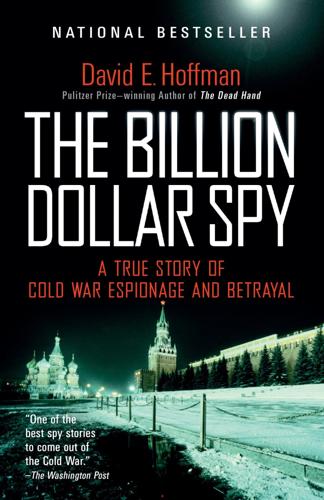
The Billion Dollar Spy: A True Story of Cold War Espionage and Betrayal
by
David E. Hoffman
Published 9 May 2016
Penkovsky provided almost every copy of the journal, in which Soviet generals debated concepts of war in the nuclear age.20 His reports provided critical insights into Soviet intentions during the 1961 Berlin blockade, informed the West for the first time about the existence of the all-important Military Industrial Commission, which made decisions about weapons systems, and provided key technical details of the R-12 medium-range missiles that the Soviet Union sent to Cuba in the fall of 1962, especially the range of the missiles and time required to make them operational. Penkovsky’s intelligence, code-named ironbark and chickadee, was a key ingredient in decision making as President Kennedy stood up to Khrushchev during the Cuban missile crisis.21 Penkovsky’s information on the Soviet medium-range missiles was included in the President’s Daily Brief in the third week of October 1962. Additionally, Penkovsky’s information, along with the first reports from the new Corona spy satellite, debunked the myth that the Soviet Union was churning out intercontinental ballistic missiles like sausages, as Khrushchev had boasted.
…
Examples of the positive intelligence that Penkovsky provided are in Bird and Bird, “CIA Analysis,” 13–28, and the associated document collection. McCoy offers a detailed account of the positive intelligence gleaned from the operation. A more skeptical view of Penkovsky’s contribution to the Cuba crisis is offered by Len Scott, “Espionage and the Cold War: Oleg Penkovsky and the Cuban Missile Crisis,” Intelligence and National Security 14, no. 3 (Autumn 1999): 23–47. 24. Unknown author, “Reflections on Handling Penkovsky,” Studies in Intelligence, CIA, date unknown, declassified by the CIA Sept. 3, 2014. This monograph was written by the CIA case officer who arrived in June 1962. See p. 53. 25.

The Coming Wave: Technology, Power, and the Twenty-First Century's Greatest Dilemma
by
Mustafa Suleyman
Published 4 Sep 2023
Even the Kremlin, hardly a model of openness, has admitted 15 serious nuclear accidents between 2000 and 2010. Tiny hardware malfunctions can produce outsized risks. In 1980 a single faulty computer chip costing forty-six cents almost triggered a major nuclear incident over the Pacific. And in perhaps the most well-known case, nuclear catastrophe was only avoided during the Cuban missile crisis when one man, the acting Russian commodore, Vasili Arkhipov, refused to give an order to fire nuclear torpedoes. The two other officers on the submarine, convinced they were under attack, had brought the world within a split second of full-scale nuclear war. Worries remain abundant. Nuclear sabers rattled anew in the wake of Russia’s invasion of Ukraine.
…
See technology cost decreases COVID-19 pandemic disinformation/misinformation and, 172 gain-of-function (GOF) research and, 176 organizational limitations and, 228 surveillance and, 194, 195, 215 Craspase, 82 Crick, Francis, 80 CRISPR gene editing, 81–82, 86, 129–30 critic AIs, 244 Critical Assessment for Structure Prediction (CASP), 89, 90 Cronin, Audrey Kurth, 106, 127 crossbow, 39, 40 cryptography, 98, 244, 248, 266 Cuban missile crisis, 44 Cugnot, Nicolas-Joseph, 23 cults, 212–13 culture, 267–70 cyberattacks, 160–63, 166–67 D Daimler, Gottlieb, 24 data, proliferation of, 33 decentralization, 198–99 Deep Blue, 53 deepfakes, 169–71, 172 deep learning autonomy and, 113 computer vision and, 58–60 limitations of, 73 potential of, 61–62 protein structure and, 89–90 supervised, 65 synthetic biology and, 90–91 See also machine learning DeepMind AGI as goal of, 8, 51 arms race rhetoric and, 124 choke points and, 251 containment and, 254, 255–56 DQN algorithm, 51–52, 113 efficiency and, 68 founding of, 8, 9 Google purchase of, 60, 255–57 openness imperative and, 128 practical applications and, 61 protein structure and, 89–90 See also AlphaGo Deere, John, 93 Delta, 104 demand, 25, 30, 31, 40, 41, 132–33 dematerialization, 55–56, 189–90, 233 demographic crisis, 219–20 diffusion, 30–31 dilemma, the, defined, vii Diplomacy, 167 disinformation/misinformation, 167, 169–73, 208 DJI, 106 DNA profiling, 81 DNA Script, 83 DNA synthesizers, 12–13 Doudna, Jennifer, 81 DQN (Deep Q-Network), 51–52, 113 drones, 103–4, 105, 106, 166, 207 dual-use technology.
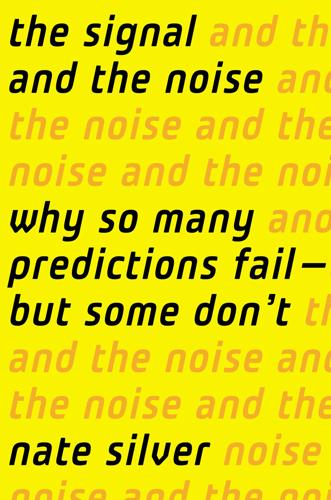
The Signal and the Noise: Why So Many Predictions Fail-But Some Don't
by
Nate Silver
Published 31 Aug 2012
Because of the United States’ isolation from the European and Asian continents and the relatively good relations we have maintained with the rest of the Americas since the promulgation of the Monroe Doctrine, we have infrequently been the subject of foreign attack. The exceptions (September 11) and near-misses (the Cuban Missile Crisis) have therefore been exceptionally jarring to us. Before Pearl Harbor, the last foreign attack on American soil had been during the War of 1812.19 Americans just do not live among the ruins of wars past, as people in Europe and Asia have throughout their history. But our Hawaiian territory* sat in the middle of the Pacific Ocean: Honolulu is closer to Tokyo (3,860 miles) than to Washington, DC (4,825 miles).
…
Because such an attack could be hundreds of times worse than 9/11, however, the question of its likelihood has been the subject of intense debate in the national security community. One of the more pessimistic assessments comes from Graham Allison, a professor of political science at Harvard. Allison served in the administrations of both President Reagan and President Clinton, and his books and papers on the Cuban missile crisis have been cited thousands of times by other scholars.55 So when Allison has something to say, his peers listen. Allison came to a frightening conclusion in 2004: “A nuclear terrorist attack on America in the decade ahead is more likely than not,”56 he wrote. Allison qualified his forecast by saying it assumed we remained “on the current path”—a world in which there are dangerous terrorist groups, vulnerable nuclear materials at many places around the world, and a lack of focus on the problem from U.S. policy makers.
…
Connecticut, 391 consensus, 66–67, 331–32, 335–36, 367, 451 of global-warming forecasting, 382–84 conservatism, 509 conspiracy theories, 417n consumer confidence, 186n, 187–88 consumer spending, 186n, 187 context: as ignored in failed predictions, 43 statistics and, 79, 84, 91, 100–102, 105, 234, 240 contrarianism, 380 Cook, Charlie, 69–70 Cook County Jail, 228 Cook Political Report, 69–72, 100n, 469 Copenhagen climate conference, 378–80 correlations, causation vs., 185–88, 254–55 Council of Economic Advisers, 40 Council on Foreign Relations, 435 Cramton, Steven, 292–93 creativity, 287–88, 289, 290, 291, 311 credit bubble, 68, 196 credit default option (CDO), 20–21, 21, 22, 24, 25, 26–30, 36, 43, 462 tranches of, 26–28, 28 credit default swap, 36 credit markets, 19 Crist, Charlie, 33 Cronkite, Walter, 207–8 Crowley, Monica, 48–49, 467 crystal methamphetamine, 221 Cuban Missile Crisis, 419, 433 Curb Your Enthusiasm, 111 cyclones, see hurricanes Czechoslovakia, 52 Daily Kos, 60 Damon, Matt, 317 Dark Winter, 437 Darwin, Charles, 375 data: in baseball, 79–80, 84 Big, 9–12, 197, 250, 253, 264, 289, 447, 452 distribution of, 164, 165 in economics, 80, 185, 193–94 in frequentism, 253 overfitting of, 163–71, 166, 168–71, 185, 191, 452n, 478 Pareto principle and, 313 data mining, 298 Daum, Robert, 224, 227, 229 David, Larry, 111 Davis, Ricky, 239, 257 De Bernardinis, Bernardo, 143 debt crisis, European, 198 Deep Blue, 10, 266, 268, 292, 493–94 bug in, 283, 285, 286, 288–89 creation of, 283–85 Kasparov’s final games against, 282–83 Kasparov’s first game against, 268, 270–79, 271, 274, 275, 276, 278 Kasparov’s second game against, 279–82, 280 rook moved for no apparent purpose by, 277–79, 278, 288 Deep Thought, 268, 284 default, 20–21, 22, 27–29, 184 defense, 90, 92, 106 Defense Department, U.S., terrorism prevention by, 273 defensive range, 96 de Groot, Adriaan, 272 Denver, Colo., 150 Denver Post, 176 depth, breadth vs., 271–73 determinism, 112, 113, 241, 242, 249, 448 Detroit Tigers, 77, 88, 94 difference engine, 263 Discover, 160 discrimination, calibration vs., 474 disease, see infectious disease diversification, 27 “Divine Benevolence” (Bayes), 241, 242 Djokovic, Novak, 496 Dodger Stadium, 79 Dokhoian, Yuri, 282 Domodedovo Airport, 440 dot-com boom, 346–48, 361 Dow Jones Industrial Average, 37, 339, 340, 343, 498, 503 Doyle, Arthur Conan, 307 Drake equation, 488 Druckenmiller, Stanley, 356 Dukakis, Michael, 68 Duke University, 359 Dutch book, 256n Dwan, Tom, 308–11, 313, 315, 318, 324, 328 dynamic systems, 16, 118, 120, 194 E*Trade, 339, 363, 498 earthquake forecasting, 149–54, 230 computers in, 289 failure of, 7, 11, 143, 147–49, 158–61, 168–71, 174, 249, 253, 346, 389 overfitting and, 168–71, 185 short-term, 174 time-dependent, 154 earthquakes, 16, 142–75, 476, 512 aftershocks to, 154, 161, 174, 476–77 in Anchorage, 149 causes of, 162 distribution across time and space of, 154–57, 155, 427 foreshocks to, 144, 154, 155–57, 476 Great Sumatra, 161, 171 in Haiti, 147n, 155–56, 156, 224 in Japan, 154, 155, 168–71, 172 in L’Aquila, 142–44, 148, 154–55, 157, 173 Lisbon, 145 list of deadliest, 147 Loma Prieta, 160 magnitude vs. frequency of, 151–53, 152, 153, 368n, 427, 432, 437–38, 441 near Reno, 156–57, 157 in New Zealand, 174 earthquake swarm, 143n, 173 Earth System Science Center, 408 East Germany, 52 eBay, 353 Ecclesiastes, 459 economic data, noise in, 193–94, 198 economic growth, 6, 6, 186n economic progress, 7, 112, 243 economics, predictions in, 33, 176–77, 230 actual GDP vs., 191–93, 192, 193, 194 Big Data and, 197 computers in, 289 consensus vs. individual, 197–98, 335 context ignored in, 43 an ever-changing economy, 189–93 economics, predictions in (Cont.)
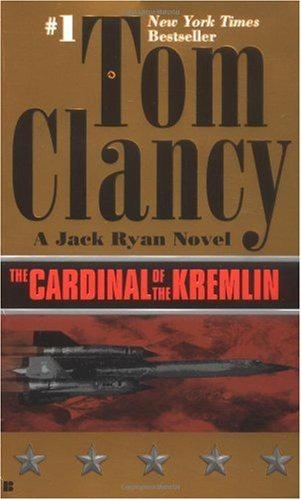
The Cardinal of the Kremlin
by
Tom Clancy
Published 2 Jan 1988
Soviet nuclear strategy, Misha thought to himself, made far more sense than that of the West. Russian strategists did not consider nuclear war unthinkable. They were taught to be pragmatic: the problem, while complex, did have a solution-while not a perfect one, unlike many Western thinkers they acknowledged that they lived in an imperfect world. Soviet strategy since the Cuban Missile Crisis of 1962-the event had killed Filitov's recruiter, Colonel Oleg Penkovskiy-was based on a simple phrase: "Damage Limitation." The problem wasn't destroying one's enemy with nuclear weapons. With nuclear weapons, it was more a question of not destroying so much that there would be nothing left with which to negotiate the "war-termination" phase.
…
What filled his mind was the importance of this agent and his information. There were precedents. The brilliant agent Richard Sorge in Japan in 1941, whose warnings to Stalin were not believed. Oleg Penkovskiy, who'd given the West information on the Soviet military that might have prevented nuclear war during the Cuban Missile Crisis. And now another. He didn't reflect on the fact that alone in CIA, he knew the agent's face but not his name or code name. It never occurred to him that Judge Moore didn't know CARDINAL'S face, had for years avoided looking at the photograph for reasons that he could never have explained even to his deputy directors.
…
Oleg Penkovskiy had been a senior officer in the GRU, the Soviet military intelligence command; recruited by the British, then "run" jointly by the SIS and CIA, he'd betrayed his country as thoroughly as any man could. His penultimate treason had been to leak to the West the state of preparedness-or lack thereof-of the Strategic Rocket Forces during the Cuban Missile Crisis; this information had enabled American President Kennedy to force Khrushchev to withdraw the missiles that he'd so recklessly placed on that wretched island. But Penkovskiy's twisted loyalty to foreigners had forced him to take too many risks in delivering that data, and a spy could take only so many risks.
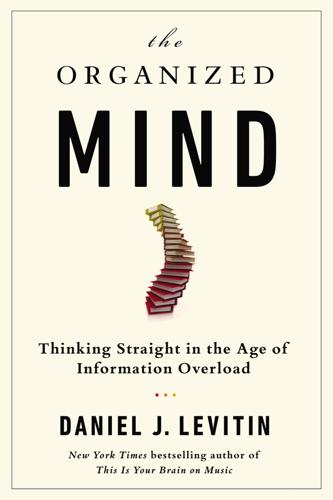
The Organized Mind: Thinking Straight in the Age of Information Overload
by
Daniel J. Levitin
Published 18 Aug 2014
You might say the fate of the world depends (among other things) on abolishing out-group bias. In one particular case, it did. October 1962 was perhaps the time in world history when we were closest to complete destruction of the planet, as President Kennedy and Chairman Khrushchev were engaged in a nuclear standoff known in the United States as the Cuban Missile Crisis. (Or, as the Soviets called it, the Caribbean Crisis of 1962.) A key aspect of the conflict’s resolution was a back-channel, private communication between JFK and Khrushchev. This was the height of the cold war. Officials on each side believed that the other was trying to take over the world and couldn’t be trusted.
…
New York, NY: Springer-Verlag, p. 113. we tend not to reevaluate the stereotype Rothbart, M., & Lewis, S. (1988). Inferring category attributes from exemplar attributes: Geometric shapes and social categories. Journal of Personality and Social Psychology, 55(5), 861–872. Caribbean Crisis of 1962 Garthoff, R. L. (1988). Cuban missile crisis: The Soviet story. Foreign Policy, 72, 61–80. “try to put yourself in our place.” Khrushchev, N. (1962, October 24). Letter to President Kennedy. Kennedy Library, President’s Office Files, Cuba. No classification marking. This “official translation” prepared in the Department of State and an “informal translation” from the Embassy in Moscow (transmitted in telegram 1070, October 25; Department of State, Presidential Correspondence: Lot 66 D 304) are printed in Department of State Bulletin, November 19, 1973, pp. 637–639.
…
See also attention conformity, 157–59 consumer decision-making, 20, 310, 311 Consumer Reports, 20, 116 contact files, 122–23 contingencies, 231, 232, 286, 319–26 controlled experimentation, 345–47, 348 Cook, Perry R., 323, 324–25 cooperative behavior, 135–36 coronary bypass surgery, 259 corporate structures, 271–76, 464n283 correlation, 60, 347–51, 348 cost-benefits analysis, 5, 212–13 Coulter, Ann, 340 covariation, 347–48, 348 creativity and aging, 217–18 and attention, 38 and central executive function, 202, 210, 375–76 and flow state, 203–8, 209 and focus, 171 and organizational systems, 304 and serendipity, 376, 378, 380–81 and time management, 170–71, 202–15 critical thinking, 336, 341, 343, 352, 478n352 crowdsourcing, 114–17, 133, 333 Csikszentmihalyi, Mihaly, 203, 206, 400n7 Cuban, Mark, 292 Cuban Missile Crisis, 155, 366 Curie, Marie, 283 Dali, Salvador, 375 Darley, John, 157–58, 159 data compression, 311–12, 314 data losses, 321–26 Dawkins, Richard, 26–27 daydreaming mode and attention, 38–39 and creativity, 202, 217, 375–76, 380 and free association, 364–65 and online dating, 132 and organizational systems, 304 and reading fiction, 367 and social relations, 152 and time organization, 169, 170 decisions, 73, 98, 100, 132, 218, 220–32, 276–83, 310–11, 423n132 Deepwater Horizon oil rig disaster, 134 defining features, 65–66 delayed gratification, 166, 197 De Morgan, Augustus, 377 Dennett, Daniel, 45 denominator neglect, 255–56 Descartes, René, 14–15 designated places, 83, 83–86, 88 De Waal, Frans, 282–83 Dewey Decimal System, 296, 378 dietary supplements, 253–54, 255, 258, 260 diffusion of responsibility, 157–59 digital storage, 91–106 diphtheria, 250 disciplined initiative, 286 disk failures, 321 dispositional explanations, 145–46 distraction, 198, 209–10 distributed processing, xxi, 303 division of labor, 269 divorce rates, 133, 261–62 document organization, 293–306, 413n95.

Surviving AI: The Promise and Peril of Artificial Intelligence
by
Calum Chace
Published 28 Jul 2015
Ever since the nuclear arsenals of the US and the Soviet Union reached critical mass in the early 1960s we have been living with the possibility that all-out nuclear war might eliminate our species – along with most others. Most people are aware that the world came close to this annihilation during the Cuban missile crisis in 1962; fewer know that we have also come close to a similar fate another four times since then, in 1979, 1980, 1983 and 1995. (52) In 1962 and 1983 we were saved by individual Soviet military officers who decided not to follow prescribed procedure. Today, while the world hangs on every utterance of Justin Bieber and the Kardashian family, relatively few of us even know the names of Vasili Arkhipov and Stanislav Petrov, two men who quite literally saved the world.
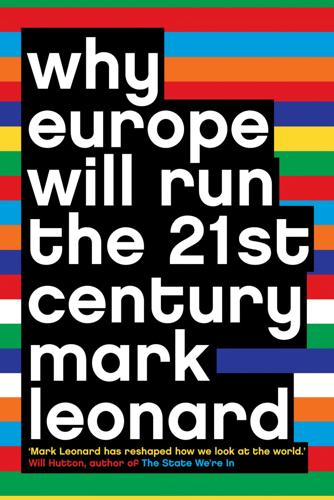
Why Europe Will Run the 21st Century
by
Mark Leonard
Published 4 Sep 2000
The United Nations was sidelined and mocked during the 1990s – powerless in the face of civilian massacres in Rwanda and Somalia, ignored over Kosovo, and starved of dues by big donors. But during the run-up to the Iraq war it became the crucible in which the arguments were aired and decisions on the basis for war were made. For the first time since the Cuban missile crisis, dramatic presentations at the United Nations dominated the media, and international public opinion rallied to its cause. Now the United States has turned to the United Nations to give credibility to the beleaguered Iraqi Governing Council – not something that would have seemed likely at the time of the invasion.
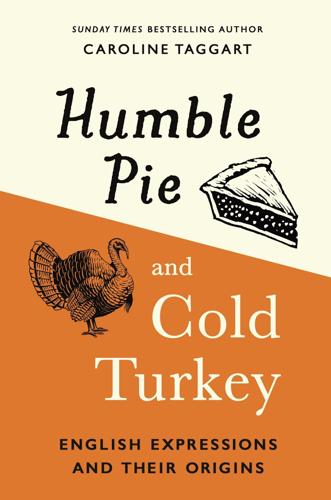
Humble Pie and Cold Turkey: English Expressions and Their Origins
by
Caroline Taggart
Published 29 Sep 2021
This dates from the nineteenth century, as does its opposite, to look to your laurels, to seek to stay ahead of your rivals by repeating those successes. From being symbols of peace, doves developed into politicians who favour negotiation or conciliation over confrontation and open warfare. It was during the Cuban Missile Crisis of 1962 (one of the many occasions since the end of World War Two when it looked as if another global conflict was on its way) that such people were first described as the opposite of hawks, the warmongering element who, according to the Philadelphia Saturday Evening Post, favored an air strike to eliminate the Cuban missile bases.
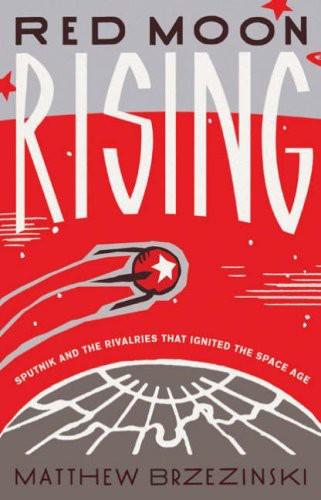
Red Moon Rising
by
Matthew Brzezinski
Published 2 Jan 2007
Kennedy derisively referred to the Jupiters, finally caused Khrushchev to snap when they became operational in Turkey in late 1961. From their Turkish bases, they could hit military installations in the heart of the Soviet Union, effectively restoring the very same strategic imbalance that had prompted Moscow to build rockets in the first place. The net result was the Cuban missile crisis. As it turned out, it would be a U-2, and not the top-secret Corona, that snapped the incriminating photographs of Soviet launchpad preparations on Castro’s island that would spark the most dangerous showdown of the cold war. For Khrushchev, the attempt to station intermediate-range rockets on Cuban soil in the autumn of 1962 was a desperate gambit to redress the R-7’s shortcomings.
…
“Ludy,” 8–11, 13–14, 83–84, 88 Tokady, Grigori A., 12 “total war,” 24 tracking stations U.S., 263, 267 USSR, 96, 97, 159 Treasury Department, U.S., 223 Trotsky, Leon, 21 Trud (Moscow daily), 61 Truman, Harry S., 16, 49, 51, 56, 85, 89–90, 141, 148, 183, 257 Tsander, Friedrich, 107–8, 245 Tsien Hsue-shen, 89 Tsiolkowsky, Konstantin, 43, 107, 135 Tulip launch stand, 96–99, 102, 131, 153–54, 157, 198 Tupolev, Andrei, 107, 109 Tupolev bombers, 25–26, 127 Turkey, 41, 116, 129, 270–71 Twining, Nathan, 58 Tyura-Tam test site, 96–97, 100, 102, 117, 128–32, 146, 148, 150–60, 205 U-2 spy plane, 115–28, 130–35, 178–79, 185, 205 Cuban missile crisis and, 271 satellites replace, 249–50 USSR shoots down, 270 Ukrainian Society of Aviation and Aerial Navigation, 107 United Fruit Co., 118 United Nations, 75, 78, 241 United Press International, 179 United States. See also specific government agencies; individuals; and programs bases of, in Europe and Asia, 25 development of jet power in, 45–59 first satellite launch by, with Explorer and Juno, 260–67 German scientists gathered by, 14 Hungarian revolution of 1956 and, 74–76 IGY satellite program and, 92–93 impact of Korolev and Khrushchev’s space program on, 274–75 Korolov speaks of satellite plans of, to get Soviet support, 43–44 lag behind Soviets in space, after Explorer, 268–69 leads in ICBM race, 269–70 military spending, vs.
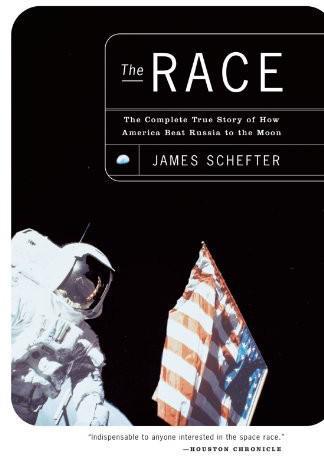
The Race: The Complete True Story of How America Beat Russia to the Moon
by
James Schefter
Published 2 Jan 2000
These Second Nine would write some of the most important chapters in the story of the space race, and two of them would die before another of them crossed the finish line. They were in a tough business. That was part of the challenge and part of the fun. The weeks after Schirra’s Mercury flight were not fun for Jack Kennedy or for the thousands of Reserve and National Guard troops called to active duty during the Cuban Missile Crisis. Nikita Khrushchev again was forcing a confrontation by putting intermediate-range attack missiles in Cuba. The Soviet Rocket Force was an expanding power, and the country’s success in space had put an exclamation point on the image that Russian rockets were a potent threat. Khrushchev knew how to exploit his propaganda success and how to get what he really wanted.
…
But in the light of what happened later, and what eventually became known, Valya Tereshkova’s mental state might never have fully stabilized. In 1967, she told reporters that the Russian moon crew was already in training. Its commander, she said, was Yuri Gagarin. Then she added: “And I am on it.” It didn’t quite work that way. Did Jack Kennedy and Nikita Khrushchev have a cure for the Cold War? The Cuban Missile Crisis opened new channels between the American president and the Soviet premier, including a hot line directly connecting the White House with the Kremlin. The worst that could be said is that the two leaders were beginning to understand each other, though the understanding on each side was imperfect.
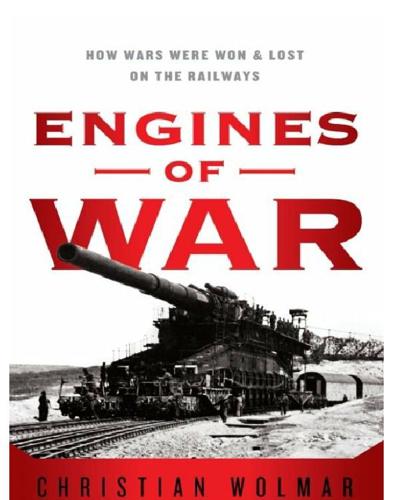
Engines of War: How Wars Were Won & Lost on the Railways
by
Christian Wolmar
Published 1 Nov 2011
Old carriages, mostly from the 1920s and 1930s, were fitted with modern communications equipment to act as mobile emergency control offices and communication centres for government officials in the event of a nuclear war. These works were carried out in secret but later it emerged that at least four of these trains had been formed in 1962, following the Cuban Missile Crisis. They were moved around between half a dozen secret locations, including Faversham, Tunbridge Wells, Derby and York, but appear to have been returned to British Rail in the early 1980s and at least three survive as passenger coaches on preserved lines. Missile trains were the swansong of the military use of railways.
…
Burgoyne, Field Marshal Burma Burma-Siam railway Burton, Anthony Cairo Calais Calcutta Caledonian Railway camels Campbell, Donald canals Cannae, battle of Cape Colony Cape Government Railway Cape of Good Hope Cape to Cairo railway project Cape Town Caporetto, battle of carbon monoxide poisoning Carentan Carlisle Carnegie, Andrew Carpathian Mountains Carter, Ernest cavalry Cossack and First World War Central Ohio Railroad Central Pacific Railroad Centreville, Virginia Chamberlain, Neville Champagne Chancellorsville, battle of Charge of the Light Brigade Charing Cross station chariots Charles the Bold Charleston, South Carolina Chartres Chattanooga, Tennessee Chechen wars Chelyabinsk Chemin de Fer Meusien Cherbourg Chickamauga, battle of Chieveley China and Korean War and Sino-Japanese War and Vietnam War Chinese Eastern Railway Chittagong Churchill, Winston Cirencester Ciurea Clausewitz, Carl von Clifford, Captain Henry coal coffee Cold War Cologne Columbus, Ohio concentration camps Congo Congress of Vienna Constantinople see also Istanbul Cooke, Brian Corfu corps d’armée system Cossacks Côte d’Azur Coventry Crewe Crimea Crimean War Cromarty Firth Cuba Cuban Missile Crisis Czech Legion Czechoslovakia Daily Telegraph Dakar Dalny (Dalian) Damascus Danevirke retreat Danube, river Danville, Virginia Dardanelles Davies, W. J. K. Davis, Jefferson Dawnay, General de Wet, Christiaan Décauville company Deighton, Len Denikin, General Anton Denmark Department of Military Railways Deraa Derby Deutsche Bank Dien Bien Phu, battle of Dimapur Dinton station Dnieper, river Dniester, river Doctor Zhivago Donetz Dornisoara Dover Dresden Dunanreanu, Nicolae Dunkirk Dunkirk evacuation Dvina, river dynamite East Prussia Eastriggs Eboli Edinburgh Egypt Eisenbahntruppen Elbe, river Elburz mountains elephants Engineer and Railway Volunteer Staff Corps Est railway Estcourt Estonia Eugénie, Empress Fakhri Pasha Farakka Faversham Fayolle, Capitaine Feisal, Prince Feldeisenbahnabteilung Feldmann, Lieutenant Ferdinand I, Emperor ferries Ferro, Marc Festing, General Francis Finland First World War Arab Revolt battle of Passchendaele Brusilov offensive defence of Verdun Eastern Front and evacuation of wounded German spring offensive Marne battles and Middle East preparatory phase and diplomacy ‘Race to the Sea’ and railway safety and railway timetables Schlieffen Plan Somme battles supply operations US entry Western Front Flanders Fleming, Peter Flensburg Fliegende Hamburger train Folkestone Fontenoy Ford Model T cars Fort Sumter France allied invasion and ambulance trains colonial interests and Crimean War and Italian wars and Plan XVII railway accidents railway system railways and First World War railways and Second World War size of armed forces and Vietnam War Franco, General Francisco Franco-Prussian War and subsequent wars francs-tireurs Frankfurt Franz Ferdinand, Archduke Franz Joseph, Emperor Fratesti Fredericksburg, Virginia French Resistance French secret services Fuller, William Fusan Gabel, Christopher Galatz Galicia Gallieni, General Joseph-Simon Gallipoli Ganges, river gares régulatrices Garland, Herbert Garrett, John Gaza Geddes, Sir Eric Geneva Genoa George V, King German South-West Africa German-Danish War Germany and air raids and ambulance trains colonial interests railways and First World War railways and Second World War size of armed forces unification see also Prussia Gettysburg, battle of Ghazala Gibraltar Gilinsky, General Girard (engine driver) Girouard, Edouard (Sir Percy) Glasgow Glubb Pasha gold Gordon, General Charles George Gorgopotamus Viaduct Göring, Hermann Görlitz Granson, battle of Grant, General Ulysses Great Central Railway Great Eastern Railway Greece Gretna Junction Grey, Sir Edward Grierson, Colonel Benjamin guerrilla attacks see also sabotage gunpowder torpedoes Gurlt, Dr Hagenau Haifa Haldane, Captain Hamburg Hamilton, J.
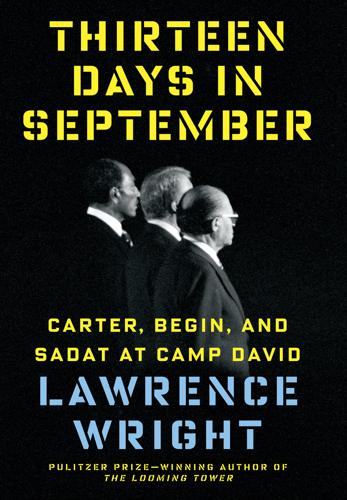
Thirteen Days in September: Carter, Begin, and Sadat at Camp David
by
Lawrence Wright
Published 15 Sep 2014
The lowest, DEFCON 5, represents a state of calm; the highest, DEFCON 1, is all-out thermonuclear war. Kissinger decided to send an urgent and unmistakable message to the Soviets, and—without involving the president—he and members of the National Security Council raised the threat level to DEFCON 3—the highest it had been since the 1962 Cuban missile crisis. He also put the 82nd Airborne Division on alert—troops were actually loaded onto transports and were waiting on the runway for the order to fly to Israel. He then sat back, expecting the Soviets to blink, but the flotilla continued toward Egypt. In a totally unexpected reversal of the forces at play, Sadat saved the superpowers from the clash they were drifting toward.
…
-Israel defense treaty disdained by U.S. plan’s announcement delayed by Carter, Lillian Carter, Littleberry Walker Carter, Rosalynn, prl.1, prl.2, 1.1, 1.2, 1.3, 1.4, 2.1, 3.1, 3.2, 3.3, 4.1, 4.2, 6.1, 6.2, 6.3, 6.4, 6.5, 7.1, 9.1, 10.1, 10.2, 11.1, 11.2, 12.1, 12.2, 12.3, 13.1, epl.1, epl.2 background of at Begin’s Shabbat dinner, 4.1, 4.2, 4.3, 4.4, 4.5 bookkeeping of Camp David prayer of and Carter’s campaigns for governor, 3.1, 3.2 Carter’s courting of community work of as first lady Hurst’s threat against illness of, 12.1, 13.1 Israel visits of, prl.1, prl.2 as most admired woman in the world in move to Hawaii wedding of, 3.1, 3.2 CBS Cemetery Ridge Central Intelligence Agency Begin profiled by, prl.1, prl.2, prl.3, prl.4, prl.5 Sadat profiled by, prl.1, prl.2, prl.3 China, 3.1, epl.1 Chinese Farm Chou En-lai Churchill, Winston, prl.1, 1.1, 1.2, 2.1, 2.2 Church of the Holy Sepulchre civil rights movement Clinton, Bill Clinton Camp David conference Clough, Susan Coastal Highway Cold War constructive ambiguity Cronkite, Walter Crusades, prl.1, 8.1 Cuba Cuban missile crisis Cyprus, prl.1, 5.1 Cyrus the Great Dagon Damascus, prl.1, 10.1 David, King of Israel, 4.1, 6.1, 6.2, 8.1 Davis, Alonzo Dayan, Dvora Dayan, Moshe, 1.1, 7.1, 8.1, 9.1, 9.2, 12.1, 12.2, 12.3 agreement signed by archaeology as interest of, 4.1, 7.1 background of Begin chastised for terrorism by Begin implored to compromise by on Begin’s proposal at Begin’s Shabbat dinner, 4.1, 4.2, 4.3 in British invasion of Syria Camp David doubts of Carter’s request for talk with in charge of Jerusalem holy places on Chinese Farm battle on David and Goliath story death of eye lost by, 1.1, 2.1, 4.1, 6.1 Gaza border patrols of at Gettysburg Israeli army training manual written by Jerusalem considered non-negotiable by Joshua as model for 1973 War as viewed by 1973 War not foreseen by, 10.1, 10.2, 10.3, 10.4 1973 War strategy of, 10.1, 10.2 1973 War television address of occupation disdained by at peace treaty signing poor health of resignation of, epl.1, epl.2 Rotenberg’s eulogy delivered by Sadat convinced of Begin’s insincerity by Sadat’s dislike of Sadat’s position derided by, 2.1, 3.1 Sadat’s talks with, 10.1, 10.2 Sinai plan of, 6.1, 7.1, 8.1, 10.1, 12.1, 13.1 in Six-Day War, 5.1, 5.2 Suez Canal withdrawal proposed by in Suez crisis, 4.1, 4.2, 4.3, 5.1 Tohamy’s lie regarding Tohamy’s meeting with, 1.1, nts.1 U.S. position and, 6.1, 7.1 in War of Independence, 3.1, 3.2, nts.1 Weizman’s rivalry with Dayan, Shmuel Dayan, Yael, 4.1, 4.2 Defense Forces, Israeli Defense Ministry, Israeli Deir Yassin, 12.1, epl.1, nts.1 Delilah, 4.1, 4.2 Denshawi, Egypt détente Diaspora, prl.1, prl.2 Dimona nuclear reactor Disraeli, Benjamin Dogwood Lodge Dome of the Rock, prl.1, 5.1, 8.1, 11.1 East Jerusalem, 2.1, 12.1, 13.1 Eban, Abba, 9.1, nts.1 Eglon Egypt: Arab boycott of in battle with Hittites British occupation of Canaan occupied by civil chaos in Gaza controlled by, 3.1, 4.1 history of Israel’s conflict with Hyksos’s invasion of inflation in in Israel’s War of Independence, 3.1, 3.2, 3.3 oil of Persian occupiers overthrown by revolution in Sadat unpopular in in Six-Day War, 5.1, 9.1 slavery in socialism in, 1.1, 8.1, 9.1 Syria’s defense pact with U.S. aid to in War of Attrition, atn.1, 9.1, nts.1 Egypt Air Eid al-Adha Eilts, Hermann, 1.1, 13.1, nts.1 Einstein, Albert Eisenhower, Dwight, 1.1, 4.1 El Alamein, Egypt El Arish, Egypt, 4.1, epl.1 el-Fatah End of Days, prl.1, 5.1 energy policy Eppler, Johannes, 2.1, 2.2 Eretz Israel in the Past and Present (Ben-Gurion and Ben-Zvi), Eshkol, Levi Ethiopia Exodus, 3.1, 3.2 Fahmy, Hekmet Faisal, Turki al- Fallows, James, prl.1, prl.2 Farouk, King of Egypt, 3.1, 3.2, 4.1 Fatah Finkelstein, Israel, n Fisher, Roger, 5.1, 9.1 Foote, Shelby Ford, Betty Ford, Gerald, prl.1, prl.2, prl.3, 1.1, 3.1, nts.1 Foreign Office, British “Framework for a Comprehensive Peaceful Settlement of the Middle East Problem, The,” 2.1, 2.2 “Framework for a Settlement in Sinai,” 8.1, 8.2 “Framework for Peace,” 11.1, 12.1, 13.1, 13.2 “Framework for the Conclusion of a Peace Treaty between Egypt and Israel,” France, 3.1, 4.1 in Suez Crisis, 4.1, 4.2, 4.3, 4.4, 9.1 Free Officers, 8.1, 8.2 Friedman, Thomas Gandhi, Mahatma Gaza Strip, prl.1, prl.2, 1.1, 1.2, 3.1, 11.1, epl.1, epl.2 Dayan’s border patrols on discussed at Camp David, 1.1, 3.1, 3.2, 5.1, 6.1, 6.2, 7.1, 7.2, 8.1, 8.2, 11.1, 12.1, 12.2, 13.1, 13.2 Egyptian control of, 3.1, 4.1 free movement from history of Israel’s capture of, prl.1, prl.2, 9.1 Gemayel, Bashir Geneva Conference Georgia, race in, prl.1, prl.2 Germany, prl.1, prl.2, 2.1, 2.2, 4.1 Getting to YES: Negotiation Agreement Without Giving In (Fisher, Ury, and Patton), 5.1n Gettysburg, Battle of Gettysburg address Gettysburg National Military Park, 6.1, 6.2, 6.3, 6.4, 10.1, 13.1, epl.1 Ghali, Boutros Givat Shaul, 12.1, 12.2 Golan Heights at Camp David, 3.1, 7.1 Israel’s capture of, prl.1, prl.2, 9.1 in 1973 War, 10.1, 10.2, 10.3, 10.4, 10.5 Goldberg, Arthur, 13.1, 13.2 Golden Gate Golgotha Goliath, 6.1, 6.2 Gorodentchik, Yehoshua Grand Teton National Park Great Britain, prl.1, 2.1, 5.1, 8.1 anti-Semitic attacks in Suez Canal abandoned by in Suez Crisis, 4.1, 4.2, 9.1 Great Depression Greece Guantánamo, Cuba gulags, 2.1, 11.1 Gulf of Aqaba, 4.1, 5.1, 5.2 Hafez, Fawzi Abdel Haganah, 2.1, 2.2, 4.1, 12.1, nts.1 Halakha Hall, Cloyd Hall of Names Halperin, Rachel Hancock County, Ga.
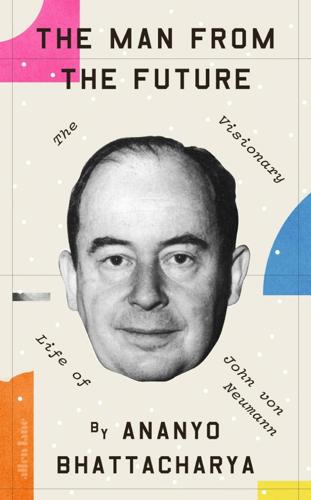
The Man From the Future: The Visionary Life of John Von Neumann
by
Ananyo Bhattacharya
Published 6 Oct 2021
‘One cannot,’ Schelling concluded, ‘without empirical evidence, deduce what understandings can be perceived in a non-zero sum game of maneuver any more than one can prove, by purely formal deduction, that a particular joke is bound to be funny.’88 But Schelling warned such tacit communication may not be enough to prevent a conflict escalating into a nuclear exchange.89 He recommended strengthening channels between the leaders of the US and Soviet Union several years before the Cuban Missile Crisis would expose how poor communication between the two might have disastrous consequences. Like his colleagues at RAND, Schelling thought the threat of ‘massive retaliation’ was not credible when the other side had the capacity to strike back equally massively. The Soviet Union would never be deterred by a policy that would mean national suicide for the US if it was ever acted upon.
…
‘Bertus’ 22, 149, 150 Budapest anti-Semitism 2, 5 Jewish population 2 Kann-Heller 2 Lenin Boys 13 Romanian occupation 13–14 von Neumann’s life in 1–9, 5, 7 Budapest, University of 6–7, 11, 25, 65 Burks, Arthur 125, 130, 231, 235, 243, 258, 265 Burroughs, William S. xiv Bush, Vannevar 77, 107 California Institute of Technology 184, 245 Cambridge, University of, King’s College 70 Cantor, Georg 20, 20–21 carbon dioxide emissions 283 cardinality 23 Carleton University, Ottawa 225 Carter, Jimmy 264 causality 29, 48–9, 51, 60, 76, 298n63 Cayley, Arthur 32 cellular automata see self-reproducing automata Cellular Automata Machine 245 chain reaction, nuclears, Monte Carlo bomb simulations 8, 80, 81–2, 87–8, 133–4 Champernowne, David 151 Champlain, SS 77 chance 144–5 Chandrasekhar, Subrahmanyan 79 Chebyshev polynomials 12–13, 295n32 chess 4, 142–3, 144, 162–3, 164, 257, 289–90n8, 313n51 China 209 Church, Alonzo 118–9 Churchill, Winston 80, 90 cities, segregation 270, 271, 272 ‘clanking replicators’ 261–3, 262 Clauser, John 57 Cliff, Rodger 2654 climate change 283, 284 Clippinger, Richard 135 closed subroutine, the 138 Cockcroft, John 301n23 Codd, Edgar 258 Cold War 218–20183, 203, 208–12 counterforce strategy 222 doctrine of preventive war 208–10 game theory analysis 212–16 ICBM threat 216–18 kill-or-be-killed paranoia 203 little wars strategy 222–4 nuclear deterrence 212–16, 221–224 paranoia 203 preventive war 208–10 Soviet aggression 222 Soviet Union hydrogen bomb test 216–17 VNs view of 208–9 Collbohm, Frank 185–6, 217 Columbia University 78, 213, 214 Communist Party of Germany (KPD) 99 Compleat Strategyst, The (Williams) 189 Computer and the Brain, The (von Neumann) 275–6 computer programmer job born 131–2 ‘low class individuals’ 278 Neumann, Klára Dán von, as one of the first 133, 135, 136–138 computer science, foundations of 70, 121 computers xiii approach to programming 134–5 Atanasoff–Berry 127 Automatic Computing Engine (ACE) 121, 125 Automatic Sequence Controlled Calculator (ASCC) see Harvard Mark I birth of 16, 28, 102–40 closed subroutine 138 coding 115–16 comparison to the brain 273–6 delay-lines 124–5 differential analysers 107–8 earliest 73 quantum 59 women’s role 85–6, 108–9, 120–1 differential analyser 107–8 EDVAC patent dispute 125–6, 127–8 EDVAC report 121–7 see First Draft of a Report on the EDVAC (von Neumann) ENIAC xi, 1054–11, 106, 120, 123, 124, 126, 127–8 ENIAC conversion 130–5, 309–10n68 First Draft of a Report on the EDVAC (von Neumann) 111, 121–7111 for-loops 116 Gödel’s contribution 111–18 Harvard Mark I 104 human 120–1 IAS project 127, 128–30, 131, 138–9, 140, 193 IBM 701 14039 JOHNNIAC 193, 194 Manchester Baby 138 MANIAC I 137, 139, 310n77 origin of 28 program-controlled 119–20 Project PY 1101 proliferation 272–3 RAND Corporation and 192–3 size 106 Small-Scale Experimental Machine (SSEM) see Manchester Baby 138 storage capacity 123 stored-program 120, 121, 122 see also First Draft of a Report on the EDVAC subroutines 119 Turing’s contribution 118–21 the universal Turing machine 118–21, 306–7n35, 307n37 virus, first 236 VNs contribution 122, 125–76, 129–130, 131, 139–140, 308n48 VNs early interests in 79–80, 103–5 von Neumann architecture 123, 128, 275 von Neumann bottleneck 123 Conan Doyle, Arthur, ‘The Final Problem’ 153–4, 165–6, 165, 314n52 Conferences on Cybernetics 227 Connes, Alain 62 Conus textile sea snail 249 Conway, John Horton 237–41, 243 hexagonal packing of circles 237, 238 Life 239–41, 239, 240, 242, 243, 244, 245, 257 Universal Turing Machine within 241, 243 survey of life forms 240 Universal Turing machine 241, 243 cooperative game theory 172–3, 176, 178, 196–7 Copeland, B. Jack 121–2, 307n37 Copenhagen 58, 76 Copenhagen interpretation 46, 48–9, 53, 54 critique of 46–8 history of 296n43 inadequacies of 58–60 Courant, Richard 63–4 Coy, Wolfgang 111 Crick, Francis 230, 231 Critchfield, Charles 83 Cuban Missile Crisis 221 Czechoslovakia, Nazi annexation of the Sudetenland 76 Dantzig, George 191–2, 193, 317n21 Darwinian Marxism 225 Davis, Martin 116, 198 Dawkins, Richard 179, 181, 257 de Broglie, Louis 33, 54–5 Debreu, Gérard 151 decomposable games 171–2 DeepMind 275 defence budgets 188 Defense in Atomic War (von Neumann) 221 delay-lines 124–5 Delbrück, Max 226–7, 231 Delicate Balance of Terror, The (Wohlstetter) 215–16 depth charges 188 Descartes, René 229 determinism 52 DeWitt, Bryce 58 Dick, Philip K. xii, 225 ‘Autofac’ 231–2, 232, 233, 261, 263 Dieks, Dennis 54 differential analysers 107–8 digital cosmogenesis 245–6 Dirac, Paul 36–7, 52, 60 Dirac delta function 37, 38–9 DNA 62, 227, 230–, 231 Douglas, Donald 185–6, Douglas Aircraft Company 185–6, 187 Dr Strangelove (film) xiii, 215, 219 Dresher, Melvin 204–8 Drexler, Eric 261, 268–9 du Bois-Reymond, Emil 20 duels, mathematics of 194–67 Dulles, John Foster 210, 222 Dyson, Freeman xiv, 12–13, 37, 61, 96, 231, 253, 263–4 Dyson, George 1398 Eckart, Carl 280 Eckert, J.
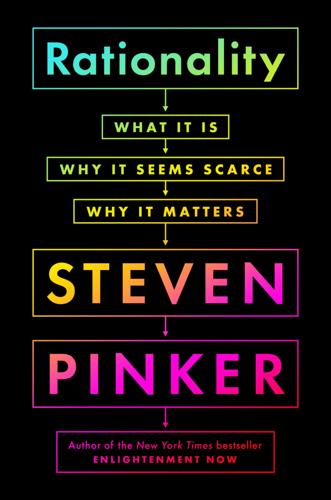
Rationality: What It Is, Why It Seems Scarce, Why It Matters
by
Steven Pinker
Published 14 Oct 2021
We play it when we drive or walk along a narrow path and face an oncoming traveler, requiring that someone yield, and when we engage in formal and informal bargaining. Public examples include foreclosing or defaulting on a debt, and brinkmanship standoffs in international relations like the Cuban Missile Crisis of 1962. Chicken has a Nash equilibrium in which each player takes some chance at standing his ground and otherwise swerves, though in real life this solution may be moot because the rules of the game may be enriched to include signaling and alterations to the strategy set. In chapter 2 we saw how a paradoxical advantage can go to a player who is visibly crazy or out of control, making his threats credible enough to coerce his opponent into conceding—though with the shadow of mutual destruction hanging over them if both go crazy or lose control simultaneously.12 Some games consist not of a one-shot encounter in which the players make a single move simultaneously and then show their hands, but a series of moves in which each responds to the other, with the payouts settled up at the end.
…
See left and right (political) consistency, 82 conspiracy theories adherents of, equivocal, 298–99 beliefs in, not based on truth of, 302 COVID-19, 283–84 as entertainment, 303, 308 and evolution of ideas, 308–9 openness to evidence vs., 311 police, reporting to, 299, 308 popularity of, 286 as predating social media, 287 real conspiracies and, 307–8 reflective vs. intuitive, 299 rumor and, 308 signal detection and, 307–8 consumers extended warranties, 197–98 as money pumps, 176, 180, 185, 187–88 contradiction, anything follows from, 81–82 conventions and standards, 234–35 conversation, rules of, 10, 21, 28, 30, 78–80, 87–88, 308, 343n43 cooperation in the Prisoner’s Dilemma, 239–42 in Public Goods games, 242–44 coordination games, 233–35 correlation causation not implied by, 245–47, 251–52, 312, 321, 323–24, 329–30 coefficient (r), 250–51 cross-lagged panel correlation, 269–70 definition, 247 definition of “prediction,” 247 illusory, 245–46, 251–52, 321 San people and, 4 scatterplots, 247–52, 270–71 See also causation; regression Cosmides, L., 169 counterfactuals, 64, 257, 259, 264 heretical, 64–65 COVID-19, 2, 193–94, 242, 283 exponential growth bias and, 11–12 media fear mongering, 126–27 misinformation, 245, 283–84, 296, 316 Coyne, Jerry, 302 creationism, 173, 295, 305, 311 credit card debt, 11, 320–21 crib death, 129–30 Crick, Francis, 158 crime availability bias and perceptions of, 126 confirmation bias and, 13–14 Great American Crime Decline, 126 gun control and rates of, 292–93 and punishment, 332–33 rational ignorance and, 58 regression to the mean and, 255–56 signal detection and, 202, 216–21, 352n17 statistical independence and, 129 See also homicide; judicial system critical race theory, 123 critical theory, 35–36 critical thinking, 34, 36, 40, 87, 287, 314, 320 definition, 74 San people and, 3–4 stereotypes and failures of, 19–20, 27 teaching, 82, 87, 314–15 The Crown (TV series), 303 CSI (TV show), 216 Cuban Missile Crisis, 236 d, 214–16, 218–21, 352n17 Darwin, Charles, 173 data, vs. anecdotes, xiv, 119–22, 125, 167, 300, 312, 314 data snooping, 145–46, 160 Dawes, Robyn, 175 Dawkins, Richard, 302, 308 Dean, James. See Rebel Without a Cause death, 196, 197, 304 death penalty, 221, 294, 311, 333 deductive logic, 73–84, 95–100, 102, 108–9 deep learning networks biases perpetuated by, 107, 165 the brain compared to, 107–9 definition, 102 error back-propagation and, 105–6 hidden layers of neurons in, 105–7 intuition as demystified by, 107–8 logical inference distinguished from, 107 terms for, 102 two-layer networks, 103–5 De Freitas, Julian, 343n46 demagogues, 125, 126 democracy checks and balances in, 41, 316, 317 corrosion of truth as undermining, 309 data as a public good and, 119 education and information access predicts, 330 and peace, 88, 264, 266, 269–72, 327 presumption of innocence in, 218 and risk literacy, importance of, 171 and science, trust in, 145 Trump and threats to, 126, 130–31, 284, 313 Democratic Party and Democrats COVID-19 conspiracy theories involving, 283 expressive rationality and, 298 politically motivated numeracy and, 292–94 See also left and right (political); politics Dennett, Daniel, 231, 302 denying the antecedent, 83, 294 denying the consequent, 80–81 deontic logic, 84 dependence among events conjunctions and, 128–31, 137 defined via conditional probability, 137 falsely assuming, 131 the “hot hand” in basketball and, 131–32 the judicial system and, 129–30 selection of events and, 132 voter fraud claims and, 130–31 depression, 276–77, 276, 280 Derrida, Jacques, 90 Descartes, René, 40 deterministic systems, 114 Dick, Philip K., 298 dieter’s fallacy, 101 digital media ideals of, 316 truth-serving measures needed by, 314, 316–17 Wikipedia, 316 See also media; social media Dilbert cartoons, 91, 112–13, 112, 117 DiMaggio, Joe, 147–48 discounting the future, 47–56, 320 discrimination, forbidden base rates and, 163–66 disenchantment of the world (Weber), 303 disjunction of events, probability of, 128, 132–34 disjunctions (or), definition, 77 disjunctive addition, 81 disjunctive syllogism, 81 distributions, statistical, 203–5 bell curve (normal or Gaussian), 204–5 bimodal, 204 fat-tailed, 204–5 Ditto, Peter, 293–94, 297 DNA as forensic technique, 216 domestic violence, 138–39 Dostoevsky, Fyodor, 289 Douglass, Frederic, 338–39 dread risk, 122 dreams, 13, 304 Dr.
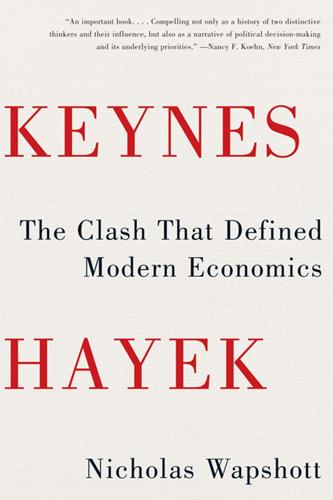
Keynes Hayek: The Clash That Defined Modern Economics
by
Nicholas Wapshott
Published 10 Oct 2011
Byrd Sr. of Virginia, chairman of the Senate Finance Committee, who remained staunchly opposed to deficits. For two years Kennedy did little to stimulate the economy beyond the huge sums spent on defense and space, both of which, like Eisenhower, he claimed were essential to national security, an argument that took on added weight after the Cuban Missile Crisis of October 1962. Military and space expenditures accounted for three-fourths of all spending increases during Kennedy’s presidency, and space funding rose even more dramatically, from $1 billion in 1960 to $6.8 billion four years later.51 Yet despite this massive injection of public money, joblessness continued to rise.
…
H., 24 collective bargaining, 60 collectivism, 29, 144–45, 202, 219–20 Collectivist Economic Planning: Critical Studies on the Possibilities of Socialism (Hayek, ed.), 144–45 “Colloque Walter Lippmann,” 210–11 Columbia University, 28, 160, 216 Commerce Department, U.S., 166 Committee on Economic Information, 123–24 Committee on Economic Outlook, 61–62 Committee on Social Thought, 217–18 commodities, 52 communism, 9, 32, 87, 145, 191, 194, 196–97, 213, 221, 267, 287 Companion of Honour, 288 competition, 2, 34–35, 69, 179–81, 193, 268 composite rates of interest, 120–21 concentration camps, 151, 223 “Conditions of Equilibrium between the Production of Consumers’ Goods and the Production of Producers’ Goods, The” (Hayek), 75–76 Congress, U.S., 158, 165, 189, 221, 228–29, 235, 236, 237, 238, 239, 245, 271, 272–74, 275, 278, 279, 280, 281, 283 Congressional Budget Office (CBO), 274, 276 Connally, John, 242–43, 335n Conscience of a Conservative, The (Goldwater), 251–52 conscientious objectors, 8 conservatism, xiii–xiv, 17, 36–37, 94, 124–25, 135, 162, 203–6, 216, 220–21, 232, 233, 238, 242, 251–61, 268, 272, 274–75, 278, 281, 288, 292, 293, 296, 333n Conservative Party (Tories), 12, 33, 38, 40, 58, 83, 86, 123, 140, 203, 258–61, 295 Constitution, U.S., 204, 230, 292–93 Constitution of Liberty, The (Hayek), 218–23, 290 consumer credits, 77 consumer prices, 41, 49–50, 54–55, 76–77, 81, 117–18, 143–44, 184–87, 189, 191, 224, 229–30, 267–68 consumption, 81–82, 119–20, 127, 131, 143–44, 184–87, 191 contractions, monetary, 217, 248–49 “Contract with America,” 272–74, 278, 293 corporations, 145, 233, 262, 264, 267–68, 275, 293 corporatist states, 145, 293 corruption, 159, 250, 277, 278 Council of Economic Advisers, 229, 231–32, 236, 242, 244, 278 “creative destruction,” 294 Credit-Ansalt Bank, 83 credit derivatives, 275 credit policies, 25, 43, 55, 79, 84–85, 100, 117–18, 136–37, 142, 160, 188, 279, 280–81 Crimean War, 11 Cromwell, Oliver, 140 Croome, H. M., 139, 140 Cuban Missile Crisis, 237 currencies: —Bretton Woods agreement on, 56, 193, 198, 243, 255 —devaluation of, 159–60, 243 —dollar as basis of, 31–32, 37–40, 56, 159–60 —exchange rates for, 22, 26–27 —fixed-price, 23, 37–40, 55–56 —floating price of, 37, 38–39, 56 —gold standard for, 22–23, 25, 26–27, 28, 37–40, 55–56, 72, 73, 85–87, 94, 136–37, 159–60, 193, 243 —international regulation of, 55–56, 193, 243, 255, 282–83 —Keynes’s views on, 22–23, 31–32, 37–40, 55–56, 82, 85–86, 136–37, 159–60, 193 —markets for, 22, 26–27, 52 —printing of, 22, 25, 131, 136, 149–50 —stability of, 136–37 —unemployment rate and, 31–32, 38–40, 56, 85–87 —value of, 26–27 Currie, Lauchlin, 165–66, 170 Curtin, John, 227–28 Czechoslovakia, 9, 17, 18 Czech Republic, 266 Daily Herald (London), 86 “Danaid jar,” 127 Darwin, Charles, 35, 43, 132 Darwinism, 35, 43 Davenport, John, 221 Dawson, Geoffrey, 133 debt: —banking policies on, 31–33, 41, 84 —interest on, 74 —national, 12, 84, 85, 86, 135, 154–55, 165, 224, 237, 241–42, 259, 264–65, 272–75, 276, 282–83 —personal, 144, 278–80 —war, 4–5, 8–14, 21–22, 31–32, 84, 155–57, 206 Defense Department, U.S., 232 “deferred pay,” 191–92 deficit financing, 86, 135, 154–55, 163, 165, 233, 234–35, 237, 240, 241–42, 243, 245, 264–65, 267, 274–75, 277–78, 283 deflation, 24–25, 32, 37, 39, 111–12, 135–36, 141–42, 188–89, 276, 277 DeLay, Tom, 273, 274 democracy, 9, 37, 151, 189, 193, 196–97, 202, 204–5, 219–23, 252, 266, 288–89, 291–93 democratic egalitarians, 35 Democratic Party, 235, 237, 244, 271, 275, 283, 293, 320n Denmark, 289 Dennison, Stanley, 248 depressions, economic, 54–55, 77–78, 79, 228, 230, 233, 287–88, see also Great Depression devaluation, currency, 159–60, 243 Diaghilev, Sergei, 53 “Dilemma of Thrift, The” (Foster and Catchings), 48–50 Dillon, C.
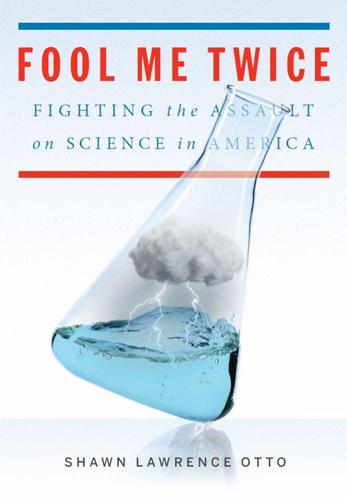
Fool Me Twice: Fighting the Assault on Science in America
by
Shawn Lawrence Otto
Published 10 Oct 2011
Five days before the thwarted invasion, the Soviets had sent the first human into orbit, pulling the rug out from under Kennedy’s campaign rhetoric about besting them in the space race. Soviet premier Nikita Khrushchev was testing him in every way he could, keeping him on the ropes, a pattern that would continue all year long and include the building of both the Berlin Wall and the nuclear missile sites that resulted in the Cuban Missile Crisis. Back on his heels, his credibility on the line, Kennedy looked weak and outclassed. He needed a way to turn the political boxing match around and assert his leadership. He turned to the Moon—not for science’s sake, but to use science to beat Khrushchev. He later admitted as much in a November 1962 meeting with NASA administrator James Webb.
…
See also Soviet Union Competitiveness, economic, 155–56 Complexity of world, 6, 34, 122 Conant, John B., 75 Concept collapse, 118 Conflict frame, 180–82, 203–5 Conservapedia.com, 287–88 Conservativism, 59–61, 131, 284–85, 287–88 Consilience, 4 Copernicus, 23, 120 Cornwall Alliance, 260–61, 299–300 Correctness, political, 130 Cosmos (television show), 105 Costanza, Robert, 259, 265, 267 Creationism, 15, 18, 164–70, 178, 184–85 Crick, Francis, 78 CRU, 200–205, 210–12, 214–15 Crutzen, Paul, 229 Cuban Missile Crisis, 93–94 Cuccinelli, Ken, 217–18 Cultural studies, 128–29 Culture wars, 123–24, 129, 149, 163, 177–81 Curtis, Heber, 67 Cynicism of baby boomers, 97–99 D Darrow, Clarence, 65 Darwin, Charles, 64, 99, 117, 168. See also Evolution Dawkins, Richard, 126–27 Deductive reasoning, 43 Deepwater Horizon oil spill, 250–51, 265 Deficit model of science, 288–90 DeLay, Tom, 14–15 Democracy biology and, 54–55, 90 challenges facing, 33–34 complexity of world and, 6 danger of, 315 freedom and, 250, 252 Jefferson’s argument for, 51–53 knowledge and, 3–4, 90, 219 plurality and, 111 politics and, 87 science and, 55–57, 90, 97, 123, 157, 245–47 Democratic Party, 17, 59–61, 290 Demonstrative knowledge, 50 Denialism, 6, 130, 138, 195, 221–23, 296 Descartes, René, 43–45, 50 Desegregation, 124 Deutsch, George, 16 Diamond, Sara, 110 DNA, 78, 120 Dobson, James, 111 Doppler effect, 68 Douglas, Stephen, 87 Dualism, 43 Dubner, Stephen, 229–31 Duck and Cover (film), 80, 84 Dumbing down of nation, 11–15, 143–45 Dyck, Markus, 194 E Earth, age of, 27–28 Eberle, Francis, 292 Economics climate change and, 223–24 commoditization and, 312–13 ecosystem services and, 258 externalities and, 253 growth of economy and, 256–57 market, 302 in Middle Ages, 25 natural public capital and, 258, 265 opportunity cost and, 257 science and, 187, 255–56 SEEP challenges and, 187 self-interest and, 250, 260 sustainability and, environmental, 258, 261 tragedy of the commons and, 247–51, 268 tyranny on the commons and, 253–55 Ecosystem services, 258, 265 Ecosystem, value on, 259 Education Bloom’s view of, 127–28 cultural studies and, 128–29 desegregation and, 124 inclusiveness and, 126 Jefferson’s view of public, 34, 59 objectivity and, 126–28 science, 124–25, 291–93 sex, 17, 274–76, 279 social constructivism and, 125–26 Ehlers, Vernon, 14–15, 222 Ehrlich, Paul, 256 Einstein, Albert, 61–63, 69–70, 75, 77–78, 114, 119, 141–42 Eisenhower, Dwight D., 82, 90, 97, 314–15 Electromagnetic field health risks, 140–43 Elitism, 91 Endangered Species Act, 20, 192, 195 Energy companies, 197–98, 201, 224, 239 Energy conservation, 240–41 Engagement of science, 8, 293–94 English common law, 39–40 Enlightenment, 46, 112 Environmental problems, 96, 101–2, 252.
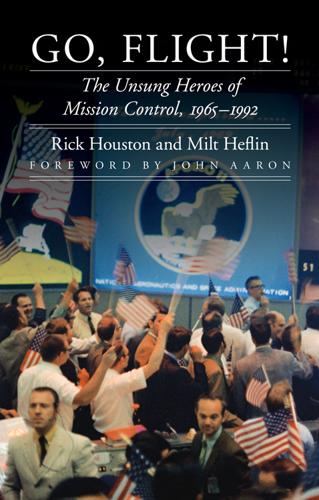
Go, Flight!: The Unsung Heroes of Mission Control, 1965-1992
by
Rick Houston
and
J. Milt Heflin
Published 27 Sep 2015
After getting his degree from Lamar University in Texas in January 1960, Rod Loe and his new bride, Tina, packed up and moved to Seattle. There he went to work for Boeing’s engineering development program and eventually pitched in on the company’s proposal for the Lunar Module. A transfer meant moving to New Orleans and the Michoud Assembly Facility, home to Boeing’s S-IC first stage, in the midst of the October 1962 Cuban Missile Crisis. There was a small problem when he and his expecting wife arrived in Louisiana—nobody was needed in the engineering development program, and there was a long way to go before hardware was going to be ready for testing. Instead, he went to work for what amounted to customer service, writing manuals for the S-IC’s ground support equipment.
…
The letter NASA bosses wrote on his behalf requesting a deferment almost made it seem that if it had not been for Mill, the whole country would have gone down in flames. It seemed very close to doing so any way. And then there were the Soviets. It was impossible to forget about the bad guys on the other side of the world. The Cuban Missile Crisis in October 1962 brought the world to the brink of a nuclear holocaust, and while that scare passed, others remained firmly entrenched. When the Russians established some new high ground in the space race, retro officer John Llewellyn came banging on the door of Glynn Lunney’s home early in the morning and demanding that the both of them go into work right then and there to do something about it.

A City on Mars: Can We Settle Space, Should We Settle Space, and Have We Really Thought This Through?
by
Kelly Weinersmith
and
Zach Weinersmith
Published 6 Nov 2023
Nothing suggests that the use of rockets is fundamentally about science or inspiration or unity. You are someone who’s seen almost twenty years of an arms race and now an enormous increase in spending in a worldwide public relations battle. Then, all of a sudden, nuclear weapons are making miniature suns in the sky, and the world sits on the edge of its seat watching the Cuban Missile Crisis. This then is the view of space most relevant to space law. In this picture, space activity, especially when it involves humans, is tactical. It’s about power and survival. It’s not a world of heroes—it’s a world of dangerous motivations that need to be constrained. But in 1962, space is largely unregulated.
…
See also Moon: lacks carbon carbon dioxide, 47, 139, 341 and biospheres, 183, 186 on Earth, 358 on ISS, 78, 298 on Mars, 139, 142–44 on Venus, 161 Carrington, Richard, 55 Carrington Event (1859), 55 Carter administration, 31 Case for Mars, The, 4–5 cement, 23–25 Chaffee, Roger, 49 Chernobyl, 58 Chicago Convention (1944), 236 children, in space with disabilities, 85–86 and ethics, 82, 85–86 and gravity, 77–78, 83–84 and mental health issues, 110 and radiation, 52, 80 raising of, 11, 77, 138, 188, 344 space medicine and, 77 See also babies, in space Chile, 282–84, 284, 285–86, 331 China, 2, 24, 277, 325, 367 collects lunar regolith, 250 destroys satellite, 50, 51, 241 leader in space travel, 252 lunar plans of, 14, 135, 263–64, 269 and private-property regime, 306 research in space, 182, 188, 384–85 rockets and, 220 space assets of, 361–62 and Space Race, 13–15, 232, 270–71 space stations of, 46 treaties and, 262, 268, 292 Yutu-2 rover of, 196 Clarke, Arthur C., 145 Cleave, Mary, 178 climate change, 16, 22, 32, 36, 137, 154, 369 Closed Ecology Experiment Facilities (CEEF) (Japan), 188–89 Cockell, Charles, 51, 387 Colbert, Stephen, 96 Cold War, 30, 167, 225, 231–32, 296 Collins, Eileen, 103–4 Collins, Michael, 104, 216 Colombian constitution, 10, 39 comets, 132 common heritage of mankind (CHM), 257–58, 259, 260–61, 290, 292, 303 commons Antarctica as, 279–80, 287–88 deep seabed as, 279–80, 289–90, 292 explanation of, 280–82 peacefully managed, 279–81 the sea as, 324 space as, 12–13, 255, 279, 294, 308, 323–26 company towns explanation of, 335–38 labor issues and, 336, 338, 340–47 on Mars, 333–34, 347 Russian “monotowns,” 337, 341, 344 for space settlements, 333–48 computer chips, 357 conservation biology, 351–54 Convention on the Regulation of Antarctic Mineral Resource Activities (CRAMRA), 287, 289 Cook, Frederick, 29 Cooper, John C., 239 Corner Brook, Newfoundland, 336–37 corporations, in space, 2, 9, 335–36, 344–47, 362 Cosmonautics Memorial Museum (Moscow), 44 cosmonauts, 48, 269 amusing names of, 378–79 anthem of, 382–83 candidates for, 94 day-to-day life of, 72, 96–97, 102, 178–79 first into space, 32, 43, 227 health of, 96–102, 104 length of time in space, 45, 98 training of, 50, 378 women, 32–33, 104 See also specific names Craters of Eternal Darkness (Moon), 128, 130, 131, 132–34, 291 Cristoforetti, Samantha, 55 Cuba, 227, 356 Cuban Missile Crisis, 230 cyberattacks, 362, 367–68 Cyprus, 320, 321 D Dark Skies: Space Expansionism, Planetary Geopolitics, and the Ends of Humanity (Deudney), 15, 388 Davis, Jan, 73 death, in space, 46–48, 50, 323 decolonization, 225, 316–17, 320–21 decompression sickness, 48 Defense Innovation Unit, 14 Deudney, Daniel, 15–16, 86, 376–77, 388 deuterium, 142 developing nations, 26, 260, 290, 292–93 disease, 123, 137, 223, 352, 354 Disney, 31, 222, 312–13 Dobrovolsky, Georgy, 48 Dolman, Everett, 232, 359 Draper, Charles Stark, 227 Duke, Charlie, 179 Dunstan, James, 244 E Eagle lander, 179 Earth death of, 22, 352, 356–58 deep gravity well of, 126, 149, 368 heavy objects thrown at, 8, 15, 145 homogenized, 16, 33–35 magnetosphere of, 54–55, 58, 68 more land needed for, 153–54 pathogens/parasites on, 84 returning to (from space), 84, 109–10, 140–41, 344 saving it, 2, 16–17 space “analogs” on, 105–7 space goods sold in, 124–25 Eating In: From the Field to the Kitchen in Biosphere 2 (Silverstone), 185, 190 ecology, 4, 358 closed-loop, 182–91 research needed on, 385–87 saving it, 17, 23–25 See also Biosphere 2 economics, in space advantages of, 2, 4 of asteroids, 159 exporting/selling of, 124–25, 141–42 and the Moon, 14, 141–42, 218, 269–70 won’t make us rich, 25–27 economy, in space, 155, 382 autarky/independence and, 22, 356–58, 367 and company towns, 343–46 dangers of, 334, 377 diversity for, 348 labor mobility and, 346–47 on Mars, 22, 348 on the Moon, 269 New Space Race and, 14 and transit times to space, 387 economy, on Earth, 17, 26, 159, 270 ecosystem building of, 182–83, 385 design of, 171–72, 185, 187 needed for food/clean air, 97 research needed on, 385 self-contained, 182–84 small-scale experiments of, 188–90 sustainability of, 189 Ehresmann, Manfred, 204 Ehricke, Krafft, 134 Eisenhower, Dwight D., 227, 235 elements on Mars, 142–44, 183, 208 on the Moon, 127–28, 183, 208 Elvis, Martin, 159, 246–47, 357, 388 emotion sensors, 90 Endeavor space shuttle, 73 energy, for space habitats, 143, 192 nuclear, 193, 195–97 nuclear fission reactors, 197–99, 209 and shielding, 203 solar, 193–95, 209 engineers, 35, 49, 219, 221, 224 environment, saving it, 18, 23–25, 154 environmental calamity, 17, 137, 358 degradation, 156–57, 292 monitoring, 376 movement, 153–54, 156–57 Escamilla, Mario, 330 ethics, 81–82, 85–87, 344, 355, 358, 385 Eu:CROPIS, 181–82 Europe, 154, 232, 292, 318, 325, 354, 368 European Space Agency, 13, 24, 181–82, 188, 269 exercise, 61–62, 77, 92 F FAA Commercial Space Astronaut Wings Program, 237 Fabio, 96, 140 famines, 17, 156–57 farming, in space.

The Speech: The Story Behind Dr. Martin Luther King Jr. S Dream
by
Gary Younge
Published 11 Aug 2013
There was barely a moment during his brief presidency when he was not confronted with crisis. Within seven months of his taking office, construction began on the Berlin Wall, and an attempt at fomenting a coup in Cuba, where the revolution had succeeded just two years before, had failed miserably. The Cuban Missile Crisis, less than a year before the March on Washington, had brought the Cold War to his doorstep and the world to the brink of nuclear catastrophe. On the day of the march, he met with advisers to discuss whether to back a coup in Vietnam. And as Kennedy lectured the world on democratic values, here was evidence in Birmingham that the United States was seeking to export something it could not grow at home.
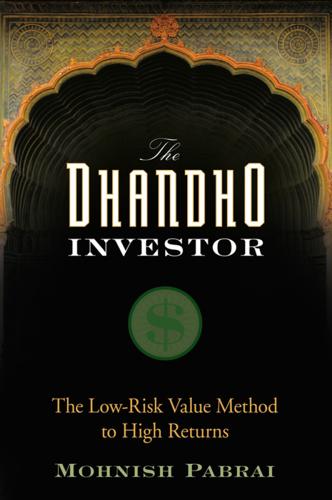
The Dhandho Investor: The Low-Risk Value Method to High Returns
by
Mohnish Pabrai
Published 17 May 2009
The key, however, is to wait patiently for that super-fast pitch down the center. It is during times of extreme distress and pessimism that rationality goes out the window and prices of certain assets go well below their underlying intrinsic value. Extreme distress can be caused by macro-events like 9/11 or the Cuban missile crisis. Or they can be company specific—for example, Tyco’s stock price collapse during the Dennis Kozlowski corruption scandal. We cannot predict which asset classes are likely to get distressed next. However, if we only focus on a single asset class of stocks, that encompasses thousands of businesses.
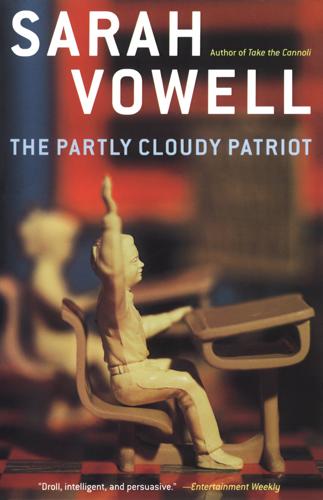
The Partly Cloudy Patriot
by
Sarah Vowell
Published 26 Aug 2002
Pei—designed white box, JFK’s life and death unfold primarily on television monitors and video screens. I walk in suspicious. I have never particularly worshiped Jack Kennedy. I mean, he didn’t really do anything. Except talk. He spoke of civil rights, but it was Lyndon Johnson who got actual laws passed. And then there’s the minor matter of the Cuban Missile Crisis, perhaps the scariest single week in the history of the world. And yet, at JFK’s library, I found myself hoodwinked by pretty words. I stood there, transfixed by the film of his Inaugural Address: Now the trumpet summons us again—not as a call to bear arms, though arms we need—not as a call to battle, though embattled we are—but a call to bear the burden of a long twilight struggle, year in and year out, “rejoicing in hope, patient in tribulation”—a struggle against the common enemies of man: tyranny, poverty, disease, and war itself….
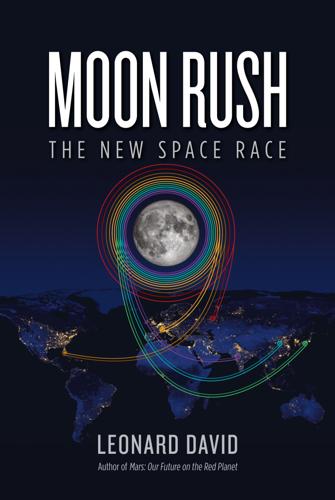
Moon Rush: The New Space Race
by
Leonard David
Published 6 May 2019
But because of those tensions, the Earth-circling Sputnik vividly verified that Russia had the booster power to hurl a warhead on a ballistic trajectory to any point on the planet. As American historian Daniel Boorstin reflected: “Never before had so small and so harmless an object created such consternation.” With Sputnik serving as a slap in the face, the following years saw the shoot-down of an American U-2 spy plane in Soviet airspace and the Cuban missile crisis, which brought the two countries to the brink of war. Sputnik 1 had another effect: It sparked the “space race.” A fierce, competitive contest had begun. Sputnik galvanized unexpected governmental change in the United States, and led to the 1958 creation of NASA. The ultimate goal—for both countries—was not purely to send a metal sphere around Earth, but instead to launch humans into space and to attain the wherewithal to head for the Moon.

Collapse
by
Jared Diamond
Published 25 Apr 2011
In early 1961 they fell into poor group decision-making practices that led to their disastrous decision to launch the Bay of Pigs invasion, which failed ig-nominiously, leading to the much more dangerous Cuban Missile Crisis. As Irving Janis pointed out in his book Groupthink, the Bay of Pigs deliberations exhibited numerous characteristics that tend to lead to bad decisions, such as a premature sense of ostensible unanimity, suppression of personal doubts and of expression of contrary views, and the group leader (Kennedy) guiding the discussion in such a way as to minimize disagreement. The subsequent Cuban Missile Crisis deliberations, again involving Kennedy and many of the same advisors, avoided those characteristics and instead proceeded along lines associated with productive decision-making, such as Kennedy ordering participants to think skeptically, allowing discussion to be freewheeling, having subgroups meet separately, and occasionally leaving the room to avoid his overly influencing the discussion himself.
…
Irving Janis, Groupthink (Boston: Houghton Mifflin, 1983, revised 2nd ed.) explores the subtle group dynamics that contributed to the success or failure of deliberations involving recent American presidents and their advisors. Janis's case studies are of the 1961 Bay of Pigs invasion, the American army's crossing of the 38th parallel in Korea in 1950, American's non-preparation for Japan's 1941 Pearl Harbor attack, America's escalation of the Vietnam War from 1964 to 1967, the Cuban Missile Crisis of 1962, and America's adoption of the Marshall Plan in 1947. Garrett Hardin's classic and often-cited article "The tragedy of the commons" appeared in Science 162:1243-1248 (1968). Mancur Olson applies the metaphor of stationary bandits and roving bandits to Chinese warlords and other extractive agents in "Dictatorship, democracy, and development" {American Political Science Review 87:567-576 (1993)).
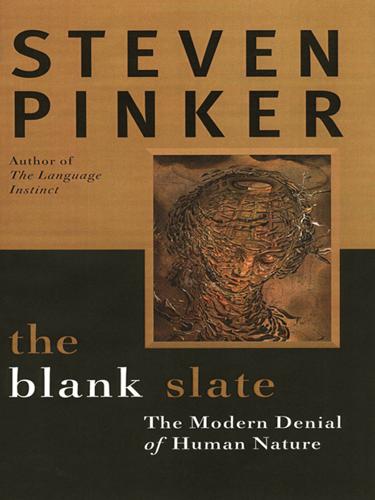
The Blank Slate: The Modern Denial of Human Nature
by
Steven Pinker
Published 1 Jan 2002
If the other side responded with a respite in kind, long periods of unofficial peace broke out beneath the notice of their bellicose commanders.107 As a British soldier said, “We don’t want to kill you, and you don’t want to kill us, so why shoot?”108 The most consequential episode in which belligerents sought a way to release their deadly embrace was the Cuban Missile Crisis of 1962, when the United States discovered Soviet nuclear missiles in Cuba and demanded that they be removed. Khrushchev and Kennedy were both reminded of the human costs of the nuclear brink they were approaching, Khrushchev by memories of two world wars fought on his soil, Kennedy by a graphic briefing of the aftermath of an atomic bomb.
…
The World War I soldiers changed the rules in a way that has been much discussed in evolutionary psychology: play it repeatedly and apply a strategy of reciprocity, remembering the other player’s last action and repaying him in kind.110 But in many antagonistic encounters that is not an option, because when the other player defects he can destroy you—or, in the case of the Cuban Missile Crisis, destroy the world. In that case the players had to recognize they were in a futile game and mutually decide to get out of it. Glover draws an important conclusion about how the cognitive component of human nature might allow us to reduce violence even when it appears to be a rational strategy at the time: Sometimes, apparently rational self-interested strategies turn out (as in the prisoners’ dilemma…) to be self-defeating.
…
cooperation Coren, Stanley cortex auditory prefrontal ventromedial visual Cosmides, Leda Council on Bioethics Cowen, Tyler creationism Crick, Francis crime genetics and peer groups and punishment and see also rape; violence; psychopathy Crime in America (Clark) Crime of Imprisonment, The (Shaw) Crime of Punishment, The (Menninger) critical period critical theory Critique of Practical Reason (Kant) Crittenden, Danielle Croce, Jim Cronin, Helena Cuban Missile Crisis Cultural Revolution vcultural studies culture: autonomy of differences in emotions and epidemiological models of learning of material success and neural circuitry and socialization and stability and change in Culture of Honor (Nisbett and Cohen) Dahmer, Jeffrey Daly, Martin Damasio, Antonio Damasio, Hannah Daniels, Denise Danto, Arthur Darkness in El Dorado (Tierney) Darrow, Clarence Darwin, Charles Darwinian Left, A (Singer) Dawkins, Richard deafness Death by Government (Rummel) decision making Declaration of Independence deconstructionism see also postmodernism Deep Blue Degler, Carl de Kenessey, Stefania Delaney Clause Delay, Tom democracy Denfeld, Rene Dennett, Dan Derrida, Jacques Derrière Guard Descartes, René determinism deterrence Devil’s Dictionary, The (Bierce) DeVore, Irven de Waal, Frans Dialectical Biologist, The (Levins) dialectical biology Dialogue Concerning the Two Chief World Systems (Galileo) Diamond, Jared Dickeman, Mildred Dickens, Charles Dickinson, Emily Dictator game Didion, Joan difference feminism Discovery Institute discrimination age sex Disney, Walt Disraeli, Benjamin Dissanayake, Ellen Divale, W.
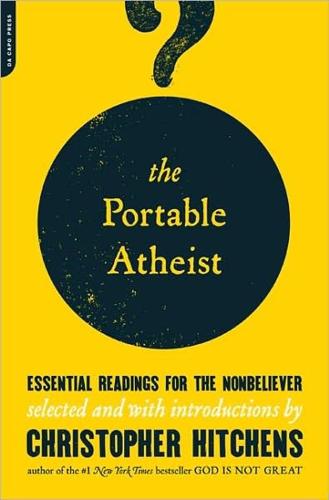
The Portable Atheist: Essential Readings for the Nonbeliever
by
Christopher Hitchens
Published 14 Jun 2007
Within living memory we have come very close to extinguishing our civilization when, in October 1962, Soviet ships carrying nuclear warheads to installations in Cuba confronted a blockade by the U.S. Navy, and the world waited to discover whether Nikita Khrushchev would order his convoy home. It is remarkable how little of that terrifying event survives in public memory, in modern folklore. In the vast literature the Cuban Missile Crisis has spawned—military, political, diplomatic—there is very little on its effect at the time on ordinary lives, in homes, school, and the workplace, on the fear and widespread numb incomprehension in the population at large. That fear has not passed into the national narrative, here, or anywhere else as vividly as you might expect.
…
Perhaps the assassination of President Kennedy the following year helped obscure the folk memory of the missile crisis. His murder in Dallas became a marker in the history of instantaneous globalized news transmission—a huge proportion of the world’s population seemed to be able to recall where they were when they heard the news. Conflating these two events, Christopher Hitchens opened an essay on the Cuban Missile Crisis with the words—“Like everyone else of my generation, I can remember exactly where I was standing and what I was doing on the day that President John Fitzgerald Kennedy nearly killed me.” Heaven did not beckon during those tense hours of the crisis. Instead, as Hitchens observes, “It brought the world to the best view it has had yet of the gates of hell.”
…
Columbus, Christopher Communism Comte, Auguste Confucius Conrad, Joseph Contribution to the Critique of Hegel’s Philosophy of Right Cook Copernicus Cormack, Allan Coyne, Jerry Craig, William Lane Creationism and Anderson and apocalypse and atoms and Darwin and Dawkins and Koran and polls and Rushdie and Shelley and Shermer and Stenger and Templeton and Weinberg See also Design Cremation Croly, George Crone, Patricia Crusades, the Cuban missile crisis Darwin, Charles autobiography of and evolution and natural selection Darwin, Emma Das Leben Jesu, Dashti, Ali Dawkins, Richard Dawood De Rerum Natura, Death and apocalypse and Ayer and Cohen and Dennett and fear life after in next world punishment and reward after and realism and religious beliefs and separation wish See also Immortality Deism and and Anderson and Eliot and Mill and Shelley and Stephen Democritus The Demon-Haunted World Demons Dennett, Daniel C.
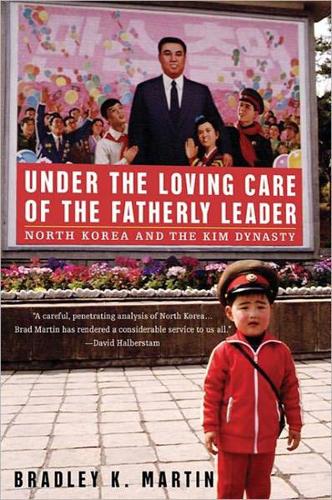
Under the Loving Care of the Fatherly Leader: North Korea and the Kim Dynasty
by
Bradley K. Martin
Published 14 Oct 2004
Both China and Russia urged against acting, however, according to Hwang Jang-yop’s reported later testimony. The Pyongyang leadership lacked the stomach to go it alone, particularly since it had just finished rebuilding the country from the ruins of the first Korean War.16 In 1962, U.S. President John F. Kennedy went eyeball-to-eyeball with Khrushchev in the Cuban Missile Crisis; it was the Russian who blinked, agreeing to eliminate the Soviet missile bases in Cuba that had sparked the crisis. Kim Il-sung’s growing concern that he could not depend on his biggest supposed backer in the communist world inspired a major round of diplomacy to find friends among the smaller communist and Third World countries.
…
“North Koreans were better off than people in China, including Yanbian, until the early 1970s,” one such person, an ethnic Korean professor at the Yanbian Academy of Social Sciences, told me.5 “During the 1960s lots of Koreans from China went over to North Korea because life there was much better than in China. There was a lot of internal strife in China during the 1960s. From the 1970s, the situation in North Korea started deteriorating because the government spent too much on the military after the 1962 Cuban missile crisis and the Vietnam War. Gradually China, including Yanbian, pulled ahead. The difference was that people in China not only had money; they also had something to spend it on. The North Koreans got their salaries but there was nothing to buy with their money.” The professor, speaking in 1992, said that people in North Korea had been “hungry although not actually starving, since the mid-1970s.
…
Zhao said North Korea had overemphasized its heavy industry—and as a result had fallen behind the South economically by the early 1970s—because of concern aroused by American policies in the 1960s in Cuba and Vietnam. Hwang Jang-yop, a former Workers’ Party secretary who defected to South Korea in 1997, is quoted as having said that the Cuban Missile Crisis sparked Kim’s policy of simultaneous development of the economy and the military. “Money in your own pocket is better than money in your brother’s, and it is always best to keep one’s wallet full,” Kim said after he heard of the crisis, Hwang is said to have recalled (“Preparations for War in North Korea” in Testimonies of North Korean Defectors: True Picture of North Korea According to a Former Workers Party Secretary [Seoul: National Intelligence Service], an undated summary that was posted on the NIS’s Web site as of May 17, 2002, but is no longer available there). 16.

An Empire of Wealth: Rise of American Economy Power 1607-2000
by
John Steele Gordon
Published 12 Oct 2009
So the United States and the Soviet Union, locked in a profound geopolitical struggle, had to find other ways in which to compete. But ICBMs also engendered a deep fear that events might spin out of control, as they had on the eve of the First World War, and lay the world waste in a nuclear holocaust. Twice, in the Cuban missile crisis of 1962 and the Yom Kippur War of 1973, that came perilously close to happening. One means for the United States and the Soviet Union to battle for supremacy was via proxy wars, such as those in Korea, Vietnam, and Afghanistan. Another was by using the technology of the rocket to explore outer space.
…
Congress of Industrial Organizations (CIO), 345 Connecticut, 142 conspicuous consumption, 260–61 Constitution, U.S., 65–66, 73, 78, 102 and doctrine of implied powers, 78–79 income tax and, 274, 276 interstate commerce and, 143–44 Sixteenth Amendment of, 276 Twenty-fourth Amendment of, 374 Constitutional Convention, 65, 72, 87, 274 Continental Congress, 60, 61, 63, 68, 76–77 continentals (bills of credit), 60 Cooke, Jay, 193–94, 227, 292 Coolidge, Calvin, 311 Cooper, James Fenimore, 6 Cooper, Peter, 150–51, 261, 266 Copley, Lionel, 34 corporations, 9–10, 205, 232, 257 accounting practices and, 9, 230–32 as business trusts, 258–59 income tax on, 276–77 partnership form and, 229 railroads and, 228–30 corruption, 207–8, 215–16 Crédit Mobilier and, 216–20 Tweed ring and, 220–21 see also Erie Railway Corsair agreement, 234 Cortelyou, George B., 278–79 cotton trade, 83–92, 185 Great Britain and, 88–90 mechanization of, 84–85, 88–89, 91–92 slavery and, 86–87 South’s economy and, 89–90, 97 Council of Economic Advisors, 378, 380 Counterblaste to Tobacco, A (James I), 15 Crack in the Picture Window, The (Keats), 366 Cramer, Stuart, 373 credit, 308–9, 366–67 Credit Ansalt, 322 Crédit Mobilier, 218–20, 222 Cuban missile crisis, 403 currency, see coins and currency Dana, Charles A., 219 Danat Bank, 323 Deere, John, 174 Defense Department, U.S., 410 deflation, 266 deforestation, 171–72 Delaware, 259 Delaware, Lackawana, and Western Railroad, 230 Democratic Party, 122, 220, 270–71, 276, 342, 390–91, 395 Demonstration Cities and Metropolitan Development Act, 382–83 department stores, 161–62 depression, economic, 227–28, 346, 379 of 1819, 126 of 1837–1843, 179 of 1873, 227 of 1907, 275, 278–80, 368 of 1914, 286–87 of 1920–1921, 296, 311–12 see also Great Depression Derby, Elias, 94 Description of Virginia (Smith), 13 Dey, Peter, 218 Dickens, Charles, 131, 152, 162 dollar, Spanish, 44, 47, 69, 70, 71 dollar, U.S., 68–70, 267, 323, 334, 384, 401 Bretton Woods Agreement and, 362, 384 domestic service, 164–65 Douglas, William O., 341, 342 Dow-Jones Industrial Average, 270–71, 289, 312, 313, 316, 328, 336, 368, 370, 381, 383–84, 397, 417 Drake, Edwin, 170–71, 254 Drew, Daniel, 209–10, 212–13, 215, 225 Drudge Report, The, 413 Duer, William, 80 Durant, Thomas C., 218 Dutch East India Company, 10 Dutch West India Company, 37–38 Eckert, Presper, 407 Economic Consequences of the Peace, The (Keynes), 379 Economist, The, 89 economy, U.S., postwar boom in, 363–81 air-conditioning in, 373–74 credit in, 366–67 G.I.

The Woman Who Smashed Codes: A True Story of Love, Spies, and the Unlikely Heroine Who Outwitted America's Enemies
by
Jason Fagone
Published 25 Sep 2017
An FBI cryptanalyst, Jeanne Anderson, who solves the handwritten code and cipher notes of suspected criminals, found transcripts of Elizebeth’s trials from the 1930s and studied them for guidance on speaking to juries. And although Elizebeth had never worked there, she also won fans at the NSA, where female cryptanalysts rose to distinction after the war, including Juanita Morris Moody, who briefed U.S. leaders during the Cuban Missile Crisis, and Ann Caracristi, who became the agency’s number-two official. In the 1990s the NSA renamed its auditorium. The William F. Friedman Memorial Auditorium is now the William F. Friedman and Elizebeth S. Friedman Memorial Auditorium. As of 2014 there is a second auditorium in the Washington area bearing her name, at a Justice Department building, thanks to a campaign launched by Barbara Osteika.
…
See also codebreakers defined, xvi cryptograms defined, xvi frequencies of letters, 69–70, 83–84 “The Gold-Bug” (Poe), 60–61 cryptographers, defined, xvi Cryptography Engineering (Schneier, Ferguson, and Kohno), 119 Cryptolog (journal), 340 “cryptologic schizophrenia,” 237–38 cryptology, defined, xvi Crypto-Set Headquarters Army Game, 155 Cuba, 180 Cuban Missile Crisis, 339 Cumming, Belle, 50, 159 Cunningham, Walter McCook, 322 Curie, Marie, 142 Czechoslovakia, 180, 308 Dachau concentration camp, 143, 178, 302 Dahl, Roald, 214–15 Darwin, Charles, 39 De Augmentis Scientarium (Bacon), 40 De Furtivis Literarum Notis (della Porta), 155–56 Delegacia de Ordem Politica e Social (DOPS), 245–46 Della Porta, Giambattista, 155–56 DeMille, Cecil B., 172 Detective Fiction Weekly, 169 Dickinson, Velvalee, 292–96 digital ciphers, 124 Dinieus, Edna Smith, 7, 170, 311 death of mother, 64–65 Mexican vacation, 207 William and, 60 disappearing ink, 184 DNA, 24 Doe, Harry, 144 Doll Lady.
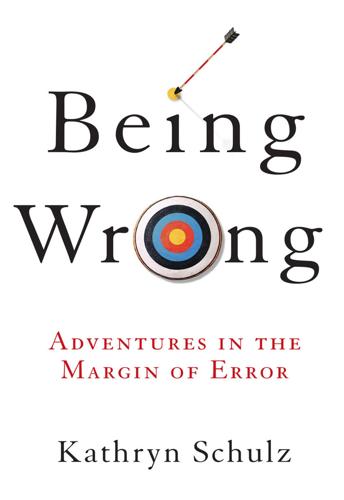
Being Wrong: Adventures in the Margin of Error
by
Kathryn Schulz
Published 7 Jun 2010
It is not impossible, however, to deliberately stave off the dangers of groupthink. Irving Janis proposed a list of ways to do so, including explicitly encouraging disagreement, assigning someone the role of devil’s advocate, and actively seeking outside input. Many people cite President Kennedy’s handling of the Cuban Missile Crisis as a successful effort to counteract groupthink (it seems he learned something from the Bay of Pigs), and others see reason for optimism in President Obama’s stated commitment to “vigorous debate inside the White House.” My favorite example, however, comes from the Talmud, the rabbinical writings that serve as a commentary on the Torah and the basis of Orthodox Judaism.
…
See also language Communism (Communist Party), 13, 130, 285–88, 294 community beliefs, 133–58 Asch line studies and, 144–45, 155–56, 157 disagreement deficit and, 149–54 reliance on other people’s knowledge, 137–44 source evaluation and, 141–43 supression of dissent, 153–58 Swiss suffrage movement, 133–37, 146–48, 151 confabulation, 77–86, 165n, 354n Confessions (Augustine), 140, 284 confirmation bias, 124–31, 243 conformity, 138–39, 139n, 144–45, 153–58 Constitution, U.S., 313–14 conversion stories, 279–81 Abdul Rahman’s story, 154–55, 156 C. P. Ellis’s story, 273–79, 280, 294–95 Cook, James, 353n Copernicus, Nicolaus, 127, 357n Coulter, Ann, 148n Courbet, Gustave, 328 credulity, 167–68 cross-dressing theory of comedy, 324n Cruikshank, George, 54 Cuban Missile Crisis, 153 ’Cuz It’s True Constraint, 104–9, 130, 163 Dadaism, 328, 329 dark energy, 126n dark matter, 126n Darwin, Charles, 131–32 data, and error-prevention, 305–6 Davidson, Osha Gray, 275–76, 284n, 383n death-wish response to error, 26–27 decision studies (error studies), 11–12 defensiveness (defenses), 213–18 “better safe than sorry,” 216, 216n blaming other people, 215–16 certainty and, 165–70 denial and, 229–30, 306, 307 near-miss, 214–15, 216 out-of-left-field, 214–15, 216 time-frame, 213–14, 216 definition of wrongness, 10–17 Defoe, Daniel, 258, 382n delusion, 38–39, 40, 351n dementia, 80n democracy, 311–16, 386n denial, 209–10, 228–34, 375–76n Innocence Project and, 233–39, 242–43 Dennett, Daniel, 369n depression, 336 Descartes, René, 6, 33, 113–15, 118–22, 318–19, 349n, 362–63n desegregation of schools, 274–77 desert mirages, 50 Design of Everyday Things (Norman), 211 despair, 258–59, 265 developmental psychology, 100–101, 197–98, 289–92, 307, 385n deviance, 34–35n Dickinson, Emily, 283 Diderot, Denis, 29, 38 direct elections, 312–14 disagreement deficit, 149–54 disillusionment, 53, 252n distal beliefs, 95–96, 359–60n distribution of errors theory, 34–35 Divine Right of Kings, 312 divorce, 248–49, 266–69 divorce rate, 268–69n DNA testing, 222–23, 226–27, 376n, 379n error rate, 223n Innocence Project, 227, 233–39, 242–43 dogma (dogmatic beliefs), 287.
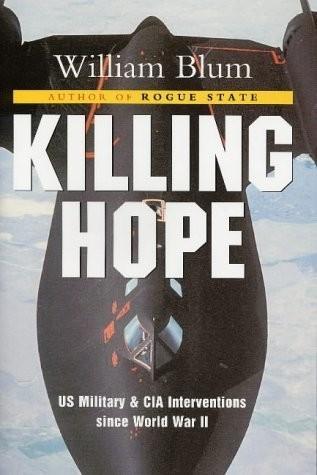
Killing Hope: Us Military and Cia Interventions Since World War 2
by
William Blum
Published 15 Jan 2003
In South America, where everyone would like to follow an independent foreign policy but where only Brazil has, at times, the courage, no one was confused.24 Goulart, a millionaire land-owner and a Catholic who wore a medal of the Virgin around his neck, was no more a communist than was Quadros, and he strongly supported the United Stares during the "Cuban Missile Crisis" of October 1962. He offered Ambassador Gordon a toast "To the Yankee Victory!",25 perhaps unaware that only three weeks earlier, during federal and state elections in Brazil, CIA money had been liberally expended in support of anti-Goulart candidates. Former CIA officer Philip Agee has stated that the Agency spent between 12 and 20 million dollars on behalf of hundreds of candidates.26 Lincoln Gordon says the funding came to no more than 5 million.27 In addition to the direct campaign contributions, the CIA dipped into its bag of dirty tricks to torment the campaigns of leftist candidates.28 At the same time, the Agency for International Development (AID), at the express request of President Kennedy, was allocating monies to projects aimed at benefiting chosen gubernatorial candidates.29 (While Goulart was president, no new US economic assistance was given to the central government, while regional assistance was provided on a markedly ideological basis.
…
On the very border of the Soviet Union was Iran, an even closer ally of the United States, with its relentless electronic listening posts, aerial surveillance, and infiltration into Russian territory by American agents. And alongside Iran, also bordering the Soviet Union, was Turkey, a member of the Russians' mortal enemy, NATO, since 1951. In 1962 during the "Cuban Missile Crisis", Washington, seemingly in a state of near-panic, informed the world that the Russians were installing "offensive" missiles in Cuba. The US promptly instituted a "quarantine" of the island—a powerful show of naval and marine forces in the Caribbean would stop and search all vessels heading towards Cuba; any found to contain military cargo would be forced to turn back.

Turning the Tide
by
Noam Chomsky
Published 14 Sep 2015
Senator Durenberger’s proposal illustrates what has been called “the deadly connection”: the prospect that Third World intervention will lead to superpower confrontation and nuclear war. This has come close to happening quite a few times in the past, and will again. There is no more urgent issue on the contemporary scene.4 One such occasion was the Cuban missile crisis that brought the world ominously close to nuclear war in 1962. At that time, according to testimony of participants, planners considered a nuclear war highly likely if they rejected Khrushchev’s offer to resolve the crisis peaceably with complete withdrawal of Soviet missiles from Cuba. They rejected this offer because it entailed simultaneous withdrawal of US missiles from Turkey: obsolete missiles for which a withdrawal order had been issued (but not yet implemented) because they were being replaced by Polaris submarines.
…
The actual military outlays for the early 1980s “average slightly lower than the Carter projections...Almost every Reagan equipment program to date was begun under Carter, or even before, with the notable exception of SDI.” At the same time, Soviet increases in spending, which accelerated after the Cuban missile crisis, tapered off to about 2% a year from 1976.75 In fact, the whole charade is farcical. Windows and gaps appear when they are needed to justify escalation of military spending; they close when they no longer contribute to this end, or when other concerns require reduction of military programs.
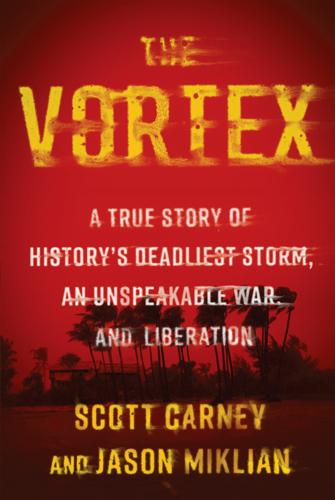
The Vortex: A True Story of History's Deadliest Storm, an Unspeakable War, and Liberation
by
Scott Carney
and
Jason Miklian
Published 28 Mar 2022
It was a new state-of-the-art satellite called ITOS 1, officially the world’s most advanced weather tracker. A seven-hundred-pound octahedron that could transmit real-time weather imaging from its polar orbit, ITOS 1 was nothing less than a quantum leap in threat detection for the Department of Defense (DoD). After the Cuban missile crisis, the DoD fast-tracked funding for ITOS 1 as a key strategic asset in the Cold War fight against the Soviets. While weather events had brought civilizations to their knees in the past, a satellite like this might just be able to predict brewing conflicts by reading the clouds like tea leaves.
…
The American Seventh Fleet must not come within striking distance of India’s military bases. This meant that if the Big E and its escorts sailed just a hundred more miles northwest, Kruglyakov must vaporize them. The standoff between Soviet Foxtrot submarines and American airpower had precedent in the Cuban missile crisis just nine years earlier. The submarine commander brought the crew to high alert. The change in plans bounced around the polished steel walls in the language of red flashing lights, keeping silent cover beneath the surface of the sea. A mechanic on the bridge asked, “Where are we going, Captain?”
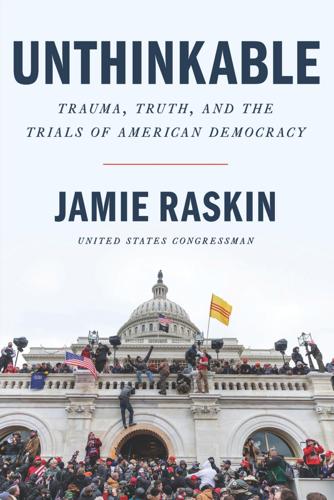
Unthinkable: Trauma, Truth, and the Trials of American Democracy
by
Jamie Raskin
Published 4 Jan 2022
On my dad’s first day of work in the Old Executive Office Building, the Bay of Pigs Invasion took place, and he quickly proclaimed his antiwar position, writing a memo to President Kennedy urging that the U.S. military base at Guantanamo Bay be closed, turned into a health clinic, and gifted to the Cuban people as a goodwill gesture in the wake of the failed and bloody invasion. With his intensifying opposition to a nuclear arms race—as a White House staff member, he, remarkably, joined a picket line outside it during the Cuban Missile Crisis to address protesters from the National Committee for a Sane Nuclear Policy, or SANE—and his aggressive skepticism about the brewing intervention in Vietnam, Dad’s days were numbered in the ranks of “the Best and the Brightest,” as David Halberstam labeled, with a tinge of sarcasm, the coterie of Cold War intellectuals who brought us the nightmare of the Vietnam War.
…
The iconoclast whom Bundy called a “young menace” in conversations with President Kennedy, Marcus Raskin soon experienced a demotion and “political excommunication” to the Bureau of the Budget as the “education advisor.” Shortly after I was born (on December 13, 1962) and not long after the Cuban Missile Crisis, my dad—and my mom, Barbara Raskin, a journalist and novelist whom we lost in 1999, when Tommy was only four—threw caution to the wind. Dad quit the White House in 1963 and founded, with his friend Richard Barnet, what became not only the first liberal think tank in Washington but, in many ways, the first Washington policy think tank of any kind at all, the Institute for Policy Studies, which continues to thrive today and where Tommy interned in his proud summer of 2012.

Active Measures: The Secret History of Disinformation and Political Warfare
by
Thomas Rid
In the end, the GRU colonel was swayed not by strategic considerations but by the disappointing state of nuclear weapons miniaturization at the time. Penkovsky, who spoke little English, was a daring spy. He worked for the CIA and MI6 for sixteen months, from April 12, 1961, to September 4, 1962.4 The Cold War was at its most freezing then; the Berlin Wall went up in June 1961 and the Cuban Missile Crisis escalated in the late summer of 1962, pushing the world to the brink of nuclear annihilation. The GRU spy, ambitious to the point of recklessness, passed detailed plans and descriptions of missile launch sites in Cuba to the CIA. Without Penkovsky’s help, the Americans would have struggled to identify Soviet missiles at their launch pads and to track their operational readiness.
…
Chicago Tribune Chile China; see also Tanaka Memorial China Critic, The Chisholm, Janet Anne “Christian-Marxist” dialogue workshops Christian Science Monitor Church Committee CIA, see Central Intelligence Agency cigar box bomb of Strasbourg Click magazine Clinton, Hillary Colby, William Cold War, see specific topics Comintern, the Committee for Action/Research on the Intelligence Community (CARIC) Communist International Computer Emergency Response Team (CERT) Comrade J. (Tretyakov) Concord Congressional Record Congress of Cultural Freedom Counterspy Covert Action Information Bulletin COZY BEAR (APT29) Cramer Advertising Office, see LCCASSOCK Cramer Werbung, see LCCASSOCK Crimea annexation CrowdStrike Cryptome Cuba Cuban Missile Crisis Cumhuriyet Curious Camera TV show Current Affairs Monthly cyb3rc.com CyberBerkut CyberCaliphate CyberGuerrilla cypherpunks Czechoslovakia D Daily Mail Davis, John (sock puppet) DCCC (Democratic Congressional Campaign Committee) DCITA (Defense Cyber Investigations Training Academy) DCLeaks Deception Game, The (Bittman) Defense Cyber Investigations Training Academy (DCITA) Defense Intelligence Agency (DIA) Delmer, Sefton Democratic Congressional Campaign Committee (DCCC) Democratic National Committee (DNC) dengue fever DENVER operation Department 8, see Státní bezpečnost Department D Department X (the X): Active Measures of Eastern Intelligence Services report and; agent-report forms and; civil war fought by; internal newsletters and; legacy of; origins of; professionalism of; RIGAS operation of; scientist defectors and; secrecy of; Wagner, L., and; Wolf, M., and; ZEUS operation of Deriabin, Peter Dethloff, Walter DEVASTATION operation Devil and His Dart Devil’s Lake DGI (Dirección General de Inteligencia) DIA (Defense Intelligence Agency) digital leaks: AM and; Assange on Clinton’s emails and; Crimea annexation and; Cryptome and; CyberBerkut and; CyberGuerrilla and; DCLeaks and; DNC hack and; EU and U.S. exposed in; forgery and; Guccifer 2.0 and; journalism and; Malaysia Airlines disaster and; Merkel and; of NSA hacking tools; Panama Papers and; Podesta’s emails and; Protsyk’s forged emails and; Schneier on; of Shadow Brokers; Snowden and; Ukraine and Russian-orchestrated; WikiLeaks and; see also Anonymous; hacking operations Dirección General de Inteligencia (DGI) disinformation: accurate information in; Artuzov and; Bittman on; Black Lives Matter movement and; data and; East and West divide on; election interference of 2016 and; emotion and; four waves of; goals of; HVA’s focus on; imperfection of; KgU and; learning from past; misconceptions about; oral; passage of time and; postmodernism and; self-; skill set for; targets of; see also active measures DNC (Democratic National Committee) Dobbert, Andreas Dobbins, Jim Dobrynin, Anatoly Dodd, Thomas Dönitz, Karl DOUBLEPULSAR “double-track decision” Drummond, Roscoe DTLINEN Dulles, Allen Dulles, John Foster Dulles Memorandum Dumov, Aleksei Dunne, Kenneth Durenberger, David Dzerzhinsky, Feliks Dzhirkvelov, Ilya E economic inequality Economist, The Edwards, Bob Eichner, Klaus Eisenhower, Dwight D.
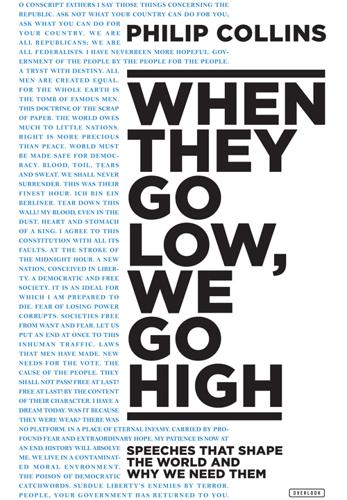
When They Go Low, We Go High: Speeches That Shape the World – and Why We Need Them
by
Philip Collins
Published 4 Oct 2017
But words are close to deeds for a president, and Kennedy has, ever since then, faced the accusation that he locked himself into the stance of the cold warrior in the short time he governed with the pledge to ‘pay any price, bear any burden’ in the defence of liberty. Critics have drawn a straight line that runs through the fiasco of the Bay of Pigs invasion and the peril of the Cuban Missile Crisis to Vietnam and beyond. Kennedy’s rhetoric has both a lineage and a legacy. The lineage runs in the commitment to liberating the oppressed around the globe, which is an echo of Woodrow Wilson’s internationalism. The legacy ensues in the echoes from 1963 that are audible in the first inaugural addresses of both Ronald Reagan and Bill Clinton, and in George W.
…
W., 192 Brandt, Willy, 155 Bright, John, 298–300, 304–5 Britain: declining confidence in democracy, 75–6; and European Union, 77, 219–20, 224–5, 231; factories in nineteenth-century, 231–2, 235; idea of as a nation, 215–16, 226; lack of communism in, 303, 306; and meritocracy, 308–9; rejoins the Gold Standard (1925), 124; slavery in British Empire, 232, 234, 235–45; see also entries for individual speechmakers; London; Manchester British Union of Fascists (BUF), 307–8 Brittain, Vera, 255 Brown, Gordon, 229, 230 Bundy, McGeorge, 156 Burma, 165, 202–4, 205–13 Bush, George W., 51, 121, 136, 139 Butler Education Act (1944), 309 Caballero, Francisco Largo, 261 Caesar, Julius, 22, 23–4 Calvo Sotelo, José, 261 Cameron, David, 224 Campoamor, Clara, 260 Camus, Albert, 78, 84, 212, 313–16, 317, 382, 384, 397, 398–9 capitalism, 10, 72–3, 141–2, 145, 156–8, 263–4, 266, 392 Care, Henry, English Liberties, 173 Carlyle, Thomas, 318 Carnegie, Andrew, 41 Carter, Jimmy, 139, 371 Castro, Fidel, 47, 317, 343–56, 398 Catiline, Lucius Sergius, 21, 22 Chamberlain, Neville, 124, 127–8, 152, 333, 340–1 Chaplin, Charlie, 395–7 Chávez, Hugo, 79, 81, 345, 349 China, 72, 73, 384–5, 387, 388, 389–91, 392, 397 Churchill, Winston, 4, 6, 8, 123–4, 158, 159, 164, 305, 329–30, 398; ‘blood, sweat, toil and tears’ speech (13 May 1940), 88, 124, 133, 153; on public speaking during war, 128–9; ‘The Few’ speech (August 1940), 87, 129; ‘Their finest hour’ speech (18 June 1940), 125, 126, 127–8, 130–1, 132–3, 134–5; ‘United States of Europe’ speech (1946), 216–17; voice of, 4, 105, 129, 237; wartime image/popularity of, 129–30; wartime speeches recorded for posterity, 105–6; ‘We Will Fight Them on the Beaches’ speech (4 June 1940), 131–2, 133–4; and women’s suffrage, 306; writing of speeches, 126; Savrola, 393 Cicero, Marcus Tullius, 6, 20–8, 111, 149, 193, 229–30, 325; influence in USA, 18, 28, 30, 40, 80–1, 177–8; De oratore, 4, 20, 123; First Philippic against Mark Antony, 21–7, 77, 83; In Verrem: Civis Romanus sum, 155–6 Clarkson, Thomas, 235, 240 Clinton, Bill, 51, 139, 371, 375, 379 Clinton, Hillary, 57, 70–1, 371, 403, 404 Cobden, Richard, 298–9, 300, 301, 304 Cold War, 46–7, 50–2, 53, 55–6, 136, 137–47, 156–8, 197, 345, 349 Colley, Linda, Britons: Forging The Nation 1707–1837, 163 communism, 53, 72, 136, 137, 148, 156, 314, 317; capitalist victory over, 10, 141–2, 146, 157; in China, 382–91, 392; in Czechoslovakia, 358–68; Marx and Engels, 301–2, 304, 306; Nazi suppression of, 332; no traction for in England, 303, 306; and Sartre, 316–17; in South Africa, 193, 196–8; and Spanish Civil War, 257, 258, 259, 260–1, 262–3; see also Soviet Union Condorcet, Marquis de, 387–8 Conrad, Joseph, The Secret Agent, 73 Conservative Party, 101, 218, 221–4, 254–5, 281, 292; One Nation Conservatism, 231–2, 303–4; Peel’s Tamworth Manifesto (1834), 300; split over Corn Laws (1846), 301, 310 conspiracy theories, 12, 45, 57, 77–9 Coolidge, Calvin, 6, 69 Corbyn, Jeremy, 231 Corn Law (1815), 295–6, 298–301 Crassus, 20 Crimean War, 299 Cuba, 47, 343–57 Cuban missile crisis (1962), 47, 51, 56, 345 Cuomo, Mario, 60 Czech Republic, 358, 359, 368, 369 Czechoslovakia, 333, 335, 337, 338–9, 340, 358–69 Daily Mail, 308 Dalindyebo, David, 190–1 Dangerfield, George, 100–1 Dawson, Les, 229, 230, 309 de Beauvoir, Simone, 313, 315 de Gaulle, Charles, 217, 219 de Klerk, F.W., 192, 197 Delors, Jacques, 221 democracy: birth of idea, 3, 20, 80, 88, 93–9, 159, 405; and Camus’ The Rebel, 313, 314–15, 317, 382, 384, 397, 398–9; and capitalism, 72–3, 141–2, 145, 156–8, 266; Chaplin’s The Great Dictator, 395–7; crisis of confidence, 74–83, 148; crisis of prosperity, 72–3, 82; as culture and pattern of behaviour, 63; franchise extensions in nineteenth-century, 9, 232, 251, 303, 304, 305, 310; franchise extensions in twentieth-century, 9, 255, 306, 310; as host for enterprise/prosperity, 62, 82, 140–2, 157, 233, 309, 390–1; illiberalism in present-day Europe, 74, 80, 397; in India, 165, 181, 185, 186–8, 189; Jefferson on, 29, 33, 34–6; Kennedy’s ‘ask not …’ line, 54–6, 63, 83, 208; in Latin America, 349; Lincoln’s ‘of the people …’ line, 43, 44, 70, 71, 83; and making mistakes, 37, 233, 387, 391; and Mandela, 197–201; as not state of final perfection, 58–9, 77, 83, 295; and ‘oil curse’, 155, 390; and peace, 153–8; populist threat to, 4, 12, 18, 70–2, 76–81, 82–3, 84, 148, 397, 403; public authority and private autonomy, 34, 83, 403–4; Reagan on, 138; security and terror crisis, 73–4, 82; slow, incremental improvement, 61, 82–3, 188, 233, 244–5, 295, 308–9, 310, 387, 398; and St Peter’s Field, Manchester, 294–8, 299, 302–3, 307, 309–10; success of, 8, 10, 11, 17, 72, 82; superiority of, 4, 76, 82–3, 95–6, 148, 389–91, 395–7, 407–9; and Suu Kyi, 206–9, 212–13; threefold crisis of, 72, 82; and utopian imagination, 17, 18–19, 82–3, 295, 407–8; virtues of, 12, 36, 54, 74, 80–1, 94–6, 141–4, 209, 213, 300, 316–17, 389–99, 407–8; during warfare, 87–8, 89–99, 101–11, 120–1, 123–35, 148–59 Demosthenes, 4, 21–2, 25, 177, 193 Deng Xiaoping, 390 Depayin Massacre (30 May 2003), 203 Dickens, Charles, A Tale of Two Cities, 320 dictators and tyrants: Blair’s Chicago doctrine, 152–3; in Burma, 165, 202–4, 205–13; Camus on, 313, 314, 384, 397; and capitalism, 263–4; Castro on overthrow of, 354–5; Cicero’s opposition to, 21, 22, 25; and complete certainty, 386; democracy as always to be favoured in warfare, 148; democratic defiance of, 82; and destiny, 314–15; Dostoevsky’s Grand Inquisitor, 393, 394, 399; dystopian literary responses, 403–4; fragility of position, 387; history as on their side, 383, 385, 392; indifference as ally of, 374; and language of democracy, 382; lineage of US rhetoric against, 51; overthrows of in Latin America, 349; and Pericles, 93, 96; propensity for warfare, 154; prosperity as danger for, 155, 390; US backing for, 47, 137; wars in Afghanistan and Iraq, 73, 152; and Woodrow Wilson, 118–19, 120–1; see also Castro, Fidel; communism; Hitler, Adolf; Mao Zedong; Robespierre, Maximilien; Soviet Union Disraeli, Benjamin, 10, 294, 295, 299, 300, 302–3, 304–5, 310, 387; Free Trade Hall speech (1872), 231, 295, 303, 304; government of (1874–80), 232, 303–4 Dostoevsky, Fyodor, The Brothers Karamazov, 393, 394, 399 Drexler, Anton, 332 Dubček, Alexander, 361 Dylan, Bob, 309 The Economist, 309 Egypt, 75 Eisenhower, Dwight D., 7, 49, 68–9 Eliot, T.S., Four Quartets, 150 Elizabeth I, Queen of England, 164–5, 167–72 empiricists, 78 Engels, Friedrich, 301–2, 304, 306 Epstein, Jacob, 310 Erasmus, Ciceronianus (1528), 26 Erdoğan, Recep Tayyip, 74, 79, 81 European Union, 73, 76, 218, 226; Britain joins (EEC) (1972), 219–20; British EEC referendum (1975), 220; British referendum (2016), 77, 224–5, 231; founding purpose, 164, 217, 224; speeches about, 164, 214, 215, 217–25; term ‘Euro-sceptic’, 221 Everett, Edward, 38, 40, 44 Faulkner, William, 9 Fawcett, Millicent, 251–2 Fildes, Mary, 296 First World War, 101–11, 112, 124, 158, 331–2; Lloyd George’s scrap of paper, 103, 104, 148, 157; Woodrow Wilson and, 113–19, 120–2 Foot, Michael, 280 France, 74, 219, 241, 303, 313–17, 318–19, 371 Franck, Isaac, 53 Franklin, Benjamin, 6, 28, 173–80 free trade, 298–301, 305 French Revolution, 29, 245, 317, 318, 319–30, 387 Fulvia (Antony’s wife) 25 27 Gaitskell, Hugh, 218–19 Galbraith, John Kenneth, 53 Gandhi, Indira, 181, 182, 388–9 Gandhi, Mahatma, 181, 182, 185, 187–8, 210, 211, 273 García Márquez, Gabriel, 357 gender: equality issues, 249, 255; and illegitimacy, 253; Married Women’s Property Acts (1870, 1882), 246; women gain equality in voting (1928), 255, 306, 310; women in La Pasionaria’s Spain, 259–60; women politicians, 255, 259–60; women’s suffrage movement, 232, 246, 247–54, 255, 305–6, 310 Germany, 219, 331–2; see also Nazi Germany Gibbon, Edward, 132 Gladstone, William, 10 Goebbels, Joseph, 334, 335, 339, 341–2 Goethe, Johann Wolfgang, 12, 372 Gorbachev, Mikhail, 138, 142, 143, 146 Gottwald, Klement, 360 Graham, Billy, 53 Greece, ancient, 3, 4, 5–6, 18, 20, 89–99, 169, 355, 405; see also Pericles Grey, Sir Edward, 305–6 Grotius, Hugo, De jure belli ac pacis, 149, 150 Guevara, Ernesto ‘Che’, 344, 345–6, 349, 351–2 Haines, Joe, 7 Halifax, Lord, 127, 128 Hamilton, Alexander, 6, 29–30, 33, 177 Hardie, Keir, 306 Harding, Warren, 6 Harris, Robert, 21 Harvard, John F.

The Rise and Fall of the Neoliberal Order: America and the World in the Free Market Era
by
Gary Gerstle
Published 14 Oct 2022
Like engines operating without oil, the world’s financial institutions would then seize up and grind to a halt. The week that began with Lehman Brothers failing and AIG pushed to the brink thrust the top managers of America’s financial system into the most frightening eighteen-day stretch of their lives. Its nearest analogue was the Cuban Missile Crisis, a thirteen-day moment in October 1962. In both crises, a small group of elite US policymakers held the fate of the world in their hands. In 1962, the threat was nuclear annihilation. In 2008, the threat was global financial annihilation. The words later used by these movers and shakers to describe that 2008 moment reflected the existential struggle they felt they were engaged in.
…
Glenn, 47 Capital for the Twenty-First Century (Piketty), 254–55 capitalism American capitalism, 20, 31, 42–43, 139 in China, 10 communism and, 141, 147–48 crony capitalism, 201 curtailing destructive chaos of, 23 free market capitalism, 4–5, 99–100, 105, 108–9, 120–21, 133–34, 144–45, 173, 195–96, 204, 254–55 globalization of, 145–46 internationalist capitalist economy, 31 market capitalism, 195–96, 200 neoliberalism and, 4–12 Capitalism and Freedom (Friedman), 94–95 Capitol Hill violence (2021), 1, 288–89 capture thesis (political science), 159 Carnegie, Andrew, 169 Carter, Jimmy, 64–69, 121–22 Castle Rock Entertainment, 172 Catholic Americans, 133 Catholics, 27, 118–19 Cato Institute, 102–3, 109 Center for American Progress, 278–79 Centers for Disease Control (CDC), 280 Chamberlain, Neville, 55 Chauvin, Derek, 286 Chicago School of Economics, 90–91, 201 China, 10, 37, 271–72 Chinese Communist Party, 143, 145–46 Chinese democracy movement, 143 Chomsky, Noam, 254–55 Christie, Chris, 268 Chrysler Corporation, 62 Churchill, Winston, 36–37 Civil Aeronautics Board (CAB), 67 civil rights, 49, 50–51, 117, 124–25, 138 Civil Rights Act (1964), 53–54, 95, 125 Civil War, 79–80 classical liberalism, 5–9, 25–26, 93 Clinton, Bill minority homeowners under, 212, 213–14 neoliberalism and, 1, 2–4, 11, 137–38 New Deal order and, 152–64 New Left and, 14–15 political dissent, 179–88 restructuring of political economy, 4–5 Telecommunications Act, 164, 165–73, 181 Wall Street reform and, 173–78 Clinton, Hillary Rodham Clinton, Bill and, 153, 154–55, 186–87 election loss, 265–66 neoliberalism and, 260–65 Obama, Barack and, 222, 223–24 Sanders, Bernie and, 254–55, 259–62 Trump, Donald and, 250 CNN, 128, 172 Coalition Provisional Authority (CPA), 198 Cobb, Jelani, 263–64 Cohen, Michael, 245–46 Cohn, Gary, 270–71, 276 Cold War era, 10, 11–12, 29, 35–47, 48–54, 129–32 collective bargaining, 27–28, 81–82, 85 collectivism, 23, 73–74, 82–84, 85, 86, 100–1 Colloque Lippmann, 73–74, 86–87, 135–36 Comey, James, 265–66 Coming Apart (Murray), 231–34 Commodity Futures Modernization Act (2000), 213 Commonwealth of Independent States (CIS), 141–42 Communications Act (1934), 26, 125–26, 165, 170 Communications Decency Act, 169–70 communism capitalism and, 141, 147–48 cybernetic revolution and, 161–63 economic stagnation under, 69 impact on neoliberalism, 10–12, 20–21 labor movement militancy, 23 New Deal order and, 10–12, 27–35 Republican Party and, 38–47 World War II impact on, 33–35 Community Action Program, 159 conformism, 95–96 conservatism, 4–12, 28, 38 The Constitution of Liberty (Hayek), 97–98 consumer spending crisis, 214–15 Coors, Joseph, Jr., 108–9, 114 corporate welfare, 180–81 cosmopolitanism, 5, 8–9, 13, 182–83, 186, 208, 209 Council of Economic Advisers, 66, 171, 224, 284 Court, Warren, 118–19 Covid-19 pandemic, 272, 279–81, 282–83 crime rates, 1980s, 130–31 Croly, Herbert, 80–82 crony capitalism, 201 Cuban Missile Crisis, 219–20 culture wars, 4–5, 14, 15, 186–88 cybernetic revolution, 161–63 Daily Kos (blog), 278–79 Dart, Justin, 110–12 Debs, Eugene, 82–83 Debt: The First 5,000 Years (Graeber), 252–53 Defense Production Act (1950), 280 deindustrialization, 63–64 democracy American democracy, 1, 7, 282–83, 287–88, 289 Chinese democracy movement, 143 communism and, 187–88 Iraq war and, 195–96, 197–98, 203–4 liberal democracy, 147–48, 277 media corporations and, 165 neoliberalism impact on, 7, 91–92, 96–97 New Leftists impact on, 66 popular democracy (Ralph Nader), 66, 143 proletarian democracy, 33 social democracy, 6–7, 34–35 Democratic Leadership Council (DLC), 137–38, 180–81 Democratic National Committee, 64–65 Democratic Party. see also specific Democratic presidents acquiescence/resistance to neoliberalism, 135–40 African Americans, shift to, 48–49 civil rights and, 117 electoral constituencies and, 21–22 Keynesian economic ideas, 22–23 neoliberal order and, 2–3 New Deal order and, 20–27, 118, 152–64 support from religious groups, 27 white supremacy and, 49 Deng Xiaoping, 143, 145–46, 187–88 deregulation, 5, 68, 156–57, 228, 276 Disloyal (Cohen), 245–46 Disney Corporation, 172 Dixiecrats, 117–18 Dole, Robert, 209 Dow Jones Industrial Average, 60–61, 220–21 Duggan, Lisa, 102 Dukakis, Michael, 137 Dyson, Esther, 160–61, 162–63 economic liberalism, 76–78 economic recession, 48, 107–8 Economic Recovery Tax Act (1981), 122 Efron, Edith, 111–12 Eisenhower, Dwight D.
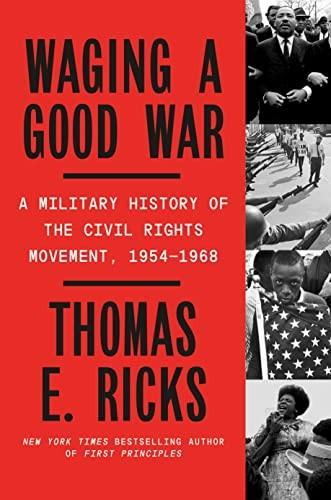
Waging a Good War: A Military History of the Civil Rights Movement, 1954-1968
by
Thomas E. Ricks
Published 3 Oct 2022
President Kennedy had General Walker arrested on charges of seditious conspiracy and insurrection, but a federal grand jury would decline to indict him. The president also contemplated detaining Governor Barnett, but ultimately dropped that idea. Two weeks later, the Kennedy administration lurched into the Cuban Missile Crisis, a standoff with a nuclear superpower, and the confrontation at Ole Miss was all but forgotten. A lack of understanding Katzenbach, the Justice Department official who had been the federal commander on the ground at Ole Miss, later recalled that Hugo Black, the Supreme Court justice whose order had set in train the Ole Miss incident, told him more than once, “Neither you nor Bobby [Kennedy] understand the South.”
…
Black members of House of Representatives Senate Congress of Racial Equality (CORE) Freedom Rides and in Freedom Summer campaign; see also Freedom Summer restaurant desegregation and Connor, Theophilus Eugene “Bull” Birmingham campaign and Freedom Rides and Pritchett and Constitution, U.S. First Amendment to Cook, Eugene Cooper, Annie Lee CORE, see Congress of Racial Equality Cotton, Dorothy Cotz, Christian Cowan, Paul Cox, Harold Crisis critical race theory Cronkite, Walter Crosby, Emilye Cross, John, Jr. Crusade for Citizenship Cuba Cuban Missile Crisis Current, Gloster Curry, Constance Daley, Richard Dalton, Dennis Davis, Ossie D-Day and Allied landings Deacons for Defense Declaration of Independence de Gaulle, Charles Delhi Pact D’Emilio, John democracy Democratic National Convention of 1948 of 1964 of 2020 Democratic Party Dennis, Dave Moses and Detroit, Mich.
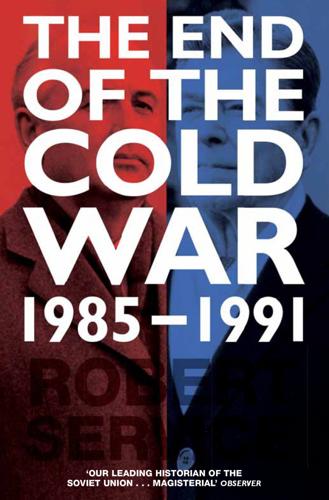
The End of the Cold War: 1985-1991
by
Robert Service
Published 7 Oct 2015
Every Soviet intelligence official in America and Western Europe was told to prioritize ‘Operation Ryan’. Ambassadors were informed by the resident KGB chiefs in each capital. Andropov did not want the country to be caught napping, as had happened in June 1941.38 General Staff veterans would recall this period as the most worrisome since the Cuban missile crisis of 1962.39 But not all of them felt that the world was truly on the brink of war. Colonel General Andrian Danilevich later explained ‘that the KGB may have overstated the level of tension because they are generally incompetent in military affairs and exaggerate what they do not understand’.40 In the Party Defence Department, if not in the General Staff, the possibility of war breaking out, was taken very seriously – and the work of officials was reorganized so that some of them stayed on site through the hours of night.41 The USSR was put on a high level of alert.
…
While acknowledging the ‘whole complexity of the given problem’, Shevardnadze predicted that international public opinion would welcome the news. Gromyko contended that foreign intelligence services would exploit the reform for their own nefarious purposes. Gorbachëv shrugged off his advice and the Politburo agreed with him.99 An efficient ‘hot line’ had existed between President and General Secretary since the Cuban missile crisis of 1962. For the first time it would become possible for millions of private Soviet citizens to dial up Western countries on the spur of the moment.100 The quarantine of communications started to be lifted. The process was far from complete, but nobody could deny that remarkable changes had occurred since 1985. 25.
…
W. ref1, ref2, ref3 and August 1991 coup against Gorbachëv ref1 background and political career ref1 and Baltic states ref1, ref2, ref3, ref4, ref5, ref6 and Camp David summit (1990) ref1 and Chinese–US relations ref1 cutting of military budget and reducing troops and weaponry ref1 and Eastern Europe ref1, ref2 and Ermath’s review of foreign policy ref1, ref2 and German reunification ref1, ref2, ref3 and Gorbachëv ref1, ref2, ref3, ref4, ref5, ref6, ref7, ref8 and Helsinki summit (1990) ref1 and Iraq’s invasion of Kuwait (1990) ref1, ref2, ref3, ref4, ref5 and Lithuania ref1 and Malta summit (1989) ref1 marriage ref1 and nuclear disarmament ref1, ref2, ref3, ref4, ref5, ref6, ref7 and Poland ref1 reluctance to give direct financial assistance to USSR ref1, ref2, ref3, ref4 Soviet policy ref1, ref2, ref3, ref4, ref5, ref6, ref7 and Strategic Defense Initiative ref1 sworn in as President (1989) ref1 and Thatcher ref1 and Ukraine ref1 as Vice President ref1, ref2 viewpoint on perestroika ref1 visit to China (1989) ref1 visit to Poland (1987) ref1 Bush, George W. ref1 Bykaŭ, Vasil ref1 Cambodia ref1, ref2, ref3, ref4, ref5 Camdessus, Michel ref1 Camp David summit (1990) ref1 Campaign for Nuclear Disarmament (CND) ref1 Canada ref1, ref2 Carlucci, Frank ref1, ref2, ref3, ref4, ref5, ref6, ref7 Carrington, Lord ref1 Carter, Jimmy ref1, ref2, ref3, ref4, ref5 Casaroli, Cardinal ref1, ref2, ref3, ref4 Casey, Bill ref1, ref2, ref3, ref4, ref5, ref6, ref7, ref8, ref9, ref10, ref11, ref12, ref13 Castro, Fidel ref1, ref2, ref3, ref4, ref5, ref6, ref7, ref8 Ceauşescu, Nicolae ref1, ref2, ref3, ref4, ref5, ref6, ref7, ref8, ref9, ref10, ref11, ref12, ref13, ref14, ref15, ref16, ref17, ref18 censorship in USSR ref1 Central Committee see under Communist Party of the Soviet Union Central Intelligence Agency see CIA Cervetti, Gianni ref1 Chakovski, Alexander ref1 Chalupa, Leopold ref1, ref2 Chebrikov, Viktor ref1, ref2, ref3, ref4, ref5, ref6, ref7 Cheney, Dick ref1, ref2, ref3 Chernavin, Vladimir ref1 Chernenko, Konstantin ref1, ref2, ref3, ref4, ref5, ref6, ref7, ref8, ref9 Chernobyl power station disaster (1986) ref1, ref2, ref3, ref4, ref5, ref6 Chernyaev, Anatoli ref1, ref2, ref3, ref4, ref5, ref6, ref7, ref8, ref9, ref10, ref11 Chervov, Nikolai ref1, ref2 Chilean communism see Communist Party of Chile China ref1, ref2, ref3, ref4, ref5 Bush’s visit to (1989) ref1 economic reforms ref1, ref2, ref3, ref4, ref5, ref6, ref7 Gorbachëv’s visit to (1989) ref1 Reagan’s visit to (1984) ref1 relations with US ref1, ref2, ref3, ref4, ref5 relations with USSR ref1, ref2, ref3, ref4, ref5, ref6, ref7, ref8, ref9, ref10, ref11 selling of advanced military technology to by US ref1, ref2 Shevardnadze’s visit to (February 1989) ref1 Tiananmen Square massacre (1989) ref1, ref2 and Vietnam ref1 Chirac, Jacques ref1 CIA (Central Intelligence Agency) ref1, ref2, ref3, ref4, ref5, ref6, ref7, ref8, ref9, ref10 Clark, William ref1, ref2 Cliburn, Van ref1 CoCom (Coordinating Committee for Export Controls) ref1 Comecon ref1, ref2, ref3, ref4, ref5 its Complex Programme of Scientific-Technical Progress ref1, ref2, ref3 dissolution of (1991) ref1 Committee on the Present Danger ref1 communism ref1, ref2 Eurocommunism ref1, ref2, ref3 world ref1, ref2, ref3, ref4 Communist International ref1 communist parties, Soviet subsidies and grants to ref1 Communist Party of Chile ref1 Communist Party of Great Britain ref1 Communist Party of the Soviet Union Central Committee ref1, ref2, ref3, ref4, ref5, ref6, ref7, ref8, ref9, ref10, ref11, ref12, ref13, ref14, ref15, ref16, ref17, ref18, ref19, ref20, ref21, ref22, ref23, ref24, ref25, ref26, ref27, ref28, ref29, ref30, ref31, ref32, ref33, ref34, ref35, ref36, ref37, ref38 Defence Department ref1, ref2, ref3, ref4, ref5, ref6, ref7 Department for Links with the Communist and Workers’ Parties ref1 General Department ref1 International Department ref1, ref2, ref3, ref4, ref5, ref6, ref7, ref8, ref9, ref10, ref11, ref12, ref13 Politburo ageing of ref1 Afghan Commission ref1, ref2, ref3, ref4, ref5 Arms Limitation Commission ref1 see also Big Five discussions ref1, ref2, ref3, ref4, ref5, ref6. ref7, ref8, ref9, ref10, ref11, ref12, ref13, ref14, ref15, ref16, ref17, ref18, ref19, ref20, ref21, ref22, ref23, ref24, ref25, ref26, ref27, ref28, ref29, ref30, ref31, ref32, ref33, ref34, ref35, ref36, ref37, ref38, ref39, ref40, ref41, ref42, ref43, ref44, ref45, ref46, ref47, ref48, ref49, ref50, ref51, ref52, ref53, ref54, ref55, ref56, ref57, ref58, ref59, ref60, ref61, ref62, ref63, ref64, ref65, ref66, ref67, ref68, ref69, ref70 Ethiopian Commission ref1 organization of ref1, ref2, ref3, ref4, ref5, ref6, ref7, ref8, ref9, ref10, ref11, ref12, ref13 perks and routines of members of ref1, ref2 Polish Commission ref1, ref2 reports to ref1, ref2, ref3, ref4, ref5, ref6, ref7, ref8, ref9, ref10, ref11, ref12, ref13, ref14, ref15, ref16, ref17, ref18, ref19, ref20 Secretariat ref1, ref2, ref3, ref4, ref5, ref6, ref7, ref8, ref9, ref10, ref11, ref12, ref13, ref14, ref15, ref16, ref17, ref18, ref19, ref20 Propaganda Department ref1, ref2 see also Andropov, Yuri; Brezhnev, Leonid; Chernenko, Konstantin; Gorbachëv, Mikhail Communist Refoundation Party (Italy) ref1 Conference on Security and Cooperation ref1 Congress of People’s Deputies ref1, ref2 elections to (1989) ref1 Conquest, Robert ref1 Conventional Armed Forces in Europe Treaty ref1, ref2, ref3, ref4, ref5 Coordinating Committee for Export Controls see CoCom Council of Ministers (USSR) ref1, ref2, ref3, ref4, ref5 Cradock, Percy ref1 Craxi, Bettino ref1, ref2 Crowe, William ref1 Crozier, Brian ref1 Cuba ref1, ref2, ref3, ref4 ref5 see also Castro, Fidel Cuban missile crisis (1962) ref1, ref2, ref3 cultural reform (USSR) ref1, ref2, ref3, ref4 Czechoslovakia ref1, ref2, ref3, ref4, ref5, ref6, ref7 Gorbachëv’s visit (1987) ref1 Soviet invasion (1968) ref1 withdrawal of Soviet troops ref1 Danilevich, Andrian ref1, ref2, ref3 Daniloff, Nicholas ref1, ref2 Davies, Richard ref1 de Gaulle, Charles ref1, ref2 de Maizière, Lothar ref1 Dead Hand system ref1 Deaver, Mike ref1 Defence Department (USSR) see under Communist Party of the Soviet Union Defense Department (US) ref1, ref2, ref3, ref4, ref5, ref6, ref7, ref8, ref9, ref10, ref11 see also Carlucci, Frank; Cheney, Dick; Perle, Richard; Weinberger, Caspar Deng Xiaoping ref1, ref2, ref3, ref4, ref5, ref6, ref7, ref8, ref9, ref10, ref11 Department for Links with the Communist and Workers’ Parties see under Communist Party of the Soviet Union D’Estaing, Giscard ref1, ref2, ref3 detente ref1, ref2, ref3, ref4, ref5, ref6 Detinov, Nikolai ref1, ref2, ref3 Directoire de la Surveillance Territoire (DST) ref1 Discriminate Deterrence report (1988) ref1 disinformation campaigns ref1 Dobrynin, Anatoli ref1, ref2, ref3, ref4, ref5, ref6, ref7 Dole, Bob ref1 Dos Santos, Jose Eduardo ref1 Dubček, Alexander ref1, ref2 Dubinin, Ambassador ref1, ref2, ref3, ref4 Dukakis, Michael ref1 Eagleburger, Lawrence ref1, ref2 East Germany ref1, ref2, ref3, ref4, ref5, ref6, ref7, ref8, ref9 demonstrations and political crisis (1989) ref1, ref2, ref3 elections (1990) ref1 fall of Berlin Wall (1989) ref1, ref2 and Gorbachëv ref1, ref2 relations with USSR ref1, ref2, ref3 relations with West Germany ref1 see also German reunification; Honecker, Erich Eastern Europe ref1, ref2, ref3 and Andropov ref1, ref2 and Brezhnev ref1, ref2 and Bush ref1, ref2 and European Economic Community ref1, ref2 and Gorbachëv ref1, ref2, ref3, ref4, ref5, ref6, ref7, ref8 political crisis in ref1, ref2 and Reagan ref1, ref2 relations with US ref1, ref2, ref3, ref4 relations with USSR ref1, ref2, ref3, ref4, ref5 relations with West Germany ref1, ref2 restrictions on travel into USSR ref1 revolutions in (1989) ref1, ref2, ref3, ref4, ref5, ref6, ref7, ref8, ref9 signing of National Security Decision Directive by Reagan ref1 withdrawal of Soviet forces question ref1, ref2, ref3, ref4, ref5, ref6, ref7 see also individual countries Eastern Europe, policies towards United States ref1, ref2, ref3, ref4 USSR ref1, ref2, ref3, ref4, ref5, ref6 Western Europe ref1, ref2, ref3, ref4, ref5, ref6, ref7, ref8, ref9, ref10, ref11 economic decline (USSR) ref1, ref2, ref3, ref4, ref5, ref6, ref7, ref8, ref9, ref10, ref11, ref12, ref13, ref14 economic expansion (US) ref1, ref2, ref3, ref4, ref5, ref6, ref7 economic reform (USSR) ref1, ref2, ref3, ref4, ref5, ref6, ref7, ref8, ref9, ref10, ref11, ref12, ref13, ref14, ref15, ref16, ref17, ref18, ref19, ref20, ref21, ref22 EEC see European Economic Community enemy, images of the American images of USSR ref1, ref2, ref3, ref4, ref5, ref6, ref7, ref8 Soviet images of United States ref1, ref2 Ermath, Fritz ref1, ref2, ref3, ref4, ref5 espionage ref1, ref2, ref3, ref4 American ref1, ref2 industrial ref1, ref2, ref3, ref4 Soviet ref1, ref2, ref3, ref4, ref5, ref6, ref7, ref8 see also CIA; Directoire de la Surveillance Territoire; GRU; KGB; MI6 Estonia ref1, ref2, ref3, ref4, ref5, ref6, ref7 Ethiopia ref1 Eurocommunism ref1, ref2, ref3 European Economic Community (EEC) ref1 and Eastern Europe ref1, ref2 ‘export of revolution’ ref1 al-Faisal, Saud ref1 Falin, Valentin ref1, ref2, ref3, ref4, ref5, ref6, ref7, ref8, ref9, ref10 Falklands War (1982) ref1, ref2 Fiat ref1 Finnish Communist Party ref1 First World War ref1 Fischer, Oscar ref1 Fitzwater, Marlin ref1 Foot, Michael ref1 Ford, Gerald ref1, ref2, ref3 foreign policy, reform of American ref1, ref2, ref3, ref4, ref5, ref6, ref7, ref8, ref9, ref10, ref11 Soviet ref1, ref2, ref3, ref4, ref5, ref6 ff.: passim see also Gorbachëv, Mikhail; Reagan, Ronald; Shevardnadze, Eduard; Shultz, George; Yakovlev, Alexander France Eureka project ref1 Gorbachëv’s visit to (1985) ref1 relations with US ref1 relations with USSR ref1, ref2, ref3, ref4 see also Mitterand, François French Communist Party ref1, ref2 Friedman, Milton ref1, ref2 Frolov, Ivan ref1, ref2 G7 summits (1990) (Houston) ref1, ref2 (1991) (London) ref1, ref2 Gaddafi, Muammar ref1, ref2, ref3 Gandhi, Rajiv ref1, ref2, ref3, ref4, ref5 Gapurov, Mukhamednazar ref1 Garland, Sean ref1 Gates, Robert ref1, ref2, ref3, ref4, ref5, ref6, ref7, ref8 General Department (USSR) see under Communist Party of the Soviet Union General Staff Academy ref1 Geneva summit (1985) ref1, ref2, ref3, ref4, ref5, ref6 Genscher, Hans-Dietrich ref1, ref2, ref3, ref4, ref5, ref6 Georgia (USSR) ref1, ref2, ref3 Armenians in ref1 history of ref1 relations with USSR ref1, ref2 ref3 Russian invasion (2008) ref1 and Shevardnadze ref1, ref2, ref3, ref4, ref5, ref6, ref7, ref8, ref9, ref10, ref11, ref12, ref13 Tbilisi massacre (1989) ref1, ref2, ref3, ref4, ref5 German Democratic Republic see East Germany German reunification ref1, ref2, ref3, ref4, ref5, ref6, ref7, ref8, ref9, ref10, ref11, ref12, ref13 and Bush ref1, ref2, ref3 and Gorbachëv ref1, ref2, ref3, ref4, ref5, ref6, ref7 Gorbachëv’s deal with Kohl over ref1 and Kohl ref1, ref2, ref3, ref4, ref5, ref6, ref7 Kohl’s Ten-Point Plan for ref1, ref2, ref3 Germany ref1, ref2 and NATO membership ref1, ref2, ref3, ref4, ref5 recognizing of post-war border with Poland ref1 see also East Germany; West Germany Gierek, Eduard ref1, ref2 Glavlit ref1, ref2 Gorbachëv, Mikhail ref1, ref2 American opinion on ref1 and Afghan war ref1, ref2, ref3, ref4, ref5, ref6, ref7, ref8, ref9 and Africa ref1 and agriculture ref1, ref2, ref3 and Andropov ref1, ref2 and Armed Forces leaders ref1 and Asia ref1 appeal for economic assistance ref1, ref2, ref3, ref4 appointment of reformers to leading posts ref1 ‘asymmetrical response’ programme ref1 attributes and qualities ref1, ref2, ref3, ref4, ref5, ref6, ref7, ref8 awarded Nobel Peace Prize ref1 background ref1, ref2 and Baltic states ref1, ref2 and biological weapons question ref1 and Bush ref1, ref2, ref3, ref4, ref5, ref6, ref7, ref8 and Camp David summit (1990) ref1 change in title from Chairman of Supreme Soviet Presidium to President ref1 and Chernobyl power station disaster ref1, ref2, ref3 and Chinese–Soviet relations ref1, ref2, ref3, ref4, ref5, ref6, ref7, ref8 and constitutional reform ref1, ref2 contribution to end of Cold War ref1 coup against, failed (1991) ref1, ref2, ref3 criticism of his policies ref1, ref2, ref3, ref4, ref5, ref6, ref7, ref8, ref9, ref10, ref11 and Cuba ref1 decline in international status ref1 as deputy leader to Chernenko ref1 and dismantling of Soviet Union ref1 and East Germany ref1, ref2 and Eastern Europe ref1, ref2, ref3, ref4, ref5, ref6, ref7, ref8 and the Eastern Europe revolutions ref1, ref2, ref3 economy and economic reforms ref1, ref2, ref3, ref4, ref5, ref6, ref7, ref8, ref9, ref10, ref11, ref12, ref13 elected as leader (1985) ref1 and Ethiopia ref1 and 500 Days programme ref1, ref2 and Geneva Summit (1985) ref1 German reunification and deal with Kohl over ref1, ref2, ref3, ref4, ref5, ref6, ref7, ref8 and Germany’s NATO membership ref1, ref2 global image and popularity ref1 government structure reforms ref1 and Gromyko ref1, ref2, ref3, ref4, ref5 and Helsinki summit (1990) ref1 and human rights ref1, ref2 industrial reforms ref1, ref2 and Intermediate-Range Nuclear Forces Treaty negotiations ref1 and internal political reform ref1 invited to London by Thatcher (1984) ref1 and Iraq’s invasion of Kuwait (1990) ref1, ref2, ref3 January declaration ref1, ref2, ref3, ref4, ref5, ref6, ref7, ref8 and Kohl ref1, ref2, ref3, ref4, ref5, ref6, ref7 and Libyan crisis ref1, ref2 and Lithuania ref1, ref2 and Malta summit (1989) ref1 marriage ref1, ref2 and Marxism-Leninism ref1, ref2 meeting with John Paul II (1989) ref1 and Mitterrand ref1, ref2 and Moscow summit (1988) ref1 and nuclear disarmament and arms reduction ref1, ref2, ref3, ref4, ref5, ref6, ref7, ref8, ref9, ref10, ref11, ref12, ref13, ref14, ref15, ref16, ref17, ref18, ref19, ref20, ref21, ref22, ref23 and perestroika ref1, ref2, ref3, ref4, ref5, ref6, ref7, ref8 Perestroika (book) ref1 and Polish crisis ref1, ref2, ref3, ref4 political career ref1, ref2 public appeal ref1, ref2 and Reagan ref1, ref2, ref3, ref4, ref5, ref6, ref7, ref8, ref9, ref10, ref11 reduction of Soviet forces and withdrawal of troops from Eastern Europe ref1, ref2, ref3, ref4, ref5, ref6 reform team behind ref1 resignation ref1 retreat over reform and dropping of prominent reformers ref1, ref2 and Reykjavik summit (1986) ref1, ref2, ref3, ref4 Rust affair and sackings initiated in armed forces ref1 and Schultz ref1, ref2, ref3 and Shevardnadze ref1, ref2, ref3, ref4, ref5, ref6, ref7, ref8, ref9 and Soviet–Far East relations ref1 speeches to Party Congress ref1, ref2 and Strategic Defense Initiative ref1, ref2, ref3, ref4, ref5, ref6, ref7, ref8, ref9, ref10, ref11, ref12, ref13, ref14, ref15 temperament ref1 and Thatcher ref1, ref2, ref3, ref4, ref5, ref6 and trade relations with US ref1 and Ustinov ref1 visit to China (1989) ref1 visit to Czechoslovakia (1987) ref1 visit to London (1989) ref1 visit to New York and speech to UN General Assembly (1988) ref1 visit to Paris (1985) ref1 and Warsaw Pact ref1 and Washington summit (1987) ref1, ref2, ref3 and West European leaders ref1, ref2, ref3, ref4, ref5, ref6, ref7, ref8, ref9, ref10, ref11, ref12, ref13 and Western Europe ref1, ref2, ref3, ref4, ref5, ref6, ref7 and withdrawal of troops from Afghanistan ref1, ref2, ref3, ref4, ref5, ref6 and withdrawal of troops from East Germany ref1, ref2 and world communist movement ref1, ref2 and Yeltsin ref1, ref2, ref3 Gorbachëva, Raisa ref1, ref2, ref3, ref4, ref5, ref6, ref7, ref8, ref9, ref10, ref11, ref12, ref13 Gordievski, Oleg ref1, ref2, ref3 grain embargo, lifting of (1981) ref1, ref2, ref3 Grenada, US invasion of (1983) ref1 Grey, Earl ref1 Grinevski, Oleg ref1, ref2, ref3 Grishin, Viktor ref1 Gromov, Boris ref1 Gromyko, Anatoli ref1 Gromyko, Andrei ref1, ref2, ref3, ref4, ref5, ref6, ref7 and Afghan War ref1, ref2, ref3 and arms control talks ref1 becomes Chairman of the Supreme Soviet ref1 criticism of Gorbachëv’s arms reduction stance ref1, ref2 and Czechoslovakia ref1 easing out of the Politburo by Gorbachëv ref1 and Gorbachëv ref1, ref2, ref3, ref4, ref5 and Ministry of Foreign Affairs ref1, ref2, ref3 and Poland ref1, ref2 visit to US (1984) ref1 Grósz, Károly ref1, ref2, ref3 GRU (Main Intelligence Administration) ref1, ref2 Haig, Alexander ref1, ref2, ref3, ref4 Hall, Gus ref1, ref2 Hannaford, Pete ref1, ref2 Hart, Gary ref1 Hartman, Arthur ref1, ref2, ref3 Havel, Václav ref1, ref2 Healey, Denis ref1, ref2 Helms, Jesse ref1, ref2, ref3 Helsinki Final Act (1975) ref1, ref2, ref3 Helsinki summit (1990) ref1 Heritage Foundation ref1 Heston, Charlton ref1 Hill, Charles ref1, ref2, ref3, ref4 Hinckley, John ref1 Holland, Stuart ref1 Honecker, Erich ref1, ref2, ref3, ref4, ref5, ref6, ref7, ref8, ref9, ref10, ref11, ref12, ref13, ref14 Hong Kong ref1 Howe, Geoffrey ref1, ref2, ref3, ref4, ref5 Hoxha, Enver ref1 human rights in United States ref1 in USSR ref1, ref2, ref3, ref4, ref5, ref6, ref7, ref8, ref9, ref10, ref11, ref12, ref13, ref14, ref15, ref16, ref17, ref18, ref19, ref20 Humphrey, Gordon ref1 Hungary ref1, ref2, ref3, ref4, ref5, ref6, ref7, ref8, ref9, ref10 Hurd, Douglas ref1, ref2 Husák, Gustáv ref1, ref2, ref3, ref4, ref5, ref6, ref7, ref8, ref9, ref10 Hyett, Nell ref1 Iklé, Fred ref1, ref2 Iliescu, Ion ref1, ref2 intelligence ref1 Inter-Departmental Working Group (‘Little Five’) ref1 Intermediate-Range Nuclear Forces Treaty ref1, ref2, ref3 negotiations ref1 savings made by ref1 Senate and Supreme Soviet ratification of ref1, ref2, ref3 signing of ref1, ref2 International Department see under Communist Party of the Soviet Union International Fund of Assistance ref1 International Harvester Company ref1 International Monetary Fund ref1 Iran ref1 Iran–Contra scandal (1986) ref1, ref2, ref3 Iran–Iraq War ref1, ref2 Iraq ref1 invasion of Kuwait (1990) ref1, ref2, ref3, ref4, ref5 relations with USSR ref1, ref2, ref3 Islamic fundamentalism ref1 Israel ref1 Italian Communist Party ref1, ref2, ref3, ref4, ref5 Italy ref1 Jackson–Vanik amendment ref1, ref2, ref3, ref4, ref5, ref6, ref7, ref8 Jakes, Miklos ref1 jamming, radio and TV ref1, ref2, ref3, ref4, ref5 Japan ref1, ref2, ref3 and China ref1 economic success ref1, ref2, ref3 relations with US ref1 relations with USSR ref1, ref2 Shevardnadze’s visit to (1986) ref1 and South Kuriles question ref1 Toshiba scandal (1980) ref1 Jaruzelski, Wojciech ref1, ref2, ref3, ref4, ref5, ref6, ref7, ref8, ref9, ref10, ref11, ref12, ref13, ref14, ref15, ref16, ref17 Jiang Zemin ref1 John Paul II, Pope ref1, ref2, ref3, ref4, ref5, ref6 and Lithuania ref1 meeting with Gorbachëv (1989) ref1 visit to Poland (1987) ref1, ref2 Johnson, Lyndon ref1 Johnson, Thomas ref1, ref2 Kádár, János ref1, ref2, ref3, ref4, ref5, ref6, ref7, ref8 Kampelman, Max ref1, ref2, ref3, ref4 Kania, Stanisław ref1 Karmal, Babrak ref1, ref2, ref3, ref4 Karpov, Viktor ref1, ref2, ref3, ref4, ref5 Kataev, Vitali ref1, ref2, ref3, ref4, ref5, ref6 Katusev, Alexander ref1, ref2 Kaunda, Kenneth ref1 Kazakhstan ref1 Kendall, Dr Henry ref1 Kennedy, John ref1 Kennedy, Paul ref1 KGB ref1, ref2, ref3, ref4, ref5, ref6, ref7, ref8, ref9, ref10, ref11, ref12, ref13, ref14, ref15, ref16 Khomeini, Ayatollah ref1 Khrushchëv, Nikita ref1, ref2, ref3, ref4 Kim Il-sung ref1, ref2 Kinnock, Neil ref1, ref2, ref3 Kirilenko, Andrei ref1 Kirkland, Lane ref1 Kirkpatrick, Jeane ref1, ref2, ref3, ref4 Kissinger, Henry ref1, ref2, ref3, ref4, ref5, ref6, ref7, ref8, ref9, ref10 Kiszczak, Czesław ref1, ref2 Kohl, Helmut ref1, ref2, ref3, ref4, ref5, ref6, ref7, ref8 deal with Gorbachëv over German reunification ref1 and East Germany ref1, ref2, ref3, ref4 and financial assistance to Soviet Union ref1, ref2, ref3 and German reunification ref1, ref2, ref3, ref4, ref5, ref6, ref7, ref8, ref9 and Gorbachëv ref1, ref2, ref3, ref4, ref5, ref6 and Reagan ref1 and Strategic Defense Initiative ref1 Ten-Point Plan for German unity ref1, ref2, ref3, ref4 and Thatcher ref1, ref2, ref3 visit to Moscow (1990) ref1 Kokoshin, Andrei ref1, ref2 Kolbin, Gennadi ref1 Korean War ref1 Kornienko, Georgi ref1, ref2, ref3, ref4, ref5, ref6, ref7, ref8 Kosygin, Alexei ref1 Kovalëv, Anatoli ref1, ref2, ref3, ref4, ref5, ref6 Krasnoyarsk radar station ref1, ref2, ref3, ref4, ref5, ref6, ref7, ref8, ref9, ref10, ref11 Krenz, Egon ref1, ref2, ref3, ref4 Kristol, Irving ref1 Kryuchkov, Vladimir ref1, ref2, ref3, ref4, ref5, ref6, ref7, ref8, ref9, ref10, ref11, ref12, ref13, ref14, ref15, ref16, ref17, ref18 Kukliński, Ryszard ref1 Kulikov, Viktor ref1, ref2 Kuwait, Iraqi invasion of (1990) ref1, ref2, ref3, ref4 Labour Party (Britain) ref1 Lance nuclear missiles ref1, ref2, ref3 Landsbergis, Vytautas ref1, ref2, ref3, ref4, ref5, ref6 Lange, David ref1 Latvia ref1, ref2, ref3, ref4, ref5, ref6, ref7 Lenin, Vladimir ref1, ref2, ref3 Li Peng ref1, ref2, ref3, ref4 Libya ref1, ref2, ref3 Ligachëv, Yegor ref1, ref2, ref3, ref4, ref5, ref6, ref7, ref8, ref9, ref10, ref11, ref12 Lithuania ref1, ref2, ref3, ref4, ref5, ref6, ref7, ref8, ref9, ref10, ref11, ref12 blockade initiated by Gorbachëv on (1990) ref1 demand for independence ref1, ref2, ref3 Jews in ref1 relations with USSR ref1 restrictions on number of foreigners entering ref1 setting up of popular front (Sajūdis) ref1, ref2 suspension of independence declaration ref1 and the Vatican ref1, ref2 Vilnius massacre (1991) ref1 Yakovlev’s visit to (1988) ref1 Little Five see Inter-Departmental Working Group Long-Term Grain Agreement ref1, ref2 Lungren, Dan ref1 MacEachin, Douglas ref1 McFarlane, Robert ref1, ref2, ref3, ref4, ref5, ref6 McLennan, Gordon ref1 McNamara, Robert ref1 Madison Group ref1 Main Intelligence Administration see GRU Main Military Council (USSR) ref1 Major, John ref1, ref2, ref3 Malta summit (1989) ref1, ref2, ref3, ref4, ref5, ref6, ref7 Marchais, Georges ref1, ref2 Marxism-Leninism ref1, ref2, ref3, ref4, ref5, ref6, ref7, ref8 Maslyukov, Yuri ref1, ref2, ref3, ref4 Massie, Suzanne ref1 Matlock, Jack ref1, ref2, ref3, ref4, ref5, ref6, ref7, ref8, ref9, ref10, ref11 Mazowiecki, Tadeusz ref1, ref2 Medvedev, Vadim ref1, ref2, ref3, ref4, ref5, ref6, ref7 Meese, Ed ref1, ref2, ref3 Melnikov, Alexander ref1 Mengistu, Haile ref1, ref2 Mensheviks ref1 MI6 ref1 Middle East ref1 Militaru, Nicolae ref1, ref2 Mitchell, George ref1 Mitkin, Nikolai ref1 Mitterrand, François ref1, ref2, ref3, ref4, ref5, ref6, ref7, ref8, ref9, ref10 and German reunification ref1, ref2 and Gorbachëv ref1, ref2 and nuclear disarmament ref1, ref2, ref3, ref4 and Strategic Defense Initiative ref1, ref2, ref3 and Thatcher ref1 visit to Moscow (1984) ref1 visit to Moscow (1986) ref1 visit to Moscow (1988) ref1 Mladenov, Petar ref1, ref2 Modrow, Hans ref1, ref2, ref3 Moiseev, Mikhail ref1, ref2, ref3, ref4 mole, false (American) see Matlock, Jack Mondale, Walter ref1 Mongolia conference (1988) ref1 Morning Star (newspaper) ref1 Moro, Aldo ref1 Moscow summit (1988) ref1, ref2, ref3 Mulroney, Brian ref1, ref2 Murphy, George ref1 mutual acquaintance, process of (US and USSR) ref1, ref2, ref3, ref4, ref5 mutually assured destruction (MAD) ref1, ref2, ref3, ref4 Najibullah, Mohammad ref1, ref2, ref3, ref4, ref5 Nakasone, Yasuhiro ref1 Namibia ref1, ref2 Napolitano, Giorgio ref1 national question in the USSR ref1, ref2, ref3, ref4, ref5 see also Estonia; Georgia; Latvia; Lithuania National Security Advisor see Allen, Richard; Carlucci, Frank; Clark, William; McFarlane, Robert; Poindexter, John; Powell, Colin; Scowcroft, Brent National Security Council (US) ref1, ref2, ref3, ref4, ref5, ref6, ref7, ref8, ref9, ref10, ref11, ref12, ref13, ref14, ref15, ref16, ref17, ref18, ref19, ref20, ref21, ref22, ref23 National Security Decision Directive (No. 75) ref1 National Security Decision Directive (No. 210) ref1 National Union of Mineworkers ref1, ref2 NATO (North Atlantic Treaty Organization) ref1, ref2, ref3, ref4, ref5, ref6 command post exercise (Able Archer 83) (1983) ref1, ref2 and de Gaulle ref1, ref2 and deployment of Pershing-2 and Tomahawk missiles ref1 expansion eastwards ref1, ref2 Germany’s membership question ref1, ref2, ref3, ref4, ref5 and nuclear disarmament ref1 and nuclear war ref1 Nazi–Soviet Pact (1939) ref1, ref2 Németh, Miklós ref1, ref2 New York Times ref1 New Zealand ref1 Nicaragua ref1, ref2, ref3, ref4, ref5, ref6, ref7, ref8, ref9 Nicholson, Major, shooting of (1985) ref1 Nitze, Paul ref1, ref2, ref3, ref4, ref5, ref6, ref7, ref8, ref9 Nixon, Richard ref1, ref2, ref3, ref4, ref5, ref6, ref7 Nofziger, Lyn ref1 non-aligned movement ref1, ref2 North, Oliver ref1, ref2 North Atlantic Treaty Organization see NATO North Korea ref1 Novosti ref1 nuclear disarmament advantages and savings ref1 Akhromeev’s January 1986 proposal and Gorbachëv’s assent ref1, ref2 and Bush ref1, ref2, ref3, ref4, ref5, ref6, ref7 and Geneva summit (1985) ref1, ref2, ref3 and Gorbachëv ref1, ref2, ref3, ref4, ref5, ref6, ref7, ref8, ref9, ref10, ref11, ref12, ref13, ref14, ref15, ref16, ref17, ref18, ref19, ref20, ref21, ref22, ref23 Gorbachëv’s declaration for global elimination by 2000 and reaction to ref1 inspections ref1 Intermediate-Range Nuclear Forces Treaty see Intermediate-Range Nuclear Forces Treaty and Malta summit (1989) ref1, ref2 and Politburo Arms Limitation Commission (Big Five) ref1, ref2, ref3, ref4, ref5, ref6, ref7, ref8, ref9, ref10, ref11, ref12, ref13, ref14, ref15, ref16 and Reagan ref1, ref2, ref3, ref4, ref5, ref6, ref7, ref8, ref9, ref10, ref11, ref12, ref13, ref14, ref15, ref16, ref17, ref18, ref19, ref20, ref21, ref22, ref23, ref24 Reagan’s commitment to Strategic Defense Initiative as stumbling block ref1, ref2, ref3, ref4, ref5, ref6 and Reykjavik summit (1986) ref1, ref2 and short-range missiles ref1, ref2, ref3, ref4, ref5 Stockholm and Vienna meetings ref1 strategic nuclear weapon talks ref1, ref2, ref3, ref4, ref5, ref6, ref7, ref8, ref9, ref10, ref11, ref12, ref13, ref14, ref15, ref16, ref17, ref18, ref19, ref20 Treaty on the Reduction and Limitation of Strategic Offensive Arms (START) (1991) ref1 and Washington summit (1987) ref1 withdrawal of SS-23s by Gorbachëv ref1 ‘zero’ option proposal ref1, ref2, ref3, ref4, ref5, ref6, ref7, ref8, ref9, ref10 nuclear war ref1 and NATO countries ref1, ref2 and Poland ref1 probable consequences ref1, ref2, ref3 Soviet preparations for ref1 nuclear weapons ref1, ref2 deployment of an extra B-52 bomber with cruise missiles by Reagan (1986) ref1 deployment of Pershing-2s and Tomahawks in Europe by US ref1, ref2, ref3, ref4, ref5 deployment of SS-20 missiles in Eastern Europe by USSR ref1, ref2 modernization question (US & USSR) ref1, ref2, ref3, ref4, ref5, ref6, ref7, ref8, ref9 non-realization of Dead Hand system ref1 peace movement ref1, ref2 Nunn, Sam ref1, ref2, ref3 Nyers, Resző ref1 Obama, Barack ref1 October Revolution (1917) ref1 Odom, William ref1 Ogarkov, Nikolai ref1, ref2, ref3, ref4 oil prices, fall of (1985–86) ref1, ref2 Oldfield, Barney ref1 O’Neill, Tip ref1, ref2 OPEC ref1 Open Skies Conference (1990) ref1 Organization of the Petroleum Exporting Countries see OPEC Orlov, Yuri ref1 Ortega, Daniel ref1, ref2, ref3 Orzechowski, Marian ref1 Packard, David ref1 Pakistan ref1, ref2, ref3, ref4 Palme, Olof ref1, ref2, ref3 Party Central Committee see under Communist Party of the Soviet Union Party of Democratic Socialism (Italy) ref1 Party Politburo (USSR) see Politburo under Communist Party of the Soviet Union Pasechnik, Vladimir ref1, ref2 Patiashvili, Dzhumber ref1 Patolichev, Nikolai ref1 Pavlov, Valentin ref1, ref2, ref3 peace movement ref1, ref2, ref3 Pelshe, Arvid ref1 Perle, Richard ref1, ref2, ref3, ref4, ref5, ref6, ref7, ref8, ref9, ref10, ref11 Pershing-2 missiles ref1, ref2, ref3, ref4, ref5, ref6, ref7 Petrakov, Nikolai ref1 Petrovski, Boris ref1 Petrushenko, Nikolai ref1, ref2 Pióro, Tadeusz ref1 Pipes, Richard ref1 Podhoretz, Norman ref1 Poindexter, John ref1, ref2, ref3, ref4, ref5, ref6, ref7, ref8 Poland ref1, ref2, ref3, ref4, ref5, ref6, ref7, ref8, ref9 crisis (1989) ref1 economy ref1, ref2, ref3, ref4, ref5, ref6 ending of martial law (1983) ref1 Gorbachëv’s visit to Warsaw (1986) ref1 Gorbachëv’s visit to Warsaw (1988) ref1 government talks with Solidarity and legal status given to (1989) ref1, ref2 introduction of martial law by Jaruzelski (1981) ref1, ref2 John Paul II’s visit to (1987) ref1, ref2 Solidarity revolution and repression of ref1, ref2, ref3, ref4, ref5 and Soviet preparations for nuclear war ref1 strikes and political protests (1988) ref1 Thatcher’s visit to (1988) ref1 and USSR ref1, ref2, ref3 winning of election by Solidarity and new government formed (1989) ref1, ref2 Polish United Workers Party ref1, ref2 Politburo see under Communist Party of the Soviet Union political reform, internal (USSR) ref1, ref2, ref3, ref4, ref5, ref6, ref7, ref8, ref9, ref10, ref11, ref12, ref13, ref14, ref15, ref16, ref17, ref18, ref19, ref20, ref21 political right ref1, ref2, ref3, ref4, ref5, ref6, ref7, ref8, ref9 Ponomarëv, Boris ref1, ref2, ref3, ref4, ref5, ref6 popular front ref1 Powell, Charles ref1 Powell, Colin ref1, ref2, ref3, ref4 Pozner, Vladimir ref1 Primakov, Yevgeni ref1, ref2, ref3, ref4, ref5, ref6, ref7, ref8 Prokofev, Yuri ref1 propaganda ref1, ref2, ref3, ref4, ref5, ref6, ref7, ref8, ref9, ref10, ref11 US ref1, ref2 USSR ref1, ref2, ref3, ref4, ref5, ref6, ref7, ref8, ref9 see also disinformation campaigns; Communist Party of the Soviet Union: Propaganda Department; United States Information Agency Propaganda Department see under Communist Party of the Soviet Union Pugo, Boris ref1, ref2 Putin, Vladimir ref1, ref2 Qian Qichen ref1 Quad, The ref1 Quayle, Dan ref1 quarantine, cultural and informational (USSR) ref1 lifting of ref1 see also under censorship in USSR; jamming, radio and TV; travel permits (USSR) Radio Free Europe ref1, ref2, ref3 radio jamming see jamming, radio and TV Rakowski, Mieczysław ref1, ref2, ref3, ref4 Ratushinskaya, Irina ref1 Razumovski, Georgi ref1 Reagan, Nancy ref1, ref2, ref3, ref4, ref5 Reagan, Ronald ref1, ref2, ref3 acting career ref1, ref2 addresses to the nation ref1, ref2 and Afghan War ref1, ref2, ref3 anticommunism and anti-Soviet rhetoric ref1, ref2, ref3, ref4, ref5, ref6, ref7, ref8 appearance and character ref1, ref2, ref3, ref4, ref5, ref6, ref7 attempted assassination of (1981) ref1, ref2 background ref1 and China ref1, ref2 contribution to end of Cold War ref1, ref2 critics of rapprochement with USSR ref1 demand for Berlin Wall to be pulled down ref1 and Eastern Europe ref1, ref2 elected President (1981) ref1, ref2 and expansion of military expenditure ref1, ref2 and Geneva summit (1985) ref1, ref2, ref3 and Gorbachëv ref1, ref2, ref3, ref4, ref5, ref6, ref7, ref8, ref9, ref10 and Haig ref1 health concerns ref1 horse-riding fall (1989) ref1 and Intermediate-Range Nuclear Forces Treaty negotiations ref1, ref2 and Iran–Contra scandal (1986) ref1, ref2 and Kohl ref1 leadership credentials ref1 and Libyan raid (1986) ref1 marriage ref1 and Moscow summit (1988) ref1 and nuclear disarmament and arms reduction ref1, ref2, ref3, ref4, ref5, ref6, ref7, ref8, ref9, ref10, ref11, ref12, ref13, ref14, ref15, ref16, ref17, ref18, ref19, ref20, ref21, ref22, ref23, ref24 Orlando speech (1983) ref1 and Polish crisis ref1 political philosophy and approach ref1, ref2 reaction to Gorbachëv’s declaration on eliminating nuclear weapons ref1, ref2 and reading ref1 and Reykjavik summit (1986) ref1, ref2, ref3 seen as a warmonger ref1, ref2 and Shevardnadze ref1, ref2 and Shultz ref1, ref2 Soviet policy ref1, ref2, ref3 Springfield speech (1988) ref1 and Strategic Defense Initiative ref1, ref2, ref3, ref4, ref5, ref6, ref7, ref8, ref9, ref10, ref11, ref12, ref13, ref14, ref15, ref16, ref17, ref18, ref19, ref20, ref21, ref22, ref23 and Thatcher ref1, ref2, ref3, ref4, ref5, ref6, ref7 and US–Soviet trade relations ref1 visit to China (1984) ref1 visit to West Berlin and Brandenburg Gate speech ref1 and Washington summit (1987) ref1 and Weinberger ref1, ref2 wins second term in office (1984) ref1 Reaganauts ref1 Red Brigades ref1 Regan, Don ref1, ref2, ref3 Reykjavik summit (1986) ref1, ref2, ref3, ref4, ref5 Ridgway, Rozanne ref1, ref2 Robinson, Peter ref1 Rockefeller, David ref1 Rogers, Bernard ref1 Romania ref1, ref2, ref3, ref4, ref5, ref6, ref7, ref8, ref9, ref10 Ceauşescu’s oppressive regime ref1 protests (1989) ref1 relations with USSR ref1, ref2 uprising against Ceauşecu and collapse of communism (1989) ref1 see also Ceauşescu, Nicolae Romanov, Grigori ref1 Romerstein, Herb ref1 Rostow, Eugene ref1 Rowen, Harry ref1 Rowny, Ed ref1, ref2, ref3, ref4, ref5, ref6, ref7 Rusakov, Konstantin ref1 Russia ref1 relations with US ref1, ref2 Rust, Mathias ref1, ref2 Ryzhkov, Nikolai ref1, ref2, ref3, ref4, ref5, ref6, ref7, ref8, ref9, ref10, ref11, ref12, ref13, ref14, ref15 Sachs, Jeffrey ref1 Saddam Hussein ref1, ref2, ref3, ref4, ref5 Sagan, Carl ref1 Sagdeev, Roald ref1 Sajūdis ref1, ref2, ref3 Sakharov, Andrei ref1, ref2, ref3, ref4 SALT-II Treaty ref1, ref2 Sandinistas ref1, ref2, ref3 Sasser, Jim ref1 Saudi Arabia ref1 Scargill, Arthur ref1 Schifter, Richard ref1 Schmidt, Helmut ref1, ref2, ref3 Scowcroft, Brent ref1, ref2, ref3, ref4, ref5, ref6, ref7, ref8 Second World War ref1 Secretariat see under Communist Party of the Soviet Union Shabanov, Vitali ref1 Shakhnazarov, Georgi ref1, ref2, ref3 Shatalin, Stanislav ref1, ref2 Shcharanski, Anatoli ref1, ref2, ref3 Shcherbitski, Vladimir ref1 Shebarshin, Lev ref1, ref2 Shevardnadze, Eduard ref1, ref2, ref3, ref4, ref5, ref6, ref7, ref8, ref9, ref10, ref11, ref12 and Afghan War ref1, ref2, ref3, ref4 and Africa ref1, ref2 and Akhromeev ref1 appointed Minister of Foreign Affairs ref1, ref2 and Asia ref1 Asian tour (1989) ref1 and Baltic states ref1, ref2, ref3, ref4, ref5 and biological weapons ref1 and Castro ref1 character ref1, ref2, ref3, ref4, ref5, ref6, ref7, ref8, ref9, ref10, ref11, ref12 and China–USSR relations ref1 criticism of ref1, ref2, ref3, ref4 and East German political crisis ref1 and Eastern Europe ref1, ref2 and Georgia ref1, ref2, ref3, ref4, ref5, ref6, ref7, ref8, ref9, ref10, ref11, ref12, ref13 and German reunification ref1, ref2, ref3, ref4 and Gorbachëv ref1, ref2, ref3, ref4, ref5, ref6, ref7, ref8, ref9 and Howe ref1 and human rights ref1 and Intermediate-Range Nuclear Forces Treaty negotiations ref1 and Iraqi invasion of Kuwait ref1, ref2, ref3, ref4 and Japanese–USSR relations ref1 and Krasnoyarsk radar station ref1, ref2, ref3 and Libyan international crisis ref1 and Lithuania ref1 and Malta summit ref1, ref2 meeting with Reagan (1985) ref1 meeting with Reagan (1988) ref1 and nuclear disarmament ref1, ref2, ref3, ref4, ref5, ref6, ref7, ref8 personal life ref1 and Poland ref1, ref2, ref3 and rapprochement with US ref1 and Reagan ref1, ref2 and reform of Foreign Affairs Ministry ref1 resignation (1990) ref1, ref2, ref3 and Reykjavik summit ref1 rivalry between Yakovlev and ref1 and Romanian crisis ref1 speeches to Supreme Soviet ref1, ref2 and Strategic Defense Initiative ref1, ref2, ref3, ref4, ref5 talks and relationship with Baker ref1, ref2, ref3, ref4, ref5, ref6, ref7, ref8, ref9, ref10 talks and relationship with Shultz ref1, ref2, ref3 threatens to resign (1989) ref1 and Tbilisi massacre ref1, ref2 and Vietnam ref1, ref2 visit to Bonn and talks with Kohl (1988) ref1 visit to China and talks with Deng Xiaoping (1989) ref1 visit to Japan (1986) ref1 weakness in grasping international relations ref1 and withdrawal of Soviet forces from East Europe question ref1, ref2, ref3 Shevardnadze, Nanuli (wife) ref1, ref2 Shevchenko, Arkadi ref1 Shishlin, Nikolai ref1 Shmelev, Nikolai ref1 Shultz, George ref1, ref2, ref3, ref4, ref5, ref6, ref7, ref8, ref9 and Afghan War ref1, ref2 and ‘age of information’ ref1 appointed Secretary of State ref1 and Carlucci ref1 character and attributes ref1 and CIA ref1 and Conference on Security and Cooperation ref1 foreign policy ref1 and Gorbachëv ref1, ref2, ref3 and Gorbachëv’s declaration on nuclear weapons ref1, ref2 hands in resignation and withdraws it ref1 and Intermediate-Range Nuclear Forces Treaty negotiations ref1, ref2, ref3, ref4, ref5 meetings with Gorbachëv ref1, ref2 and Moscow summit (1988) ref1 as Nixon’s Treasury Secretary ref1, ref2 and nuclear disarmament and arms control negotiations ref1, ref2, ref3, ref4, ref5, ref6, ref7 and Reagan ref1, ref2 and Reykjavik summit ref1, ref2, ref3, ref4, ref5, ref6 and Strategic Defense Initiative ref1, ref2, ref3 talks and relationship with Shevardnadze ref1, ref2, ref3 tour of Europe’s capitals (1985) ref1 and trade relations with USSR ref1 and US–Soviet relations ref1, ref2 visit to Moscow (1988) ref1 and Washington summit (1987) ref1 and Weinberger ref1, ref2, ref3, ref4, ref5, ref6, ref7 Shultz, O’Bie ref1, ref2, ref3 Siberian oil and gas pipeline ref1, ref2 Sitaryan, Stepan ref1, ref2, ref3 Slovo, Joe ref1 Slyunkov, Nikolai ref1 Snow, C.
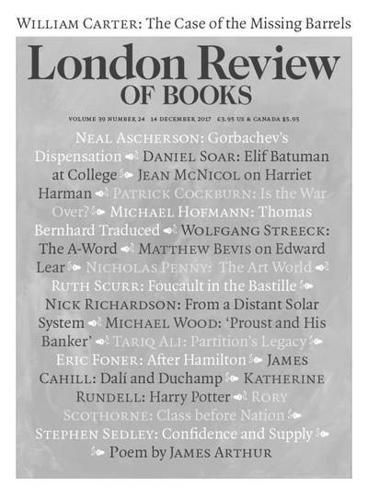
London Review of Books
by
London Review of Books
Published 14 Dec 2017
We are assured that these arsenals exist solely to guarantee that they are never used, but there have been many occasions when nuclear-armed states have made preparations to use them, and war has been averted at the last minute. ‘In the end, we lucked out,’ the former US defence secretary Robert McNamara said, speaking about the Cuban Missile Crisis. ‘It was luck that prevented nuclear war.’ Our current nuclear policy is essentially to hope that our good luck lasts, even as climate change puts increased stress on communities around the world, increasing the likelihood of conflict. Plans to spend more than $1 trillion to enhance the US nuclear arsenal, and £205 billion to renew the Trident missile and submarine systems in the UK, will exacerbate these dangers by fuelling a global arms race, and will divert resources that could be used to secure people’s well-being.
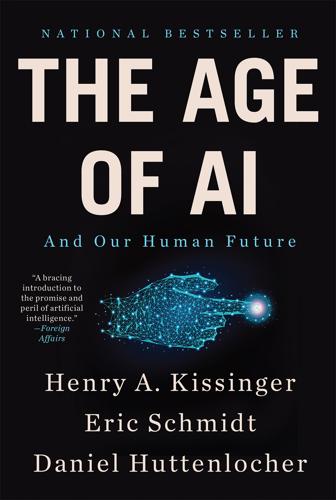
The Age of AI: And Our Human Future
by
Henry A Kissinger
,
Eric Schmidt
and
Daniel Huttenlocher
Published 2 Nov 2021
Nor has either been pursued in earnest for the major new classes of weapons, cyber and AI, that have been invented in the post–Cold War era. Yet as entrants to the nuclear, cyber, and AI arenas multiply, the arms-control era still holds lessons worthy of consideration. Following the nuclear brinkmanship and apparently near conflict of the Cuban Missile Crisis (in October of 1962), the then two superpowers, the United States and the Soviet Union, sought to circumscribe nuclear competition through diplomacy. Even as their arsenals grew, and the Chinese, British, and French arsenals entered a calculus of deterrence, Washington and Moscow authorized their negotiators to engage in more substantive arms-control dialogue.
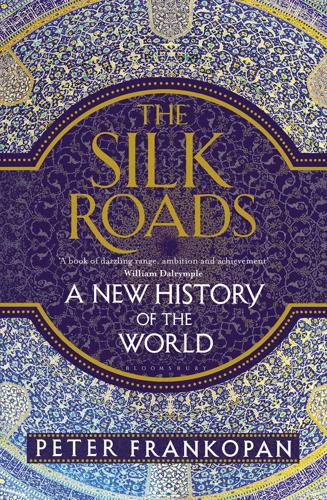
The Silk Roads: A New History of the World
by
Peter Frankopan
Published 26 Aug 2015
Hours before the attack began, a CIA report confidently stated that ‘we relate low probability to the possibility of the initiation of a military operation against Israel by the two armies’ – despite the knowledge that Egyptian and Syrian troops were gathering near the border; they were doing so either as part of a training exercise, the report concluded, or ‘in fear [of] offensive steps [that might be taken] by Israel’.25 Although some have argued that the KGB appeared to have been better informed of the plans, the expulsion of Soviet observers en masse from Egypt a year earlier shows how the strong the desire was to settle scores locally – rather than as part of the wider struggle for Cold War supremacy.26 In fact, the USSR had been actively trying to calm tensions in the Middle East and seeking ‘military relaxation’ in the region.27 The impact of the conflict shook the globe. In the US, the military-alert level was raised to DEFCON 3, indicating that the risk of a nuclear launch was considered to be imminent – and higher than at any point since the Cuban missile crisis of 1962. In the Soviet Union, the focus was on containing the situation. Pressure was put on Egypt’s President Sadat behind the scenes to agree a ceasefire, while the Soviet Foreign Minister, Andrei Gromyko – a consummate political survivor – personally pressed President Nixon and his newly appointed Secretary of State, Henry Kissinger, to act jointly to prevent a ‘real conflagration’ that might easily lead to war spreading.28 The real significance of the Yom Kippur War, so named because the attack began on the Jewish holy day, lay not in the attempts by Washington and Moscow to work together, nor even in the spectacular results which saw one of the great military reversals in history as Israel went from being within hours of extinction to shattering the invading forces and advancing on Damascus and Cairo.
…
In fact, it had the direct and personal approval of President Reagan himself.130 Between the summer of 1985 and the autumn of 1986, Iran received several major shipments from the US, including more than 2,000 TOW missiles, eighteen Hawk anti-aircraft missiles and two consignments of spares for the Hawk systems.131 Not all were delivered through Israel, for it was not long before deliveries were made directly, though in the process the waters were muddied still further when the proceeds of the sales were used to provide funds for the Contras in Nicaragua. Ever since the Cuban missile crisis Washington had been spooked by the threat of Communism on the United States’ doorstep and was keen to fund dynamic groups capable of acting as effective bulwarks against left-wing rhetoric and politics – and would pass over their shortcomings in silence. The Contras, who were in fact a loose grouping of rebels often locked in fierce conflict with each other, were a major beneficiary of American anti-Communist doctrine – and foreign policy blindness.
…
W., here, here Bush, George W., here, here, here, here Bushihr, here, here, here nuclear site, here, here Bustani, José, here Būyid caliphate, here, here Buyl, Bernardo, here Byzantium (Byzantine empire) alliances with Khazars, here collapse of, here, here competition with Viking Rus’, here and Crusades, here deteriorating relations with west, here golden age of, here and Mongol threat, here and rise of Seljuks, here Cádiz, here Cadman, Sir John, here Caesarea, siege of, here Caffa, here Caffaro, here Cairo, here, here, here, here, here arrival of Mansa Musa, here and rise of Mamluks, here Cakchiquel Maya, here Calcutta, here, here Caldwell, John, here Calicut, here, here arrival of Vasco da Gama, here Calvin, John, here Cambodia, here, here Cambon, Paul, here camphor, here, here Campion Vaughan, Lieutenant Edwin, here Canary Islands, here, here Candida (concubine), here cannabis, here Canterbury, here, here Cão, Diogo, here Cap Breton, here Cape Verde islands, here, here cardamom, here, here Carter, Jimmy, here, here, here, here, here Carthage, here, here cartography, here, here Caspian Gates, here castles, building of, here Castlereagh, Lord, here Catalan Atlas, here Catalaunian Plains, battle of the, here Catherine of Aragon, here Catherine of Braganza, here cave temples, Buddhist, here, here Cavour, Count, here Ceuta, here, here Ceyhan, here Ceylon, see Sri Lanka Ch’oe P’u, here Chaadaev, Pyotr, here Chaghatay (Mongol warlord), here Chamberlain, Neville, here, here Chang’an, here Characene, here Charax, see Basra Charge of the Light Brigade, here chariot racing, here Charles V, Emperor, here, here Charles II, King, here Cheapside Tournament, here Chechnya, here, here, here Chekhov, Anton, here Chelmsford, Lord, here Chelyabinsk nuclear plant, here chemical weapons, Iraqi use of, here Cheney, Dick, here, here, here, here, here Chengdu, here Chernenko, Konstantin, here Cherniaev, General Mikhail, here Chernigov, here, here chess, here, here China Arabs reach, here British relations with, here Christian missionaries in, here, here culinary habits, here and drug addiction, here economic crises, here, here economic growth, here, here, here, here famine in, here financial innovations, here and huaxia concept, here impact of climate change, here intelligence cooperation with US, here knowledge of outside world, here Mongol conquest, here, here, here, here, here pays tribute to steppe nomads, here period of transition, here relations with Rome, here road system, here silver inflows and increased trade, here and Soviet invasion of Afghanistan, here and spread of Buddhism, here struggles with extremism, here Timurid conquest, here China Development Bank, here Chinese Eastern Railway, here Chirac, Jacques, here Chongqing, here Christian art, halo in, here Christian Assyrians, here Christianity competition with Judaism, here, here competition with Zoroastrianism, here, here, here as European common denominator, here Khazars and, here, here languages of, here and militarism, here, here and missionary activity, here, here Mongols and, here outbreak of militancy, here and quest for unity, here reconciled with Buddhism, here sectarianism, here spread of, here, here, here, here, here Christians and early Islam, here, here persecution of, here, here, here, here, here and slave trade, here Churchill, Winston, here, here, here, here, here, here, here, here and First World War, here and naval conversion to oil, here and post-war world, here, here, here wartime conferences, here, here Ciano, Count, here Cicero, here Cieza de León, Pedro, here, here cinnamon, here, here, here, here, here, here, here, here circumnavigation, here Clemenceau, Georges, here Clement V, Pope, here Cleopatra, Queen, here Clerk, George here climate change, here, here, here, here Clinton, Bill, here, here Clinton, Hillary, here Clive, Robert, here ‘Cloth of Antioch’, here cloves, here, here, here, here, here, here Cochin, here, here Coimbatore, here ‘coin wars’, here coinage Christian, here, here debasement of, here Greek, here Islamic, here Khazar, here and long-distance trade, here, here, here, here of Menander, here and monetisation of trade, here Mongol, here Persian, here Roman, here, here, here, here Seljuk, here Colombo, here, here Columbus, Christopher, here, here, here, here, here, here, here, here, here and liberation of Jerusalem, here, here parallels with, here, here and religious warfare, here ‘Commissar Order’, here Communism hammer and sickle flag, here and Islam, here origins of, here and pan-Arabism, here resurgence, here Concessions Syndicate, here Confucianism, here, here Confucius Institutes, here Conolly, Arthur, here Constantine, Emperor, here, here, here Constantinople and Allied First World War aims, here arrival of Jews in, here as Christian centre, here, here, here, here defensive walls, here fall of, here, here founding of, here, here hit by financial crisis, here Italian interests in, here, here, here known as Mikli-garðr, here Persians threaten, here and pilgrimages, here plague in, here planned Russian occupation of, here reception of Türkic ambassadors, here sack of, here contra-corsarios, here Copeland, Miles, here coral, here, here, here Córdoba, here, here, here, here Corfu, here, here Corinth, here Cornwallis, Lord, here Corsica, here Cortés, Hernán, here, here Cotte, Edouard, here Council of Chalcedon, here, here, here Council of Clermont, here Council of Nicaea, here Cox, Sir Percy, here, here Crete, here, here Creusot-Loire, here Crimean War, here crocodiles, here Crusades, here, here, here, here, here, here, here, here failure of, here, here, here, here Ctesiphon, here, here, here, here, here, here Cuba, massacre of villagers, here Cuban missile crisis, here, here, here Cuerdale (Lancashire), here Cumans, here, here Curzon, Lord, here, here, here, here, here cyber-terrorism, here Cyprus, here, here Cyril, Patriarch, here, here Cyrus the Great, here, here Cyrus, Patriarch, here Czechoslovakia, occupation of, here Dahl, Roald, here Daladier, Edouard, here Dallam, Thomas, here Dalrymple, William, here Damascus, here, here, here, here, here, here, here, here Damietta, here Dandanakan, battle of, here Dandolo, Doge Enrico, here Daniel of Morley, here Dara, here, here, here Dar-es-Salaam, embassy bombing, here Darius the Great, here, here Darius III, King (of Persia), here Darré, Richard, here Dāwud, Muammad, here, here, here death sentences, Islamic sanction for, here DeGolyer, Everette Lee, here Dehua, porcelain production, here Delft, ceramics industry, here Delhi, here, here Delphic maxims, here Delta Force, here, here Demetrius, bishop of Antioch, here Deng Xiaoping, here Detti, Guido, here Deutsche Bank, here devakula (temples of the divine family), here Dewashtich (ruler of Panjikent), here Dhahran bombing, here Dias, Bartolomeu, here diet, improvements in, here Dinis, King (of Portugal), here Diocletian, Emperor, here, here Disraeli, Benjamin, here Diu, Ottoman attack on, here Dīwān lughāt al-turk, here dīwān, office of, here Djenné, here dodos, as gifts, here Donbas basin, here Dost Muammad, Shah, here Dostoevskii, Fyodor, here Dreyfus, Louis G., here Drummond-Wolff, Sir Henry, here, here Dubrovnik (Ragusa), here, here Dubs, Adolph, here Duisburg, here Duleep Singh, Maharajah, here Dulles, Allen, here Dulles, John Foster, here, here, here, here Dunhuang, here, here, here, here Dunsterville, General Lionel, here Durand, Sir Mortimer, here Dürer, Albrecht, here Dutch East Indies, here, here Dutch East Indies Company (VOC), here, here, here, here Dutch Republic, rise of, here, here Dutch West Indies Company (WIC), here Dzungarian gate, here East India Company, here, here, here, here, here, here, here Easter, date of, here Eastland Company, here ebony, here, here Eden, Anthony, here, here Edessa, here, here, here, here, here, here, here Edward I, King, here Edward VII, King, here, here Egypt achieves independence, here Alexandrian conquest, here anti-British rioting, here Arab conquest, here, here Crusaders and, here, here exports of luxury goods, here Fāimid conquest, here, here, here grain exports, here Ottoman conquest, here overthrow of Farouk, here, here and pan-Arabism, here Persian conquest, here plague in here relations with Portugal, here and rise of Mamluks, here, here and rise of Saladin, here Roman conquest, here Roman recovery of, here Venetian interests in, here Eichmann, Adolf, here Eisenhower, Dwight D., here, here, here ‘Eisenhower doctrine’, here El Alamein, battle of, here El Escorial, palace of, here Elephanta, cave temples, here elephants, as gifts, here Elizabeth I, Queen, here Ellenborough, Lord, here Ellora, cave temples, here Elmina, here Elphinsonte, Major-General, here Elwell-Sutton, Laurence, here Emesa, here England armed forces, here break with Rome, here, here collections of antiquities, here and emigration to America, here maritime revolution, here plague in, here population growth, here relations with Low Countries, here relations with Ottomans, here relations with Persia, here, here relations with Spain, here, here, here and slave trade, here voyages of discovery, here see also Britain Enlightenment, here, here, here Entente Cordiale, here Enver Pasha, here Erasmus, here Erbil, here Ermolov, General Aleksei, here Etemad, Dr Akbar, here Ethiopia, here, here, here Eto’o, Samuel, here Ettel, Erwin, here Euclid, here Eudokia, here Euler, Leonhard, here eunuchs, here Euripides, here European Union, here, here Eurovision Song Contest, here Evelyn, John, here Faisal I, King (of Iraq), here Faisal II, King (of Iraq), here Falkenhayn, General Erich von, here al-Fārābī, Abū Nar, here Farman-Farma, Prince, here, here Farouk, King (of Egypt), here, here fashion houses, here fasting, here, here, here Fatehpur Sikri, here Fat Alī, Shah, here Fāimid caliphate, here, here, here fatwas, here Ferdinand and Isabella (of Spain), here, here Fez, here Field of Blood, battle of the, here financial crisis, fifteenth-century, here, here Firdawsī, here fire temples, Zoroastrian, here, here fish, worship of, here Fisher, Admiral Sir John, here, here Fitzwilliam Museum, here flagpole, world’s tallest, here Fleischer, Ari, here Florence, here, here, here, here ‘fool’s gold’, here footwear, prices of, here Ford, Gerald, here Ford Foundation, here Ford Motor Company, here, here Fort Nassau, here Fort Ross, here Foster, Norman, here ‘Four Masters’, here Foxconn, here Fra Angelico, here France armed forces, here fall of, here, here, here First World War aims, here and Red Line Agreement, here, here relations with Persia, here relations with Russia, here, here Francis of Assisi, here Franco-Prussian War, here frankincense, here, here, here, here, here, here Franks, General Tommy, here Franz Ferdinand, Archduke, here, here, here, here Fraser, Sir William, here Fraser-Tytler, Sir Kerr, here Frederick Barbarossa, Emperor, here Frederick II, Emperor, here French Revolution, here Frobisher, Martin, here Fulton, Missouri, Churchill’s speech at, here, here furs, trade in, here, here Furtado, Nelly, here Fürth, here Fusā, here, here, here Gaddafi, Muammar, here Galileo Galilei, here galley-slaves, freeing of, here Gama, Vasco da, here, here, here, here, here, here Gamelin, General Claude, here Ganjavī, Mahsatī, here Gansu corridor, here, here Gao, here Gardane, Comte de, here Gārgī Samhitā, here Gates, Robert, here, here Gaugamela, battle of, here Gaul, here, here Gazprom, here Geneva Protocols, here Genghis Khan, here, here, here, here, here, here Genoa and Black Sea trade, here competition with Venice, here, here, here decline of, here destruction of Pisan fleet, here and gold trade, here plague in, here rise of, here, here, here, here, here, here George III, King, here, here George V, King, here George, Clair, here Georges-Picot, François, here Georgia, here, here Gepids, here Germany agricultural production, here and approach to First World War, here, here develops siege mentality, here food shortages, here, here increased animosity towards, here pact with Soviet Union, here, here, here, here, here, here, here plague in, here and Second World War defeat, here, here unification, here Getty, J.

Palo Alto: A History of California, Capitalism, and the World
by
Malcolm Harris
Published 14 Feb 2023
The senior Malone was part of a new cohort of airmen who, operating with massive national support infrastructures (including those designed by Terman and Shockley), performed with unheard-of efficiency—which is to say they killed a lot of people very fast. After the war, he became a military liaison to the intelligence agencies, and in 1962 he sat helplessly at his teletype as the nation’s computer systems escalated toward apocalypse. After the Cuban Missile Crisis and a heart attack, he grabbed his family and drove to California for a job at NASA. Here’s how the junior Malone describes the wave of immigration that brought his family to Santa Clara County, “the fastest growing place in America”: Young men, new families in tow, arrived by the scores each day, armed with a GI Bill degree in aeronautical, electrical, or mechanical engineering, and looking for a piece of the aerospace future.
…
Strength by the United States in preparedness and sense and courage in diplomatic action can prevent both.”xiv Yet there were some diplomatic problems in a Shockley-Arnold preparedness strategy based on flooding the world with weapons. An Eisenhower plan to sell discount nuclear-tipped intermediate-range ballistic missiles to NATO allies in Europe (standard military Keynesianism) helped precipitate the Cuban Missile Crisis five years later, when the first-strike nukes showed up in Turkey, on the Soviet doorstep.xv But missiles kept the suburbs growing and the Reds everywhere in check. And when they didn’t, that’s what 30,000 tons of napalm were for. The conventional American narrative about the Korean War, to the degree that we bother to tell one, is about a country and a global order brought together.
…
“Herbert Hoover to Douglas Macarthur, October 17, 1946,” Herbert Hoover Papers, Post-Presidential Individual Correspondence, 1933–1964, Herbert Hoover Presidential Library, Box 129. xv In a confusing bit of loophole-based proliferation, the nuclear warheads technically still belonged to the United States, while the missiles were sold to host countries. Barton J. Bernstein, “The Cuban Missile Crisis: Trading the Jupiters in Turkey?,” Political Science Quarterly 95, no. 1 (1980): 99. xvi Not to be confused with Polish-American engineer and fellow Palo Altan Paul Baran, who’s credited with designing data packets while working at RAND on nuke-resilient networking infrastructure. xvii The Bay of Pigs was only about six months away; maybe the White House should have consulted Baran.

The Coffee Book: Anatomy of an Industry From Crop to the Last Drop
by
Gregory Dicum
and
Nina Luttinger
Published 1 Jan 1999
In 1962, with extreme oversupply causing ever-falling coffee prices (stocks were well on their way to totaling double annual consumption), many analysts were convinced that the Latin American economies were on the verge of collapse and warned of the potential political consequences. The Brazilian economy in particular, 51 percent of which came from coffee earnings, was seen as the keystone in maintaining U.S. influence in the region. By 1963, at the time of the Cuban Missile Crisis, the shift was nearly complete. John F. Kennedy’s Alliance for Progress—a massive capital infusion into Latin America for the explicit purpose of thwarting Communism in the region—was seriously threatened by an open coffee market. As Kennedy noted, “a drop of one cent a pound for . . . coffee costs Latin American producers $50 million in export proceeds—enough to seriously undercut what we are seeking to accomplish by the Alliance for Progress.”1 Other commentators were even more blatant.
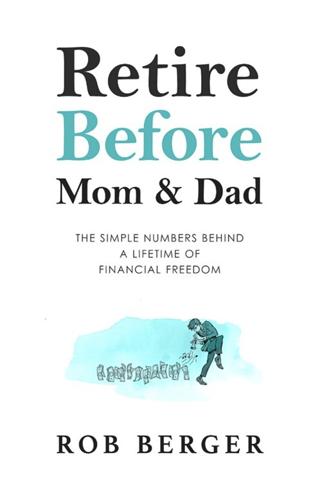
Retire Before Mom and Dad
by
Rob Berger
Published 10 Aug 2019
Our economy was in trouble and people were scared. Yet as bad as things were, let’s put 2007-2009 into perspective. The stock market has seen some really tough times: The stock market crash of 1929 The Great Depression WWII The Korean War The Bay of Pigs and the Cuban Missile Crisis The Vietnam War The Oil Embargo Interest rates near 20% (1980-1982) Black Monday (1987—market crashes 22.6% in one day) Dot-Com Bubble 9/11 Here’s the point. We don’t know what the next crisis will be. We also don’t know when it will occur. But we know one thing for sure.
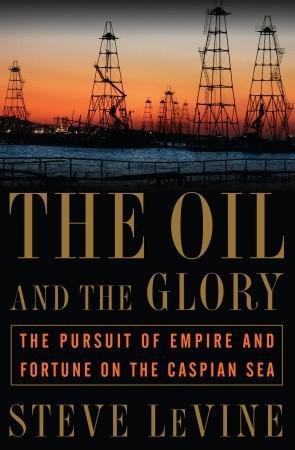
The Oil and the Glory: The Pursuit of Empire and Fortune on the Caspian Sea
by
Steve Levine
Published 23 Oct 2007
Three years later, he and a Swedish partner named Ralph Feuerring negotiated an unqualified masterstroke—exclusive rights to import Soviet chrome into the United States. A deal that made both men millionaires, it was all the more extraordinary considering that superpower relations at the time were strained to the breaking point over the Cuban Missile Crisis. Over fifths of Dewar’s after business hours, Oztemel regaled his subordinates with his account of landing the deal. The turning point, he would say, was his friendship with a powerful Soviet minister named Anastas Mikoyan, a former trusted aide to Stalin. That no one, including his closest associates and friends, ever actually saw him with Mikoyan didn’t seem to matter.
…
Huhs and a gangly classmate named Carl Longley liked the sound of it: a chance for adventure, rather than the mundane corporate work to which their classmates were headed. The Stanford pair flew east. In their interviews, Giffen told them that superpower relations were changing. The chill generated by two decades of hostilities—Moscow’s invasion of Hungary, the Bay of Pigs fiasco, the erection of the Berlin Wall, the Cuban Missile Crisis, the Vietnam War, the crushing of the Prague Spring—had passed. Now, as the 1960s neared an end, détente was blossoming, led by the anti-Soviet warhorse Nixon and his brainy German-born adviser Kissinger. Trade barriers between the United States and the Soviets were falling, Giffen told his visitors, and the Park Avenue firm he represented was well positioned to profit from the boom that was sure to come.
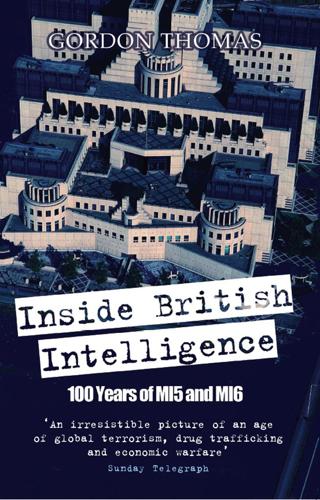
Inside British Intelligence
by
Gordon Thomas
The dozens of technicians working shifts in Federal Building 213 handled between them an average daily input of two million images downloaded from the U.S. satellites. They had been the first to see the infuriated face of a Soviet general in East Germany when the Berlin airlift had started, and the first to observe the Cuban missile crisis unfold and then collapse with the departure of the Russian ships carrying their rockets back home. There was a running joke among the technicians that they would be the first to see Doomsday. Each operative had a workstation equipped with an infrared scanner, rather like a microscope, to search every dot of each image that appeared on his or her screen.
…
They had trawled their way down through California’s Silicon Valley and the campuses of America’s leading universities, visited London, Paris, Madrid, and Munich, and gone to all those places where information on germs was available. Basson had visited Taiwan’s CBW facilities and ordered some of its state-of-the-art equipment. On the shelves were studies of how the Pentagon had once planned to attack Fidel Castro’s Cuba with toxins in the run-up to the Cuban Missile Crisis and of how, during the Vietnam War, scientists at Fort Detrick had found a way to preserve the variola virus, smallpox. Using a process called lyophilization, they had successfully freeze-dried the virus so it would remain dormant and then, when returned to room temperature, would be even more virulent.

Beyond the Wall: East Germany, 1949-1990
by
Katja Hoyer
Published 5 Apr 2023
Berlin had been at the centre of Cold War tension for well over a decade now, and both sides were supremely conscious of the potential escalation even a small incident there could cause. As ordinary people rushed to the emerging wall on both sides of the city, all it took was a nervous guard to pull the trigger or for tensions between the armed units of East and West to spill over into an exchange of fire. The Cuban Missile Crisis a year later showed just how close the world stood on the brink of nuclear warfare. In the heated context of the early 1960s, the building of the Berlin Wall might well have provided the spark that turned the Cold War into a hot one. And both Ulbricht and Honecker knew it. An enormous responsibility lay on the shoulders of the civilians in the Combat Groups who were asked to support the building of the wall.
…
W., 412 Calgary Winter Olympics (1988), 378–9 Carl Zeiss Jena (company), 194 Carlsohn, Hans, 216–17 Catholic Church, 76, 100, 112, 135, 278, 287, 289, 347, 348 Ceaus‚escu Nicolae, 352 Central Committee of SED, 120, 124, 127, 201, 237, 277, 290, 316, 335, 339, 409; attempts to rein-in Stasi (early-1960s), 219–20; entire membership resigns (3 December 1989), 410; and fall of Ulbricht, 246–51; headquarters of in East Berlin, 102, 246; Honecker’s ‘Beat Ban,’ 212–13; Mielke’s rise in, 107; and opening of the Wall (9 November 1989), 402; place within SED structure, 84, 88; political enemies of Honecker, 353; power struggle after June uprising (1953), 139–41; Secretariat of, 84, 88, 140, 211, 212; and Ulbricht’s Westpolitik, 243 Centrum (shopping centre chain), 256–7 Chávez, Hugo, 137 Chemnitz, 270, 386 Chernenko, Konstantin, 351–2, 353, 355–6, 357 Chernobyl nuclear disaster (April 1986), 384 Cherokee Nation, 373–4 Chile, 265 Christian Democratic Union (CDU), 59, 63, 81, 85, 390, 391, 413; and foundation of GDR, 74; in GrandCoalition (1989-90), 414; and ideological purges of early 1950s, 87–91; youth organization in FRG, 260 Churchill, Winston, 35 City (rock band), 268 civil/human rights: growing protests in late-1980s, 389, 390; Helsinki Accords (August 1975), 291–2, 386; human rights groups, 386, 389; illusion of in GDR, 85, 109; and ‘New Course’ (9 June 1953), 132; and public hopes for peace/security/food in 1950s, 109–10; and Schalck–Strauß ‘channel,’ 343–4 Clausewitz, Carl von, 350 ‘Clausewitz – Life of a Prussian General’ (film), 350 Claussen, Peter, 372–4 coffee: ‘coffee agreement’ with Mengistu, 299–300; coffee crisis (1977), 293–6; ‘Erichs Krönung’ (Erich’s brew), 295, 300; GDR’s production project in Vietnam, 296–8, 305; production in African nations, 298–300; supply of as huge and costly issue, 294, 295–6, 299–300 Cold War: Berlin as focal point of, 75, 125, 171–86, 207–8; Berlin Blockade (1948-9), 72, 73, 74–5; Fukuyama’s end of history claim, 3–4; heated tensions of the early 1980s, 342–3; Hungarian Uprising ends ‘thaw,’ 151; June uprising stoked by West, 129, 133, 141–2; Khrushchev’s Berlin demilitarization demands, 152–3, 171–2; Korean War (1950-3), 119; McCarthyism, 119; simplistic images of the Other, 7; ‘thaw’ after Khrushchev’s takeover, 149–50; unfolds on the world stage (1947-8), 72, 73; West sees victory as proving alternative models wrong, 5; Western intelligence agencies, 139, 141–2, 273–4 Communist International (Comintern), 12, 18, 22–3, 28, 29, 37, 48, 106, 137 consumer goods: car ownership, 197–8, 280, 325, 365; Intershops, 322–3, 327, 338; production of, 229, 280, 324–5, 334, 336–7, 365–6; refrigerators, 229, 280, 324–5, 365; subsidized branded American jeans, 256–9, 279, 327; telephones, 229; television ownership, 226, 280, 324–5, 337, 365; washing machines, 69, 229, 280, 324–5, 365 Crimean Peninsula, 328 cruise liners, 186–9, 224, 231 Cuba, 188, 300–3, 304, 319 Cuban Missile Crisis (1962), 175, 188 Czechoslovakia, 89, 215, 221, 233, 242 Dachau concentration camp, 64 Damerius, Helmut, 25 Danzig (now Gdańsk), 367 Davis, Angela, 260–1 DEFA (state-owned film production company), 128, 213, 257, 270 defence, national: ‘Defence Education Camps,’ 312–13, 314; dense network of sirens, 318; militarization of society after June 1953 events, 142–7; militarization of society (from late 1970s), 306–16, 317–19 Democracy Now, 411 Democratic Awakening, 413 ‘democratic centralism,’ doctrine of, 91–2 Democratic Farmers’ Party (DBD), 81, 390 Demuth, Renate, 43–4, 45, 323 denazification, 35, 58, 107–8; as foundational dogma of GDR, 36, 117–18 Dessau, 304 Deubel, Klaus, 334–5 Diener, Alfred, 135 Dietrich, Wolfgang, 339–40 Dimitrov, Georgi, 29, 37, 48, 49, 106, 137 Doherr, Annemarie, 171, 172 Döllnsee, Brandenburg, 209–10 Drasdo, Herbert, 217 Drasdo, Ursula, 217 Dresden, 50–1, 154–5, 236–7, 240, 334, 335, 345, 399, 409, 412 Druzhba (Russian gas pipeline), 360–5 Druzhba (Russian oil pipeline), 281, 330 Dubček, Alexander, 215 Duroplast, 198 Dzerzhinsky, Felix, 157–8, 216 East Berlin: 10th World Festival of Youth and Students (1973), 259–63, 271; and 17 June uprising (1953), 133–4, 150; Bebelplatz, 78; Central Committee headquarters, 246; events of October/November 1989, 393–4, 399, 401–4; FDJ’s march on West Berlin (August 1951), 93–6; Fernsehturm, Berlin Television Tower, 5–6, 225–6, 393–4; Friedrichsfelde Central Cemetery, 159, 263; Göring’s former Air Ministry, 77–8, 132; as much smaller than West Berlin, 76; Neue Wache (New Guard), 350; open sector borders, 125, 130, 171–2, 207–8, 217; Pankow district, 163; Stalinallee renamed Karl-Marx-Allee, 150, 225; Stasi’s Ruschestraße headquarters, 216, 217; State Council Building, 234–5, 237, 262, 263; strike at Stalinallee (June 1953), 129, 130, 132–3, 150; Unter den Linden boulevard, 78; Werner-Seelenbinderhalle, 86; Zionskirche, 388–9 Eastern Bloc countries: and Willy Brandt, 233–4, 242–3; Brezhnev Doctrine, 215; and Brezhnev’s conservatism, 214; deep financial problems (1981), 338; dependence on Soviet oil, 330; directive to after death of Stalin, 136; holiday opportunities in, 190; Honecker returns GDR economy to, 254–5, 274; Hungarian Uprising (1956), 16, 151, 163, 217, 313; impact of Gorbachev’s reforms, 398; Prague Spring (1968), 215, 233; show trials in, 89; suppression of Prague Spring (1968), 215, 233; Ulbricht as dismissive of, 242 Eberlein, Werner, 244, 329 Eberswalde, Brandenburg, 300, 301–3 Edition Leipzig (publisher), 350 education: compass on GDR flag, 228; extended secondary school (EOS), 204, 227, 228, 256, 315, 316; higher education, 193, 203–5, 227, 228, 312, 314, 315–16, 317, 318, 320, 325; kindergartens, 138, 155, 236, 239; and militarization of society, 145, 312–16, 318; military service before university, 312–13, 315–16, 317; in Moscow, 23–5, 97, 106; obligatory military education, 312–16; physical education, 235–6, 237; politicized structures within, 240; polytechnic secondary schools (POS), 227, 314; reforms (1965), 226–7; ‘Social Science’ unit at university, 126; and socialist ideology, 157, 160; spending on, 124, 138; technical colleges, 228; vocational training/apprenticeships, 111–12, 123, 155–6, 162, 183–4, 204–7, 227–8, 302, 325, 340, 369; in Weimar era, 105 Egerland, Helmut, 175 Egypt, 231–3 Ehmke, Horst, 273–4 Ehrenburg, Ilya, 42 Eisenhower, Dwight D., 141–2, 153 Eisenhüttenstadt (Ironworks City), 115, 150 Eisleben, 347, 348 Eisler, Gerhart, 74 electoral politics: doctrine of ‘democratic centralism,’ 91–2; fixed, allocated seat shares in GDR parliament, 81, 91, 91–2, 390–1; local elections (May 1989), 390–3; March 1990 election, 411, 412–13, 421; shift to multi-party democracy, 420–1; voting process, 92–3, 390–3; Western democracies today, 92 energy supplies: brown coal (lignite), 114–15, 282, 330; and dependency on USSR, 6, 115, 243, 281–2, 306, 329–31, 332–3, 336, 338; Druzhba gas pipeline, 360–5; GDR’s desperate need of, 115, 169, 279, 306; self-sufficiency drive, 114–15 see also oil production/supplies Engelberg, Ernst, 350–1 environmental issues, 114–15, 282, 330, 384, 387–9, 391–2 Erhard, Ludwig, 168, 232 Erler, Peter, 10 Ernst Thälmann Pioneer Organization, 318 Ernsting, Stefan, 265 Erpenbeck, Fritz, 31–2, 47 Ethiopia, 299–300 European Defence Community, 119 Ewald, Manfred, 237–8 Falge, Andreas, 402–4 Falin, Valentin, 58–9 Faustmann, Regina, 111–12, 117, 135, 155–6, 200 Fechter, Peter, 178–81 Federal Republic of Germany (FRG), 145; Adenauer’s election victories, 110; Angela Markel’s family move from, 338; Basic Treaty (1972), 261, 275; Brandt as first Social Democrat Chancellor, 90; constitution labelled as ‘provisional,’ 79, 276; cracking down on opponents, 85; declared the continuity state, 4, 417–22; demonstration in Essen (11 May 1952), 101–2; differences to GDR, 76–7, 114; economic aid from Western Allies, 76; exploits June uprising, 142; Federal Intelligence Service, 273–4; FIFA World Cup hosted by (1974), 266–8; food rationing ended (1950), 124; foreign contract workers, 303; as geopolitical pawn, 168; Germany Treaty (26 May 1952), 121; ‘Grand Coalition,’ 233; grants Israel arms purchase credit, 232; growth of trade volume with GDR (from 1984), 345–6; Hallstein Doctrine (1955), 156, 232–3, 275; idea of 1945 as ‘zero hour,’ 4, 38; and immigration from GDR, 130–1, 162; and inner-German thaw (1970s), 275–6, 322–5, 327, 331–2; limited social mobility in, 240, 316–17; as much larger than GDR, 76, 114; national debt in 1980s, 280; NATO membership, 108, 119, 145–6; new capital in Bonn, 76; ‘ohne mich’ (count me out) generation, 168; open welcome to former Nazis, 117; outright ban of the KPD (1956), 85; proclamation of constitution (23 May 1949), 73–4; rearmament/remilitarization (from 1952), 119, 122, 145–6; religious populations of, 76; reunification as a constitutional aim, 276; Schalck–Strauß ‘channel,’ 341–6, 357; selling of prisoners to, 277–9, 282, 387; Stalin Note (10 March 1952), 119–22, 141; Stasi spies in, 272–3, 274; streamed education system, 227; Welcome Money for East German arrivals, 405–6, 407; women’s employment rates in, 156 see also Adenauer, Konrad; Kohl, Helmut; West Berlin Feist, Margot, 77–8 Fensch, Eberhart, 266 Field, Noel, 89, 90, 103, 106–7 First World War, 14, 15, 104 Fleischer, Anneliese, 118–19, 122 Forck, Bishop Gottfried, 389 foreign labour programme, 300–6 Forum Handelsgesellschaft, 322, 323 France, 119, 121 Frank, Mario, 86 Frederick the Great, 350, 351 Frederick William I, King of Prussia, 351 Free German Trade Union Federation (FDGB), 59, 187, 189, 321 Free German Youth (FDJ), 77–9, 93–6, 112; and 10th World Festival of Youth and Students (1973), 260; banned in West Germany (June 1951), 101–2; and ‘Blue Jeans,’ 255–6, 257; and building of Berlin Wall, 176–7; ‘Convention of the German Youth’ (June 1950), 100–1; denounces Western culture, 160, 212; and Druzhba gas pipeline, 361, 362; Forum (student newspaper), 201; as ‘Hitler’s children,’ 100, 167–8; Honecker as founder, 99–100, 256; Jugendtourist (Youth Tourist), 367; Kuhfeld’s delegation to Berlin (1969), 224, 225–6; Angela Merkel’s role in, 288, 369; militarization of, 144, 145; stuffy image of, 160, 202; waning enthusiasm for, 200–1; Western members of, 101 Freie Welt (Free World) magazine, 264, 265 Freikorps, 14–15 Freudenberg, Ute, 269 Friedrich, Walter, 383 Fritschen, Brigitte, 44, 125, 162 Fritz Heckert (state-owned cruise ship), 186–8, 189, 224 fruits, exotic, 190, 218, 279 Fukuyama, Francis, 3–4 Fulbright Scholarship scheme, 373 Fulbrook, Mary, 93, 108, 205 Fürnberg, Louis, 82–3 Gaddafi, Muammar, 300 Gagarin, Yuri, 200 Geige, Hans die, 364 gender equality: childcare system, 155, 345, 413, 419–20; divorce rates, 207; female officers/recruits in NVA, 380–2; impact of reunification, 415, 419; as inherent feature of socialist ideology, 15, 155, 205; and kindergarten system, 138, 155, 236, 239; limited success of programme, 206–7; obstacles to, 205–7; pragmatic reasons for, 205; women in higher education, 203–5, 207; women in workplace, 111–12, 155–6, 319–20, 380, 419; women’s organizations, 92, 139–40; women’s rights activists, 16; women’s social lives, 156 Genex (mail order catalogue), 323–4, 361, 365, 366 Gerbilskaya, Luba, 21–2 German Communist Party (KPD): and creation of SED (May 1946), 62–4; exiles in Soviet Union, 9–10, 12–14, 15–20, 21–7, 28, 29–33, 36–8, 102; founding of (1918/19), 28, 29; Honecker joins Central Committee, 99; illegal information hubs in Nazi era, 78; members executed in Soviet Union, 19, 22, 102, 106; and Molotov– Ribbentrop Pact (August 1939), 26–7; Nazi suppression of, 11–12, 19, 21–2, 166; Neumann–Remmele group in Soviet Union, 102, 103; outright ban of in FDR (1956), 85; persecution during Stalin’s Terror, 9–10, 13–14, 17–21, 22–6, 31–3, 102; and post-war East Germany (pre-GDR), 35–8, 46–9; prisoners in Soviet gulags, 9–10, 13–14, 17, 25, 33; refounded under Pieck (June 1945), 58; Reichstag deputies (1933), 11–12; resentment towards the nobility, 65–6; Soviet deportations back to Germany, 20–1, 32; survivors of Stalin’s purges, 28, 29, 31–3, 36–8, 46–7, 87; in Weimar era, 14–15, 64, 105–6; in West Germany, 102 German Democratic Republic (GDR): 1950s as decade of missed chances, 167–9; acceptance of conscientious objection, 176, 315; alcohol consumption in, 366; alienates creative artists over Biermann, 291, 292; anti-Soviet sentiment of German men, 146; appeal of a genuinely anti-fascist, socialist state in 1950s, 110–11, 167–8; border crossings of November 1989 period, 403–7; ceases to exist (midnight 3 October 1990), 415–16; closer relations with West (late-1980s), 372–7; consolidation/stabilization (late 1950s/early 1960s), 5, 152–6, 158; dams of change broken (October 1989), 397–406; differences to FRG, 76–7, 114; feeling of helplessness as country dismantled, 415, 418–19; feeling of stability in 1987 period, 365–7; few natural resources in, 114–15, 169, 192–3, 198–9, 258, 281–2, 333; foundation of (7 October 1949), 74, 76; as geopolitical pawn to Moscow, 141, 168, 331–2; German refugees from the east in, 76; historiography of Prussia, 349–51; ideological purges of early 1950s, 87–91, 108; Khrushchev’s continued demand for reparations, 161; lack of political reform in last years of, 382–4, 390–3, 397–9; leadership’s deep mindset of fear, 108, 147, 163–7, 168, 219, 293, 318–19, 388–9; life as dull/stuffy in 1980s, 325, 360–1, 362, 367, 369–71; life as fairly comfortable in 1980s, 261–2, 320–1, 325, 362, 367, 371, 394–5; loses right to write its own history, 4; and ‘Luther Year’ (1983), 346–9; Angela Merkel’s life in, 1, 2–3, 259, 288–9, 367–9, 422; as much smaller than FRG, 76, 114; national flag of, 121, 228; normalization of German history in, 346–51; as not a footnote in German history, 5, 7, 418–23; ‘ohne mich’ (count me out) generation, 168; optimism/hope of early 1970s, 259–64; Ore Mountains (Thuringia and Saxony), 115–16; political events after opening of borders, 408–14; political repression in late-1960s, 228–9, 240; progress during 1960s, 186–98, 199–208, 219–20, 224–8, 229–31, 240, 242, 244–5; public hopes for peace/security/food in 1950s, 109, 110; regime as frightened of its own people, 109, 163–7; religious populations of, 76, 85, 112, 135, 138, 278, 284–9, 292, 349; rich cultural scene in 1950s, 112; room for private withdrawal in, 288–9; serious opposition to Ulbricht’s reforms, 93; show trials in, 89; silence over Red Army rapes, 45–6; Soviet backing of in late 1950s, 153; sudden disintegration of, 2, 397–416; suffocating weight of original economic burden, 114–18, 123–4, 138, 168–9; Ulbricht’s Soviet-style reforms, 86–7, 91, 93; vast Soviet reparations extracted from, 115–17, 168; widening gulf between regime and people, 166–7; widespread discontent at economic situation (early 1950s), 127–30 see also Honecker, Erich; Ulbricht, Walter German Democratic Republic (GDR), economy: 1970s as high point in living standards, 324–5; Apel’s death (December 1965), 214; Bavarian loan (1983/4), 343–5, 357; begins to catch up with the West (1960s), 194–5, 208; collaboration with Japan, 336, 337–8; consequences of land reforms, 66, 124; currency issues, 72–3, 169, 277, 322–4; desperate need for credit in early-1980s, 340–5; East Germans as highly attuned to 1980s crisis, 339–40; economic crisis of 1980s, 334–7, 338–42; economic planning commission, 194; economic/financial crisis (early-1950s), 123–5, 127–30; few natural resources, 114–15, 169, 192–3, 198–9, 258, 281–2, 333; first five-year plan (1951), 123–5; five-year plan (1981), 335; food rationing finally ends (1959), 124, 156; foreign trade/export markets, 6, 156, 192–4, 232, 234, 243, 258–9, 277–81, 319, 342, 345, 350; and FRG’s Hallstein Doctrine (1955), 156, 232–3, 275; fruit and vegetable production, 117, 124; game of ‘catch-up,’ 111–18, 123–4, 168; government lies about 1980s crisis, 338–9; growth of trade volume with FRG (from 1984), 345–6; haphazard/absurd efficiency measures (1981), 335; highest living standards in communist world (1970s), 6, 324–5; ‘Honecker Account,’ 279, 281; Honecker returns economy to Soviet bloc, 254–5, 274; Honecker’s five-year plan (1971), 253–9; illusion of progress as post-1975 state policy, 281–2; impact of armed forces build-up, 124–5; impact of denazification, 118; impact of emigration on, 125, 130–1, 138, 153, 161–2, 169–70, 171; impact of Russian oil price rise (1975), 281–2, 306; inherent dependence on Soviet Union, 6, 280–1, 306, 329–31, 332–3, 336; loss of expertise/resources to USSR, 118; nationalization policies, 36, 70, 71, 153, 161, 169, 254; need for high-tech future in 1980s, 335–6; ‘New Course’ (9 June 1953), 132, 138; ‘New Economic System’ (NES, 1963)., 193–5, 198–9, 210, 214, 335; possession of foreign currencies legalized (1974), 322–4; rising living standards from late-1950s, 153, 158, 229–31; rising living standards in 1970s, 279–80, 320, 324–5; rising living standards in post-1953 period, 138–9; rising productivity in 1970s, 279–80; sale of Nazi era paraphernalia, 282; Schalck–Strauß ‘channel,’ 341–6, 357; seven-year plan (1959), 161; Soviet loan and food subsidies (1953), 139; Treuhand’s privatization of, 414–15, 418; Ulbricht’s sharp U-turn, 160–1; Ulbricht’s Westpolitik policy, 243–4, 274; Western creditors in 1970s, 279, 281; withdrawal of Western investments (1982), 338 see also consumer goods German Democratic Republic (GDR), emigration/escape from: Baltic Sea route (‘State Border North’), 385; brain drain as inevitable with open border, 169–70; brief lull in emigration figures (1958), 153, 162, 169; from cruise ships, 187; economic and social impact of, 125, 130–1, 138, 153, 161–2, 169–70, 171, 385–6; facilitated by Western intelligence agencies, 139, 153; impact of ‘New Course,’ 138; legal methods in 1980s, 369–70, 384–5; and Karl-Heinz Nitschke, 385–7; from open sector borders in Berlin, 125, 130–1, 171; record number of leave applications (1988/89), 389–90, 398; refuge in West German embassies (1989), 398; through Eastern bloc after Gorbachev’s reforms, 398; by writers/artists/actors, 160 see also Berlin Wall; border, inner-German German Democratic Republic (GDR), foreign policy/diplomacy: Basic Treaty (1972), 261, 275; and Brandt’s Ostpolitik, 233–4, 242–3, 274; closer relations with West (late-1980s), 382–3; ‘coffee agreement’ with Mengistu, 299–300; de facto break with Moscow (1978), 378, 383; foreign aid to socialist nations, 303–4, 305–6; foreign contract workers, 300–6; friendship with Arab nations, 231–3; and Honecker-Kohl relationship, 353–6, 357, 359–60; inner-German thaw (1970s), 275–6, 322–5, 327, 331–2; joins United Nations, 261; membership of United Nations (1972), 6, 261; recognition by foreign countries, 6, 231–3, 261–2; signs Helsinki Accords (August 1975), 291–2, 386; Transit Agreement (1971), 275 German Democratic Republic (GDR), governmental structure: constitution (1968), 228–9; designed for easy merging with West Germany, 79, 110; first constitution, 79–85, 80, 109; fixed, allocated seat shares in parliament, 81, 91, 91–2, 390–1; forced democratization of (from October 1989), 399–406; illusion of civil rights and basic freedoms, 85, 109; as initially bicameral, 81; initially designed as federal system, 79–81; interim governing arrangements after collapse of SED, 410, 411; Ministerrat (Council of Ministers), 82; People’s Chamber (Volkskammer), 77–8, 81, 82, 84–5, 91–3, 132, 408–10, 415; and pretense of democracy, 49, 54–5, 61–2, 81, 390–3; role of President abolished (1960), 81; Round Table, 411; Staatsrat (Council of State), 81–2 see also Central Committee of SED; politburo of the Central Committee German Democratic Republic (GDR), political protests/opposition: 17 June uprising (1953), 5, 128–9, 130, 133–6, 139–40, 141–2, 168, 200; coverage in the Western media, 133, 385, 386–7, 388–9, 392; against denied applications for permanent leave, 370, 385, 386–7, 388–9; deportations to FRG, 389; environmental groups, 384, 387–9; events of October/November 1989, 393–4, 399–406; growth of in late-1980s, 389; human rights groups, 386, 389; idea of collective action as powerful, 387–9; Krenz promises Wende (turning point), 401, 407–8; as largely absent in 1960s, 245; and local elections (May 1989), 390–3; New Forum proclamation, 398–9; Karl-Heinz Nitschke, 385–7; organized groups from mid-1970s, 370, 384–93; pacifist/peace organizations, 384, 387, 388–9; question of GDR’s future (November 1989 period), 411–12; Red Flags targeted, 133, 146; as regular in 1953 period, 131, 132–5; ‘Riesa Petition for the Full Accomplishment of Human Rights’ (1976), 386; Soviet crushing of 17 June uprising, 134–5, 141; strike at Stalinallee (June 1953), 129, 130, 132–3, 150; Ulbricht’s responses to 1953 uprising, 136, 138, 141; white circles, 387 German reunification (1990): day of (3 October 1990), 415–16; debates in GDR (from November 1989), 411–13; desire to see as happy ending, 3–4, 417; Deutsche Mark exchange rate issue, 413, 414; East Germans’ refusal to forget GDR, 421–2; East-West economic imbalance, 418–19; final treaty signed (31 August 1990), 415; FRG-GDR negotiations, 414, 415; impact on childcare system, 419–20; Kohl’s ten-point plan for (28 November 1989), 412; limited social mobility after, 240; many successes of, 1–2; and March 1990 election, 412–13; monetary union, 414; nostalgia for GDR as not desire to bring it back, 421–2; old fault lines as not disintegrating, 418–22; People’s Chamber formally votes for, 415; popular support for in GDR (1989-90), 411–13; and role of women, 415, 419; and shift to multi-party democracy, 420–1; ‘solidarity surcharge’ (1991), 418; Treuhand’s privatization of GDR economy, 414–15, 418; triggers wave of change for East Germans, 417–22; Two Plus Four negotiations, 415; Wende as beginning of a dynamic process, 423; ‘West German’ equated with ‘normal,’ 417, 420–2; writing of GDR out of national narrative, 3 German Social Union, 413 German Unity Day (3 October), 1–3, 415 Germany: arrival of Red Army at end of war, 39–46, 47, 63, 146; Deutsche Mark (DM) introduced (1948), 72–3, 74, 169; four zones of occupation, 35–6, 58, 67, 68–9, 70–1, 72, 74, 76, 114, 172–3; German prisoners of war on Eastern Front, 30, 51; ‘Gruppe Ulbricht’ arrives in (April/May 1945), 46–9; ‘magnet’ theory on reunification, 243; merging of US and British zones (1947), 72; move towards division (1948-9), 71–4; Parteiselbstschutz (paramilitary wing), 105–6; post-war influx of refugees from the east, 51–2, 59, 76; process of ‘overcoming’ its own history, 422–3; question over inevitability of division, 74–5; rapes committed by Red Army soldiers, 40, 42–3, 45–6, 48, 146; reunification issue in 1960s/70s, 233–4; Revolution (1918-19), 10, 78; Ruhr industrial heartlands, 69, 115; Second World War reparations, 35, 68–9, 76, 115–17, 129, 139; shortages in post-war period, 41, 48, 50, 51; Soviet desire for reunification, 86–7, 100–1, 108, 110, 119–21, 122, 131–2; Soviet Zone of Occupation, 32–4, 35–8, 46–9, 51, 53–7, 58–66, 68–73, 74–5, 76, 114, 143; unification (1871), 417; wartime ruin/devastation, 47, 50–1, 53, 55–6, 77, 112, 153–4, 156–7; Weimar era, 14–15, 63, 64, 68, 105–6, 144, 166, 197; Western sectors, 63, 70–1, 72–3, 76 see also Federal Republic of Germany (FRG); German reunification (1990); Nazi Germany and entries for German Democratic Republic (GDR) Gieseke, Jens, 274 Goebbels, Joseph, 28–9, 62 Good Bye Lenin!
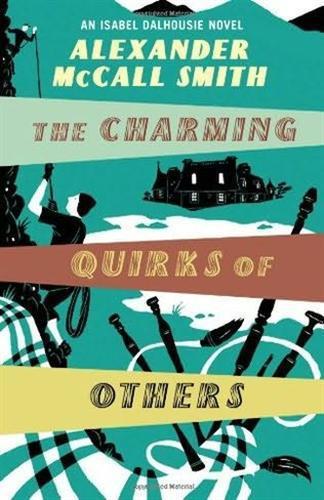
The Charming Quirks of Others: An Isabel Dalhousie Novel
by
Alexander McCall Smith
Published 11 Oct 2010
She only had to think for a moment before she realised that it was not the first time; there had been many points at which people had thought that their world was ending, and some of these not very long ago. In the sixties and seventies many people thought just that as they watched two bristling superpowers staring one another down, fingers on the triggers of vast nuclear arsenals. One of Isabel’s aunts had told her about those days during the Cuban Missile Crisis when she had thought that nuclear war was inevitable. She had found herself feeling oddly calm, and had been determined to spend what she imagined were their last days in peace. “I sat and looked at pictures,” she said. “Photographs of college friends. Of our old family house in Mobile. Pictures of the world.
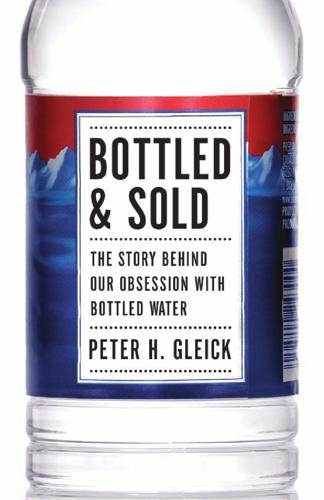
Bottled and Sold: The Story Behind Our Obsession with Bottled Water
by
Peter H. Gleick
Published 20 Apr 2010
My father and I spent hours birding there, wandering from one quiet oasis to another, finding the avian rarities that landed in the park during spring and fall migrations. We knew where all of the water fountains were, often navigating our way from fountain to fountain on days when the rest of the city sweltered. And as a young child in a New York City public school, I ducked and covered my way through the Cuban Missile Crisis in the halls by the white ceramic drinking fountains built into the walls themselves. Our formal pleas to our elementary school teachers of “May I get a drink of water” were certainly as common as “May I go to the bathroom.” But the history of water-related diseases has always left water fountains suspect, despite our efforts to provide clean water.
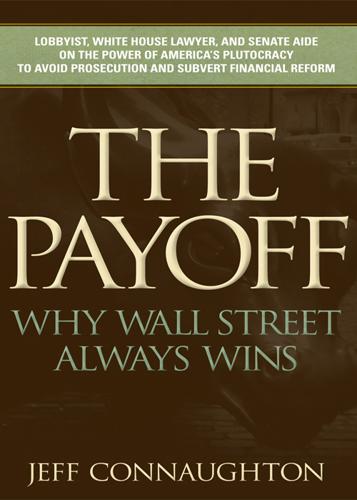
The Payoff
by
Jeff Connaughton
He walked with the microphone in his hand into the crowd, motioning everyone to lean forward to hear his secret. Then he yelled, “Those troops have been in Cuba all along, and everyone knows it!” The crisis was a sham, Biden argued, manufactured by the hawks to kill SALT II. Ever since the Cuban missile crisis in 1962, the Soviets had had as many as forty thousand troops in Cuba and had been drawing them down all along. Yes, there were still three thousand infantry troops in Cuba. No matter whether they were instructors or combat troops, they had no assault capability, no helicopters or ships that could deliver them to our shores.
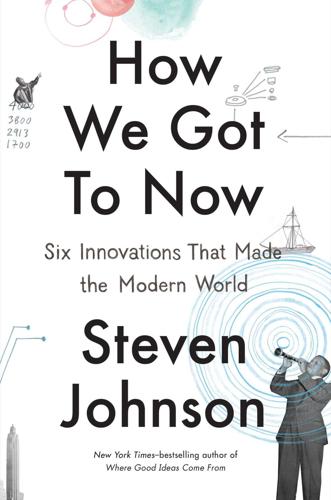
How We Got to Now: Six Innovations That Made the Modern World
by
Steven Johnson
Published 28 Sep 2014
That was the total bandwidth for a voice conversation between the two continents just fifty years ago: out of several hundred million voices, only two dozen conversations at a time. Interestingly, the most famous phone in the world—the “red phone” that provided a hotline between the White House and the Kremlin—was not a phone at all in its original incarnation. Created after the communications fiasco that almost brought us to nuclear war in the Cuban Missile Crisis, the hotline was actually a Teletype that enabled quick, secure messages to be sent between the powers. Voice calls were considered to be too risky, given the difficulties of real-time translation. Inventor Alexander Graham Bell's laboratory in which he experimented with the transmission of sound by electricity, 1886.
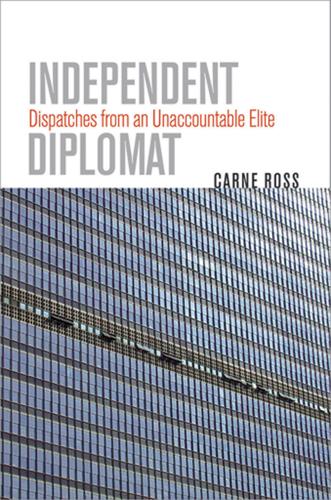
Independent Diplomat: Dispatches From an Unaccountable Elite
by
Carne Ross
Published 25 Apr 2007
For the terms and manners of the diplomats in that chamber reflect those of the way in which foreign policy is practised — by statesmen and diplomats — and talked about — by journalists and academics — across the world. That little room was a microcosm. The turmoil of recent years has brought attention to international affairs in a way unprecedented since perhaps the Cuban missile crisis or the darkest days of the Vietnam war. Living in New York City before September 11, few of my New York non-diplomat friends talked about foreign affairs; if they did, it was often in an academic, disinterested way. Since that dreadful day, one can hardly avoid it. The terms — multipolarity, containment — the names and acronyms — WMD and GWOT — once only known to the insiders of foreign and security policy, have now become ubiquitous.

Happy-Go-Lucky
by
David Sedaris
Published 30 May 2022
Luckily the state’s lieutenant governor was casting blame on the number of exits and entrances the building had rather than on, say, Greece. “The school that I taught at is now holding active-shooter drills,” Lisa told me. “That’s where the students—and mine were third graders—turn off the lights and hide in dark corners.” She sighed. “I’m just glad I got out when I did.” When my sister and I were young, during the Cuban missile crisis, we had atomic-bomb drills. You’d think our teachers would have led us to shelters twelve stories underground, but instead we were told to crouch beneath our desks. What were we thinking, kneeling there with our hands atop our heads? Did we believe the bombs might, at the very most, blow off a few ceiling tiles and that after the attack we’d return to our homes and find everything just as we had left it?
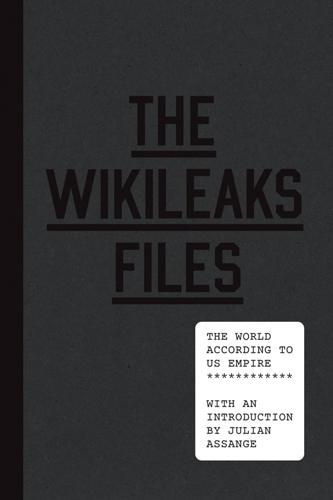
The WikiLeaks Files: The World According to US Empire
by
Wikileaks
Published 24 Aug 2015
This was the same model of using military power to create client regimes in lieu of direct political rule that would be deployed by the United States across other parts of Latin America in the following century.82 It was in 1903 that the US first “negotiated” control of forty-five square miles around Guantánamo Bay as a base for US Navy ships, which stood firm until 1959—and even after that the Castro government that overthrew the regime was unable to compel the US to leave the territory. Following Kennedy’s futile attempts to crush the Cuban revolution during the Bay of Pigs fiasco, and the near-miss of the Cuban Missile Crisis of 1962, the United States decided to create a permanent Marine base in Guantánamo, ostensibly to protect the United States against a Cuban attack. Here it sat, almost forgotten, until 2001. The “war on terror” was launched with the specific intention of accumulating thousands of captives and interrogating them over a long period.
…
Nicholas 289–91 Burns, William 214–15, 217–18, 219, 230, 245–6, 251, 329–30 Bush, George 46, 75, 444–5, 479–80 Bush, George W. 39–40, 77, 81, 99, 108–9, 113, 156, 159, 169, 481–2, 536; and Afghanistan 369, 386, 387, 389; Anti-Ballistic Missile Treaty withdrawal 212, 224; and Brazil 171; China policy 455; and Costa Rica 170; and Ecuador 177; and the ICC 161–2, 177; Iran policy 339–40; and Iraq 354; and North Korea 396–7; Southeast Asia policy 445; START I Treaty 231; Syria policy 320; Turkish policy 244–5 Bush Six investigation 207–10 Business Insider 241 Butler, Martin 487–8 Butler, Smedley 53 Bybee, Jay 108, 207–10 Bybee memo, the 108–9 Cablegate cables 9, 80, 145, 155, 156, 181, 182, 184 Calipari, Nicola, murder 200–1 Cameron, David 47 Campbell, Kurt 400, 412–19 Camp David accords 28, 39, 45 Camp Mercury 103 Canada 538 Caribbean, the 483, 534–5 Carney, Tim 512 Carter Cables, the 145, 157 Carter, Jimmy 29, 63, 120, 474–7 Carter Ruck 114–15 Cartwright, James 423 Castro, Fidel 491, 515 Caulfield, John 521–2, 530–1 censorship 11 Center for a New American Security (CNAS) 400 Cerén, Salvador Sánchez 492 Chalabi, Ahmed 83–4 Chamorro, Violeta 58 Charter of Economic Rights and Duties of States 138 Chassy, Bruce 188–9 Chávez, Hugo 72, 125, 129, 491, 497; containment policy 538–41; coup attempt against, 2002 30, 59–60, 515–16; death 525, 545; obsession with 515; Petrocaribe program 530–4; popularity 522; radical populist allies 541–4; threat 527–8 Chechen War, Second 215 Cheney, Dick 77, 99 CHEROKEE restriction 13 Chile 49, 516; Article 98 agreements 172; economic reform 69–70; human rights 68–9; ICC-related sanctions 172–3; the Kissinger cables 65–70; Pinochet coup 57, 66–8 China 418, 436, 444, 447; and the Philippines 453–5, 456–7; rise of 447–9, 450, 450–8; US suspicion of 451–5, 470 Christian Science Monitor 216 CIA: and Chile 66–8; coup d’état sponsorship 17–18, 484, 516; covert operations 30; and Ecuador 501–2; in Haiti 64; human rights abuses 75; and Iran 331; in Latin America 51, 57; Omar abduction 206–8; Operation Phoenix 102; overthrow of Mossadegh government 28; Project X 102; rendition 14; and the State Department 4; and Turkey 239–40; use of torture 12, 14, 96, 97, 101–3, 105–9, 206, 386–7; in Venezuela 516 civilians: in Afghanistan 382, 384–5; casualty numbers 86, 88, 89; collateral damage 78, 89–93, 382; definition 12, 87–9; disregard for 76; drone strikes 88–9; killings 86–8; military-aged men 87–9, 91–2; targeting 89–93 Clark, Warren 479 classification levels and markings 6, 6–8, 7–8, 149, 150–2 climate change 469 Clinton, Bill 161, 445, 448, 480 Clinton, Hillary 13, 24, 40, 41, 70–3, 405, 490–1 cluster bombs 378–81 Cockburn, Alexander 306 Cold War 45, 50, 55, 60, 62, 182, 183, 212, 235, 416, 433, 442–4, 527 collateral damage 78 collateral murder 350–2 Colom, Álvaro 535–7 Columbia University, School of International and Public Affairs 8–9 Combatant Status Review Tribunals 100 communications, development of 2–3 Communism, threat of 44, 55, 63, 101–2 Comprehensive Anti-Apartheid Act 478, 479 Congo 28 Congressional Research Reports 14, 15 Congressional Research Service (CRS) 169, 177, 368–9, 371–2 Contras, the 57–58, 306, 492 Contreras-Sweet, Maria 492 conventional prompt global strike (CPGS) 233 Conventional Trident Modification program 233 Convention on Cluster Munitions (CCM) 379 Copenhagen, Climate Conference 469 corporate corruption 113, 113–17 Correa, Rafael 125–32, 498–503, 516, 541 Cossio, Mario 509 Costa Rica 170 Coughlin, Dan 533 courts, use of WikiLeaks materials 9–10 Crimea 187, 217 Croatia 163 Cserveny, Vilmos 340 Cuba 26, 50, 51, 52, 98, 486 Cuban Missile Crisis 98 Cuban Revolution 57 cyber-war 80 Czech Republic 225, 227 Daalder, Ivo 196–7 Daanoy, Norman 466–7 Dagan, Meir 251, 289–91, 294–5 Damascus Declaration 314, 315 Dasht-E-Leili massacre, Afghanistan 392–4 Davutoğlu, Ahmet 248–51, 260–1 Dayton, Keith 277 Deauville Partnership 47–8 debt, international 45, 123–5 Declaration on the Conduct of Parties in the South China Sea 450 Defense Planning Guidance, 1992 444–5 Defense Trilateral Talks (DTT) 406–7 Déjoie, Louis 62, 63 de Klerk, F.
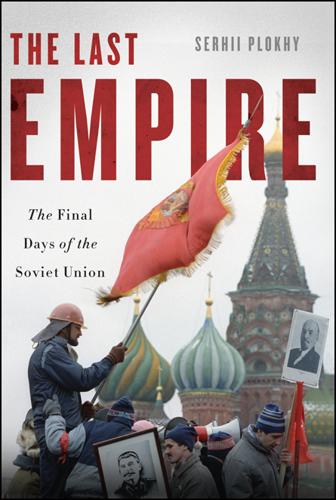
The Last Empire: The Final Days of the Soviet Union
by
Serhii Plokhy
Published 12 May 2014
-led, 123–124, 369 See also Central Intelligence Agency; KGB Cowell, Alan, 235 Crimea, 259, 280 borders, 176, 177 population, 281 Russia-to-Ukraine transfer of, 176–177, 280–281 sovereignty and, 171, 281–282 Ukrainian referendum and, 293 Crimean Tatars, 177, 281 Croatia, 272 CSCE. See Council for Security and Cooperation in Europe Cuba, 6, 21, 202–203, 204, 404 Cuban Missile Crisis, 6 Currency, 226 Czechoslovakia, 12, 193, 282, 283 Dairy farming, 300 Dance. See Lezginka The Day After (film), 7 de Gaulle, Charles, 327 Declaration on the Rights of Nationalities of Ukraine, 285 DeConcini, Dennis, 261 Defectors of coup d’état of August 1991, 120–121 in Soviet Foreign Service, 33 See also Intelligentsia Democracy.
…
W., in U.S., 191–192 Kyrgyzstan, 346 Ukraine, 289–291, 362 Military, Soviet central control over, 236, 242, 270, 287, 291, 357, 362 CIS and, 324 coup d’état of August 1991 and, 77, 81–91, 95–100, 102–103, 105, 108, 111–112, 114, 116–121, 123, 124–128, 130, 134, 135, 145–146, 148–149, 159, 160, 202 in North Caucasus, 362 public opinion of, 117–118 with restrictions for ethnic minorities, 288 in Ukraine, 286–287 Milk, 300 Milošević, Slobodan, 405 Mineral resources, 399 Minsk agreement, 326 MIRVs. See Multiple independently targeted reentry vehicles Missiles Anti-Ballistic Missile Treaty, 51 Cuban Missile Crisis, 6 ICBMs, 209 MIRVs, 209, 211 tests, 15–17 Mitterand, François, 75, 112, 209, 235, 240–241 Mlynář, Zdenĕk, 12 Moiseev, Mikhail, 81, 127, 135, 136, 137–138 Moldova (Moldavia), 50, 65, 193 CIS and, 360, 361 local nationalism in, 34 sovereignty and, 173, 178 Transnistria, 177, 360, 361, 362 U.S. and, 382 Molotov-Ribbentrop Pact of 1939, xviii, 34, 193, 301, 369, 400 Morozov, Kostiantyn, 287–291, 324 Moscow, xix coup d’état of August 1991 and, 102–104, 107–109, 118–120, 134, 139–141, 142–143 food shortage in, 205 Moscow Echo (radio station), 103, 108, 115 Moscow Summer Olympics, 6 Most-favored-nation trade status Soviet Union and, 21 Ukraine and, 62 Mulroney, Brian, 75, 79 Multiple independently targeted reentry vehicles (MIRVs), 209, 211 “Muslim Charter,” 355 Mutalibov, Ayaz, 224, 357, 361 See also Azerbaijan Mutual assured destruction (MAD), 6 Nagornyi Karabakh, 360, 362 cease fire in, 213 ethnic clashes in, 33–34, 213, 357, 361 Nairobi, 32 Najibullah, Mohammad, 203 Narodna Rada (People’s Council), 165 National Security Council, xxi Nationality with mixed ethnicity, 288–289 Ukraine military and passport, 289 NATO (North Atlantic Treaty Organization), 7, 25, 339, 406 Natural gas, 226, 270, 297, 301, 353 Nazarbayev, Nursultan, 14, 25, 44, 83, 88, 215, 219, 310–311, 402 Almaty summit and, 363, 364 Belavezha Agreement and, 320, 321, 348 biography, 350 CIS and, 345, 346–353, 356 coup d’état of August 1991 and, 114 economic reform and, 222 legacy, 185–186, 213, 405 with new union treaty, 41, 163, 185 nuclear arms and, 346, 348–349 political standing, 352 sovereignty of Kazakhstan and, 179, 181, 182, 249, 351 “10 + 1” and, 184–185, 186 See also Kazakhstan Nazis, 66, 67, 192, 281, 329 Neto, Agostinho, 8 New York, 32 New Zealand, 210 News media, 215, 235, 261, 266, 272, 279, 292, 298, 344, 347, 356, 364 censorship of, 98, 116, 137 coup d’état of August and, 98–99, 103, 108, 113, 115–116, 118–119, 138, 158, 161 foreign press, 98, 115–116, 118, 161, 372, 373–374, 377 radio stations, 103, 108, 115, 118 Ukrainian sovereignty and, 263 See also specific news outlets Nezavisimaia gazeta (Independent Newspaper), 98, 171, 230 Nicholas I (Tsar), 20 Nicholas II (Tsar), 28, 323, 338 Niiazov, Saparmurat, 249 Nikolaevich, Boris, 218 Niles, Thomas, 299, 379 9/11, xvi Nixon, Richard, 8, 63, 65, 117, 290 Brezhnev and, 3, 6, 51, 53 Niyazov, Saparmurat, 224, 352–353 See also Turkmenistan North Atlantic Treaty Organization.
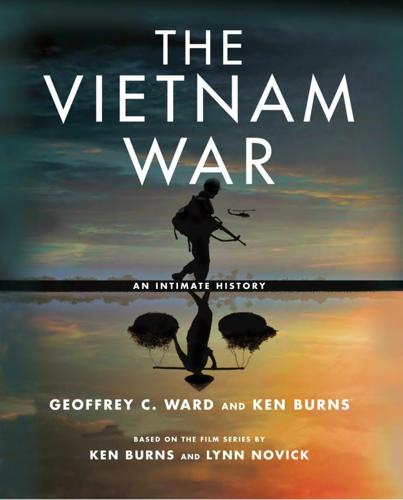
The Vietnam War: An Intimate History
by
Geoffrey C. Ward
and
Ken Burns
Published 4 Sep 2017
If that is the case we would do well to concentrate on a vigorous diplomacy…designed to lighten our commitments without bringing about sudden and catastrophic upheavals in Southeast Asia.” The president was irritated by Mansfield’s implied criticism of administration policy—and convinced that the autumn of the Cuban Missile Crisis was no time for the United States to consider changing course in Southeast Asia—but he did begin to think for the first time that the survival of the Diem regime and the survival of South Vietnam itself might not necessarily be inseparable. Mansfield’s report was, U.S. Ambassador Nolting would remember, “the first nail in Diem’s coffin.”
…
Both presidents were intelligent men, but Kennedy possessed the more flexible and reflective mind, at least with respect to world affairs. Despite the sweeping pledge of his inaugural address to “pay any price, bear any burden,” he generally chose the course of restraint in foreign policy, as in Berlin, Laos, and the Cuban Missile Crisis, and it’s hard to imagine him exhibiting the obstinacy and truculence with respect to Vietnam that Johnson so frequently showed in 1965—and in the years that followed. It’s hard to imagine him telling pro-negotiation French and British officials that the only alternatives to present policy were to “bomb the hell out of China” or to retreat to Hawaii and California, or telling aides it was insulting to have foreign leaders “chasing over” to see him, or reading to allied officials a letter from a supportive American soldier in Vietnam to his mother, all of which LBJ did.
…
“Mogie,” 3.1, 3.2, 3.3, 3.4, 3.5, 3.6, 3.7, 3.8, 3.9, 3.10, 4.1, 4.2, 4.3, 4.4, 4.5, 4.6, 6.1, 7.1, 7.2, 8.1 death of, 4.1, 4.2, 4.3 Crocker, Jean-Marie, 3.1, 3.2, 3.3, 3.4, 3.5, 3.6, 3.7, 4.1, 4.2 Crocker, Randy, 3.1, 3.2 Crocker family, 3.1, 3.2 Cronkite, Walter, 2.1, 2.2, 6.1, 6.2, 7.1, 8.1, 9.1 Crosby, Stills & Nash Cuba, 2.1, 2.2, 3.1, 10.1 Bay of Pigs invasion of Cuban Missile Crisis, 2.1, 2.2, 2.3 Cu Chi, 6.1, 7.1, 7.2, 7.3 Cushman, John H., 2.1, 2.2, 10.1 Custer, George Armstrong Czechoslovakia, 1.1, 7.1 Daily Nebraskan Dai Viet (“Greater Vietnam”) Party Dak To, 4.1, 5.1, 5.2, 5.3, 5.4, 8.1 Dalat Military Academy, 3.1, 6.1 Daley, Richard J., 7.1, 7.2, 7.3, 7.4, 9.1 Dallas, Tex.
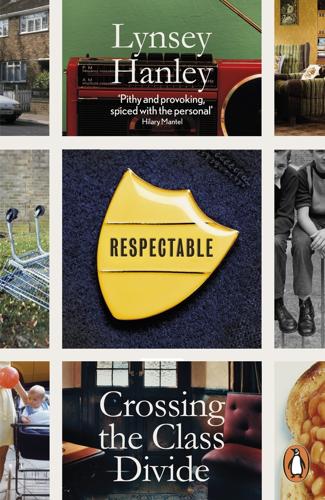
Respectable: The Experience of Class
by
Lynsey Hanley
Published 20 Apr 2016
The cover of our copy, bought from the Woolies in Chelmsley precinct, featured a statistical breakdown of the nuclear arms race: the number of nuclear-enabled warheads held by the US and USSR, the number of ICBM tests conducted by the two superpowers. There was never a darker time than this. (Though that may just be me: years later I asked my mum what she remembered of the Cuban Missile Crisis, as she was eleven at the time. She said she didn’t really remember it at all.) Hoggart might not have judged pop music so harshly had he not been writing at a point in the mid-fifties when pop music was essentially an unknown quantity and its possibilities still almost wholly unexplored.
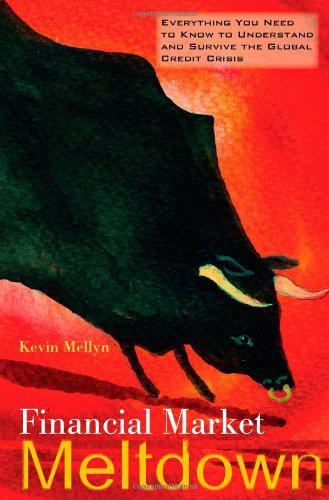
Financial Market Meltdown: Everything You Need to Know to Understand and Survive the Global Credit Crisis
by
Kevin Mellyn
Published 30 Sep 2009
But I can also use the dollars in London by lending them to someone who needs U.S. dollars to make a payment or pay a debt. THE BIRTH OF THE EURODOLLAR In the post-war era, the Soviet Union and other communist countries in Europe held substantial U.S. dollar assets in U.S. banks. This persisted until the Kennedy era, despite the onset of the Cold War. The escalation of tensions that culminated in the Cuban Missile Crisis changed this. The Soviets feared that the Americans might simply steal their dollars and moved them into the London branch of a bank they controlled called Eurobank. The dollars parked there became known as Eurodollars. This pool dollars presented an opportunity to make dollar loans free of the politics and regulations of the United States but within the clubby rules of London.

Alan Partridge: Nomad: Nomad
by
Alan Partridge
Published 19 Oct 2016
But then a youth TV presenter says ‘could of ’ instead of ‘could have’ and there I am throwing food at the television. My father used to do the same thing, although his food-hurling could be brought on by all manner of things he disliked. From something serious like the US government’s handling of the Cuban Missile Crisis to something trivial like a black newscaster. Yet despite these quirks we share, passed down from father to son like a collection of World Cup medals accrued from a petrol station via Esso’s Tiger Token scheme, there is a disconnect. I feel like I never truly knew him. By pounding the streets from Norwich to Dungeness, I know that will change.
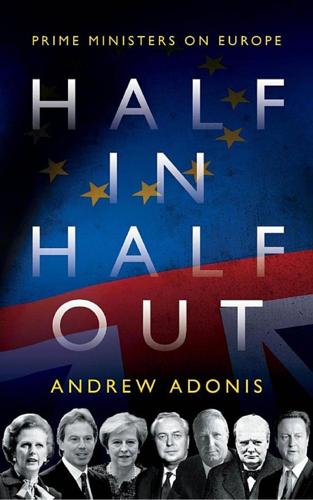
Half In, Half Out: Prime Ministers on Europe
by
Andrew Adonis
Published 20 Jun 2018
After the Birch Grove meeting of November 1961, de Gaulle’s domestic standing was greatly strengthened the following year when his supporters won a majority in the French National Assembly. In addition, de Gaulle’s call for the French President to be elected by direct popular vote, rather than via an electoral college, was backed by voters in a national referendum. In December 1962, in the wake of the Cuban Missile Crisis and prior to flying to Nassau to see President Kennedy, Macmillan visited de Gaulle at Rambouillet, the chateau on the outskirts of Paris traditionally used by French Presidents as their second residence. As so often, de Gaulle had felt snubbed by what he perceived as the closeness of British–US negotiations, to France’s exclusion – in particular in respect of an independent nuclear deterrent.

Rebel Ideas: The Power of Diverse Thinking
by
Matthew Syed
Published 9 Sep 2019
Speaking in 2017, she said: ‘[The lack of diversity] is such an irony because if any organisation needs an effective way of dealing with differences of opinion, it has got to be the intelligence community.’ And this is perhaps the greatest tragedy of all. Milo Jones has argued that the failures that characterised the build-up to 9/11 have been repeated throughout the history of the CIA, from the Cuban Missile Crisis to the Iranian Revolution and the failure to anticipate the collapse of the Soviet Union. ‘Each of these failures can be traced, directly and incontrovertibly, to the same blind spot at the heart of the agency,’ Jones said when we met in London. And this shows why both sides of this long and sometimes bitter debate – both those who defended the intelligence services and those who attacked them – have overlooked the key issue.
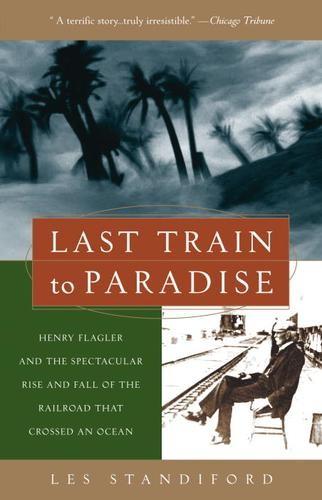
Last Train to Paradise: Henry Flagler and the Spectacular Rise and Fall of the Railroad That Crossed an Ocean
by
Les Standiford
Published 4 Aug 2003
The Casa Marina Hotel, which Flagler had always intended to be the crown jewel in his chain of pleasure palaces, finally opened its doors in 1922. The fortresslike building had walls nearly two feet thick at their base, and with its private beach, tennis courts, and lush landscaping, became an immediate hit with well-to-do travelers. Despite stints as a Navy barracks during World War II and an Army staging base during the 1962 Cuban missile crisis, the hotel has been restored to its original state and still lures the rich and famous through its doors. Despite the worst fears of the railroad’s builders, no storm-battered passenger train ever plunged off one of the mighty bridges to disappear in a hissing sea, though there were a few minor collisions and accidents reported.
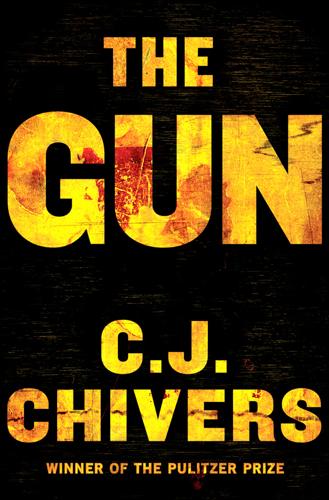
The Gun
by
C. J. Chivers
Published 12 Oct 2010
The nuclear umbrella froze borders in place and discouraged all-out war between the conventional armies stacked in Europe, helping to create conditions in which the Kalashnikov percolated from continent to continent, nation to nation, group to group, man to man, maturing as its numbers grew and its reputation spread into the age’s dominant tool for violence in conflict zones. At first the distribution was piecemeal and incremental; gradually, it became almost unchecked. By the early 1960s, after the Cuban Missile Crisis had startled its participants and as the war in Vietnam was expanding and quickening, the Kremlin and the White House comprehended that their mutual nuclear arsenals had made total war unwinnable. Small wars and proxies would be the means through which the Cold War would be fought. The Kalashnikov Era had arrived.
…
.: Gatling gun purchases and, 52–53 on Indian wars, 61 M-16 and, 296, 304, 310, 314–16, 321, 323, 325–27, 331, 334, 356, 442n on ownership of automatic rifles, 14, 236 Constitution, U.S., 17–18 Cooper Fire Arms Manufacturing Company, 37 Cooper-MacDonald, Inc., 277–78 Côte d’Ivoire, 370 criminals, criminal gangs, 70 AK and AK-type rifles used by, 5, 7, 9, 11, 13–14, 17, 268, 340, 378n, 387, 408–10, 413 illegal-arms transfers and, 371 and Thompson submachine gun production and distribution, 233–36, 279 Crocker, Ryan, 388 Cuba: and AK and AK-type rifle production and distribution, 9, 340, 406 FAL rifle distribution and, 364 Gatling guns purchased by, 53 in Spanish-American War, 90, 93–95, 424n Cuban Missile Crisis, 5 CUCKWAGON, 20 Culver, Richard O., Jr., 266–67, 321, 329 Cummings, Samuel, 354–56, 358, 363, 369 Curran, William J., 297 Custer, George A.: Gatling guns rejected by, 60–61, 64, 92 in Indian Wars, 58–64 Czechoslovakia, 174, 214, 216, 348–49 AK-type rifle production resisted by, 281n, 434n Prague Spring in, 348 standard rifle of, 340n, 349 Velvet Revolution of, 365 Daoud, Abu, 443n De Cristoforis, Tomasso, 82 Defense Department, U.S., 254–59, 268–71, 274–75, 413 and AK-47 design and development, 270, 280 and AK-47 production and distribution, 251, 259, 265, 268 ammunition and, 255–57 AR-15 and, 274, 280, 284, 288–89, 292, 296 on asymmetric war, 14 atomic bomb and, 144 M-16 and, 269–71, 292–93, 295, 303–5, 307, 313, 319, 323, 330–34, 415–16 purchase prices of AK rifles for, 386 systems analysis in, 271 see also War Department, U.S.
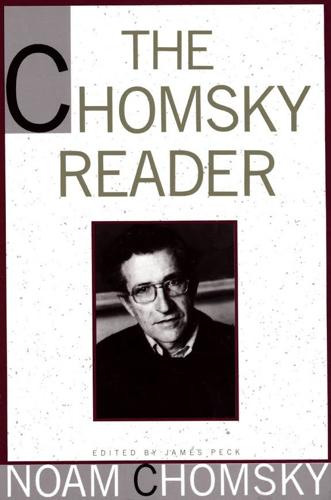
The Chomsky Reader
by
Noam Chomsky
Published 11 Sep 1987
When the Kennedy administration came to power, it followed their advice, using a faked “missile gap” as a propaganda device and relying on massive military expenditures as a mechanism for economic growth, thus setting off the arms race of the 1960s, accelerated by the needless humiliation of Khrushchev at the time of the Cuban missile crisis. Without the benefit of Keynes, the fascist states of the 1930s also proved that the “new economics” works, as economies were stimulated by programs of rearmament. In principle, other methods are available, but a look at the class character of the major industrial powers helps to explain why governments have so commonly turned to production of waste (primarily, armaments) and bribes for the wealthy in their efforts to stimulate a sluggish economy.
…
It was therefore difficult to make concessions or to give ground to the Soviets, a matter which indirectly affected Vietnam. Anything, anywhere, that “was, or could be interpreted to be a weak U.S. response, only strengthened the pressure to hold on in Vietnam.” Chester Cooper believes, however, that “Kennedy’s foreign policy stance was given an added fillip in late 1962 following his dramatic success” in the Cuban missile crisis. Vietnam then provided an opportunity to prove to Peking and Moscow that their policy of “wars of liberation” was dangerous and unpromising, and also “provided both a challenge and an opportunity to test the new doctrines” of counterinsurgency. Thus whether the United States stance with respect to its great-power rival is defensive or not, the determination to win in Indochina is fortified.
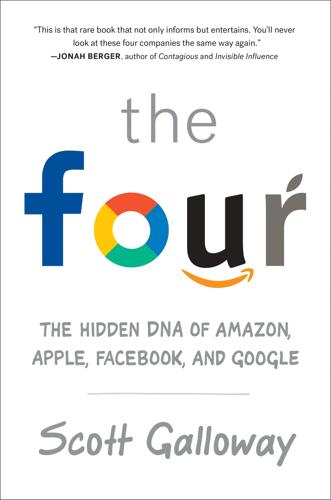
The Four: How Amazon, Apple, Facebook, and Google Divided and Conquered the World
by
Scott Galloway
Published 2 Oct 2017
Suburban blight has put many out of existence. However, many still thrive—particularly those that have a strong offering—a good mix of stores, parking, and proximity to the upper quartile of income-earning households. The Big Box 1962 brought us the first American to orbit the Earth, the Cuban Missile Crisis, The Beverly Hillbillies—and Walmart, Target, and Kmart. Big-box retail caused a dramatic shift in social norms and transformed the retail format. The notion of buying stuff in bulk and passing those savings onto consumers is not, on its own, revolutionary. More significant is that we, as a nation, decided to shift the consumer to the front of the line, in every way.

Great American Hypocrites: Toppling the Big Myths of Republican Politics
by
Glenn Greenwald
Published 14 Apr 2008
Apple illustrated how vital war is for an American political leader to prove his “courage” and “strength”: For George Bush, the United States invasion of Panama early this morning constituted a Presidential initiation rite as well as an attempt to achieve specific goals. For better or for worse, most American leaders since World War II have felt a need to demonstrate their willingness to shed blood to protect or advance what they construe as the national interest. John F. Kennedy in the Cuban missile crisis, Lyndon B. Johnson and Richard M. Nixon in South Vietnam, Gerald R. Ford in the Mayaguez affair, Ronald Reagan in Grenada and Lebanon, and now Mr. Bush in Panama—all of them acted in the belief that the American political culture required them to show the world promptly that they carried big sticks.
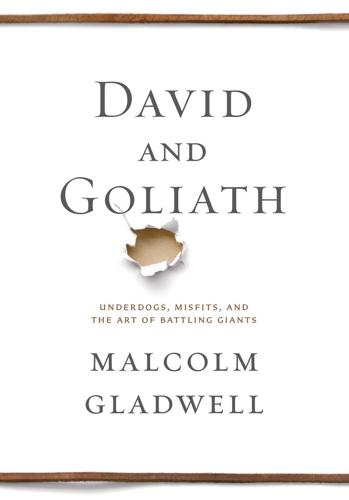
David and Goliath: Underdogs, Misfits, and the Art of Battling Giants
by
Malcolm Gladwell
Published 30 Sep 2013
He’s this extremely stubborn character.” That’s conscientiousness. But what is the most striking fact about Kamprad’s decision? It’s the year he went to Poland: 1961. The Berlin Wall was going up. The Cold War was at its peak. Within a year, East and West would come to the brink of nuclear war during the Cuban Missile Crisis. The equivalent today would be Walmart setting up shop in North Korea. Most people wouldn’t even think of doing business in the land of the enemy for fear of being branded a traitor. Not Kamprad. He didn’t care a whit for what others thought of him. That’s disagreeableness. Only a very small number of people have the creativity to think of shipping furniture flat and outsourcing in the face of a boycott.

Our Final Invention: Artificial Intelligence and the End of the Human Era
by
James Barrat
Published 30 Sep 2013
If a machine could make itself smarter, then the improved machine would be even better at making itself smarter, and so on. In the tumultuous 1960s leading up to his creating the intelligence explosion concept, he already might have been thinking about the kinds of problems an intelligent machine could help with. There were no more hostile German U-boats to sink, but there was the hostile Soviet Union, the Cuban Missile Crisis, the assassination of President Kennedy, and the proxy war between the United States and China, fought across Southeast Asia. Man skated toward the brink of extinction—it seemed time for a new Colossus. In Speculations, Good wrote: [Computer pioneer] B. V. Bowden stated … that there is no point in building a machine with the intelligence of a man, since it is easier to construct human brains by the usual method … This shows that highly intelligent people can overlook the “intelligence explosion.”
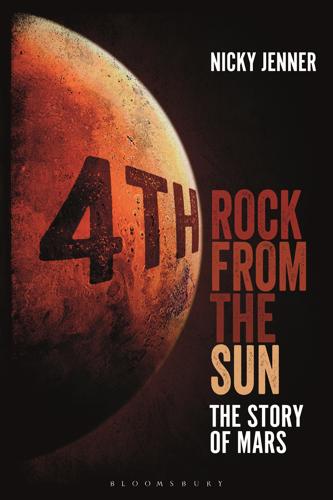
4th Rock From the Sun: The Story of Mars
by
Nicky Jenner
Published 5 Apr 2017
Sputnik 22 broke up into numerous smaller pieces, many of which stayed in orbit around our planet for several days. The launch took place on 24 October 1962 – probably the worst possible timing for the Soviet Union to be playing with rockets and causing mysterious explosions. That month saw the US and Soviet Union enter the Cuban Missile Crisis. The debris from the Sputnik 22 failure was actually detected by the US and caused a spike of fear over whether it might have been part of a Soviet missile attack. Just one week later, the Soviet Union tried its luck again with the appropriately named Mars 1 spacecraft, followed a few days after that by Sputnik 24 (also Korabl 13).

The Internet Is Not the Answer
by
Andrew Keen
Published 5 Jan 2015
“Sputnik was proof of Russia’s ability to launch intercontinental ballistic missiles, said the pessimists, and it was just a matter of time before the Soviets would threaten the United States.”22 The Cold War was at its chilliest in the late fifties and early sixties. In 1960, the Soviets shot down an American U-2 surveillance plane over the Urals. On August 17, 1961, the Berlin Wall, the Cold War’s most graphic image of the division between East and West, was constructed overnight by the German Democratic Republic’s communist regime. In 1962, the Cuban Missile Crisis sparked a terrifying contest of nuclear brinksmanship between Kennedy and Khrushchev. Nuclear war, once unthinkable, was being reimagined as a logistical challenge by game theorists at military research institutes like the RAND Corporation, the Santa Monica, California–based think tank set up by the US Air Force in 1964 to “provide intellectual muscle”23 for American nuclear planners.
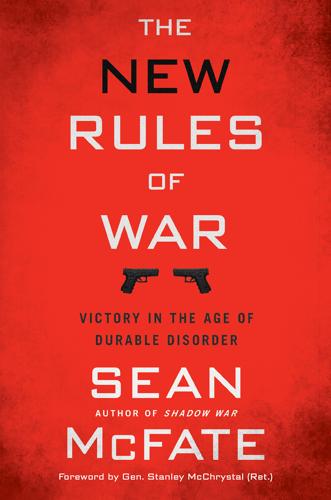
The New Rules of War: Victory in the Age of Durable Disorder
by
Sean McFate
Published 22 Jan 2019
Frederick William on mercenaries during the Thirty Years’ War: Sidney B. Fay, “The Beginnings of the Standing Army in Prussia,” American Historical Review 22, no. 4 (1917): 767. 22. WWIII close calls: Superpower tensions during the Cold War that could have escalated into nuclear war include the Korean War (1950–1953); the Cuban Missile Crisis (1962); the Yom Kippur War (October 1973); NORAD’s computer error (1979); the “Petrov save” incident (1983); and the Able Archer NATO exercise (1983). Rule 9: Shadow Wars Will Dominate 1. Putin admits Russian troops in Ukraine: Shaun Walker, “Putin Admits Russian Military Presence in Ukraine for First Time,” The Guardian, 17 December 2015, https://www.theguardian.com/world/2015/dec/17/vladimir-putin-admits-russian-military-presence-ukraine. 2.
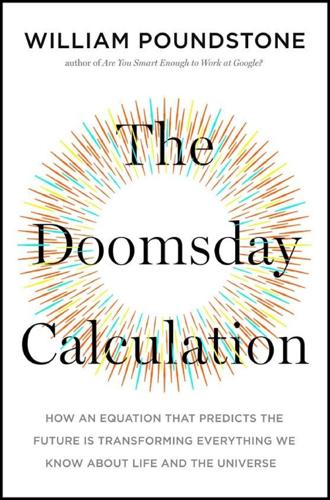
The Doomsday Calculation: How an Equation That Predicts the Future Is Transforming Everything We Know About Life and the Universe
by
William Poundstone
Published 3 Jun 2019
His sociologist wife and son live in Montreal. They communicate by Skype. If anyone is improbably special, Bostrom is. The Future of Humanity Institute has two conference rooms named for Cold War Soviets. One honors Vasili Arkhipov, who was almost literally Brandon Carter’s philosophic nuclear submariner. During the height of the Cuban missile crisis one Russian submarine remained submerged and out of radio contact with Moscow. The sub’s captain assumed that war had broken out and decided to launch nuclear torpedoes. To do so he needed the authorization of two ranking officers. One agreed. The other was Vasili Arkhipov. His veto prevented World War III.
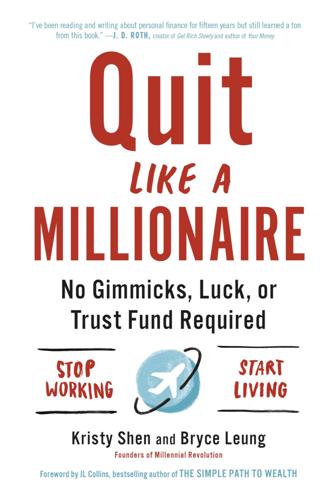
Quit Like a Millionaire: No Gimmicks, Luck, or Trust Fund Required
by
Kristy Shen
and
Bryce Leung
Published 8 Jul 2019
So, for example, if my initial portfolio targets changed like so, then Modern Portfolio Theory would instruct me to do the following: Asset Action Amount Canadian Index SELL 2% USA Index SELL 2% EAFE Index SELL 1% Bonds BUY 5% While this simple act of rebalancing may not seem like that big of a deal, it allows the investor to do some pretty clever things. First of all, it prevents you from permanently losing money. Stock markets may go up or down day-to-day, but over time the index always goes up. Since its inception, this is what the S & P 500’s performance has looked like: This period covers the Cold War, the Cuban Missile Crisis, 9/11, and every disaster that’s happened since 1950. The index recovered every single time. If an index investor is caught in a downturn, to get their money back, they just have to wait. I know this may sound counterintuitive—after all, when you see a dip, your natural instinct is to sell—but staying the course is always the smartest approach, which is what Bryce knew that day in 2008.
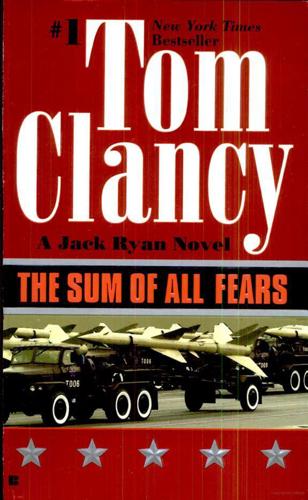
The Sum of All Fears
by
Tom Clancy
Published 2 Jan 1989
That sounded familiar enough. "Clearances?" "TS, SAP/SAR. Those are new. I already have a "secret", because some of my work at Kennedy involved going into some presidential archives, mainly in D.C., but some of the stuff in Boston is still sensitive. I was even part of the team that FOI'd a lot of stuff from the Cuban Missile Crisis." "Dr Nicholas Bledsoe, his work?" "That's right." "I didn't buy all of Nick's conclusions, but that was a hell of a piece of research." Jack raised his mug in salute. Goodley had written nearly half of that monograph, including the conclusions. "What did you take issue with - if I may ask?"
…
Durling told himself that he had to relax, that he had to keep his head. He looked at his youngest child, a boy only four years old. To be that age again, he'd thought only the day before, to be that age again and be able to grow up in a world where the chance of a major war no longer existed. All the horrors of his youth, the Cuban Missile Crisis that had marked his freshman year in college, his service as a platoon leader in the 8 2nd Airborne, a year of which had been in Vietnam. War experience made Durling a most unusual liberal politician. He hadn't run from it. He'd taken his chances and remembered having two men die in his arms.
…
"Picking up some radio and microwave chatter. First guess is that Ivan's alerting his missile regiments. Ditto in some naval bases. Flash traffic outbound from Moscow." "Christ!" Borstein lifted his phone again. "Never done it?" Elliot asked. "Strange but true," Borstein said. "Even during the Cuban Missile Crisis, the Russians never put their ICBMs on alert." "I don't believe it," Fowler snorted. "Never?" "The General's right," Ryan said. "The reason is that their telephone system historically has been in pretty bad shape. I guess they've finally gotten it fixed enough -" "What do you mean?"
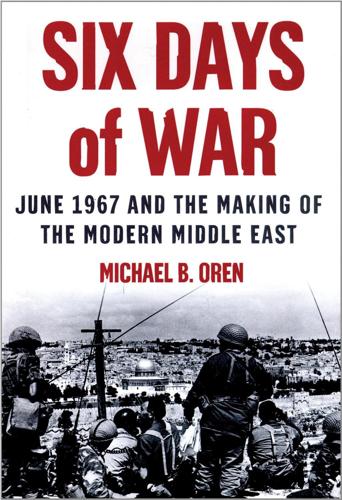
Six Days of War: June 1967 and the Making of the Modern Middle East
by
Michael B. Oren
Published 2 Jun 2003
The latter, by providing tactical support to al-Sallal’s troops, presented Nasser with a fait accompli. He accepted it, though, deeming Yemen a good place for occupying the army’s attention, as well as for drubbing his Saudi rivals and even for harassing Britain’s colony in Aden. Khrushchev, eager to avenge his recent embarrassment in the Cuban missile crisis, also gave his blessing.26 Thus began an entanglement so futile and fierce that the imminent Vietnam War could have easily been dubbed America’s Yemen.27 Prisoners were routinely executed, bodies mutilated, entire villages wiped out. Egyptian forces bombed royalist depots in Saudi Arabia and, for the first time in the history of any Arab army, unleashed poison gas.
…
While Egypt was willing to discuss the possibility of reviving the Armistice and its machinery, it rejected any measure—the marking of the border, for example—that granted Israel recognition or detracted from the state of belligerency. A cigar-smoking Thant allowed Riad to finish before presenting his idea for a two-to-three week freeze in the situation: Egypt would not blockade the Straits, but neither would Israel try traversing them. This moratorium—“along the lines of the Cuban [missile] crisis”—would afford time for a specially appointed UN mediator to work out a peaceable solution. Riad reacted skeptically. The government could show no hesitation to its people, he asserted, and especially not to the army, which was determined to defend the Arab cause. The message U Thant brought from Eshkol, that Israel would act militarily to reopen the Straits, had no impact on the foreign minister.
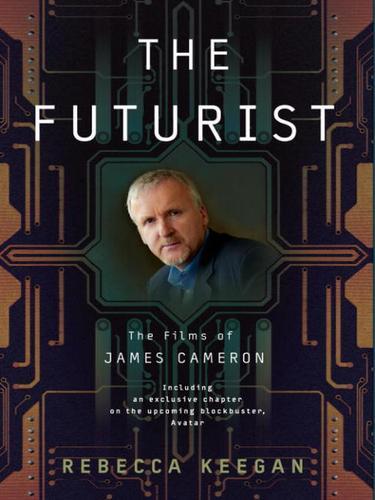
The Futurist: The Life and Films of James Cameron
by
Rebecca Winters Keegan
Published 3 Nov 2009
A BOY AND HIS BRAIN The Beginning of the End The end of the world was coming. And he was eight. That’s when James Cameron found a pamphlet with instructions for building a civilian fallout shelter on the coffee table in his family’s living room in Chippawa, Ontario, a quaint village on the Canadian shore of Niagara Falls. It was 1962, the year of the Cuban missile crisis, and Philip and Shirley Cameron felt they had reason to be concerned about the bomb—the Camerons lived just a mile and a half from the falls, a major power source for communities on both sides of the international border. But for their oldest son, discovering the brochure was a life-changing epiphany.

Wonderland: How Play Made the Modern World
by
Steven Johnson
Published 15 Nov 2016
(Antheil later wondered if the musical analogy hurt their cause with the hardheaded military analysts: “‘My god,’ I can see them saying, ‘we shall put a player piano in a torpedo,’” he wrote.) But the idea of frequency hopping was too good to disappear forever in the vaults of classified patents. An updated version of Antheil and Lamarr’s invention was implemented on navy ships during the Cuban missile crisis. Today, frequency hopping has evolved into the spread-spectrum technology used by numerous essential wireless systems, including cell-phone networks, Bluetooth, and Wi-Fi. — George Antheil correctly foresaw the extraordinary explosion of new sounds that the age of electricity promised, though he may have been a bit shortsighted about the data storage technology those sounds would employ.
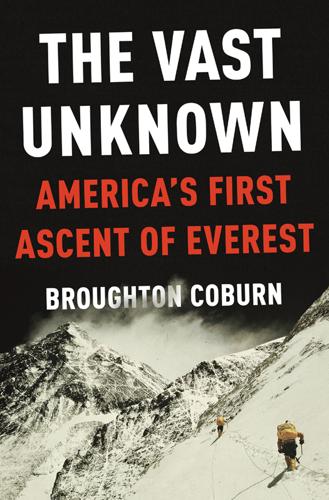
The Vast Unknown: America's First Ascent of Everest
by
Broughton Coburn
Published 29 Apr 2013
From each member, Siri extracted blood samples to establish baselines for levels of plasma iron, red cell volume, and erythropoietin, a hormone that controls red blood cell production. While Siri was sealed in the decompression chamber, the United States was teetering on the brink of war. U.S. intelligence had discovered that the Soviet Union had provided Cuba with nuclear missiles capable of striking the Eastern Seaboard of the United States within minutes. The Cuban Missile Crisis had begun. Perhaps it was just as well, some climbers felt, that they were leaving the United States for a few months. What better place to seek refuge and safety than high in the Himalaya? Chapter 9 To the Other Side of the Earth The first pitch was the absolute limit of human possibility.

Bricks & Mortals: Ten Great Buildings and the People They Made
by
Tom Wilkinson
Published 21 Jul 2014
But it seemed for a while that it might: this was the tantalising era of Red Plenty, to borrow Francis Spufford’s name for the brief period when the USSR seemed to be overtaking the capitalist West. These days, with the ignominious collapse of the Soviet empire still fresh in our memories, we tend to forget that there was a moment – between the launch of Sputnik in 1957 and the Cuban Missile Crisis of 1962 – when Russia seemed like it might win the Cold War. The Soviets had embraced and even surpassed Western technological achievements; they were winning the space race (Yuri Gagarin went into orbit in 1961); their economy was growing faster than any other bar Japan’s; they were producing an incredible number of engineers and scientists; and they were leading the field in cybernetics in order to create – it was desperately hoped – a microchip-planned economy.
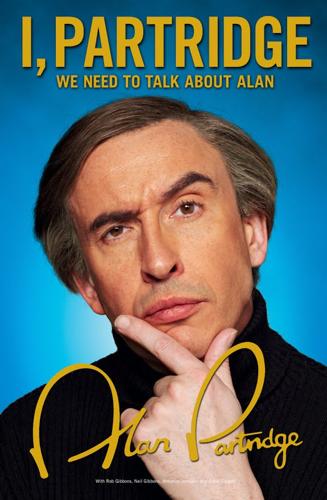
I, Partridge: We Need to Talk About Alan
by
Steve Coogan
Published 1 Sep 2011
The nightmare that had threatened to rip my world apart like an experienced chef portioning up a ball of mozzarella had somehow been averted. It was 25 October 1962, and on the other side of the Atlantic, President ‘JFK’ Kennedy had just pulled the world back from the brink of nuclear war. Could I just have experienced my own personal Cuban Missile Crisis? Yes, I could have. And so, in summary, mine was a childhood of undeniable hardship – a chilling and far-from-delicious cocktail of neglect, solitude, domestic strife, and abuse.19 I was, if you like, A Child Called It. This was Alan’s Ashes. A protagonist dealt a really shoddy hand by hard-hearted parents.
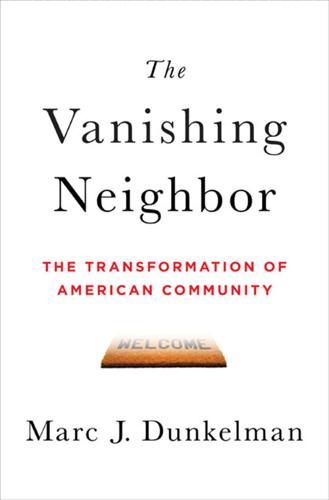
The Vanishing Neighbor: The Transformation of American Community
by
Marc J. Dunkelman
Published 3 Aug 2014
The specter of a random attack rarely escapes the rational mind—and for good reason. Nevertheless, we ought to put our newfound sense of vulnerability in the proper perspective. Although jihadists menace our sense of security, it’s difficult to equate the perception of our susceptability today with the danger evident during Cold War flashpoints like the Cuban missile crisis. Americans had good reason to be frightened when grainy videos of Osama bin Laden were rebroadcast repeatedly on cable news networks. But al Qaeda’s capacity for destruction—to pinpoint a few choice targets—cannot be compared to Nikita Khrushchev’s nuclear arsenal, which pointed thousands of warheads at America’s metropolitan centers.

Norman Foster: A Life in Architecture
by
Deyan Sudjic
Published 1 Sep 2010
But Branch had trouble getting the money to build and the project seemed to peter out. Foster graduated from Yale in the summer of 1962, in a marquee on the lawn at the centre of the university. It was a ceremony overshadowed by the glamorous lustre of the President of the United States, just ahead of the Cuban missile crisis. John F. Kennedy came to Yale to collect an honorary degree, and to deliver a speech that spoke of America’s obligations to the world. Foster stayed on the East Coast for a few more months. His town-planning qualification from Manchester got him a job with Pedersen and Tilney, a local firm working on urban renewal schemes in New Haven, that was his first practical experience of working beyond the scale of the individual building.

Spectrum Women: Walking to the Beat of Autism
by
Barb Cook
and
Samantha Craft
Published 20 Aug 2018
Music helps me do just that: it grounds me in the present. Music on the brain Most of my earliest memories involve music. Even when I found it challenging to get words out, I was singing inside or “tuning,” often from the moment I awoke. My godmother, Helen, played “Moon River” while I, unknowingly at age two, lived through the Cuban Missile Crisis. The piano, which moved around Canada with us, became my mouthpiece from toddler age. Some people mimic dress, accents, mannerisms; I mimic tunes. My brain was never silent, although I appeared to be (selective mutism). If people would not come into my world, music would become the portal for me to enter theirs, my own personal TARDIS.
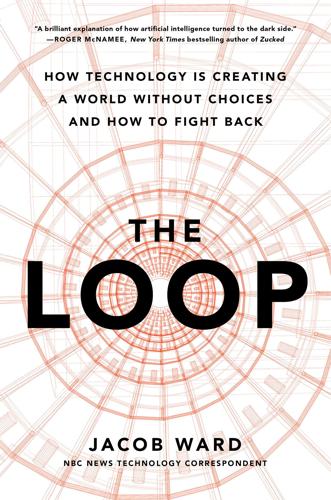
The Loop: How Technology Is Creating a World Without Choices and How to Fight Back
by
Jacob Ward
Published 25 Jan 2022
What those researchers were hoping to accomplish, it seems, was a sort of deprogramming—or maybe even preprogramming—of international relations, using formulas adapted from experiments like the Prisoner’s Dilemma, in which two participants must decide, in isolation, whether to cooperate with or betray one another. The Cold War rationalists appeared to believe that with disciplined analysis and creative experimentation, it might be possible to boil down into a predictable set of patterns all the complications that gave rise to international incidents like the Cuban missile crisis. Understand those predictive patterns, and one could write the choreography necessary to avoid them. Erickson, Klein, and their coauthors describe the field as both admirably ambitious and dangerously naive. But when I look at what those rationalists were after, I don’t blame them for their naiveté, the way the book’s authors seem to.
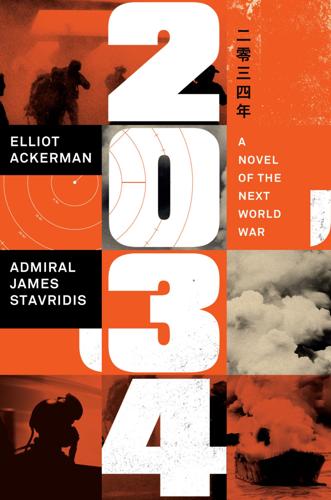
2034: A Novel of the Next World War
by
Elliot Ackerman
and
James Admiral Stavridis
Published 15 Mar 2021
Kennedy, ‘Let every nation know, whether it wishes us well or ill, that we shall pay any price, bear any burden, meet any hardship, support any friend, oppose any foe, in order to assure the survival and the success of liberty.’ This statement proved true during the darkest hours of President Kennedy’s administration, to include the Cuban Missile Crisis. And it proves true today. “To the citizens and government of the People’s Republic of China, I wish to speak to you directly: Through your cyber weapons you have degraded our ability to offer a more conventional, measured response. The path of war is not one we wish to travel, but if forced, travel it we will.
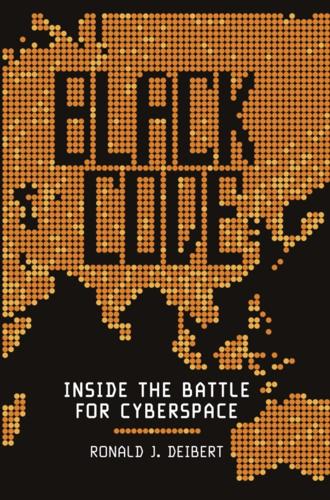
Black Code: Inside the Battle for Cyberspace
by
Ronald J. Deibert
Published 13 May 2013
In the mid-1990s – the World Wide Web barely off the ground and cyber security on pretty much no one’s mind – I attended a conference organized by Cleminson with the prescient title “Space and Cyberspace: Prospects for Arms Control.” In attendance, an extraordinary cast: an analyst who had handed John F. Kennedy the overhead imagery from the Cuban missile crisis in 1962; a scientist working at Sandia National Labs tracking down the Aum Shinrikyo cult, the Japanese terrorist group that had dumped Sarin nerve gas in the Tokyo subway and who some suspected had purchased property in Australia to test a primitive nuclear device; a technician working on Canada’s RADARSAT satellite, whose synthetic aperture radar imaging could peer through clouds and darkness from space to resolve objects on the surface of the earth.
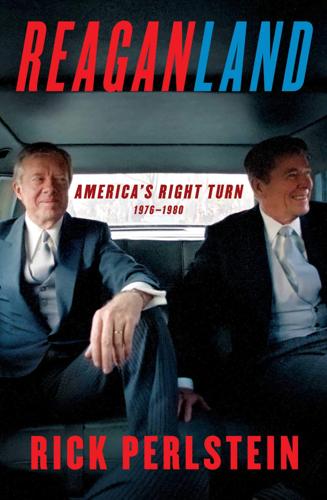
Reaganland: America's Right Turn 1976-1980
by
Rick Perlstein
Published 17 Aug 2020
On August 28, a top-secret National Intelligence Digest, circulated to four hundred government officials, reported the Soviet “combat brigade.” This was a semantic mistake. The troops were members of a preexisting “advisory mission” whose presence accorded with understandings between the three countries in operation since the Cuban Missile Crisis. The State Department believed they posed “no threat to the United States.” The mistake was the fault of NSA staffers who had ventured to interpret information that they were only supposed to report. That set into motion the cascade of misunderstandings that culminated with the State Department’s call to Church.
…
Treaty hearings had moved from Frank Church’s liberal Foreign Relations Committee to Scoop Jackson’s conservative Armed Services Committee, where an entire session was devoted to vituperation directed at Jackson for all the leaks coming from his neoconservative minions. The anti–SALT II campaign, nonetheless, was succeeding: Howard Baker announced his opposition, predicting “another Cuban missile crisis” should the treaty be ratified. While Reagan’s staff labored over the speech, Reagan gave Sears an awful scare. He traveled to Colorado, descending two thousand feet beneath Cheyenne Mountain to the headquarters of the North American Aerospace Defense Command, indulging, with a schoolboy’s awe, his fascination with the minutiae of nuclear strategy.
…
The clinching argument appeared to come from Andropov and Defense Minister Dmitri Ustinov, who wore enough medals on his uniform to stop a bullet. They argued that in the absence of bold action, the U.S. would install short-range missiles in Afghanistan on the Soviet border—phantom fears of a reverse Cuban Missile Crisis, though one with no evidence to support it. It was no less absurd than the interpretation of much of the U.S. security establishment concerning what happened next: that this was a calculated act of Soviet imperialism—perhaps the first step in a drive into Iran, them Saudi Arabia, in order to seize the lion’s share of the world’s oil reserves in a brazen drive for world conquest unmatched since the days of Adolf Hitler—and not what it actually was, a chaotic, ambivalent, and desperate attempt by a Soviet leadership cadre gasping for life to stanch the bleeding from a series of political accidents.

Wired for War: The Robotics Revolution and Conflict in the 21st Century
by
P. W. Singer
Published 1 Jan 2010
But, with just minutes to spare, the military figured out that the Soviets had not attacked; instead of flames from intercontinental ballistic missiles flying at the United States, the computer had detected the rising moon. It is fortunate for all humankind that this incident happened in October 1960, not two years later, which would have placed the computer’s mistake right in the middle of the Cuban Missile Crisis, when fingers were on more of a hair trigger. Such a narrowly averted crisis sounds like something out of the movies, but these Hollywood scenarios played out far too often in reality. On November 9, 1979, a real-life version of the movie WarGames occurred, when a test program was mistakenly loaded into the actual missile warning system.
…
Joint Economic Committee of Conover, David Cooper, Martin Corbett, Julian Stafford Cormorant (drone) Cortés, Hernán counterinsurgency Counter Rocket Artillery Mortar (CRAM) counterterrorism AI and data mining and ID at a distance and as manhunt new technologies and TIA program and see also terrorism CRAM (Counter Rocket Artillery Mortar) Creative Robots Crécy, battle of Crenshaw, Lewis Crichton, Michael Crimean War Cruise, Tom cruise missiles Crusher (robot) Cuba Cuban missile crisis Curveball (Iraqi defector) Custer, George Armstrong cyberglove cyberpunk movement CyberRider cyborgs Daley, Richard Darfur Darman, Richard DARPATech Darwin, Charles “Darwin Among the Machines” (Butler) Darwin’s Radio (Bear) Daschle, Tom da Vinci robotic system Davis, Joshua Davis, Mike decision making AI systems and Deep Blue (computer) Defence Evaluation and Research Agency Defense Advanced Research Projects Agency (DARPA) AugCog program of Brain-Interface Project of budget of critics of Grand Challenge and Integrated Battle Command of mission of PETE electronic assistant of TIA program of Urbanscape project of Defense Department, U.S.

The Singularity Is Near: When Humans Transcend Biology
by
Ray Kurzweil
Published 14 Jul 2005
These risks are what Nick Bostrom calls "existential risks," which he defines as the dangers in the upper-right quadrant of the following table:18 Biological life on Earth encountered a human-made existential risk for the first time in the middle of the twentieth century with the advent of the hydrogen bomb and the subsequent cold-war buildup of thermonuclear forces. President Kennedy reportedly estimated that the likelihood of an all-out nuclear war during the Cuban missile crisis was between 33 and 50 percent.19 The legendary information theorist John von Neumann, who became the chairman of the Air Force Strategic Missiles Evaluation Committee and a government adviser on nuclear strategies, estimated the likelihood of nuclear Armageddon (prior to the Cuban missile crisis) at close to 100 percent.20 Given the perspective of the 1960s what informed observer of those times would have predicted that the world would have gone through the next forty years without another nontest nuclear explosion?
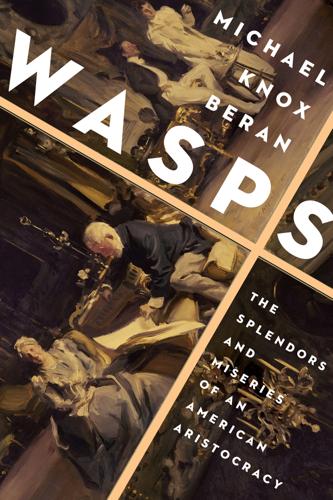
Wasps: The Splendors and Miseries of an American Aristocracy
by
Michael Knox Beran
Published 2 Aug 2021
“You haven’t put a damned foot one-quarter of an inch wrong,” he told the president over the telephone. “I’ve never seen anything like it. You’ve been simply marvelous in the most painful circumstances.” As with royalty, so with presidents, one must lay it on with a trowel; yet even as Joe stroked the presidential ego, he reminded Johnson that, just as Kennedy hadn’t blinked during the Cuban Missile Crisis, he must not “duck” his own test of manliness in Southeast Asia. Joe was the most hawkish of the WASP mandarins, penning columns so fierce that rival pundit Walter Lippmann said that if Johnson did go to war, Alsop would bear much of the blame. Setting out for yet another tour of Vietnam, Joe felt, he told his friend Philippe de Rothschild, “like a very old dog returning to his vomit.”
…
Morgan, 157; Roosevelt and, 103–105 Chapman, John Jay, II, 372 Chapman, Victor, 203, 208 Chauncey, Henry, 340, 341–342 Chennault, Claire, 12 China, 164–165 Christianity, 72–73, 111, 113, 225, 259, 267, 311, 315, 358, 418–421; see also religion Christian Socialism, 111 Chumber, Sonia, 259 Churchill, Lord Randolph, 324 Churchill, Winston, 17, 191, 322–324, 326–328, 331–332 Church of the Carpenter, 113 Cid, the, 386–387, 390, 393, 397, 399, 431 City Reform Club, 99 civic artistry, 156, 341, 412, 425, 438–439 civic culture, 123 civic humanism, 9, 37, 245–246, 382–383 civil rights movement, 342 Civil War, 9, 33–34, 48, 49, 203, 384 Clark, Kenneth, 409 classical education, 67, 108, 264 classical texts, 244–247 Clemenceau, Georges, 217, 219–220, 225 clerisy, 246–247 Cleveland, Grover, 135, 278 Clifford, William Kingdon, 181 clowns, 274 cocktail parties, 191–192 Codman, Julian, 97 Cohen, Ben, 338 Cold War, 12–15, 346–359, 375–377 Coleridge, Samuel Taylor, 121, 246, 438 collective security, 226–227 College Settlements Association, 112 Columbia University, 244–247, 359, 403–404 communism, 111, 223–224, 285–288, 290–292, 296, 299, 301, 352–356, 367–368 Connolly, Cyril, 273, 378 containment doctrine, 348, 352–353 contract law, 161–162 Conversazione Society, 284, 285–286 Converse, Florence, 112 Cook, Blanche Wiesen, 296, 327 Coolidge, Calvin, 301 Cooper, Duff, 17 Cooper, Lady Diana, 4 Corcoran, Thomas, 299 Core Curriculum, 244–247, 359, 403–404 Cornford, John, 286 Corral de Quati, 9 counter-Enlightenment, 440–442 country clubs, 155 court-packing plan, 293–294 Cowles, Sheffield, Jr., 248 Cox, James, 248 Crane, Hart, 240 Crawford, Frank, 41–42, 44, 191 creator-destroyers, 151, 152 Crocker, Jack, 390–391 Croly, Herbert, 165–166, 170–173, 376 cronyism, 339 Crosby, Caresse, 238, 240 Crosby, Henry Sturgis, 237–240 Crosby, Mary, 238–239 Crosby, Stephen, 237 Crowley, Leo, 338 Cuba, 103, 205 Cuban Missile Crisis, 23 cultural regeneration. See regeneration Cummings, E. E., 240, 264 Curtius, Ernst Robert, 434–435 Cushing, Harvey, 4 Cushing, Howard, 75, 186, 187 Cushing, Katherine “Gogsie,” 3–5 Cutting, Bronson, 97 Cutting, William Bayard, 97 D Dana, Richard Henry, III, 35–36 Daniels, Josephus, 249 Dante, 34, 36, 37, 43, 66, 69, 102, 114, 130, 195, 227–228, 234, 246, 275, 329, 356, 365, 370, 406, 413, 419, 437, 439 Dartington Hall, 284–285 Darwin, Charles, 118 Daughters of the American Revolution, 120, 343 Davis, Edward Livingston, 222 Davison, Henry P., 164, 202, 204 Davison, Trubee, 204 D-Day, 327 Dead Poets Society, 129, 384 Death in Venice (Mann), 408 deForest, Charlie, 8 deForest, Henry Wheeler, 8, 265 de Gaulle, Charles, 22, 335 “Dejection: An Ode” (Coleridge), 121–122 Delano, Laura, 295 Delano, Lyman, 282 Delano, Margaret, 282, 333 democracy, 37, 50, 86, 120–121, 218, 266, 379–383, 430 Democracy in America (Tocqueville), 413 Denison House, 112, 113 Derby, Dick, 202, 203 Derby, Ethel, 202 DeSapio, Carmine, 374 Deutsch, Arnold, 287, 288, 298 Dewey, John, 108, 307, 308 Dewey, Thomas E., 283, 297 de Wolfe, Elsie, 222 Dickinson, Emily, 31, 269 Diderot, Denis, 443 Dillon, C.
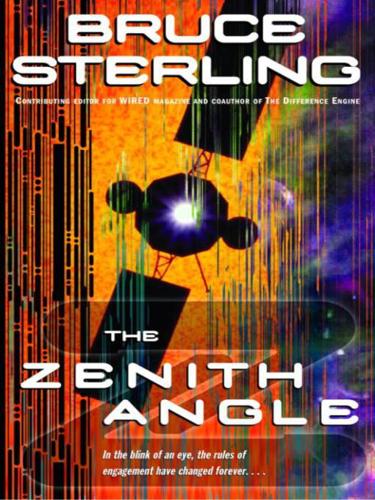
The Zenith Angle
by
Bruce Sterling
Published 27 Apr 2004
You never knew, day to day, who your new neighbors would be. Federal Emergency Management Agency, Army Corps of Engineers, U.S. Postal Service even . . . They’d show up with plastic-coated briefing books and bewildered expressions, to spend two weeks hiding underground. The Vault had been built in 1962, in a nation still queasy from the Cuban Missile Crisis. It stayed secret because it had been built quietly, in a big hurry, by a very small group of top-notch fallout-shelter contractors. The Vault was located in the Alleghenies, just over the border of West Virginia. It had a rather delightful and well-equipped hotel sitting on top of it, to camouflage it from the Russkies and the American press.

Globish: How the English Language Became the World's Language
by
Robert McCrum
Published 24 May 2010
French and European fury against the ‘Anglo-Saxons’ was only intensified by the realisation that, among the new post-war generation of baby boomers, Anglo-American culture was exceedingly desirable. It was probably a futile protest; today it has been calculated that about one-twentieth of day-to-day French vocabulary is composed of anglicismes. For example, a McDonald’s hamburger is simply a ‘McD’. After the Berlin Wall and the Cuban Missile Crisis of 1962, the Cold War moved into a more stable phase, while the United States (but not Britain) fought the threat of Communism in South-East Asia. Britain, meanwhile, had divested itself of almost all its colonial possessions, letting the ‘winds of change’ blow through Africa. Within a decade the ‘self-liquidating empire’ had exchanged hard political power for soft cultural influence.
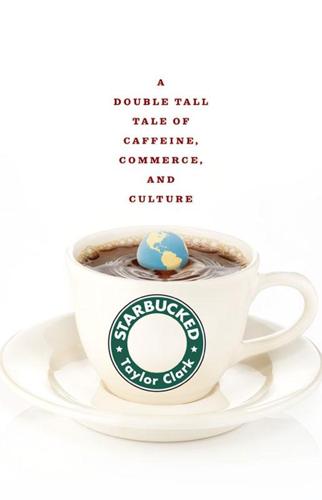
Starbucked: A Double Tall Tale of Caffeine, Commerce, and Culture
by
Taylor Clark
Published 5 Nov 2007
The idea didn’t fly because of one major dissenter: the United States, buyer of a quarter of the world’s beans, which didn’t want to impede the free market. Fidel Castro made the United States reconsider. In 1959, Castro rose to power in Cuba, establishing the first Communist state in the Western Hemisphere. Three years later, after he helped terrify America with the prospect of nuclear assault during the Cuban missile crisis, U.S. leaders realized they had to do something to stop other impoverished Latin American nations from turning to Communism. Senator Hubert Humphrey declared in 1962 that maintaining stable coffee prices was “a matter of life and death,” adding that “Castroism will spread like a plague through Latin America unless something is done about the prices of raw materials produced there.”
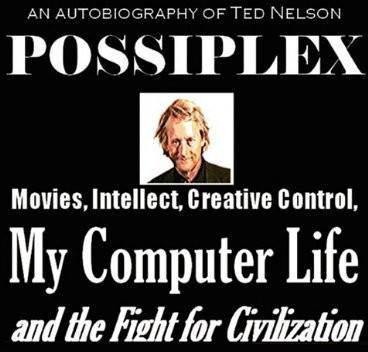
Possiplex
by
Ted Nelson
Published 2 Jan 2010
He said to give myself an editing credit, which in this setting was hardly important but I think part of his wanting me to motivate me to make the feature. I shot the title and spliced it in. Getting the title developed and spliced in took several more days. Public Events Living in Miami, I experienced the Cuban missile crisis at first hand (seeing missiles on trucks and feeling the fear all around). Later, Debbie was with me when Kennedy was shot. Not to mention these events out would be absurd, but there’s no room to discuss them further. ~ Making movies ~ The End of the "Man and Dolphin" Movie, 1963 I think it was Saturday afternoon that I took the finished dolphin sex movie to the office and went straight to bed.
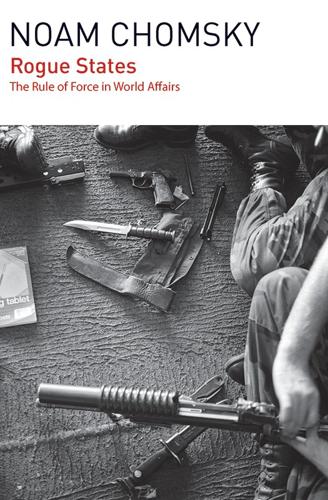
Rogue States
by
Noam Chomsky
Published 9 Jul 2015
So kicking the British out of there was very important. Venezuela also had other resources, such as iron, and US corporations enriched themselves in Venezuela for decades—and still do—while the US supported a series of murderous dictators to keep the people in line. The “Kennedy tapes,” the secret tapes of the Cuban missile crisis, are not all that revealing since almost everything in there had already come out in one way or another, but they do reveal a few new things. One of the new things is an explanation of one of the reasons the Kennedy brothers, Robert and John F., were concerned about missiles in Cuba. They were concerned that they might be a deterrent to a US invasion of Venezuela, which they thought might be necessary because the situation there was getting out of hand.
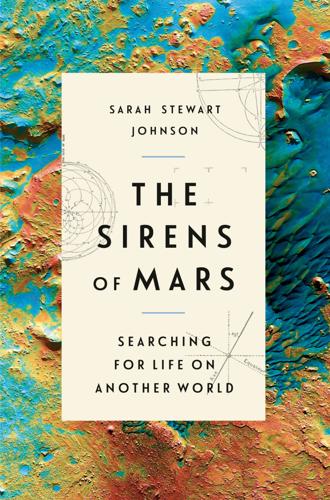
The Sirens of Mars: Searching for Life on Another World
by
Sarah Stewart Johnson
Published 6 Jul 2020
Before the plenary meeting came to a close, he supposedly went so far as to pull off his shoe, enraged, and brandish it angrily at another country’s delegate. The Soviets tried again with a trio of missions in 1962. The first ruptured in orbit, fanning out debris that was detected by a U.S. radar installation in Alaska. It was nine days into the Cuban Missile Crisis, and the wreckage was momentarily feared by Air Defense Command to be the start of a Soviet nuclear attack. The third also exploded, the main hull of the booster reentering the atmosphere on Christmas Day, followed a month later by the payload. The second, however, traveled 100 million kilometers away from Earth and went on to make the first flyby of Mars—though it was a mute witness to the event, as its transmitter failed, the same thing that happened two years later.

Fresh Off the Boat
by
Eddie Huang
Published 29 Jan 2013
We didn’t look at ourselves until it was too late. We spent our money on an arms race against ourself, fought an unnecessary war, and neglected the problems we had on this side of the water’s edge. Yet, in the middle of this mess was Obama. Coming out of the darkest period in American politics since the Cuban Missile Crisis, there he was saying the war was wrong. As I read more about Obama and followed his rise, I saw a man that had his own moral compass. He knew what he felt was right and had no problem saying it. For the first time in my life, there was a presidential candidate that I related to on a cultural, political, and personal level.

The Uninhabitable Earth: Life After Warming
by
David Wallace-Wells
Published 19 Feb 2019
Strangelove—that the fate of the world sat in the hands of a few insane people; if it all blew up, we’d know exactly who to blame. That moral clarity was not Stanley Kubrick’s, or a projection of his nihilism, but something like the opposite: conventional wisdom about geopolitics in the then-adolescent nuclear age. The same logic of responsibility appeared in Thirteen Days, Robert Kennedy’s memoir of the Cuban missile crisis, which endured in part because it comported so neatly with the lived experience of its average reader through those weeks in 1962: watching the prospect of global annihilation wax and wane in a protracted game of telephone being played by two men and their relatively small staffs. The moral responsibility of climate change is much murkier.
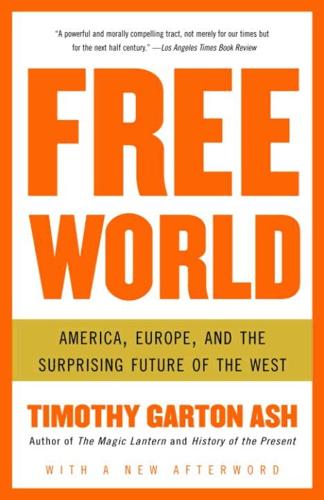
Free World: America, Europe, and the Surprising Future of the West
by
Timothy Garton Ash
Published 30 Jun 2004
The former is a domestic political tendency of the center-right, the latter an approach that can count on much wider support. Nor can we ever know what de Gaulle himself would have done. For all his pursuit of independence from the Americans, de Gaulle showed unstinting solidarity with the administration of John F. Kennedy during the Cuban missile crisis. Perhaps, contemplating Chirac’s defiance of the United States, de Gaulle might have muttered “surtout, je ne suis pas Gaulliste.” Both de Gaulle’s French biographer and a distinguished British historian of France suggest that he would have acted differently.23 Yet certainly the origins of these divergent strategies can be traced back to those two grand old sparring partners, Churchill and de Gaulle, and to one year: 1940.
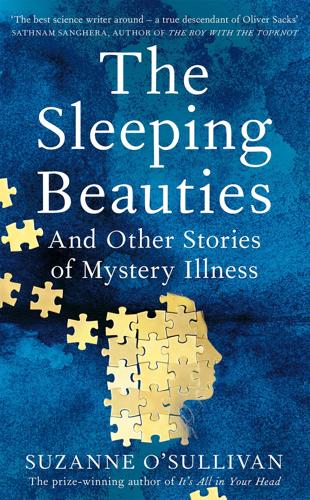
The Sleeping Beauties: And Other Stories of Mystery Illness
by
Suzanne O'Sullivan
Published 31 Mar 2021
It also exteriorized tensions within the embassy, in the same way that grisi siknis was used to exteriorize conflict in the Miskito community. The groundwork for Havana syndrome was probably laid down long before those involved had even considered making Havana their home, before the doctors were doctors and before some of those involved were even born. I was not alive during the Cuban Missile Crisis, but it was a sufficiently significant event for it to be well known, even by those of us who grew up thousands of miles away, years after it happened. Those closer to the story – the US embassy staff, for example – must have had a great deal of history and suspicion to overcome when the US embassy in Havana reopened in 2015, after more than fifty years of trade embargoes and hostility.

A Short Ride in the Jungle
by
Antonia Bolingbroke-Kent
Published 6 Apr 2014
I am against everything the conflict represented: foreign imperialism, the death of six million Indochinese, Agent Orange, the blanket bombing of neutral countries. George and Roger had been part of that conflict, had guided thousands of tonnes of bombs on to the land we now stood on. But that was all a long time ago. In the context of the sixties, the Cold War and the Cuban Missile Crisis, George and Roger, and millions of other Americans, believed they were doing 'the right thing'. In the same way, British Tommies who fought the Germans on the Western Front thought they were doing the right thing. Paul Tibbets, the pilot of the B-29 plane that dropped the bomb over Hiroshima, thought he was doing the right thing then and to the day he died.
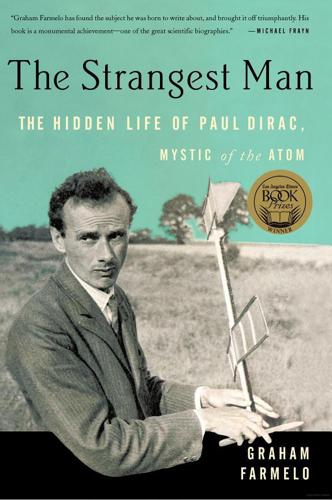
The Strangest Man: The Hidden Life of Paul Dirac, Mystic of the Atom
by
Graham Farmelo
Published 24 Aug 2009
The tension dropped on 28 October, when the Soviets agreed to remove the missiles in return for concessions from the Americans; it seemed to many – including Dirac, watching the crisis unfold on his television in Princeton and possibly wondering whether he was about to see his third world war – that humanity had been lucky to survive. The planet seemed to be at the mercy of its Dr Strangeloves. Bohr lived just long enough to see the Cuban missile crisis. Three weeks later, after Sunday lunch at home with his wife Margrethe, he went upstairs for a nap and died of heart failure. In a letter of condolence to Margrethe, Dirac said that he was ‘excessively sorry’ to hear of ‘the loss of one of my closest friends’ and recalled his first stay with the Bohrs in Copenhagen in 1926: ‘I was greatly impressed by the wisdom that Niels showed, not only in physics but in all branches of human thought.
…
Annan, N. (1992) Our Age: Portrait of a Generation, London: Weidenfeld and Nicolson. Anon. (1935) The Frustration of Science, foreword by F. Soddy, New York: W. W. Norton. Anon. (1993) Operation Epsilon: The Farm Hall Transcripts, Bristol, Institute of Physics Publishing. Anon. (2001) The Cuban Missile Crisis: Selected Foreign Policy Documents from the Administration of John F. Kennedy, January 1961–November 1962, London: The Stationery Office, pp. 109–34. Anon. (2007) ‘Autism Speaks: The United States Pays Up’, Nature, 448: 628–9. Badash, L. (1985) Kaptiza, Rutherford and the Kremlin, New Haven, Conn.: Yale University Press.

The new village green: living light, living local, living large
by
Stephen Morris
Published 1 Sep 2007
Institutional distrust is so prevalent today (Did someone say “weapons of mass destruction?”), it can be difficult to recreate the reservoir of faith that existed at the time. We had prevailed in the Great War and our lads returned to unprecedented prosperity. Two terms of a placid presidency under Ike gave way to the excitement of Camelot. We survived the Cuban Missile Crisis, but the jury is still out on whether we have survived Silent Spring. The publication of Silent Spring caused an uproar from the entrenched establishment of chemical companies and regulatory agencies. Science and technology had become synonymous with progress during the era when Everything Went Right.
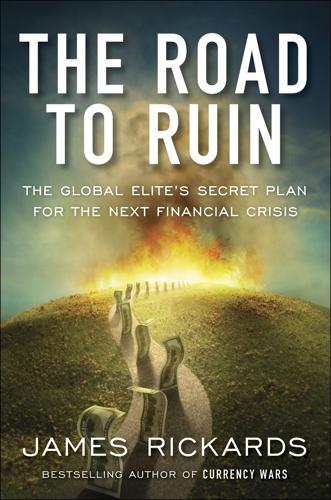
The Road to Ruin: The Global Elites' Secret Plan for the Next Financial Crisis
by
James Rickards
Published 15 Nov 2016
The novel’s plot turns on the fact that if the ice-nine is released from the vials, and put in contact with a large body of water, the entire water supply on earth—rivers, lakes, and oceans—would eventually become frozen solid and all life on earth would cease. This was a doomsday scenario appropriate to the times in which Vonnegut wrote. Cat’s Cradle was published just after the Cuban Missile Crisis, when the real world came dangerously close to nuclear annihilation, what scientists later called nuclear winter. Ice-nine is a fine way to describe the power elite response to the next financial crisis. Instead of reliquefying the world, elites will freeze it. The system will be locked down.
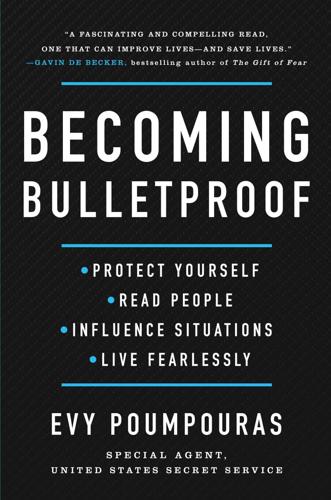
Becoming Bulletproof: Protect Yourself, Read People, Influence Situations, and Live Fearlessly
by
Evy Poumpouras
Published 20 Apr 2020
We are taught to be afraid of failing or afraid of trying at all. There is no limit to the fears we can accumulate in our lifetime. Every generation seems to grow up with some type of societal fear. In the 1950s, it was the Red Scare and communism. The 1960s became a decade of fearing for personal safety with the Cuban Missile Crisis, and the assassinations of President John F. Kennedy, Dr. Martin Luther King Jr., and presidential candidate Robert F. Kennedy. In the 1970s, it was the foreign oil crisis, the political upheaval with the impeachment of President Nixon, and the skyrocketing of crime throughout the United States.
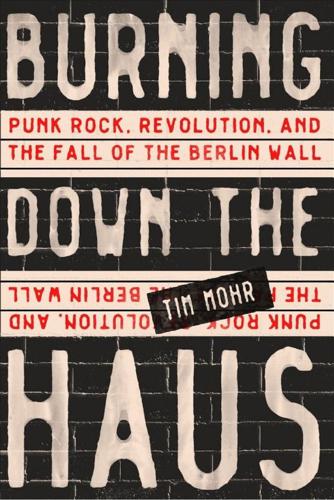
Burning Down the Haus: Punk Rock, Revolution, and the Fall of the Berlin Wall
by
Tim Mohr
Published 10 Sep 2018
West Berlin authorities were so concerned about the potential scale of anti-Reagan protests that they brought in additional police reinforcements from West Germany, putting 10,000 cops on the street in full riot gear in the run-up to his visit. Municipal sources said it was the biggest security operation in the city’s history. It’s easy to forget now, but under Ronald Reagan’s presidency, the chance of a shooting war between the US and the USSR seemed more tangible than at any time since the Cuban missile crisis. The world lived in the constant shadow of a genuine existential threat: total nuclear annihilation. By the 1980s the possibility that humanity could be vaporized in a matter of minutes occupied a dark but prominent place not only in individual consciences but also, especially in the West, in pop culture.
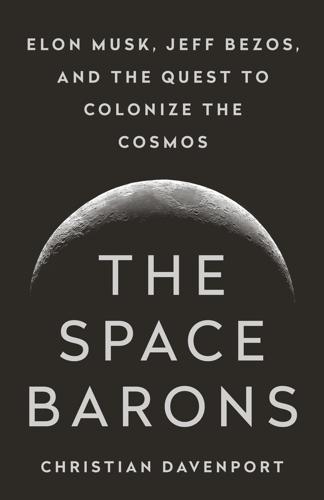
The Space Barons: Elon Musk, Jeff Bezos, and the Quest to Colonize the Cosmos
by
Christian Davenport
Published 20 Mar 2018
Then, Gise tried to land him a police department job, but that didn’t work out, either. Neither did the marriage. The young parents soon got divorced, and Jackie took her son and moved back in with her parents in Albuquerque. Jackie got a job at the bank of New Mexico and met a hardworking man there named Miguel Bezos, known as Mike, who had fled Cuba shortly before the Cuban missile crisis. They fell in love and got married when Jeff was four. Mike Bezos adopted him and raised him as his own. Gise made Jorgensen promise to stay away. “I’ve never been curious about him,” Bezos told Time about his biological father. “My real father is the guy who raised me.” Bezos’s passion for space started when he was five years old on July 20, 1969, when Neil Armstrong and Buzz Aldrin landed on the moon.
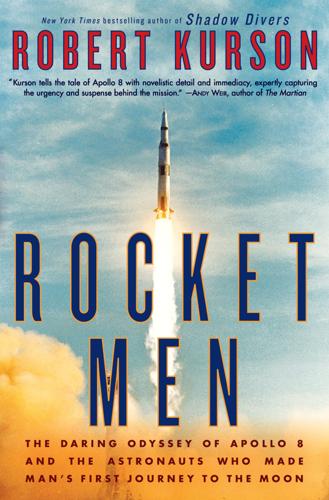
Rocket Men: The Daring Odyssey of Apollo 8 and the Astronauts Who Made Man's First Journey to the Moon
by
Robert Kurson
Published 2 Apr 2018
Kennedy ordered a naval blockade of the island. For thirteen days, the United States and the Soviet Union stood on the brink of nuclear war. But Kennedy refused to call off the blockade. Just as it seemed both sides had no choice but to use their nuclear weapons, Khrushchev backed down and removed the missiles. The Cuban Missile Crisis had been among the most tense and dangerous events in American history, but when it ended, the world had a different opinion about the will of John Fitzgerald Kennedy. * * * — In mid-November 1963, Kennedy visited Cape Canaveral, where he was briefed on America’s developing colossus, the Saturn V, the 36-story-tall three-stage booster being built to take Americans to the Moon.
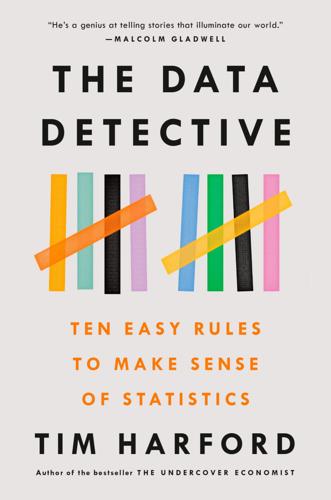
The Data Detective: Ten Easy Rules to Make Sense of Statistics
by
Tim Harford
Published 2 Feb 2021
Readers of the 1968 newspaper would have read anxiously about how, over the previous three decades, the atomic bomb had been invented, developed, used on Japan with catastrophic effect, then superseded by vast arsenals of much more powerful hydrogen bombs, and how the superpowers had flirted with nuclear conflict repeatedly—in the Korean War, during the Cuban missile crisis, and more than once over Berlin. For a reader picking up a newspaper in 2018 for the first time since 1968, it would be big news that the Cold War had simply ended without a nuclear exchange of any kind—even if no daily newspaper would have been tempted in the meantime to run with the headline “No H-Bombs Dropped Today.”
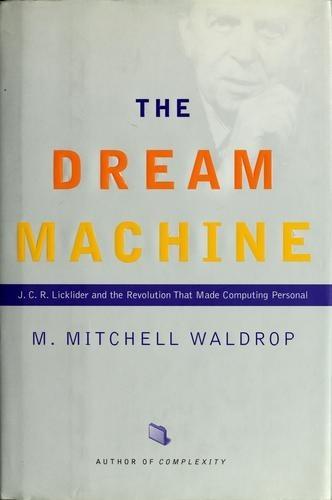
The Dream Machine: J.C.R. Licklider and the Revolution That Made Computing Personal
by
M. Mitchell Waldrop
Published 14 Apr 2001
It was a Saturday afternoon in late 1962 or maybe early 1963-sometime in the Kennedy administration, anyway, not too long after Tracy's family had moved down from the Boston area so his father could go to work for the De- fense Department. The air in Washington was electric in those days, with all the energy and drama of a new, young administration. The Cuban Missile Crisis, the Berlin Wall, the Civil Rights marches-it was heady stuff for a fifteen-year- old. So when his dad had offered to take him along to his office that afternoon while he picked up some papers he'd forgotten to bring home, Tracy had jumped at the chance. He was still slightly awestruck at the very thought of the Pentagon.
…
"But I did attend some of the other ses- sions, and I came out with the feeling that command and control was a mess. Intellectually the speakers were poor. They had no vision. You couldn't see any solution coming from them." This was not a reassuring thought, says Fano-not when it came less than a month after the Cuban Missile Crisis, and especially not when the hallways of the Homestead meeting were abuzz with rumors of a near-catastrophe. For a full thirteen days in October, the United States had placed nuclear weaponry amounting to some seven thousand megatons-the equivalent of more than a hundred thousand Hiroshimas-on hair-trigger alert.
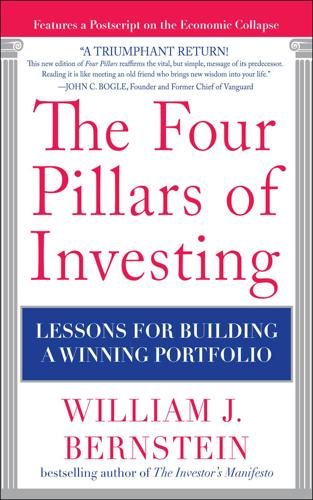
The Four Pillars of Investing: Lessons for Building a Winning Portfolio
by
William J. Bernstein
Published 26 Apr 2002
So even when you are courageous and lucky enough to invest at the low point, throwing money into a market that has been falling for years is a profoundly unpleasant activity. And, of course, you are taking the risk that the system may, in fact, not survive. This brings to mind an apocryphal story centering on the Cuban Missile Crisis of 1962, which has a young options trader asking an older colleague whether to make a long (bullish) bet or a short (bearish) one. “Long!” answers the older man, without a moment’s hesitation. “If the crisis resolves, you’ll make a bundle. And if it doesn’t, there’ll be nobody on the other side of the trade to collect.”

Geography of Bliss
by
Eric Weiner
Published 1 Jan 2008
We are able to acquire many of the things that we think will make us happy and therefore suffer the confusion and disappointment when they do not. Over the past fifty years, America’s happiness levels have remained remarkably stable, unperturbed by cataclysmic events. After the attacks of September 11, 2001, researchers found no marked decrease in U.S. happiness levels. The 1962 Cuban missile crisis precipitated a brief increase in national happiness. Most people of the world derive happiness from the quotidian. Historian Will Durant has said, “History has been too often a picture of the bloody stream. The [real] history of civilization is a record of what happened on the banks.” We remain a profoundly optimistic nation.
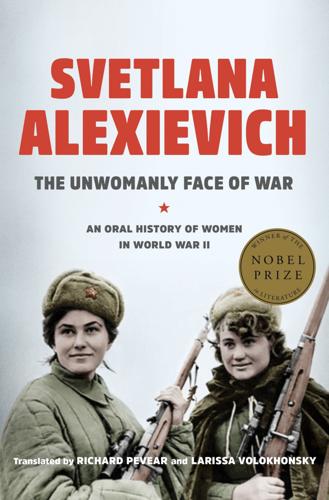
The Unwomanly Face of War: An Oral History of Women in World War II
by
Svetlana Alexievich
Published 1 Jan 1985
I sometimes think so…It’s my sin… I loved the Motherland more than anything in the world. I loved…Who can I tell it to now? To my girl…To her alone…I recall the war, and she thinks I’m telling her fairy tales. Children’s fairy tales. Scary children’s fairy tales… Don’t write my last name. No need to… * * * *1 Known in the West as the Cuban Missile Crisis, a two-week standoff between the United States and the Soviet Union over the stationing of Soviet ballistic missiles in Cuba. *2 Konstantin Rokossovsky (1896–1968) was a Polish-born Soviet officer. After serving with great distinction, he was arrested during the Great Purge and accused of treason.

Espresso Tales
by
Alexander McCall Smith
Published 1 Jan 2005
His was a world of floors and low things, and smells; a whole room, a world of smells, waiting for dogs to locate them and file away for future use. Angus met Big Lou’s challenge. “Yes,” he said. “I’m pretty sure about that. Don’t blame me for what I haven’t done. Simple. I didn’t start the Cuban missile crisis. I was around at the time, I suppose. But I didn’t start it.” Big Lou smiled. “That may be so, but let me tell you about something I’ve just read.” She paused, looking directly at Angus Lordie. “Do you want to hear about it?” Angus nodded graciously. “You are constantly entertaining, most excellent Lou,” he said.
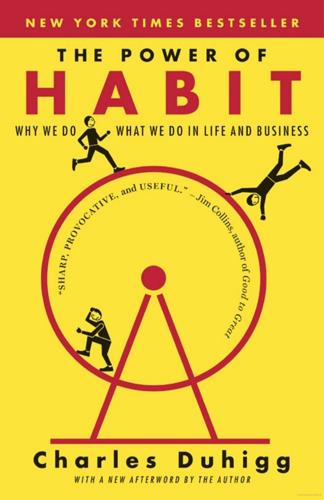
The Power of Habit: Why We Do What We Do in Life and Business
by
Charles Duhigg
Published 1 Jan 2011
Lillrank, “The Quality of Standard, Routine, and Nonroutine Processes,” Organization Studies 24 (2003): 215–33; S. Massini et al., “The Evolution of Organizational Routines Among Large Western and Japanese Firms,” Research Policy 31 (2002): 1333–48; T. J. McKeown, “Plans and Routines, Bureaucratic Bargaining, and the Cuban Missile Crisis,” Journal of Politics 63 (2001): 1163–90; A. P. Minkler, “The Problem with Dispersed Knowledge: Firms in Theory and Practice,” Kyklos 46 (1993): 569–87; P. Morosini, S. Shane, and H. Singh, “National Cultural Distance and Cross-Border Acquisition Performance,” Journal of International Business Studies 29 (1998): 137–58; A.
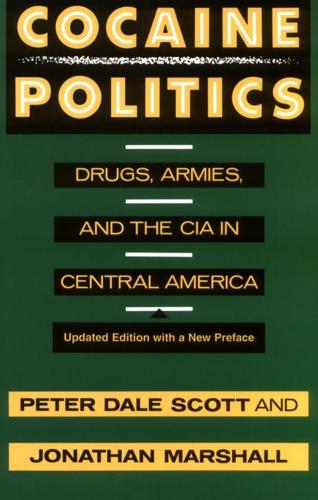
Cocaine Politics: Drugs, Armies, and the CIA in Central America
by
Peter Dale Scott
and
Jonathan Marshall
Published 1 Jan 1991
The FBI documents confirm that, as FBI agent Currier suggested to the Iran-Contra committees, Corvo, Francisco Chanes, Frank Castro, Armando Lopez Estrada, and others were at the time o f the flight already under investigation for their alleged role in the May 1983 bombing o f the Continental National Bank o f Miami.89 The list o f Rene Corvo and Frank Castro associates in the FBI documents is a litany o f terrorists associated with previous incidents in the United States and Canada, from Omega 7 (Luis Crespo) back to the pragmatista terrorists o f the Watergate era (Eduardo Paz and Rafael Perez, alias Torpedo).90 One (Ramon Sanchez) had even been part o f a 1963 attempt by Frank Sturgis (later a Watergate burglar) to sink a Soviet tanker and thus frustrate the entente established between Kennedy and Khrushchev after the Cuban missile crisis.91 The documents from the Iran-Contra and Christie depositions offer strong evidence that the illegalities o f this Corvo-Castro-Vidal connection were more extensive, more high-level, and more murderous than the FBI documents alone indicate. The protected terrorism o f this group in the 1980s (when George Bush was in charge o f the War on Drugs and counterterrorist activities) was a prolongation o f the protected terrorism o f the Frank Castro-Armando Lopez Estrada-Luis Posada Carriles connection in 1976 (when Bush was director o f the CIA).
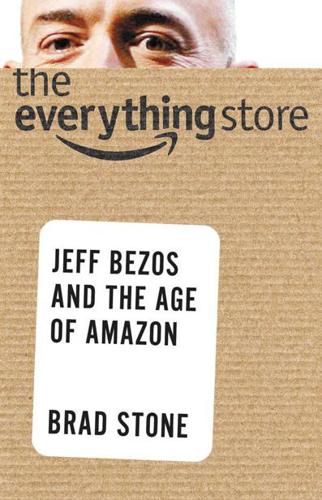
The Everything Store: Jeff Bezos and the Age of Amazon
by
Brad Stone
Published 14 Oct 2013
“What he did for us we can never repay,” says Carlos Rubio Albet, Miguel and Angel Bezos’s roommate at the facility. “He took a houseful of exiled teenage boys who didn’t speak English and turned it into a real family. That first Christmas I was there, in ’62, he made sure everyone had something under that tree.” After the thirteen tension-filled days of the Cuban missile crisis in October of that year, the residents of La Casa, as they called it, knew they weren’t going home any time soon. While the atmosphere at the Casa de Sales was strict, the teenagers enjoyed themselves, and when they later gathered for reunions with Father Byrnes, they remembered their days there as among the happiest of their lives.

The Diet Myth: The Real Science Behind What We Eat
by
Tim Spector
Published 13 May 2015
In response to similar industry lobbying, the UK government, despite pressure from doctors, from its Chief Medical Officer and from health groups, is also resisting any real change such as imposing limits or a sugar tax. In contrast, in 2013 Denmark, having scrapped its previous saturated-fat tax, increased its small tax on sugary foods to levels that have started to reduce consumption. The rapid and recent rise of sugar in the Western diet came about mainly for economic and political reasons. During the Cuban missile crisis of the early 1960s Cuban sugarcane supplies dried up and prices rose, and the US wanted to be self-sufficient. Burger-loving Richard Nixon believed that keeping food costs low was a government priority, to keep the public happy and stop the poor rioting. The government was prepared to subsidise cheap food and the food giants were happy to oblige.
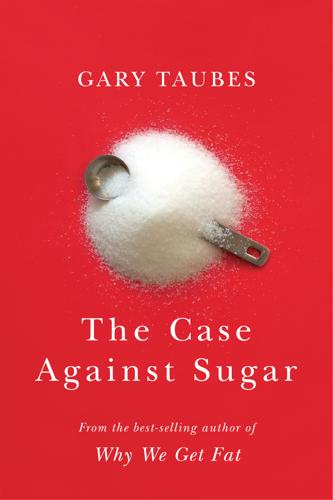
The Case Against Sugar
by
Gary Taubes
Published 27 Dec 2016
The American journals, like the research community in the United States, remained focused on fat and largely quiet on the sugar question. — The Sugar Association first became concerned about the emerging evidence linking sugar to heart disease and diabetes as early as 1962, but other pressing issues took precedence. The Cuban Missile Crisis, and what a Sugar Association memo refers to as the “Castro Situation,” meant that financial contributions from Cuban sugar producers, until then members of the association, would no longer be forthcoming. The threat of competition from artificial sweeteners, particularly cyclamates, had made the research program on saccharine and cyclamates the Sugar Association’s “top priority,” the more immediate threat to the livelihood of their industry.
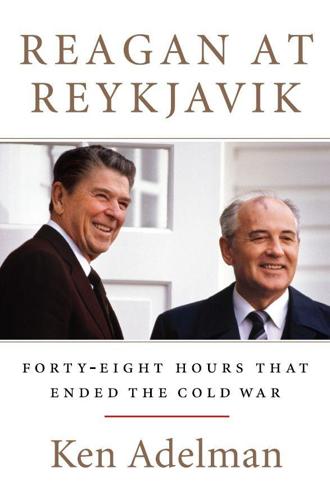
Reagan at Reykjavik: Forty-Eight Hours That Ended the Cold War
by
Ken Adelman
Published 5 May 2014
During that long run in the spotlight, he traveled throughout the United States, deep-sea fishing regularly in Florida, attending the annual running of the Kentucky Derby, and hobnobbing wherever the rich and powerful capitalists and imperialists of America assembled. It was during the dicey days of the Cuban missile crisis that Dobrynin’s skills proved most valuable. He negotiated directly with President Kennedy and his brother, Attorney General Robert Kennedy. It was Dobrynin who first suggested that the United States remove its outdated missiles from Turkey after the Soviets removed their new missiles from Cuba.
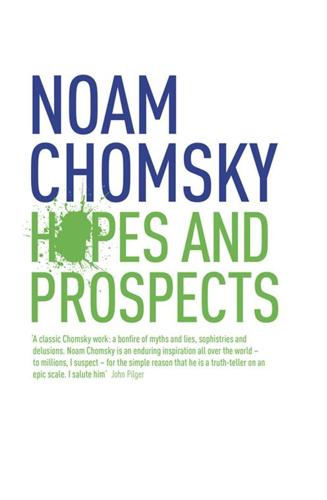
Hopes and Prospects
by
Noam Chomsky
Published 1 Jan 2009
By 1945, the British Foreign Office recognized ruefully that henceforth Britain would be a “junior partner” in global management, and occasional efforts to go beyond have regularly been rebuffed by the global ruler. Tony Blair was ridiculed in the British media as George Bush’s poodle. Perhaps the most accurate description of the relationship was given by a senior Kennedy adviser during the Cuban missile crisis, when U.S. planners were treating Britain with utter contempt, not even informing their British ally of plans that might lead to the destruction of Britain in a retaliatory Russian strike. The adviser gave a definition of the “special relationship”: Britain serves as “our lieutenant (the fashionable word is partner).”7 Britain of course prefers the fashionable word.
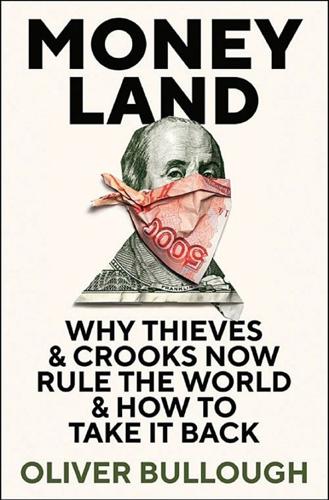
Moneyland: Why Thieves and Crooks Now Rule the World and How to Take It Back
by
Oliver Bullough
Published 5 Sep 2018
They began their negotiations in October 1962, the same month that the Beatles released ‘Love Me Do’, which reached number 17 in the UK music charts – respectable for a band’s first single but hardly spectacular. The bankers signed their contract on 1 July the following year, the same day that the Fab Four recorded ‘She Loves You’, the song that sparked global Beatlemania. That extraordinary nine months not only revolutionised pop music, but also geopolitics, since they included the Cuban Missile Crisis and President John F. Kennedy’s ‘Ich bin ein Berliner’ speech. In the circumstances, it is understandable that a simultaneous revolution in global finance passed little remarked. Warburg’s new bond issue – these bonds became known as ‘eurobonds’, after the example set by eurodollars – was led by Ian Fraser, a Scottish war hero turned journalist turned banker.
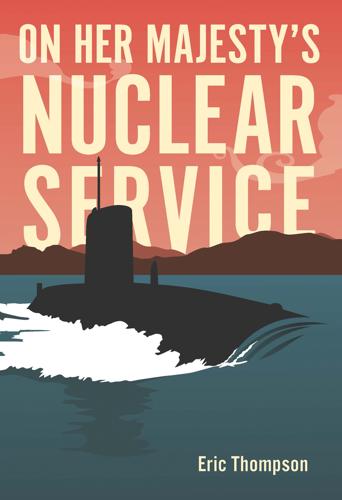
On Her Majesty's Nuclear Service
by
Eric Thompson
Published 18 Apr 2018
The protesters completely failed to recognise that it was the military, not pacifists, which defeated Fascism. The military had liberated occupied countries like France and Holland, and then faced down the Soviet’s ambition to destroy our freedom. It was the threat of Mutually Assured Destruction, not pacifism, which had ensured the Cold War did not descend into the Third World War. The Cuban missile crisis is proof of that. It is astonishing to reflect that the Second World War began a mere twenty-one years after the end of the First World War, a war so terrible that it had been dubbed The War to End All Wars. The question is whether mankind will do it for a third time? The post Second World War belief was that nuclear weapons were the only thing that could prevent it.
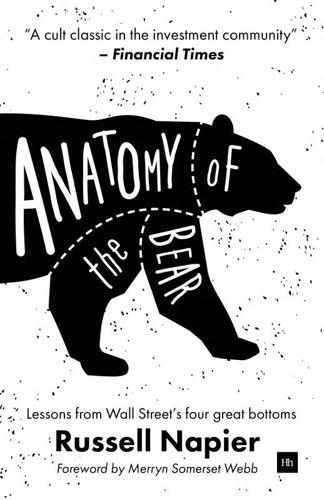
Anatomy of the Bear: Lessons From Wall Street's Four Great Bottoms
by
Russell Napier
Published 18 Jan 2016
Kennedy was branded anti-business for preventing the steel companies from raising their prices. The subsequent downturn in the market, caused by the supposed threat to corporate profit margins from Kennedy’s actions, stands out for its scale and rapidity of decline. The scale of this panic is particularly severe when one considers that, during the Cuban Missile Crisis of 22 October to 28 October, the market posted a small advance. The next sharpest decline was in 1966, a result of a crisis in confidence when, as Adam Smith explains in The Money Game, Wall Street stopped believing in anything: They don’t believe Johnson, they don’t believe anything in Washington, they believe taxes are going to go up but not enough, they don’t believe we’ll ever get out of Vietnam, and… nobody will believe any earnings
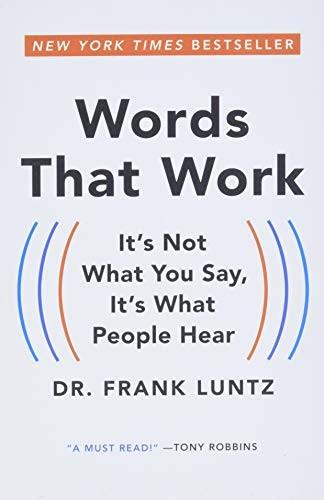
Words That Work: It's Not What You Say, It's What People Hear
by
Dr. Frank Luntz
Published 2 Jan 2007
In the process, we’ve sacrificed nuance and judgment and distinctions, and thereby cheapened the conversation. The thoughtful musings and intellectual discourse of William Safire and George Will were replaced by the verbal slugfests of Hannity & Colmes and The McLaughlin Group—and while possibly more entertaining, our language has suffered. The Cuban Missile Crisis lived up to its billing: two nations with nuclear capabilities threatening an exchange of military might that could have engulfed the world in a war without end. But do we really believe that the various alleged “crises” America faces today constitute as much of a threat to our country’s immediate security as nuclear missiles in Cuba did in 1962?

When Computers Can Think: The Artificial Intelligence Singularity
by
Anthony Berglas
,
William Black
,
Samantha Thalind
,
Max Scratchmann
and
Michelle Estes
Published 28 Feb 2015
Using the bomb also made its use acceptable as a tactical weapon, a mindset that only changed around the 1970s. During the 1950s, individual commanders believed they were authorized to use them if they felt that the tactical situation warranted it, and wanted no restrictions that could delay any response. After the Cuban Missile Crisis in the 1960s, president Kennedy insisted that special codes be required to activate the missiles. These were duly added, and set to the code “000000”, and this number was included in the manuals just in case anyone was unaware of them. The tactical genius of man to solve the huge technical hurdles required to build the atom bomb is in stark contrast to the strategic stupidity of man to use it in the way that it was used.

What to Think About Machines That Think: Today's Leading Thinkers on the Age of Machine Intelligence
by
John Brockman
Published 5 Oct 2015
Because we have the ability to destroy much of human life on this planet, the idea that intelligent machines might one day control the decision-making apparatus that leads to pushing the big red button—or even launching a less catastrophic attack—is worrisome. This is because when it comes to decision making, we often rely on intuition and interpersonal communication as much as on rational analysis—the Cuban missile crisis is a good example—and we assume that intelligent machines won’t have these capabilities. However, intuition is the product of experience, and communication is, in the modern world, not restricted to telephones or face-to-face conversations. Once again, intelligent design of systems, with numerous redundancies and safeguards built in, suggests to me that machine decision making, even in the case of violent hostilities, is not necessarily worse than decision making by humans.
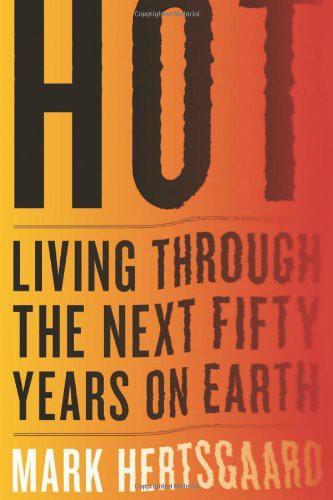
Hot: Living Through the Next Fifty Years on Earth
by
Mark Hertsgaard
Published 15 Jan 2011
I said earlier in this book that denial isn't much of a survival strategy, and I still believe it, but I confess I sometimes see its attractions. But wait a minute, I tell myself. My brothers and sisters and I grew up in the shadow of the atomic bomb, the twentieth century's ultimate nightmare, and we lived through it. I'm not old enough to remember the Cuban Missile Crisis of 1962, but as a young reporter in Washington in the 1980s I had a front-row seat for the belligerent jousting between the nuclear superpowers, when the massive arsenals of the United States and the Soviet Union were poised on hair triggers. I wrote a lot about the arms race in the 1980s, and there were times the facts left me pretty depressed.
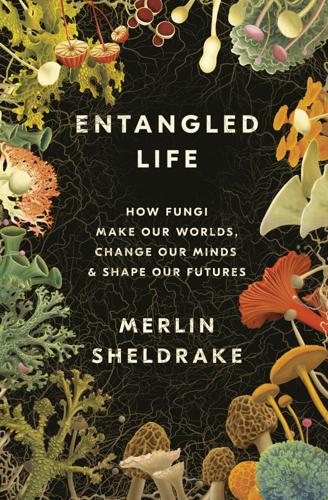
Entangled Life: How Fungi Make Our Worlds, Change Our Minds & Shape Our Futures
by
Merlin Sheldrake
Published 11 May 2020
For much of the twentieth century, discussion of symbiotic interactions remained loaded with political charge. Sapp points out that the Cold War prompted biologists to take more seriously the question of coexistence in the world at large. The first international conference on symbiosis was held in London in 1963, six months after the Cuban Missile Crisis had brought the world to the brink of nuclear war. This was no accident. The editors of the conference proceedings commented that “the pressing problems of coexistence in world affairs may have influenced the Committee in their choice of subject for this year’s Symposium.” It is well-established in the sciences that metaphors can help to generate new ways of thinking.
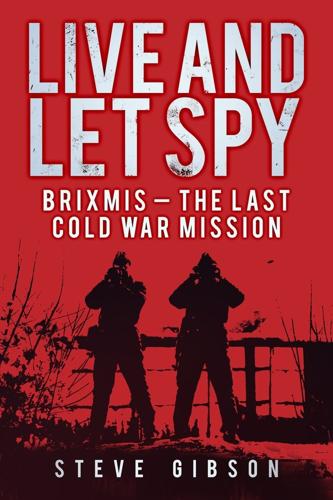
Live and Let Spy: BRIXMIS - the Last Cold War Mission
by
Steve Gibson
Published 2 Mar 2012
As ever the diplomatic and political interpretation of events contrasted deeply with the picture on the ground. They were way ahead of themselves. If ever there was a delicate moment in the Cold War then this was it – the last bit. The Berlin airlift in 1948–9, the Bay of Pigs and U2 debacles in 1961 (not to mention the Wall itself), the Cuban Missile crisis in 1962 (itself uniquely allied to the Berlin crisis at the time), the birth of the concept of Mutually Assured Destruction, Philby, Burgess, Blake and Maclean, not to mention a host of less infamous traitors, the invasions of Hungary and the near invasion of Poland in 1956, Czechoslovakia in 1968, Afghanistan in 1979 and all the other incidents that went to make the Cold War, each in their own way provided a degree of worldwide tension, reaction and threat.
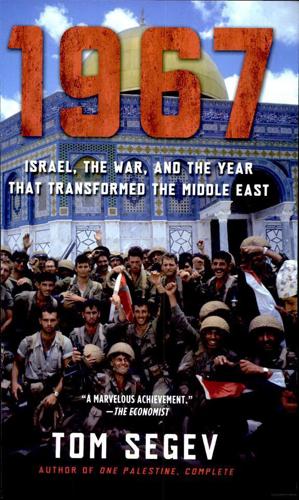
1967: Israel, the War, and the Year That Transformed the Middle East
by
Tom Segev
Published 2 Jan 2007
He insisted that Israel should no longer comply with Fortas’s request, particularly as the week he had asked for was coming to an end. “The Americans aren’t going shoot at us,” Dayan promised, and described the demand to keep waiting as “stupidity.” Begin suggested sending Johnson the speech given by President Kennedy during the Cuban missile crisis. Minister Yosef Burg brought up Chamberlain and Hitler, and Allon said, predictably, “Better they condemn us alive than eulogize us at our grave.” Dayan reported that the Egyptians were planning to seize Eilat: “I find it very difficult to see how we will stand up to that.” Nasser was now essentially a presence in Jordan, too.
…
See Palmah trilateral pact of 1956, 148, 241 Broadcasting Authority, Israeli, 555 Brom, Haim, 393, 405 Bronstein, Amnon, 463, 468 Brotherhood, The, 519n Brown, Arieh, 404 Brunn, Gabi, 374–75 Bruno, Michael, 528 Buber, Martin, 74 Buch, Ehud, 154 Bul, 93, 214n Bull, General Odd, 193, 195, 209, 399 Six-Day War, 340, 346–47, 351, 508 looting of residence, 410 Bunche, Ralph, 11, 171n, 193 Bundy, McGeorge, 331, 387 Burg, Yosef, 275, 335 Burstein, Mike, 222n Café Kassit, Tel Aviv, 9 Café Roval, Tel Aviv, 9 California (restaurant), Tel Aviv, 9, 11, 13, 62 Callas, Maria, 118 Canada, proposed emigration of Arab refugees to, 538 Candid Camera, 27 Capucci, Bishop Hilarion, 517–18, 519 Carmel, Moshe peace negotiations and the future of the Occupied Territories, 505 the three weeks leading to the Six-Day War, 235, 240, 273, 275, 290 Carmiel, Israel, 90 Carmon, David, 580n Carmon, Colonel David, 202–3, 259 Carrot and the Stick, The (Gazit), 473n Castro, Fidel, 103n, 146 CBS, 28 Central Bureau of Statistics, Israeli, 528, 537 Central Intelligence Agency (CIA), 253, 257, 259–60 Israel’s decision to go to war and, 329–30, 331 Chagall, Marc, 174n, 305 Chamberlain, Neville, 284, 335 Chaplin, Charlie, 116 chemical warfare, prospect of, 239, 243, 288, 297, 332, 338 Chen, David, 498 Chen printing house, 496 Chief Military Rabbinate, 465n Chief Rabbinate, 168, 286 Chizik, Uri, 372, 374, 398, 399 Chouraqui, Andre, 64 Churchill, Winston, 306 grandson of, 280, 327 Chuvakhin, Dimitri, 201, 230, 267, 268, 274, 292, 399 Clifford, Clark, 326 Coca-Cola, 109–11, 574 Cochin Jews, 143 Cohen, Benjamin, 366 Cohen, Geula, 94, 134, 221–22 Sharon interview, 440, 451 Cohen, Justice Haim, 99 Cohen, Mihal, 99 Cohen, Rivka, 420, 428, 447 Cohen, Sheldon S., 121, 304 Cohen, Yaakiv, 147 Cohen, Yaffa, 54 Cohen, Yosef, 198, 200 Comay, Michael, 539 Committee for the West Bank, 469n Communist party, 95, 157 martial law and, 74 Complete Eshkol Jokes, 96–97 Concentration (real estate board game), 180 Conference of Presidents, 124 Connery, Sean, 440 “Conquering the Land as a Moral Act,” 181 Crusaders, 298 Cuban missile crisis, 335 cultural life, 28–30, 32 Dachau concentration camp, 533 Daf, 387 Dajani family, 485n Dakar (Israeli submarine), 448 “Danger of Hitler Is Returning, The,” 284 Danin, Ezra, 532 Danon, Dafna, 117, 118 Danon, David, 117 Daoud, Colonel, 346, 508 Davar, 3, 6, 33, 90, 101, 131–32, 134–35, 136, 217, 381, 442, 523 Davar Leyeladim, 160–61 “Helicopter Campaign,” 439 David, King, tomb of, 7, 97 Davis, Uri, 74, 282 Dayan, Devorah, 35, 334 Dayan, Moshe, 5, 89, 183, 231, 233, 268–70, 419, 439, 560n Arab plan to assassinate, 506 Arab refugees and, 526, 531, 537, 540, 541n, 542 birth of, 471 childhood of, 35 demilitarized zones and, 193 described, 268, 318, 332, 361–62, 391, 470–72, 478–79 Eshkol’s relationship with, 125, 313, 316, 320, 361, 370, 391, 414, 548–50 free movement in two parts of Jerusalem and, 435 injury causing lost eye, 334, 471 Jerusalem and, 491 joins Rafi party, 86 Margot Klausner and, 448 nuclear weapons and, 164, 549 Occupied Territories, 517, 531, 548, 549–50 economic integration of, 470 education in, 480 as “liberated territories,” 543 military government of, 463, 464, 465, 472–79, 547, 549–50, 580, 581 “open bridges policy,” 468 peace negotiations and future of, 500, 502, 503–4, 505, 518–19, 567–68 visits to, 425, 428 “whip and carrot” approach, 473–75 Palestinian state, proposals for a, 514, 522 peace negotiations and future of the Occupied Territories, 500, 502, 503–4, 505, 518–19, 567–68 on Rabin’s breakdown, 237, 238 Sinai Campaign and, 149 Six-Day War, 372n, 376, 549 day one, 342, 344, 345–46, 350, 363n day two, 354, 356, 357, 360–62, 363, 365 day three, 366–67, 369–71, 379 final days, 387–88, 389–92, 393–94, 397, 399, 400, 401, 404–8, 410 the three weeks leading to the Six-Day War, 228–29, 234–35, 238, 241, 242–43, 260, 268, 270–71, 299n, 309 the decision to go to war, 323, 325–29, 326, 332–37, 549 joining the Eshkol government, 270–71, 272, 297, 310, 311–20, 328, 331, 332 replacement of Eshkol government, 231, 263, 306, 307 victory albums and, 441 victory arch in Jerusalem and, 450 Vietnam visit, 15, 125–26, 335, 472–73 Dayan, Shmuel, 35 Dead Sea Scrolls, 378 de Beauvoir, Simone, 213 Declaration of Independence, Israeli, 67, 450, 549n Defense Department, U.S., 116, 119 de Gaulle, Charles, 172, 207, 260, 273, 560–61 demographics.

The Quest: Energy, Security, and the Remaking of the Modern World
by
Daniel Yergin
Published 14 May 2011
All this can only increase the deep anxiety about his finger being anywhere close to the nuclear button. Adding to the danger is the lack of communication with Tehran, which could increase the likelihood of an “accidental” nuclear confrontation. Even during the tensest moments of the Cold War, the United States and the Soviet Union had communication channels, including, after the Cuban Missile Crisis in 1962, the “hotline” between the White House and the Kremlin to assure immediate contact during a crisis. No such channels exist with Iran. Indeed, there is very little understanding of how the regime functions, who makes decisions, and how the factions compete for power. All this adds to the risk.
…
Conoco ConocoPhillips Conolly, Arthur conservation buildings and see also efficiency, energy conservation gap consumption, consumers Chinese of electricity of ethanol global energy demand and of natural gas oil price collapse and reduction of security and U.S. gas U.S. oil containment: of Iran of Iraq of Soviet Union contracts, interruptible Copenhagen Agreement Copenhagen conference (COP 15; Dec. 2009) copper corn Corporate Average Fuel Efficiency Standards (CAFE) corruption in Nigeria petro-states and Council of Economic Advisers Council of Europe Council on Environmental Quality, U.S. Crane, David crime Cromwell, Oliver Cuba Cuban Missile Crisis Cugnot, Nicolas Joseph Cultural Revolution, Chinese currency: in Asian financial crisis demand shock and see also specific currencies Curzon, Lord Cushing, Okla. cyberattack Cyber Command cybercriminals Daimler Daimler, Gottlieb Daimler-Benz Dales, John Damon Bankston dams Daqing Daschle, Tom Daura Refinery Davis, David Davis, Gray Davos, World Economic Forum in (2006) debt Decree Deepwater Horizon Defense Advanced Research Projects Agency (DARPA) Defense Department, U.S.
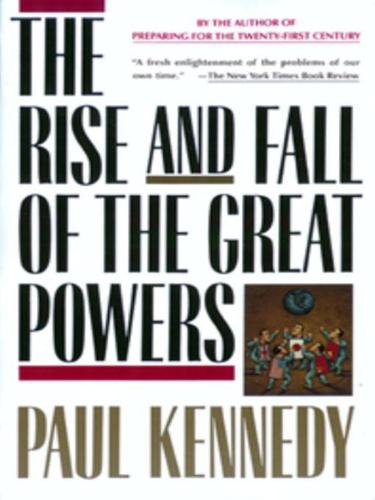
The Rise and Fall of the Great Powers: Economic Change and Military Conflict From 1500 to 2000
by
Paul Kennedy
Published 15 Jan 1989
In Indonesia, things were worse; after receiving masses of Russian and eastern-European aid, Sukarno’s government had turned from Moscow to Peking by 1963. Two years later, the Indonesian army wiped out the Communist party with great ferocity. Sékou Touré in Guinea sent home the Russian ambassador in 1961 for involving himself in a local strike, and during the Cuban missile crisis he refused to let Soviet planes refuel at the airport they had specially extended at Conakry.144 Russia’s support of Lumumba in the Congo crisis of 1960 undermined his prospects, and his successor Mobutu closed down the Soviet embassy. The most spectacular instance of that sort of setback—and a major blow to Soviet influence—came in 1972, when Sadat ordered 21,000 Russian advisers out of Egypt.
…
Nuclear Delivery Vehicles of the Powers, 1974148 So capable had each superpower become of obliterating the other (and anyone else besides)—a state of affairs quickly named MAD, or Mutually Assured Destruction—that they began to evolve arrangements for controlling the nuclear arms race in various ways. There was, following the Cuban missile crisis, the installation of a “hot line” to allow each side to communicate in the event of another critical occasion; there was the nuclear test-ban treaty of 1963, also signed by the United Kingdom, which banned testing in the atmosphere, under water, and in outer space; there was the Strategic Arms Limitation Treaty (SALT I) of 1972, which set limits on the numbers of intercontinental ballistic missiles each side could possess and halted the Russian construction of an anti-ballistic-missile system; there was the extension of that agreement at Vladivostock in 1975, and, in the late 1970s, there were negotiations toward a SALT II treaty (signed in June 1979, but never ratified by the U.S.
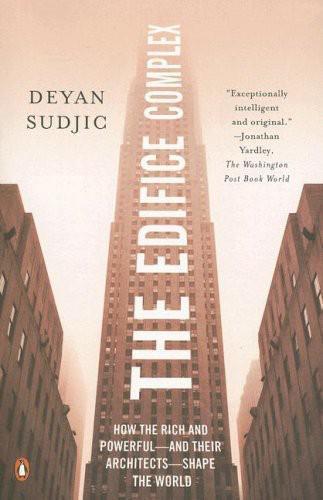
The Edifice Complex: How the Rich and Powerful--And Their Architects--Shape the World
by
Deyan Sudjic
Published 27 Nov 2006
The coffee table with its speakerphone on a pull-out flap, close to the rocking chair with the footstool on the sludge-green carpet, was the seat of power in his day. Kennedy’s Oval Office on the other hand, with its ship models and yachting mementos, had a wider role when it became a soothing TV studio for the duration of the Cuban missile crisis. What his audience would not have seen was his secretary Evelyn Lincoln’s daybook open for the first week in October 1962. It records an insane schedule of appointments allocated in three-minute segments starting at 5.19 a.m. George Bundy was in twice on this particular morning, the first time at 6.18 a.m. for seven minutes.
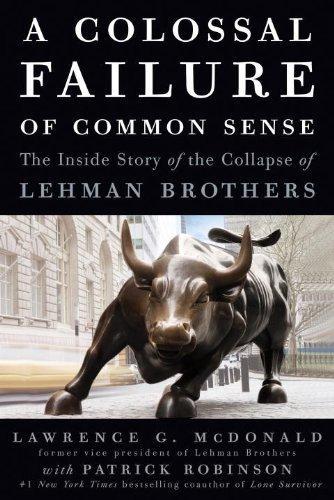
A Colossal Failure of Common Sense: The Inside Story of the Collapse of Lehman Brothers
by
Lawrence G. Mcdonald
and
Patrick Robinson
Published 21 Jul 2009
At last people began to tune in, to hear at last the gospel according to Saint Mike, once a mere cry in the wilderness but now echoing throughout the building. He was trying to get across one message: “We’re in DEFCON 1!” That’s the highest form of alert in the U.S. military: maximum readiness to repel a foreign attack on United States territory. For comparison’s sake, the government sounded DEFCON 3 on September 11, 2001, and DEFCON 2 for JFK’s Cuban missile crisis in 1962. That was the extent of Mike Gelband’s concern. All through the following weeks, amidst masses of ruffled feathers, the Lehman traders tried to obey orders, tried to sell whatever they could. But slowly it became apparent that the task was too great. In the end Bart, Alex, and Mike were beginning to accept that the only way out might be an outright sale of the entire firm to a bigger bank.
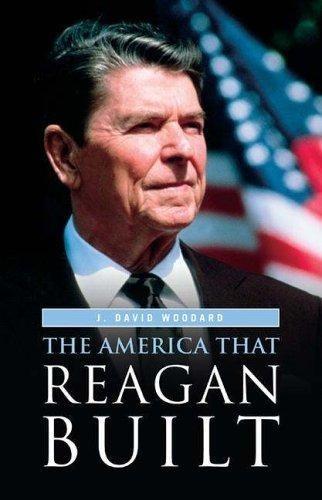
The America That Reagan Built
by
J. David Woodard
Published 15 Mar 2006
The Cold War saw the birth of the CIA, and intrigue and subterfuge became a staple of government service in the city. Federal employees in social situations learned to say they worked ‘‘for the government’’ and left it at that. Informal contacts were vital. In 1962, the Soviet response to John F. Kennedy’s move in 40 THE AMERICA THAT REAGAN BUILT the Cuban missile crisis came from a discussion at a diplomatic party, where ABC State Department correspondent John Scali relayed a message from a KGB embassy official that broke the deadlock.28 Washington Post reporter Bob Woodward had late night meetings with his contact ‘‘Deep Throat,’’ named for a pornographic movie at the time, in a parking garage.
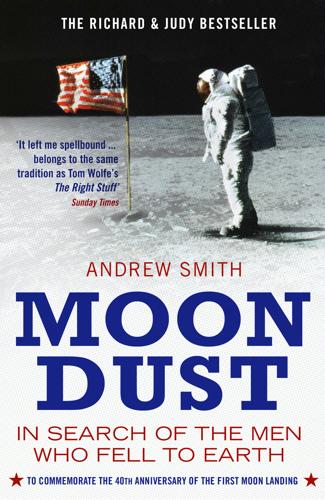
Moondust: In Search of the Men Who Fell to Earth
by
Andrew Smith
Published 3 Apr 2006
It has been conjectured that he was rather hoping someone would talk him out of it, but no one did. The “debate” in the Senate lasted an hour, with only five of the ninety-six senators even feeling a need to speak. The next year, in 1962, Kennedy and Khrushchev danced a samba with the security of the planet through the Cuban Missile Crisis; then a year later came Dallas and the grassy knoll and JFK was just one more piece of Sixties lore. Now this tangled mess of dream and expediency was going to the Moon, and I’m dwelling on it at 25,000 feet on a 737 to Reno for a reason – because two other icons of that era did significant things in 1962.
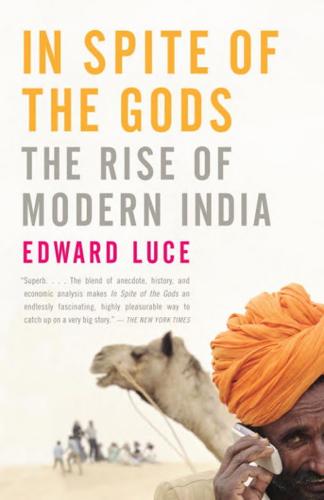
In Spite of the Gods: The Rise of Modern India
by
Edward Luce
Published 23 Aug 2006
I have yet to come across an example of a Western strategist arguing that south Asians are inherently less capable than others of managing their nuclear arsenals responsibly. But international observers have real concerns that New Delhi and Islamabad continue to be reluctant to put in place the kind of essential safety measures that became routine between the United States and the USSR after the hair-raising Cuban missile crisis of 1962. “We used to have a joke that the nuclear establishments of the United States and the USSR could swap places for a few weeks and everything would proceed as smoothly as before,” said Robert Blackwill. “You could not say that about India and Pakistan.”25 India’s sensitivity to what is sees as the underlying racism of Western military strategists has also given rise to some counterintuitive diplomatic positions.

Traders, Guns & Money: Knowns and Unknowns in the Dazzling World of Derivatives
by
Satyajit Das
Published 15 Nov 2006
The DEFCON scale goes something like this: DEFCON 5 Normal peacetime readiness. DEFCON 4 Normal, increased intelligence and strengthened security measures. DEFCON 3 Increase in force readiness above normal readiness. DEFCON 2 Further increase in force readiness, but less than maximum readiness. DEFCON 1 Maximum force readiness. During the Cuban Missile Crisis, the US Strategic Air Command (nuclear bombers) was placed on DEFCON 2 for the first time in history. What DEFCON had to do with risk was not clear, nevertheless, we lurched from DEFCON 5 to 1 and back again. My DEFCON risk scale would be something like this: DEFCON 5 DEFCON 4 DEFCON 3 DEFCON 2 Go to lunch.
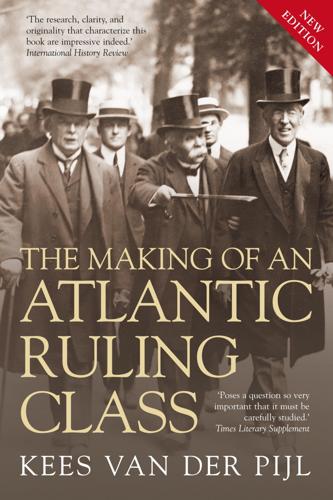
The Making of an Atlantic Ruling Class
by
Kees Van der Pijl
Published 2 Jun 2014
Ten days after McNamara had outlined the doctrine of graduated deterrence at a NATO meeting in Athens in May 1962, the French President gave a press conference in which he announced the formation of an independent Force de Frappe. Two days later, Kennedy declared that independent deterrents were undesirable. That autumn, an American offer to supply Polaris-equipped submarines was withdrawn. Following the Cuban missile crisis, de Gaulle publicly complained about not having been consulted by the American leadership. From there, the crisis in US-French relations spilled over to the apparently non-military problem of British admission to the EEC, of which in French eyes, after the reintegration of the British nuclear force in NATO, only the economic disadvantages remained.101 In a sense, Kennedy’s Partnership strategy was effectively thwarted by the French decision to veto British EEC membership the following January.
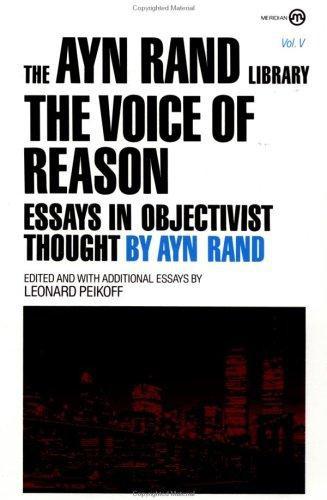
The Voice of Reason: Essays in Objectivist Thought
by
Ayn Rand
,
Leonard Peikoff
and
Peter Schwartz
Published 1 Jan 1989
The next class, for thirteen-year-olds, consisted of a mock Washington hearing on the question of whether there should be an import tax on Japanese cars; students played senators, Japanese lobbyists, Lee Iacocca, and so on, and did it quite well; the teacher sat silently, observing. I never learned the name of this course or of the seal-hunting one, but finally I was to observe a meeting described to me as a class in English. At last, I thought, an academic subject. But no. The book being covered was Robert Kennedy’s Thirteen Days, a memoir of the Cuban missile crisis of 1962; a typical topic for discussion was whether a surgical air strike against Cuba would have been better policy than a blockade. The school, undoubtedly, would defend these classes as exercises in ethnicity or democracy or relevance, but, whatever the defense, the fact is that all these classes were utterly concrete-bound.

Apocalypse Never: Why Environmental Alarmism Hurts Us All
by
Michael Shellenberger
Published 28 Jun 2020
See also Virunga National Park author’s visit, 6–9, 16–19, 281–82 bushmeat, 141–42 economic development in, 16–19, 70–72 habitat conservation, 68–69, 73–74 hydroelectric power, 70–71, 83–84, 245–46, 276 need for fossil fuels, 81–83 palm oil, 112, 276 wood fuel use, 6–9, 68–70 Conservation Refugees (Dowie), 74 Consumer boycotts, 28–29, 87–88 Consumer Watchdog, 215 Convention on International Trade in Endangered Species of Wild Fauna and Flora (CITES), 62 Conway, Erik, 250–51, 252 Cook, James, 36 Cooper, Bradley, 222 Cornell University, 43–44, 74 Corn ethanol, 61, 193 Coronavirus, 25 Corporate Crime Reporter, 208–9 Costa Rica, 28–29, 45, 52 Council on Foreign Relations, 157 Crockford, Susan, 253 Cronkite, Walter, 108 Crop-raiding, 17–18, 74–75, 78, 79 Cuban Missile Crisis, 172 Cumberbatch, Benedict, ix Curie, Marie, 241 Curie, Paul, 241 Current TV, 214 Cybernetics, 262–63 Da Silva, Benedita, 29 Da Silva, Luiz Inácio “Lula,” 29, 42 Da Vinci, Leonardo, 123 Davis-Besse Nuclear Power Station, 166 Day After, The (film), 270 Death symbolism, 267–69, 278–79 Deepwater Horizon oil spill, 150 Deerfield Wind Project, 198 Deforestation, 32–33, 86 of Amazon rainforest, 28–32, 34, 35, 38–42, 303n fire and food, 36–38 DeGeneres, Ellen, 223 Delhi, India, 64, 237 Democratic Republic of the Congo.

Underland: A Deep Time Journey
by
Robert Macfarlane
Published 1 May 2019
All of these paintings have been taken under armed guard from the National Gallery in London and transported to this cored-out Welsh mountain, to be placed in these brick chambers under 300 solid feet of 400-million-year-old slate – safe, surely, here of all places, from the bombs of the Luftwaffe. Nuclear fears crackle the world’s air. The Cuban Missile Crisis is only weeks past. Flashbulbs pop and crowds cheer as a man enters a limestone rift near Nidderdale in Yorkshire (Nidder – a variant of ‘nether’; to ‘nidder’ or ‘nether’ is to ‘keep down’, to ‘press under’). The rift opens into a complex cave system, its full extent unexplored. The man wishes to study the effects of chronic darkness and the absence of visible time upon body and mind.
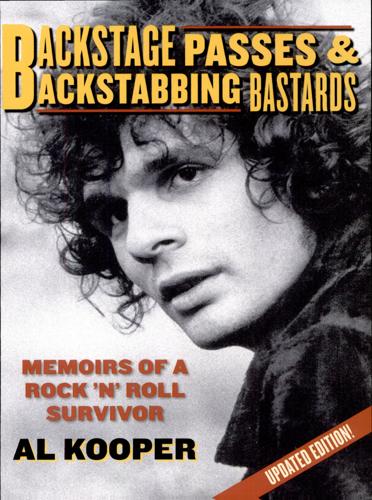
Backstage Passes & Backstabbing Bastards: Memoirs of a Rock 'N' Roll Survivor
by
Al Kooper
Published 21 Apr 1998
But my abandonment of Judy during her pregnancy was perceived by her as an act of selfishness on my part for which I may never have been forgiven. Everyone was a serious pothead by this time except Danny. In 1965, I’d had a Thanksgiving party at my apartment in Queens and Danny got loaded with us and we loved it. He confessed that the only other time he’d gotten high was during the Cuban Missile Crisis, because he thought we all were gonna die and he wanted a headstart to heaven. But I was high all the time. Before I went to sleep I’d stash a joint under my pillow so I could get loaded before my feet touched the ground in the morning (which they seldom did). And, of course, we were influenced by the sensibility of the Beatles in A Hard Day’s Night.

Predator: The Secret Origins of the Drone Revolution
by
Richard Whittle
Published 15 Sep 2014
The project was blocked a few weeks later, just as flight tests were being conducted, by Pentagon bureaucrats with other priorities and Air Force leaders more eager to spend their reconnaissance money on a sexy new manned spy plane called the SR-71. The SR-71 was going to fly at Mach 3—three times the speed of sound—and at altitudes no Soviet missiles could reach. The Air Force got interested in Ryan’s reconnaissance drone again, though, when, on October 27, 1962, one day before the end of what became known as the Cuban Missile Crisis, another U-2 was shot down over Cuba and its pilot killed. Two years later, the United States sent troops to South Vietnam to fight Communist insurgents, and over the next eight years the Air Force modified and deployed more than twenty derivatives of Ryan’s jet-powered target drones for photo reconnaissance.
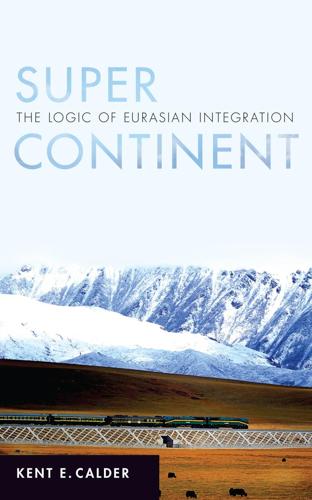
Super Continent: The Logic of Eurasian Integration
by
Kent E. Calder
Published 28 Apr 2019
Bibliography Aggarwal, Vinod K., and Charles E. Morrison, eds. Asia-Pacific Crossroads: Regime Creation and the Future of APEC. New York: St. Martin’s Press, 1998. Acharya, Amitav. The End of American World Order. Malden, MA: Polity, 2014. Allison, Graham T., and Phillip Zelikow. Essence of Decision: Explaining the Cuban Missile Crisis. 2nd ed. New York: Longman, 1999. Asano, Risaburō 浅野利三郎. Nichi-doku-so Tairiku Burokku Ron: So no Chiseigaku-teki Kōsatsu 日独ソ大陸ブロック論 : その地政学的考察 [Theory on the Japanese- German-Soviet Continental Bloc: A Geopolitical Perspective]. Tokyo: Tōkaidō, 1941. Asian Development Bank. Meeting Asia’s Infrastructure Needs: Highlights.

Norco '80: The True Story of the Most Spectacular Bank Robbery in American History
by
Peter Houlahan
Published 10 Jun 2019
After all, once you’ve morally justified using the first nuclear weapon, is it really going to be all that hard to justify defending your country with more and bigger ones? Both George Smith and Christopher Harven were part of the first generation to live their entire lives under the threat of nuclear war. They had spent their early childhood overhearing adults chattering nervously about Sputnik, the Cuban Missile Crisis, and the nuclear arms race. Their school days from kindergarten through twelfth grade had been punctuated by monthly “duck and cover” drills. Both Smith and Harven went straight from high school into the military. Smith was sent to Germany in the shadow of the Iron Curtain for two years as an artilleryman trained in the art of lofting battlefield nukes into enemy forces.

First Time Ever: A Memoir
by
Peggy Seeger
Published 2 Oct 2017
* Nuclear bombs had appeared in my life on 7 August 1945, when I saw giant headlines on the front page of Charlie’s Washington Post. The ensuing photographs lit a fire in my child’s heart. They have never left my picture gallery. Despite the fact that the subject went to the inside pages of the papers during the dragged-out Cold War, the embers were fed continually. The Bikini tests. The Cuban Missile Crisis. Peter Watkins’s The War Game, which we saw in Edinburgh, coming out of the cinema astounded that the world had been put back together again. I wrote ‘Four-Minute Warning’, referencing the UK public alert system giving us four minutes’ warning between confirmation of a nuclear attack and the landing of bombs on UK soil.

A First-Class Catastrophe: The Road to Black Monday, the Worst Day in Wall Street History
by
Diana B. Henriques
Published 18 Sep 2017
After the crash, he experienced what he later regarded as “clinical depression.” One account reported that “he could not rid himself of the fear that the weakening of the American markets could tempt the Soviet Union to [pose] a challenge to the United States akin to the one that had provoked the Cuban missile crisis, and nuclear war might ensue.” He quickly shook off the worst of his irrational alarms, but there was no disputing how traumatic Black Monday had been for him, and for his partners. Beyond the attacks in the media, he and Leland were facing friendly fire, too, as some prominent academics indicted portfolio insurance as a menace.
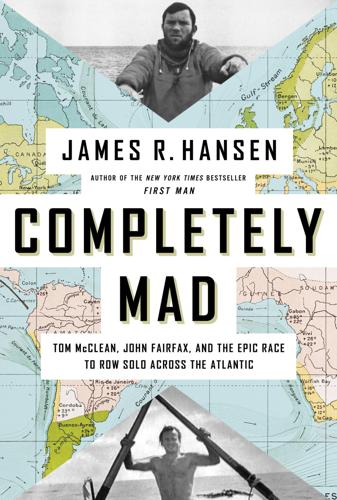
Completely Mad: Tom McClean, John Fairfax, and the Epic of the Race to Row Solo Across the Atlantic
by
James R. Hansen
Published 4 Jul 2023
Today, in 2023, his fear of Cuba may seem overblown. But in the 1960s, relations between Castro’s communist, Soviet-supported Cuba and the United States, Britain, and their allies were extremely tense: complete trade embargoes, cutting off all diplomatic relations, the Bay of Pigs invasion, the Cuban missile crisis. Plus, Fairfax had some experience with Cubans back during his days in the Caribbean as a smuggler. “I sure had no inclination to present myself as target practice for some trigger-happy zealot,” John was thinking. “I might be wrong, but it had been my sad experience that when my South American friends turned Communist, their personalities suffered from loss of even the most elementary sense of humor.”
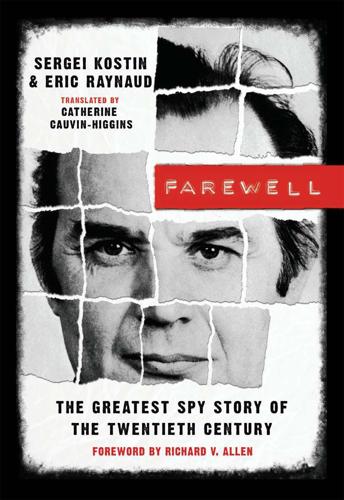
Farewell
by
Sergei Kostin
and
Eric Raynaud
Published 14 Apr 2011
With Republicans coming back to power, men from the Nixon and Ford administrations returned to the White House. Although many of Reagan’s advisers had begun their careers under Nixon, it soon became apparent that the two presidents had a very different approach to USSR relations. Since the big scare of the Cuban Missile Crisis in 1962, East-West relations had eased up, transitioning to the period of détente at the end of the sixties. To preserve world peace, each bloc agreed to renounce crusades, letting adversaries impose hegemony in their zones of influence. Against this background, President Nixon, and then President Ford, embarked on a subtle strategy with the USSR, using a variety of peaceful coexistence policies (initially a Soviet theory) that could alternate from active to passive according to circumstances.

The Cobweb
by
Neal Stephenson
and
J. Frederick George
Published 31 May 2005
You will probably not get another promotion, and you will spend the rest of your life doing soybean studies. But you are in a situation that comes to few of us. You can, honest to God, make a difference.” “Why . . .” “Yeah, I know, why if it is so dangerous doesn’t the system take care of the problem? Don’t forget, during the Cuban missile crisis John Scali of the American Broadcasting Company, meeting a Soviet diplomat at a restaurant, probably saved the world from nuclear destruction. This is not quite so dramatic. But it is important. And the system simply can’t handle it. We have to do everything back-channel, both because of the peculiar chain of command and because we think there’s a mole somewhere in the system.
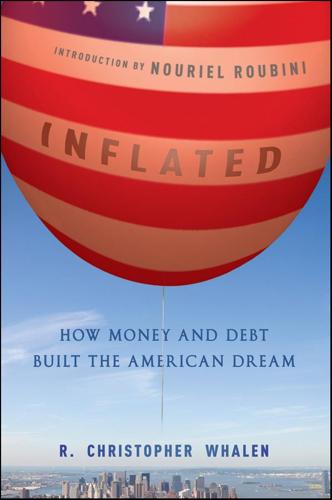
Inflated: How Money and Debt Built the American Dream
by
R. Christopher Whalen
Published 7 Dec 2010
But long before that, Americans came to know and understand that their lives were at risk because of the background threat of nuclear war. The buildup of United States and Soviet military forces and strategic systems capable of delivering nuclear warheads was front-page news in the United States and around the world for decades. Events such as the Korean War in the 1950s and the Cuban missile crisis in 1962 brought the reality of war home to the entire world. In American politics, the means of response to the “Soviet threat” was a key point of debate for decades. For the author, the menacing image of the Soviet Union was a very personal one. When the Whalen family moved from New York to Washington in 1966, my father Richard Whalen was working as a speech writer for presidential candidate Richard Nixon.
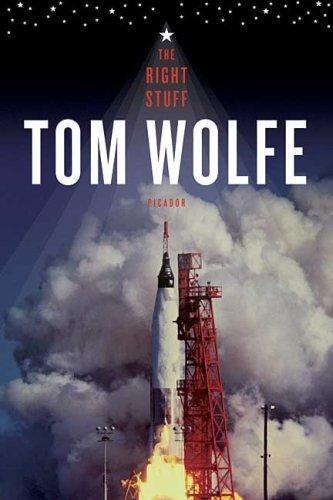
The Right Stuff
by
Tom Wolfe
Published 1 Jan 1979
Wally's flight was still the shining example of what an operational space flight should be. It had taken Wally's performance to show that Cooper's twenty-two-orbit flight would be possible. Wally couldn't have been in better shape in the program. He had been as efficient and as cool as they made them. Wally had come back from his flight and landed in the middle of the Cuban missile crisis. For a week Kennedy and Khrushchev had their showdown, which appeared to bring the world to the brink of a nuclear war, but then Khrushchev backed off and withdrew all Soviet missiles from Cuba. After that things cooled down considerably. Like everyone else, the boys noticed that negotiations for a nuclear test ban and for "cooperation in space," whatever that might prove to be, were in the news a lot.
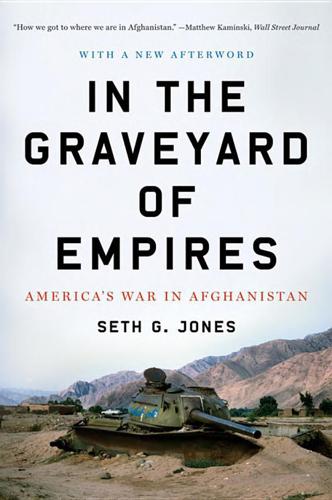
In the Graveyard of Empires: America's War in Afghanistan
by
Seth G. Jones
Published 12 Apr 2009
Wohlstetter influenced the design and deployment of U.S. strategic forces through his research, developed the “second-strike” theory for deterring nuclear war, and originated “fail safe” and other methods for reducing the probability of accidental nuclear war.2 Wohlstetter served as a senior policy analyst at the RAND Corporation, as an adviser to President John F. Kennedy during the Cuban missile crisis, and, beginning in 1964, as a professor at the University of Chicago. He had a significant influence on Khalilzad and helped him make contacts in Washington. After leaving Chicago in 1979, Khalilzad moved to New York to become a professor at Columbia University’s School of International and Public Affairs.3 The Brutal-Hearted Mountain Tribes During his studies with Wohlstetter, Khalilzad continued to monitor events in Afghanistan and, with his academic training completed, he began writing articles on the invasion using a pseudonym to protect members of his family who were still there.

Exploding the Phone: The Untold Story of the Teenagers and Outlaws Who Hacked Ma Bell
by
Phil Lapsley
Published 5 Feb 2013
Internally, AUTOVON used multifrequency signaling, just as the civilian network did. You could even call into the regular telephone system from AUTOVON, though you weren’t supposed to be able to go the other way. However, AUTOVON had some features that made admirals and generals, network engineers, and phone phreaks salivate. Put into operation just a year after the Cuban missile crisis, AUTOVON was a child of the cold war, a telephone network designed to withstand a nuclear attack. The civilian telephone system was built on Bell’s hierarchical network concept, one in which lower-level switching centers forwarded calls to higher-level ones. The higher-level switches, the brainy ones like 4A crossbars, had lots of trunks to other cities.
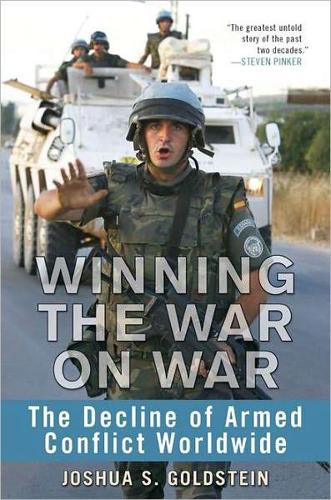
Winning the War on War: The Decline of Armed Conflict Worldwide
by
Joshua S. Goldstein
Published 15 Sep 2011
A “missile gap” motivated Washington to accelerate deployment of its own nuclear missiles, even though the “gap” later turned out to be nonexistent. Both sides armed up with thousands of missiles, and these hung over our heads like the proverbial Sword of Damocles dangling from a thread—a metaphor used by President Kennedy in addressing the UN in 1961. In 1962, the Cuban Missile Crisis brought the superpowers close to nuclear war, closer than they realized at the time. American ships once harassed a Soviet submarine with small depth charges, not knowing that it was armed with nuclear torpedoes, which the captain nearly used. The good part of the crisis is that it scared the hell out of leaders on both sides and led to the more scripted rivalries that characterized the rest of the Cold War years.
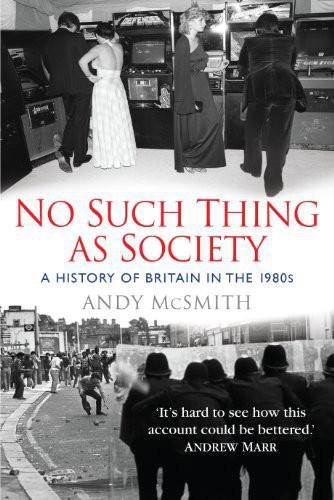
No Such Thing as Society
by
Andy McSmith
Published 19 Nov 2010
Wisely, the booklet refrained from recommending a diet of radioactive frog. The Campaign for Nuclear Disarmament (CND) had existed since 1957, when it was founded on a wave of popular support after the Suez crisis and the Soviet invasion of Hungary had made the threat of nuclear war seem real. President Kennedy’s success in handling the 1962 Cuban missile crisis and the disarmament talks that followed took the urgency out of the problem, and for the best part of two decades CND limped along, half-forgotten but still there, run by volunteers from a cramped Georgian building in Bloomsbury. Suddenly, in February 1980, it was attracting so many recruits that it could afford a full-time general secretary, a Catholic priest named Bruce Kent.
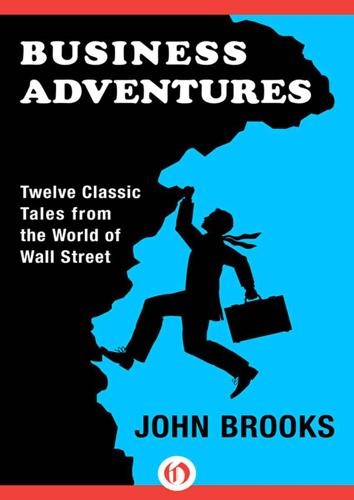
Business Adventures: Twelve Classic Tales From the World of Wall Street
by
John Brooks
Published 6 Jul 2014
Provided by its members—the United States, Britain, Italy, the Netherlands, Switzerland, West Germany, Belgium, and, originally, France—with gold ingots in quantities that might dazzle a Croesus (fifty-nine per cent of the total coming from the United States), the pool was intended to quell money panics by supplying gold to non-governmental buyers in any quantity demanded, at a price effectively the same as the Federal Reserve’s, and thereby to protect the stability of the dollar and the system. And that is what the pool did on Wednesday. Thursday, though, was much worse, with the gold-buying frenzy in both Paris and London breaking even the records set during the Cuban missile crisis of 1962, and many people, high British and American officials among them, became convinced of something they had suspected from the first—that the gold rush was part of a plot by General de Gaulle and France to humble first the pound and now the dollar. The evidence, to be sure, was all circumstantial, but it was persuasive.
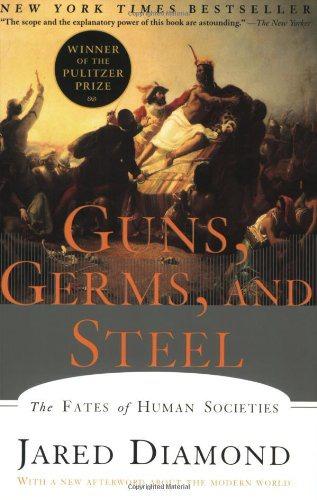
Guns, germs, and steel: the fates of human societies
by
Jared M. Diamond
Published 15 Jul 2005
Early states had a hereditary leader with a title equivalent to king, like a super paramount chief and exercising an even greater monopoly of infor- mation, decision making, and power. Even in democracies today, crucial knowledge is available to only a few individuals, who control the flow of information to the rest of the government and consequently control deci- sions. For instance, in the Cuban Missile Crisis of 1963, information and discussions that determined whether nuclear war would engulf half a bil- lion people were initially confined by President Kennedy to a ten-member executive committee of the National Security Council that he himself appointed; then he limited final decisions to a four-member group con- sisting of himself and three of his cabinet ministers.
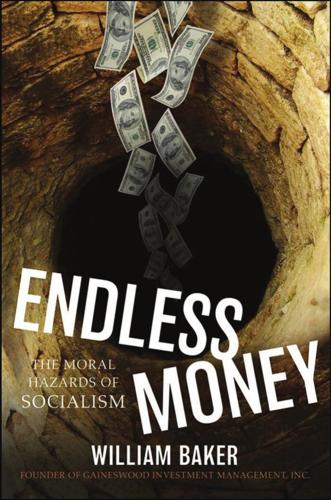
Endless Money: The Moral Hazards of Socialism
by
William Baker
and
Addison Wiggin
Published 2 Nov 2009
Many have been mentioned already. Russia’s intrusion into Georgia probably presages the fall of other former satellite states should Russia regain its footing, and the Ukraine bears watching. It could also set up other confrontations, such as over Poland regarding its new missile pact, or even another Cuban missile crisis. Venezuala’s dictator, Hugo Chavez, has bought $6 billion of sophisticated weapons from Russia and China and has formed links to Hizbollah and Hamas, so he could be working behind the scenes to promote a crisis. In a bid for Eastern European influence, Germany might ally with Russia concerning certain territorial spheres.

America Right or Wrong: An Anatomy of American Nationalism
by
Anatol Lieven
Published 3 May 2010
Even in the last decades of the Cold War, under the roiling waves of public anxiety, continually whipped into spray by the winds of political propaganda, the feelings of the security establishment were often actually relatively complacent. As the latest National Security Strategy admits, "In the Cold War, and especially following the Cuban Missile Crisis, we faced a generally status-quo, risk-averse adversary. Deterrence was an effective defense."98 As Chalmers Johnson remarks bitterly, it is a pity we were not told this by U.S. official analysts while the Cold War was still on.99 Indeed, George Kennan's famous telegram and essay of 1947-48, which formulated the intellectual basis for America's Cold War stance against Soviet expansionism, also stated clearly that a direct military challenge to the West was unlikely.100 Throughout the Cold War, however, powerful voices in the United States alleged not only that the Soviet Union posed a serious threat to the West (which it did), but also that ideological fanaticism and contempt for the lives of their own subjects meant that the Soviet leaders were not fully rational, that they might well launch a reckless war even at the probable cost of their own destruction.

The Problem of Political Authority: An Examination of the Right to Coerce and the Duty to Obey
by
Michael Huemer
Published 29 Oct 2012
The United States and the Soviet Union managed to avoid such a war for the crucial four and a half decades from the end of World War II until the collapse of the Soviet Union. One might regard this as a testament to the efficacy of deterrence and the capacity of national leaders to act rationally when the stakes were high enough. But again, we have little cause for complacency. The U.S. and the Soviet Union came closer to war than many realize. During the Cuban Missile Crisis of 1962, President Kennedy thought that the odds of a nuclear war were about one in three.78 At one point during the crisis, American naval ships were dropping depth charges on a Soviet submarine in an effort to force it to surface. Unknown to the Americans, the sub was armed with a nuclear torpedo.

Connectography: Mapping the Future of Global Civilization
by
Parag Khanna
Published 18 Apr 2016
It is no doubt unwise to argue that World War III is a passé risk. However, as the French scholar Raymond Aron argued, nuclear deterrence and the benefits of hindsight are crucial in warding against the uncontrolled escalations of the twentieth century or even harrowing episodes such as the Cuban missile crisis. Furthermore, China’s neo-mercantilism today is quite different from the zero-sum European colonial mercantilism of centuries ago: It is the pursuit of catch-up modernization rather than global hegemony. China seeks foreign raw materials and technology, not foreign territory. In our haste to make analogies between today’s global dynamics and pre–World War I Europe, most observers have missed the enormous differences.
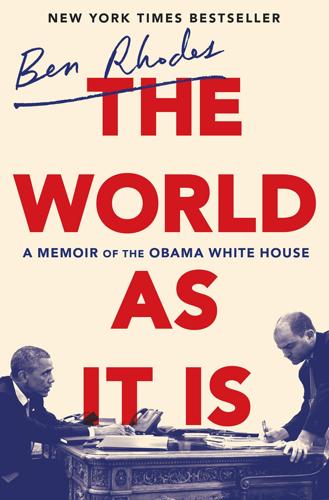
The World as It Is: A Memoir of the Obama White House
by
Ben Rhodes
Published 4 Jun 2018
“Humans,” he said, “just developed a slight advantage in terms of language and socialization. That allowed them to develop the capacity to overrun the Neanderthals, who lived in relatively small groups.” “Like the opening scene in 2001,” I said. Everyone laughed. I looked at Caroline, whose father was president during the Cuban Missile Crisis, the time we came the closest to nuclear destruction, and wondered what she was thinking. It was quiet for a moment. Then Obama said, “It’s kind of eerie, flying into Hiroshima.” Down below, fishermen worked with nets in the water. “What are they doing down there, Caroline?” “Oysters,” she said.
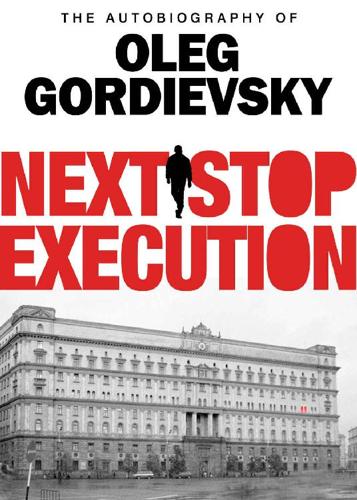
Next Stop Execution: The Autobiography of Oleg Gordievsky
by
Oleg Gordievsky
Published 13 Apr 2015
The KGB had developed its own form of unarmed combat, which we practised during one period every week; but although I am fairly well co-ordinated — as I discovered later when I started to play badminton — I could not master all the holds. It was a measure of our absorption that I missed the Cuban missile crisis, which brought the world to the brink of nuclear war in October 1962. One of our teachers’ aims was to make us concentrate, and this shows how successful they were. Khrushchev’s confrontation with President Kennedy was barely reported in the Moscow papers, and in the school we had no means of hearing about it.
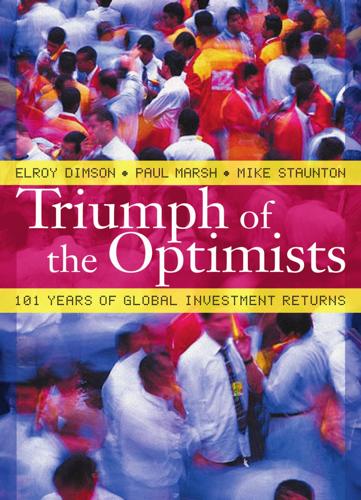
Triumph of the Optimists: 101 Years of Global Investment Returns
by
Elroy Dimson
,
Paul Marsh
and
Mike Staunton
Published 3 Feb 2002
Who but the most rampant optimist would then have dreamt that over the next half-century, the annualized real return on equities would be 9 percent, with most other countries enjoying similarly high returns? Yet this is what happened. This was a period when most things turned out better than expected. There was no third world war, the Cuban Missile Crisis was defused, the Berlin Wall fell, and the Cold War ended. There was unprecedented growth in productivity and efficiency, improvements in management and corporate governance, and extensive technological change. Corporate cash flows grew faster than expected, and in all likelihood the equity risk premium fell, further boosting stock prices.
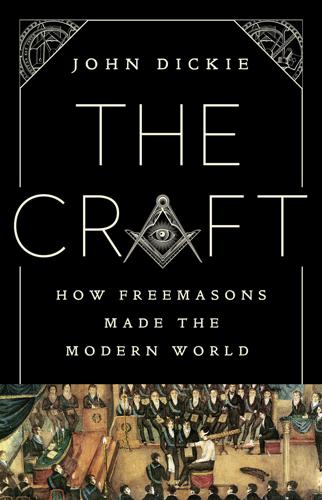
The Craft: How Freemasons Made the Modern World
by
John Dickie
Published 3 Aug 2020
Yet we cannot deny that such a message was in tune with some of America’s deepest hopes and fears. Its author was Grand Master Harry Ostrov, an eminent lawyer and the first Jew to rise to the summit of Masonry in the Empire State. He came up with the plan for a Masonic Brotherhood Center shortly after the Cuban missile crisis had taken the West to the very brink of nuclear war in October 1962. As he explained to his Brethren at the time, ‘Unless the world accepts this challenge, and embraces brotherhood as part of its living, civilization as we know it will not survive.’ The Center brochure gave a Cold War edge to the Masonic love of liberty: ‘Our Grand Lodges and Lodges are found all over the world outside the iron and bamboo curtains.’
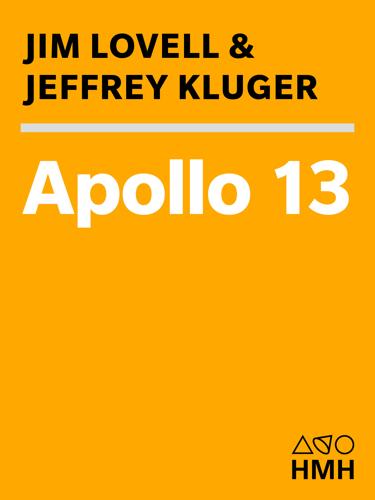
Apollo 13
by
Jim Lovell
and
Jeffrey Kluger
Published 14 Jun 2000
(Jane), 108, 110, 111, 112, 134, 192, 229 Consumable(s), 91 time as most important, 210 See also LEM (“Aquarius”) as “lifeboat”; Oxygen supply (Apollo 13); Power; Water supply (Apollo 13) CONTROL (guidance officer), 122, 127, 141, 149, 153 and burn, 142, 152, 160, 163, 164–65, 206, 259, 260 Cooper, L. Gordon, Jr., 10, 22, 24, 26, 181, 182 Correale, James, 252 Cortright, Edgar, and Cortright Commission, 343–44, 346, 347, 349, 351 Cronkite, Walter, 106–8, 272, 273, 277 Cryo stir, 89–91, 93–94, 350, 351 Cuban missile crisis, 26 Cunningham, R. Walter (Walt), 13, 28, 32, 36, 347 D Davis, Bruce, 17, 18 Dean, Patrick, 10 Defense Department, U.S., 176, 177, 206 Deiterich, Chuck, 144–45, 150–51, 162, 165, 209, 212, 258–60 passim, 280 alignment check, 220–27 passim reentry, 302–5 deLavaulx Medal, 337 Delta V objectives, 48, 162, 165, 212 Dick Cavett Show, The, 4, 5, 6, 194 Direct abort 132, 143.
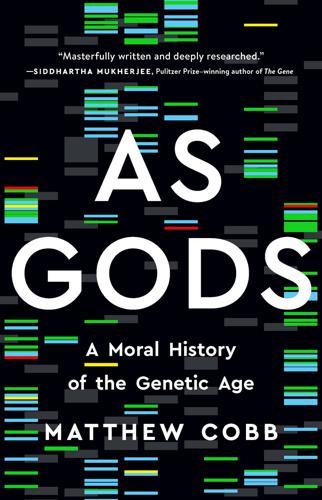
As Gods: A Moral History of the Genetic Age
by
Matthew Cobb
Published 15 Nov 2022
Kennedy, the old soldier broadcast to the nation, alerting the American people to the growing influence of the military-industrial complex, criticising the links between science and government, and predicting that ‘public policy could itself become the captive of a scientific-technological elite’. Eisenhower’s gnomic warning – soon amplified by fears of nuclear annihilation during the Cuban Missile Crisis of October 1962 – connected to a slow growth in pessimism about science that was taking place across Western societies.12 These doubts and suspicions were principally driven by the menace of nuclear weapons, and focused not only on the immediate threat of thermonuclear annihilation, but also on the danger of radioactive fallout from nuclear tests that was increasingly recognised as a potential trigger for a possible epidemic of cancers and mutations.
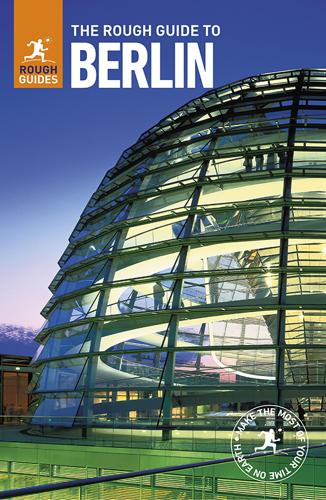
The Rough Guide to Berlin
by
Rough Guides
Rathaus Schöneberg John-F-Kennedy-Platz • Exhibition Daily except Fri 10am–6pm • Free Tower April–Sept daily 10am–4pm • Free • Rathaus Schöneberg Schöneberg’s most famous attraction is the Rathaus Schöneberg. Built just before World War I, the city hall became the seat of the West Berlin parliament and senate after the last war, and it was outside here in 1963 that John F. Kennedy made his celebrated speech on the Cold War, just a few months after the Cuban Missile Crisis: There are many people in the world who really don’t understand, or say they don’t, what is the great issue between the free world and the Communist world. Let them come to Berlin. There are some who say that Communism is the wave of the future. Let them come to Berlin. And there are some who say in Europe and elsewhere we can work with the Communists.
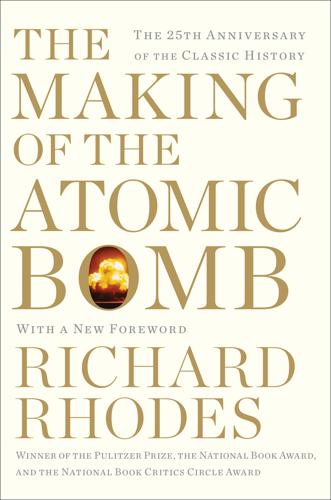
The Making of the Atomic Bomb
by
Richard Rhodes
Published 17 Sep 2012
The Soviets were at war in Afghanistan and appeared to President Jimmy Carter to be thrusting down toward the Arabian Sea and the oilrich Middle East—something Carter swore the United States would not allow even if it meant nuclear war. The Soviets were determined to enlarge their nuclear arsenal to match ours—a decision they made in the aftermath of the Cuban Missile Crisis of 1962, when President John F. Kennedy was able to back them down by threatening nuclear war—and the closer they came to parity the more belligerently the American right howled for blood. Ronald Reagan, elected president in 1980, proceeded to more than double the U.S. defense budget while coining such provocative characterizations of the other nuclear superpower as “the evil empire” and “the focus of evil in the modern world.”
…
“Every great and deep difficulty bears within itself its own solution,” Niels Bohr had counseled the scientists at Los Alamos whose consciences he found stirred when he arrived there in 1943. Nuclear weapons, encapsulating potential human violence at its most indiscriminate extreme, paradoxically demonstrate the reductio ad absurdum of man-made death. The years since 1945 have been a dangerous but unavoidable learning experience. On many more occasions than the Cuban Missile Crisis and the near-debacle of Able Archer 83, I’ve been told, we almost lost our way. We will confront such risk again, and may we be so lucky the next time, and the next after that. Or perhaps the disaster will break in some other hemisphere and the millions who will die will fall under another flag.
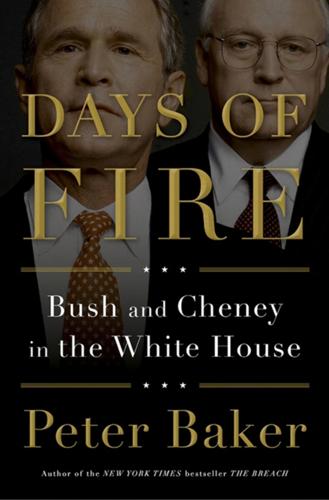
Days of Fire: Bush and Cheney in the White House
by
Peter Baker
Published 21 Oct 2013
So Bush agreed to deliver his prime-time address in front of an audience at a Cincinnati museum, picking a setting metaphorically in the middle of the country. Much debate went into crafting the speech, both in substance and in style. Adam Levine, a press aide, recognized that it would be delivered almost exactly on the fortieth anniversary of the Cuban missile crisis and suggested harking back to the line John F. Kennedy drew against the threats of his era. One of the speechwriters protested that Kennedy was a Democrat. “Yeah, that’s right,” agreed Karl Rove. “What about that?” “Yeah,” Levine shot back, “the worst you are going to get is Ted Sorensen will write a New York Times op-ed that says exactly why everything you have said President Kennedy would have disagreed with.”
…
Connaughton, Jim, 6.1, 24.1, 34.1, 34.2 Conquerors, The (Beschloss) Conservative Political Action Conference Constitution, U.S., 1.1, 4.1, 3.1, 3.2, 3.3, 4.2, 4.3, 5.1, 5.2, 9.1, 10.1, 11.1, 16.1, 17.1, 17.2, 17.3, 17.4, 18.1, 18.2, 21.1, 22.1, 23.1, 23.2, 23.3, 24.1, 24.2, 26.1, 27.1, 32.1, 34.1, 34.2, 37.1, nts.1n Conway, James, 17.1, 17.2 Coolidge, Calvin, n Cooper, Matthew, 15.1, 16.1, 22.1 Corallo, Mark Corker, Bob Corpus Christi Caller-Times Cost of Living Council, 1.1, 4.1 Council on Environmental Quality (CEQ), 5.1, 6.1 Counterterrorism Security Group (CSG) Craig, Mark Cramer, Richard Ben, 1.1, 2.1 Crist, Charlie Crocker, Ryan, 32.1, 32.2, 32.3, 34.1, 34.2, 36.1 Crossfire Crouch, J. D., 25.1, 26.1, 28.1, 28.2, 29.1, 29.2, 30.1, 30.2, 30.3, 30.4, 30.5 Cruikshank, Tom cruise missiles, 5.1, 6.1, 8.1, 14.1, 14.2, 14.3 Crumpton, Hank Cuban missile crisis (1962), 12.1, 13.1 Curveball (Iraqi defector) cyanide, 11.1, 14.1 Dagan, Meir Daley, Richard Dallek, Robert Danforth, John, 3.1, 3.2, 4.1 Danforth, Sally Daniels, Mitch, 11.1, 11.2, 12.1, 13.1, 23.1 Daniels, Sandra Kay Darfur, 24.1, 27.1 Dark Winter exercise Daschle, Linda Daschle, Tom, 5.1, 6.1, 8.1, 8.2, 8.3, 8.4, 8.5, 10.1, 10.2, 10.3 12.1, 12.2, 12.3, 12.4 Davis, Lanny Davis, Michele, 21.1, 26.1, 35.1 Davis, Tom Dawes, Charles, n Dayton Accords (1995) Dean, Howard, 17.1, 17.2 death penalty, 3.1, 6.1, 22.1 Decision Points (Bush) Defense Department, U.S., 5.1, 8.1, 11.1, 14.1, 20.1, 28.1, 28.2, 29.1, 30.1, 30.2 Defense Intelligence Agency (DIA), 11.1, 18.1 Defense Policy Board, 28.1, 28.2 DeFrank, Tom DeLay, Tom, 6.1, 21.1, 28.1 Delta Kappa Epsilon, 1.1, 1.2 Democratic Party, 1.1, 1.2, 1.3, 2.1, 2.2, 3.1, 3.2, 4.1, 4.2, 4.3, 5.1, 5.2, 6.1, 8.1, 8.2, 8.3, 8.4, 9.1, 10.1, 11.1, 11.2, 11.3, 12.1, 12.2, 13.1, 15.1, 16.1, 17.1, 17.2, 17.3, 17.4, 17.5, 17.6, 18.1, 18.2, 21.1, 21.2, 21.3, 22.1, 23.1, 23.2, 23.3, 24.1, 24.2, 24.3, 24.4, 26.1, 26.2, 28.1, 28.2, 28.3, 30.1, 30.2, 30.3, 31.1, 32.1, 32.2, 32.3, 33.1, 33.2, 34.1, 34.2, 34.3, 34.4, 35.1, 35.2, 35.3, 36.1, 36.2, 36.3, 37.1, epl.1, epl.2, nts.1n Dempsey, Martin Dennis, Jack Detainee Treatment Act (2005), 24.1, 24.2, 28.1 DeWine, Mike Dickerson, John Diehl, Jackson DiIulio, John DiMaggio, Joe Di Rita, Larry District of Columbia v.
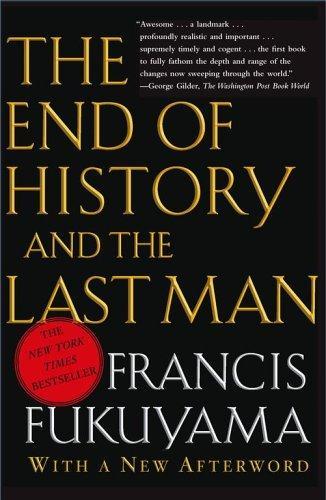
The end of history and the last man
by
Francis Fukuyama
Published 28 Feb 2006
International Security 14, no. 4 (Spring 1990): 42-64. 15 See for example John Gaddis, “The Long Peace: Elements of Stability in the Postwar International System,” International Security 10, no. 4 (Spring 1986): 99-142. 16 Of course, nuclear weapons were themselves responsible for the most serious U.S.-Soviet confrontation of the Cold war, the Cuban missile crisis, but even here the prospect of nuclear war prevented the conflict from moving to actual armed conflict. 17 See for example Dean V. Babst, “A Force for Peace,” Industrial Research 14 (April 1972): 55-58; Ze’ev Maoz and Nasrin Abdolali, “Regime Types and International Conflict, 1816-1976,” Journal of Conflict Resolution 33 (March 1989): 3-35; and R.
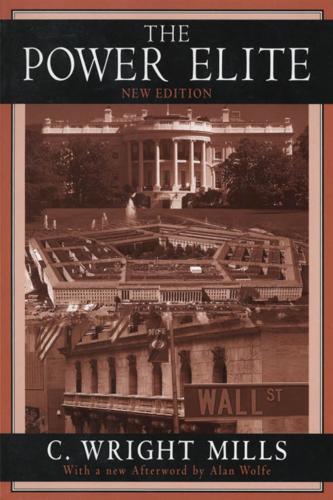
The Power Elite
by
C. Wright Mills
and
Alan Wolfe
Published 1 Jan 1956
Mills’ understanding of the managerial character of the business elite ought to be supplemented with a reading of Steven Brint, In an Age of Experts: The Changing Role of the Professions in America (Princeton, N. J.: Princeton University Press, 1994). A study that tries to bring Mills’ ideas about the military up to date is John L. Boies, Buying for Armageddon: Business, Society, and Military Spending Since the Cuban Missile Crisis (New Brunswick, N. J.: Rutgers University Press, 1994). At least one recent book strongly disagrees with Mills’ characterization of the military as antidemocratic, pointing out, for example, that the armed forces is one of the few places in America where extensive racial integration has taken place: Charles C.
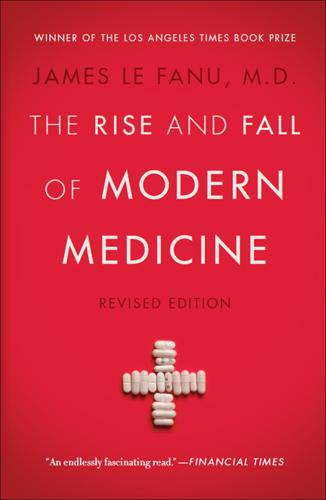
The Rise and Fall of Modern Medicine
by
M. D. James le Fanu M. D.
Published 1 Jan 1999
At this crucial moment in world politics, Roosevelt’s ailing health so impaired his political judgement as to produce ‘a deadly hiatus’ in the leadership of the United States that would lead to ‘the betrayal of the Poles, the imposition of communist governments in Eastern Europe, the Czechoslovakian coup and – on the other side of the world – the loss of China and the invasion of South Korea’.3 Eight years later, in 1953, Josef Stalin also fell victim to a stroke, at the age of seventy-three. Again, the history of the post-war world would have been very different if his hypertension had been treatable with appropriate medication. He could well have lived on for another decade, up to and including the Cuban missile crisis, which might then have had a very different outcome, culminating in the Soviet Union, under his demented leadership, launching a full-scale nuclear war against the United States. One way or another, hypertension has had a crucial impact on the fate of nations and the survival of the human race.
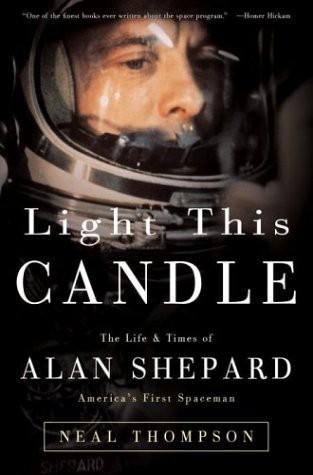
Light This Candle: The Life & Times of Alan Shepard--America's First Spaceman
by
Neal Thompson
Published 2 Jan 2004
“And finally,” he said, “this is Alan Shepard, the man who’s been saying for years, ‘But I was first.’ ” Everyone in the room laughed. Except Shepard, who aimed his hard blue eyes right at Shorty without cracking even a grin. That same fall of 1962, Kennedy—having recently managed the tense head game of the Cuban missile crisis—turned his attention back to the space race and visited NASA’s new Houston digs. Shepard and Slayton gave him a tour of the Manned Spacecraft Center, which was still under construction, letting him sit in the cockpit of a spacecraft simulator and play with the controls. Then, before fifty thousand people at Rice University’s football stadium, Kennedy summed up how far he felt the country had traveled in the year and a half since Shepard’s Freedom 7, delivering one of his more famous speeches.
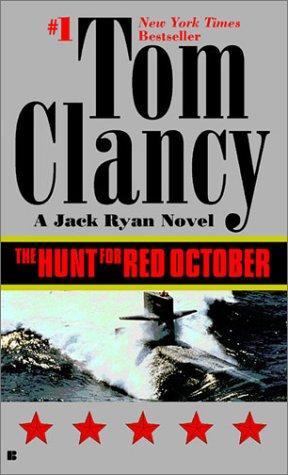
The Hunt for Red October
by
Tom Clancy
Published 2 Jan 1984
His position had given him access to daily information on all facets of the Soviet military, from the Red Army's command structure to the operational status of intercontinental missiles. The information he smuggled out through his British contact, Greville Wynne, was supremely valuable, and Western countries had come to depend on it—too much. Penkovskiy was discovered during the Cuban Missile Crisis in 1962. It was his data, ordered and delivered under great pressure and haste, that told President Kennedy that Soviet strategic systems were not ready for war. This information enabled the president to back Khrushchev into a corner from which there was no easy exit. The famous blink ascribed to Kennedy's steady nerves was, as in many such events throughout history, facilitated by his ability to see the other man's cards.
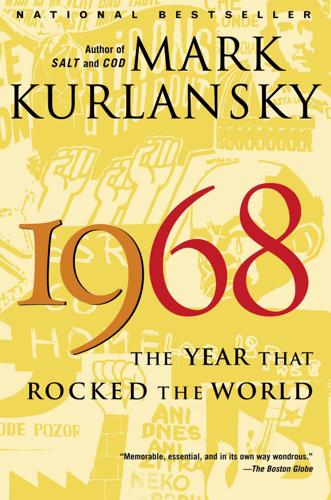
1968: The Year That Rocked the World
by
Mark Kurlansky
Published 30 Dec 2003
The young invested hope in John Kennedy, largely because he too was relatively young—the second youngest president in history replacing Eisenhower, who at the time was the oldest. The inauguration of Kennedy in 1961 was the largest change of age ever at the White House, with almost thirty years’ difference between the exiting and entering presidents. But even under Kennedy, young Americans experienced the Cuban missile crisis as a terrifying experience and one that taught that people in power play with human life even if they are young and have a good sense of humor. Most of the people who arrived at college campuses in the mid-1960s had a deep resentment and distrust of any kind of authority. People in positions of authority anywhere on the political spectrum were not to be trusted.
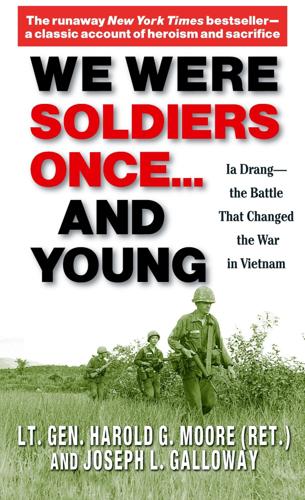
We Were Soldiers Once...and Young: Ia Drang - the Battle That Changed the War in Vietnam
by
Harold G. Moore
and
Joseph L. Galloway
Published 19 Oct 1991
Johnson was proud of that. Johnson had, however, inherited John F. Kennedy's hyperactive foreign policy as well as Kennedy's principal advisers, the men he derisively nicknamed the "You-Harvards." In Kennedy's thousand days the nation had gone through the Bay of Pigs debacle, the Berlin Wall crisis, the Cuban missile crisis, and the crisis over the tiny, and largely inconsequential, kingdom of Laos. Days before Kennedy fell to an assassin's bullet, Ngo Dinh Diem, the autocratic ruler of South Vietnam, was deposed and murdered in a coup d'etat that was at least sanctioned, if not sponsored, by Washington. Kennedy's successor, new to the job and moving into an election year, could not afford to be seen as soft on communism.

Beyond: The Astonishing Story of the First Human to Leave Our Planet and Journey Into Space
by
Stephen Walker
Published 12 Apr 2021
THIRTY KILOMETRES SOUTH of Saratov on the Volga river, where Gagarin had once studied foundry work at technical college, a turning off the main road at Podgornoye on the river’s east bank led to a closed military zone. Hidden from prying eyes behind the ‘Forbidden Entry’ signs and the armed guard posts were six S-75 anti-aircraft missile launchers belonging to Unit 40218, the same type of missile that had shot down Gary Powers the year before, and would later spark the Cuban missile crisis in 1962. Alongside the missiles was a radar guidance and detection unit. Its purpose was to spot enemy planes or missiles and then destroy them. Since six o’clock that morning the radar operators had been placed on very high alert. The order had come from military district headquarters in Kuybyshev, some four hundred kilometres north.

Europe: A History
by
Norman Davies
Published 1 Jan 1996
Misunderstandings over the policy of ‘Different Roads to Socialism’ led to great tensions throughout Eastern Europe, to open conflict in Hungary, and to the fateful split with China. Developments in military science and the launching of Sputnik, the first earth satellite, led to intense rivalry with the USA and to the Cuban missile crisis of 1963. The quantitative achievements of the Soviet economy led Khrushchev to boast that the Soviet Union would overtake the West within 20 years: ‘We will bury you.’ Khrushchev’s adventurism thoroughly scared the comrades; in October 1964 he was removed in a Kremlin coup and sent into live retirement.
…
Their opponents—who could only speak fieely in the West—believed with equal passion that the military planners, like Dr Strangelove, had gone mad. But the Pax atomica held. With some slight delay, the political rhythms of the Cold War usually followed military developments. Tensions were highest in the late 1950s, since both sides could pursue their cause with convictions unsullied by failure. They reached their peak in the Cuban missile crisis of October 1962. In the 1960s, despite numerous alarms, both sides lost their expectations of a simple victory. International communism was all but paralysed by the Sino-Soviet split which in 1969 came close to a pre-emptive nuclear strike against Beijing; the mighty USA was immensely disheartened by its inability to coerce the diminutive state of Vietnam; and NATO was profoundly disrupted by de Gaulle.
…
Lucinius 166–7 Cravate 615 Crêpy-en-Valois, Treaty of (1544) 545 Crete 81, 89–94, 562–3 (see also Knossos, Minoan Civilization) Crimea 61, 105–6, 1290 Crimean War 870 Croatia 235, 335, 561, 615, 707, 720, 730–1, 979, 1010, 1124, 1230–1, 1307, 1313, 1319 (see also Ustashi) Croce, Benedetto 861 Cromwell, Oliver 549, 552, 553 Cross 194–5, 1228–9 Crusades Fourth Crusade 359–60 Northern 362–4 origins 345, 348 Palestine and 358–9 Crusading Orders 359 C.S.C.E. 1115, 1334 Cuban Missiles Crisis 1111, 1113 Culloden Moor, battle of (1746) 632 Cultural circles 1238 Cultural gradient 52, 54–5 Cultural property 742 (see Polovtsians) Cultural History 9–31, 104–32, 174–9, 192–206, 348–50, 399–401, 431–44, 469–510, 569–75, 586–614, 664–74, 682–8, 775, 782–99, 854–65, 951–8, 1076–9, 1098–9, 1238 (see also Anthropology, Arts, Dress, Folklore, Myth, Philosophy, Religious History, Ritual, Symbolism) Cumans (see Polovtsians) Curses 431 Cusanus, Nicholas 436 Cynics 124 Czartoryski, Prince Adam 610, 739, 826 Czechoslovakia 1317 destruction (1938–9) 987, 990–1, 993, 995 independence (1918) 921, 927 inter-war politics 977, 978–9 ‘normalization’ 1106, 1107 post-1945 1105–7 Prague coup (1948) 1067 ‘Prague Spring’ 1105–6 revolution of 1989 1123 Sudeten question 987, 990 Częstochowa 556, 1207 D’Alembert, Jean 599, 608 D’Annunzio, Gabriele 822 D’Holbach, Baron 598, 601 Da Gama, Vasco 451 Da Ponte, Lorenzo, Abbé 665, 668, 670, 672 Da Vinci, Leonardo 473, 476, 481 Daladier, Edouard 977 Dalberg, Karl Theodor, Freiherr von 733 Dance 472 Danish Sound 60 Dante, Alighieri 399–401, 688, 1208 Danton, Georges 697, 698–9, 702, 703, 710, 711 Danube 64 Danube Basin 62–3 Darwin, Charles 790, 792, 793–4, 794 Datini, Francesco 442–3 David, Jacques-Louis 688 DawesPlan 942, 943 Death 194, 204, 706–7, 905, 909, 924–5, 963, 965, 968–9, 1004–5, 1026–7, 1328–9 De-colonization 1068–70 De Gasperi, Alcide 1066, 1083 De Gaulle, Charles 935, 1006, 1041, 1069, 1072, 1073, 1075, 1085–6 De Gourges, Olympe 716–17 De Maistre, Joseph 601–2, 704, 713, 780 De Maricourt, Pierre 436 De Montfort, Simon, Earl of Leicester 357, 377, 378 De Quincy, Thomas 787 De Staël, Mme Germaine Necker 683 De Tocqueville, Alexis 689 De Valera, Eamon 944 De Villeneuve, Jérome Petion 702 Debrecen 494 Deism 601 Delia Francesca, Piero 474–5, 1209 Delors, Jacques 1085, 1118, 1119, 1120 Democracy 130–1, 297, 550–1, 578, 580, 631, 693–9, 793–811, 943–4, 969, 1068, 1071–5, 1128 (see also Human Rights, National Self-determination) Democritus 119 Demography 1294 Demosthenes 117 Denikin, Anton 929 Denmark colonialism 581 eighteenth century 640 Enlightenment 737–8 French Revolutionary Wars and 737–8 loss of Norway 737 loss of Sweden 553 medieval 328, 363, 431 Reformation 492 Thirty Years War 564 Vikings in 293–4, 308 (see also Norway, Vikings, Scandinavia) Derrida, Jacques 6, 1076 Descartes, René 509 Desmoulins, Camille 694, 702, 710 Détente 1092, 1112, 1115–16 Diaz, Bartholomew 451 Dickens, Charles 788 Diderot, Denis 599, 601 Diocletian, Roman Emperor 192 Diogenes of Sinope 124 Dionysus Exiguus 167–8 Diplomacy 523–4 Dirham 295–6 Disarmament 874–5, 949–50, 1113–15, 1117 Disease 233, 431, 511 Disraeli, Benjamin 775, 810, 845 Dmowski, Roman 822, 828, 914 Doenitz, Karl 1029, 1054, 1055 Dolfuss, Engelbert 986 Dollinger, Johann J.I, von 795, 796 Dominicans (Order of Preachers) 360 Domitian, Roman Emperor 189 Dönhoff, Marion 1043–4 Dostoyevsky, Feodor 498–9, 788, 817 Drama 115–17, 176, 439, 482, 548, 589, 682, 862 Drebber, Cornelius 529 Dreikaiserbund 871 Dresden 414–15 Dress 427, 595, 615, 774 Dreyfus Affair 803 Drogheda, Sack of (1649) 552, 553 Dryden, John 574, 589, 598 Dual Alliance 871 Dual Entente 871 Dubček, Alexander 1105, 1106, 1107 Due de Sully 539, 541,662–3 Duroselle, Jean-Baptiste 43, 44 Dutch East India Company 513 Dzierzyński, Felix 931, 935 Eagle 157, 1228–9 Early Modern Period 471 East India Company 513, 580 East Prussia 1043–4 East-West Relations 1109–17 Easter 201–1 Eastern Europe collapse of Communism 1122–4 De-communization 1124–5 National Communism 1101–19 Stalinism 1099–1101 (see also Soviet Bloc) Eastern Question 643, 869–71, 874, 1284, 1309 Eckhart, Johann 437 Ecology 66, 99–100 (see also Environment) Economic History 71, 74–81, 75–6, 160–5, 163, 164, 239–40, 295–6, 311–16, 340–1, 350, 366–70, 369–70, 371, 412, 416, 424–5, 510–18, 523, 525, 580–2, 583–4, 602, 604–5, 630, 679–82, 764–82, 832–4, 848–53, 942–3, 958–9, 960–1, 965–6, 991–2, 1063–4, 1080–2, 1084–7, 1096–7 (see also Agriculture, Economics, Finance, Industry, Technology, Trade) Economics 436, 604–5 Eden, Anthony 1038 Education 609–10, 863 Edward I, King of England 408, 409 EEC 1007 (see also European Economic Community) Egypt (Ancient) 91, 92, 119, 122, 133, 135 Eichendorff, Joseph von 784–5 Eichmann, Adolf 1016 Einstein, Albert 857 Eisenstein, Sergei 918–19 Eirik the Red 319–30 Eisenhower, Dwight D. 1039, 1045, 1112 Eleanour of Aquitaine 354–5 Elias, Norbert 346–7, 456 Electricity 124 Elgin Marbles 741–2 El Greco 1209 Eliot, T.
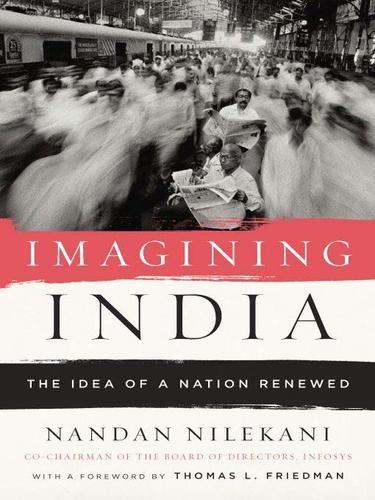
Imagining India
by
Nandan Nilekani
Published 25 Nov 2008
India faces its first financial crisis and goes to the United States for a loan. Simmering tensions notwithstanding, India’s budding film industry sees a major hit with the nationalist film Mother India. 1962—India loses a border skirmish with China, and China occupies the strategically valuable Aksai Chin. The Chinese attack had coincided with the Cuban missile crisis and the United States suspects a coordinated communist attack. When the United States prepares to intervene, China declares a ceasefire. The locusts decades 1964—For the government, the crises seem to have arrived all at once. Nehru dies. Crop failure and drought trigger spreading food shortages and rioting threatens to paralyze the country. 1965—Drawing lines in gunpowder: The Indo-Pakistan war to defend Jammu and Kashmir territory against Pakistani troops.
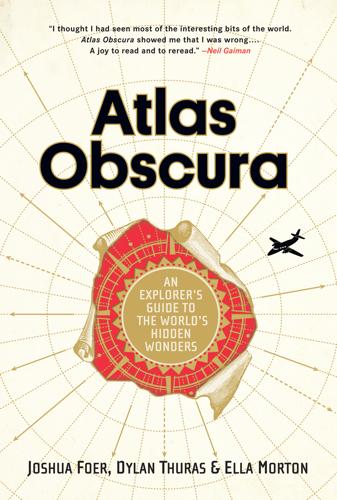
Atlas Obscura: An Explorer's Guide to the World's Hidden Wonders
by
Joshua Foer
,
Dylan Thuras
and
Ella Morton
Published 19 Sep 2016
The Greenbrier, long a favorite getaway of presidents and located just a couple of hours from Washington, was chosen to house the 1,100-person congressional fallout shelter. In 1958, under the cover of building a new wing of the resort, work began on a 112,000-square-foot (10,405 m2) bunker buried 720 feet (219 m) into the side of a hill. Completed just in time for the 1962 Cuban missile crisis, the facility contained dormitories—with name-tagged bunk beds for Congress members—a clinic, a decontamination chamber, and a television broadcast center with a large, soothing backdrop of Capitol Hill. Some of the shelter’s 53 rooms were hidden in plain sight. The Greenbrier’s seemingly unremarkable Exhibition Hall was actually part of the bunker.
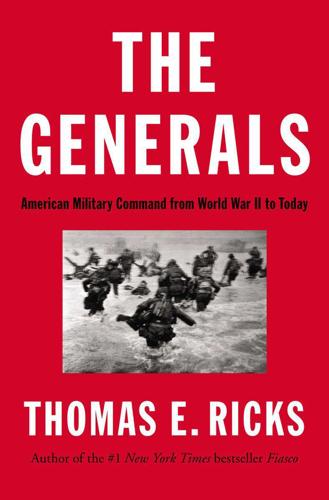
The Generals: American Military Command From World War II to Today
by
Thomas E. Ricks
Published 14 Oct 2012
“It was the strangest thing”: “General Bruce Palmer Jr.,” interviews by James Shelton and Edward Smith, 1975–1976, Bruce Palmer Papers, USAMHI, 235. The first draft of the book: John Cushman interviews, unpublished, USAMHI, chap. 10, page 3. “We had been affected”: Ronald Carpenter, “General Maxwell D. Taylor and the Joint Chiefs of Staff During the Cuban Missile Crisis,” in Rhetoric in Martial Deliberations and Decision Making (University of South Carolina Press, 2004), 70. “may have influenced the United States”: Dave Richard Palmer, Summons of the Trumpet: A History of the Vietnam War from a Military Man’s Perspective (Presidio, 1978), 271. Taylor would become almost the opposite: This thought is from an e-mail message from Henry Gole to the author, November 25, 2011.
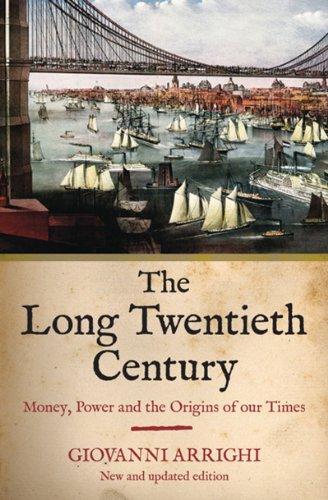
The Long Twentieth Century: Money, Power, and the Origins of Our Times
by
Giovanni Arrighi
Published 15 Mar 2010
In part, they were the expression of the very success of US rearmament and Cold War ideology in turning the systemic chaos of the 1930s and 1940s into a new world order based on a USSoviet condominium of world power — a condominium within which the US government clearly had the upper hand, as the Cuban missile crisis demonstrated. By the mid-1960s success in this direction was as complete as it possibly could be. But the very extent of the success made it more difficult for the US government to scare the American people into pouring money, let alone spilling blood, in the anticommunist crusade, or to convince foreign allies that their national interest was best served by the consolidation and further expansion of US world power.

Aftershocks: Pandemic Politics and the End of the Old International Order
by
Colin Kahl
and
Thomas Wright
Published 23 Aug 2021
The world had demonstrably become too small, and the country—as powerful and seemingly distant as it was—could not wall itself off from the dangers of a collapsing international order beyond its shores. 3 Primed for Peril THE MOMENT WHEN a shock hits matters as much as the shock itself. The assassination of Archduke Franz Ferdinand in 1914 set off a global war because Europe was a geopolitical tinderbox. The assassination of John F. Kennedy in 1963 did not, perhaps because the United States and the Soviet Union had already been to the brink and back over the Cuban missile crisis a year earlier. The great crash and banking crisis of 1929–33 occurred at a time when economists and political leaders fundamentally misunderstood financial crises and favored policy responses that made matters worse. In 2008–9, the policymakers at the helm had studied the Great Depression and drawn the right lessons from it.
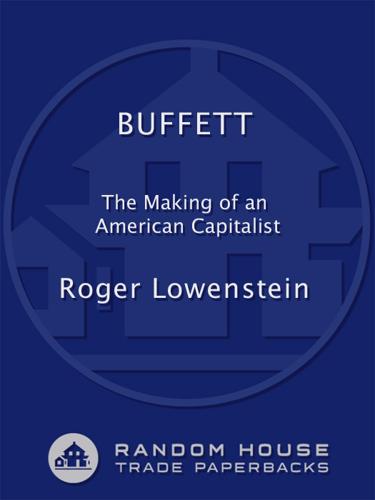
Buffett
by
Roger Lowenstein
Published 24 Jul 2013
As he became independently wealthy—roughly during the early and middle sixties—he finally asserted his political autonomy from his father. Warren based his evolving politics not on his personal economic interests, as most millionaires—and most people—do, but on his fears for society writ large. In the turbulent 1960s, several issues awakened him. The Cuban missile crisis mortified him, just as Hiroshima had. According to his friend Dick Holland: Warren was afraid. He was interested in studying the attitudes that led to extreme nationalism, and how wars could be prevented. He was always trying to calculate the odds of the world’s blowing up. Buffett read Bertrand Russell, the pacifist philosopher and mathematician, extensively during this period, and adopted much of Russell’s internationalist outlook.32 An agnostic like Russell, and deeply aware of his mortality, Buffett thought it was up to society, collectively, to protect the planet from dangers such as nuclear war.

Slouching Towards Utopia: An Economic History of the Twentieth Century
by
J. Bradford Delong
Published 6 Apr 2020
There were more—many more—such instances. As bad as these large-scale butcheries were, there was always the potential for even more disastrous outcomes, and every now and then, the stability of this nonutopia teetered toward Armageddon. For example, humanity perched on the edge of thermonuclear war during the Cuban missile crisis of October 1962. Nikita Khrushchev was somewhat surprised by the bellicose reaction of US president John F. Kennedy to Russia’s deployment in Cuba of missiles like those the United States had previously deployed in Turkey, next to Russia’s border. In the end, the United States promised not to overthrow the Cuban communist dictator, Fidel Castro, by force, and Russia withdrew its missiles from Cuba.

Frommer's Cuba
by
Claire Boobbyer
Published 2 Jan 2004
There are some ruins and tended gar dens near the entrance, as w ell as a r estaurant. There ar e no mar ked trails and no signs, but a heavily potholed r oad leads thr ough the par k (keep going straight) and up to the Cueva de Los Portales (marked by a Campismo sign), a small cav e complex from which Che G uevara coordinated the Cuban defense forces during the Cuban missile crisis. The latter is pr obably the most inter esting site in the ar ea, and a must-see for anyone on the Che trail. Inside, you can tour the compound and see where Che hung his hammock for afternoon siestas, wher e he and the men took target practice, wher e they cooked and ate, and where they played chess.
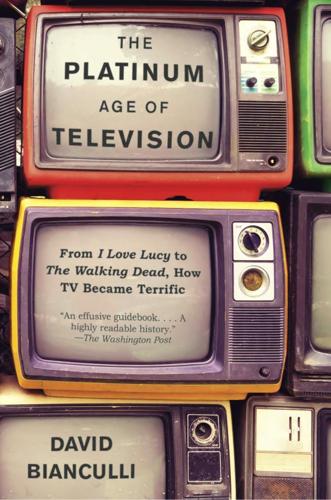
The Platinum Age of Television: From I Love Lucy to the Walking Dead, How TV Became Terrific
by
David Bianculli
Published 15 Nov 2016
ABC was first, in 1984, with Call to Glory, a quality period drama series about an air force pilot (played by Craig T. Nelson) and his family. The series touched on Vietnam, but only in its nascent form as a military concern, before it was escalated to outright war: the narrative of Call to Glory began in 1962, with the Cuban missile crisis. CBS made it official in 1987 with Tour of Duty, starring Terence Knox as Sergeant Zeke Anderson, a platoon leader during the Vietnam War. It was a solid series, very much in the spirit and with the flavor of Combat!, with some of its regular characters doomed to die unexpectedly, as had become the accepted norm.
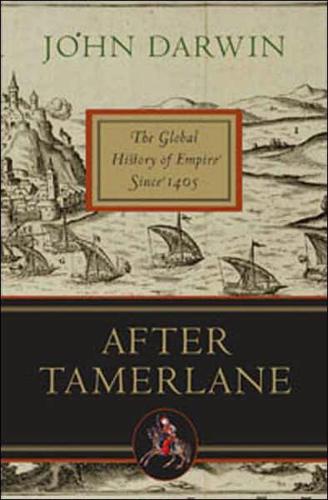
After Tamerlane: The Global History of Empire Since 1405
by
John Darwin
Published 5 Feb 2008
The Yemen revolution in 1962, and the civil war that followed, made it seem likely that Nasser (who intervened massively on the revolutionary side) would become much more dependent upon Soviet aid and that the Yemeni war would unsettle Saudi Arabia. With great reluctance, the Americans promised their help against any attack on the Saudi state by Nasser’s Yemeni clients.83 Most dramatic of all, was the dispatch of Soviet missiles to Khrushchev’s new ally in Latin America. The Cuban Missile Crisis in October 1962 was resolved in the end by the removal of the Soviet weapons, in return for a similar concession over American missiles to be deployed in Turkey and (perhaps) an American promise not to invade Cuba. But, although the outcome seemed to be a Soviet climbdown, the crisis revealed the widening scope of Soviet–American rivalry.
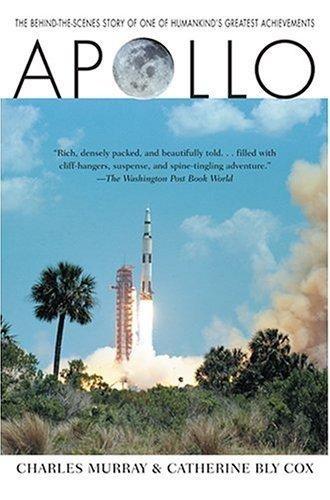
Apollo
by
Charles Murray
and
Catherine Bly Cox
Published 1 Jan 1989
He continued to complain about the L.O.R. decision until, on October 24, Webb wrote him a tart letter, saying in effect that the L.O.R. decision was as sound now as it had been in July and they were going to go ahead with it. If Wiesner wanted to stop it, he was going to have to get the President to stop Webb. Wiesner couldn’t very well do that right away, because on October 24, 1962, John Kennedy was in the midst of the Cuban missile crisis. But he did what he could. Wiesner asked to examine all the contractors’ materials relating to the mode decision. He was refused, on grounds that much of the material was proprietary. Golovin and his staff prepared a brief for a two-man lunar mission using earth-orbit rendezvous. Shea and his staff blasted it for going back to techniques that had been found unacceptable months before, after exhaustive analysis.
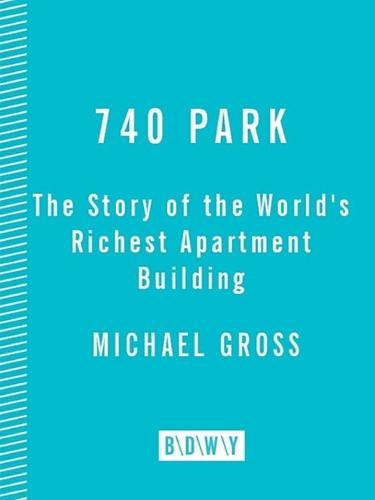
740 Park: The Story of the World's Richest Apartment Building
by
Michael Gross
Published 18 Dec 2007
Though he had the money and was Episcopalian, Bleyer was barely acceptable; he owned Cadence Records, one of the earliest pop music labels, which had hits like the Chordettes’ “Mr. Sand-man” and the Everly Brothers’ string of chart toppers. Then, in 1962, Bleyer bought The First Family, a comedy record by Vaughn Meader, an impressionist who did an uncanny imitation of John Fitzgerald Kennedy. Released that fall, just after the Cuban missile crisis, it was, until the Beatles came along, the fastest-selling record of all time. In 1963, a follow-up was released just before Kennedy was assassinated, and it was an understandable flop. Two years later, Bleyer retired, and Andy Williams, another Cadence artist, bought the company’s master tapes.

The Code: Silicon Valley and the Remaking of America
by
Margaret O'Mara
Published 8 Jul 2019
Bruised by the Bay of Pigs crisis and needing to burnish his foreign policy credentials, Kennedy saw the moon shot as the way to definitively prove American scientific prowess to the world—and to the American people, most of whom still worried that Russia would reach the moon first. “We choose to go to the moon in this decade and do the other things, not because they are easy, but because they are hard,” Kennedy declared in September 1962 in Houston, as the foreign policy stakes of the gambit shot higher in the wake of the Cuban Missile Crisis. Kennedy spoke these words on a blazingly hot South Texas day, before an enthusiastic crowd at Burt McMurtry’s alma mater, Rice University. NASA’s newly established Mission Control Center was just across town. “Those who came before us made certain that this country rode the first waves of the industrial revolution, the first waves of modern invention, and the first wave of nuclear power, and this generation does not intend to founder in the backwash of the coming age of space.”
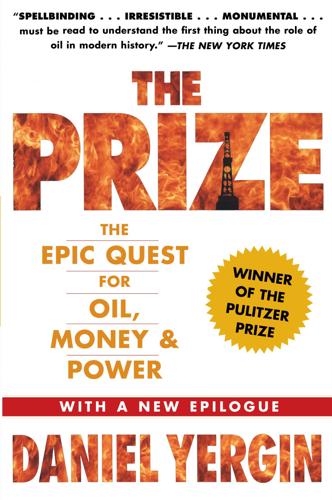
The Prize: The Epic Quest for Oil, Money & Power
by
Daniel Yergin
Published 23 Dec 2008
Partly because of the overwhelming concentration on Vietnam, American policymaking on the Six-Day War took on so ad hoc a quality that it became known to participants as "the floating crap game." In an effort to coordinate policy better, President Johnson established a special Ex-Com, chaired by McGeorge Bundy and modeled on the Ex-Com that John Kennedy had used during the Cuban Missile Crisis—and known thereafter as the "Unknown Ex- Com." Bundy's committee devoted much of its time to considering the implications of the closure of the Suez Canal. Meanwhile, the oil companies were compelled to take hasty and drastic action. The Interior Department in Washington, reverting once again to authorization dating from the Korean War, activated a Foreign Petroleum Supply Committee, composed of about two dozen American oil companies.
…
The readiness state of American forces was raised to DefCon 3 and in some cases even higher, which meant that, in the early morning of October 25, the American military went on a nuclear alert around the world. The message was clear. The United States and the Soviet Union were squaring off directly against each other, something that had not happened since the Cuban Missile Crisis. Miscalculation could lead to a nuclear confrontation. The next hours were very tense. But the following day, the fighting in the Middle East stopped, Egypt's Third Army was resupplied, and the cease-fire went into effect. It was just in time. The superpowers pulled back from their alerts.
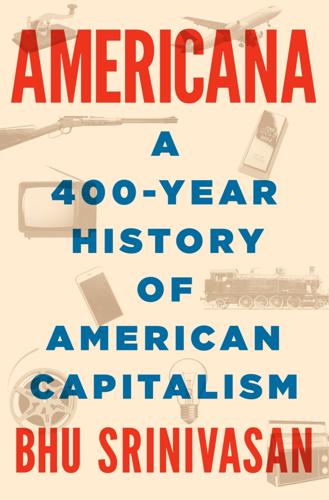
Americana: A 400-Year History of American Capitalism
by
Bhu Srinivasan
Published 25 Sep 2017
Knowing the names of customers that had purchased large installations of hardware from him, he now looked to sell them programming services. After adding blue-chip corporate clients for six years, EDS readied itself to go public in the heady climate of 1968. In a decade filled with dramatic moments—the Bay of Pigs invasion, Martin Luther King Jr.’s “I have a dream” speech, the Cuban missile crisis, Kennedy’s assassination, civil rights legislation, and the protests against the Vietnam War—it is easy to imagine an unsettled country on the verge of some revolution. A look at the business pages, however, shows a country in the midst of one of its great economic booms. Given the dominant historical narrative, reviewing the economics of the sixties seems like an investigation into a parallel universe.

Americana
by
Bhu Srinivasan
Knowing the names of customers that had purchased large installations of hardware from him, he now looked to sell them programming services. After adding blue-chip corporate clients for six years, EDS readied itself to go public in the heady climate of 1968. In a decade filled with dramatic moments—the Bay of Pigs invasion, Martin Luther King Jr.’s “I have a dream” speech, the Cuban missile crisis, Kennedy’s assassination, civil rights legislation, and the protests against the Vietnam War—it is easy to imagine an unsettled country on the verge of some revolution. A look at the business pages, however, shows a country in the midst of one of its great economic booms. Given the dominant historical narrative, reviewing the economics of the sixties seems like an investigation into a parallel universe.
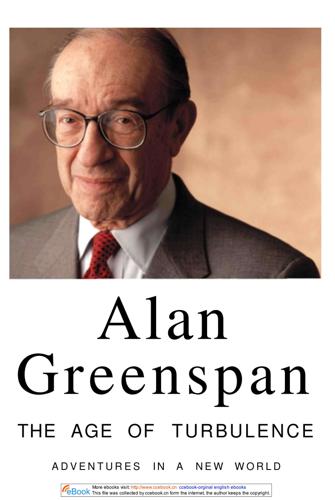
The Age of Turbulence: Adventures in a New World (Hardback) - Common
by
Alan Greenspan
Published 14 Jun 2007
Also, under the circumstances, a tax cut would mean a major change in fiscal policy, because the government was already in deficit. The economy back then was governed by the model of household finance—you were supposed to balance your budget and make ends meet. One year, President Eisenhower actually apologized to the American people for running a $3 billion deficit. But after the Cuban missile crisis, with the 1964 election already on the horizon, the economy was growing too sluggishly, and Kennedy finally let himself be persuaded. The $10 billion tax cut he proposed to Congress in January 1963 was dramatic—it is to this day the biggest tax cut since World War II, adjusting for the size of the economy, and almost as big as all three of George W.
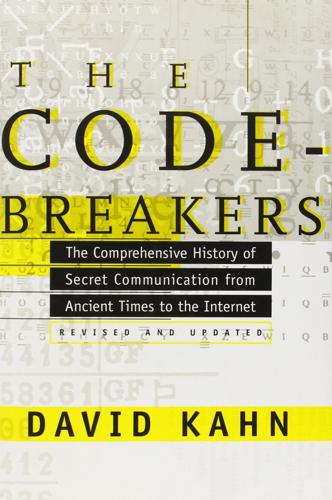
The Codebreakers: The Comprehensive History of Secret Communication From Ancient Times to the Internet
by
David Kahn
Published 1 Feb 1963
But the backbone communications and cryptographic equipment at the various U.S. embassies and missions remained of World War II vintage, subject to the mechanical problems of age and, in some cases, to suspicions about their security due to cryptanalytic advances. The tide of messages rose faster and faster. June of 1961 saw 6,929,000 words—an increase of 40 per cent in just 18 months. In October of 1962, the Cuban missile crisis broke in full force upon the department’s antiquated network. It barely coped. While Russian ships bearing missiles steamed toward blockaded Cuba, dispatches that should have passed between President Kennedy and Premier Khrushchev in minutes consumed precious hours in transit. Washington heard of some of Moscow’s most important messages through Russian radio broadcasts hours before they were delivered at the White House.
…
This figure included 48 KY-3’s at $10,500 each (apparently a lower-security scrambler that was used primarily in Washington, including in the homes of a few high officials), ten KG-13’s at $40,000 each, five KY-8’s at $14,000 each, and a KY-9 spare-parts kit for $32,000. All were to be supplied by N.S.A. They would also make possible State’s participation in an interagency system for a worldwide network of protected voice communication. Another communications result of the Cuban missile crisis was the long-talked-about “hot line” between Washington and Moscow. At Geneva on June 20, 1963, the United States and the Soviet Union signed a Memorandum of Understanding that set up a duplex cable circuit routed Washington-London-Copenhagen-Stockholm-Helsinki-Moscow for primary communications and a duplex radio circuit routed Washington-Tangier-Moscow for service communications and as a back-up.

This Sceptred Isle
by
Christopher Lee
Published 19 Jan 2012
By the time they reached the heights of political power in the late 1970s, nothing that had happened during the intervening years – the Berlin airlift between 1948 and 1949, the Korean War that started in 1951, the creation of the Warsaw Treaty Organization in 1954, the suppression of the Hungarian Uprising in 1956, the Soviet lead in intercontinental warfare technology in 1957, the Cuban missile crisis in 1962, the invasion into Czechoslovakia in 1968, and so on – changed their minds about the threats to their societies. On this fact alone, we may suspect the origins of uncompromising attitudes to any form of threat during their leadership. By the closing years of the 1950s in Britain, there was a social movement that would set a pattern for the futures of younger people who would influence the next generation, which in turn would manipulate the technological revolution that followed in the 1990s and into the twenty-first century.
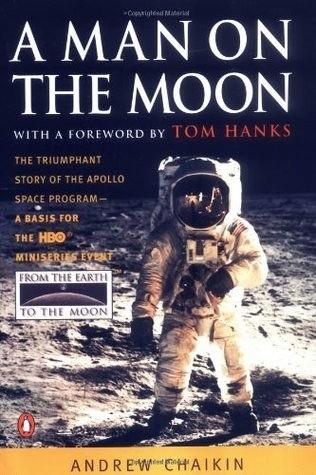
A Man on the Moon
by
Andrew Chaikin
Published 1 Jan 1994
After a two-year tour at Pax River, Bean felt he'd reached the pinnacle of his profession. And while he shared the other fliers' drive to be the best, he was always aware that his outlook differed from theirs, even after he left Pax River for another attack squadron in Cecil Field, Florida. In 1962, during the Cuban Missile Crisis, there was talk of sending Bean and his colleagues into combat. The other pilots wanted it so bad they could taste it—after all, this was what they had been trained for. Bean would have gone in a minute, to defend the interests of his country, but he was hardly excited about it. There was no love of combat in his soul, only a love of flying.
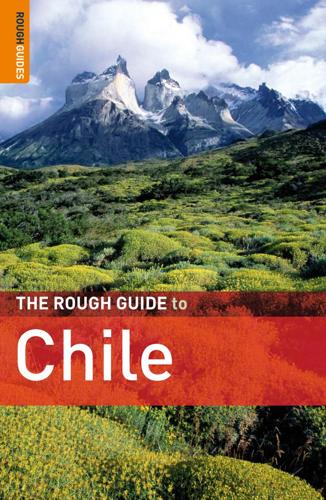
The Rough Guide to Chile
by
Melissa Graham
and
Andrew Benson
Published 11 May 2003
Nonetheless, it was by a very narrow margin that the socialist Salvador Allende was defeated by the Conservative Jorge Alessandri (son of Arturo) in the 1958 elections, causing widespread alarm among the wealthy elite. As the next election approached in 1964, the upper classes, with the discreet backing of the USA (still reeling from the shock of the Cuban missile crisis), threw all their efforts into securing the election of Eduardo Frei, the candidate of the rising young Christian Democrat Party. In power, Frei turned out to be a good deal more progressive than his rightwing supporters could have imagined, initiating – to their horror – bold agrarian reforms that allowed the expropriation of all farms of more than 180 hectares.
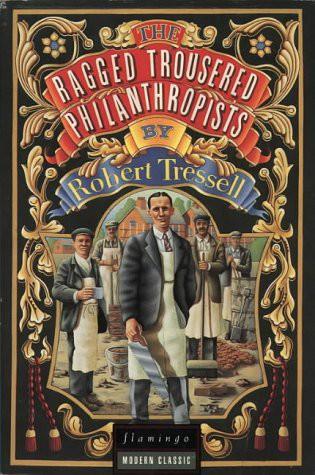
The Ragged Trousered Philanthropists
by
Robert Tressell
Published 31 Dec 1913
Manuscript of The Ragged Trousered Philanthropists purchased by the National Federation of Building Trade Operatives. Alan Sillitoe, Saturday Night and Sunday Morning. Manuscript of The Ragged Trousered Philanthropists presented to the TUC. David Storey, This Sporting Life. Coronation Street begins. Building of Berlin Wall. Cuban missile crisis. Doris Lessing, The Golden Notebook. John F. Kennedy assassinated. Civil Rights legislation in USA. Harold Wilson leads Labour government which holds office until 1970. USA sends troops to Vietnam. BBC2 ‘Theatre 625’ adaptation of The Ragged Trousered Philanthropists. Paris demonstrations; youth and worker unrest through the West.
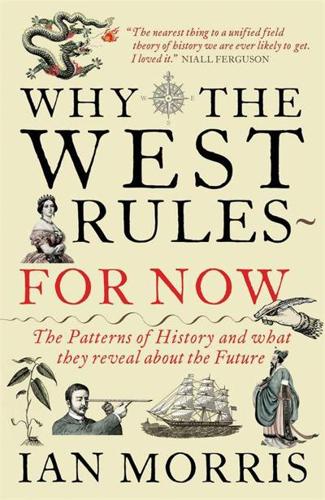
Why the West Rules--For Now: The Patterns of History, and What They Reveal About the Future
by
Ian Morris
Published 11 Oct 2010
When Baghdad Ruled the Muslim World: The Rise and Fall of Islam’s Greatest Dynasty. New York: Da Capo, 2004b. ———. The Great Arab Conquests. London: Da Capo, 2007. Kennedy, Paul. The Rise and Fall of British Naval Mastery. London: Allen Lane, 1976. ———. The Rise and Fall of the Great Powers. New York: Vintage, 1987. Kennedy, Robert F. Thirteen Days: The Cuban Missile Crisis. New York: Norton, 1969. Kennett, Douglas, et al. “Nanodiamonds in the Younger Dryas Boundary Sediment Layer.” Science 323 (2009), p. 94. Kerr, Richard, et al. “Atlantic Climate Pacemaker for Millennia Past, Decades Hence?” Science 309 (2005), pp. 41–42. Keynes, John Maynard. A Treatise on Money.
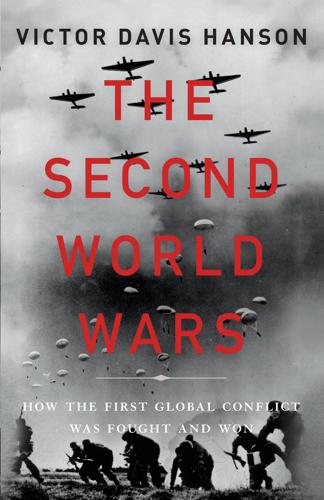
The Second World Wars: How the First Global Conflict Was Fought and Won
by
Victor Davis Hanson
Published 16 Oct 2017
He also assumed that there was a moral equivalence between British imperialism and Soviet communism, and perhaps even thought that the former was by design exploitive but the latter was an idealism gone wrong. The British ethos after the war was perhaps best summed up (oddly in the midst of the 1962 Cuban Missile Crisis) by the British ambassador to the United States, Sir David Ormsby-Gore: “In the end it may well be that Britain will be honored by the historians more for the way she deposed of an empire than for the way in which she acquired it.”29 American postwar military and economic aid, while generous to both friends and former enemies, focused as much on the defeated in Europe and Asia as on the exhausted British ally.
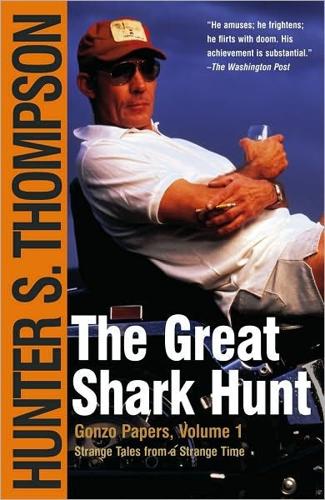
The Great Shark Hunt: Strange Tales From a Strange Time
by
Hunter S. Thompson
Published 6 Nov 2003
The howling voice at my door was Craig Vetter, another Rolling Stone writer who had been in town for two weeks trying to make some kind of connection with Nixon's priest. . . but the priest was finished now and the town was going wild. A Washington Post reporter said he had never seen the newsroom so frantic -- not even when John Kennedy was murdered or during the Cuban missile crisis. The prevailing rumors on Capitol Hill had Nixon either addressing a joint session of Congress at 4:30 that afternoon or preparing a final statement for delivery at 7:00 on all three networks. . . but a call to the White House pressroom spiked both these rumors, although the place was filling up with reporters who'd picked up an entirely different rumor: That either Ziegler or Nixon himself would soon appear in the pressroom to make a statement of some kind.
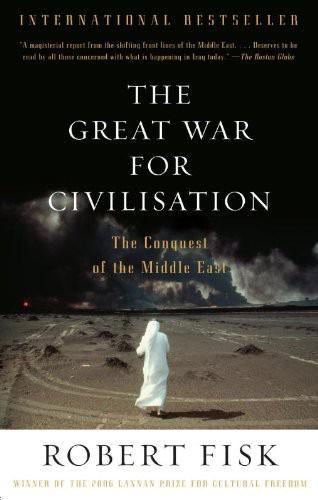
The Great War for Civilisation: The Conquest of the Middle East
by
Robert Fisk
Published 2 Jan 2005
The United States had largely kept out of Algerian affairs, save for several American diplomats in Algiers who awarded young Algerian women visas in return for their favours. Although Algeria gave financial support to the PLO during the 1982 Israeli invasion of Lebanon—it sent $20 million in arms via the Soviet Union—the country was always sympathetic to America. During the Cuban missile crisis, Ben Bella was in New York and took a secret message to Fidel Castro from President John Kennedy, warning him of the seriousness of the confrontation with the Soviets. Ben Bella had not forgotten that Kennedy was alone in Congress in calling for Algerian independence during the war with the French.
…
(n.) 580 The Belgian authorities deported: See Independent, 10 December 1996; see also The Enlightenment: The Algerian Community in London , vol. 5, no. 31, 2 August 1996, “Communiqué on the murder by torture of a FIS member deported from Belgium to Algeria.” 581 “defend the regime by denying”: Abdelhamid Brahimi, “Algeria’s Tragedy: The Necessity for a Peaceful Commitment,” address to the Foreign Affairs Committee of the Irish Parliament, Dublin, 8 April 1998. 581 Although Algeria . . . sent $20 million in arms: See The Times, 17 January 1983, “Algeria gave PLO $20m for arms to fight Israel,” by Christopher Mosey. 581 During the Cuban missile crisis: Interview with Algerian foreign minister Lakhdar Brahimi, Algiers, 23 March 1992. 582 “the violence appears to have generated”: Washington Post, 13 June 1997, “A Ray of Hope in Bloody Algeria: Atrocities Turning the Public Against Islamic Terrorists,” by John Lancaster. 582 “now that the White House has decided”: Agence France-Presse report from Algiers, cited in Le Monde, 14 March 1998. 582 “It’s not impossible”: Interview with General Mohamed Lamari by the Algerian Press Service, 28 October 1997. 582 “to compare a rape in a police station”: Quoted in Le Monde, 20 March 1998, “Des intellectuels français dénoncent les violations des droits de l’homme en Algérie.” 582 recent research suggests: See Aggoun and Rivoire, Francealgérie .
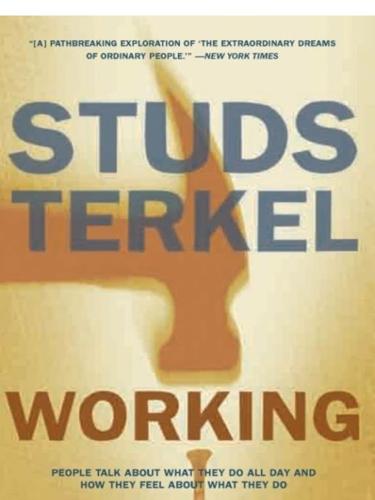
Working: People Talk About What They Do All Day and How They Feel About What They Do
by
Studs Terkel
Published 1 Jan 1974
Getting what’s deep down from them, getting their trust. B. F. Skinner reaches over into our field. Good friends of mine study this kind of behavior so they can make better comments about interpersonal relationships. Communication figures in our lives whether it’s John Smith at the plant or President Kennedy during the Cuban missile crisis. Friends of mine are studying conflict communication: how people communicate when they’re under fire. Take Jerry Friedheim.14 He appears to me to be a machine—dash—human voice of the Nixon administration on this very touchy issue. He is, in my perception, mechanical. His voice has the lack of emotion.
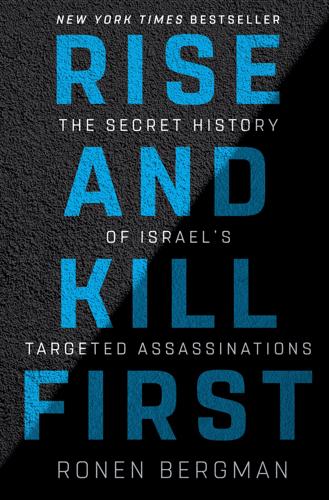
Rise and Kill First: The Secret History of Israel's Targeted Assassinations
by
Ronen Bergman
Published 30 Jan 2018
Later that summer, a strongly worded missive from Eshkol to Chancellor Konrad Adenauer, demanding immediate action to get the scientists back from Egypt, also failed to spur the Germans. As Israeli diplomats reported to the Foreign Ministry in Jerusalem, they could only assume that “Adenauer and the leadership are preoccupied with more important problems,” such as “managing the Cold War in the post–Cuban missile crisis period.” Amit set about rebuilding the organization, reinforcing it with the best personnel he knew from AMAN. As soon as he took over, he ordered a halt to any matters that he considered extraneous, and a drastic reduction of the resources being devoted to the hunt for Nazi criminals, explaining that it was “a matter of priorities.
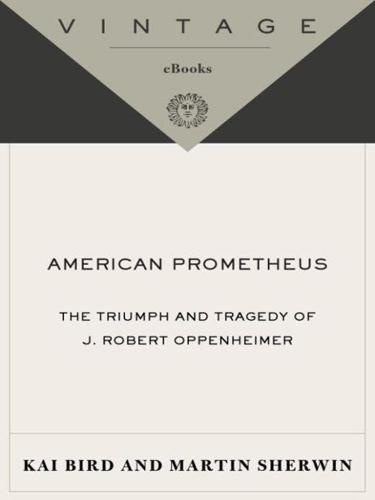
American Prometheus: The Triumph and Tragedy of J. Robert Oppenheimer
by
Kai Bird
and
Martin J. Sherwin
Published 18 Dec 2007
Nevertheless, as Oppie predicted, the Truman Administration rejected the Soviet response out of hand. Negotiations continued in a desultory fashion for many months, but without result. An early opportunity for a good-faith effort to prevent an uncontrolled nuclear arms race between the two major powers had been lost. It would take the terrors of the 1962 Cuban missile crisis, and the massive Soviet buildup that followed it, before an American administration would propose, in the 1970s, a serious and acceptable arms control agreement. But by then tens of thousands of nuclear warheads had been built. Oppenheimer and many of his colleagues always blamed Baruch for this missed opportunity.
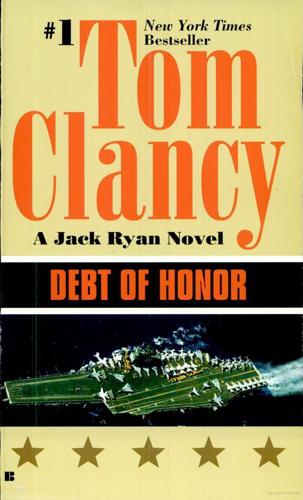
Debt of Honor
by
Tom Clancy
Published 2 Jan 1994
He could have selected only those he'd made special notes on, but this was his work for the day—perhaps the whole week if he played his cards right—and he would conduct himself with the usual thoroughness, comparing what he saw with the report from that NASA guy. "Mind if I join you?" Betsy Fleming stuck her head in the door. She was one of the old hands, soon to be a grandmother, who'd actually started as a secretary at DIA. Self-taught in the fields of photoanalysis and rocket engineering, her experience dated back to the Cuban Missile Crisis. Lacking a formal degree, her expertise in this field of work was formidable. "Sure." Scott didn't mind the intrusion. Betsy was also the office's designated mom. "Our old friend the SS-19," she observed, taking her seat. "Wow, I like what they did with it." "Ain't it the truth?" Scott observed, stretching to shake off his post-lunch drowsiness.
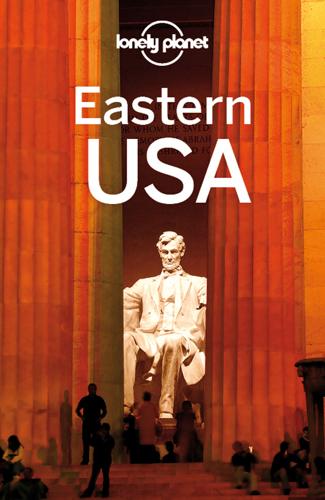
Eastern USA
by
Lonely Planet
John F Kennedy Library & Museum MUSEUM ( 617-514-1600; www.jfklibrary.org; Columbia Point; adult/child $12/free; 9am-5pm) In a striking IM Pei–designed building overlooking Boston Harbor, this museum provides an ode to all things Kennedy. Theaters and multimedia displays replay key historical events such as the Cuban missile crisis. Take the T’s Red Line to JFK/UMass, then hop on a free ‘JFK’ shuttle bus. BOSTON FOR CHILDREN Boston is a family-friendly destination. Changing stations are ubiquitous in public restrooms and many restaurants offer children’s menus and high chairs. You’ll have no trouble taking your kid’s stroller on the T.
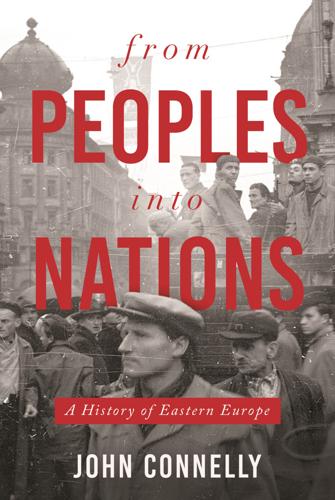
From Peoples into Nations
by
John Connelly
Published 11 Nov 2019
Yet both understood that socialism had to appeal to consumer interests.7 It meant making life more enjoyable, through higher living standards, increased income, and expanded benefits.8 In the years that followed, Malenkov and Khrushchev acted to increase food production, Malenkov by raising the prices the state paid for collective farm deliveries and by encouraging the cultivation of individual plots, Khrushchev by putting millions of hectares under the plow that had never been cultivated.9 Khrushchev ruled uncontested from 1956 to 1964, when his colleagues in the Presidium of the Communist Party of the Soviet Union (CPSU), led by Leonid Brezhnev, ousted Khrushchev for foreign policy misadventures—in particular, the fiasco of the Cuban missile crisis—and for failures to achieve the economic growth that his ambitious predictions required. He had said that socialism could overtake capitalism within a generation. Rather than being a visionary, Khrushchev seemed erratic. One lesson he inadvertently taught was to avoid precise predictions about the advent of the new society.
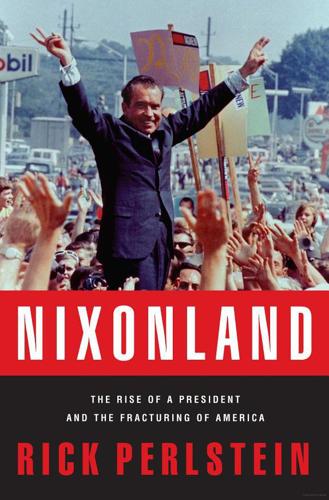
Nixonland: The Rise of a President and the Fracturing of America
by
Rick Perlstein
Published 1 Jan 2008
The next day Nixon proposed that an “Ellsberg who’s on our side” could dig up pre–World War II documents to declassify—Richard Nixon’s own pumpkin papers—to prove that FDR knew about the Japanese attack on Pearl Harbor in advance. The Democratic Party would be “gone without a trace if we do this correctly,” Nixon pronounced lustily. Haldeman thought that a fine idea, too, but suggested they start with documents from the Cuban missile crisis or Bay of Pigs instead: “Those are the ones that are likely to get lost the fastest.” The president, who salved his basest guilts by presuming everyone else as venal as himself, caught his drift right off: Democrats all over town were by then “probably burning stuff and hiding stuff as fast as they can.”

Caribbean Islands
by
Lonely Planet
On April 17, 1961, some 1400 CIA-trained émigrés attacked Cuba, landing at Playa Girón and Playa Larga in the Bahía de Cochinos (Bay of Pigs). The US took a drubbing. After this defeat the US declared a full trade embargo (known as the bloqueo ). In April 1962, amid rising Cold War tensions, Khrushchev secretly installed missiles in Cuba, sparking the Cuban Missile Crisis and bringing the world to the brink of nuclear war. Six days later, after receiving a secret assurance from US President Kennedy that Cuba would not be invaded, Khrushchev ordered the missiles to be dismantled. Castro was excluded from the deal-making. The Wall Falls & the Special Period When the Eastern bloc collapsed in 1989, the equivalent of US$5 billion in annual trade and credits to Cuba vanished, forcing Castro to declare a five-year período especial (special period) austerity program, technically ongoing.

USA Travel Guide
by
Lonely, Planet
John F Kennedy Library & Museum MUSEUM Offline map ( 617-514-1600; www.jfklibrary.org; Columbia Point; adult/child $12/free; 9am-5pm) In a striking IM Pei–designed building overlooking Boston Harbor, this museum provides an ode to all things Kennedy. Theaters and multimedia displays replay key historical events such as the Cuban missile crisis. Take the T’s Red Line to JFK/UMass, then hop on a free ‘JFK’ shuttle bus. BOSTON FOR CHILDREN Boston is a family-friendly destination. Changing stations are ubiquitous in public restrooms and many restaurants offer children’s menus and high chairs. You’ll have no trouble taking your kid’s stroller on the T.

Parks Directory of the United States
by
Darren L. Smith
and
Kay Gill
Published 1 Jan 2004
Activities: Ranger-guided tours and talks. Special Features: Park interprets how the Minuteman missile played a strategic role in the country’s defense during the Cold War. It features Launch Control Facility Delta 01 and Launch Facility Delta 09, the sole remaining examples of the original Minuteman system, dating back to the Cuban Missile Crisis. ★246★ MOJAVE NATIONAL PRESERVE 2701 Barstow Rd Barstow, CA 92311 Web: www.nps.gov/moja/ Phone: 760-252-6100; Fax: 760-252-6174 Size: 1,529,927 acres. History: Established on October 31, 1994, by the California Desert Protection Act. Location: Easily reached via I-15 or I-40 east of Barstow, California, and west of Needles, California, and Las Vegas, Nevada.